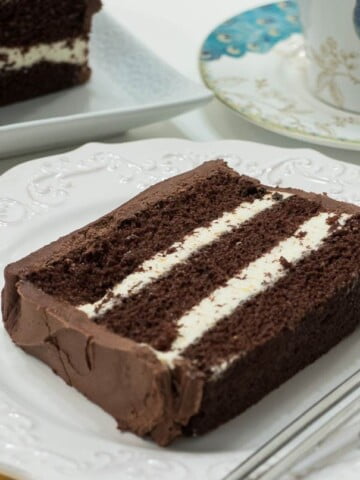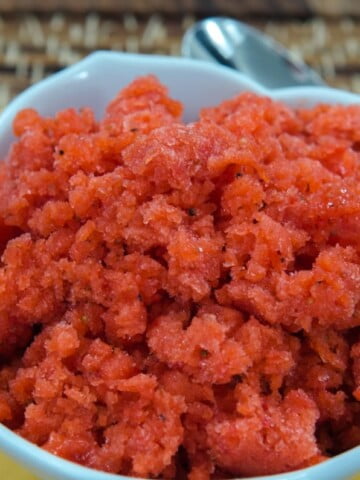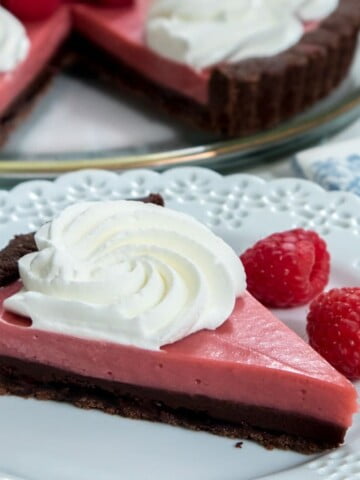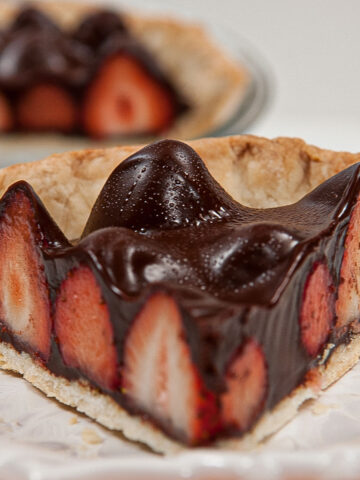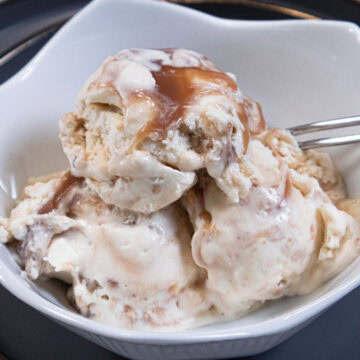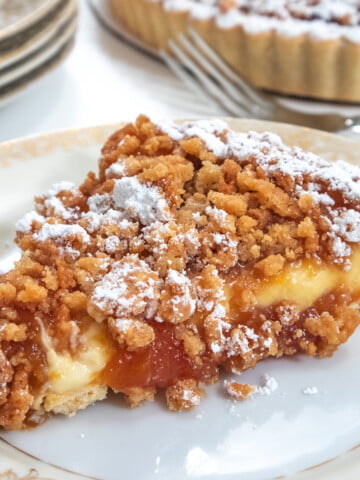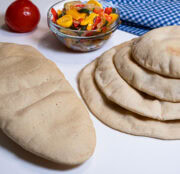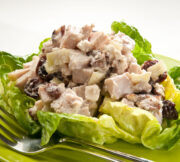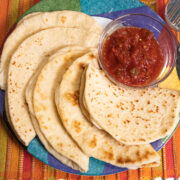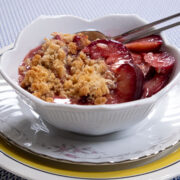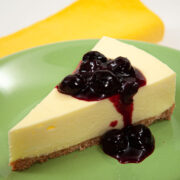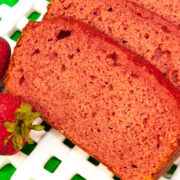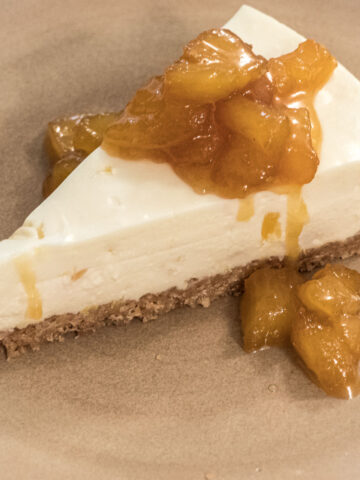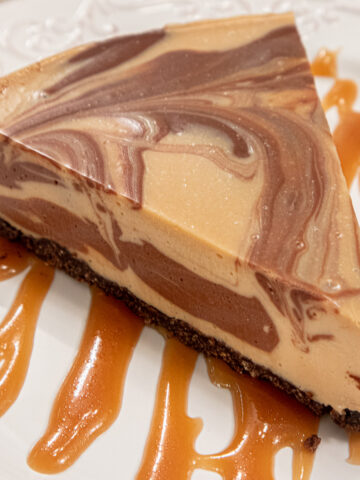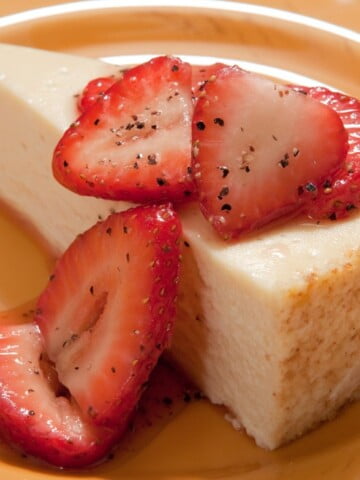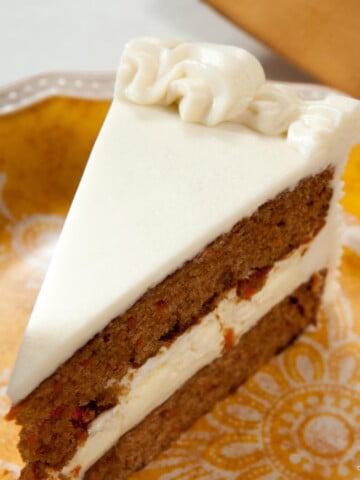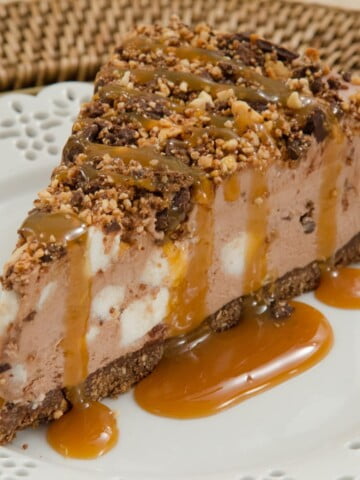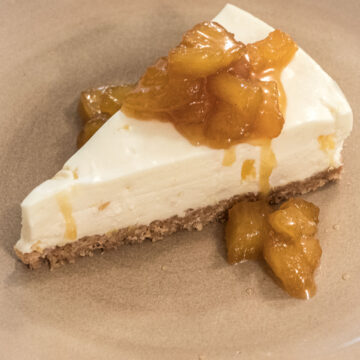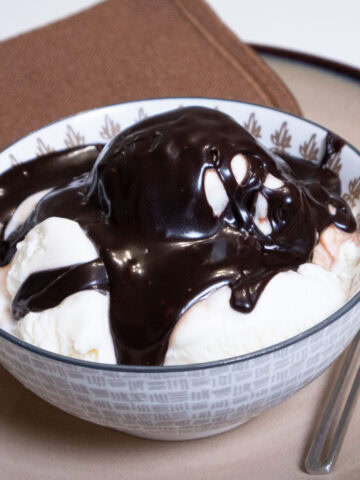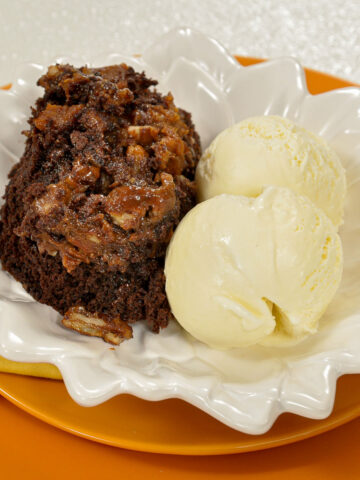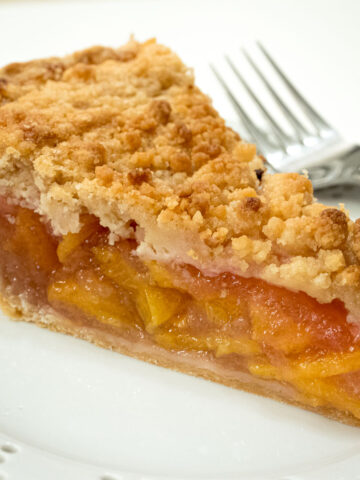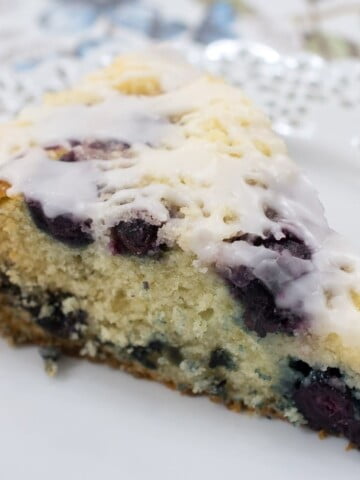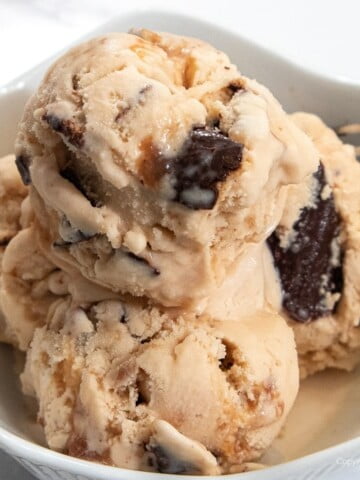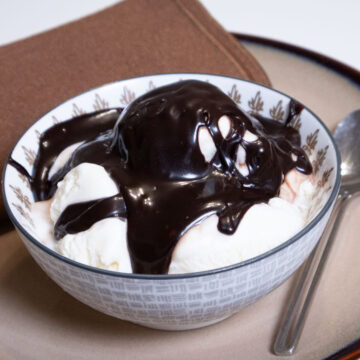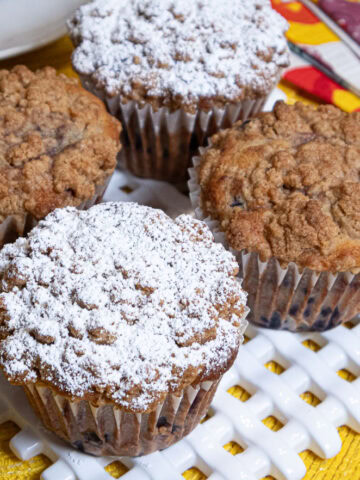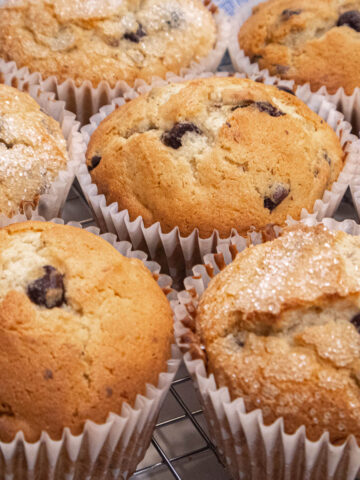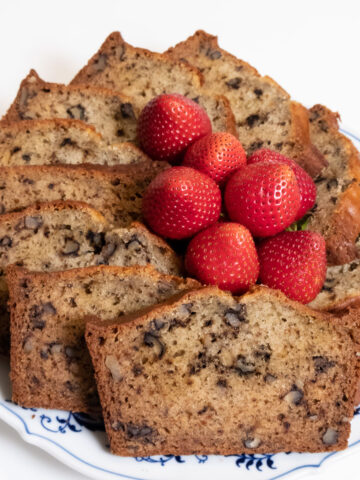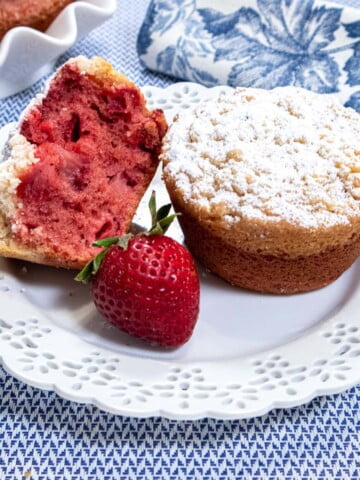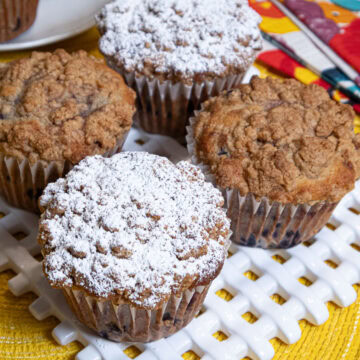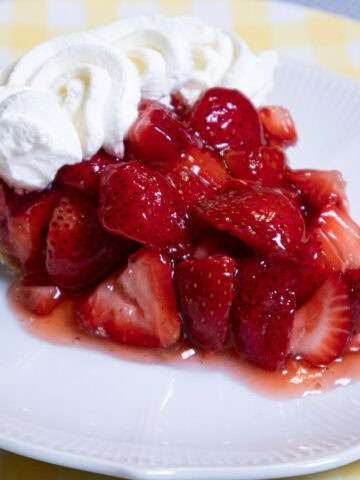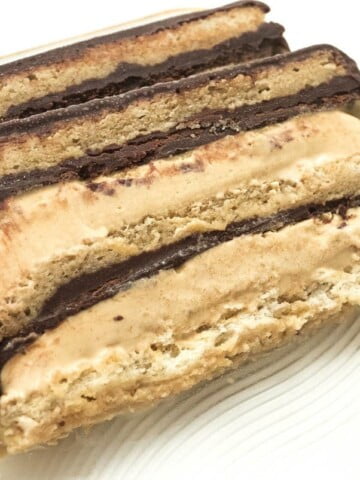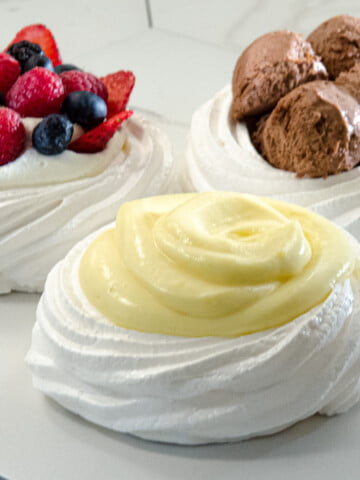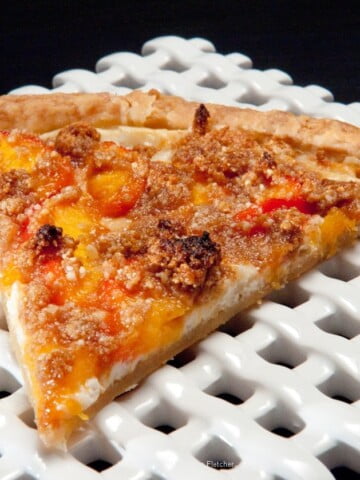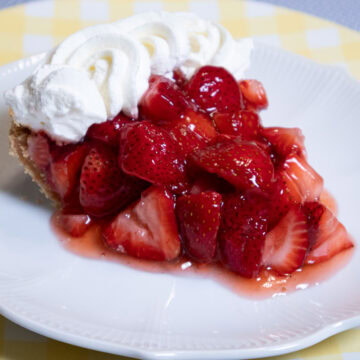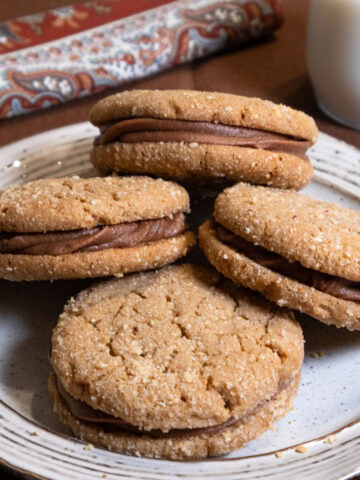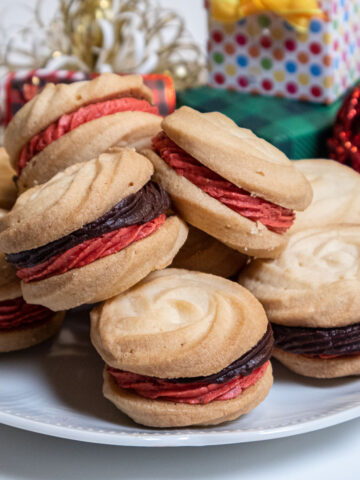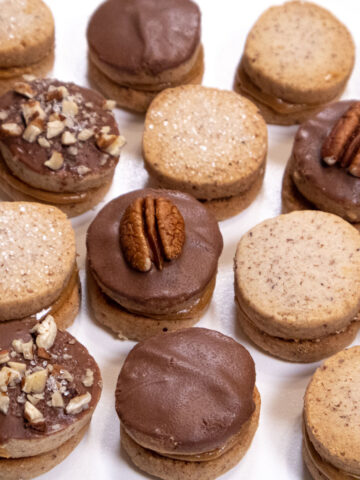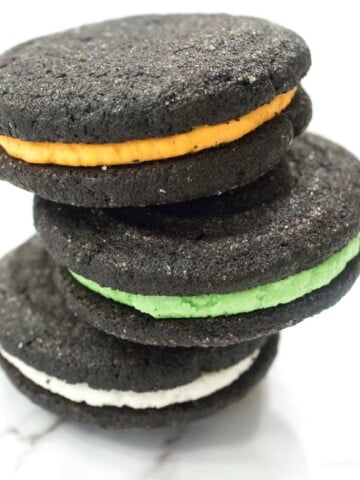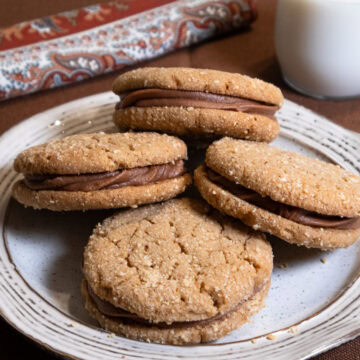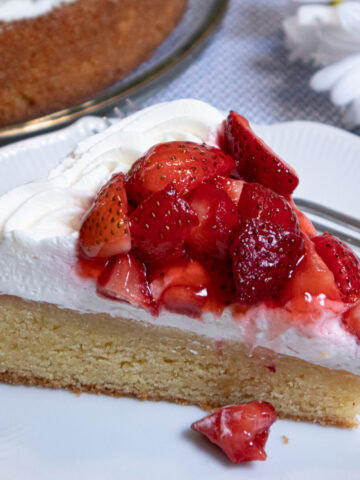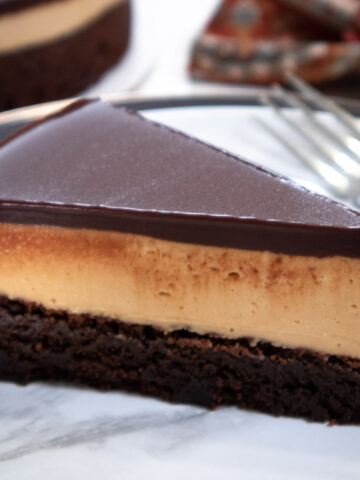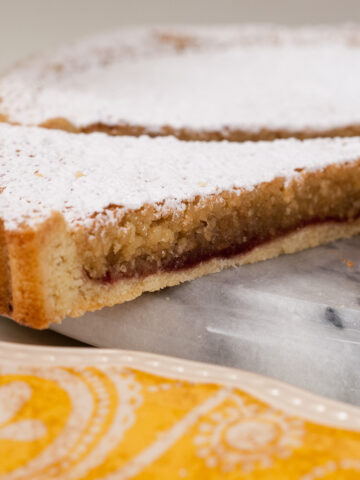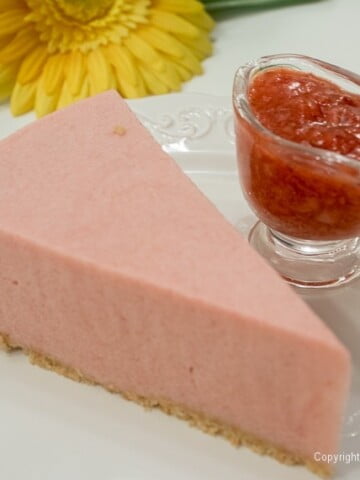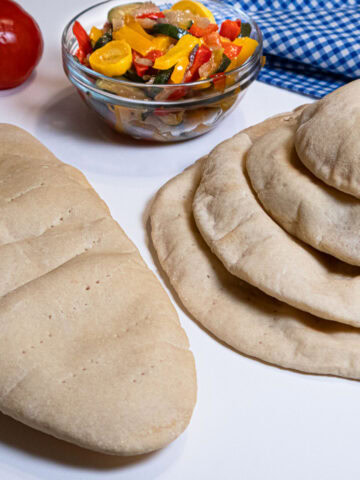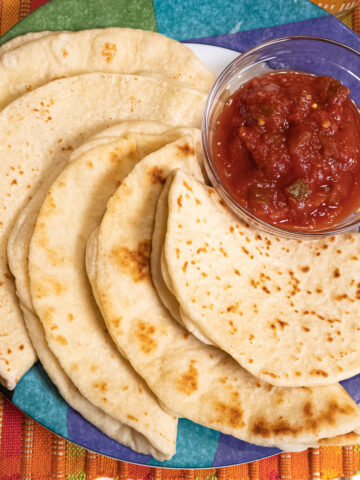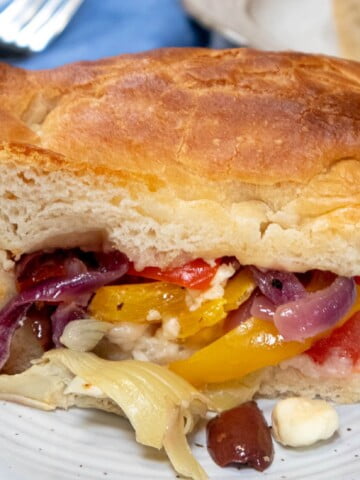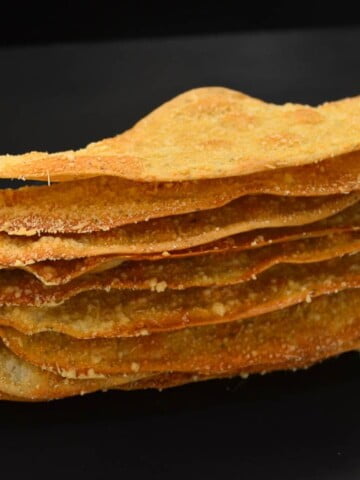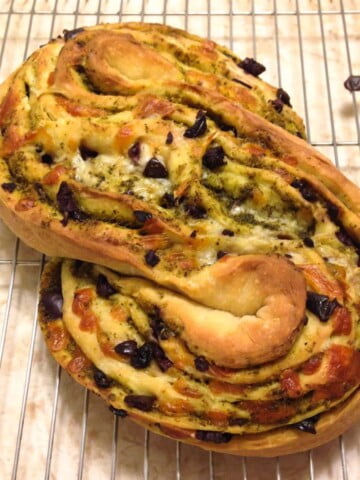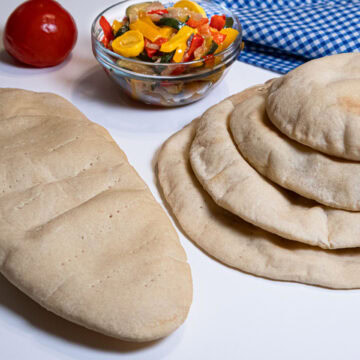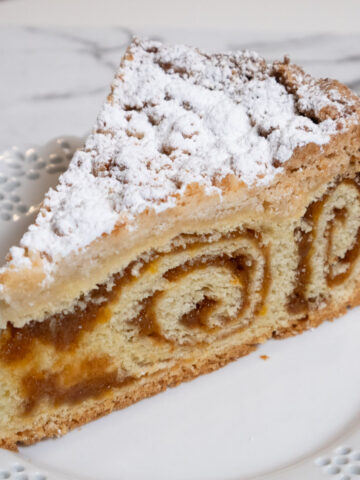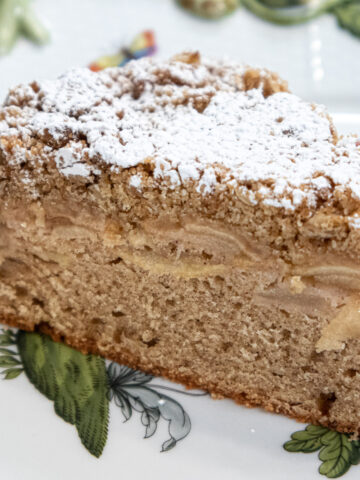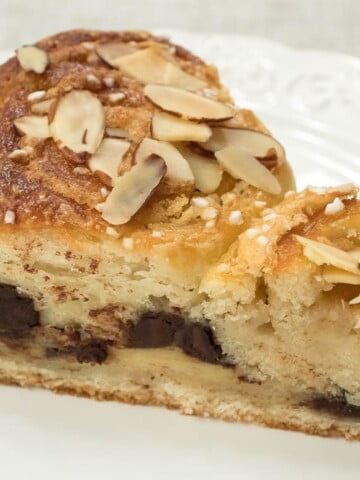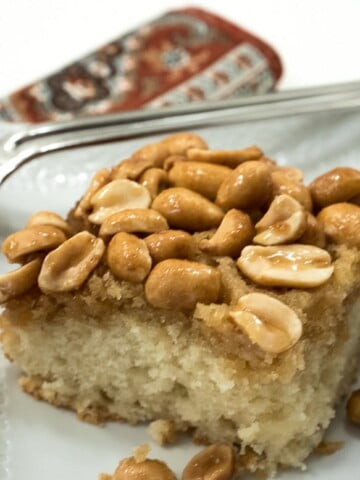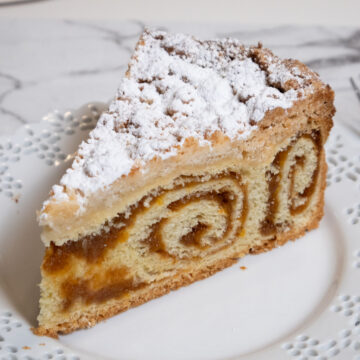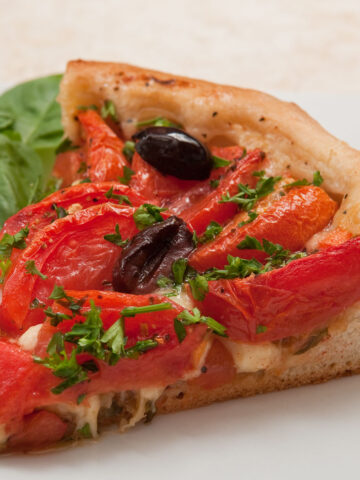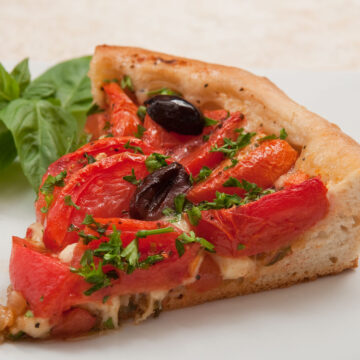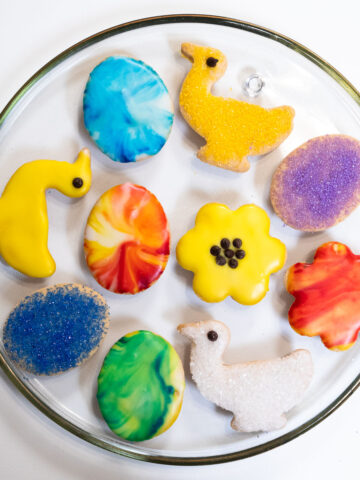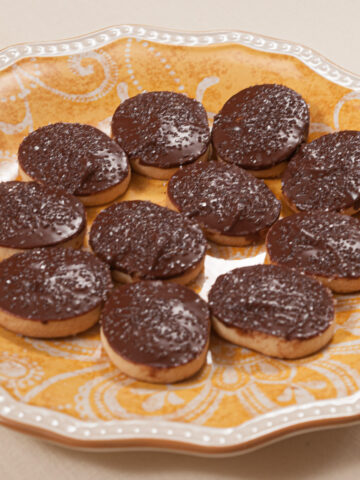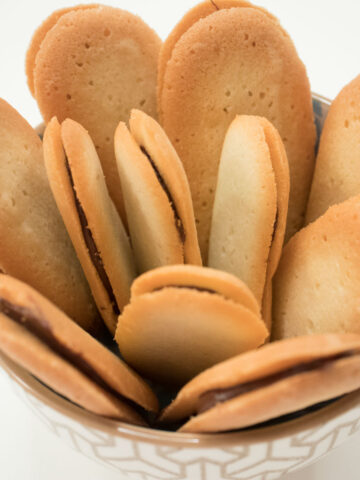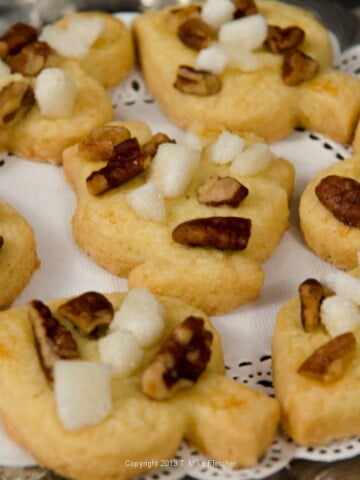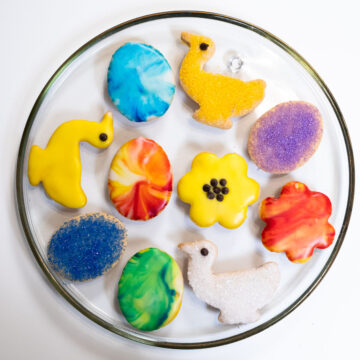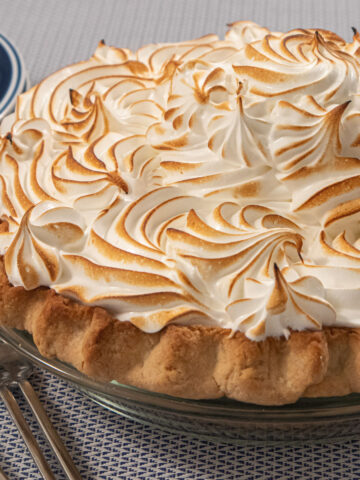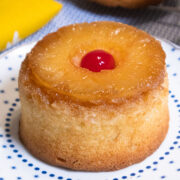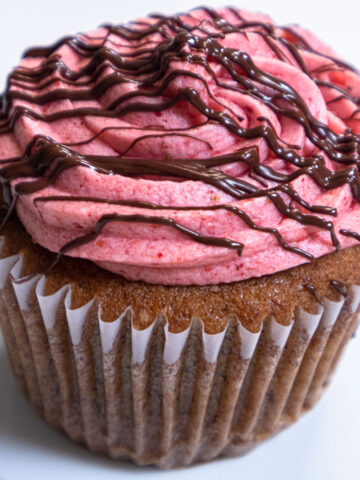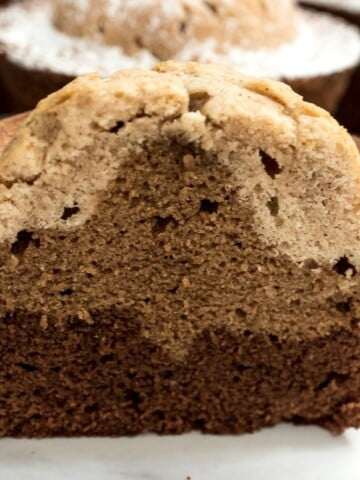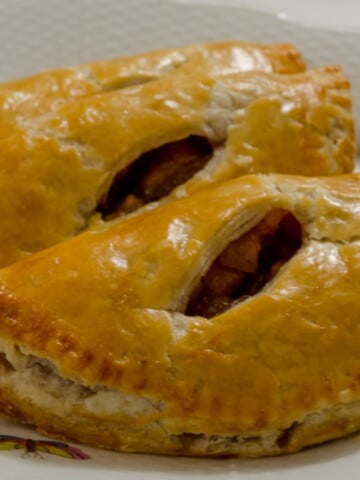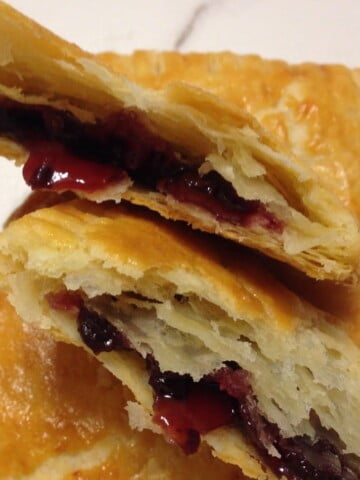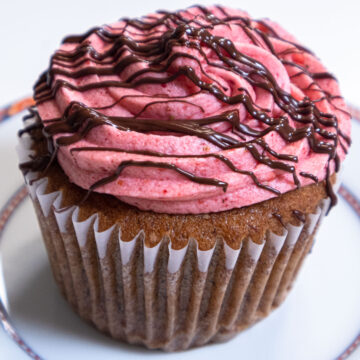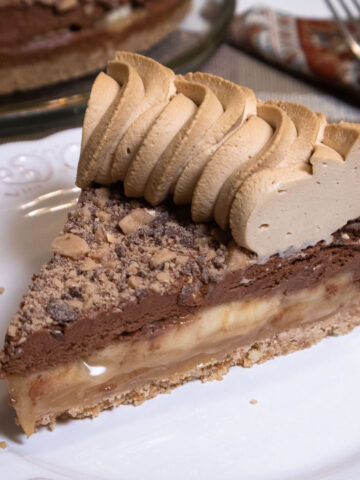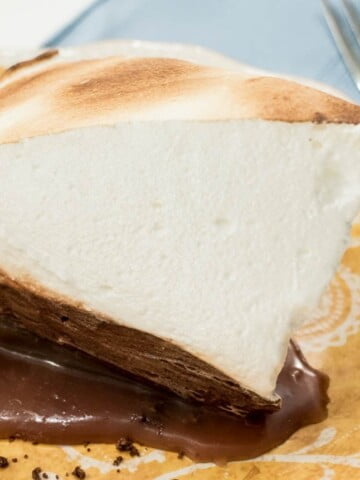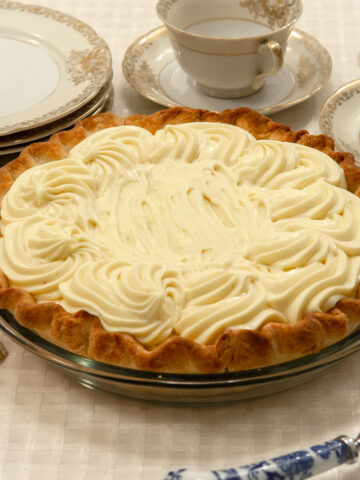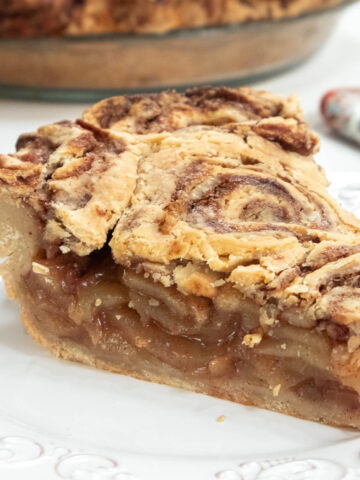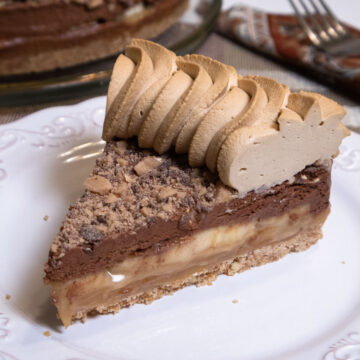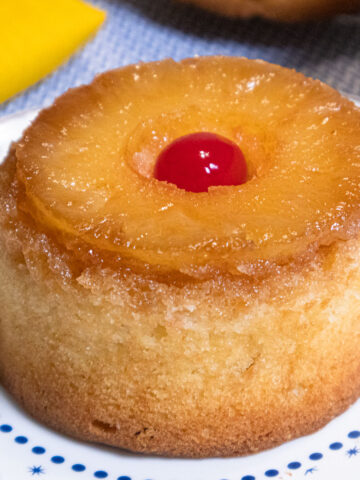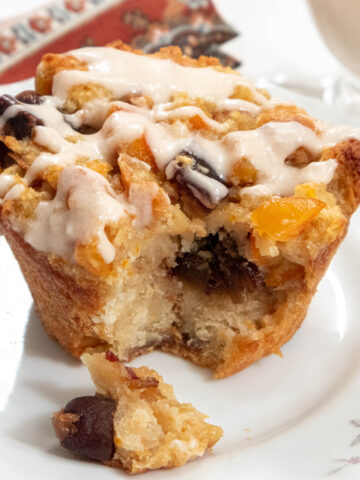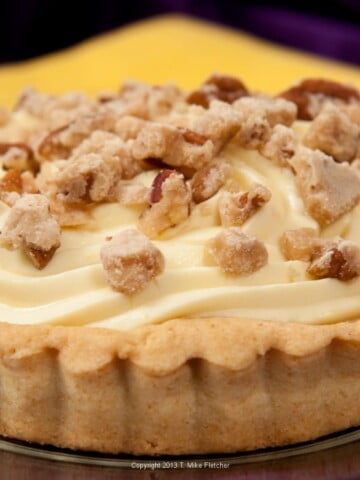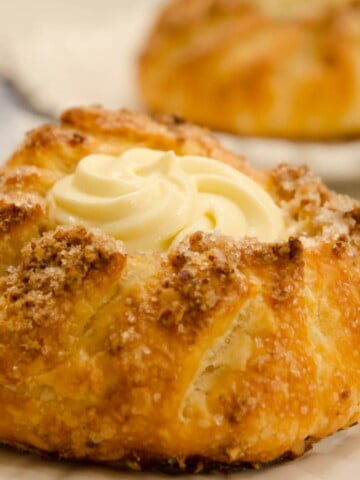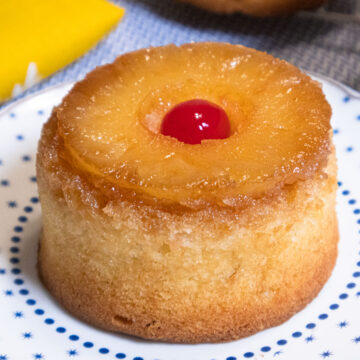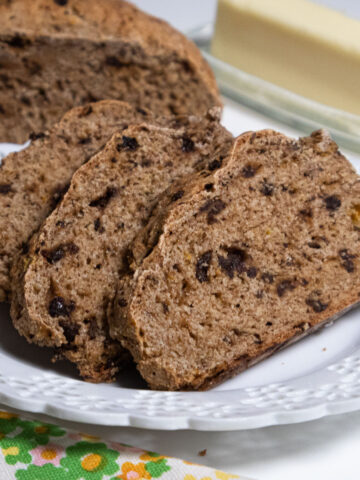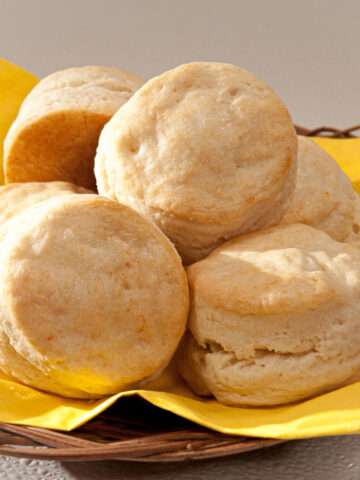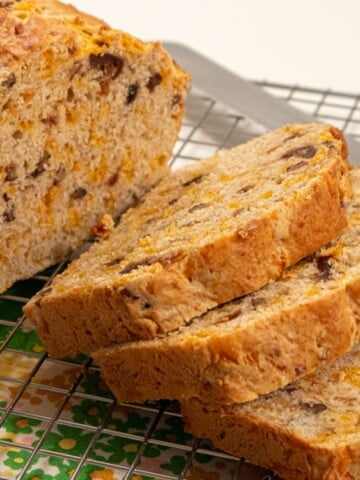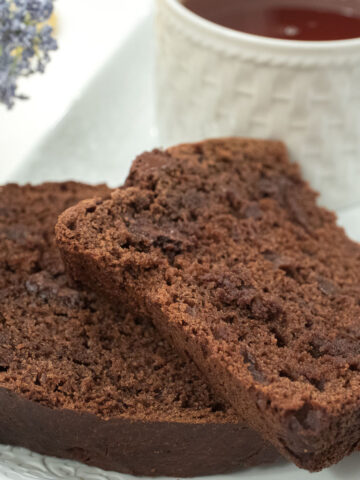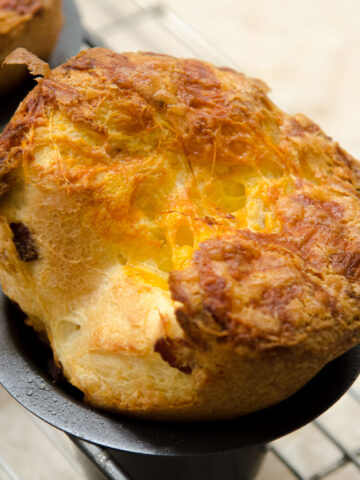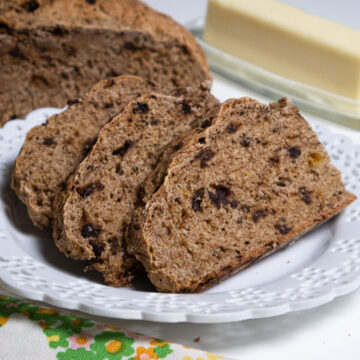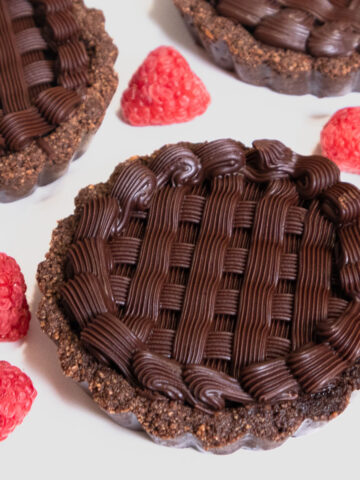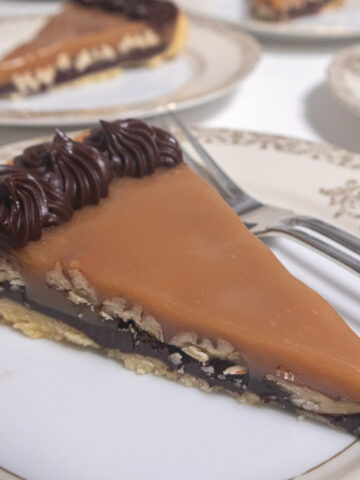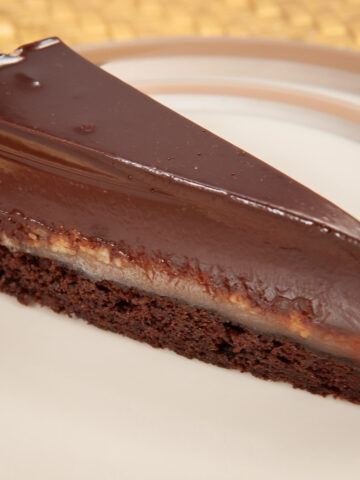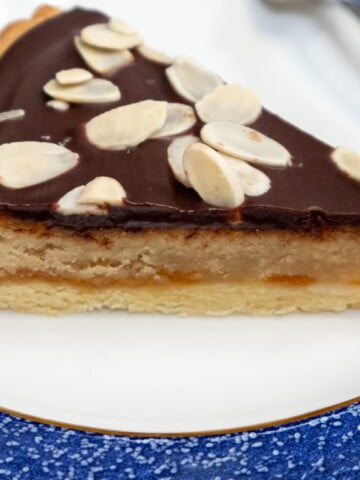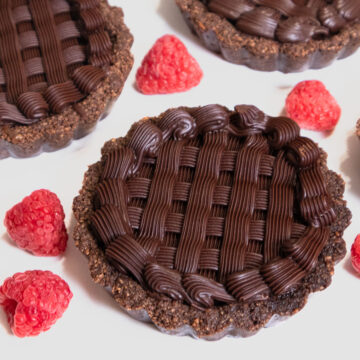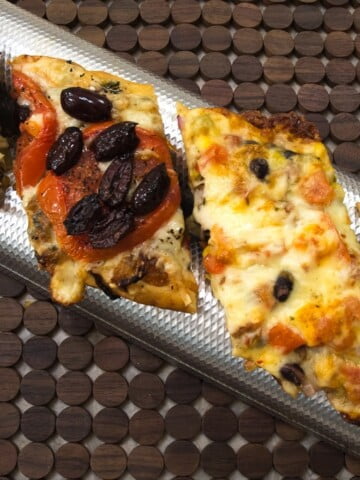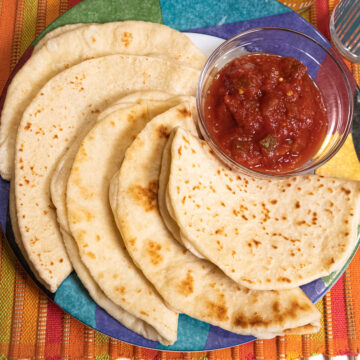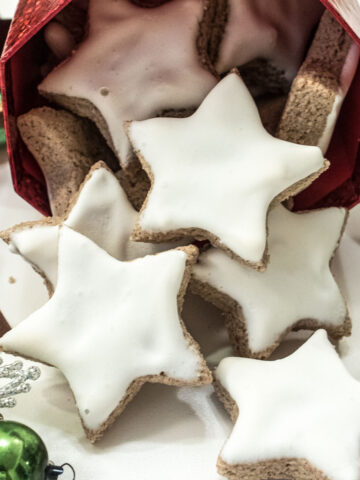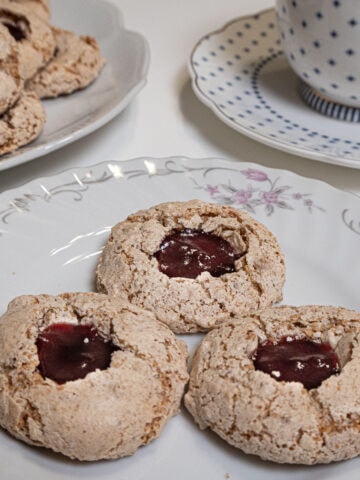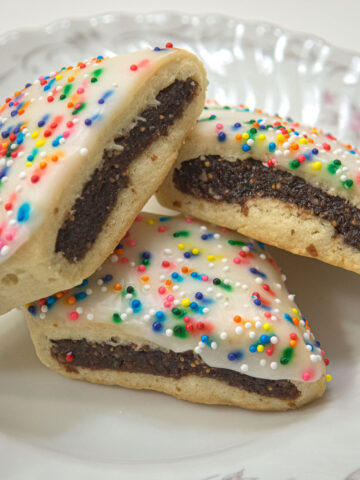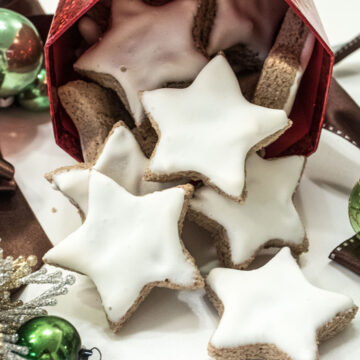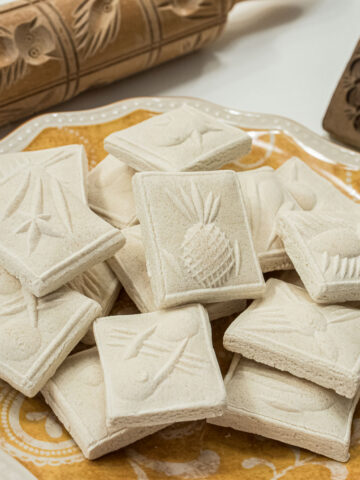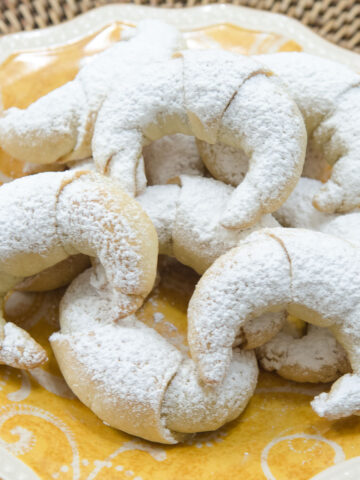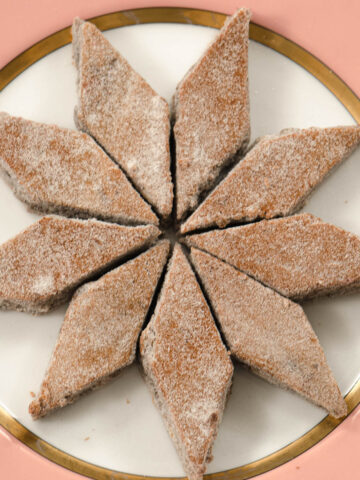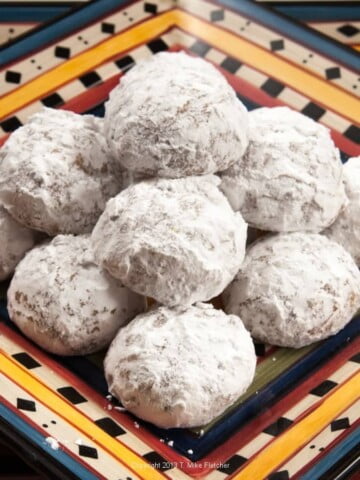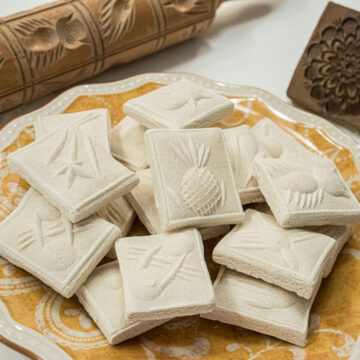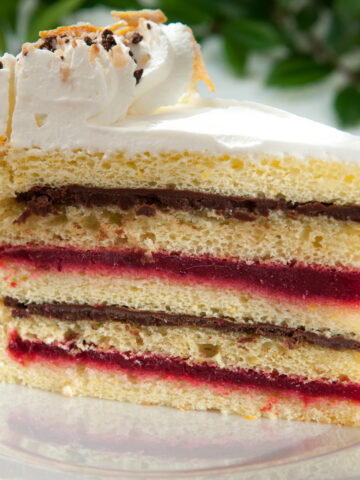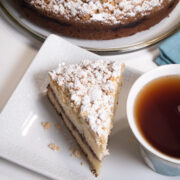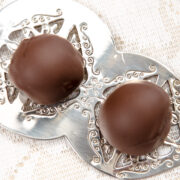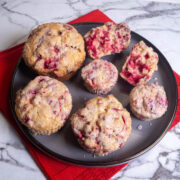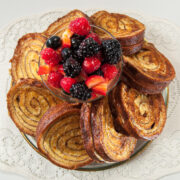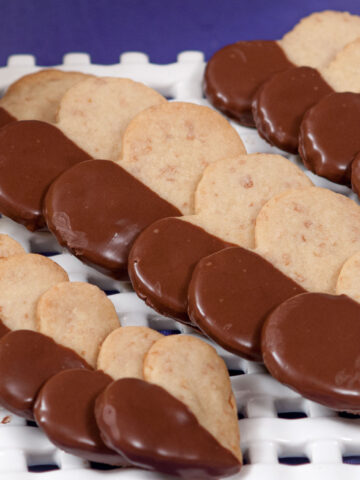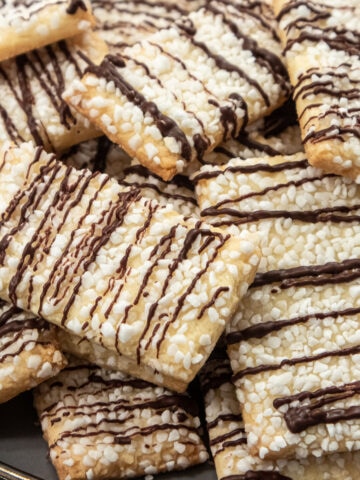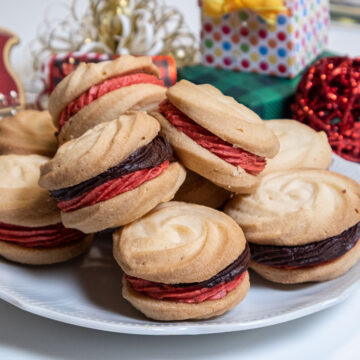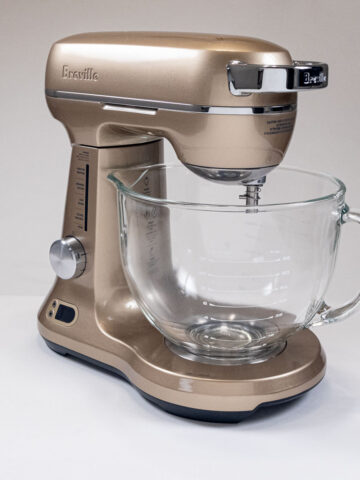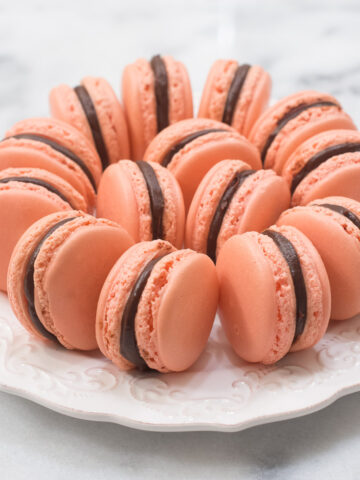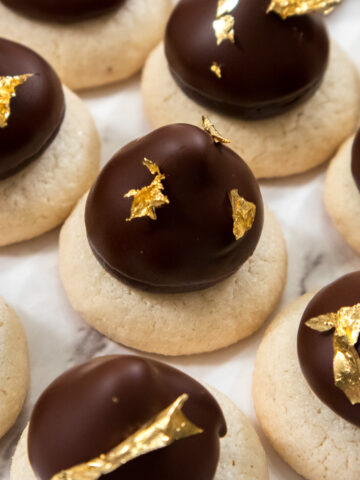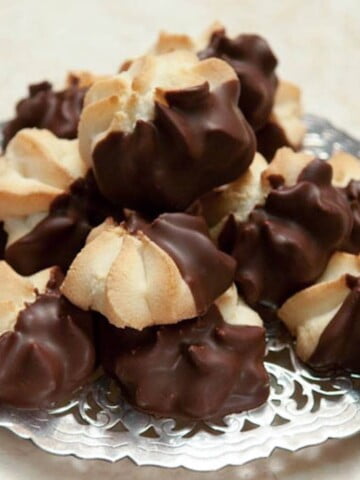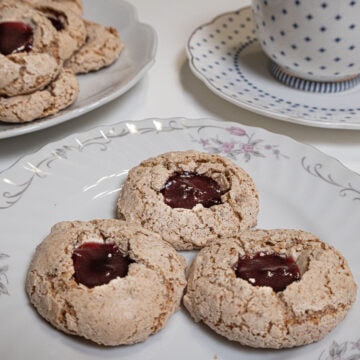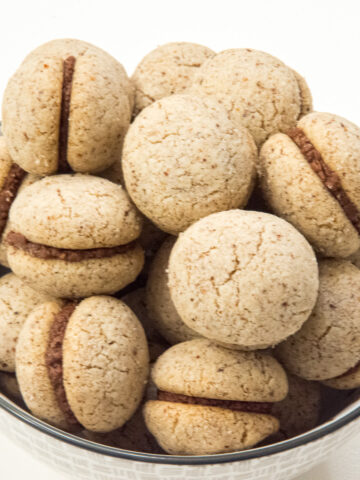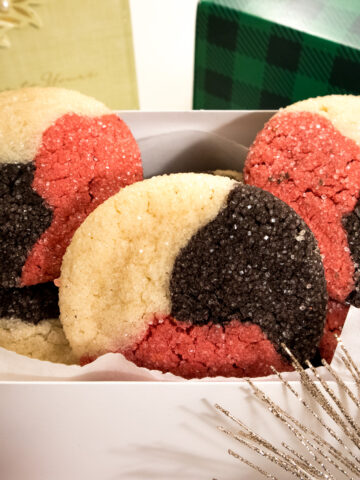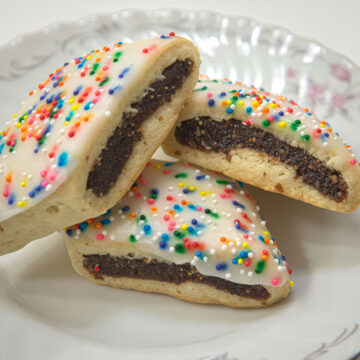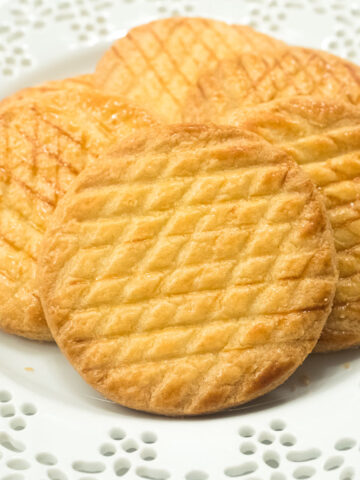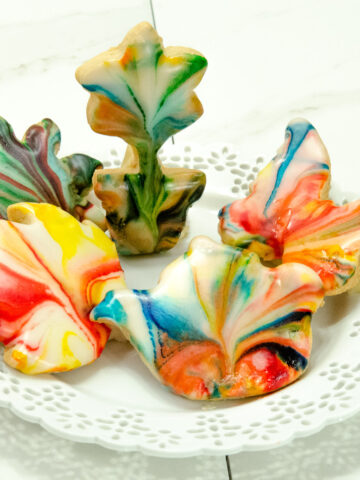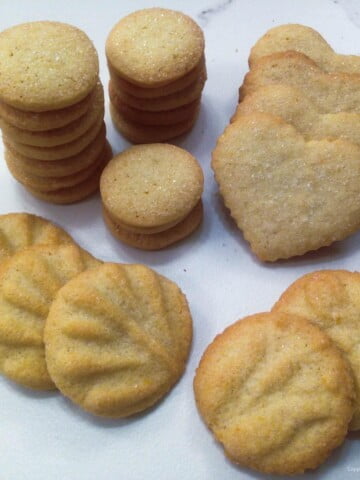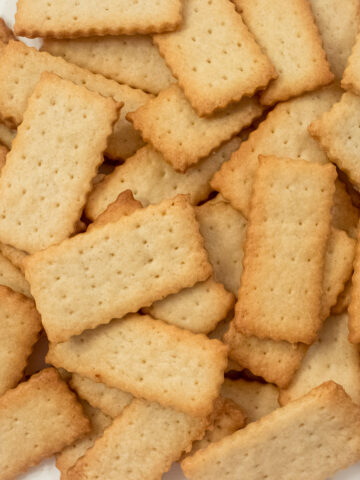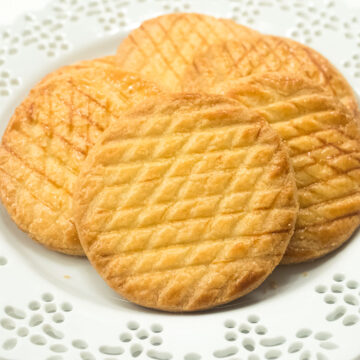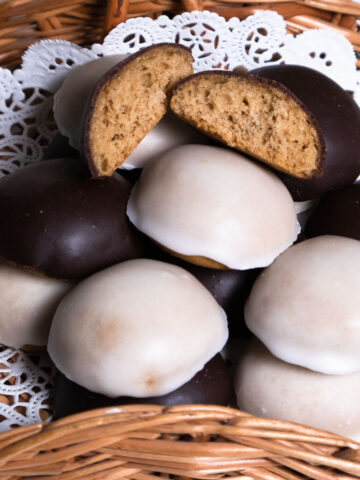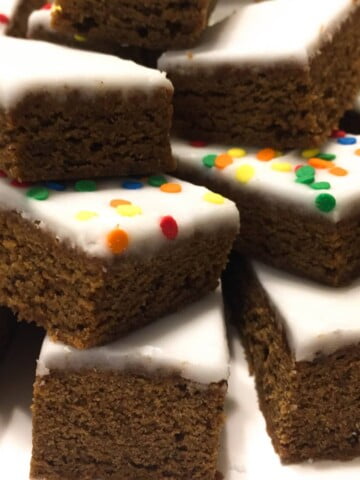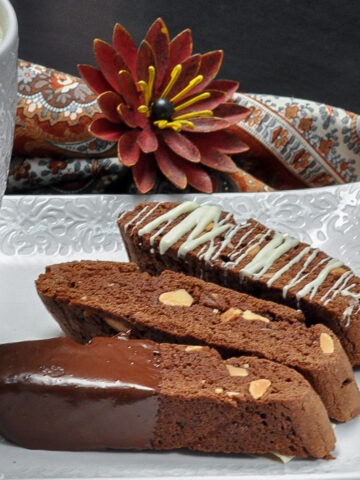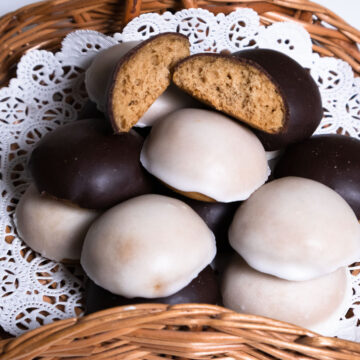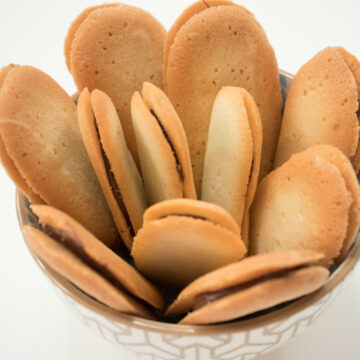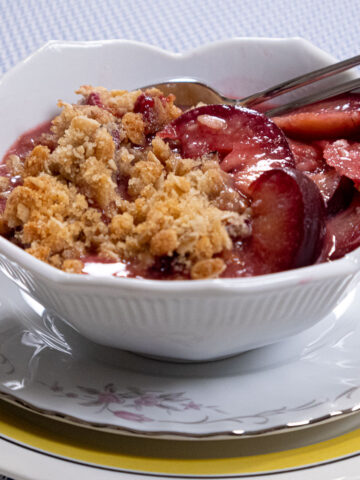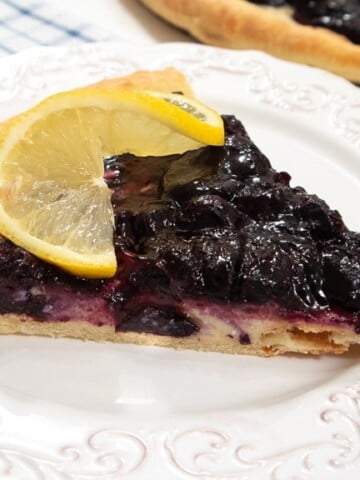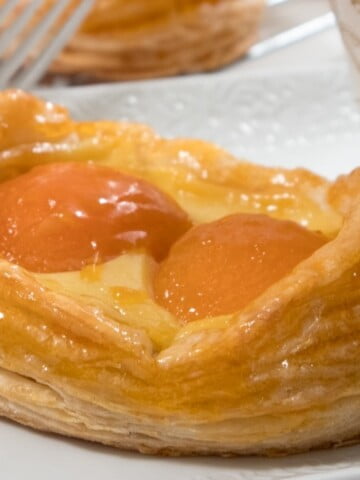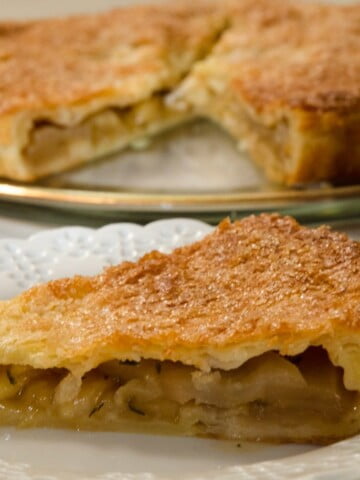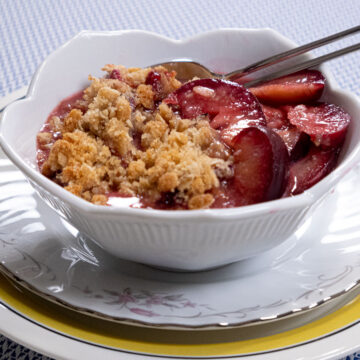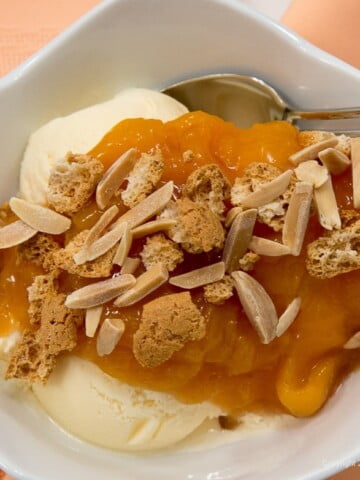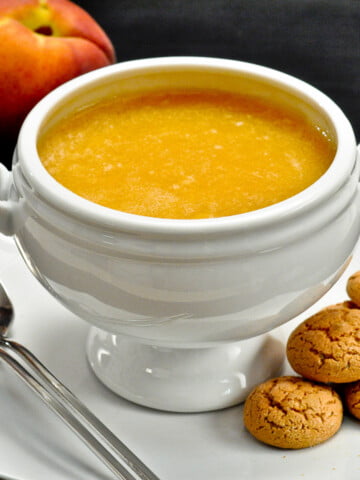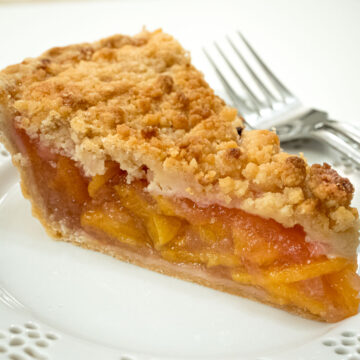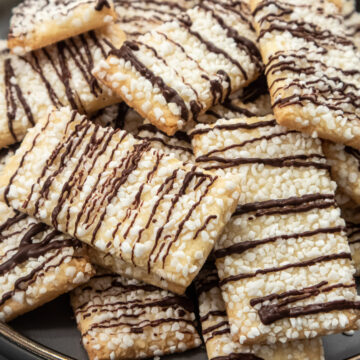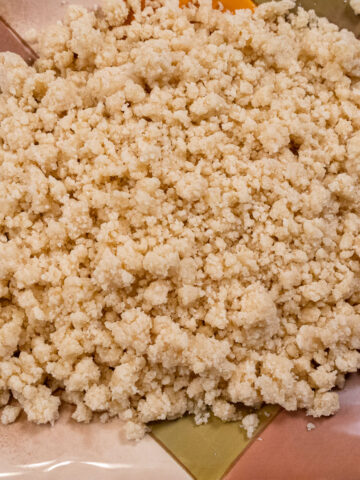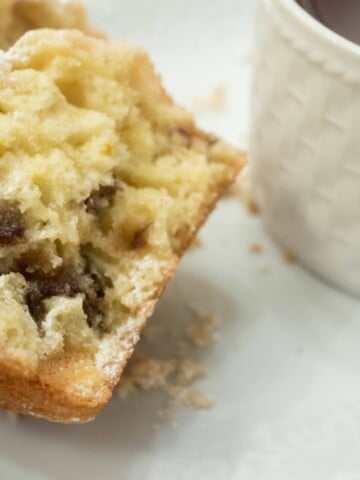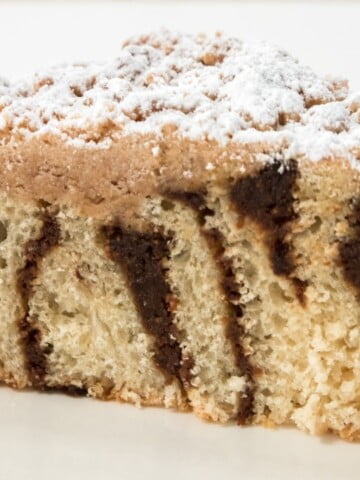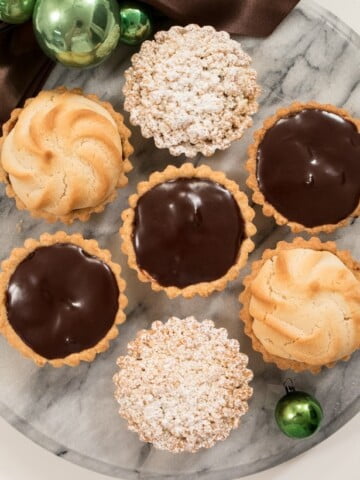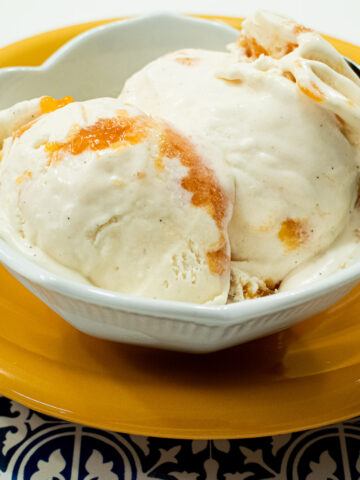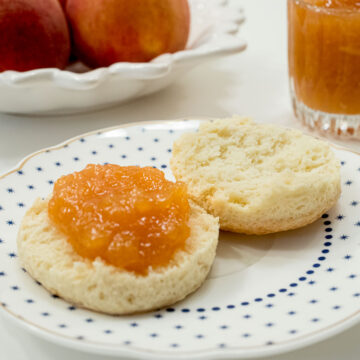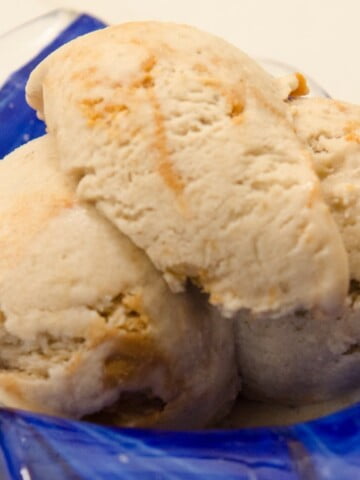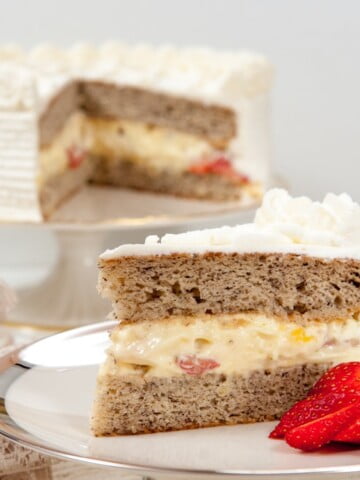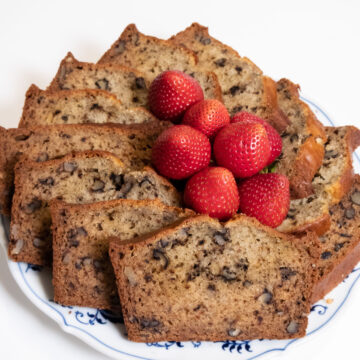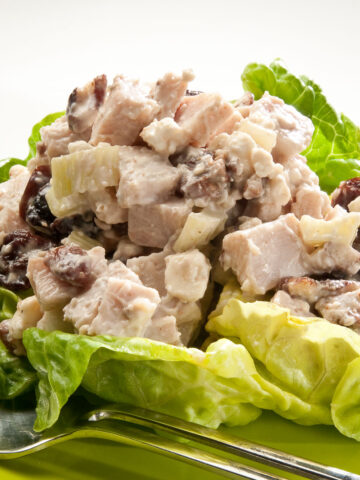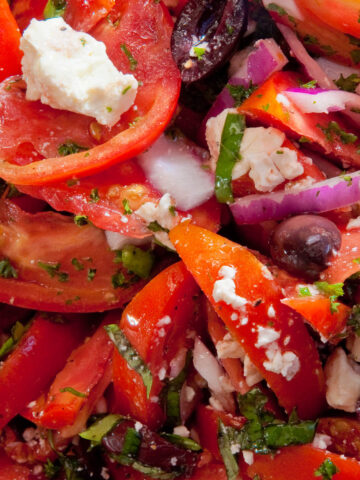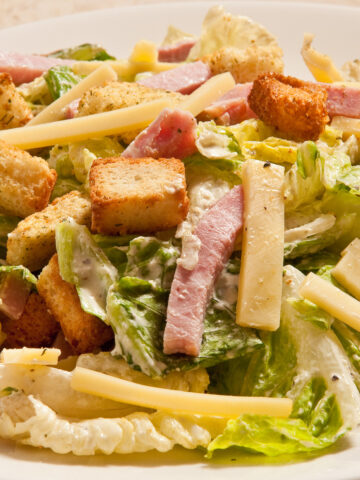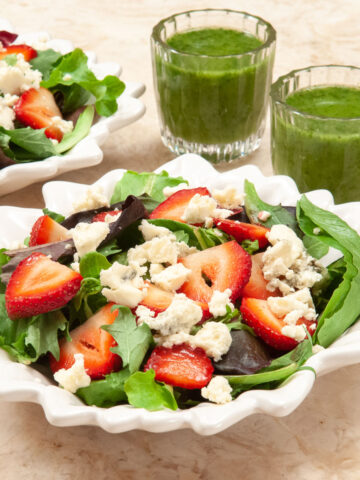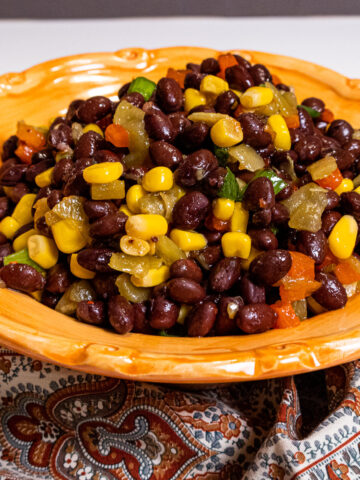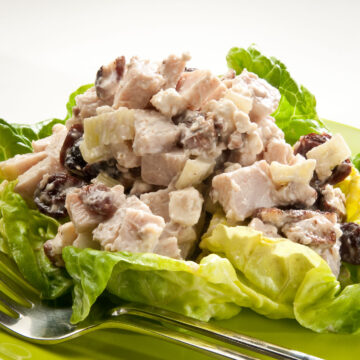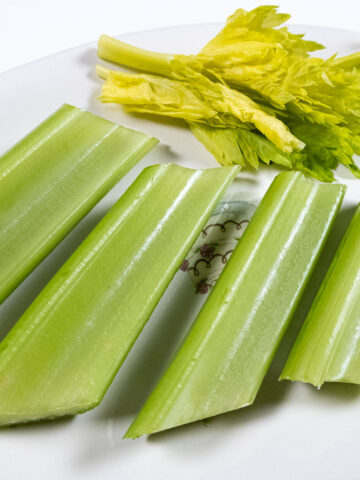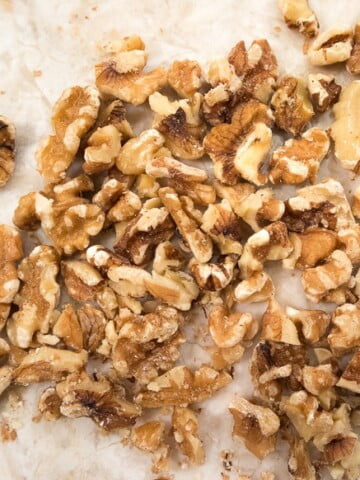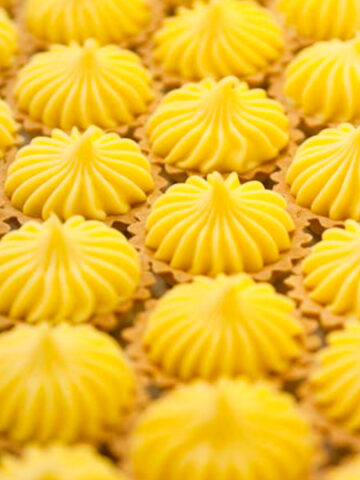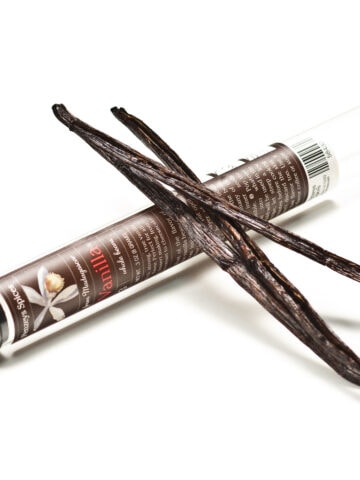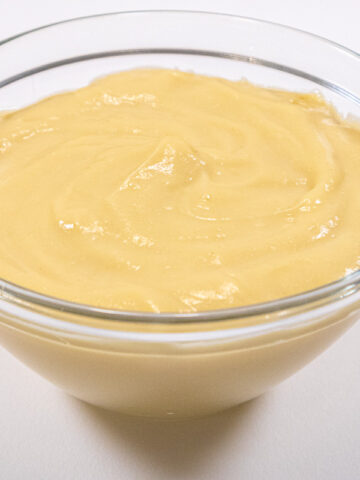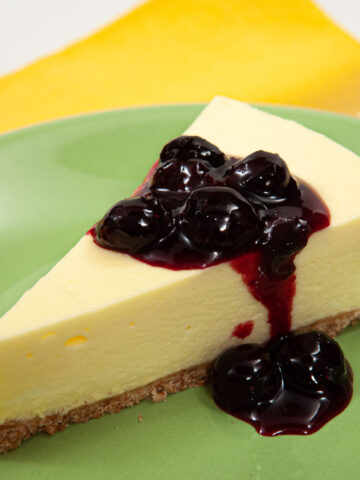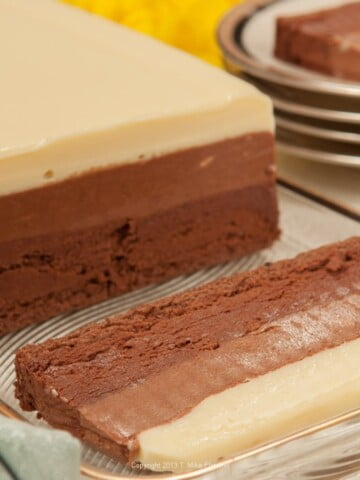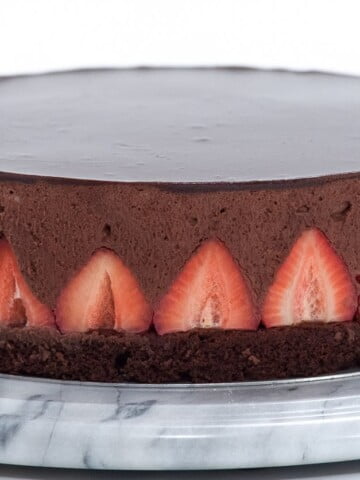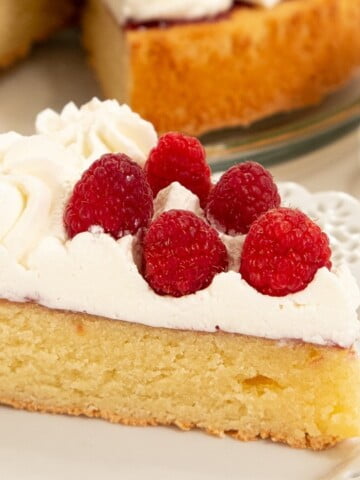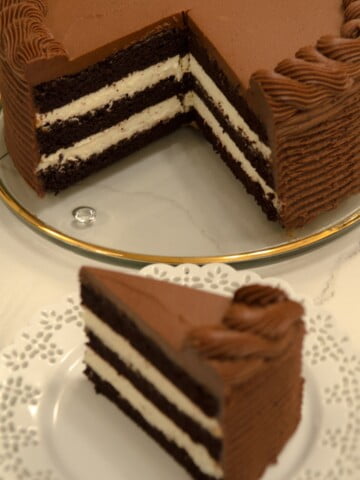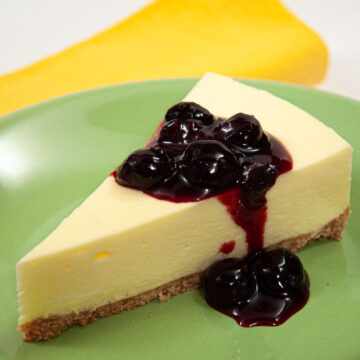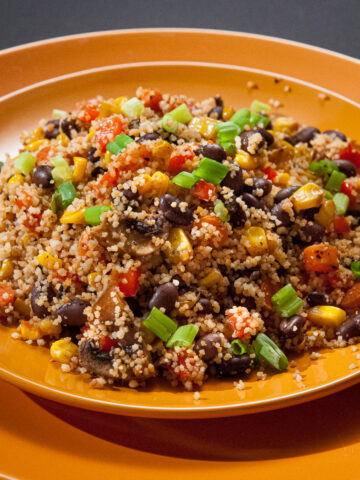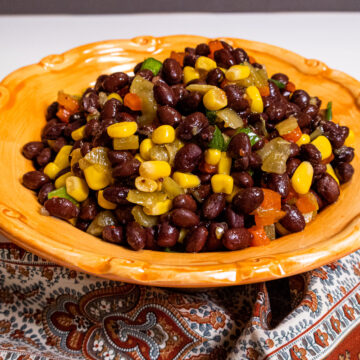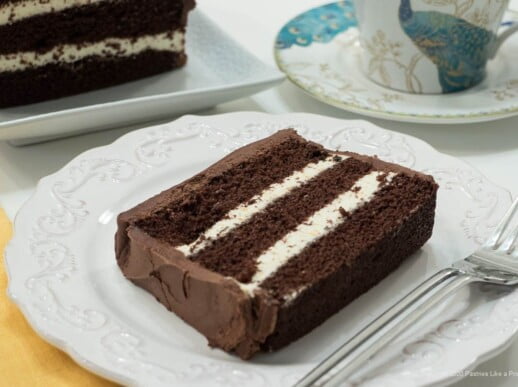
Posts
No Churn Caramel Brickle Ice Cream
No Churn Caramel Brickle Ice Cream is one of those unbelievably fast and fantastic recipes that comes together in minutes. Four ingredients make up this ice cream treat that no one will believe you whipped up.
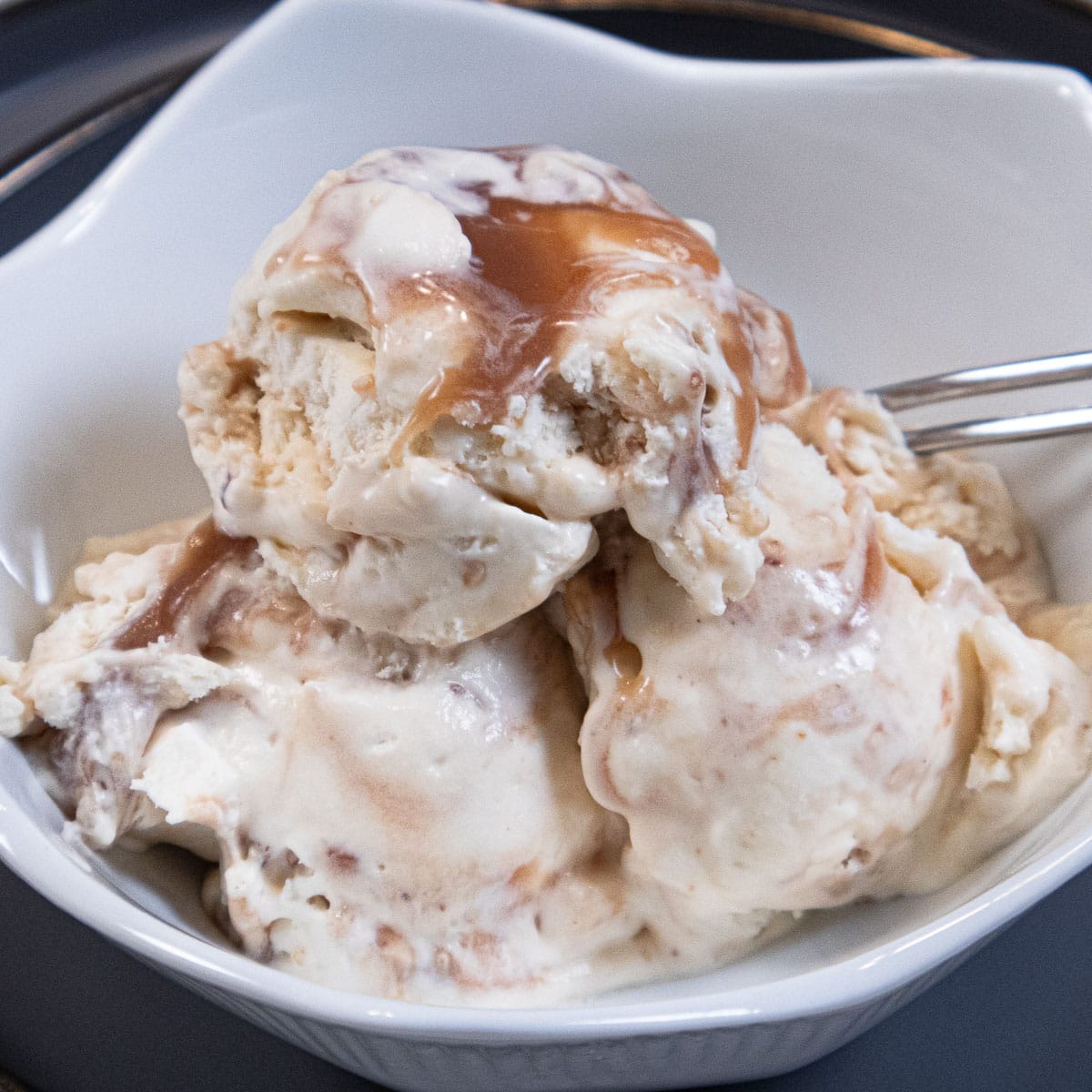
This is the first part of two recipes that will make up the Ice Cream Sandwiches next week. So get a head start make this and store it in the freezer in the 9x9" pan ready for the chocolate cookies that will sandwich it.
Don't be afraid of making the caramel sauce. It is super easy and once you taste it, it will be hard to go back to bought. The fact you need to make it ahead is one less thing to do for the ice cream.
Other quick ice creams to consider are: Individual Baked Alaskas, Caramel Hot Fudge Sundae, and the Double Chocolate No Machine Ice Cream,
[feast_advanced_jump_to]Why This Recipe Works
- It's easy. Don't be intimidated by making the caramel sauce. It's super easy and so much better than the bought stuff.
- It's delicious.
- No one will believe you made this.
- Perfect by itself or in the Ice Cream Sandwiches.
- It's a make ahead recipe and who doesn't love those during the summer?
- It won't heat up the kitchen.
Variations
By omitting the caramel and brickle you will have a very basic ice cream. Add vanilla or another flavor as desired.
Add ½ to ¾ cup of nuts, chips, fruit, etc that you like. Swirl fruit purees though out. Broken up cookies and candy work well also.
Recipe Ingredients
Caramel
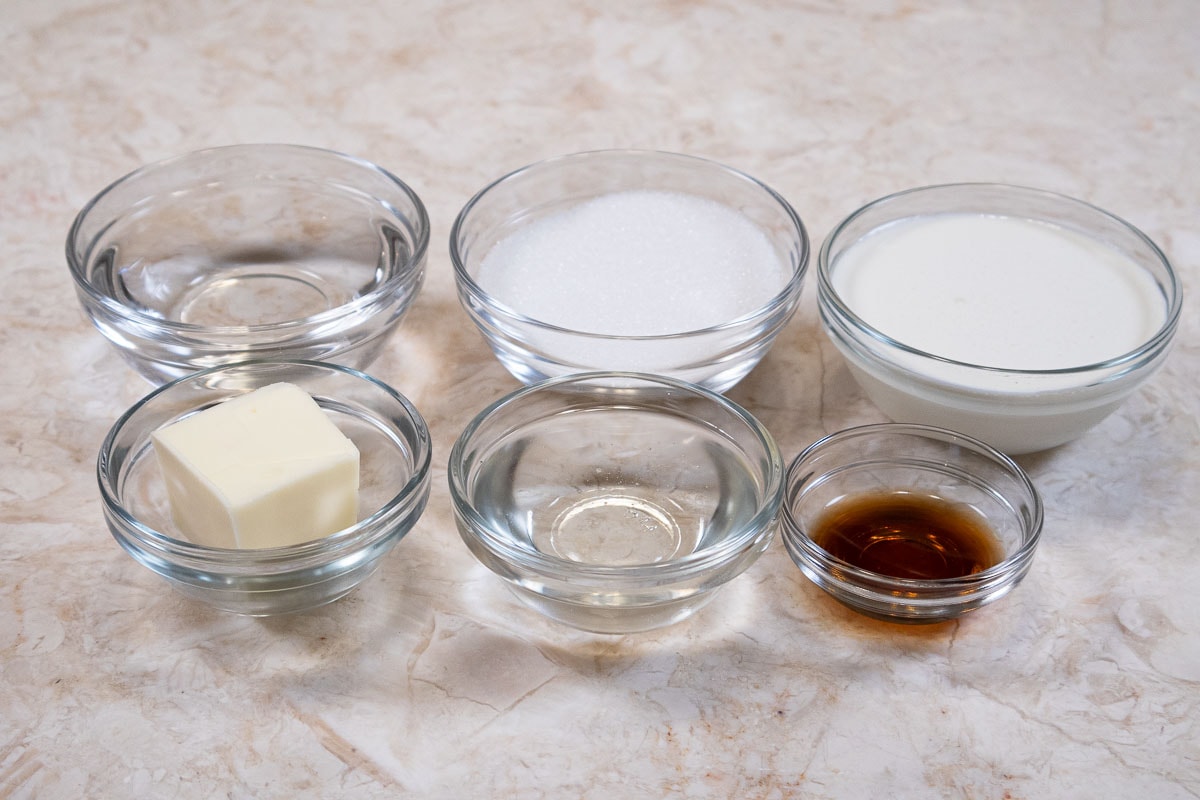
FRONT ROW: Unsalted butter, corn syrup, vanilla extract
BACK ROW: Water, granulated sugar, heavy cream
Caramel Brickle Ice Cream
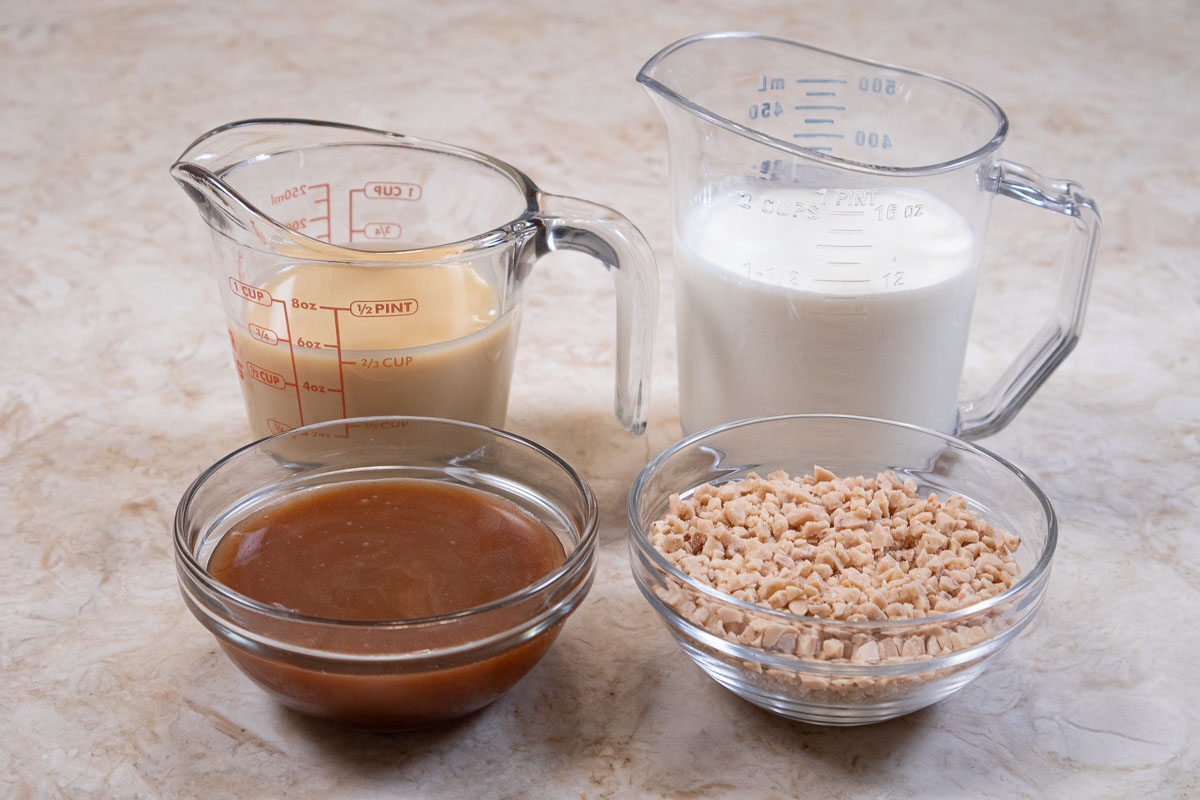
FRONT ROW: Caramel, brickle
BACK ROW: Condensed Milk, heavy cream
Key Ingredients
Condensed Milk should be used. Do not confuse it with evaporated milk, they are two different things.
Heavy Cream should be used for its higher fat content. Regular whipping cream will not whip up as thick so the texture of the ice cream will be lighter.
Brickle is the toffee inside of a Heath bar and can be purchased in the baking aisle with chocolate chips. Heath English Toffee Bits and Skor makes them. You can also make your own with my Salted Macadamia Rum Toffee.
Homemade Caramel Sauce is in a league by itself. Very easy to make and so much better than a bought one.
Be sure to see the recipe card below for the exact ingredients and instructions.
Step by Step Instructions
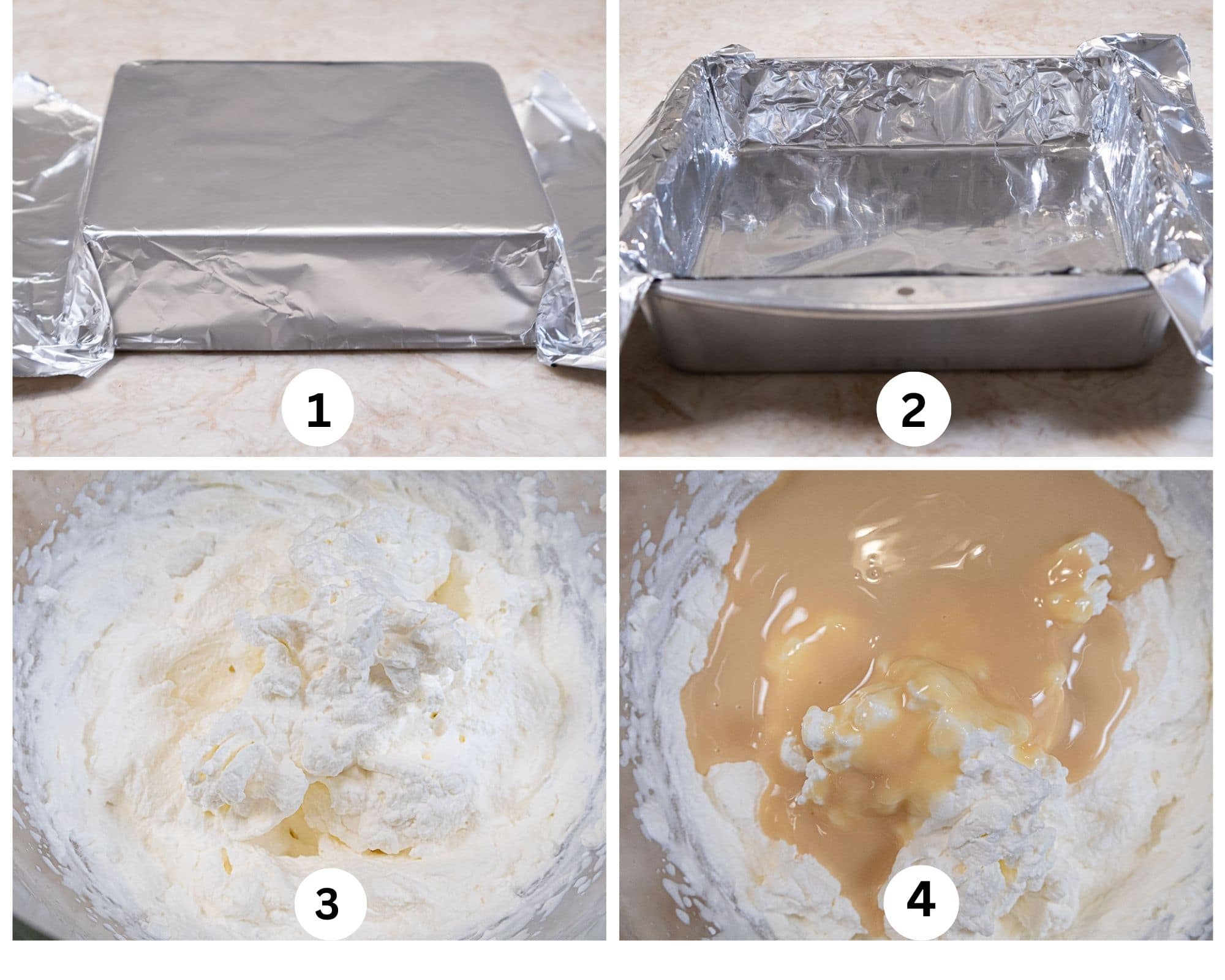
Step 1. Turn a 9x9 inch pan upside down and shape a large piece of foil around it. Turn the corners in to square the foil. Step 2. Carefully remove the pan shaped foil and turn the pan over. Place the foil inside the pan and seat it well into the corners. Step 3. Whip the cream to medium stiff peaks. Step 4. Add the condensed milk to the cream. Fold the two together.
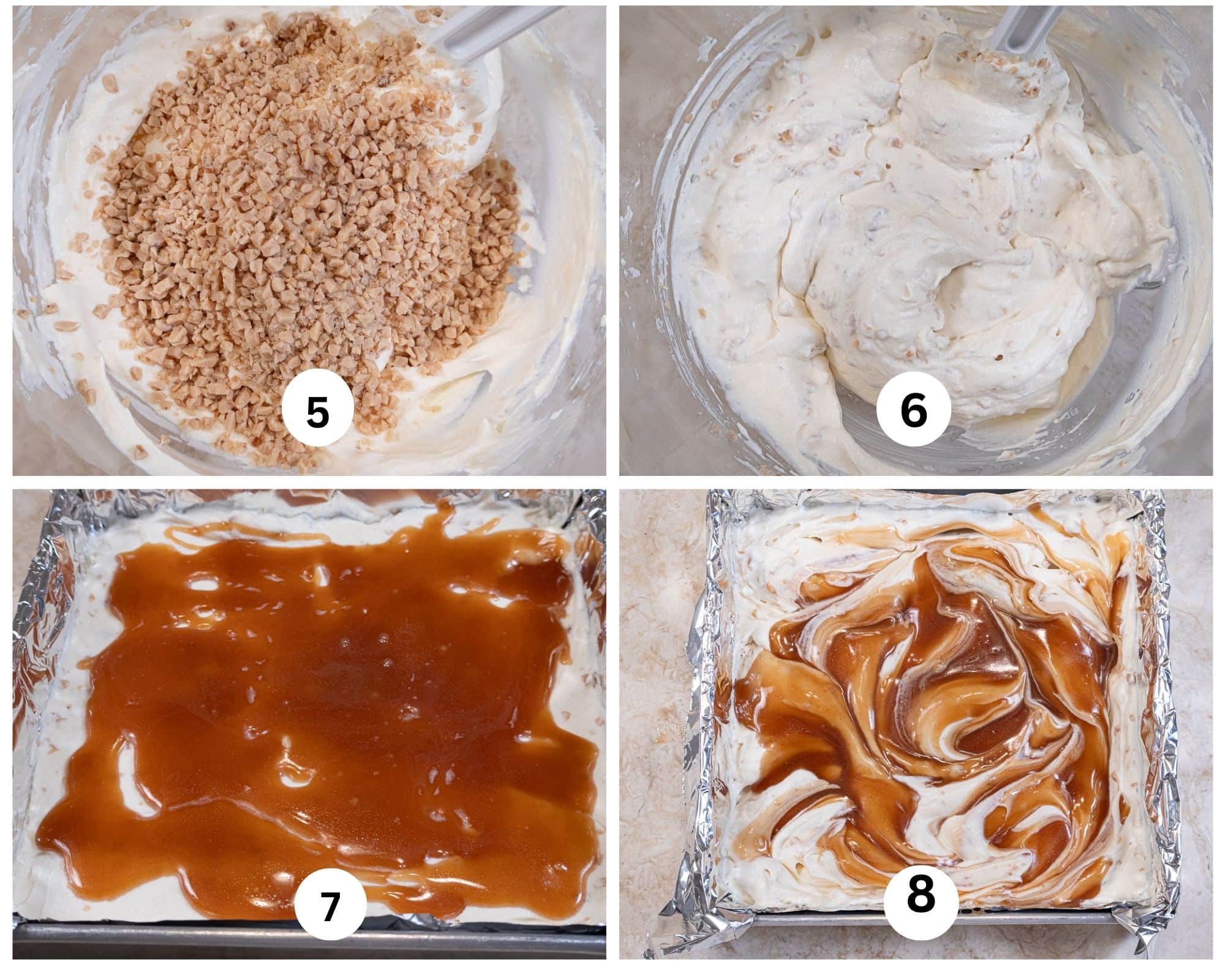
Step 5. Add the brickle to the cream mixture. Step 6. Fold the brickle in and spread it evenly into the prepared pan. Step 7. if the caramel is made ahead and cold, microwave very briefly to return to a syrup stage and pour it over the ice cream. Step 8. Swirl the caramel in. Do not over swirl as you want the caramel to be obvious.
Recipe FAQS
It simply means no ice cream machine is need to make it. It is very easy and can be made in minutes.
Several things can be done so it doesn't freeze like a block of ice. First, don't beat the cream to really stiff peaks. Secondly, a tablespoon or two of alcohol such as vodka or any flavor you desire can be added to deter the freezing.
No, the recipe will not work without it. All condensed milk is sweetened. In addition to adding sweetness to the ice cream, it is a substitute for the custard often used in regular ice cream.
Expert Tips
- When whipping the cream, do not take it to the stiffest point. By whipping it to the medium stage, it will help prevent the ice cream from becoming rock hard in the freezer.
- However, if you have taken the cream too far, simply let the frozen ice cream sit on the counter for 5 or so minutes to soften.
- A tablespoon or two of vodka or any other alcohol will help keep the ice cream soft.
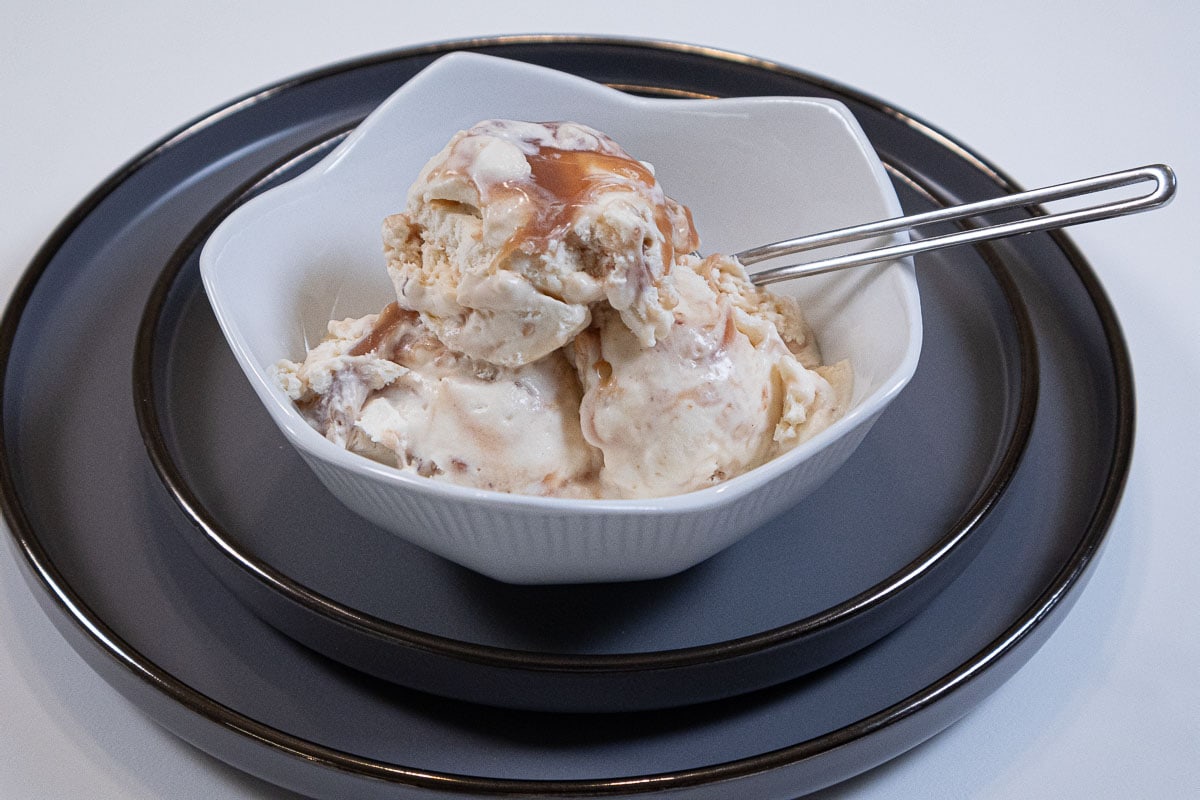
Other Summer Desserts to Tempt You
If you love these Buttermilk Flatbreads, It would be hugely helpful and so appreciated it if you would take a moment to leave a rating below. Thank you.
No Churn Caramel Brickle Ice Cream
Equipment
- Candy Thermometer
Ingredients
Caramel Sauce
- ½ cup water
- ¼ cup corn syrup
- ⅔ cup granulated sugar (130 grams)
- 2 tablespoons unsalted butter (30 grms)
- ½ cup heavy cream
- 1 teaspoon vanilla extract
Caramel Brickle Ice Cream
- 1 ⅓ cups heavy cream
- ⅔ cup condensed milk
- ⅔ cup toffee bits or brickle
- ½ cup caramel from above
Instructions
Caramel
- Using the ingredients listed below, please go to Caramel for step by step pbotos.
- In a heavy saucepan that is at least 4 times as big as the ingredients, place the water, sugar and corn syrup, stirring until combined.
- When it begins to boil, wash down the sides of the pan with a brush dipped in cold water
- Boil until it becomes a deep golden color, swirling the pan so the color is even.
- Remove from the heat immediately and add the butter, stirring until it is melted. Stir in the cream and vanilla carefully as it may boil up. Return the pan to the heat and boil, without stirring, to 218°F. This will happen very quickly after returning to the heat.
- Pour into a container and let it come to room temperature undisturbed.
Store at room temperature for several days or refrigerate if holding longer.
Caramel Brickle No Churn Ice Cream
- Turn a 9x9"square pan upside down. Using a large piece of foil, press it to the shape of the pan. Carefully remove the foil, turn the pan right side up and place the square foil inside the pan, pressing it against the sides and into the corners. Set aside.
- Whip the cream to medium stiff peaks.
- Pour the condensed milk over the cream and fold together.
- Fold in the brickle and pour into the prepared pan.
- If the caramel has been refrigerated, microwave very briefly to soften. Do not liquify it. It should remain as a thick sauce.
- Spread ½ cup or more over the the ice cream and fold it in. Don't over fold because you want the caramel to be visable. There will be some sauce left over. Store in the refrigerator or eat it by the spoonful. Your choice.
- Freeze. This will keep covered in the freezer for a couple of weeks.
Notes
Nutrition
A Summer Roundup of Sweet & Savory
I wanted to highlight some of the best Sweet and Savory recipes on this site for the summer months. Many are no bake recipe, others feature the abundant fruits and vegetables coming from gardens or markets. I trust you will find a few to perk up your summer meals.
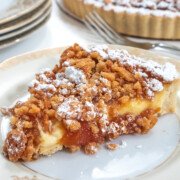
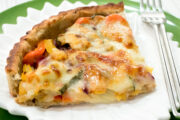
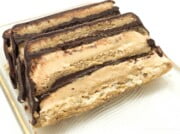
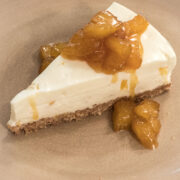
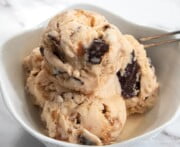
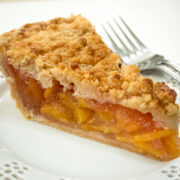
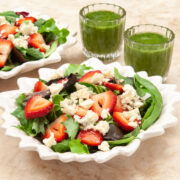
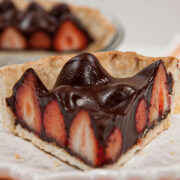
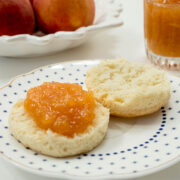
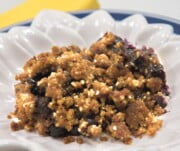
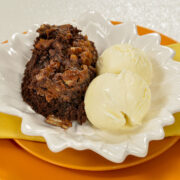
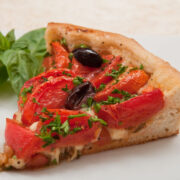
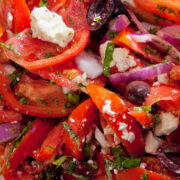
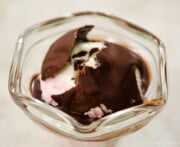
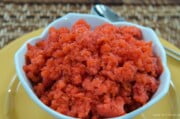
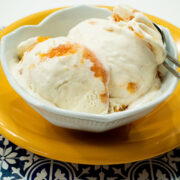


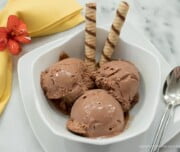
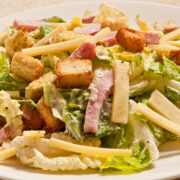
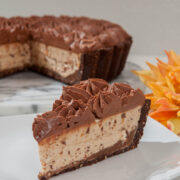
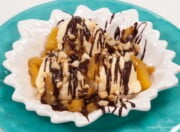
Easy Pina Colada No Bake Cheesecake
What if I told you this cool, creamy Easy Pina Colada No Bake Cheesecake can be made with no water bath, sour cream, eggs or condensed milk. Well, it can! It has all the flavors of a pina colada in a smooth, velvety dessert that can quickly be whipped up in the processor in a matter of minutes.
The Caramelized Pineapple Sauce that goes along with it is the final touch to a quick and easy dessert. This sauce can also go on pound cake, ice cream, or just eat it by te spoonful.
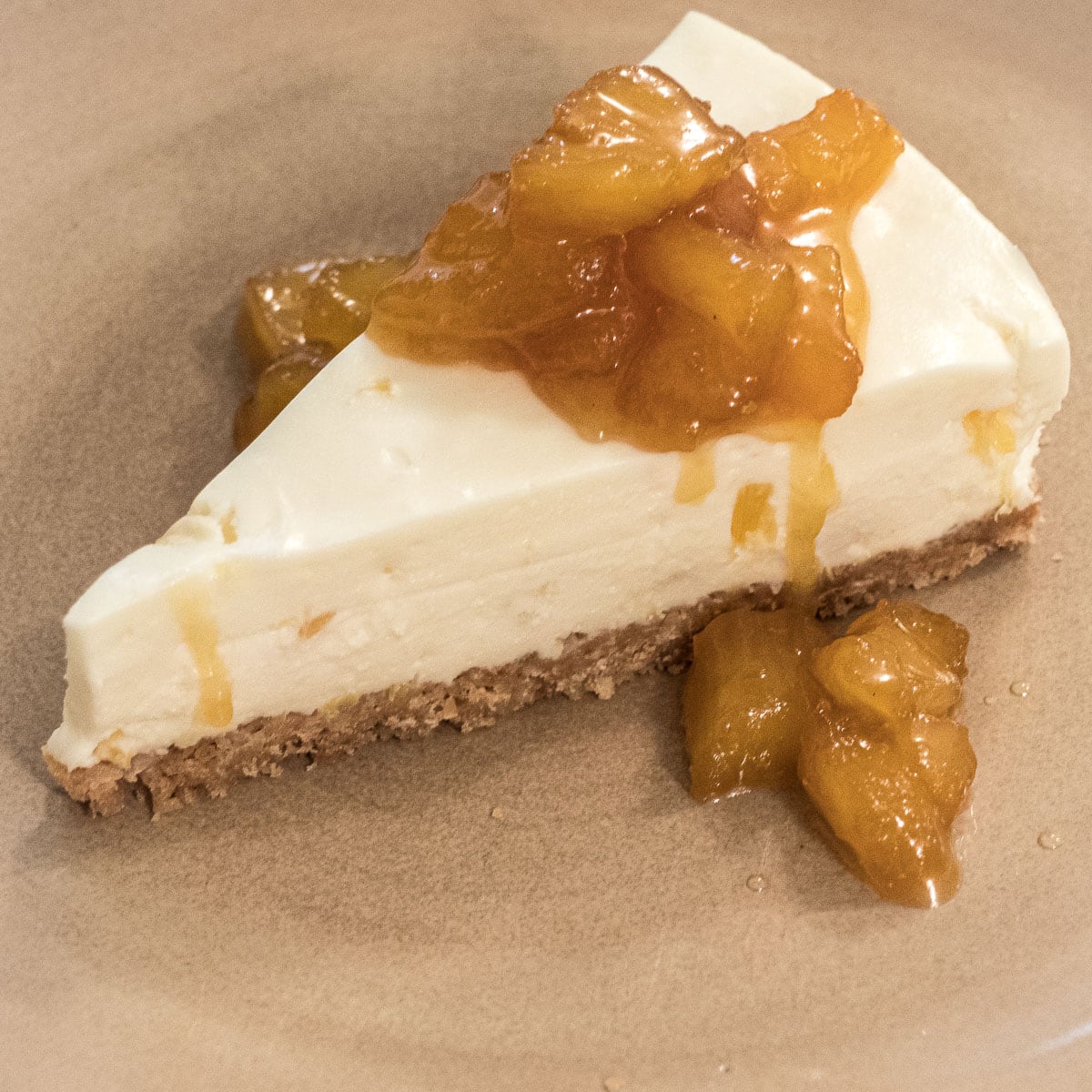
Ever wonder where they come from? The first cheesecakes are thought to be from Samos in Ancient Greece where they were served at weddings. A far cry from modern cheesecakes, these consisted of wheat flour, pounded cheese and honey. Along the years, it has been refined and remade and today it's at the top of the list of favorite desserts.
The graham cracker-coconut crust can be used without baking but I highly recommend that you bake it so it stays firm even if refrigerated for several days.
If you've always wanted to know how to make a cheesecake, this is the easiest and best around. If you're looking for more summer recipes go to my post Summer Roundup of Sweet and Savory.
[feast_advanced_jump_to]Why You'll Love this Recipe
- It's super easy for little effort.
- It's an easy dessert that's perfect when you don't want the oven on for hours.
- It tastes incredible and like you have spent the day making it.
- It's rich flavor is very balanced both sweet and a bit tart from the sauce.
- It's simple but elegantly sophisticated.
- Perfect after barbecue.
Substitutions
If you don't wish to use alcohol, add the gelatin to ¼ cup water and increase the coconut extract to 1 tablespoon.
Recipe Ingredients
Coconut Graham Cracker Crust
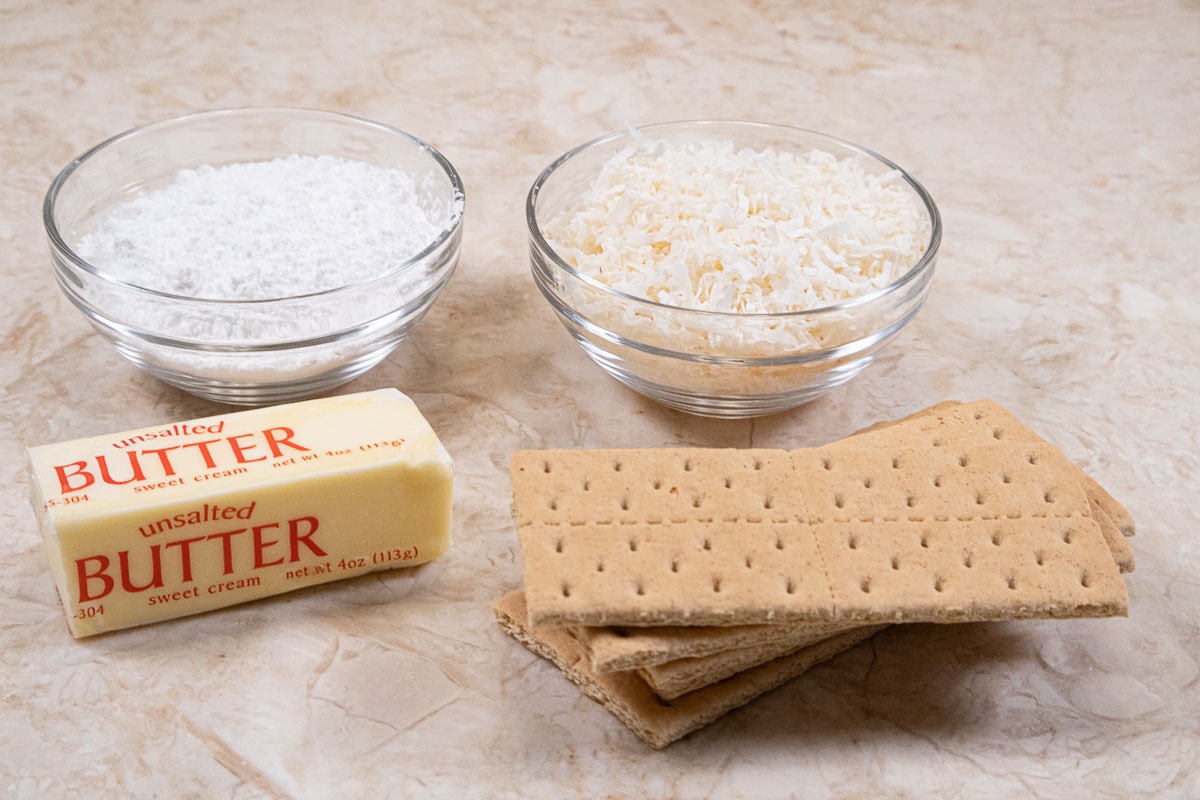
BACK ROW: Powdered sugar, unsweetened coconut
FRONT ROW: Unsalted butter, graham crackers
Cheesecake Filling
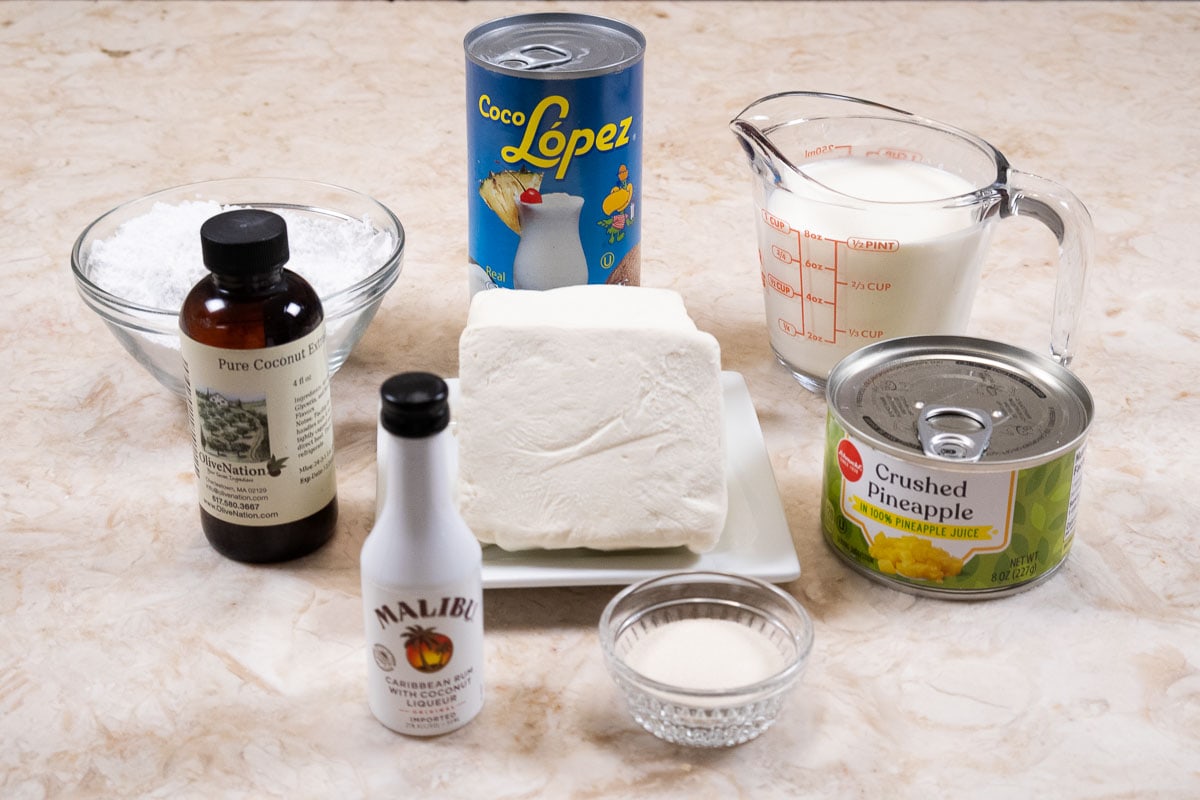
BACK ROW: Powdered sugar, coco lopez, heavy cream
MIDDLE ROW: Coconut extract, cream cheese, crushed pineapple
FRONT ROW: Malibu rum, gelatin
Caramelized Pineapple Sauce
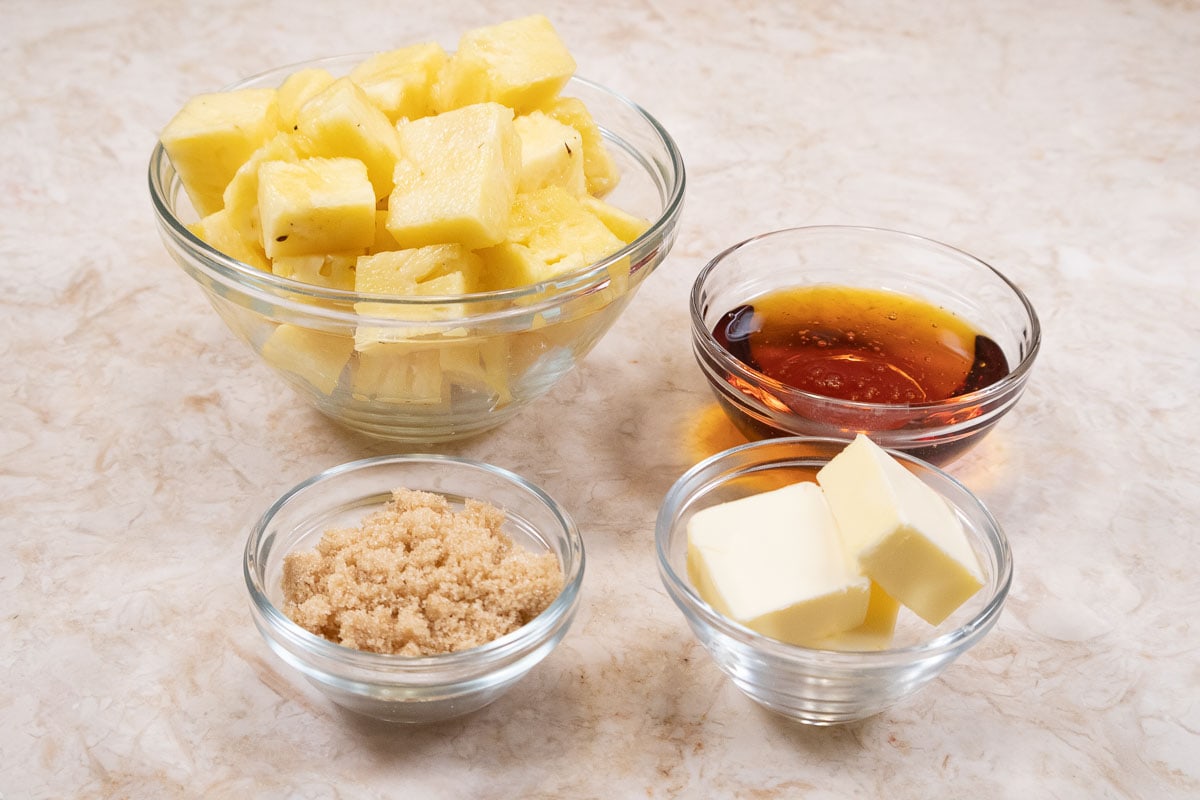
BACK ROW: Fresh Pineapple chunks, golden syrup
FRONT ROW: Brown sugar (light or dark), unsalted butter
Cream of Coconut
Do not confuse this with coconut milk – they are vastly different. One cannot be substituted for the other. There are several brands and the one above it the one I use.
I have seen it have a heavy white semisolid mixture at the top of the can with a dark, translucent liquid at the bottom. When whisked together it becomes an off white liquid. There might even be a few shreds of coconut. It can also be just the translucent liquid. Either is fine as long as it is cream of coconut.
Golden Syrup
Lyle's Golden Syrup is a staple in English Baking and I can tell you it’s amazing. I can literally eat it by the spoonful. It can be used where ever corn syrup or honey is used and it's great on pancakes and waffles. It can be easily found online or stores that sell international items and brings a taste that substitutes simply can’t. However, if you have to substitute I have seen clear corn syrup used.
Malibu Rum
This is a popular, combination of Caribbean rum with coconut liqueur. It can be bought in small airline or single serve bottles that can be found in some grocery stores or liquor stores for sure. The bottle contains ¼ cup which is perfect for this recipe. If you can't find it, use 3 tablespoons light rum, 1 tablespoon water and 2 teaspoons coconut extract.
The Coconut
Unsweetened coconut, also known as dessicated coconut is important in this crust. Without the sweetening it is just pure coconut that has a more impactful flavor.
Powdered Sugar
Powdered sugar is used because it will dissolve instantly into the other ingredients. Granulated sugar has the chance of remaining grainy.
Cream Cheese
Low fat cream cheese can be substituted if desired. Either should be room temperature when used.
Crushed Pineapple
Canned crushed pineapple is used in the filling of the cheesecake. It should be drained and squeezed dry before adding to the rest of the ingredients.
Fresh pineapple should not be used because there is an enzyme in it that prevents gelatin from setting.
Whipped Heavy Cream
Heavy cream refers to cream that has at least 35% fat as opposed to regular whipping cream that has about 30%. The heavier fat content makes a thicker whipped cream that doesn't water out after beating and needs no stabalization.
While I don't normally like to whip cream in the processor because it doesn't become very light, it is perfect in this application. The lack of air in the whipped cream adds to the smooth, velvet, dense texture of the cheesecake.
Caramelized Pineapple
For this, fresh pineapple is used for it's taste. It is important to use somewhat under ripe pineapple so it doesn’t turn to mush when caramelizing.
Be sure to see the recipe card below for the full ingredients list & instructions!
Step by Step Instructions
Coconut Graham Cracker Crust
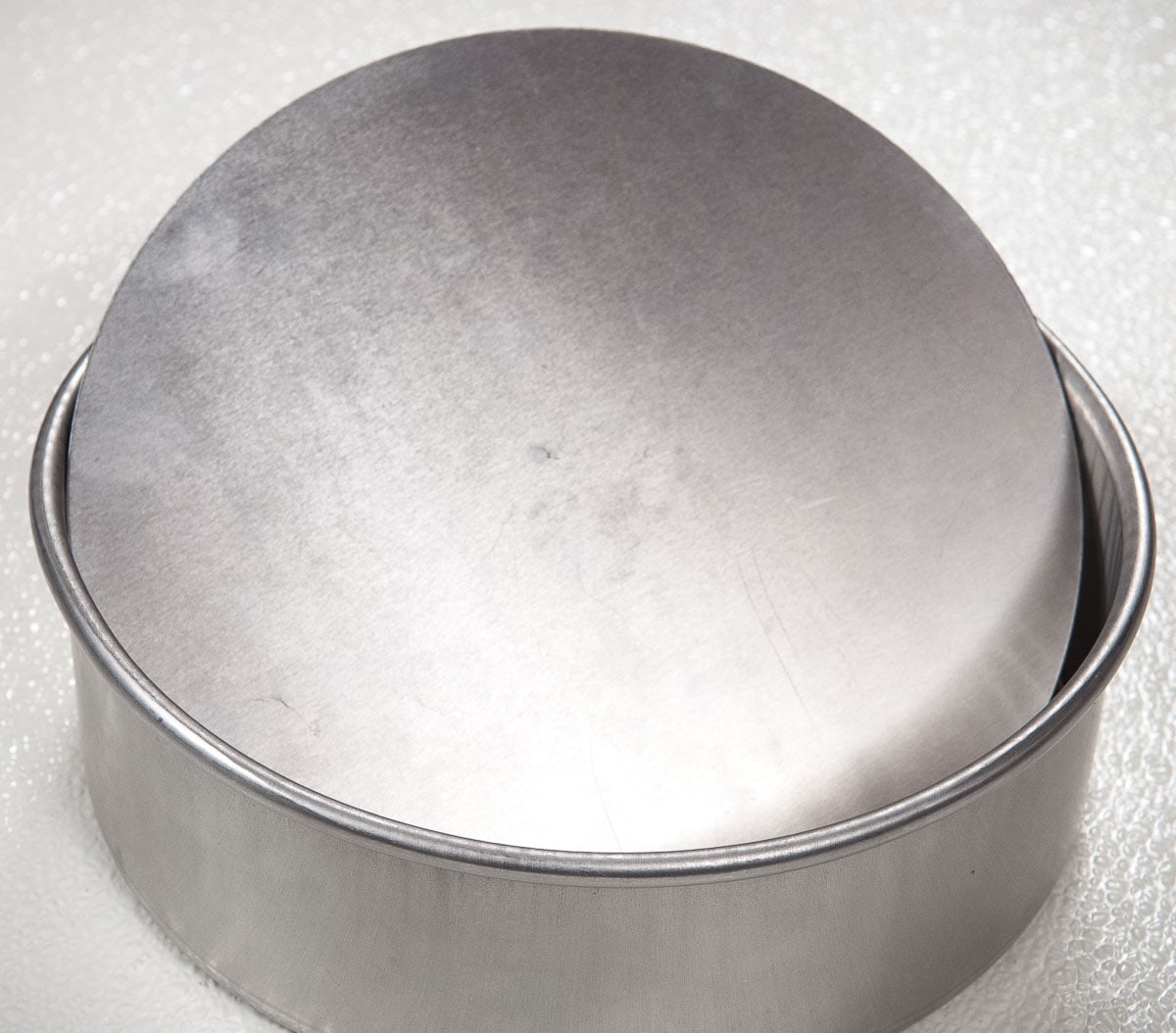
Step 1. Spray a 9x3 inch a cheesecake pan with a removable bottom with non-stick baking spray. A springform pan can also be used. Set aside.
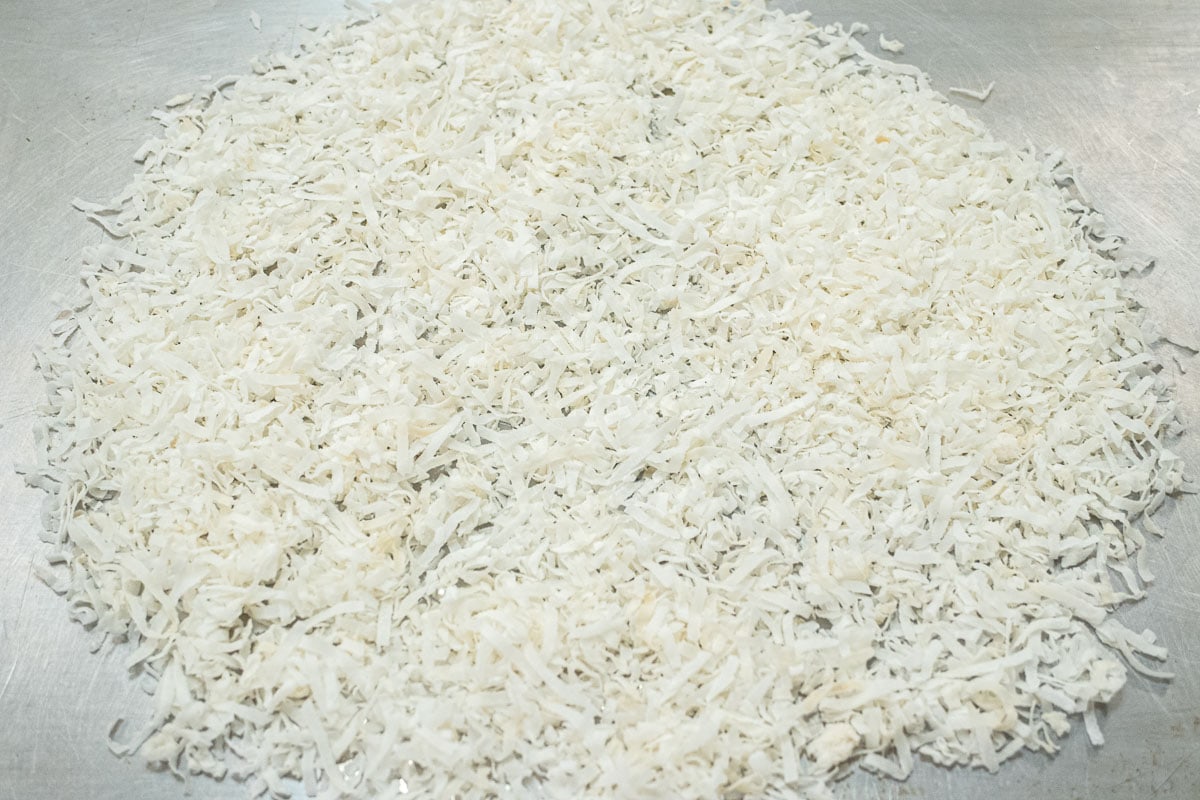
Step. Preheat the oven to 350°F. Spread the unsweetened coconut in a single layer on a baking sheet. Keep it together so stray strands don't burn.
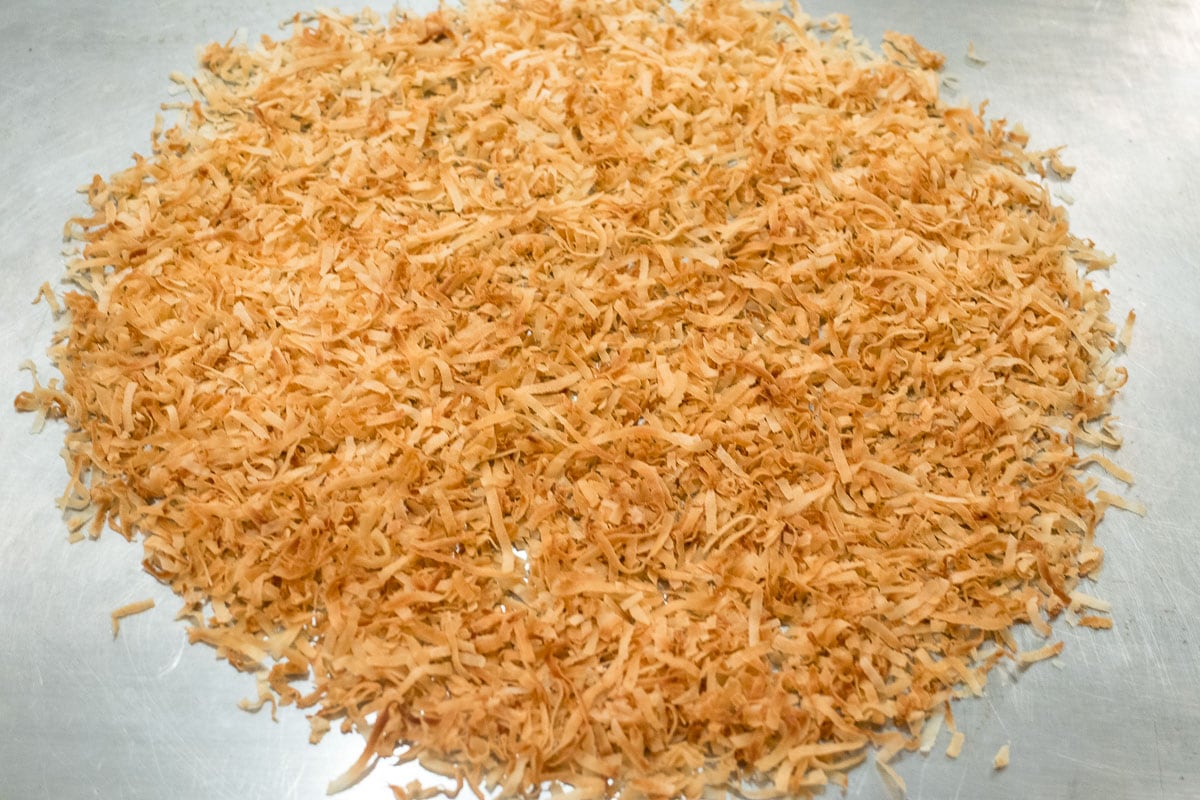
Step 3. Toast the coconut for about 5 minutes, stir and toast until the coconut is a golden brown. Cool.
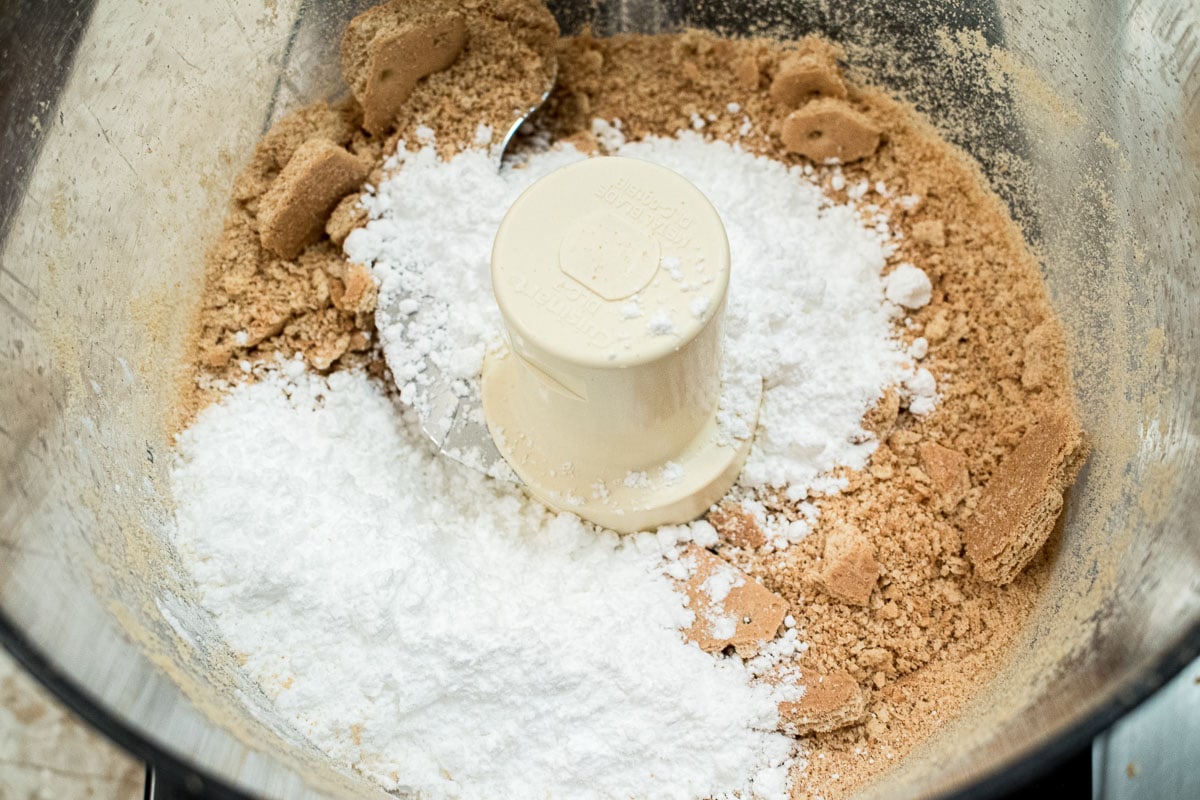
Step 4. Process the graham crackers and powdered sugar to make crumbs.
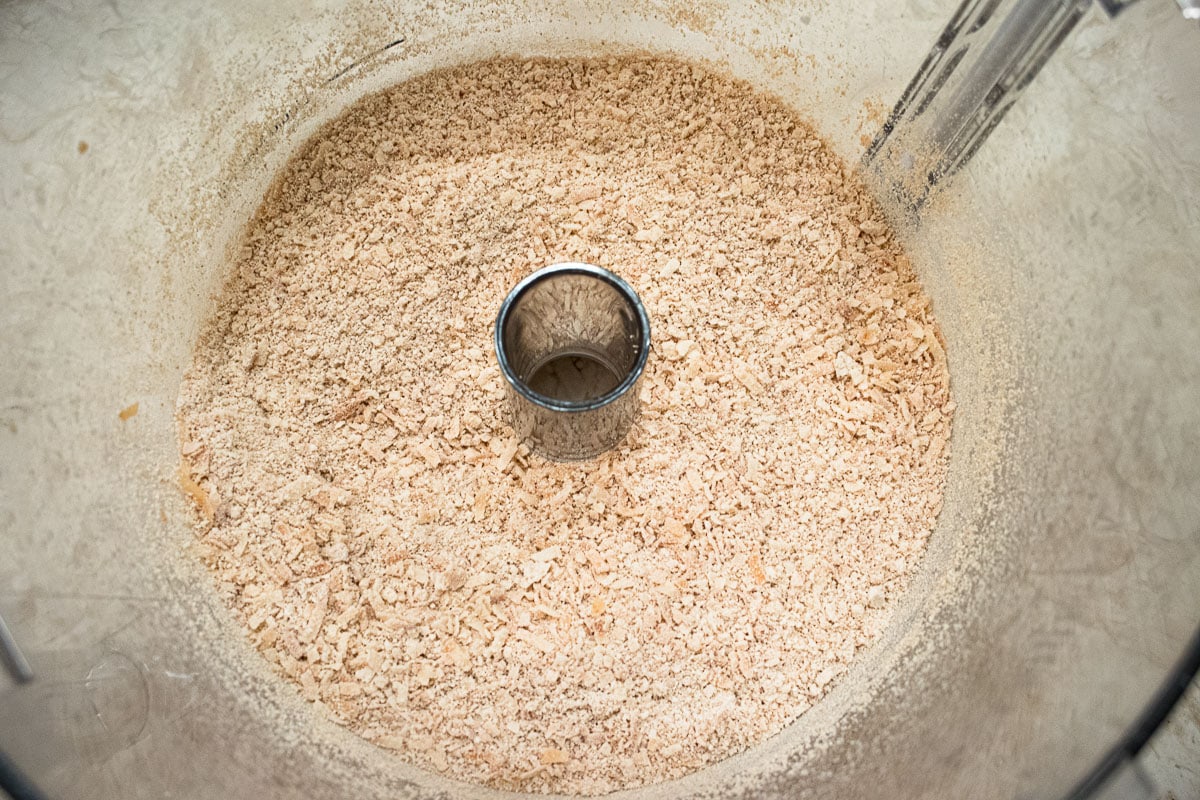
Step 5. Add the toasted coconut to the processor and pulse several times to combine them. Remove to a bowl.
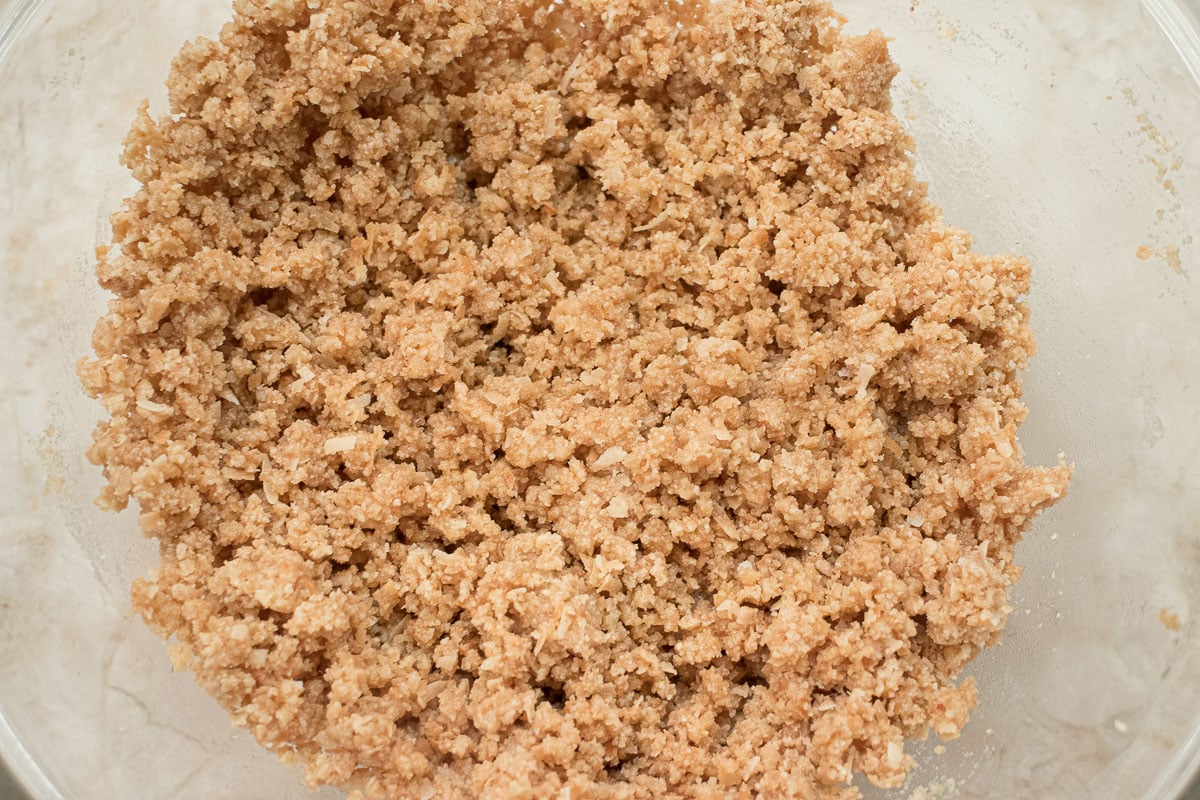
Step 6. Add the melted butter to the crumbs and mix with a fork to form larger crumbs.
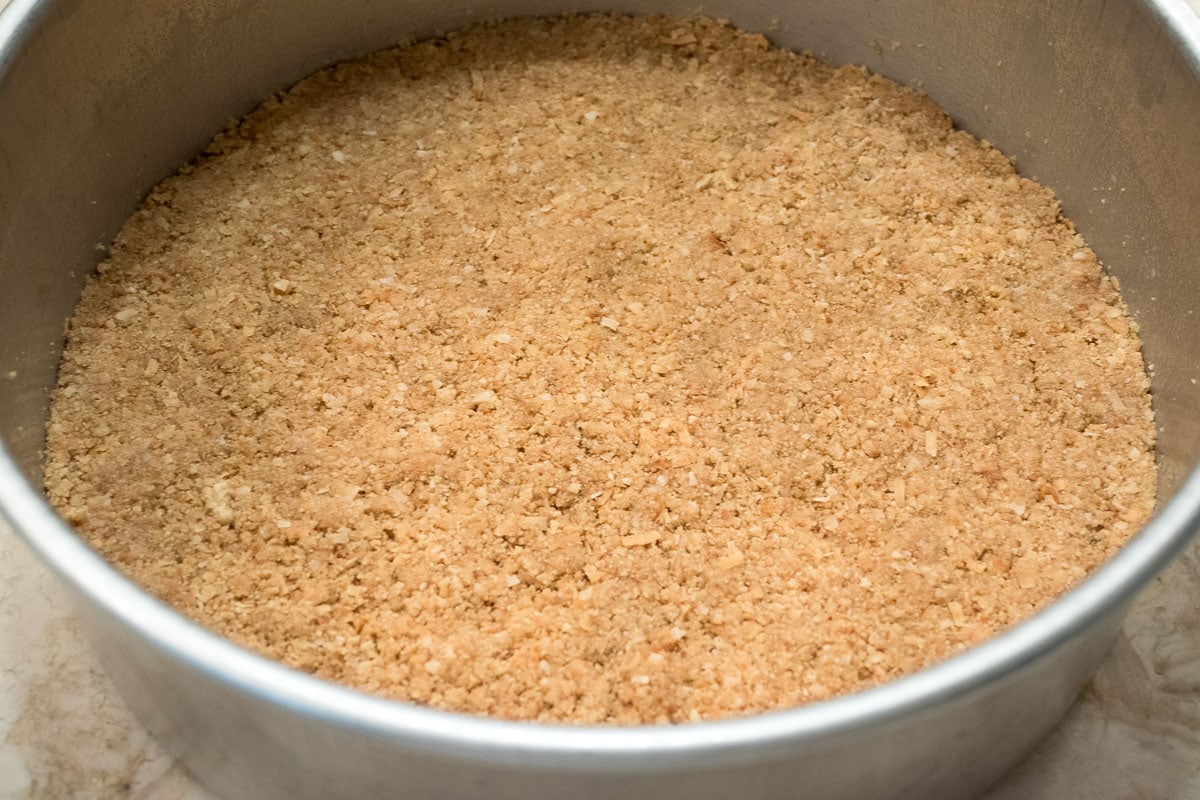
Step 7. Press the crumbs evenly into the bottom of the pan and bake for 10 to 12 minutes until lightly browned.
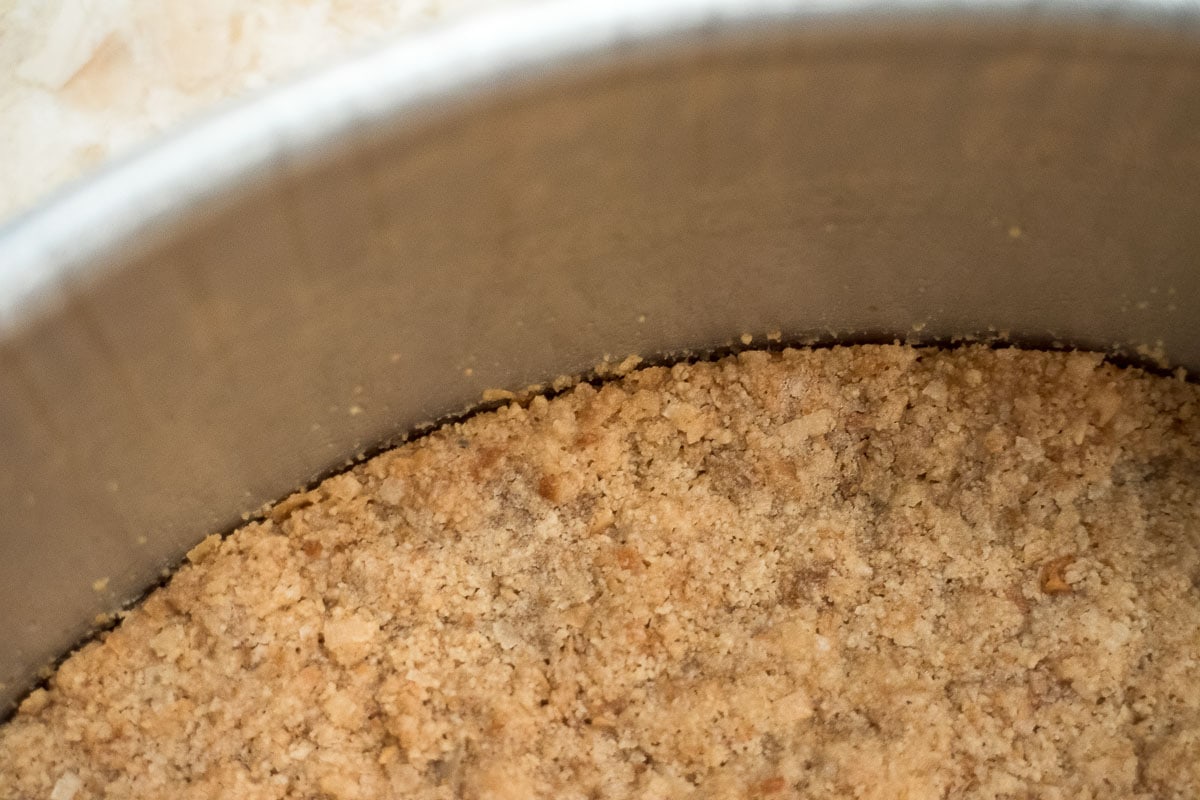
Step 8. The edge of the crust will, most likely, pull away slightly from the pan which can allow the liquid cheesecake to run down it.
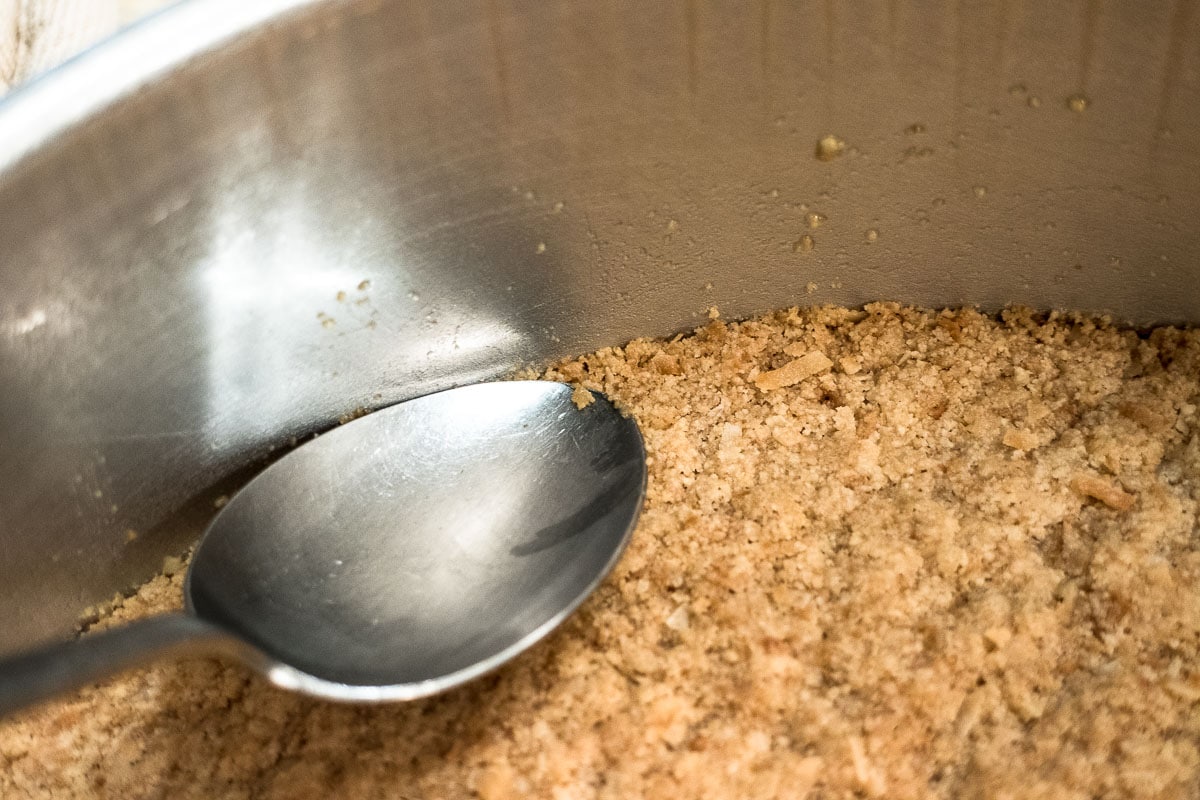
Step 9. Press the crust that has pulled away back to the edge of the pan with the back of a soup spoon. At the bakery, we referred to this as "spooning the crust".
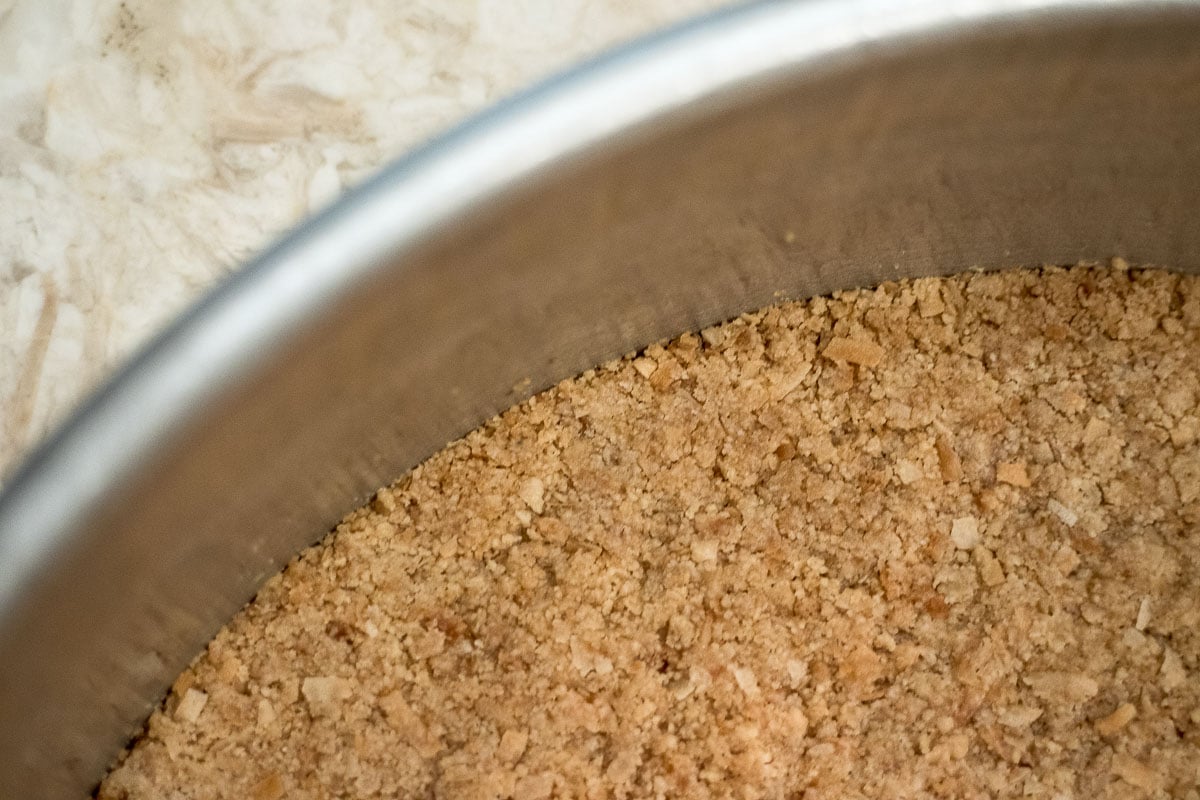
Step 10. The edge is sealed tightly again so no liquid can slip down the opening.
Cheesecake Filling
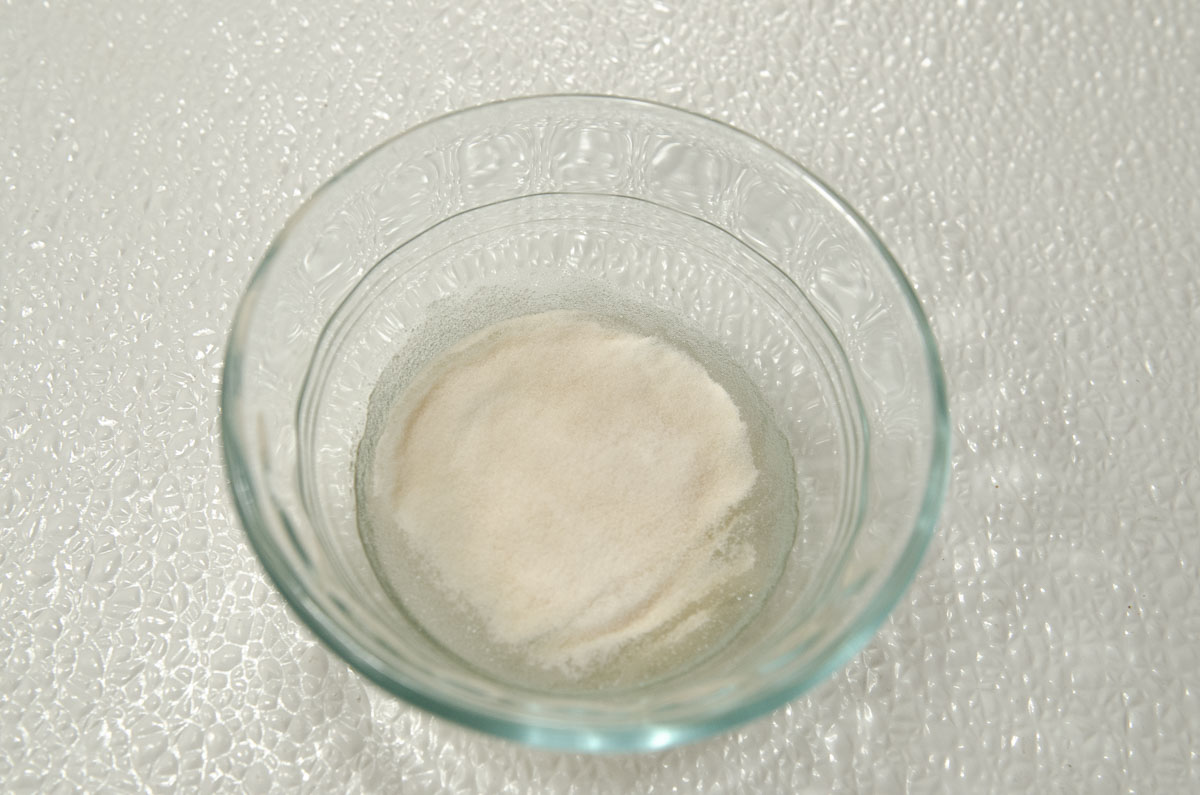
Step 1. Place the gelatin in Malibu rum or water to bloom or soften.
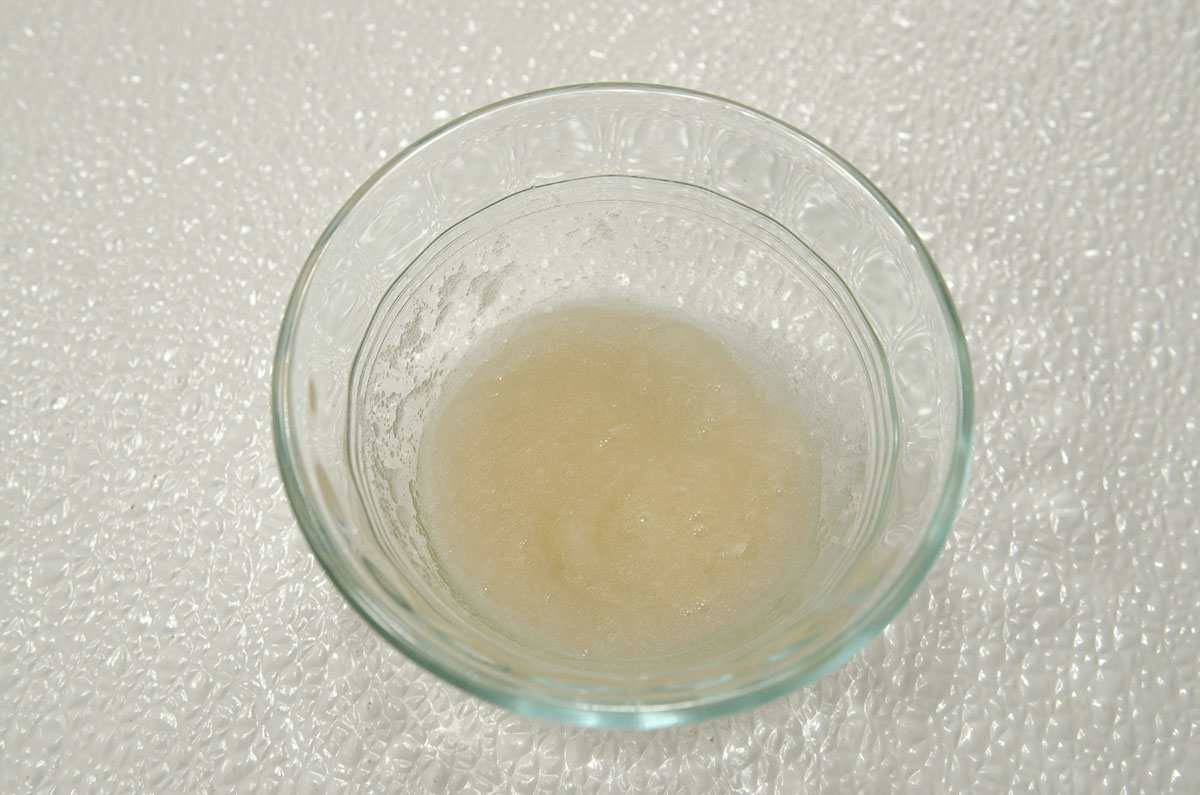
Step 2. Stir immediately to make sure all of the gelatin is wet making a gelatinous blob.
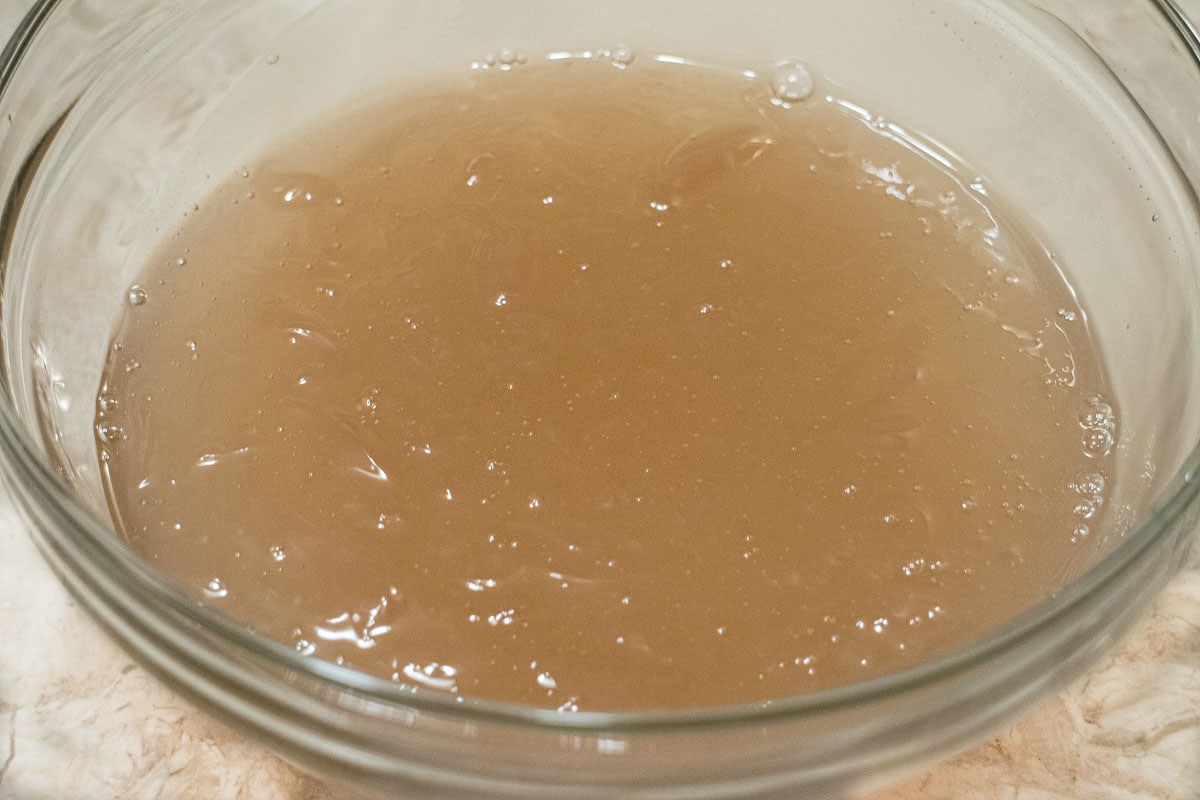
Step 3. Whisk the coco lopez together to make sure it is completely combined. Measure 1 cup.
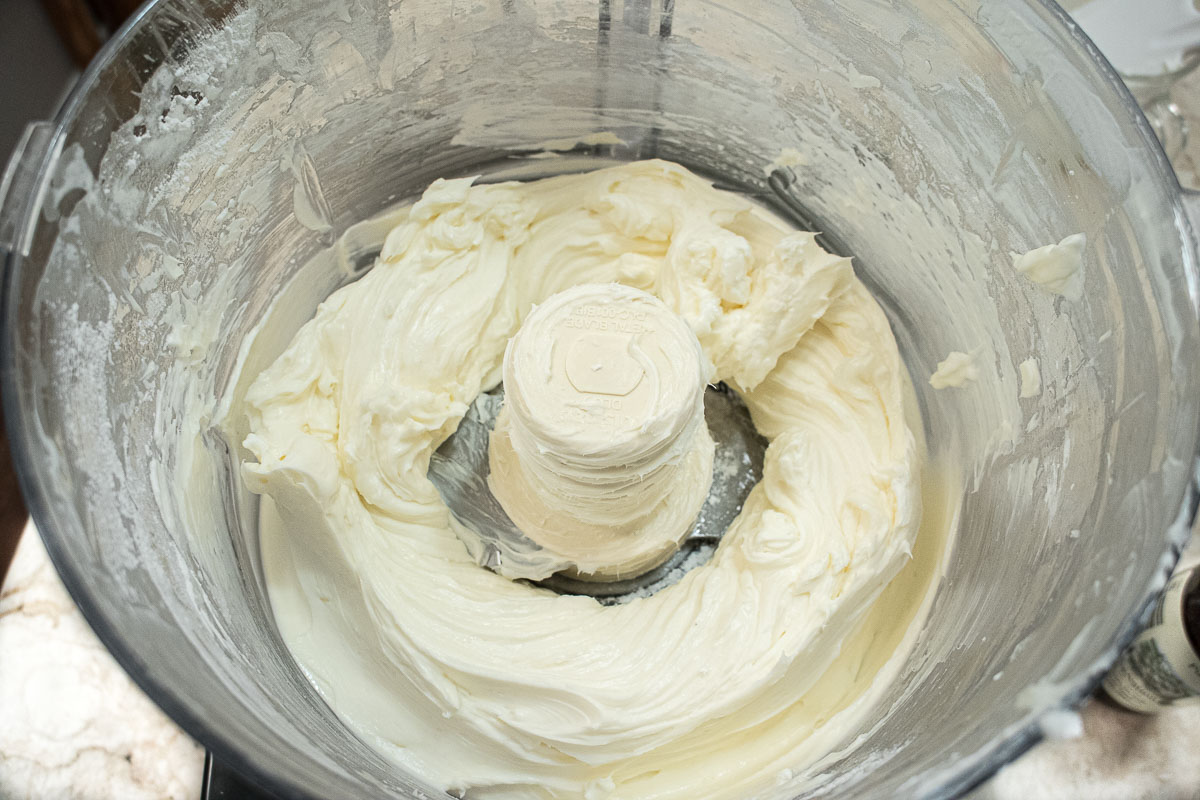
Step 4. Add the cream to the processor bowl and process until whipped and thick. Remove to a large bowl.
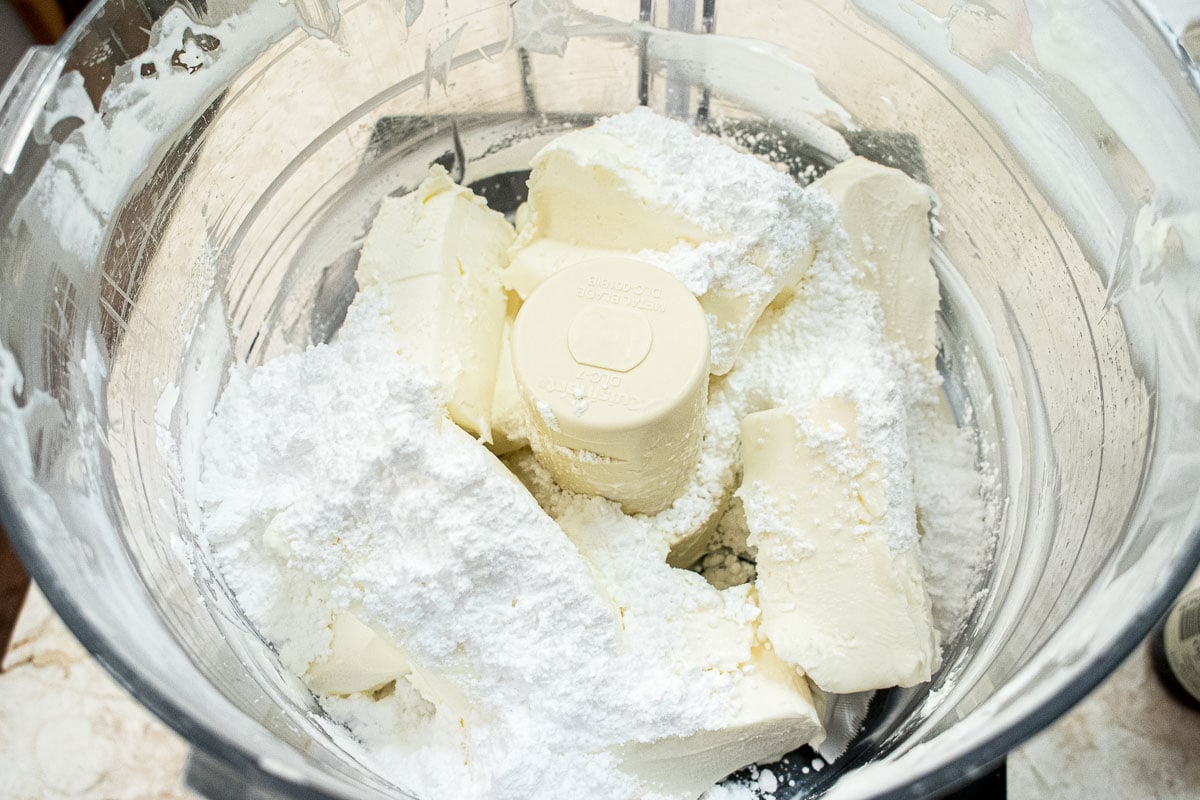
Step 5. Without cleaning the processor bowl, add the cream cheese and powdered sugar. Process until smooth, scraping to make sure there are no lumps left.
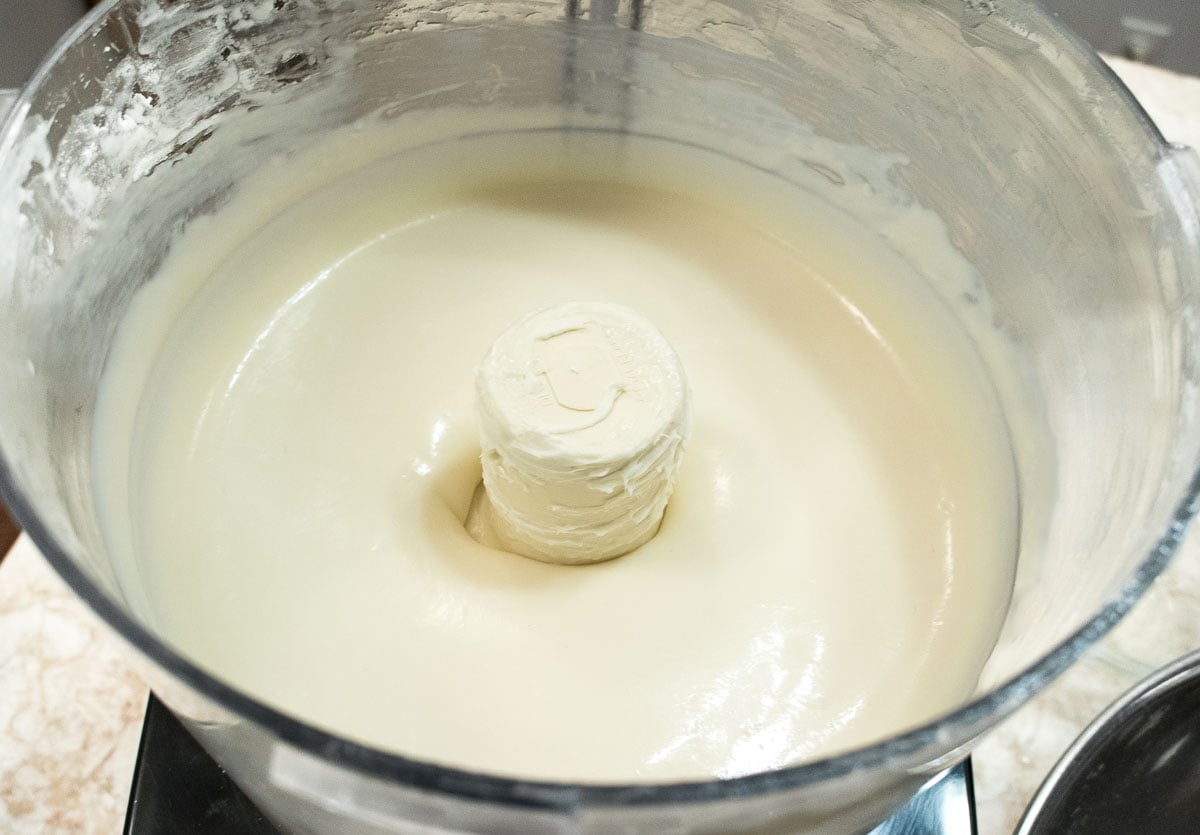
Step 6. Heat the gelatin (either in the water or Malibu rum) in the microwave just long enough to liquify it. Add this, the cream of coconut, and coconut extract. Process until smooth, scraping several times.
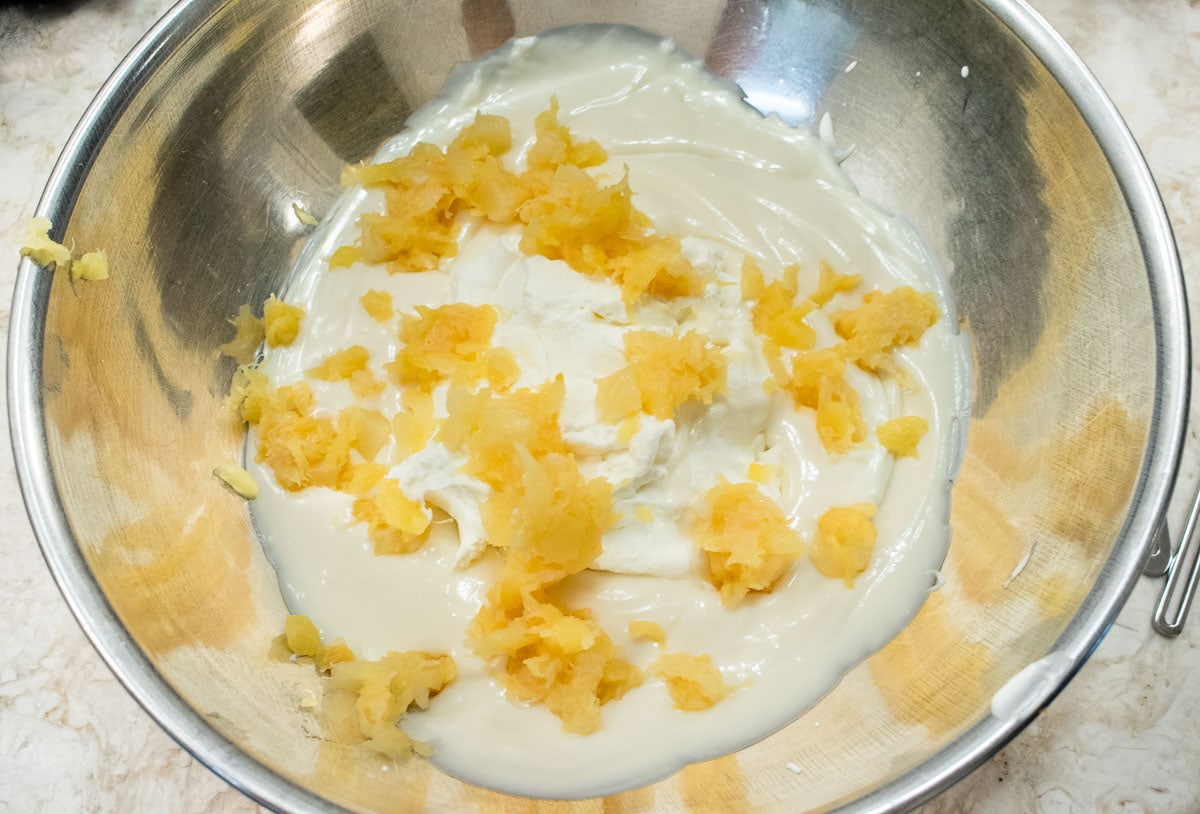
Step 7. Add the cream cheese mixture and pineapple which has been squeezed dry to the whipped cream and fold everything together.
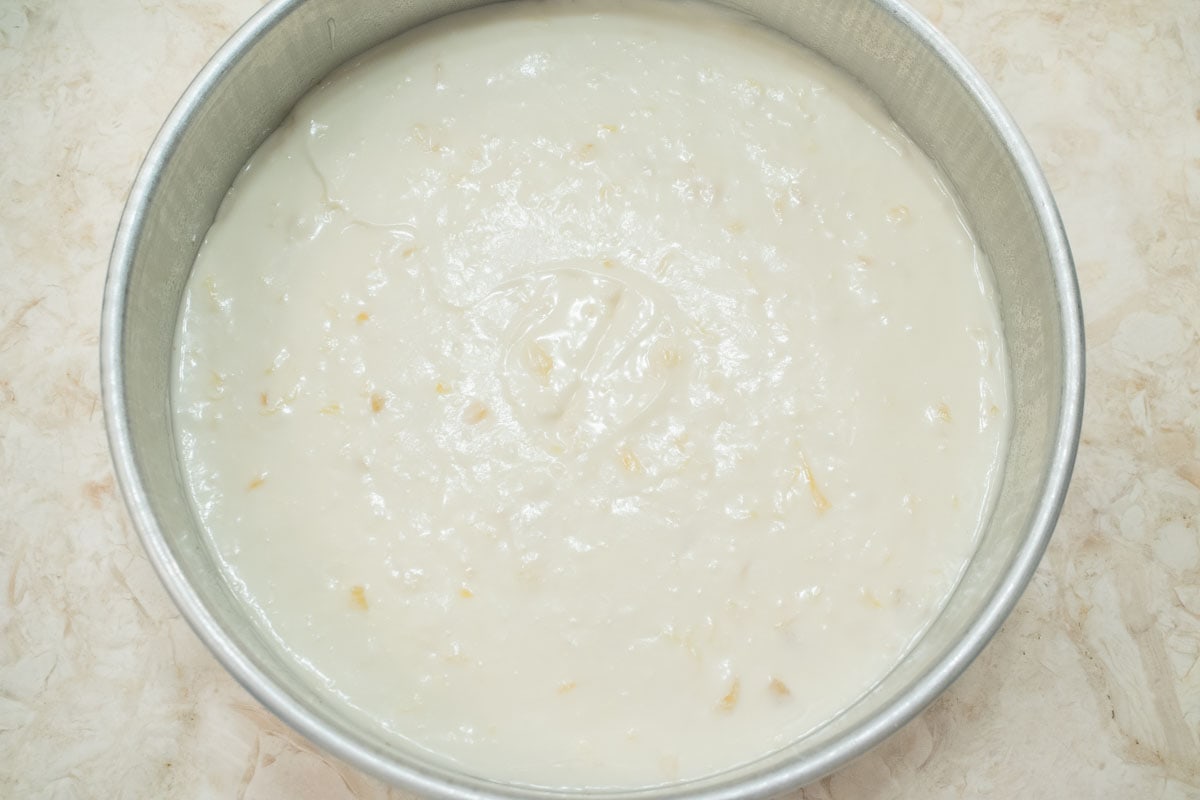
Step 8. Pour the mixture over the coconut-graham cracker crust and refrigerate at least 6 hours or overnight.
Caramelized Pineapple Sauce
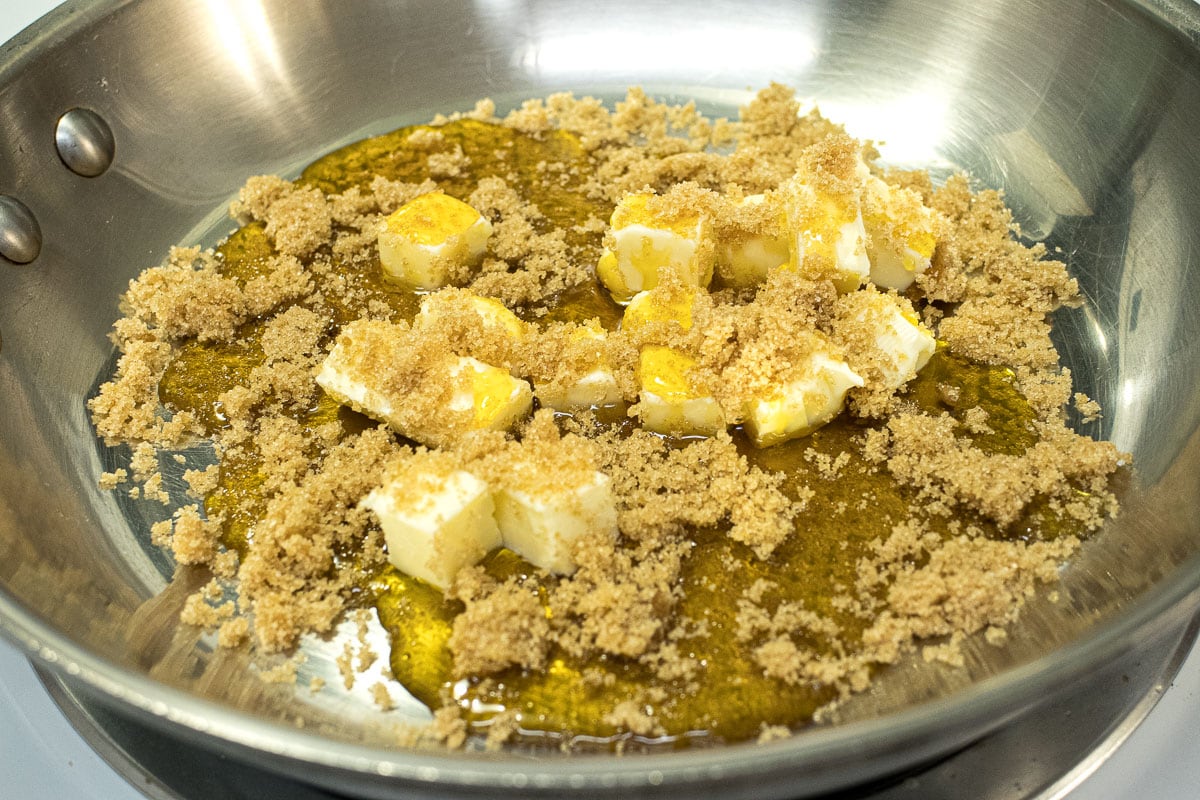
Step 1. Place the butter, brown sugar and golden or corn syrup in a saute pan large enough to hold the pineapple.
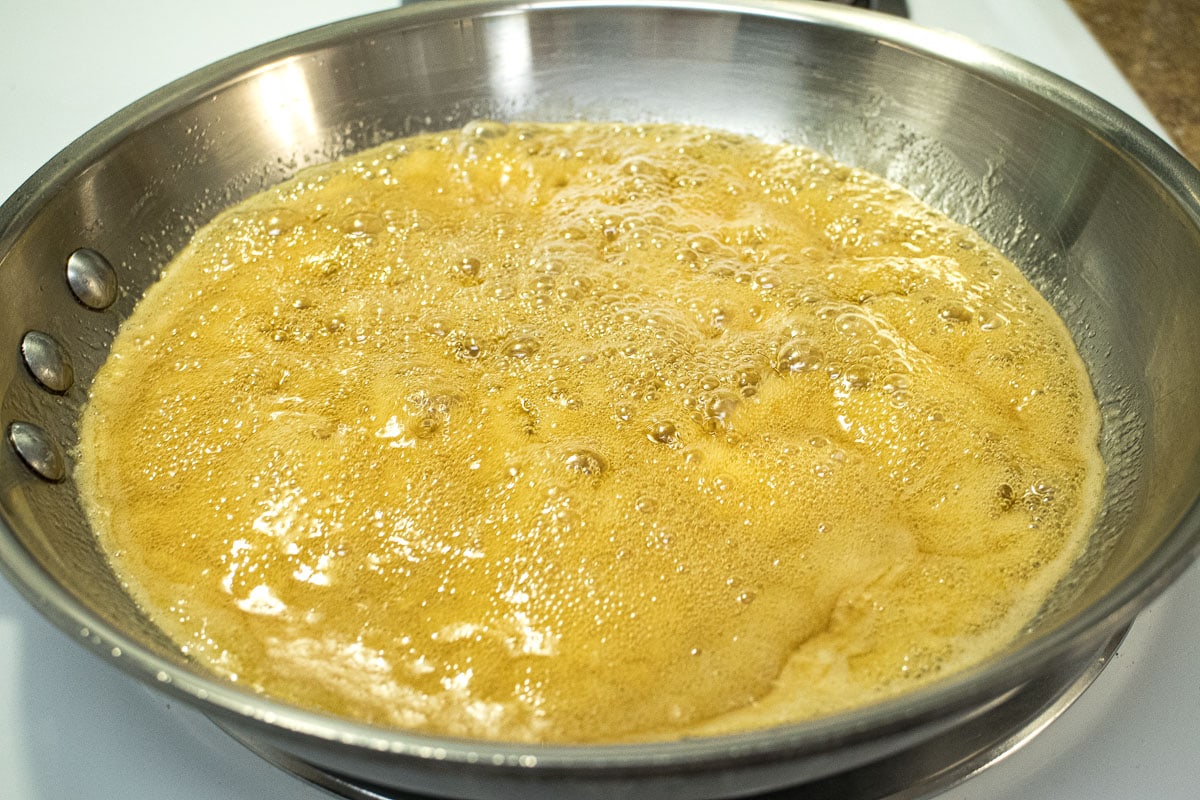
Step 2. Bring the mixture to a rolling boil. Skim the foam from the sauce.
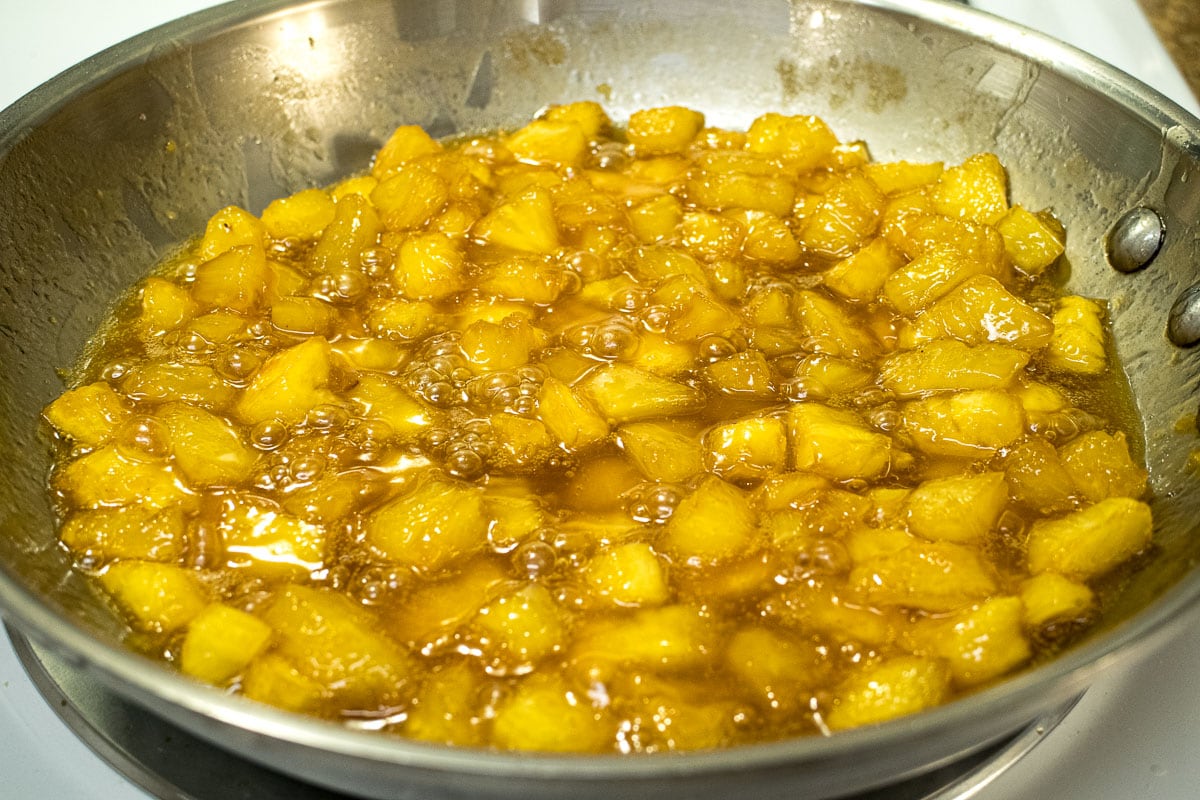
Step 3. Add the fresh pineapple to the syrup and continue cooking at a boil until the sauce reduces and coats the pineapple.
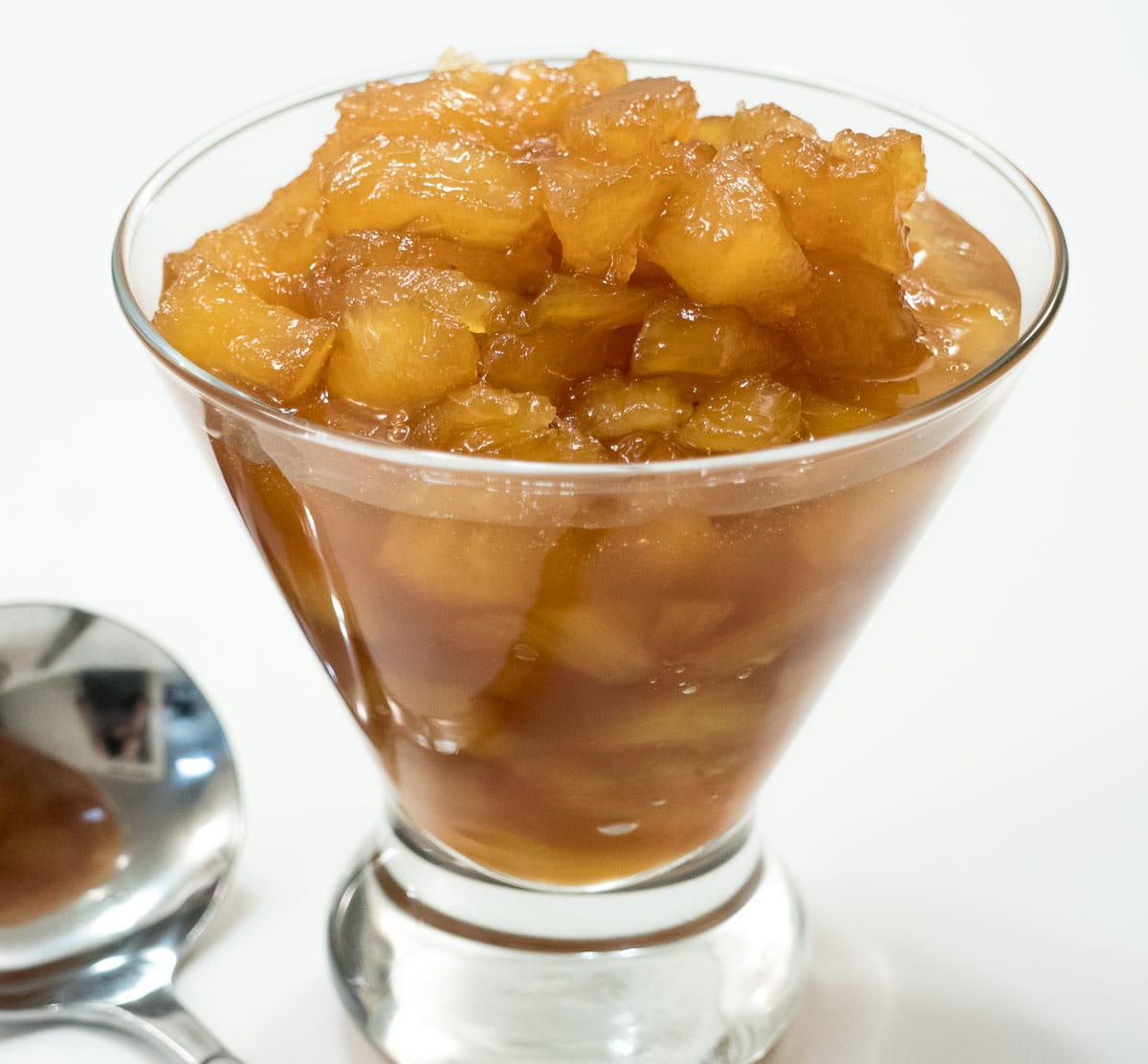
Step 4. Serve slightly warm along side the cheesecake.
Recipe FAQ's
They are two different desserts. The former is denser due to added ingredients such as sour cream and eggs and is usually baked in a water bath. The unbaked cheesecake is usually lighter in texture with fewer ingredients and depends upon gelatin to set it. Neither is better than the other. They are both delicious.
Yes, since either baked or unbaked the cheesecake needs to chill in the refrigerator to firm it up. It should be released after setting up.
There can be several reasons. It could be the recipe. It could be baked too long. Normally, they are taken out of the oven when they are slightly jiggly and then cooled to room temperature before being refrigerated to set up competely. If they are put directly into the refrigerator, they may also crack.
Expert Tips
- When adding gelatin to anything, the mixture to which it is added should be room temperature to ensure it combines smoothly. If a mixture is cold and the gelatin is introduced, it can become stringy and not set up.
- Two kinds of pineapple are used. Fresh pineapple for the sauce and canned crushed pineapple for the filling. Fresh pineapple has an enzyme that prevents gelatin from setting up.
- Under ripened fresh pineapple should be used for the sauce to keep it from becoming mushy when cooked.
- The Malibu Rum can be bought in small airline or single serve bottles in grocery or liquor stores which are perfect for this cake.
- 5 whole graham crackers can be processed to make the crumbs.
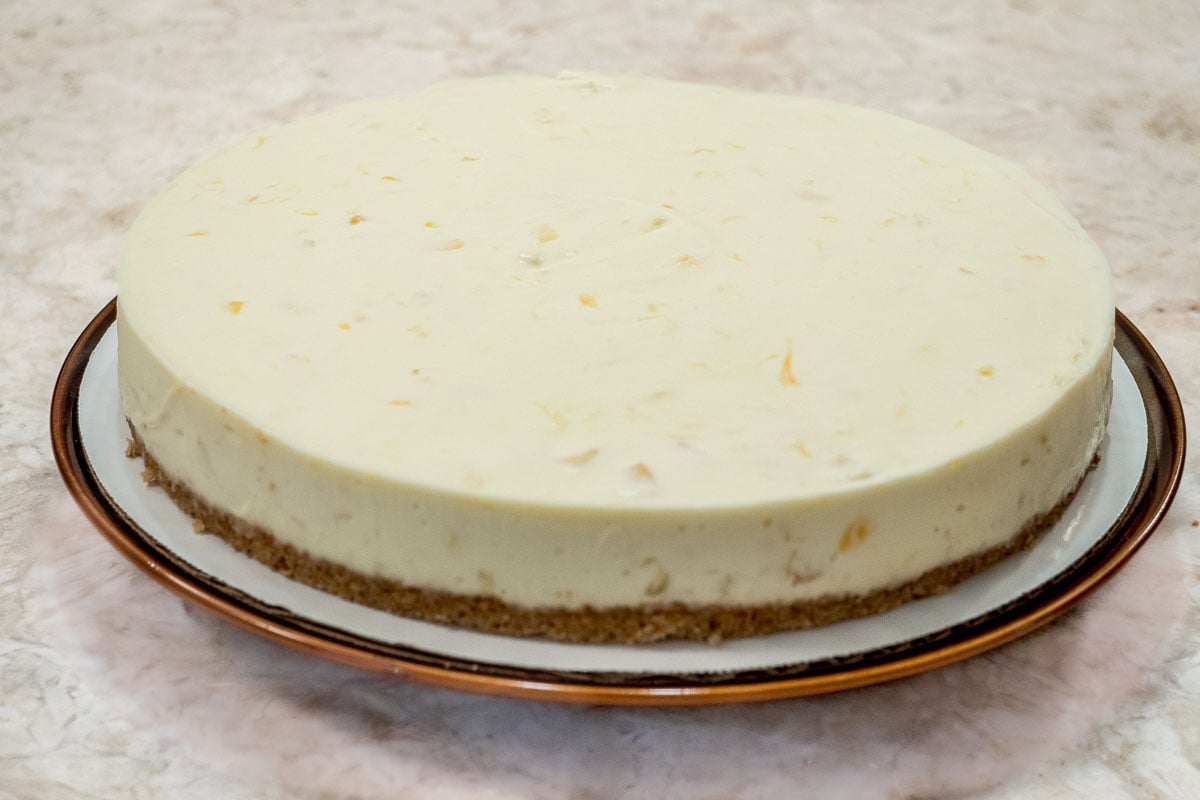
More Inviting Cheesecakes
If you love this Easy Pina Colada No Bake Cheesecake or any other recipe on my website, please please leave a 🌟 star rating in the recipe card and let me know how it went the 📝 comments below. I appreciate you reading this post!
Easy Pina Colada No Bake Cheesecake
Ingredients
Coconut Graham Cracker Crust
- 1 cup unsweetened coconut (40 grams)
- ⅔ cup graham cracker crumbs (85 grams)
- ½ cup powdered sugar (65 grams)
- 6 tablespoons unsalted butter, melted (85 grams)
Cheesecake Filling
- 1 cup cream of coconut
- 1 tablespoon gelatin
- ¼ cup Malibu Rum or water
- 1 cup heavy cream
- 16 oz. cream cheese (454 grams)
- 1 cup powdered sugar (130 grams)
- 2 teaspoons coconut extract
- 8 oz can crushed pineapple
Caramelized Pineapple
- 3 tablespoons unsalted butter (45 grams)
- ⅓ cup golden or corn syrup
- 3 tablespoons brown sugar, packed (25 grams))
- 3 cups fresh pineapple chunks
Instructions
Coconut Graham Cracker Crust
- Preheat the oven to 350°F. Spray a 9x3 inch cheesecake pan (or springform pan) with a non-stick baking release. Set aside.
- Spread the coconut on a baking sheet, making sure to push the eges together so there are no stray pieces of coconut that can burn. Toast for about 5 minutes until medium brown. Stir and toast briefly if needed. Cool.
- If using whole graham crackers, break them into pieces and process them to make crumbs.
- Add the toasted coconut and powdered sugar to the processor bowl and process to make crumbs. Remove to a bowl.
- Add the melted butter to the crumbs and mix with a fork until completely combined. Press evenly into the bottom of the pan.
- Bake for 10 to 12 minutes until lightly browned. If the crust has pulled away from the side of the pan, using a soup spoon, press it against the side of the pan so there is no gap. Set aside.
Cheesecake Filling
- Have all the ingredients except the cream at room temperature.
- If you don't wish to use alcohol, add the gelatin to ¼ cup water and increase the coconut extract to 1 tablespoon.
- Pour the contents of the cream of coconut into a bowl and whisk to combine completely. Measure 1 cup for the recipe.
- Stir the gelatin into the Malibu rum or water. Set aside.
- Whip the cream in the processor fitted with the S blade until fairly stiff. Remove to a large bowl.
- Without cleaning the processor bowl, add the cream cheese and powdered sugar. Process until smooth, scraping down as necessary.
- Micowave the gelatin briefly to liquify it completely. Pour this along with the cream of coconut and coconut extract into the processor. Process to mix.
- Pour the contents of the processor over the whipped cream in the bowl.. Squeeze all of the liquid from the crushed pineapple and add it to the bowl. Fold all together and pour it over the crust. Smooth it out. Refrigerate to set, about 6 hours or overnight.
- Release by heating the sides of the pan with a hair dryer on high. See my Lemonade Cake with Blueberry Sauce. for complete instructions and photos. Keep the cake refrigerated until serving.
Caramelized Pineapple Sauce
- Place the butter, golden syrup or corn syrup and brown sugar in a skillet large enough to hold the pineapple.
- Bring the mixture to a rolling boil. Skim off the foam. Add the pineapple chunks and return to a boil. Continue to cook until the sauces reduces and coats the pineapple.
- Serve warm over the cheesecake. The sauce can be made ahead and refrigerated for up to a week. Warm when serving.
Notes
Nutrition
Hot Hot Fudge Sauce
This shiny, luxurious, midnight dark Hot Hot Fudge Sauce is just in time to make the easiest dessert around list. While the basic hot fudge sauce is always welcome, I upped the ante by adding a touch of coffee and cayenne pepper, two ingredients that always give a boost to chocolate. I almost forgot to tell you this can be made in about 20 minutes including measuring, cooking and clean up.
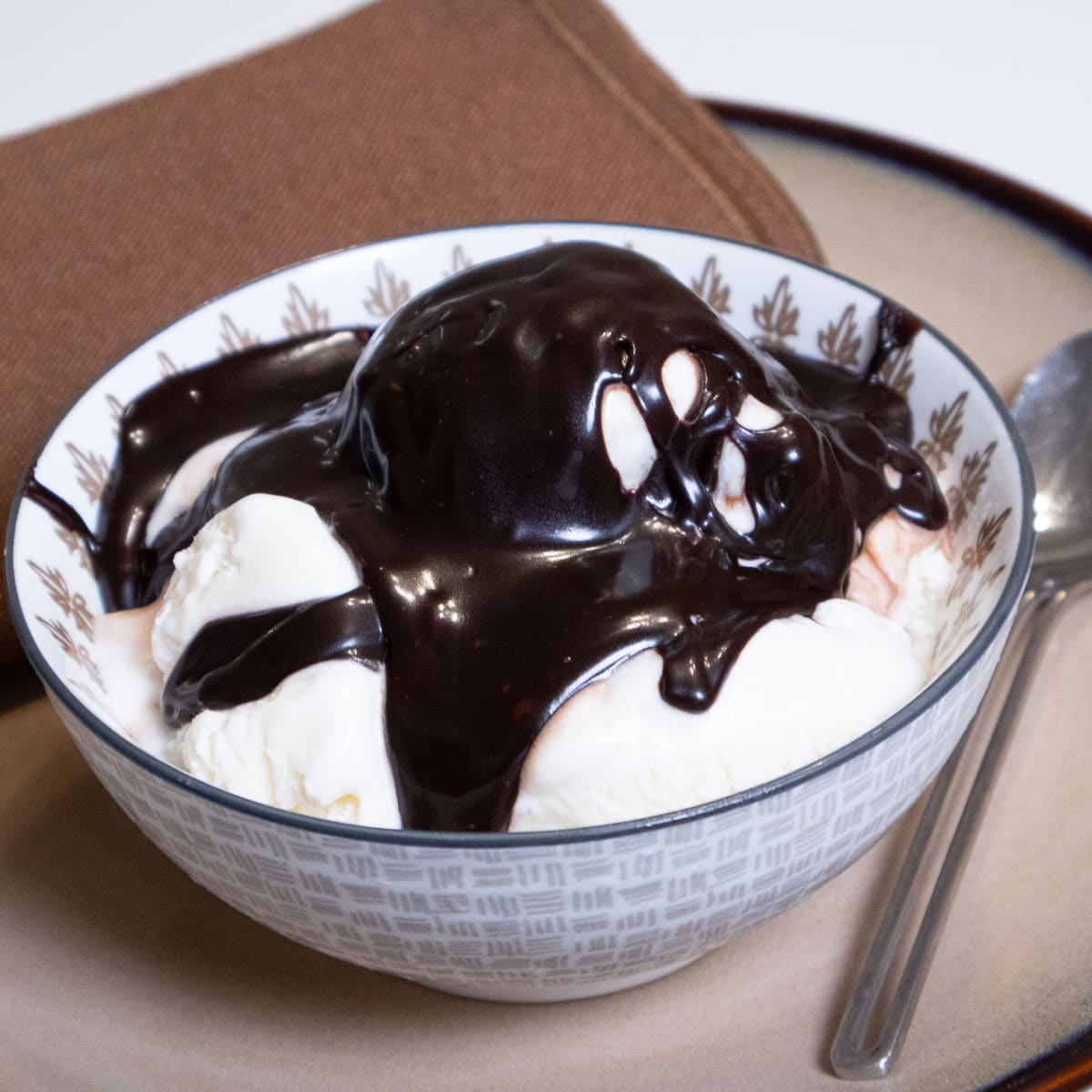
The coffee is subtle and the cayenne is not noticeable until you swallow. Then a tingle hits the back of your mouth. Of course if you are into more heat, double the amount.
And don't stop at serving it with ice cream. Think, chocolate fondue with fresh fruit or cubes of cake, as a topping for a brownie sundae, dress up a plain pound cake with this liquid black gold sauce.....or do what I do, eat a spoonful all by itself. When cold or room temperature, it's like the best chocolate truffle you'll ever eat.
There are other recipes on my site that use pepper of some kind to add flavor and a surprise. Chocolate Spice Olive Oil Biscotti uses coffee. black pepper and cayenne to add a kick to this cookie, Strawberry Balsamic Black Pepper Granita is another really quick summer pick up as well as Strawberry Balsamic Jam.
[feast_advanced_jump_to]Why You'll Want to Make This Sauce
- Just a few ingredients and minutes of your time for the best sauce around.
- It's thick like caramel and richer than chocolate sauce.
- It tastes exactly like liquid fudge.
- It's the perfect sauce for vanilla ice cream, topped with whipped cream.
Recipe Ingredients
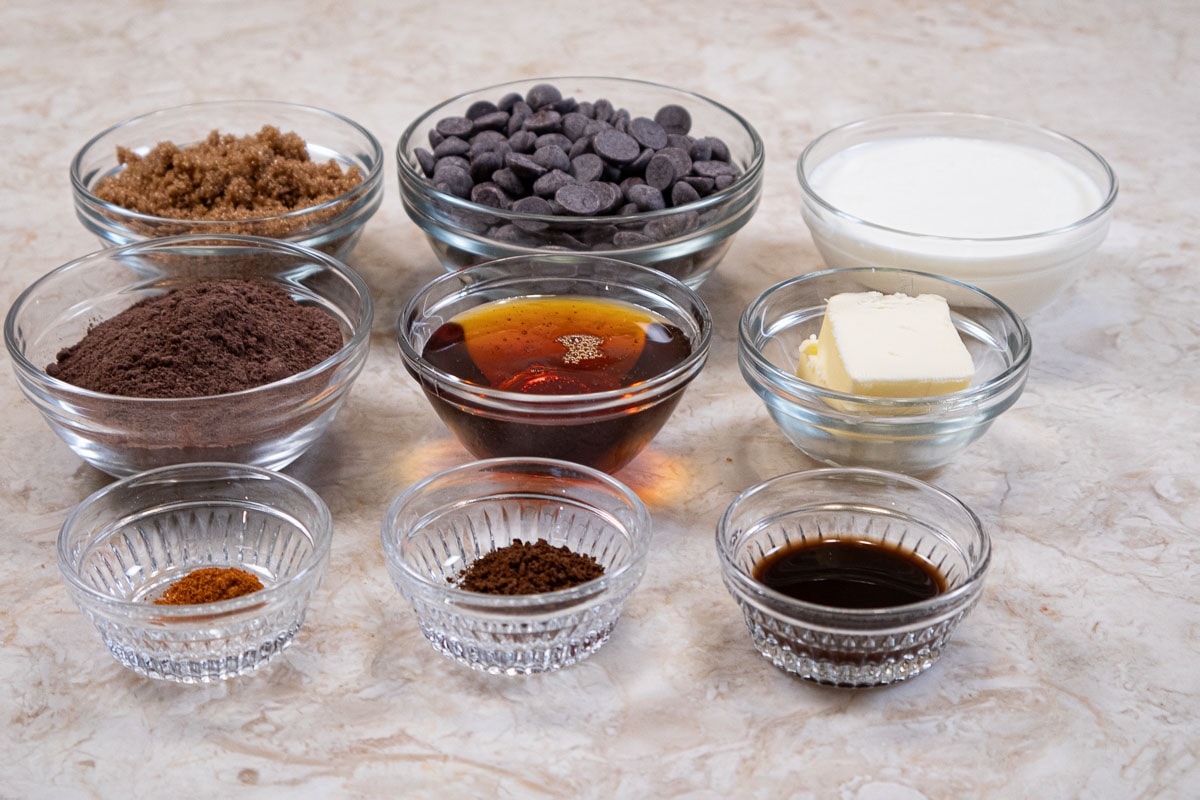
FRONT ROW: Cayenne pepper, instant coffee, vanilla extract
MIDDLE ROW: Dutch Cocoa, Lyle's Golden syrup, unsalted butter
BACK ROW: Brown sugar, semisweet chocolate, heavy cream
Key Ingredients
Brown Sugar is used for depth of flavor. Granulated can be substituted in the same amount if desired.
Lyle's Golden Syrup from England has so much more flavor that corn syrup. It imparts a carmel flavor and is one of my favorite ingredients. It can often be found in shops that sell European ingredients and online. It comes in squeeze bottles or tins.
Dutch Cocoa is preferred for the dark, rich flavor is brings. The cocoa helps thicken the sauce. It will not be it's typical really thick sauce without it.
Heavy Cream is best. I've seen the recipes using condensed milk or evaporated milk but I encourage you to use heavy cream for the cleanest most chocolaty, fudgey taste. It makes all the difference.
Callebaut SemiSweet Callets #811 is my chocolate of choice. Although they look like chocolate chips they are pure chocolate.
Using McCormick's Imitation Vanilla Extract is perfect here. An expensive pure vanilla will be a waste here due to the intensity of the final taste. For an in depth look at vanilla in all it's forms see my post The Making of Vanilla.
Be sure to see the recipe card below for the exact ingredients & instructions.
Step by Step Instructions

Step 1. Place all the ingredients except the vanilla in a 2 quart saucepan. Step 2. Place over low heat and, stirring constantly, bring the ingredients together. Step 3. Raise the heat to medium low, bring the hot fudge sauce to a boil, stirring all the time. Boil for 3 minutes. It will be very thick. Stir in the vanilla and pour it into a container. Cool completely, cover and refrigerate where it will keep for weeks.
Recipe FAQS
It is thicker and much richer. At room temperature it will be firm. It needs to be warmed to use.
Yes, but pure chocolate yields the best taste.
No, McCormick's Imitation vanilla is perfect here. The expense of the pure vanilla will be lost in the intensity of the finished sauce.
Expert Tips
- The most important thing is to keep the heat on low and keep stirring. There is a lot of chocolate and cocoa which can easily burn if left unattended. Be sure to stir into the edges of the pan.
- Once everything is in liquid form, the heat can be raised to medium low to get it to boil.
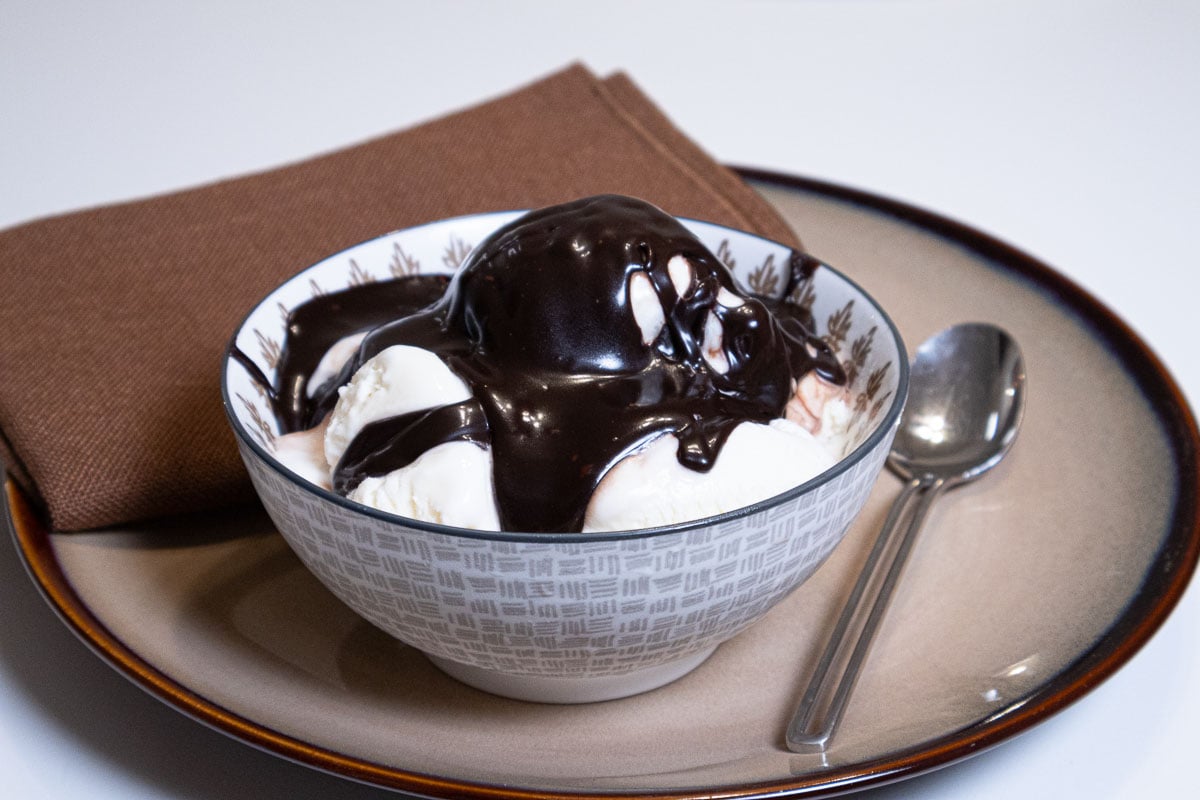
A Few Summer Desserts
If you love this Hot Hot Fudge Sauce, It would be hugely helpful and so appreciated it if you would take a moment to leave a rating below. Thank you.
Hot Hot Fudge Sauce
Ingredients
- ½ cup heavy cream
- ¼ cup Lyle's Golden Syrup or corn syrup
- ⅓ cup dark brown sugar (65 grams)
- ¼ cup Dutch cocoa (22 grams)
- 5 ounces semisweet chocoalte (140 grams)
- 2 tablespoons unsalted butter (30 grams)
- ½ teaspoon instant coffee
- ⅛ teaspoon cayenne pepper
- 1 teaspoon vanilla extract
Instructions
- Combine all but the vanilla in a 2 quart saucepan. Place over medium low heat and, stirring constantly, bring to a boil. Boil for 3 minutes.
- Remove from the heat and stir in the vanilla. Cool to room temperature.
- Store in the refrigerator for a couple of weeks.
- To use: Microwave on half power just until pourable, stirring often. Use as desired.
Notes
- The most important thing is to keep the heat on low and keep stirring. There is a lot of chocolate and cocoa which can easily burn if left unattended. Be sure to stir into the edges of the pan.
- Once everything is in liquid form, the heat can be raised to medium low to get it to boil.
- Brown Sugar is used for depth of flavor. Granulated can be substituted in the same amount if desired.
- Lyle's Golden Syrup from England has so much more flavor that corn syrup. It imparts a carmel flavor and is one of my favorite ingredients. It can often be found in shops that sell European ingredients and online. It comes in squeeze bottles or tins. Regular Corn syrup can be substituted.
- Dutch Cocoa is preferred for the dark, rich flavor is brings. The cocoa helps thicken the sauce. It will not be it's typical really thick sauce without it. Natural cocoa can be subbed.
- Heavy Cream is best. I've seen the recipes using condensed milk or evaporated milk but I encourage you to use heavy cream for the cleanest most chocolaty, fudgey taste. It makes all the difference.
- Callebaut SemiSweet Callets #811 is my chocolate of choice. Although they look like chocolate chips they are pure chocolate.
- Using McCormick's Imitation Vanilla Extract is perfect here. An expensive pure vanilla will be a waste due to the intensity of the final taste. For an in depth look at vanilla in all it's forms see my post The Making of Vanilla.
Nutrition
Blueberry Crumb Muffins
These Blueberry Crumb Muffins are topped with a Brown Sugar Almond Crumb that make them irresistible. Tender cake-like muffins, loaded with blueberries and crumbs, they are easily one of the best muffins you'll ever make and one of the easiest.
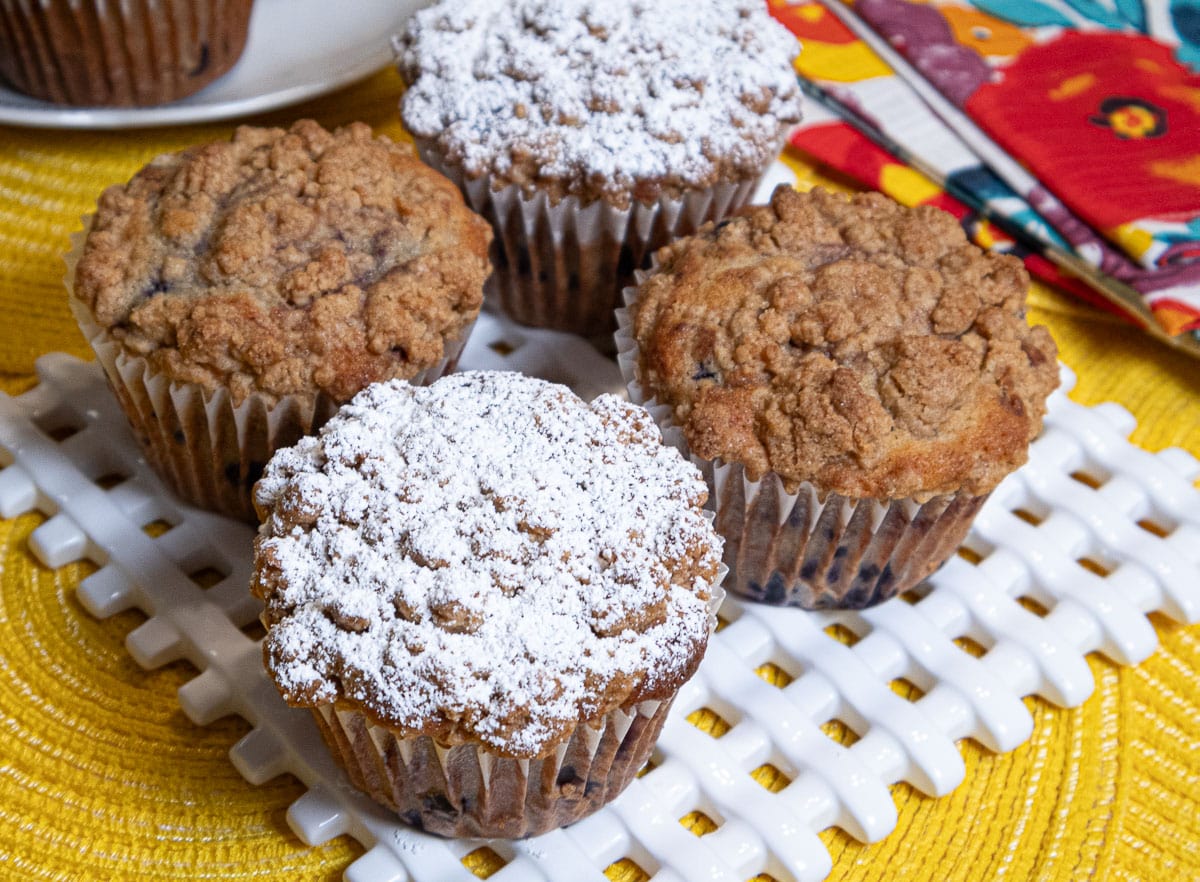
There are two types of blueberries, each being high in antioxidents: Wild and cultivated. The wild blueberries flourish by themselves and survive high in the glacial soils of Maine and Eastern Canada. They are about half the size of the cultivated ones. They are mostly sold frozen. I was lucky enough to find them at Sam's recently and snatched them up on sight. They are my preferred blueberry.
Cultivated blueberries are bred, planted and harvested around the world. They are sold fresh and frozen and are about twice as big as the wild ones.
In any case, the blueberries should be used frozen for ease of folding in as well as avoiding that dreaded gray look when baked.
Other Blueberry recipes for your enjoyment include: An easy Blueberry Crumb Coffee Cake, an intensely flavored Lemon Blueberry Cake, and a surprise dessert the Blueberry Lemon Pizza in a Brioche Crust.
[feast_advanced_jump_to]Why You Want to Make this Recipe
- It's super simple to make and will have you out of the kitchen in no time.
- Most of the ingredients can probably be found in your pantry.
- They are packed with flavor and taste incredible.
Recipe Ingredients
Brown Sugar Almond Crumble
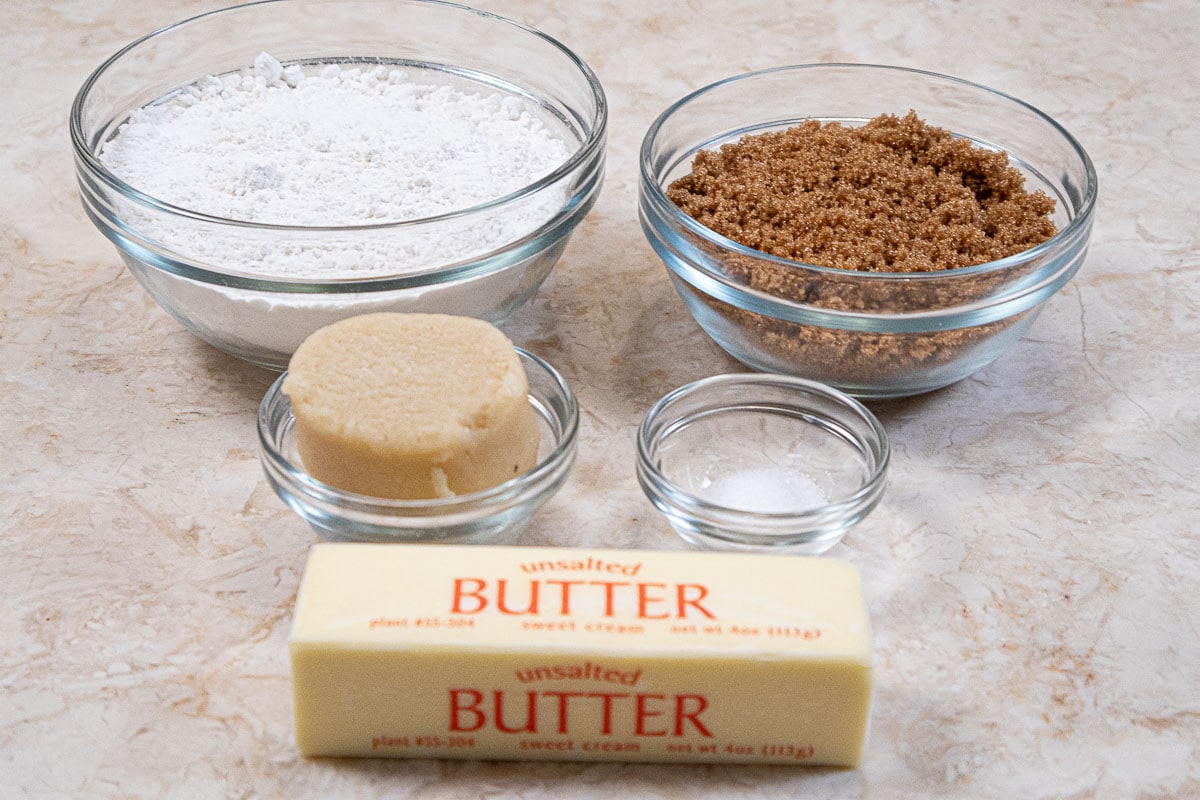
FRONT ROW: Unsalted butter
MIDDLE ROW: Almond paste, salt
BACK ROW: Cake Flour, Brown Sugar
Blueberry Muffins
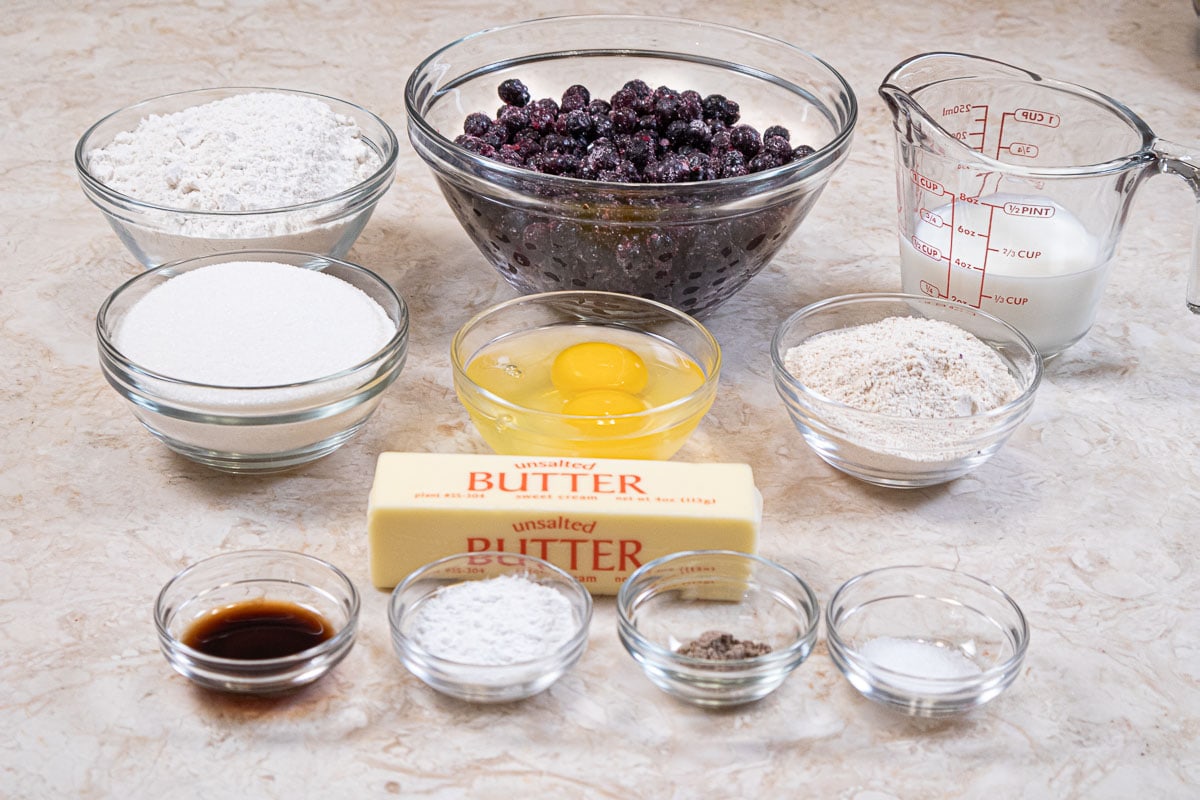
FRONT ROW: Vanilla, baking powder, cardamom, salt
SECOND ROW: Unsalted butter
THIRD ROW: Granulated sugar, eggs, white whole wheat flour
BACK ROW: All-purpose flour, blueberries, milk
- I use cake flour for the crumbs as they make a softer, more tender crumb. If using all-purpose flour, the measurement becomes 1 ⅓ cups.
- An easily made Almond Paste can be made in a jiffy. There are two ways of making it. Either one is fine for this recipe.
- I used a bit of white whole wheat flour to add to the taste of the muffins. Regular whole wheat flour, with its stronger taste, can be substituted. Additionally, 240 grams or 1 ¾ cups of all-purpose flour can be used omitting the whole wheat flour.
- I prefer dark brown sugar for this recipe for its more robust taste.
Be sure the see the recipe card below for the exact ingredients and instructions.
Step by Step Photos
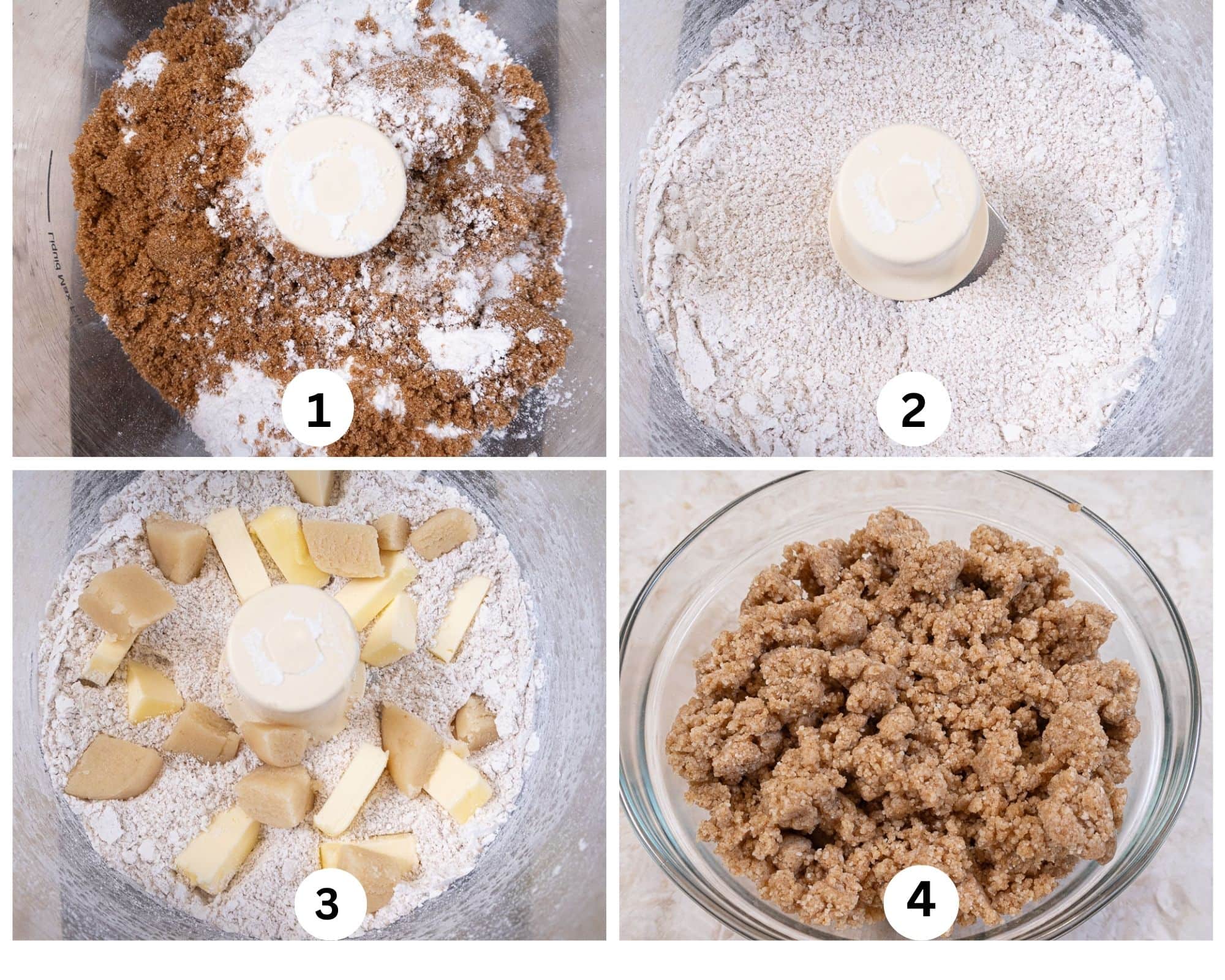
Step 1. Place the brown sugar, cake flour and salt in the processor. Step 2. Process briefly to mix. Step 3. Cut the butter and almond paste into small pieces and place over the dry ingredients. Step 4. Using long pulses at the start and short pulses as it comes together in crumbs, process until the crumbs form. So not over process or it will form a paste. Refrigerate while making the muffins.
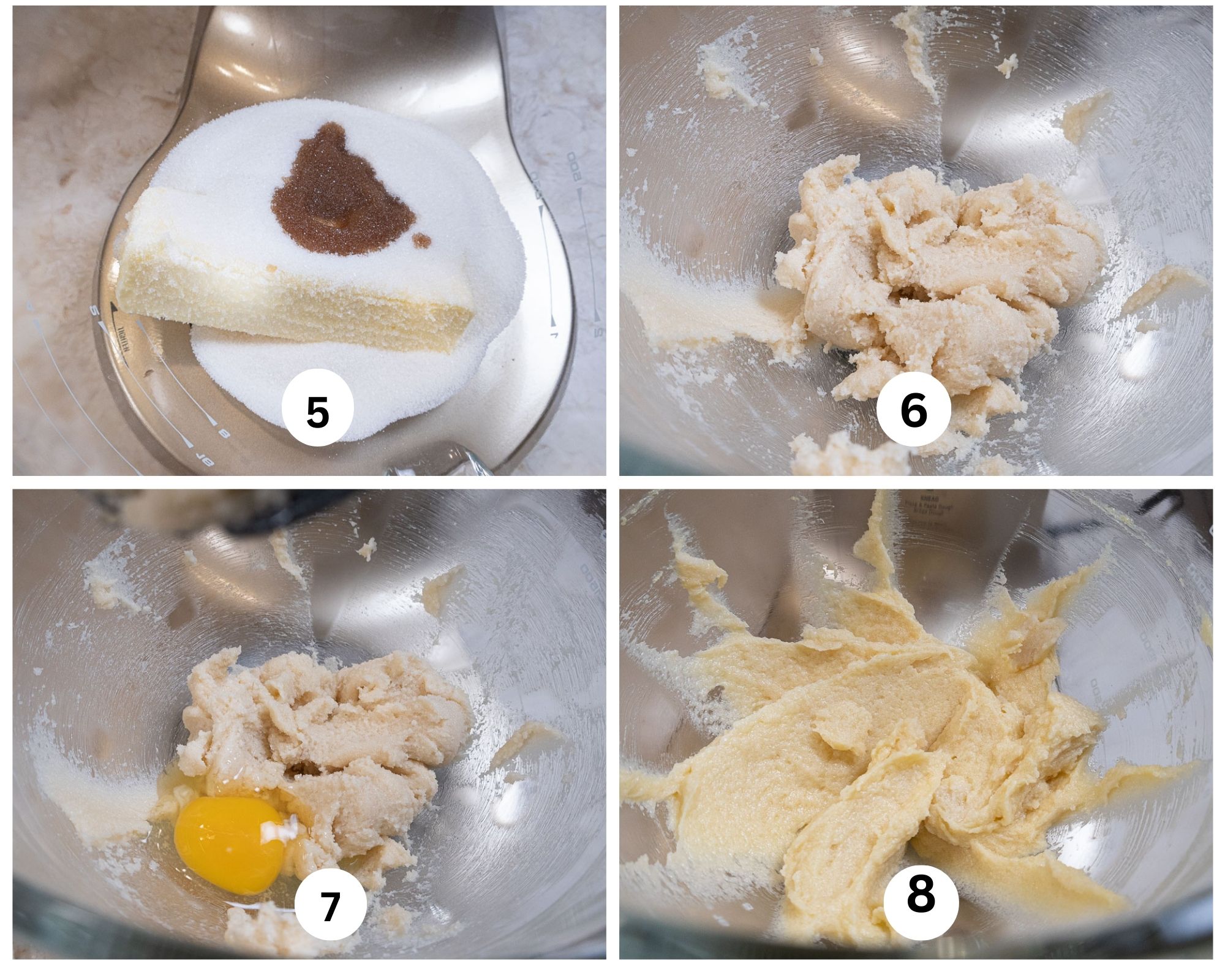
Step 5. Add the butter, sugar and vanilla to a mixing bowl. Step 6. Mix until completely blended. It will not be light or fluffy. Mix 7. Add the first egg. Step 8. Beat on medium until mixed.
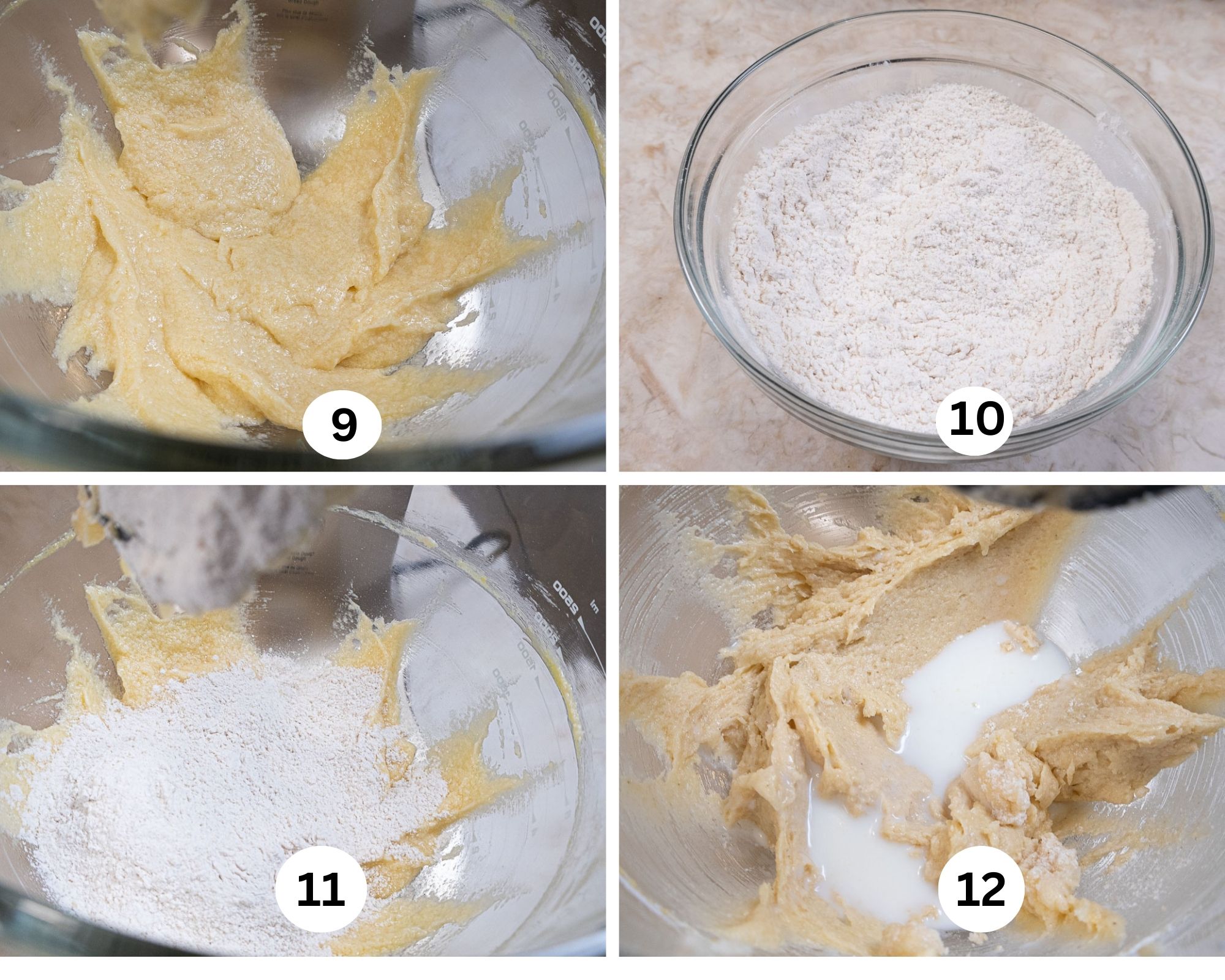
Step 9. After adding the second egg the batter, most likely, will be curdled. See my post How to Avoid Curdled Cake Batters for more information. Step 10. Whisk together the dry ingredients. Step 11. Starting and ending with the flour, alternate the flour.... Step 12. ...and milk, beating each time to combine on low. Three additions of flour and 2 of milk work well here. Scrape often.

Step 13. Beat the batter on low until mixed. Step 14. Remove the bowl from the mixer and fold in the frozen blueberries. Step 15. I made these in Texas muffin cups and dropped them with a #8 disher/scooper, about ½ cup each. Because them came out rounded, I flattened them with a spoon. Step 16. Apply as much crumbs as you can, pressing then into the batter. Bake as directed. Cool in the pans for 5 to 10 minutes and then remove them to a cooling rack to prevent them from sweating in the pans as they cool.
Baked Crumb Topping
To bake any leftover crumbs please see my post on Crumb Topping. These are perfect over ice cream, or anywhere a crumb topping is needed but baked first.
Recipe FAQS
They are loaded with antioxidents.
Over mixing can make a tough muffin. If using a mixer, it is best to lower the speed of the mixer when adding the flour.
These certainly can for up to 3 months. Freeze them, then place in freezer bags or wrap individually in foil. Thaw at room temperature. Freshen them by placing in a 350°F oven for about 10 minutes after thawing. They taste just baked.
Expert Tips
- Use frozen blueberries for a more attractive baked muffin.
- Add them while frozen. Do not add them to the mixer.
- Use wild blueberries if possible. There will be twice as many berries as those found in the produce department or most frozen blueberries. They are usually sweeter.
- The muffins can be be made any size. Fill to about ¾ of the cup and add the crumbs. Just adjust the baking time.
- Using disher/scoopers help make muffins the same size.
- Home made almond paste is easy to make and is perfect for the Brown Sugar Almond Crumbs.
- Dark brown sugar yields a deeper flavored crumb.
- Cake flour is used in the crumbs for a lighter crumb.
- Lining the muffin tins with paper liners helps keep the crumbs in place.
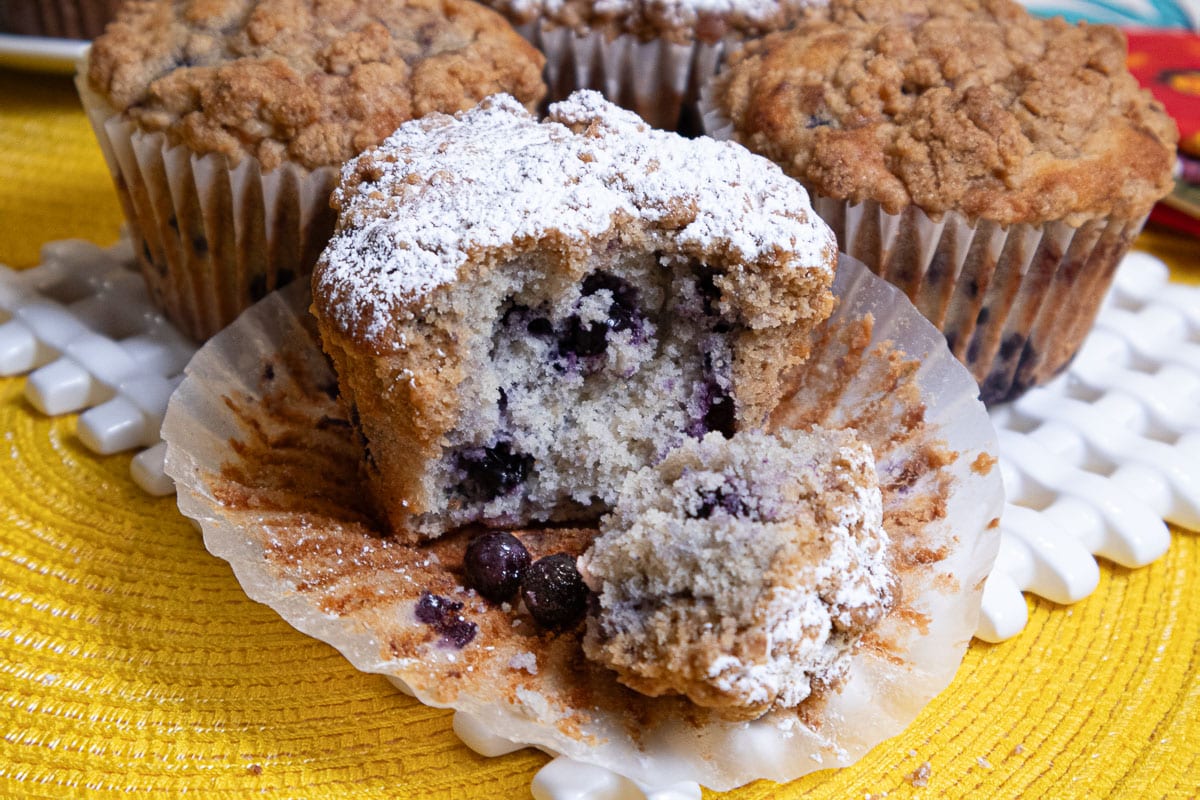
Other Irresistible Muffins and Quick Breads
Blueberry Crumb Muffins
Equipment
- Texas Muffin Tins or another size if preferred.
Ingredients
Brown Sugar Almond Crumble
- 1 ½ cups cake flour (180 grams)
- ⅔ cup dark brown sugar (130 grams)
- 4 ounces unsalted butter, cold (114 grams or 1 stick)
- 3 ounces almond paste (85 grams)
- ¼ teaspoon salt
Blueberry Crumb Muffins - please note the *substitutions at the end of the ingredient list
- ½ cup unsalted butter, softened (114 grams or 1 stick)
- 1 cup granulated sugar (200 grams)
- 2 large eggs
- 2 teaspoons baking powder
- ½ teaspoon salt
- ½ teaspoon cardamom, optional
- 1 teaspoon vailla extract
- 1 ⅓ cup all-purpose flour* (180 grams)
- ½ cup white whole wheat flour** (60 grams)
- ½ cup milk, whole or 2%
- 2 ½ cups blueberries, frozen preferred
- *1 ¾ cups all-purpose flour can be substituted (240 grams)
- ** ½ cup regular whole wheat flour can be used (60 grams)
Instructions
Brown Sugar Almond Crumble
- Place the dry ingredients in the processor bowl and pulse several times to mix.
- Cut the cold butter and almond paste into small pieces. Add to the processor bowl and pulse to form large crumbs starting with long pulses and then short as the crumbs come together. Do not over process or a paste will form. Refrigerate while preparing the muffins. These can also be made days in advance and refrigerated or stored in the freezer.
Blueberry Crumb Muffins
- Preheat the oven to 350°F. Line the muffin tins with paper liners. The tins can be sprayed with a non-stick baking release also, but the liners do a better job of keeping the crumbs in place. Set aside.
- Place the butter, sugar, and vanilla in the bowl of a mixer. Beat until well combined.
- Add the eggs, one at a time, beating until completely incorporated. After the second egg is added the mixture will probably curdle. Scape well after each addition. The next step will take care of that.
- Whisk the flours, baking powder, and salt together.
- Add the flour and milk alternately on low speed, starting and ending with the flour. Three additions of flour and 2 of milk work well here.
- Remove the bowl from the mixer and fold the frozen blueberries into the batter. Use immediately. The batter will be stiff from the frozen blueberries.
- Fill the Texas muffin cups: Use a #8 disher/scooper or about ½ cup for each muffin. They should be about ¾ full.
- Generously top with the Brown Sugar Almond Crumbs, pressing them into the batter. There will probably be left over crumbs. Freeze them for another use.
- Bake about 35 to 38 minutes for the Texas muffin cups or until a tester comes out cleanly.
Notes
Nutrition
(Almost) No Bake Strawberry Pie
The only baking needed for this No Bake Strawberry Pie is about 13 minutes for the crust. The really wonderful thing about this recipe is the fresh strawberry filling thickened with Instant Clear Jel. If you've never used it, it's a game changer. It keeps the fruit fresh without cooking which alters the flavor.....and it's super easy to use.
It's important to use Instant ClearJel and not just plain ClearJel which requires cooking to set.
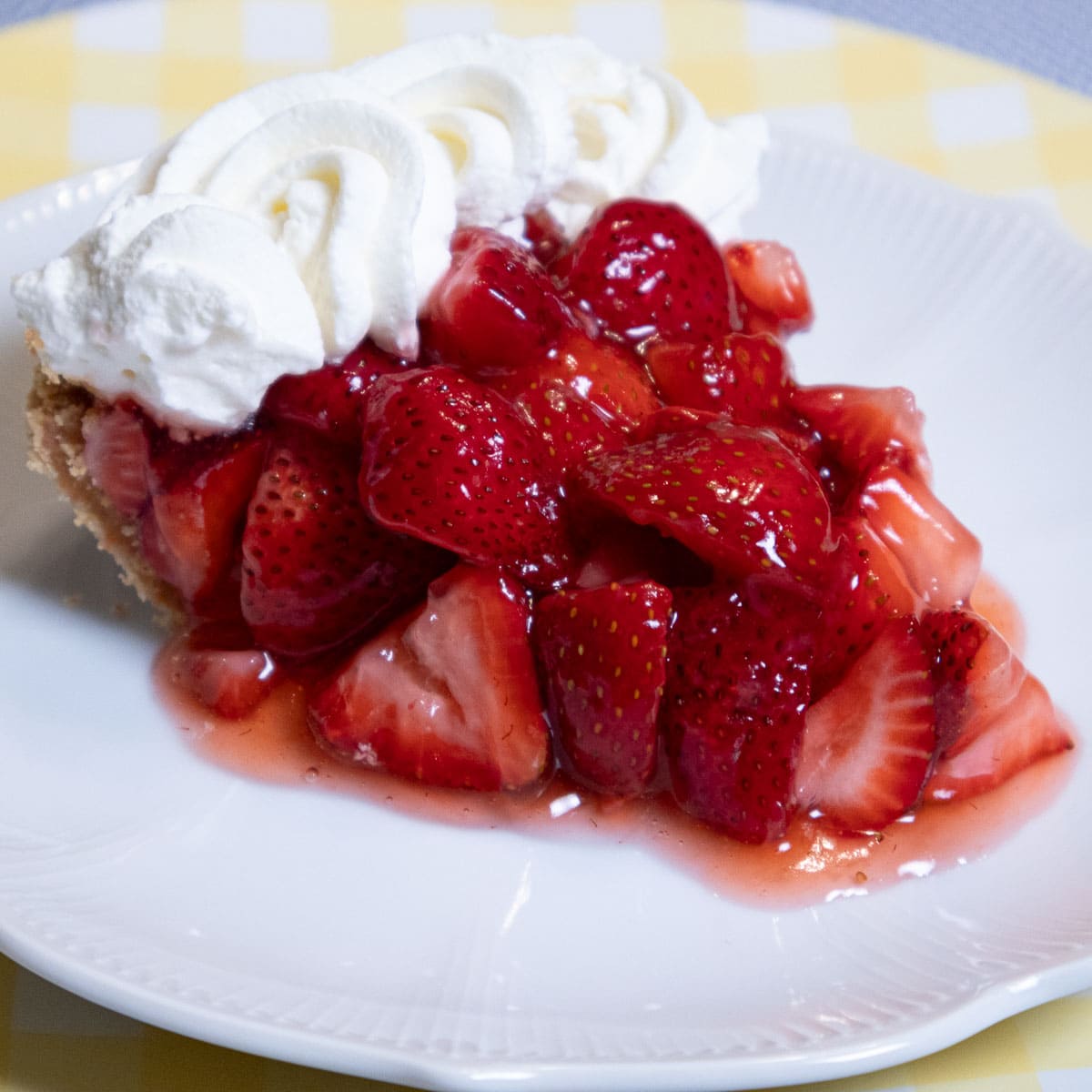
Fresh strawberries are cut into bite size pieces and combined with sugar, instant ClearJel, water and lemon juice, then poured into a vanilla wafer crust for that easy summer dessert you've been looking for. For more information on thickeners see my post, Thickeners as Used in Baking and Pastry.
Other Strawberry desserts you might enjoy include: the elegant Chocolate Strawberry Mousse Torte, Strawberry Verrines, Unbelievable Cheesecake, and the really quick Strawberry Bread. And if your lookin for more recipes like this see my Summer Roundup of Sweet and Savory.
[feast_advanced_jump_to]What is ClearJel
I have found Instant ClearJel on Amazon but many companies are saying it can be used to can with. This is incorrect. It should not be used this way. I buy my Instant ClearJel from Nuts.com where it is more reasonably priced and I know it is the right one. This is not an affiliate link, just information.
Types of ClearJel
There are two types of ClearJel and each has it's own special uses.
ClearJel (sometimes referred to as Cook Type) is activated by heat and liquid. It works well with acidic ingredients, tolerates high temperatures, and doesn't cause pie fillings to weep" during storage. It is especially good if canning pie fillings and is the only thickener recommended by the USDA for home canning. You can also use ClearJel to thicken sauces, stews, pot pies, etc. One downside is that recipes thickened with ClearJel break down if they're frozen and thawed. ClearJel can be substituted in equal parts with tapioca starch, corn starch or arrowroot. Products using ClearJel can be heated twice.
Instant ClearJel is often referred to as the secret ingredient in uncooked recipes. It requires no heat, sets up as soon as it comes in contact with liquid, and is not adjustable. Instant ClearJel is used in uncooked fillings, such as mousses or creamy cake or pie fillings. It needs to be mixed with sugar, then with the wet ingredients, and added to the rest of the filling at once. It is particularly good when used with fresh fruit for pie fillings. While Instant ClearJel can be heated, it is not primarily used this way and can only be heated once. One of its best properties is that it can be used when freezing and thawing.
Why You'll Want to Make this Pie
- It's sooo easy to make and beautiful.
- Fresh strawberries come through in every bite.
- It uses simple ingredients for the most part.
- It uses minimal ingredients for maximum flavor.
Recipe Ingredients
Vanilla Wafer Crust
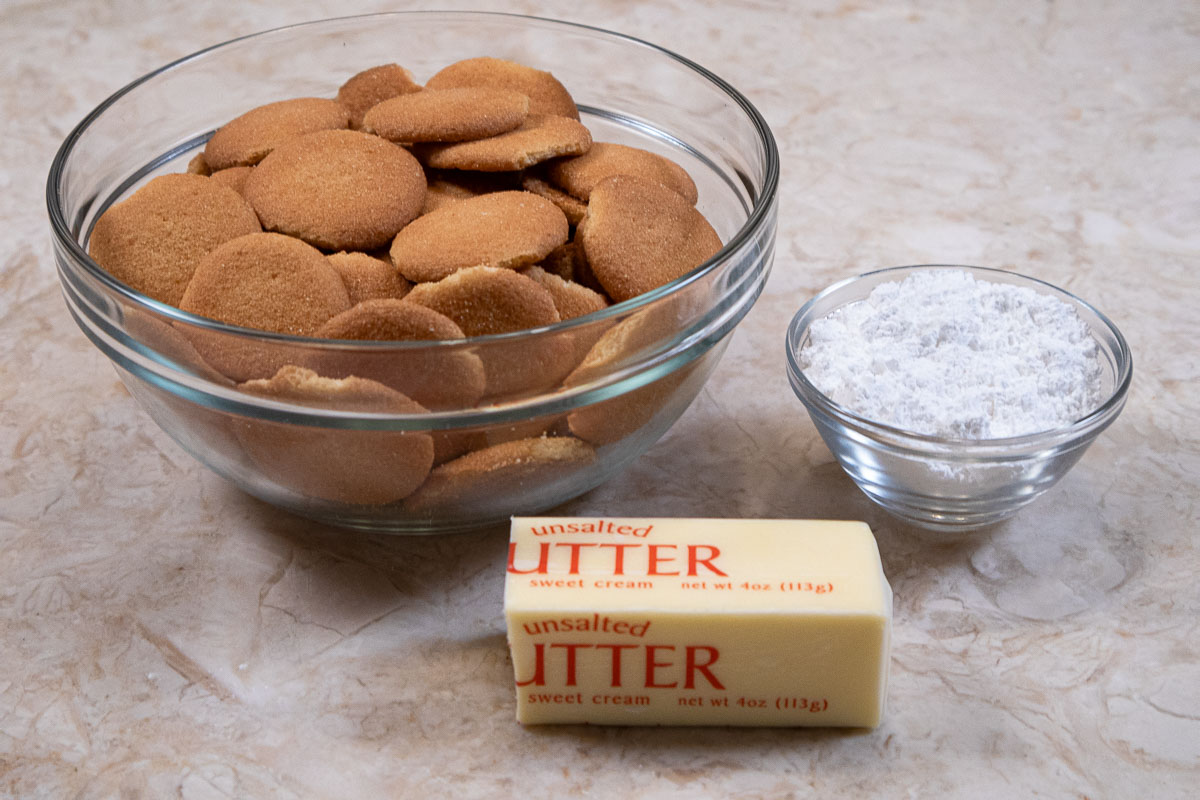
FRONT ROW: Unsalted butter
BACK ROW: Vanilla Wafers (Nilla wafers suggested), powdered sugar
Strawberry Filling
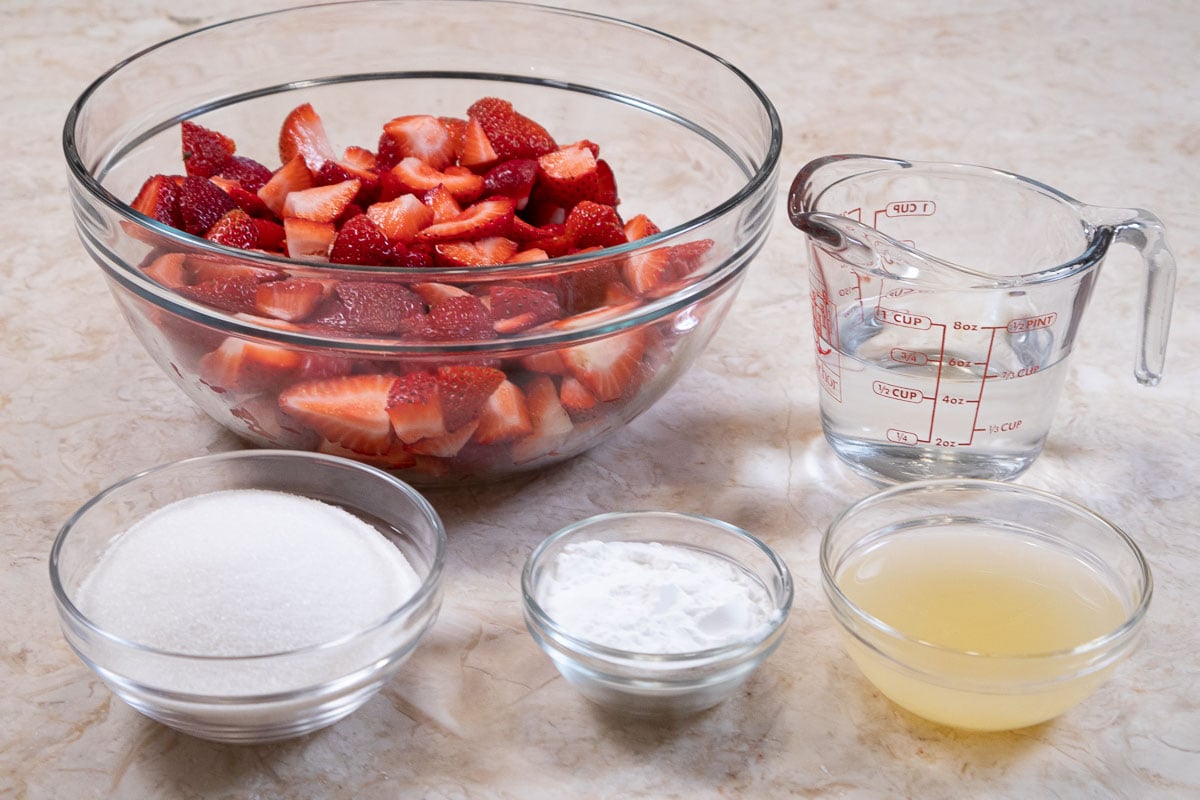
FRONT ROW: Granulated sugar, Instant ClearJel, lemon juice
BACK ROW: Fresh strawberries, water
Waterproofing the Crust
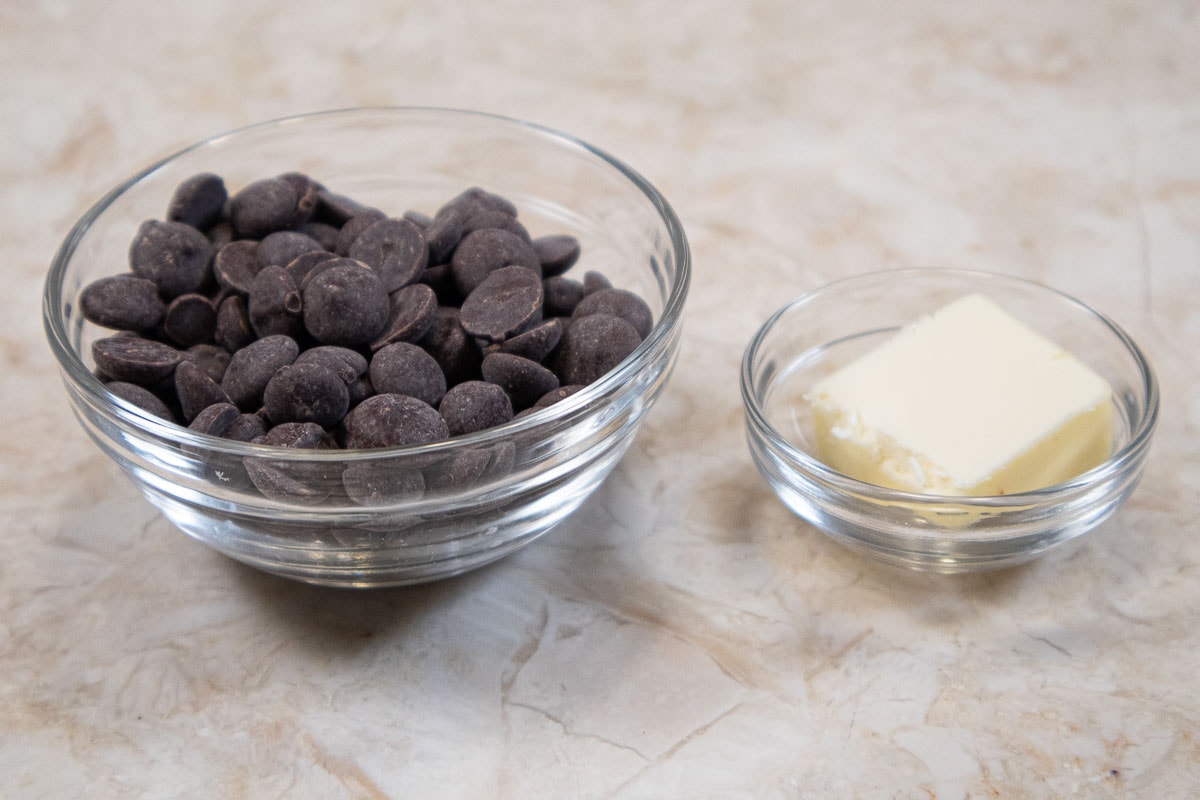
LEFT TO RIGHT: Semisweet chocolate, unsalted butter (white chocolate may be substitued for the dark).
Whipped Cream Finish
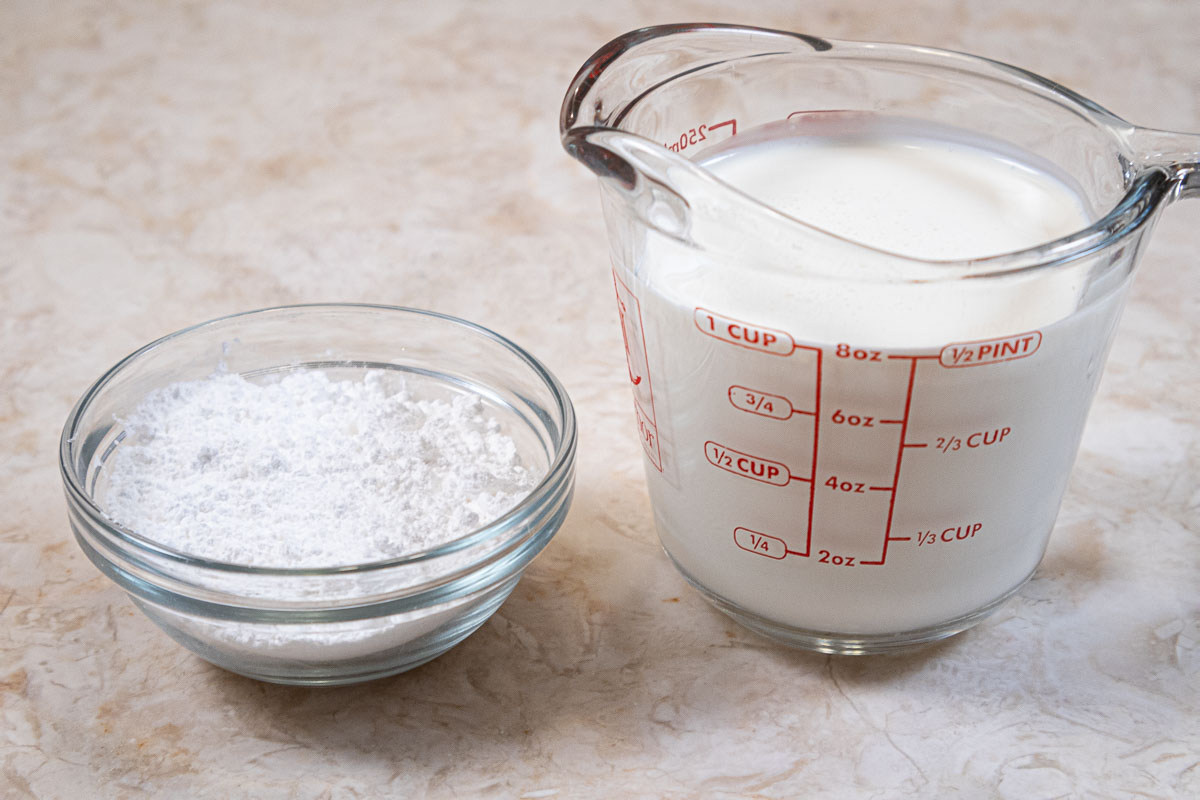
LEFT TO RIGHT: Powdered sugar, heavy cream.
Variations
Blueberries can be substituted for the strawberries.
Mixed berries such as blueberries, red raspberries, strawberries and blackberries can be used.
Be sure to see the recipe card below for the exact ingredients and instruction.
Step by Step Instructions
Vanilla Wafer Crust
I recommend using Nabisco Nilla Wafers because not all vanilla wafers absorb the same amount of butter. If using another brand, withhold part of the butter and add as needed. You may need more or less.
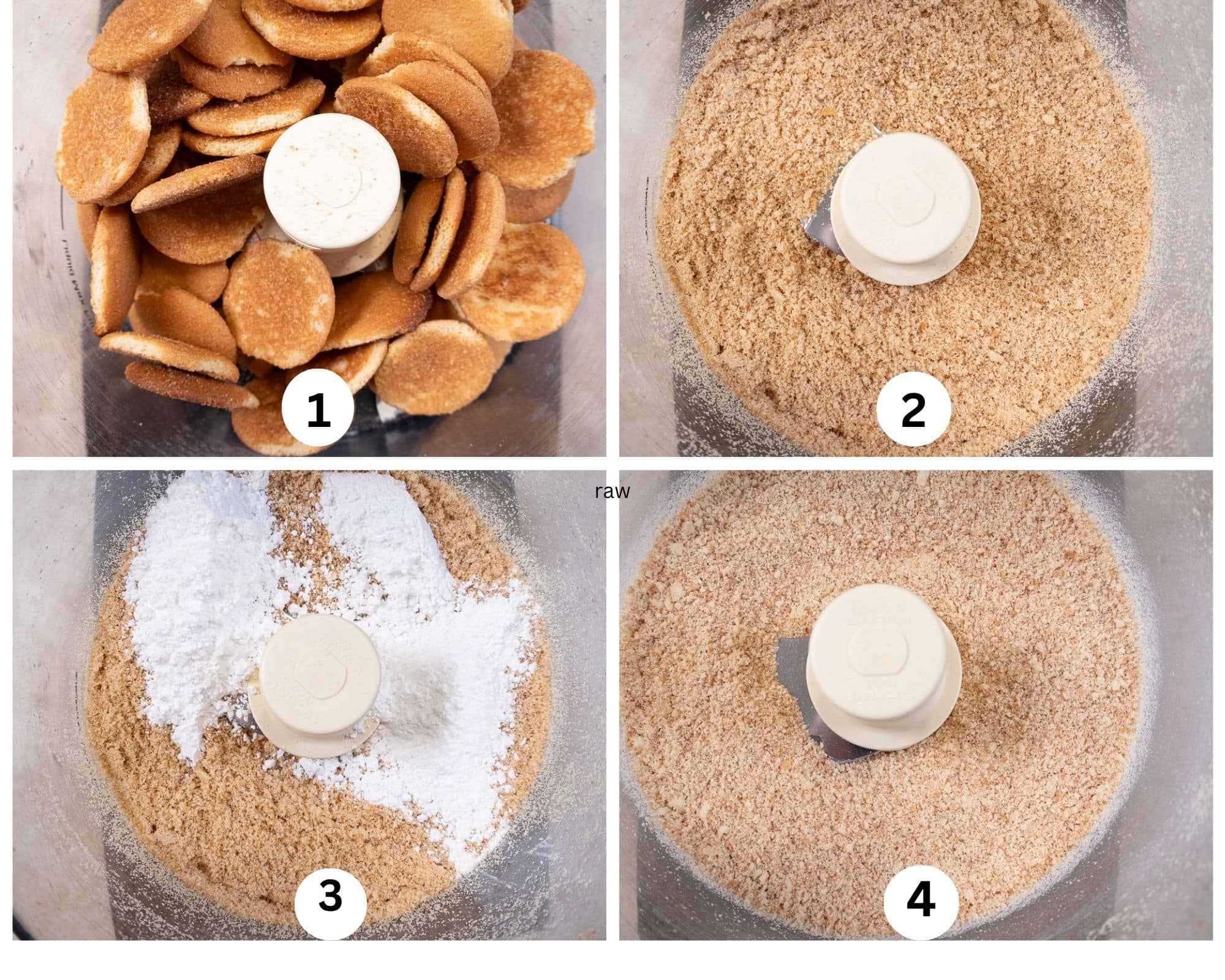
Step 1. Add the wafers to the processor bowl. Step 2. Process to form crumbs. Step 3. Add the powdered sugar. Step 4. Pulse to blend completely.
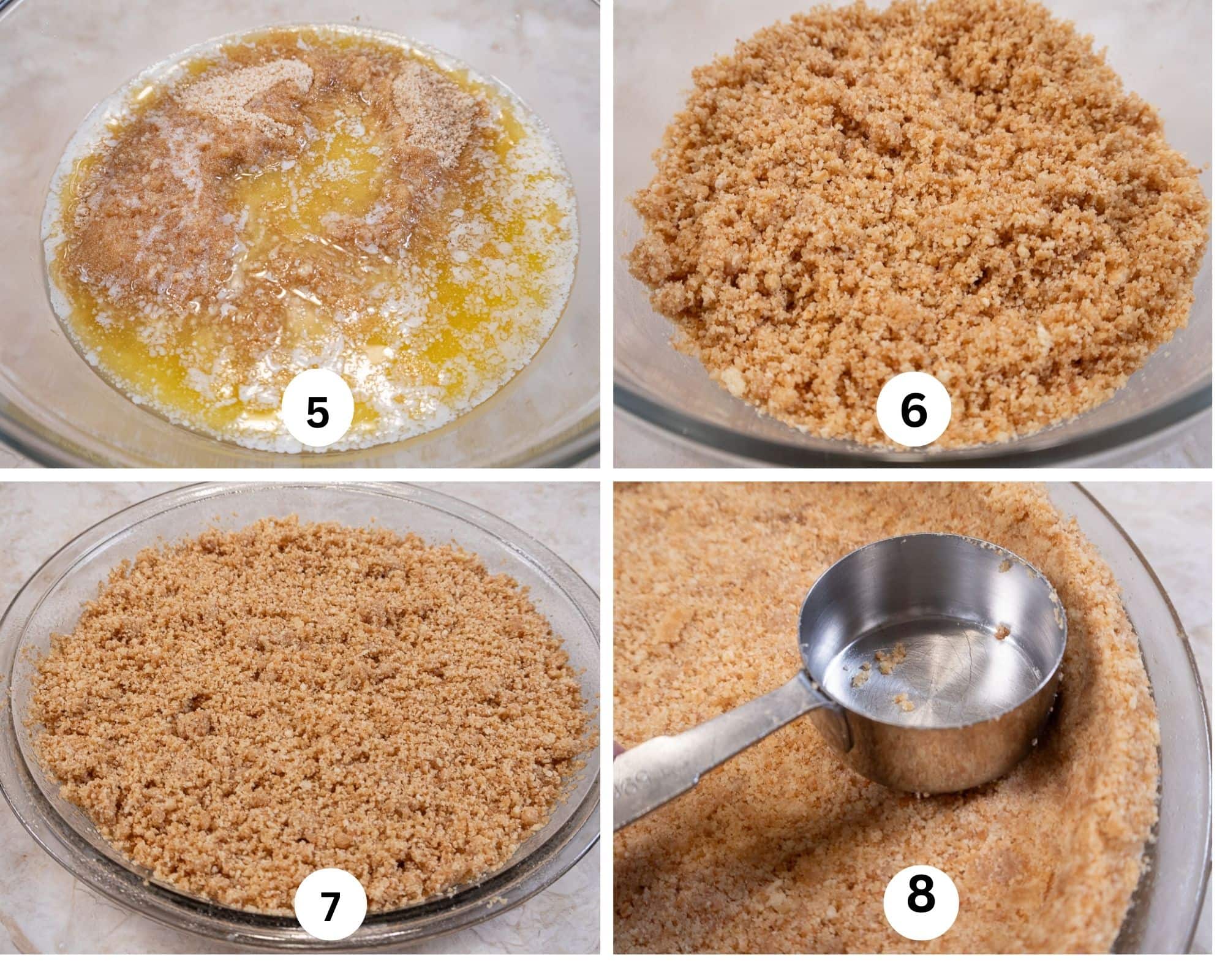
Step 5. Add the butter to the crumbs. Step 6. Toss the crumbs and butter with a fork until the crumbs are uniformly coated. Step 7. Pour them into the pie pan, evening them out. Push the crumbs up the side of the pie plate as well as the bottom. Step 8. Press the crumbs firmly in place by hand or using a measuring cup. Bake as noted.
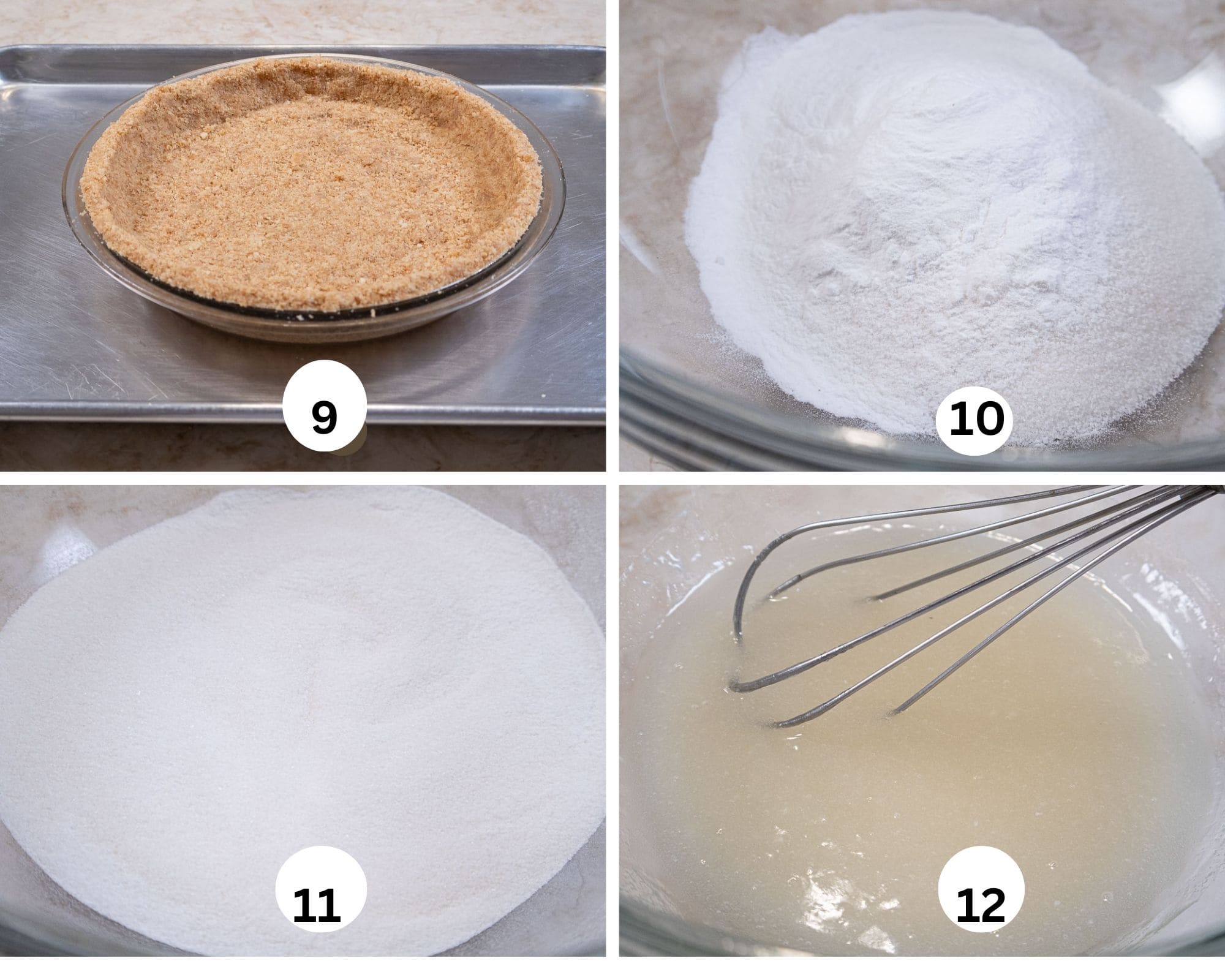
Step 9. Place the pie crust on a baking sheet and bake as directed. This makes it easier and safer to remove from the oven. When it is cool, waterproof the shell with either semisweet or white chocolate melted with a bit of butter and spreading it over the bottom particularly and sides of the shell. This keeps the bottom of the crust from becoming soggy. Chill the shell briefly to set the chocolate while preparing the rest of the recipe. Step 10. Add the Instant ClearJel to the sugar. Step 11. Whisk together. Step 12. Whisk together the lemon juice, water and red food coloring if using.
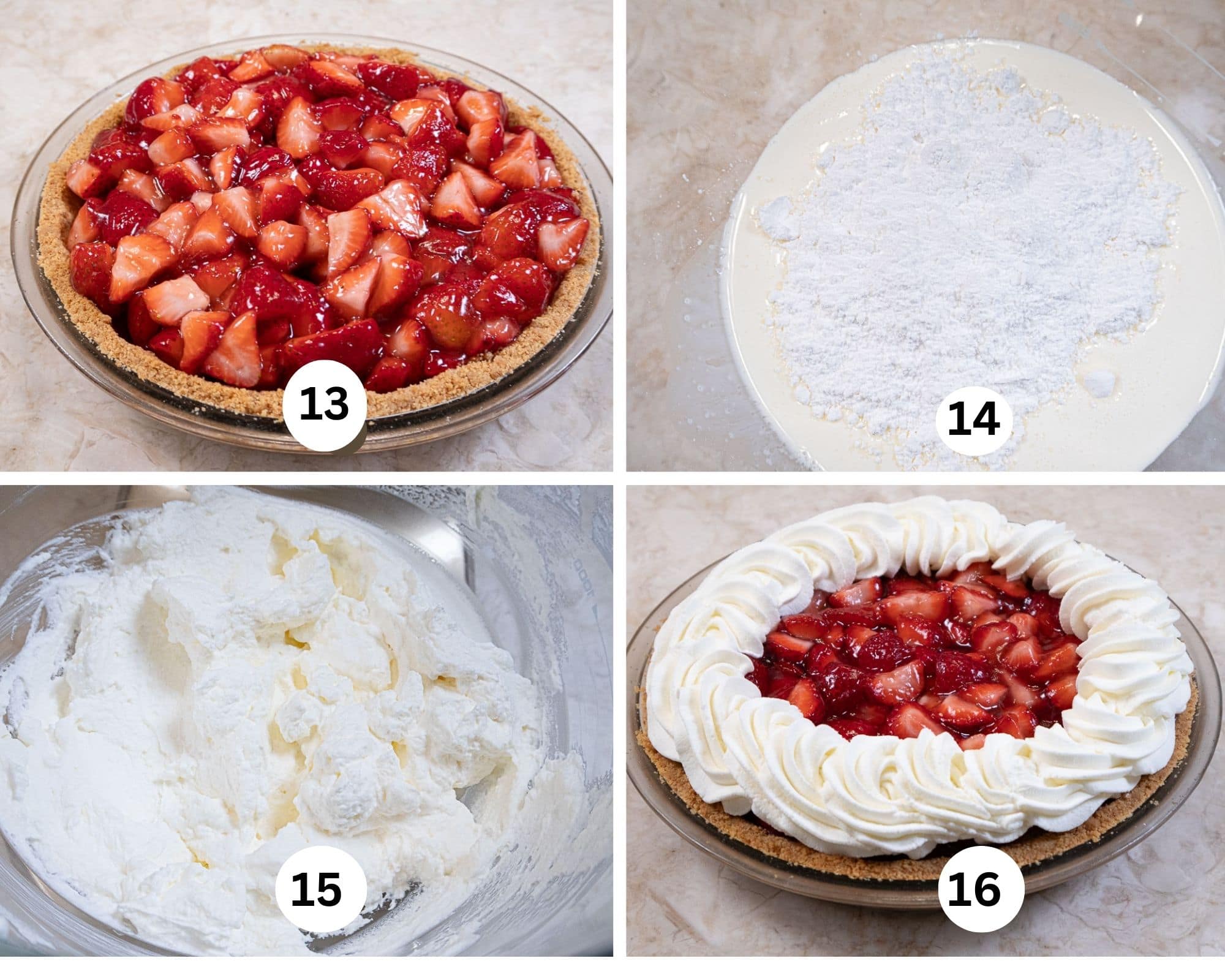
Step 13. Add the liquid mixture to the dry ingredients for the filling and mix well. Immediately pour over the strawberries making sure all of them are well coated. Pour the strawberry filling into the crust, evening it out. Step 14. Add the powdered sugar to the cream in a mixing bowl. Step 15. Whip the cream until stiff. Step 16. Fit a piping bag with a #5 open star, fill the bag with the cream and pipe a wreath around the edge of the strawberry pie, leaving the center exposed. Chill the pie until serving.
First, there is no need to puree strawberries or cook them with the cornstarch. It's one less step. Also, the ClearJel is just that - a see through clear, shiny mixture that envelopes the strawberries for their best look and taste.
It can, but that's not this recipe and it won't result in the same clean taste as will ClearJel.
Using red food coloring enhances the looks of the strawberries. The Instant ClearJel is transparent and can sometimes be seen surrounding the fruit. However, it is completely optional and the pie looks fine without it.
Storage
While it's true that recipes made with Instant ClearJel can be frozen, I don't suggest freezing this strawberry pie. The texture and looks of the pie can be altered when thawed. It is best to eat this pie the day it is made.
Expert Tips
- If a food processor isn't available, place the wafers in a plastic bag and crush them with a rolling pin. You may need to do this several times for the amount of the crumbs.
- Simply stir in sifted powdered sugar, then add the butter as called for.
- Be sure to waterproof the crust. It can become soggy from the filling which is off-putting.
- Use either semisweet or white chocolate for the waterproofing.
- Make sure the pie plate is sprayed with a non-stick baking release or the crust can stick making it difficult to remove.
- Do not use regular ClearJel which is sometimes referred to as Cook Type to differentiate it from the Instant version.
- I used Nabisco Nilla Wafers as they are readily available. The amount of butter is geared towards these cookies. Other brands may need more or less butter so I would start with less if using a different brand and increase as needed.

More Easy Summer desserts
If you love this No Bake Strawberry Pie, It would be hugely helpful and so appreciated it if you would take a moment to leave a rating below. Thank you.
(Almost) No Bake Strawberry Pie
Ingredients
Vanilla Wafer Crust
- 60 vanilla wafers (215 grams)
- ¼ cup powdered sugar (30 grams)
- 6 tablespoons unsalted butter, melted (90 grams)
Waterproofing the Crust
- 4 ounces semisweet or white chocolate (114 grams)
- 1 tablespoon unsalted butter or shortening
No Bake Strawberry Filling
- 6 cups fresh strawberries (2 poundds or 910 grams)
- 3 tablespoons Instant ClearJel
- ½ to ¾ cup granulated sugar (100 to 150 grams)
- ⅔ cup water
- ⅓ cup lemon juice
- Red food coloring, optional
Whipped Cream Wreath
- 1 cup heavy cream
- ¼ cup powdered sugar (35 grams)
Instructions
Vanilla Wafer Crust
- Preheat the oven to 350°F. Spray a 9" standard pie plate with a non stick baking release. Set aside.
- Place the vanilla wafers in the bowl of a food processor. Process to make crumbs. There should be 2 cups. Add the powdered sugar and pulse to mix in.
- Remove to a bowl and add the butter tossing with a fork to coat all of the crumbs.
- Pour into the pie plate and press the crumbs up the side of the plate as well as the bottom. The sides should be a bit thicker than the bottom. Bake for 13 minutes. It will be lightly browned and firm up when cooled. Cool completely.
Waterproofing the Crust
- Combine the white or semisweet chocolate and butter or shortening. Microwave briefly to melt or place over simmering water to melt.
- Coat the sides and bottom of the crust with the chocolate. Refrigerate until needed.
No Bake Strawberry Filling
- Wash and pat the strawberries dry. Remove the tops and cut into bite size pieces.
- Whisk together the Instant ClearJel and sugar in a large bowl.
- Mix the water and lemon juice together and add it to the dry ingredients. Add the red food coloring at this point if using. Whisk together and immediately pour over the strawberries. Stir to coat all the strawberries and distribute the liquid ingredients.
- Pour into the prepared shell and even the filling out. Set aside.
Whipped Cream Wreath
- Combine the cream and powdered sugar in the bowl of a mixer. Whip until stiff peaks form.
- Fit a piping bag with a #5 open star tip and add the cream. Pipe a wreath around the edge of the pie.
- Refrigerate until serving. This is best served the day it is made.
Notes
Nutrition
Peanut Butter Sandwich Cookies
These Peanut Butter Sandwich Cookies are loaded with peanuts used three ways for the most peanuty cookie ever! A peanut butter cookie is rolled in peanut sugar and filled with a Reeses type peanut butter filling. These are the perfect end to any meal or as a snack.
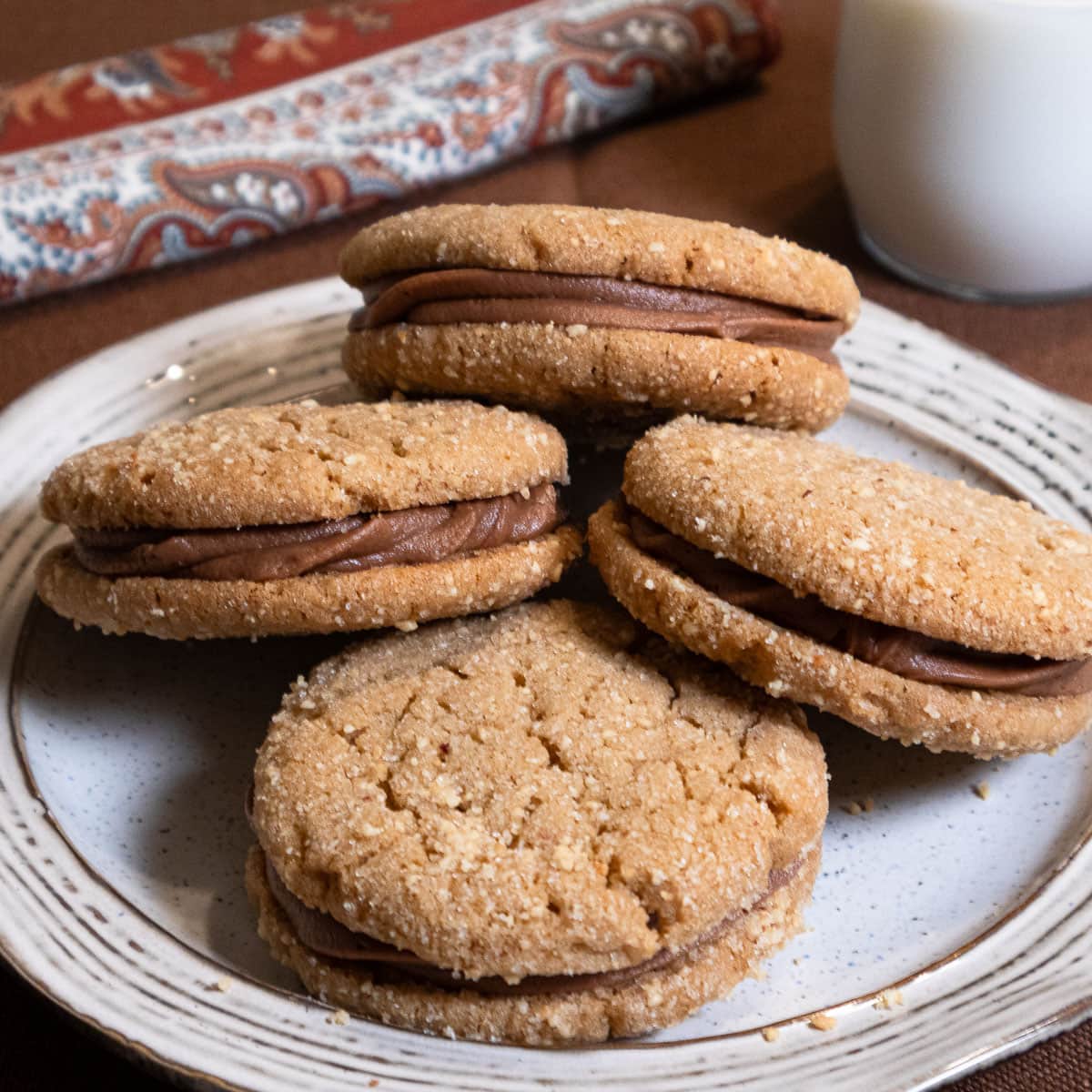
This easy to make cookie dough makes great cookies by themselves also. The peanut sugar adds a crunch not usually found in peanut butter cookies. In any case, these are a not-to-be-missed cookie.
[feast_advanced_jump_to]What Kind of Peanut Butter to Use
While chunky can be used, a better choice is smooth, commercial peanut butter for both the filling and the cookie. Regular or low fat can be used. Natural or homemade is not the preferred choice here.
Why use Bread Flour in the Cookies
Bread flour is a stronger flour than all purpose. As, such is makes a chewier cookie. The other thing that helps a lot is to put the prepared dough in the fridge overnight. That allows the cookies to more evenly absorb the liquid. All purpose can be used but bread flour is my preferred choice. To learn more about flours see my post Flour as Used in Baking and The Frustrating Facts about Measuring Flour.
Butter, Shortening or Both
Unsalted butter is used for flavor. Shortening (think crisco) is used to stop the cookies from spreading too much which is what will happen when all butter is used. There is some controversy over using shortening.
Historically Crisco was used as a replacement for. It used partially hydrogenated cottonseed oil which was high in trans fats. Trans fats — also called trans-fatty acids raises bad cholesterol and lowers good cholesterol.
From January 24, 2007, all Crisco shortening products were reformulated to contain less than one gram of trans fat per serving. It no longer uses partially hydrogenated oils which were the problem and now uses only hydrogenated oils which are what gives shortening its semisolid consistency and high performance cooking attributes without the trans fats.
While the company touts no trans fats, there is actually .05 grams per serving which allows it to claim there is none. But it is a much better product than was the original.
Used judiciously and in small amounts, I think the benefit is great and use it where no other product is suitable.
Why You'll Love This Recipe
- This recipe is really easy. Basically the dry ingredients are combined with the wet ingredients, then shaped.
- These sandwich cookies are the most peanut laden cookies around.
- The ingredients are probably in your pantry now.
- Chocolate is added to the filling to intensify the flavor.
- If there are children around, let them help roll the dough into balls.
Recipe Ingredients
Peanut Butter Cookie Dough

FRONT ROW: Salt, unsalted butter, vanilla, baking soda
MIDDLE ROW: Eggs, peanut butter, shortening
BACK ROW: Brown sugar, bread flour, granulated sugar
Peanut Sugar
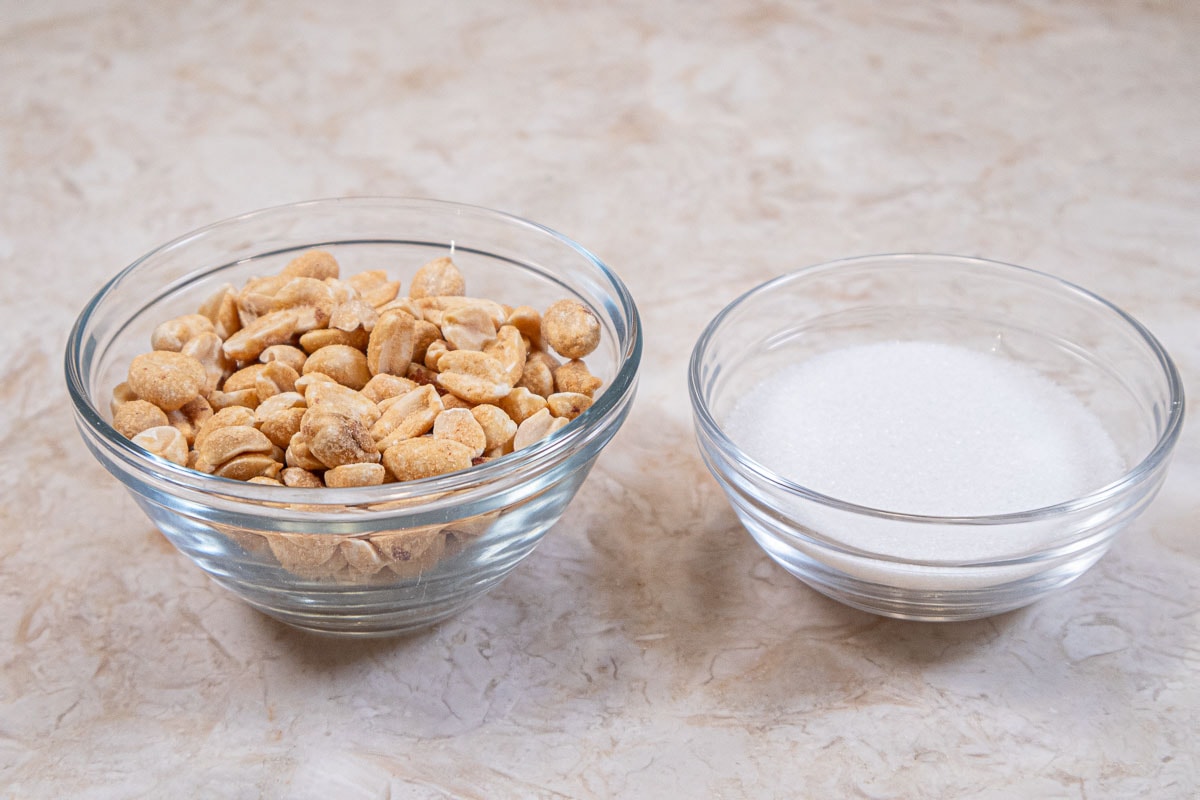
LEFT TO RIGHT: Salted peanuts, granulated sugar.
Chocolate Peanut Butter Filling
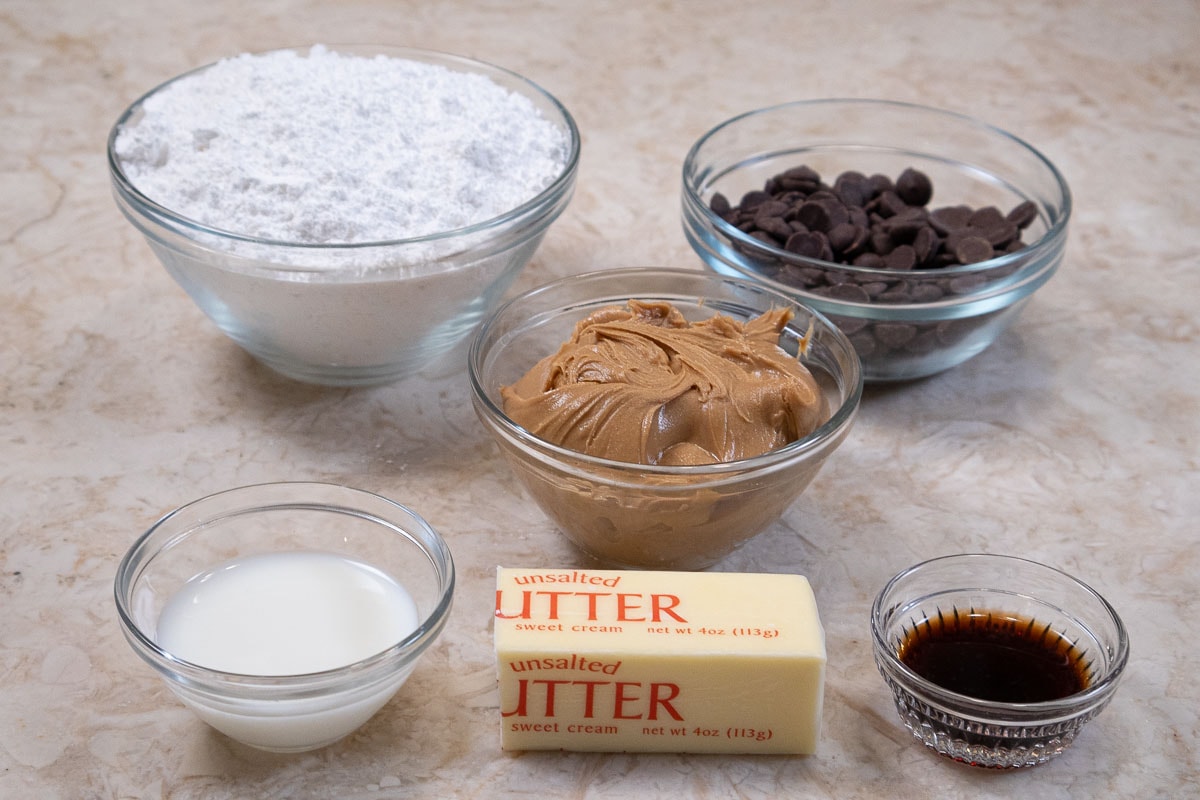
FRONT ROW: Milk, unsalted butter, vanilla
MIDDLE ROW: Peanut butter
BACK ROW: Powdered sugar, semisweet chocolate
Be sure to see the recipe card below for the exact ingredients and instructions.
Step by Step Instructions
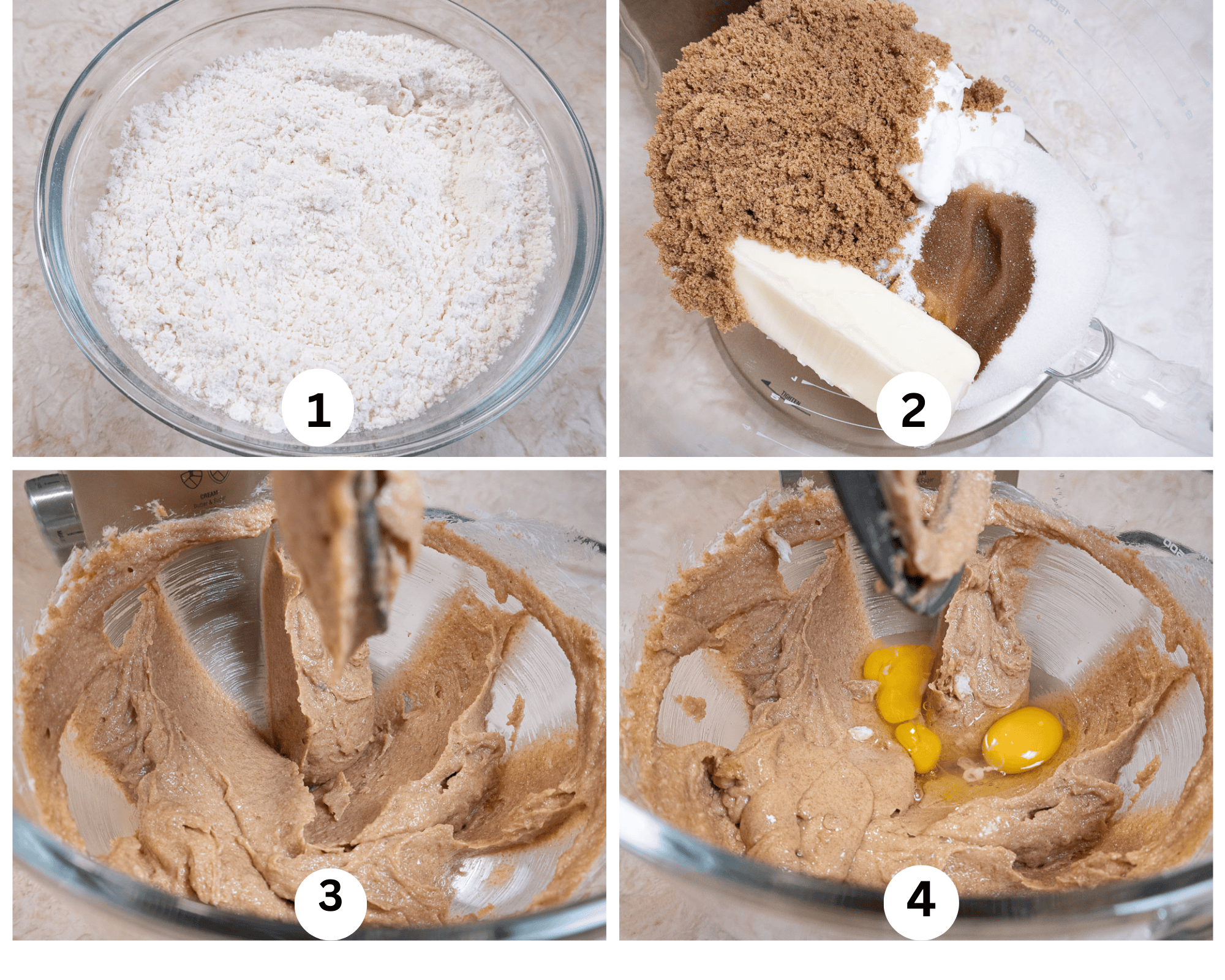
Step 1. Whisk together the flour, baking soda and salt in a bowl. Set aside. Step 2. Add the peanut butter, shortening, butter, both sugars and vanilla to the bowl of a mixer. Step 3. Beat until well combined. Step 4. Add the eggs and beat until blended. It may curdle at this point. If it does, raise the speed of the mixer and continue beating. If that doesn't take care of it, the next step will.
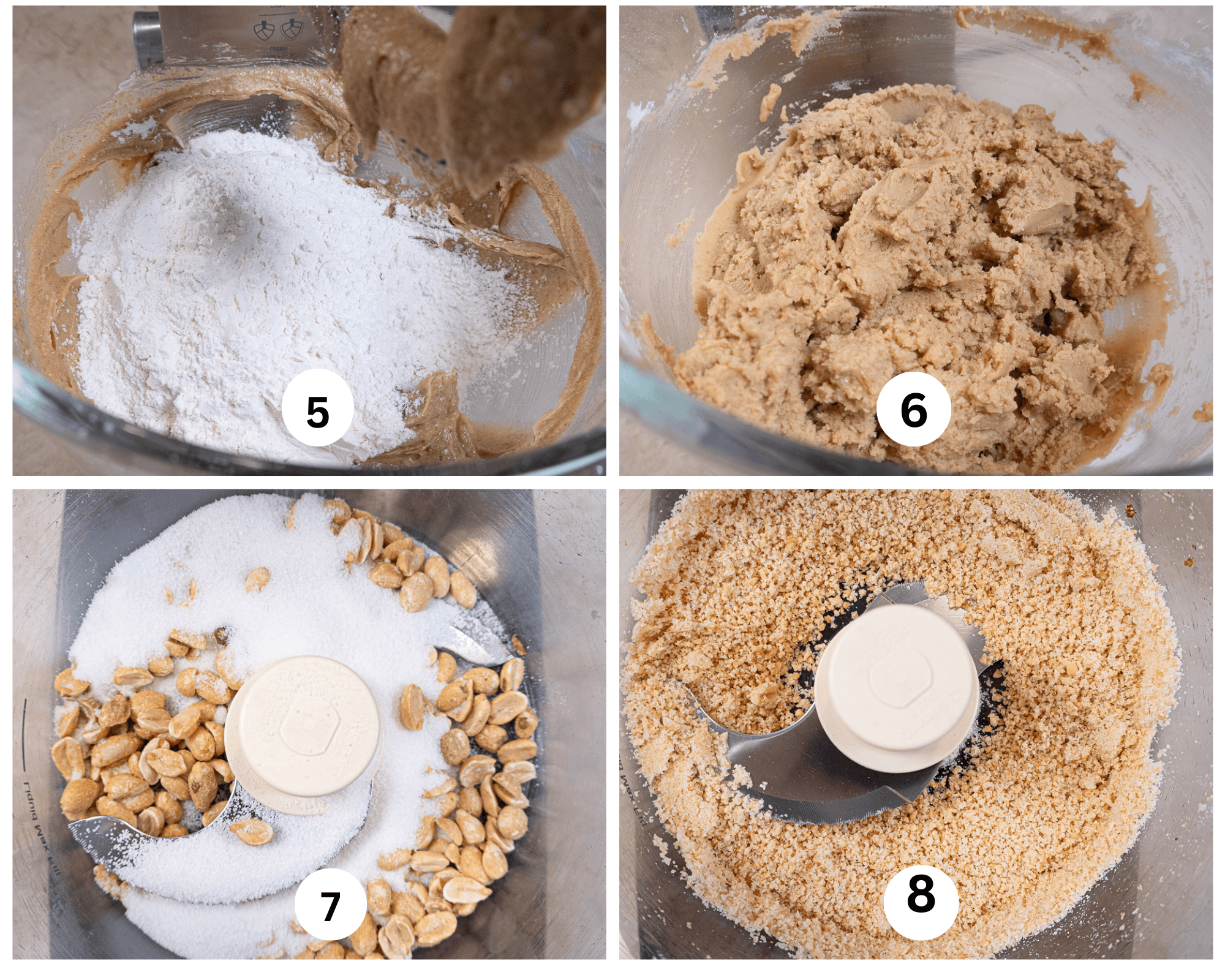
Step 5. Add the dry ingredients and mix completely . Step 6. Beat on low until the dough is completely mixed. If resting in the fridge overnight, transfer to a storage container. Step 7. Place the peanuts and granulated sugar in the bowl of a processor. Step 8. Process until the peanuts are finely chopped. Do not over process and turn it to a paste.
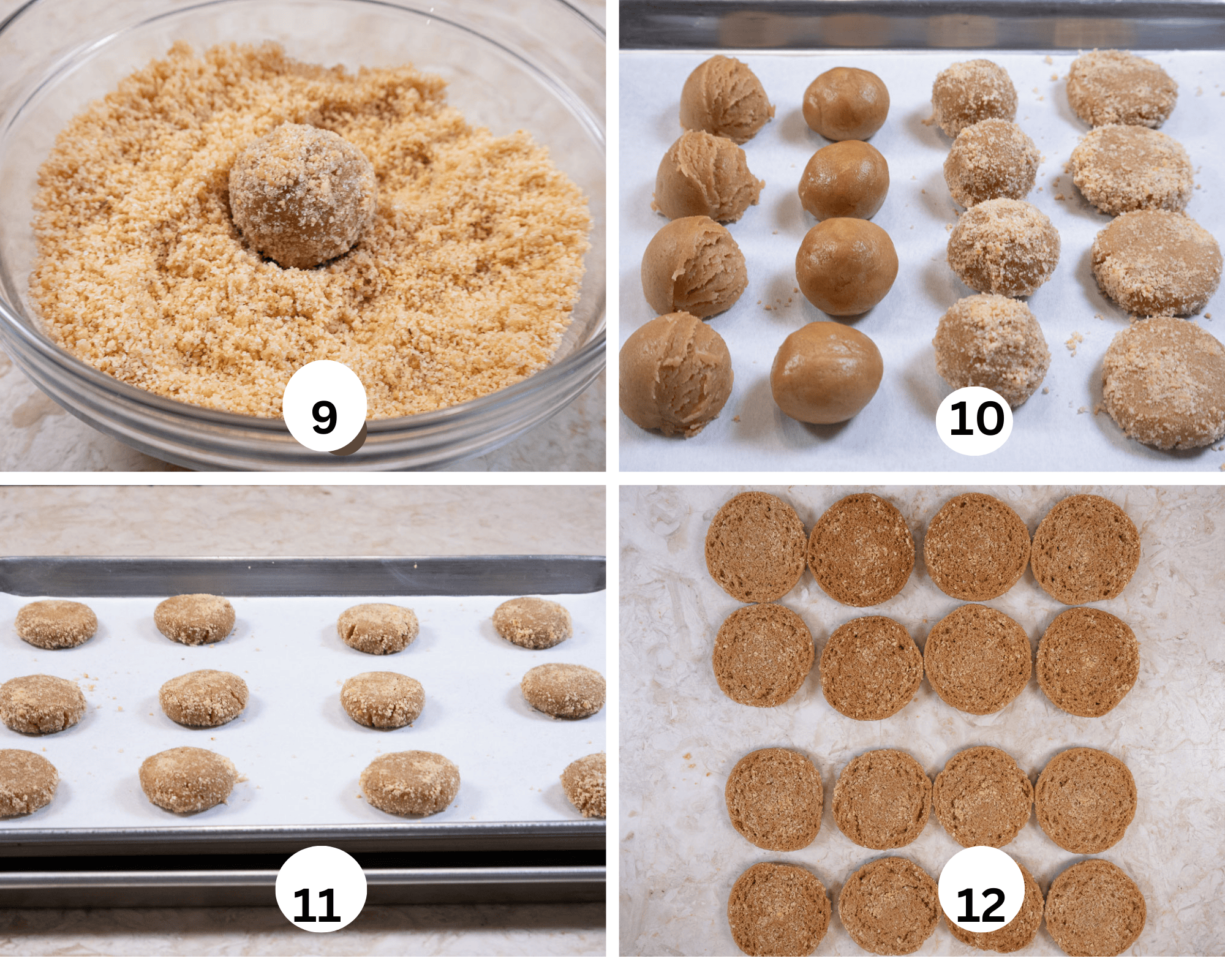
Step 9. Place the peanut sugar in a bowl. Add a rounded cookie, scoop up some of the peanut sugar and a peanut butter cookie and roll them around in your hands so the sugar attaches. Step 10. Here are the steps to the final shaping of the cookie. From left to right, the cookie dropped from a #40 disher/scooper (about 1 ½ tablespoons each). The cookies rolled into balls between your hands. The balls covered in the peanut sugar and finally placed on the parchment then flatted to about ½ " thick or about 1 ½" in diameter. Bake as called for. Step 11. Place the cookies, 3 apart and 4 down on a half sheet pan. Double pan the cookies to prevent the bottoms from over browning. Step 12. Pair the cookies and arrange them bottom side up.
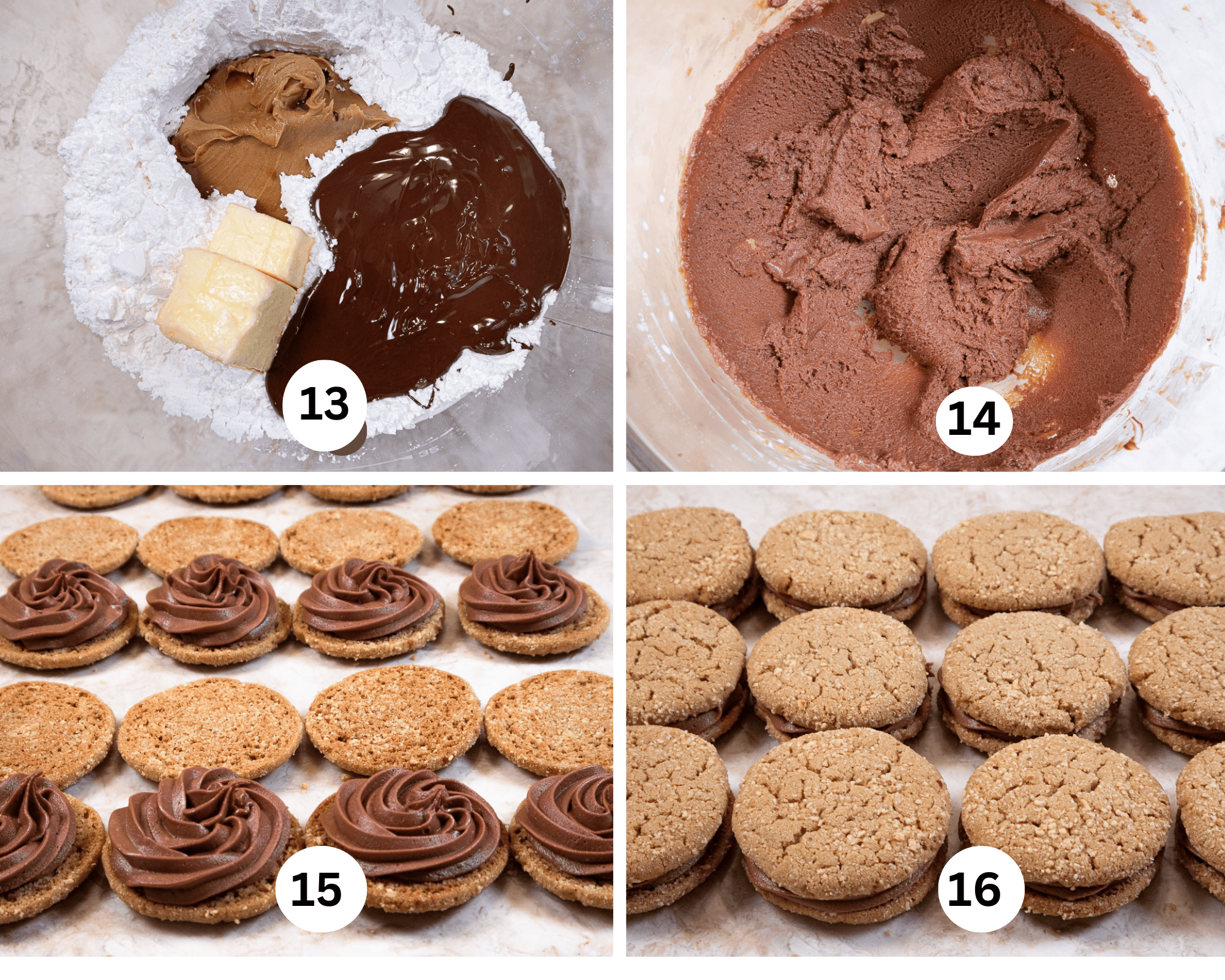
Step 13. Place all of the filling ingredients except the milk in the bowl of a mixer. Step 14. Beat until smooth, adding the milk a bit at a time until the filling pipeable. Step 15. With a 3 5 open star, pipe or spoon the filling onto the bottom of the cookies to within about ¼"of the edge. Step 16. Place the top cookie on the filling and press down lightly to bring the filling to the edge of the cookies.
Recipe FAQS
Commercial creamy works best for these cookies. Natural or homemade not so much.
All purpose flour can be substituted.
No, but the cookies will lack the texture of the crunchy peanut sugar.
Expert Tips
- The bread flour is important, but all-purpose can be subbed if necessary.
- Chilling the dough overnight makes a better cookie.
- The shortening is important to keep the cookies from spreading excessively when baked.
- Make sure to pair the cookies before filling for the best looking sandwich cookies.
- Use salted peanuts for the peanut sugar to give an extra flavor boost.
- These keep well for days in a covered tin.
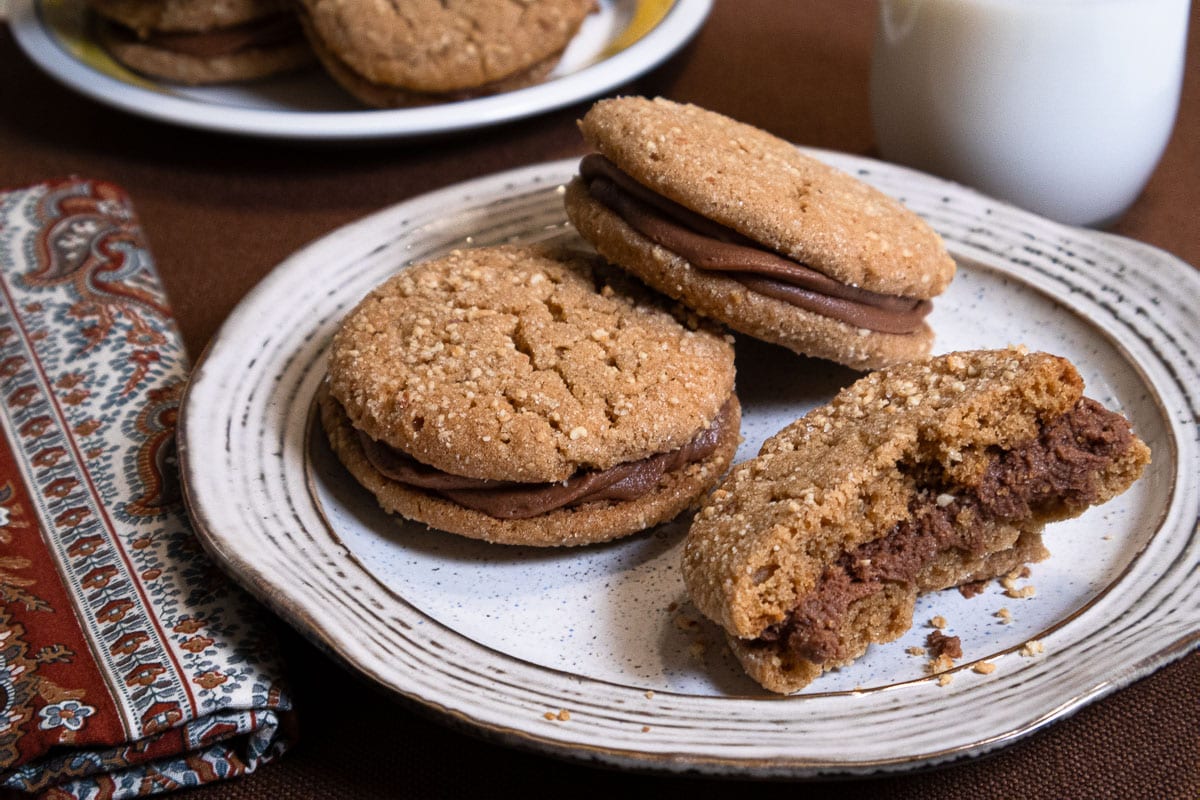
Cookies You're Sure to Like
If you love these Peanut Butter Sandwich Cookies, It would be hugely helpful and so appreciated it if you would take a moment to leave a rating below. Thank you.
Peanut Butter Sandwich Cookies
Ingredients
Peanut Butter Cookies
- 2 ½ cups bread flour (350 grams)
- 1 teaspoon baking soda
- ½ teaspoon salt
- 1 cup peanut butter (225 grams)
- ½ cup unsalted butter (114 grams)
- ½ cup shortening (114 grams)
- ¾ cup granulated sugar (150 grams)
- ¾ cup brown sugar, light or dark (150 grams)
- 2 teaspoons vanilla
- 2 large eggs
Peanut Sugar
- ¾ cup salted peanuts (100 grams)
- ⅓ cup granulated sugar (65 grams)
Chocolate Peanut Butter Filling
- 1 cup peanut butter (225 grams)
- ⅓ cup unsalted butter (75 grams)
- 2 cups powdered sugar (260 grams)
- 5 ounces semisweet chocolate (150 grams)
- 2 teaspoons vanilla
- 4 to 5 tablespoons milk as needed
Instructions
Peanut Butter Cookies
- Preheat the oven to 350°F if baking immediately. Line several baking sheets with parchment. Set aside.
- Whisk the flour, baking soda, and salt together in a bowl. Set aside.
- Beat the peanut butter, butter, shortening, sugars, and vanilla in a mixing bowl until well combined.
- Add the eggs and beat well. It may curdle at some point. If it does, raise the speed of the mixer and continue beating.
- Add the flour and beat until everything is completely combined.
- Place in a container and refrigerate overnight.
- When ready to bake, remove from the refrigerator and room temp for about 20 minutes to make the cookies easier to shape.
- Drop the cookies with a #40 disher/scooper (about 1 ½ tablespoons). Roll the cookie between your hands into a smooth ball. Roll in the peanut sugar by scooping some of the sugar and the ball and roll between your hands so the sugar adheres to the cookie.
- Place the balls 3 across and 4 down on a parchment lined baking sheet. These will spread quite a bit. Press the balls down lightly with the palm of your hand to about ½" thick or 1 ½" in diameter.
- Bake for 13 minutes, turn the sheet and bake for 3 to 4minutes more. They will be puffy but will fall as they cool. Don't over bake them. They will be crisp after cooling but will soften after filling.
Peanut Sugar
- Combine the peanuts and sugar in the bowl of a processor. Process until the peanuts are finely chopped. Remove to a bowl.
Chocolate Peanut Butter Filling
- Combine all but the milk in the bowl of a mixer. Mix until it come together. If too stiff to pipe, add the milk a little at a time.
- Pair the cookies for size and shape. Place the cookies, bottom side up, keeping the pairs together. With a #5 open star tip, pipe the filling onto the bottom cookie to within about ¼" of the edge. Place the top cookie on the filling and gently press down to take the filling to the edge.
- Let the cookies set up and dry for several hours then place them in an airtight tin where they will last for days.
Notes
Nutrition
Lemon Strawberry Cake
This make ahead, amazingly easy Lemon Strawberry Cake is naturally gluten free which makes it a treat for almost anyone. Despite it's sophisticated look it's really doable. The cake takes minutes in the processor, is liberally soaked in a lemon syrup and the shiny strawberry filling is a juicy, no cook recipe that will enlarge your idea about thickeners.

This cake started out as a simple lemon cake soaked in lots of lemon syrup for my gluten free son. When I needed a quick birthday cake, I simply added whipped cream and fresh strawberries set with Instant Clearjel. If you haven't used this before, I can almost guarantee you will use again and again. It is so simple and so much better than cooking them down to hold their shape. I'll show you how in the step-by-step photos.
Ingredients that make this gluten free cake
Almond flour is the substitute for flour. My favorite brand of almond flour is Blue Diamond Almond Flour which I buy from Amazon. It comes in 3 pound bags which I keep frozen. What I like is that is is finely ground and scoopable. If yours isn't, just run it through a food processor.
The xanthan gum provides body and structure in baking to gluten free recipes. I have seen this product in my grocery store. Bob's Red Mill has it as well as other brands. Without it cakes tend to cave in from lack of structure and the overall texture is not the same as with flour.
Instant Clearjel is pure magic. There are two kinds of Clearjel. The regular one requires heat to jel but the instant does not. It is mixed with the sugar, water is added and it thickens instantly. Just add the strawberries or other fruit and use as directed. I love using it because fresh fruit retains all of its flavor and color, unlike cooking it to reduce the juices. Products made the instant clearjel can also be frozen.
The last ingredient that adds texture to the cake is yellow cornmeal which can be found on grocery shelves.
Other strawberry recipes to add to your collection include: Chocolate Strawberry Ruffle Cake, Strawberry Bread, and the simple as can be Chocolate Strawberry Pie.
[feast_advanced_jump_to]What Makes This So Interesting
- It's so easy. Yes, there are several parts but each one is simple.
- For something so easy, it has tons of flavor.
- The cake can be made ahead including being soaked and frozen to be finished later.
- The cake, in its entirety can be made a day ahead.
- A no cook, fresh strawberry topping over whipped cream makes this Lemon Strawberry Cake full fresh flavor.
Recipe Ingredients
Gluten Free Lemon Cake
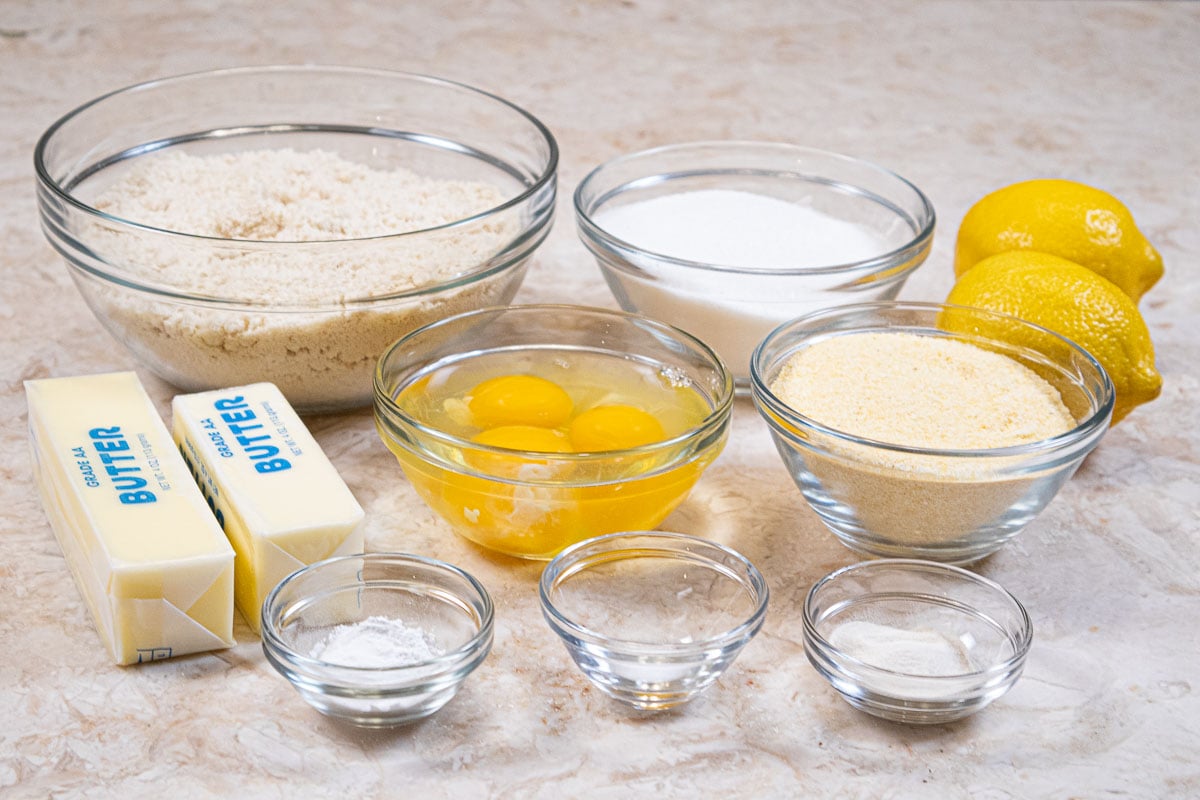
FRONT ROW: Baking powder, salt, xanthun gum
MIDDLE ROW: Butter, eggs, cornmeal
BACK ROW: Almond flour, sugar and lemons
Lemon Soak
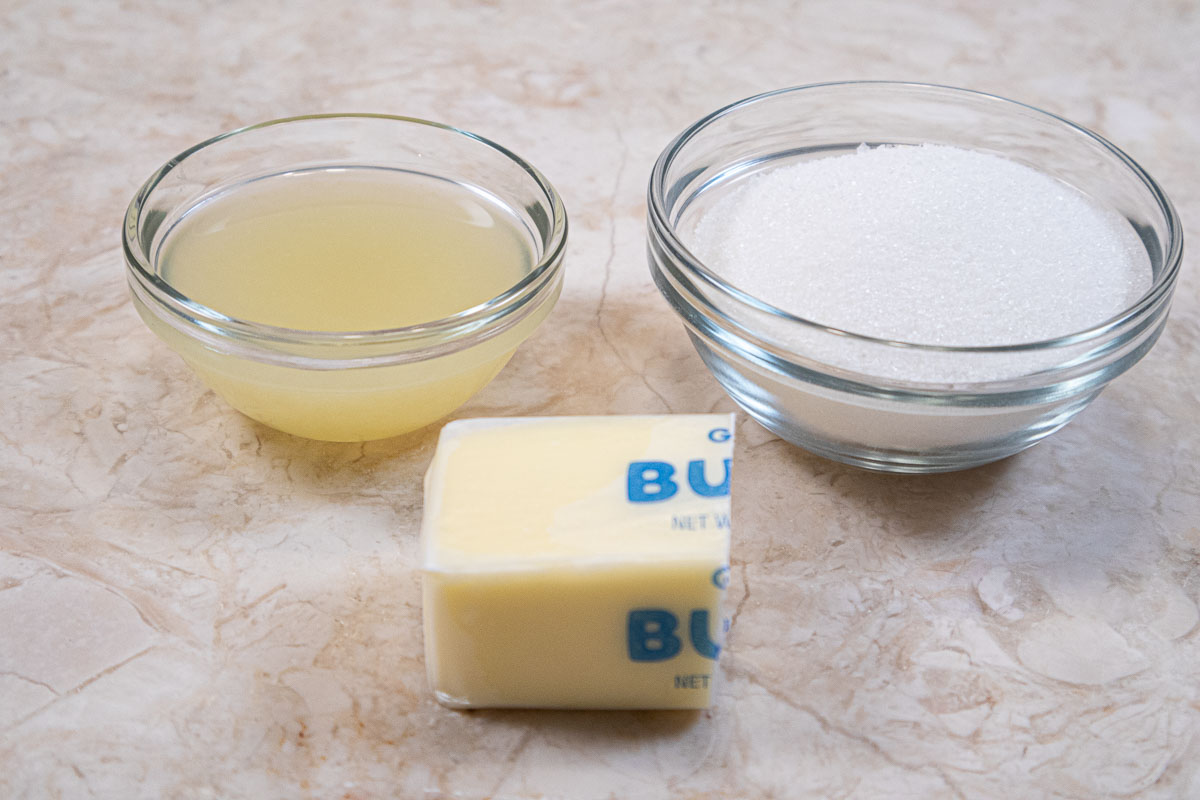
FRONT ROW: Unsalted butter
BACK ROW: Lemon juice, granulated sugar
Strawberries and Cream Topping
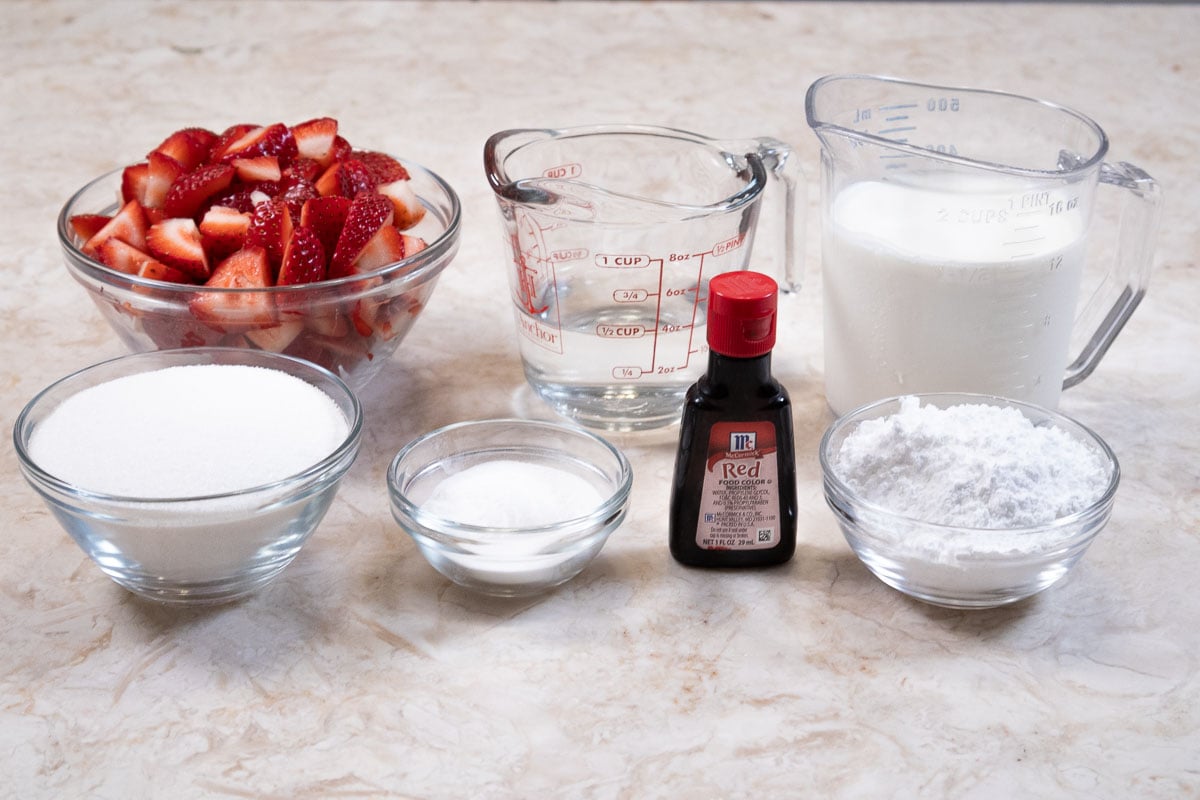
FRONT ROW: Granulated sugar, Instant Clearjel, red food coloring (optional) and powdered sugar.
BACK ROW: Strawberries, water, heavy cream
NOTE: Please follow the ingredients on the recipe card as some in the photo are different.
Please be sure to see the recipe card below for the exact ingredients and instructions.
Step by Step Instructions
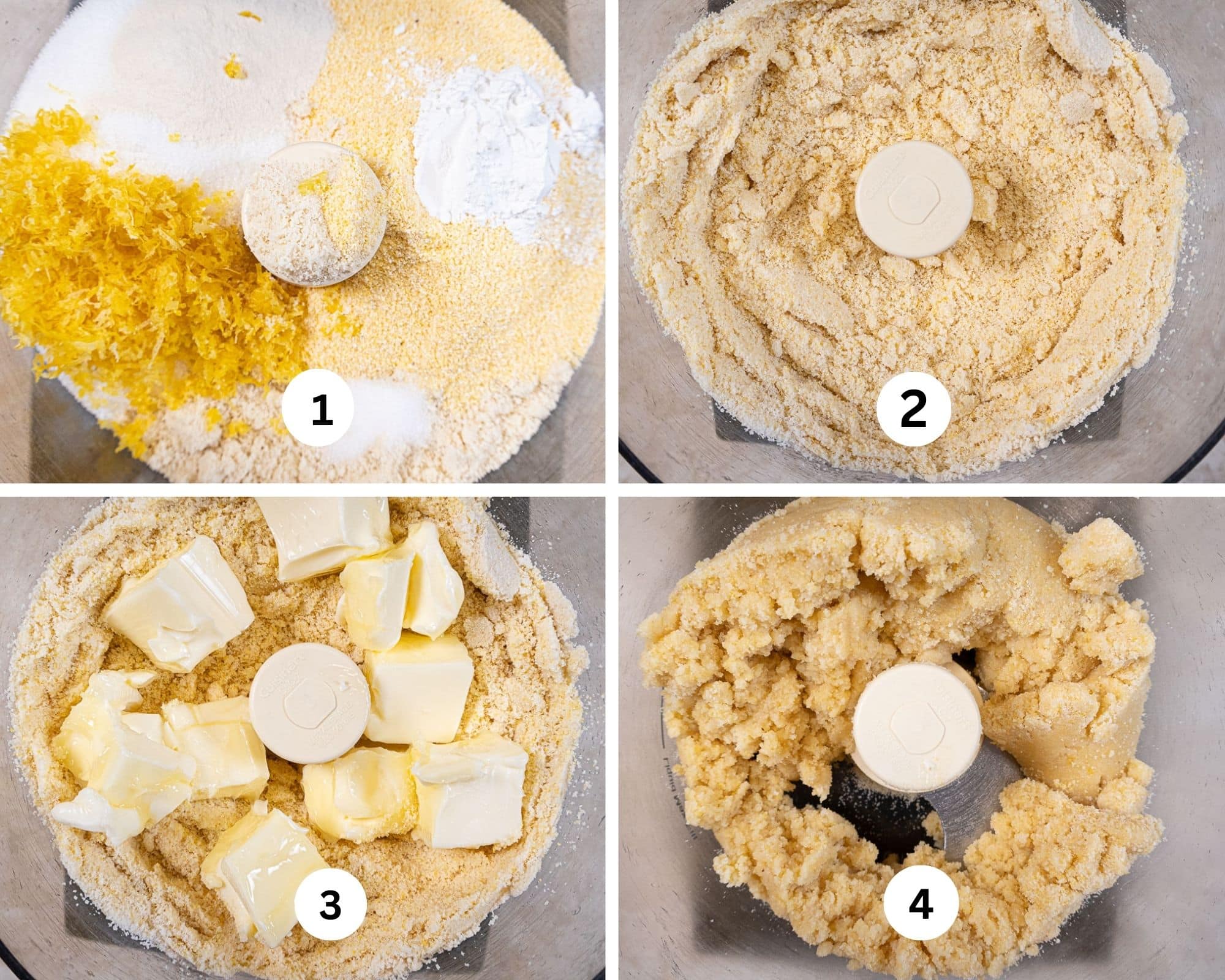
Step 1. Add the dry ingredients to the bowl of the processor. Step 2. Process to combine them. Step 3. Add the softened butter. Step 4. Process until it comes it comes together.
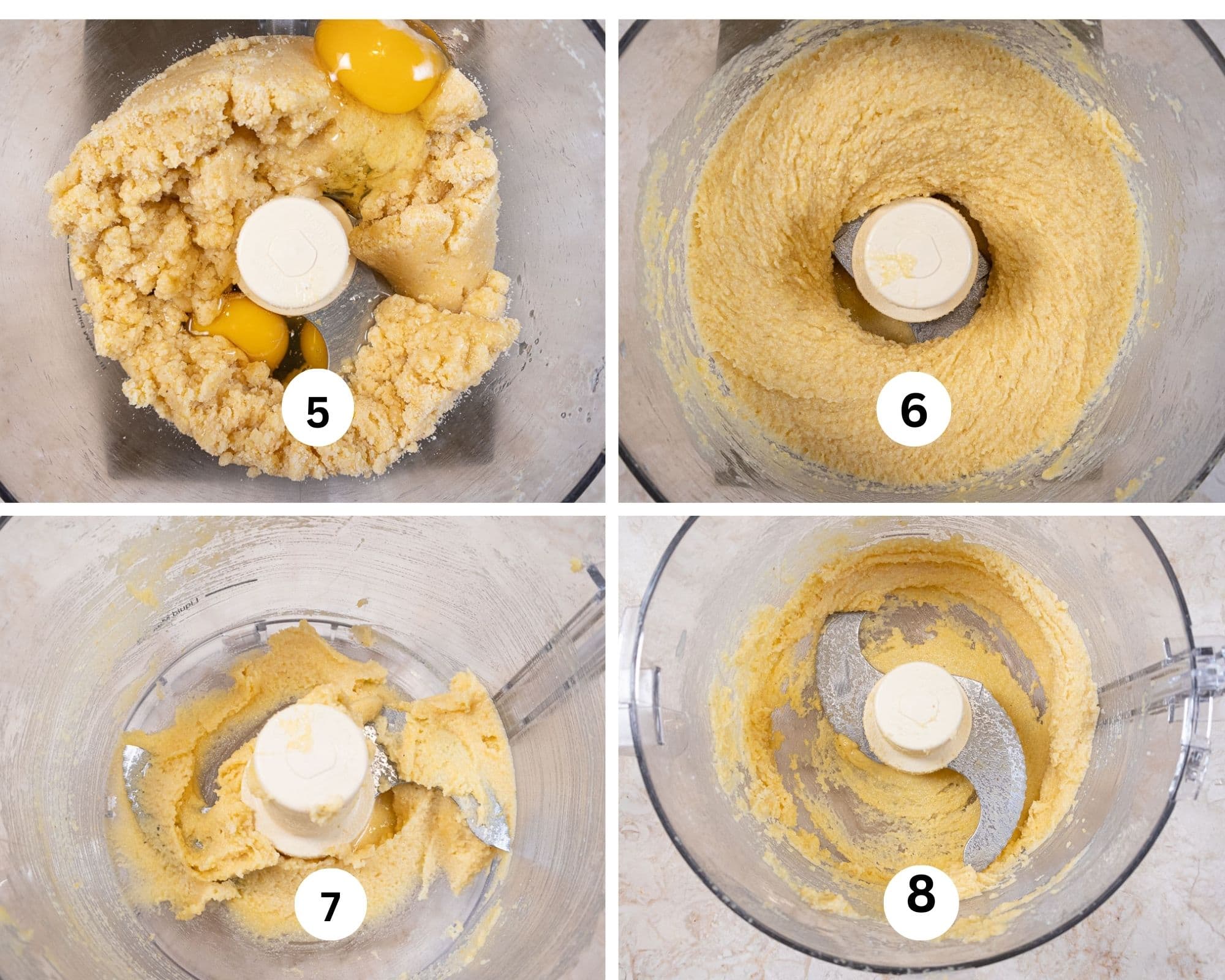
Step 5. Add the eggs to the processor bowl. Step 6. Process until it is completely mixed and forms a ring around the blade. Step 7. Remove as much of the batter as possible with a hard plastic spatula to the prepared pan. Step 8. Put the top back o the processor and process briefly. The remainder of the batter stuck to the blade will be flung to the side of the bowl by centrifugal force of the blade going around at high speed. Remove the blade and scrape out the remainder of the batter. For more tips when using the food processor see my post on Food Processor Tips When Baking.
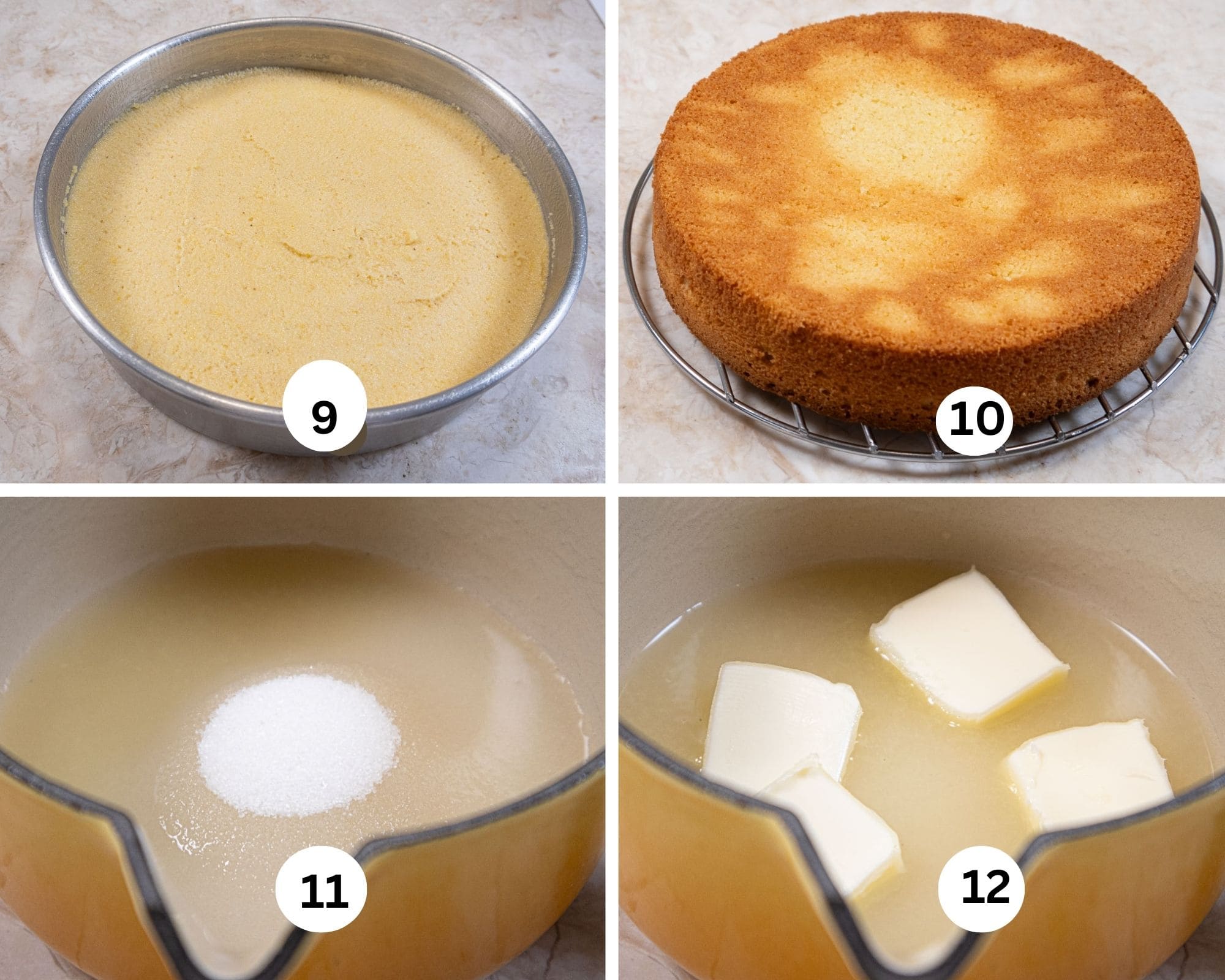
Step 9. Spread the batter evenly in the pan. Using a small offset spatula makes this easier. Step 10. Bake the cake as called for and turn upside down after briefly cooling. Step 11. Place the lemon juice and sugar for the lemon soak in a small saucepan. Step 12. Add the butter.
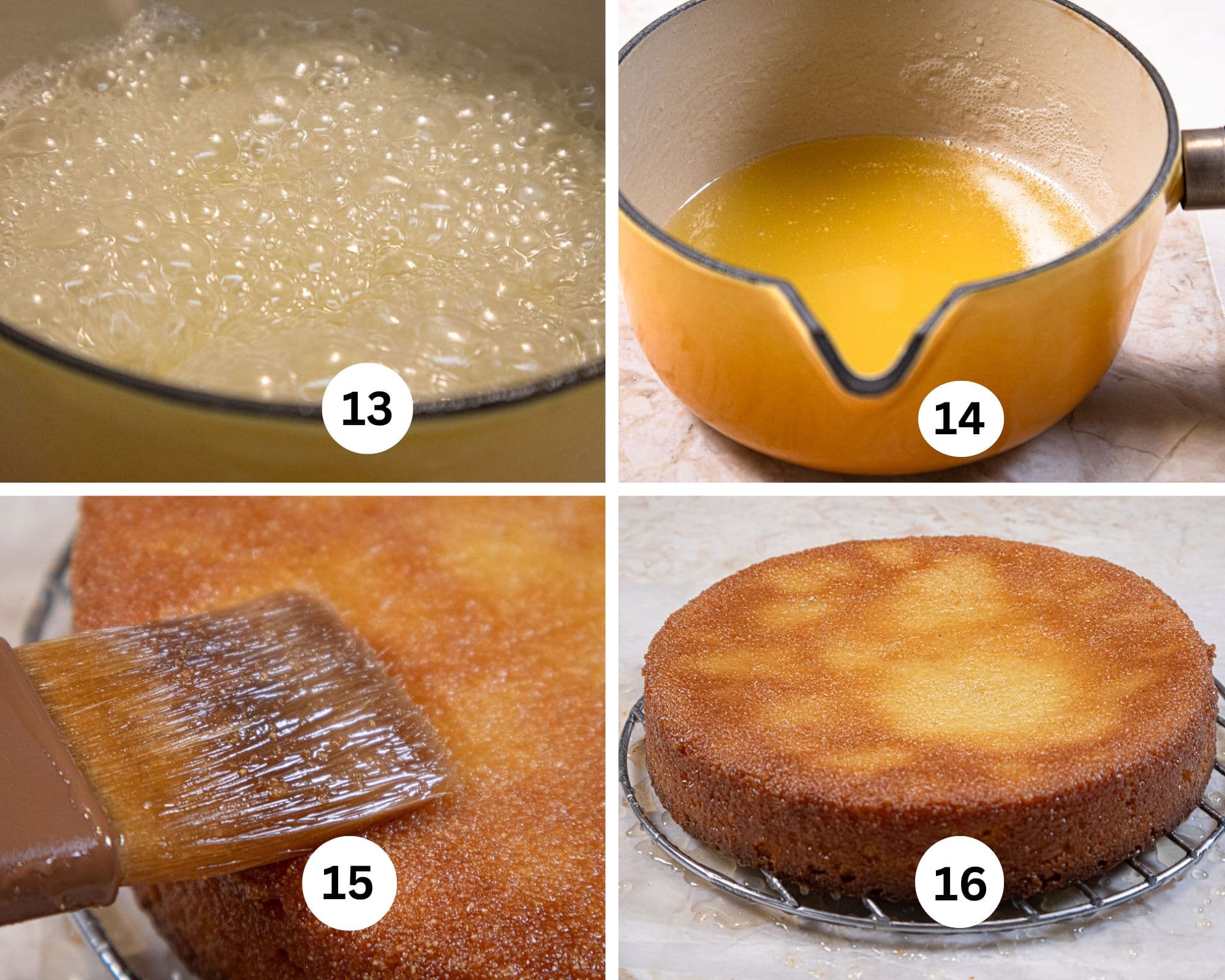
Step 13. Bring the soaking syrup to a hard boil. Step 14. Remove it from the heat and let the bubbling subside.Step 15. Brush it on the cake using it all. It will seem like a lot but it's important. Brush the outer sides of the cake also. Step 16. The cake after all of the the lemon soak has been brushed on.
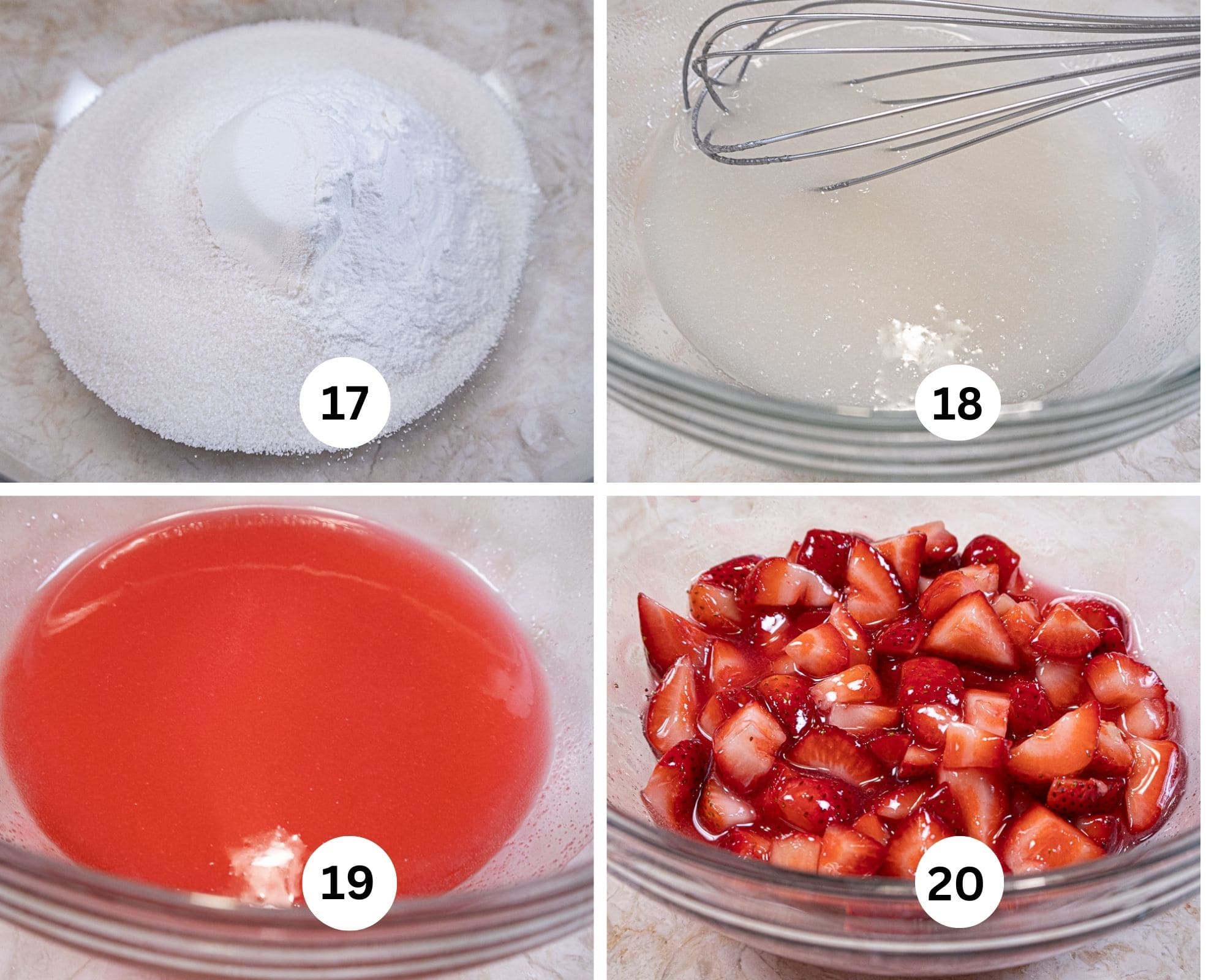
Step 17. Add the instant clearjel to the sugar. Step 18. Add the water and whisk together. Step 19. Add coloring if it is being used. Step 20. Stir in the strawberries. Set aside.
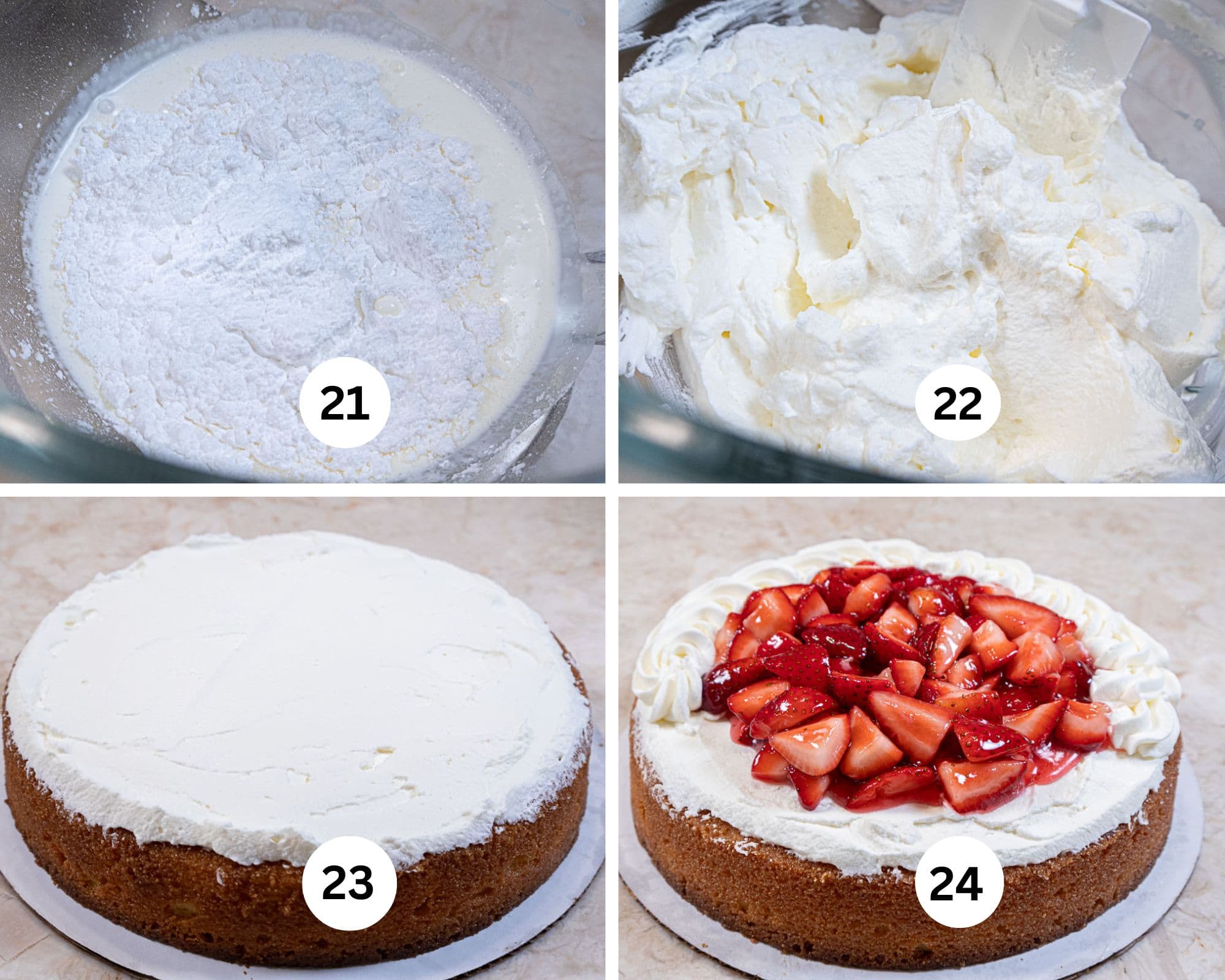
Step 21. Add the powdered sugar to the cream in a mixing bowl. Step 22. Whip the cream until stiff. Step 23. Spread half the whipped cream over the cake layer. Step 24. Pile the strawberries about 1 ½" in from the edge. Fit a piping bag with a #5 open star and pipe a wreath around the edge of the cake to finish it.
Recipe FAQS
Instant ClearJel is made of a single ingredient: modified food starch. ClearJel is made from corn that has been ground and processed to sort out specific starches with certain sought-after gelling properties.
No. Sure jell is based on pectin which is a different type of thickener.
Although it sounds like something made in a laboratory it's acutally made from fermented corn sugar that has been broken down by a plant bacteria called Xanthomonas campestri. What remains is dried and turned into a powder known as the food additive xanthan gum.
Zan-thun. As with other words starting with an X,they are pronounced as though the X is a Z.
Expert Tips
- I use the term "softened butter" where others use room temperature because everyones kitchen is not the same temperature. The ideal temp for creaming butter or mixing in is between 72°F and 74°F. This is where the butter and sugar can beat to their fluffiest.
- As unusual as this seems, slightly underbaking this cake is preferable to overbaking.
- Make sure to use instant clearjel as the regular will not work here.
- It seems like a lot of liquid for one layer of cake but it will absorb it all as there is no flour in this cake.
- Make sure to use the measurements for the clearjel thickener on the recipe card as they are different from the ingredients in the photo.

Looking for More Luscious Desserts?
If you love this Lemon Strawberry Cake, It would be hugely helpful and so appreciated it if you would take a moment to leave a rating below. Thank you.
Lemon Strawberry Cake
Ingredients
Lemon Cake
- 2 large lemons, zested and juiced
- 2 ½ cups almond flour (250 grams)*
- ¾ cup yellow cornmeal (115 grams)
- 1 cup granulated sugar (200 grams)
- 1 ½ teaspoons baking powder
- 1 teaspoon xanthan gum
- ¼ teaspoon salt
- 14 tablespoons unsalted butter, softened (205 grams)
- 3 large eggs
Lemon Soaking Syrup
- ⅓ cup fresh lemon juice from above
- ¾ cup granulated sugar (150 grams)
- 5 tablespoons unsalted butter
Strawberry and Cream Topping
- 1 quart strawberries
- ½ cup granulated sugar (100 grams)
- 4 teaspoons instant clearjel
- Red food coloring, optional
- ¼ cup cold water
- 1 ½ cups heavy cream
- ⅓ cup powdered sugar (45 grams)
Instructions
Lemon Cake
- Preheat the oven to 350°F. Line the bottom of a 9x2” round cake pan with parchment. Spray the paper and sides of the pan with a non-stick baking release. Set aside.
- If not weighing the almond flour, stir and spoon it before lightly spooning it into the cup. I encourage you to weigh for the best results.
- Zest the two lemons and squeeze the juice for the lemon soak.
- Combine the almond flour, cornmeal, granulated sugar, baking powder, xanthun gum, salt and lemon zest in the bowl of a processor. Process to combine the ingredients and grind the almond flour and cornmeal smaller.
- Add the softened butter and process until it comes together.
- Add the eggs and process until the batter circles the steel blade and the batter is completely mixed..
- Remove as much of the batter as possible with a hard plastic spatula. Replace the top on the processor and process briefly to sling the batter to the side of the bowl and off the blade. Remove the blade and add the batter to the pan. Smooth the top of the batter.
- Place the pan on the center rack of the oven and bake for 35 to 40 minutes until a tester comes out cleanly. Slightly underbaked is preferable to overbaking.
- Cool the baked cake in the pan for about 15 minutes. Turn the cake out onto a cooling rack leaving it upside down. Place a piece of waxed paper under the cooling rack.
Lemon Soaking Syrup
- While the cake cools in the pan, combine the lemon juice, sugar and butter in a small saucepan. Bring to a boil and brush or spoon onto the cake, including the sides, using all of it. Allow the sauce to soak in if it pools or puddles on top.
- Cool the cake completely.
Strawberries and Whipped Cream Topping
- Wash the strawberries and dry them. Cut them into medium size pieces. Set aside.
- Whisk the Instant Clearjel and sugar together in a large bowl. Whisk in the water. If using the food coloring, add it now. If the liquid seems overly stiff, add a bit of water to dilute it. Add the strawberries and stir to coat all of them. Set aside.
- Combine the whipped cream and powdered sugar in the bowl of a mixer. Beat until stiff peaks just start to form.
- Top the cake with half of the whipped cream. Place the strawberries about 1 to 1 ½ inch inside the top edge of the cake.
- Place the remainder of the cream in a piping bag fitted with a # 5 open star tip and pipe around the edges of the cake, enclosing the strawberry filling.
- Refrigerate until serving. This may be made the day before. Remove from the fridge while having dinner or a bit before serving.
Notes
Nutrition
Homemade Pizza Dough
By far and away this is the most flavorful Homemade Pizza Dough I have ever found. It takes minutes to make in the processor, rises in jiffy quick time and makes, pizza and flatbread crusts as well as an outstanding pocket bread discovered by accident. This is a great start for novices and not to be missed by any baker.
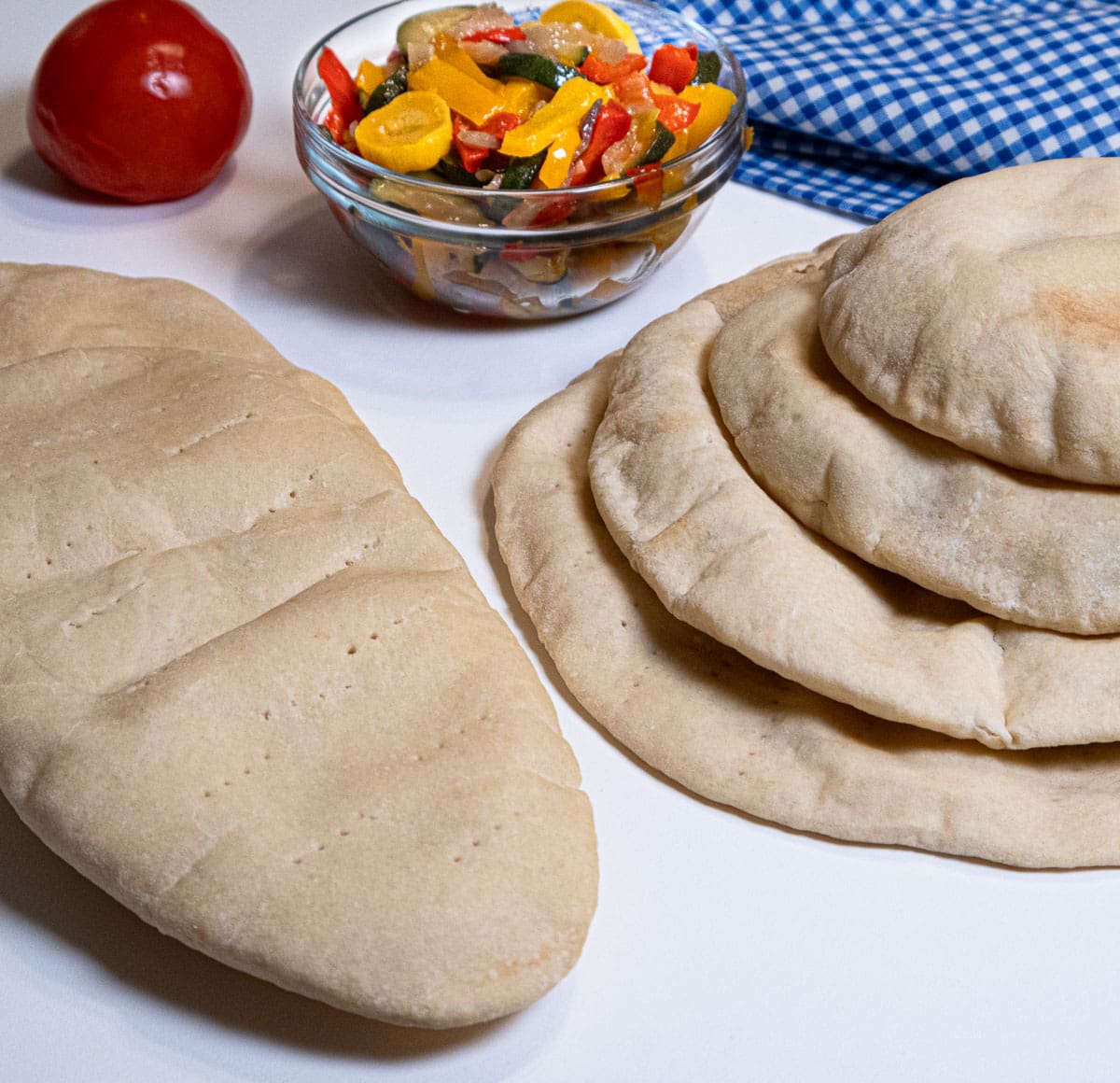
I wish I could take credit for this wonder but Erin McDowell came up with this recipe. Fine semolina flour is used which gives the crusts their marvelous flavor.
To say this is easy is an understatement. Quickly made, this pizza dough rolls out like dream without the spring back that is so noticeable in many yeast doughs.
Need some inspiration as to how to top these? See my International Flatbreads featuring Italian, Greek, Southwestern and French toppings. The Summer Vegetable Tart filling works well also.
[feast_advanced_jump_to]Why You Need To Make this Recipe
- This is the fastest yeast dough I've ever made. It takes minutes to assemble and make and then just 45 minutes to rise.
- Despite the fact it rises really fast, the taste of the crusts is outstanding. So many pizza crusts are flavorless carriers of pizza and flatbreads. Not so with this one.
- The crusts can be frozen and kept at hand in the freezer for really quick work night meals. Just shape and freeze or parbake (my favorite) to make things easier and quicker to make that meal.
Homemade Pizza Crust Ingredients

FRONT ROW: Instant yeast, olive or canola oil, salt
BACK ROW: All-purpose flour, semolina flour, water
Fine Semolina Flour is normally used for pasta or couscous in Italian and middle eastern recipes. It is golden colored flour and very high in gluten which also explains the quick rise and increased flavor of the dough.
Olive Oil or Canola Oil can be used. Olive oil provides the most taste.
Instant Yeast is preferred but active dry yeast is fine also. As a normal practice, instant or active dry, I add it to the liquid ingredients to give it a head start while I prep the rest of the ingredients. I started doing this because I once made a dough where it had all these tiny bumps all over it. I later realized that was undissolved instant yeast.
The water should be about 90°F for the best results.
Be sure to see the recipe card below for the exact ingredients and instructions.
Step by Step Instructions
To use the food processor, just follow the same steps. Process for 30 seconds are so to knead.
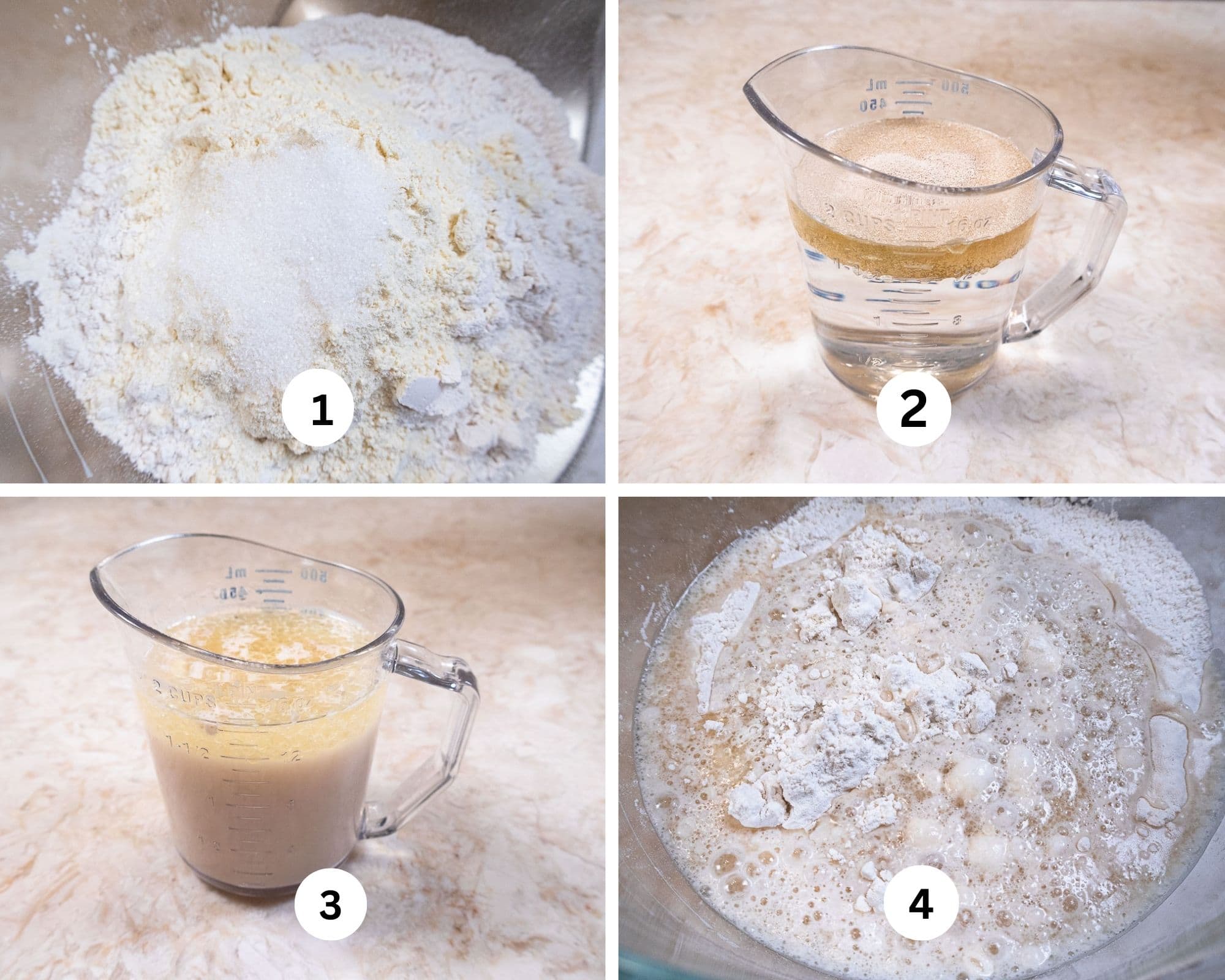
Step 1. Combine the flour, semolina flour, and salt in the bowl of a mixer. Step 2. Combine the water, oil and instant yeast. Step 3. Mix the liquids and yeast together and let it sit for a few minutes. Step 4. Give the liquids a good mix and pour over the flour in the mixing bowl.

Step 5. Mix slowly with a dough hook if available until all is moistened. Raise the speed to 3 or 4 or as called for by your mixer and beat for 3 minutes. Remove the dough, place the top of the dough in the bottom of the mixer and mix again for a minute. Step 6. Spray the container in which the dough will rise and set aside. Remove the dough and knead it once or twice to make a smooth ball. Place it in the container and flatten it. Step 7. Cover the dough with plastic wrap. Mark the time on top. Step 8. Let it rise until it has doubled in bulk.
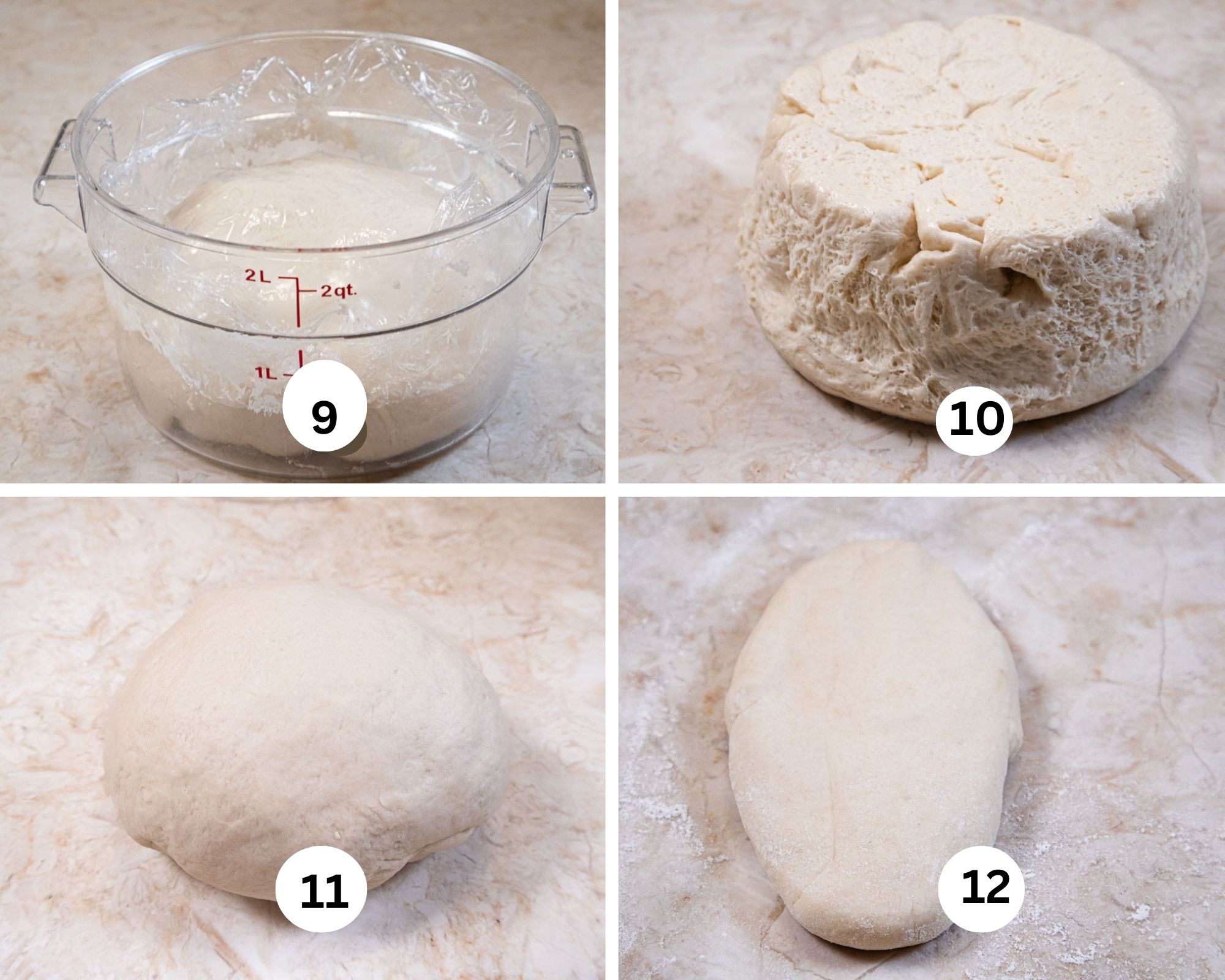
Step 9. If using later, deflate the risen dough, recover with plastic wrap and store in the fridge for up to 3 days. Step 10. When ready to use, turn out. Here I have turned it out without deflating because I wanted you to see the dough will rise again in the fridge. Step 11. Shape into a round if rolling out into a circle. Step 12. Shape into an oval if rolling into an oval.
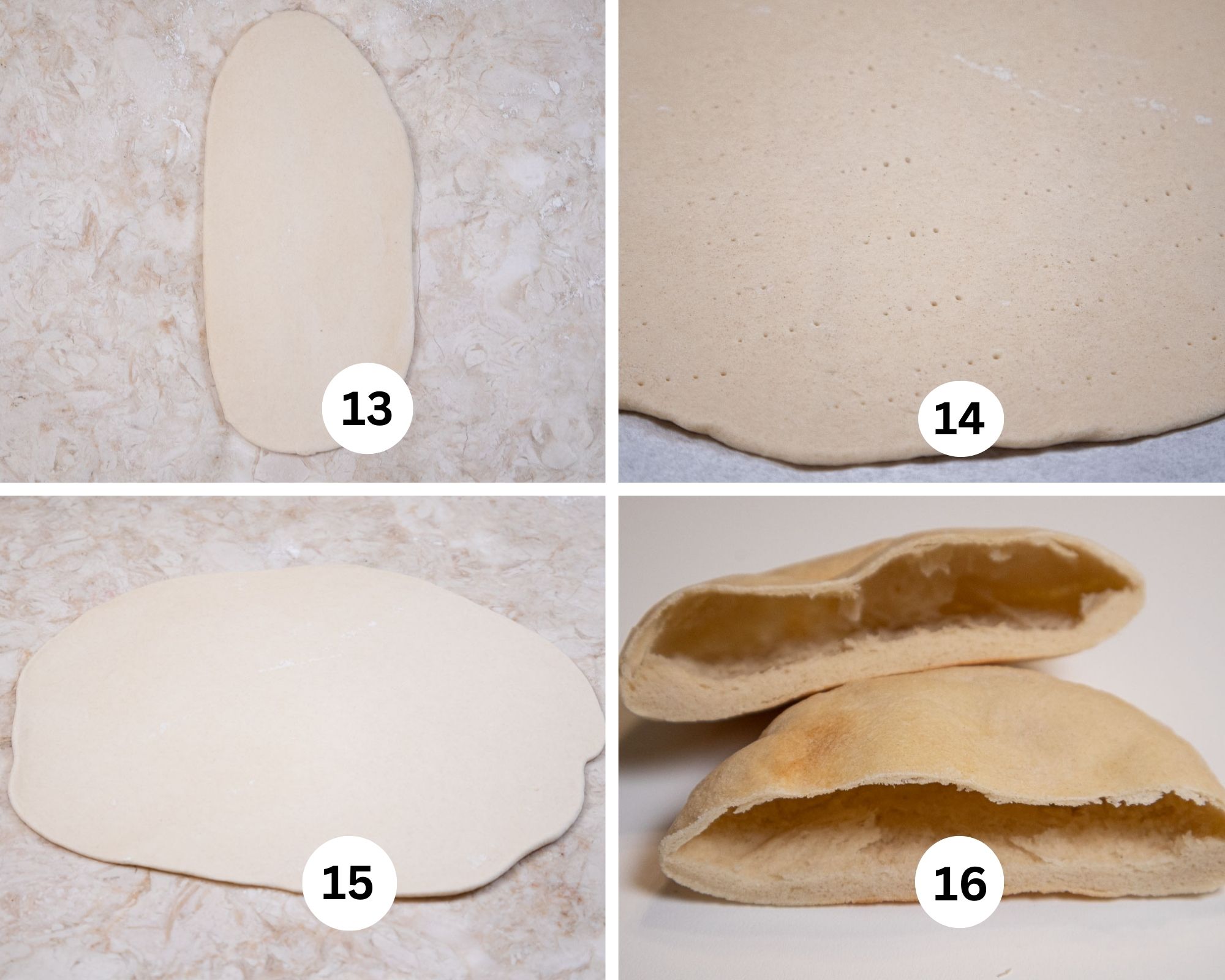
Step 13. Roll the oval into a long oblong. I generally divide the dough into 4ths, using one each for the flatbread or pizza crust. It will be thin. However, any amount of dough can be used. If you like a thick crust, divide into 3, thinner, divide into 5 or 6. Step 14. Prick the dough with a fork. After doing several this way, they seem to rise anyway so I guess it doesn't really matter. Step 15. For a pizza crust, roll a quarter of the dough into circle. Step 16. I discovered that rolling 75 grams of the dough into a 7" round and baking yielded a perfect "pita pocket". After baking, it will be quite high. As you can see it makes a perfect pocket.
Recipe FAQS
Not necessarily but it's a great when topping and finishing baking. By baking the crust halfway through, it only needs to be topped and baked to heat everything through.
The oil helps the crust roll out easily and also keeps the finished crust moist if using a thick crust.
All-purpose flour is fine, adding semolina makes it better. Bread flour because of it's higher protein count is ideal.
Expert Tips
- While the type of oil used, olive or canola, is not a big factor, using it is. It adds elasticity to the dough and allows the dough to stretch and not spring back.
- Semolina flour adds a dimension to this dough that other crusts do not have. However, if you can't find it, substitute all-purpose flour in the same amount.
- Unbaked or par baked crusts can be frozen. Freeze the crusts until hard and wrap well in foil. They will last for several months. Thaw at room temperature, top and bake.
- Sea Salt is ideal but table salt can be substituted by reducing it to 1 ¼ teaspoons.
Other Interesting Breads
If you love this Homemade Pizza Dough, It would be hugely helpful and so appreciated it if you would take a moment to leave a rating below. Thank you.
Homemade Pizza Dough
Ingredients
- 3 ½ cups all-purpose flour (480 grams)
- ⅓ cup semolina flour (60 grams)
- 1 ½ teaspoons fine sea salt
- ⅓ cup olive or canola oil
- 1 ½ cups warm water (90° F)
- 1 tablespoon instant yeast (9 grams)
Instructions
- *If using table salt, reduce to 1 ¼ teaspoons
- Fit the electric mixer with a dough hook if available. If using a processor, follow the same steps.
- Add the all-purpose flour, semolina flour and salt to the bowl.
- Mix the water, oil and yeast together. Let sit for a few minutes. Add it to the flour mixture. Mix on low to moisten the flour. Raise the speed of the mixer to 3 or 4 as your mixer suggests and beat for 3 minutes. Stop the mixer and remove the dough. Turn the topside of the dough to the bottom of the mixer and mix for another minute.
- Spray a container at least twice the size of the dough with a non-stick baking release. Set aside.
- Remove the dough from the mixer and knead several times. Shape into a round ball. Place it in the sprayed container. Cover with plastic wrap and place the top on the container. Let rise for about 45 to 60 minutes until doubled. Use immediately or place in the fridge up to 3 days.
- Preheat the oven to 425°F. Place the oven rack on the lowest rung. Divide the dough into 4 pieces about 230 grams each. For flatbreads roll into a 12" x 6" oval. For pizza crusts roll into a 10" round. Do not let them rise.
- To par bake, place them on a parchment lined baking sheet and bake for about 8 to 10 minutes. They most likely will have some really puffed up areas. They should only be about half baked and without much color. Immediately cover with a folded tea towel until cooled. This keeps the crusts pliable. If they are still puffed up, gently deflate them so the crust is even.
- These can be cooled, wrapped well in foil and frozen for several months. To use, position the oven rack in the middle. Simply top them as desired, finish with cheese and bake in a 400°F oven for 10 to 15 minutes. If the crusts are frozen when thawed, add addtional time.
- Additional sizes are 6 crusts at 155 grams each for 10" x 5" ovals or 8" crusts. 200 grams makes a 12" crust. Last but certainly not least use 75 grams rolled into 6" rounds to make the "pita pockets" .
Notes
Nutrition
Apricot Crumb Coffee Cake
This Apricot Crumb Coffee Cake is one of the most amazing coffee cakes I have ever made. An almond paste crumb topping teams up with an apricot filling in a rich, 60 Second Brioche that keeps moist for four or five days at room temperature as long as it is covered. You read that right, no 20 minutes beating in the mixer, just a quick 60 seconds in the processor after the ingredients are assembled.
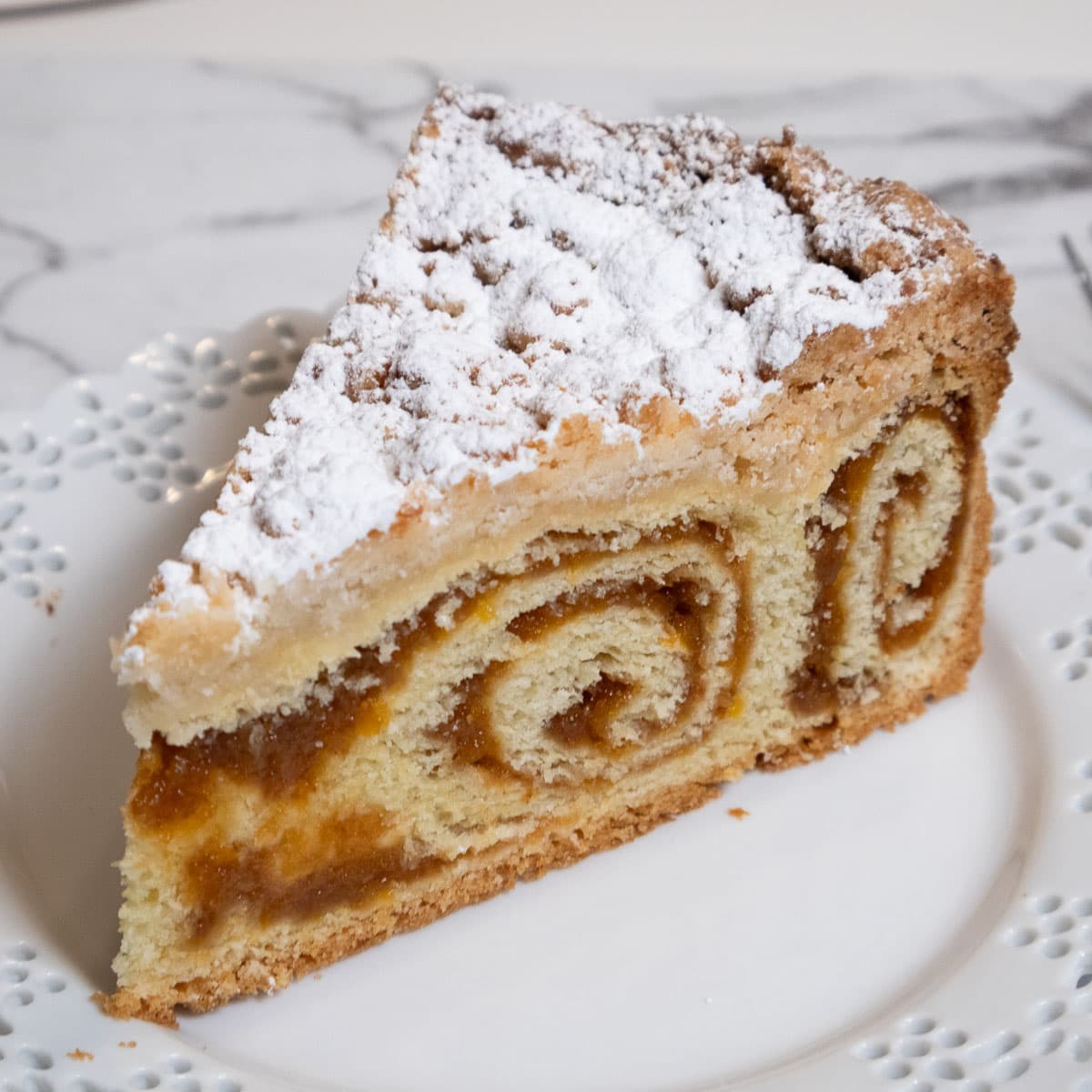
The apricot filling is actually an easily made pastry filling called lekvar which comes from the Hungarian pastry repertoire known for its extraordinary pastries. Because apricots are light in color, I added a couple of teaspoons of cocoa to it. It doesn't have any effect on the flavor but really makes a dramatic difference in the appearance.
The crumbs are enhanced with almond paste which is also really easy to make at home at a fraction of the price if buying it.
If you love crumb cakes as much as I do, visit the New York Style Crumb Cake, and the Easily Made Raspberry Ripple Coffee Cake. Just want the crumbs for a favorite cake of yours, see my Crumb Topping post.
[feast_advanced_jump_to]What makes this recipe exciting
- Every component of this recipe is really easy to make and can be made ahead. The apricot filling can be made a week ahead, the crumb filling 3 or four days ahead and the brioche up to 3 days ahead.
- The brioche is so easy to roll out when it is cold. No spring back when rolling as there is with many yeast doughs.
- This is a show stopper of a coffee cake. And while usually served in the morning or early afternoon with coffee or tea, this can be served anytime, anywhere.
- The coffee cake lasts at room temperature for days as long as it is covered.
- And how can you go wrong with a butter and egg enriched dough encasing an intense apricot filling and finished with almond paste crumbs?
Recipe Ingredients
Brioche
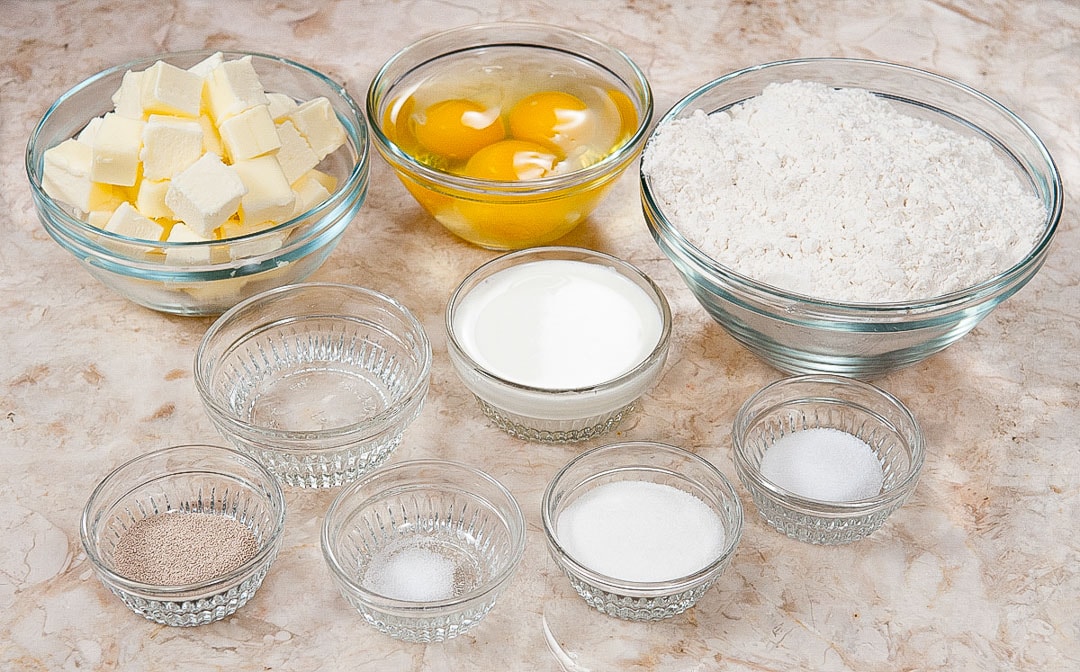
FRONT ROW: Yeast, salt, sugar for the dough, sugar for the sponge
MIDDLE ROW: Water, half and half
BACK ROW: Unsalted butter, eggs and bread flour
Apricot Filling

FRONT ROW: Vanilla, powdered sugar, unsalted butter
BACK ROW: Dried apricots, water
Almond Paste Crumbs
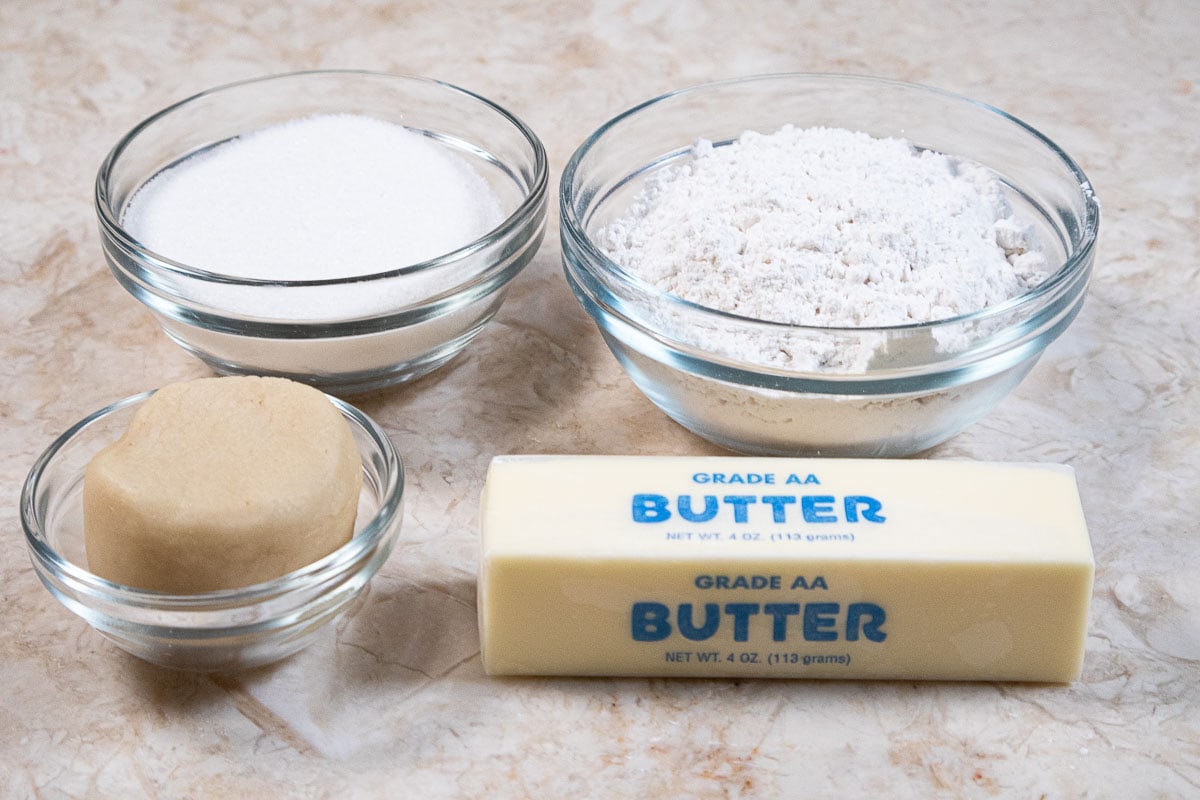
FRONT ROW: Almond Paste, unsalted butter
BACK ROW: Granulated sugar, cake flour
Be sure to see the recipe card below for the exact ingredients and instructions.
Step by Step Instructions
Brioche Pastry
Please see 60 Second Brioche for Step by Step Pictures. The brioche may be made ahead and refrigerated up to 3 days.
Apricot Filling
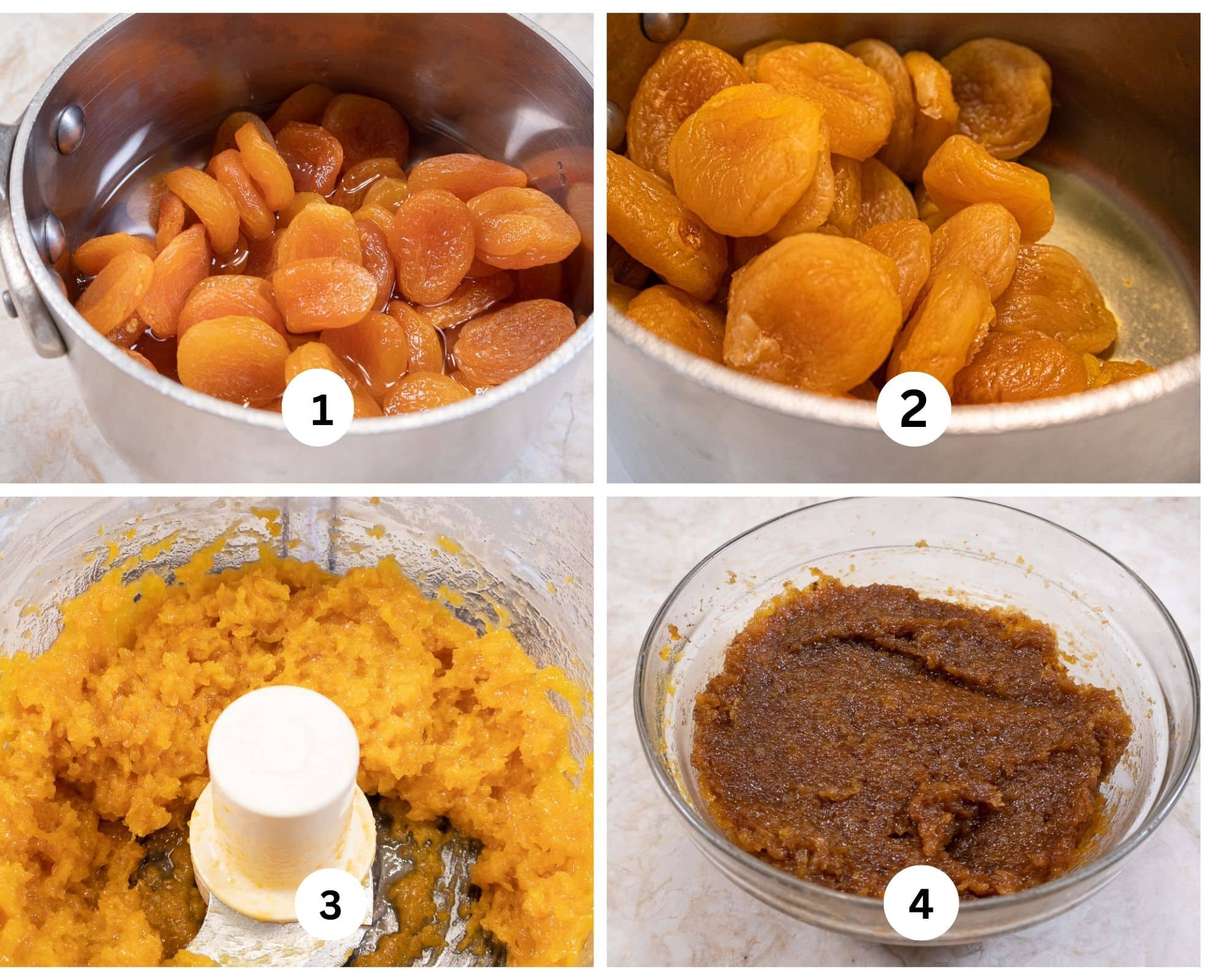
Step 1. Place the dried apricots in a small saucepan with the water. Step 2. Bring to a boil and boil until only a small amount of liquid is left. The apricots will be plumped up. Step 3. Place the apricots with whatever water remains and the rest of the ingredients in the bowl of a processor. Process until smooth. Step 4. The cocoa is added to the apricots to deepen their color. This may be made a week ahead and refrigerated covered.
Almond Paste Crumbs
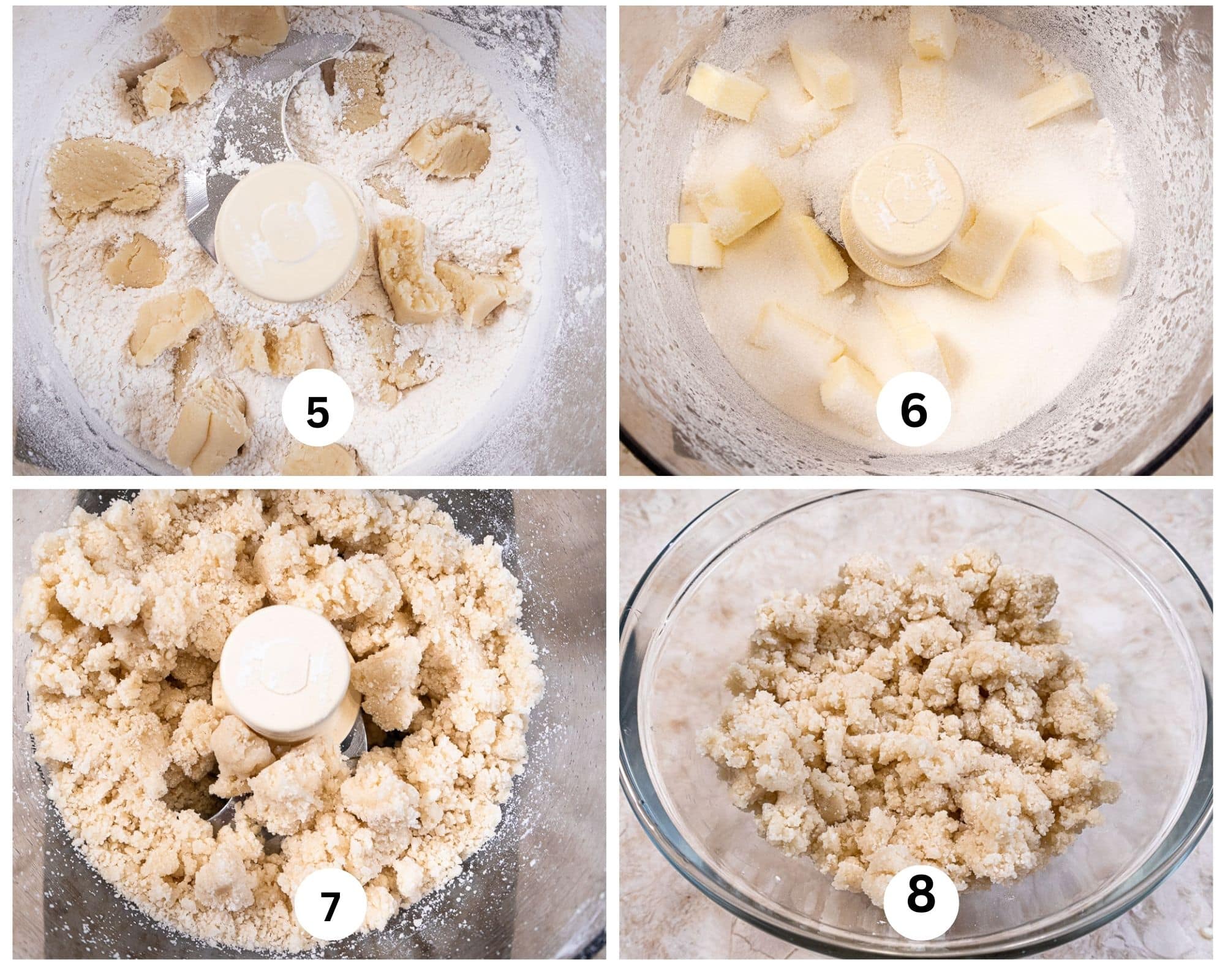
Step 5. Place the flour in the bowl of the processor. Tear the almond paste into pieces and place in the processor with the flour. Process until the almond paste is indistinguishable. Step 6. Add the sugar and cold butter. Step 7. Process briefly until it just starts to come together. Switch to pulses and pulse until crumbs form. Do not over process or it will become a solid mass. Step 8. Transfer to a bowl and refrigerate until needed. These can be made days ahead and refrigerated covered.
Assembly
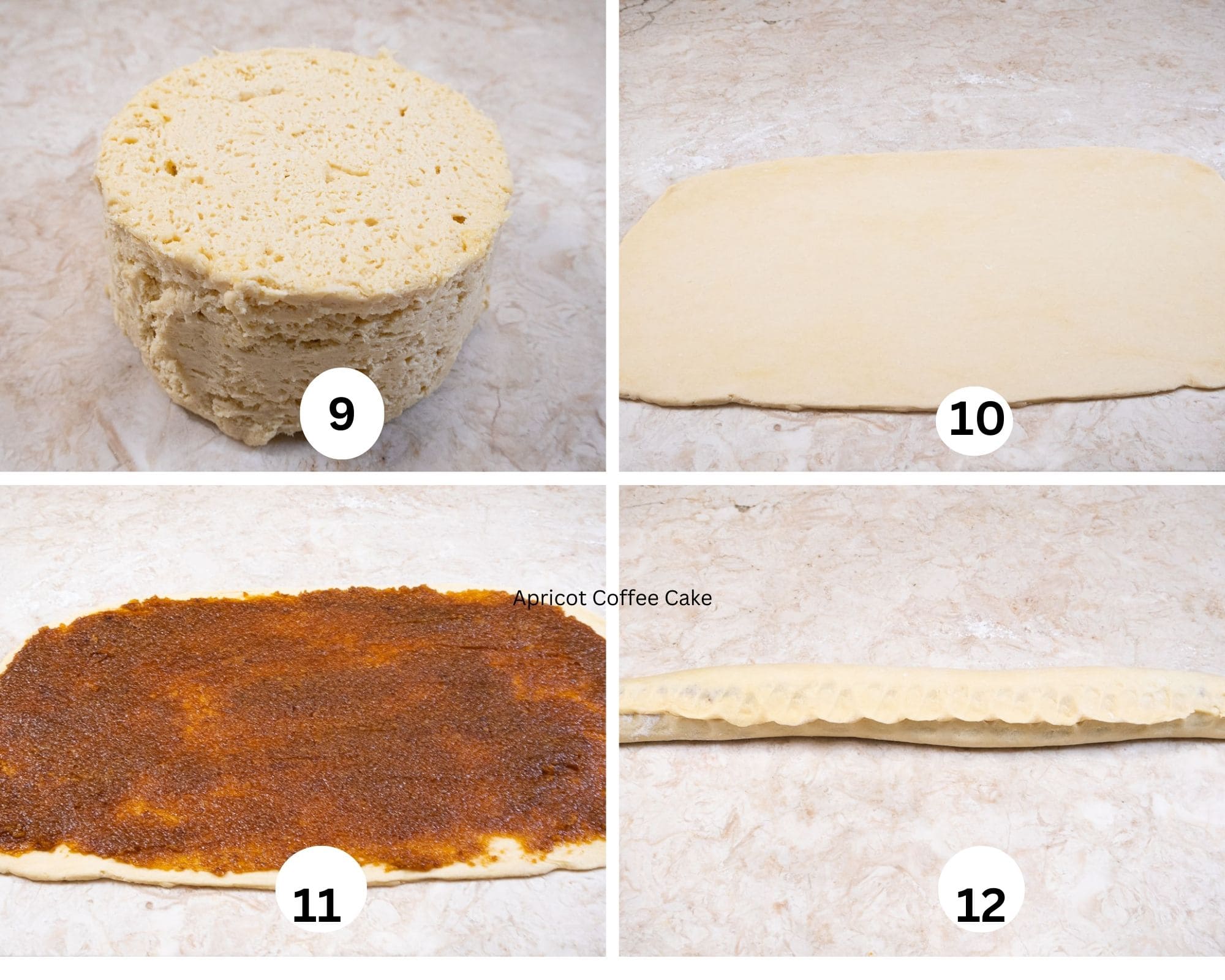
Step 9. Turn the cold brioche out of its container. Step 10. Flatten it and on a very lightly floured surface, roll it into a 20" x 11" rectangle. Roll the pastry so the long side is horizontally in front of you to make it easy to roll up. Step 11. Spread the apricot filling over the brioche to within ½" of the edges. Step 12. Roll it tightly from the 20"side and pinch the bottom seam together very well. Roll it into a 30" cylinder.
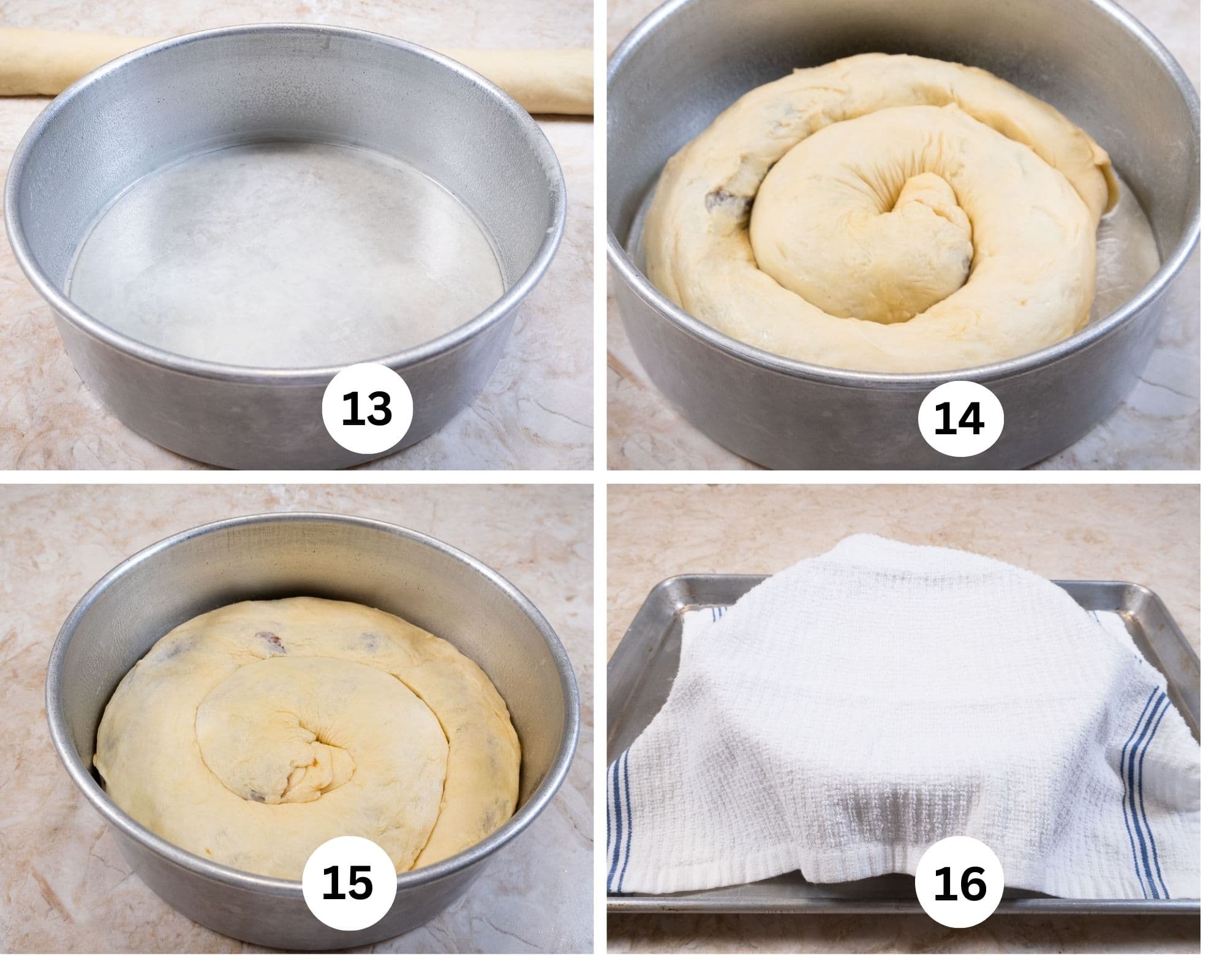
Step 13. Spray a cheesecake or springform pan with a non-stick baking release. Step 14. Starting in the center of the pan, coil the filled brioche around, tucking the end underneath. Step 15. Press the coffee cake down to flatten it and fill the pan. Step 16. Cover the pan with a towel. I normally don't like to cover rising dough or pastry with film. If it comes to the top and needs to go further, it can be restricted by the film. In this case it doesn't matter because it won't get to the top when fully risen.
This can be slow going since everything should be very cold. To help this along, I place the coffee cake on a rimmed pan and place it in the oven with the door shut. I turn the oven on to 350°F for exactly 1 minute. Don't get distracted and forget to turn the oven off. I did once and never left the oven again. Turn the oven off, leave the light on. Check in about an hour to make sure the temperature of the oven has not exceeded about 80 to 85 degrees. If it does, prop the door open with a wooden spoon.
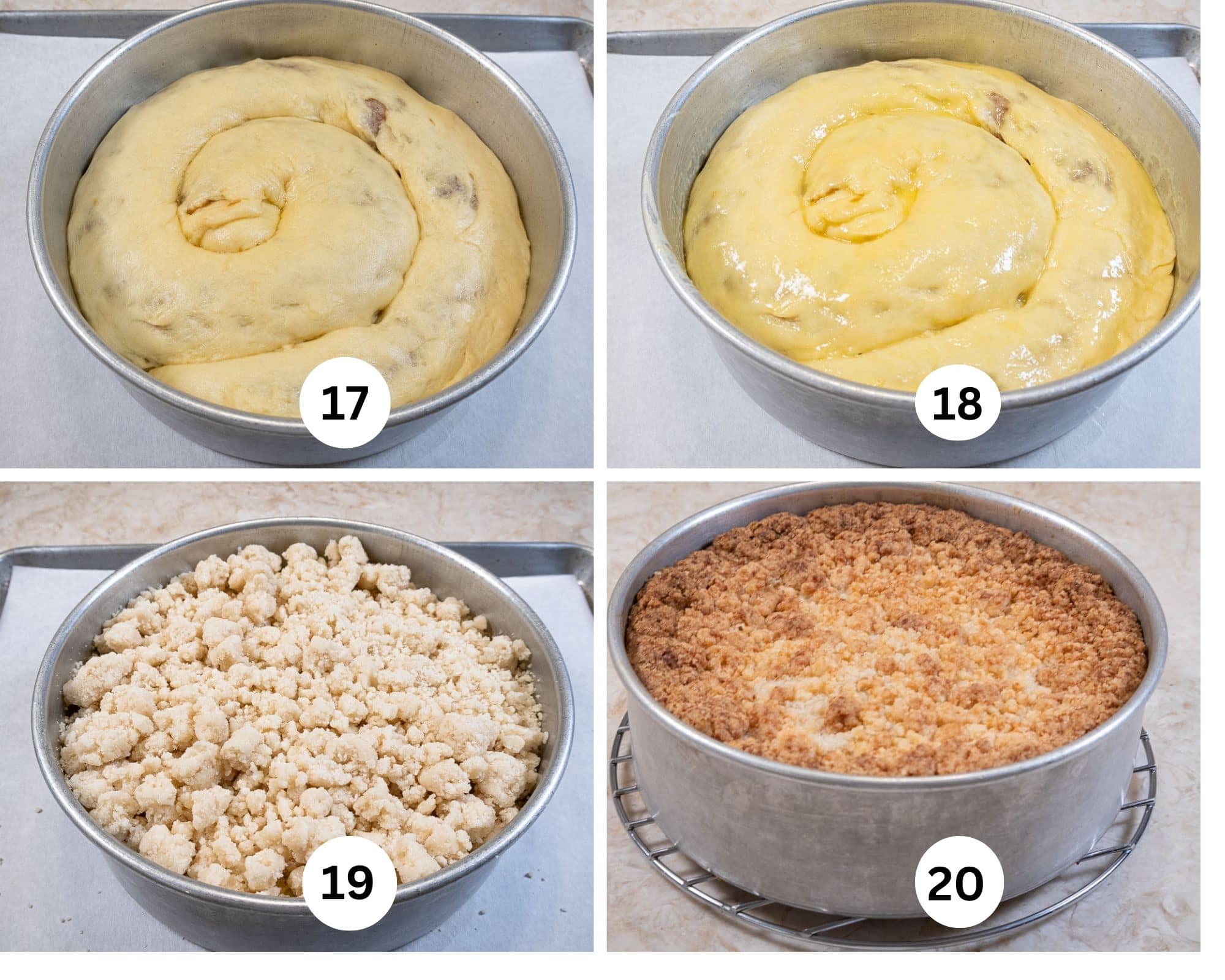
Step 17. Let the coffee cake rise until doubled. Step 18. Brush the coffee cake with egg wash. Step 19. Cover the egg wash with the almond paste crumbs. Step 20. Bake as directed. Cool it until barely warm and release the sides of the pan.
Recipe FAQS
Lekvar is a thick sweetened fruit paste using apricots or prunes as a filling for pastries that won't leak when baked. It is better than jam fillings than can leak. Lekvar is a much loved Hungarian ingredient used in their baking. It is easily made at home.
Enriched doughs include eggs, sugar and often milk or cream. They are prized for their taste, lightness of the dough and heights to which they can bake.
According to Wikipedia, "American Coffee cake—also referred to as gugelhupf or Austrian German: kaffekuchen—evolved from other sweet dishes from Vienna. In the 17th century, Northern/Central Europeans are thought to have come up with the idea of eating sweet cakes while drinking coffee." Others refer to coffee breaks taken at work when people would bring cakes to eat while drinking their coffee.
Expert Tips
- Every part of this coffee cake can be made ahead. In fact, the coffee cake itself can be made, baked and frozen. Thaw at room temperature and refresh in a 350°F oven, well wrapped in foil, for 20 to 30 minutes.
- Any leftover almond paste can be frozen to use later in other desserts.
- The brioche should be very cold when working with it. If at any point it starts to become warm, place it on a parchment line baking sheet and refrigerate or freeze briefly to harden the butter again.
- A sponge is made for the brioche because the high percentages of fat and sugar in yeast doughs inhibit fermentation. For this reason, most rich yeast doughs are mixed by the sponge method so it gets a head start in the fermentation process by mixing a small amount of yeast, water and flour together. This small amount is allowed to rise and then added to the remaining ingredients allowing the yeast which has multipled many fold to work more quickly.
- It is easiest to fill and work if it is rolled out with the long, horizontal side facing you.
- Use the oven proofer to speed the rise of the shaped coffee cake. It should double in a couple of hours. If rising at room temperature, it will take at least that long or longer.

More Lucious Coffee Cakes
If you love this Apricot Crumb Coffee Cake, It would be hugely helpful and so appreciated it if you would take a moment to leave a rating below. Thank you.
Apricot Crumb Coffee Cake
Equipment
- 9x3" Cheesecake or springform pan
Ingredients
Brioche
- ¾ cup unsalted butter (170 grams or 1 ½ sticks)
- 1 teaspoon active dry yeast
- 3 tablespoons warm water
- Pinch granulated sugar
- 2 ¼ cup bread flour (315 grams)
- 1 ½ tablespoons granulated sugar
- ½ teaspoon salt
- 3 large eggs, room temperature
- ¼ cup half and half or light cream
Filling
- ¾ pound dried apricots
- 1 cup water
- 5 tablespoons butter (75 grams)
- ½ cup powdered sugar (65 grams)
- 1 ½ teapoons vanilla
- 2 teaspoons cocoa, optional
Almond Paste Crumb Topping
- 1 cup cake flour (125 grams)
- ½ cup almond paste (125 grams)
- ⅔ cup granulated sugar (130 grams)
- ½ cup unsalted butter (114 grams)
Assembly
- 1 large egg, well beaten
Instructions
Brioche
- Cut the butter into small pieces by cutting the stick in half lengthwise, the cutting it into half inch pieces. Place it back in the refrigerator to keep cold.
- Make a sponge by dissolving the yeast and pinch of granulated sugar in the 3 tablespoons warm water. Add 3 tablespoons flour from the measured amount of 2 ¼ cups flour. Stir together to completely mix the ingredients. Cover with film and set aside to double or more while preparing the rest of the ingredients.
- In the processor bowl fitted with the steel blade, place the remaining flour, salt and sugar. Process 5 seconds to mix.
- Place the cold butter in a circle over the flour. Process the butter until it is indistinguishable, about 20 seconds. Scrape down and process about 5 seconds more.
- Place the eggs in a circle over the dry ingredients, pour the cream over the eggs, and add the sponge, also in a circle. Process approximately 20 to 25 seconds until the ball which initially forms breaks down into a creamy, evenly dispersed batter in the processor bowl. Do not stop processing until the batter is formed, as the motor may stall when you try to restart it. If the ball doesn't break down, that's fine as long as everything is mixed well.
- The batter will be very sticky and that is as it should be. Remove from the processor bowl and place in an ungreased bowl. The batter has very little elasticity and is easily managed with a large plastic pastry scraper. Cover securely with plastic wrap and allow to rise until double in bulk about 2 to 2 ½ hours. Stir down and refrigerate overnight. It may or may not rise again and that is fine. Punch down and use as directed. It can stay in the refrigerator for up to 3 days before using.
Apricot Filling
- Place the apricots and water in a small saucepan and bring to a boil. Reduce to a simmer and, stir frequently until most of the water is gone.
- Place the apricots and remaining ingredients, except the cocoa, in a processor bowl and process until smooth. Set aside to cool. Stir the cocoa in. This may be made a week ahead and stored in the refrigerator. Remove to room temperature before using.
Almond Paste Crumb Topping
- Place the flour and almond paste (either home made or bought) in the bowl of a processor. Process until the almond paste is indistinguishable.
- Add the sugar and butter and process until it begins to form crumbs. Switch to pulses and pulse only until large crumbs form. Remove them to a bowl and refrigerate until needed.
Assembly
- Spray a 9x3" cheesecake or springform pan with a non-stick baking spray. Set aside.
- Remove the brioche from the refrigerator, punch down, pat into a rectangle on a lightly floured surface and roll into a 20x11 inch rectangle so the long horizontally in front of you to make rolling up easier.
- Spread the filling evenly over the brioche within ½" of the edges. Roll up tightly from the 20"side and pinch the seam securely together. Roll and gently stretch it until it is 30" long. If it is very soft at this time, coil it up on a parchment line baking sheet and chill to firm up. Do not let it freeze.
- Starting in the middle of the pan, coil the roll around towards the outer edge of the pan. Press it down to flatten and fill the pan.
- Cover with a towel and let rise until doubled in bulk. Because everything is cold, this could take 4 to 4 ½ hours to rise. This step can be sped up by placing the covered coffee cake on a rimmed baking sheet and placing in the oven. Turn the oven on to 350°F for exactly 1 minute. Turn the oven off. Leave the light on in the oven and check back in about an hour. Make sure the oven is no hotter than about 85 to 90 degrees max. If it is, prop the door open with a wooden spoon. The coffee cake should be risen in about 2 hours or so.
- Remove the cake from the oven and heat it to 375°F.
- When the coffee cake is full risen, brush it with the beaten egg and distribute the almond paste crumbs evenly over the brioche.
- Bake for 45 to 55 minutes until the top is browned. A tester is difficult here because the filling stays moist and clings to the tester. Truth to tell, I turned one into concrete before I figured it out. If the top begins to brown too quickly, tent it with foil.
- Cool until barely warm and release the cake. Dust with powdered sugar to serve
- Store covered at room temperature for up to 4 days. It can also be made and frozen, without the powdered sugar for several months well wrapped. Thaw completely at room temperature. Refresh by wrapping in foil, leaving a small hole in the top, for about 5 to 30 minutes.
Notes
Nutrition
FRENCH ONION TART
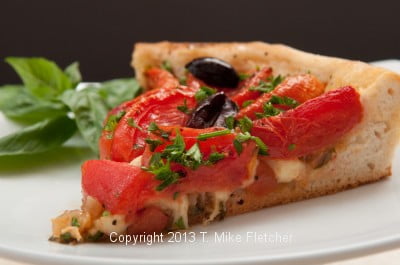
With tomatoes practically falling off the vines, this is the perfect time to make a French Onion Tart. When I had the take out shop, this was a huge hit. We also made them in half sheet pans, trimmed the edges, cut them into 1 ½ squares for appetizers. This tart is an example of savory pastries which are as much a part of baking and pastry as sweet.
The crust is as easy to make as falling off a log. While the recipe gives instructions for the food processor, it is just as easy to make in a mixer putting all the dry ingredients in the bowl and the wet ingredients on top. After making the dough it needs to rise. After it rises you can punch it down and refrigerate it for the next day. When ready to use, just push it out into the pan and up the sides. I definitely suggest refrigerating it while you prepare the filling as you don't want it to rise at this point. It bakes up beautifully browned and crisp with great flavor.
Fresh basil is essential for this French Onion Tart to come to life. Whenever I use fresh herbs in a baked item, I bury them under other ingredients so they retain maximum flavor. If they are sprinkled on top, they will just dry out, so you might as well use the dried version to start.
If the yeast crust has not been done ahead of time, start it first. I start the onions next since they take a bit of time. The next step is to start prepping the tomatoes, olives, and basil. After the onions are finished, cool them to lukewarm. Assemble, bake, wait a few minutes then cut the French Onion Tart for a phenomenal food experience. This is good, hot, warm or room temperature.
Several other savory tarts you might enjoy are the: Brie and Bacon Tart, Goat Cheese Pesto Tart, and Spanakopita, A Spinach Pie From Greece.
TART CRUST
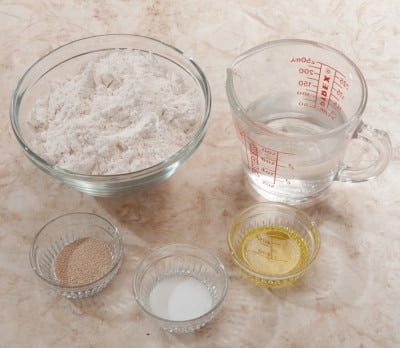
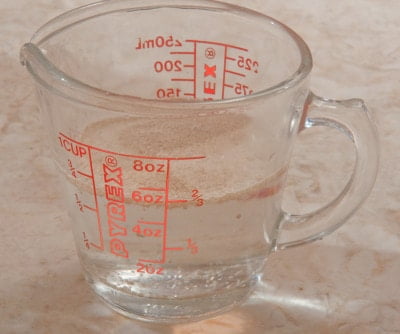
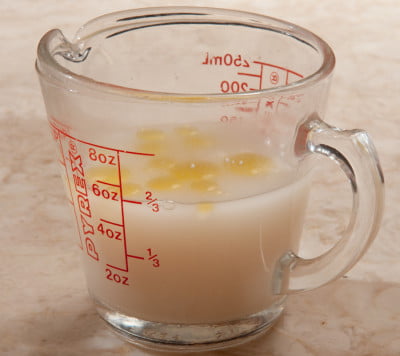
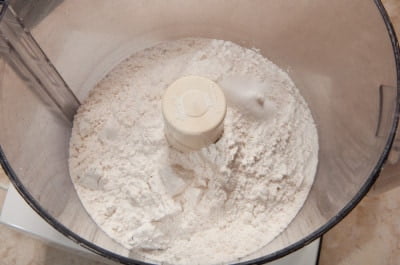
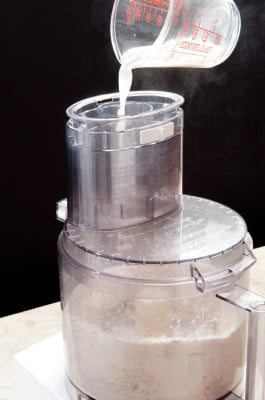
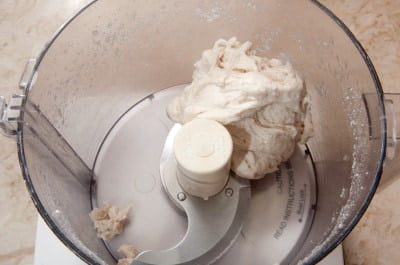
Combine yeast with water. Stir to dissolve yeast. Add oil. Add the flour and salt to a processor bowl. Process briefly to mix. With the machine running pour the yeast water down the feedtube. Process until a ball forms and then for 30 seconds.
Dump the dough out on a lightly floured board
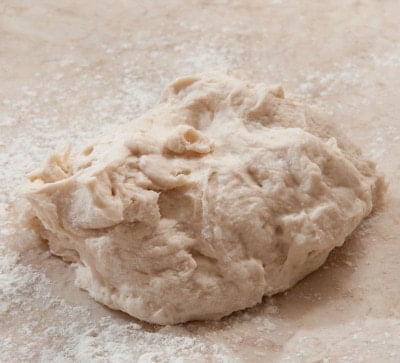
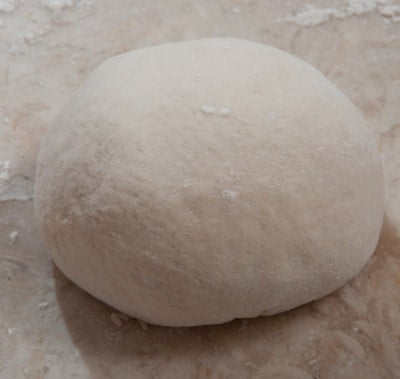
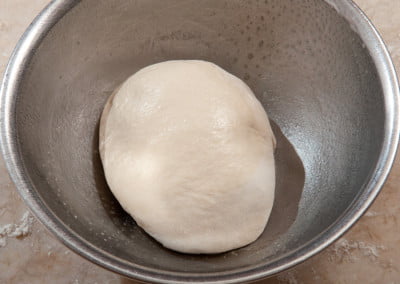
Knead into a smooth ball. Place in a sprayed bowl, turn to coat both sides, cover with plastic wrap and let rise until doubled. At this point, it may be refrigerated overnight if desired.
FRENCH ONION TART FILLING
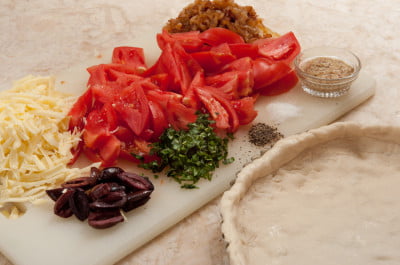
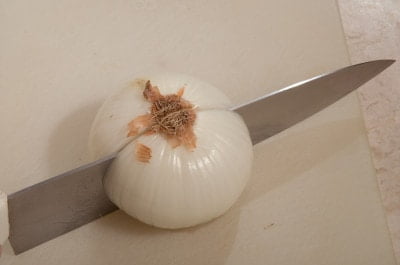
Slice onions thinly into half-moons.
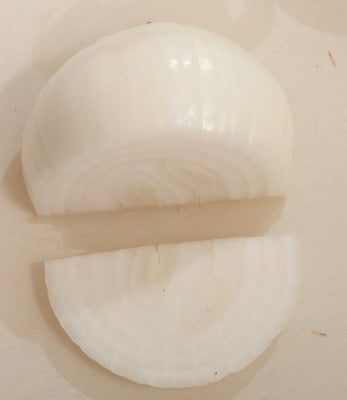
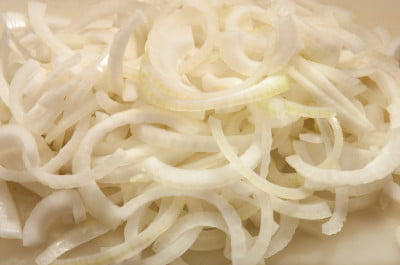
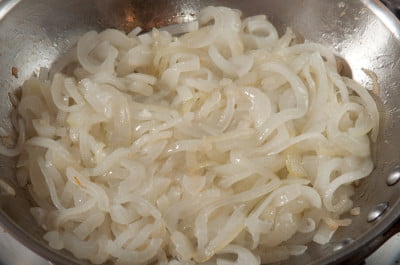
Heat oil in a pan. Add the onions. Turn in the pan to coat onions with oil. Saute over medium heat until deep golden brown.
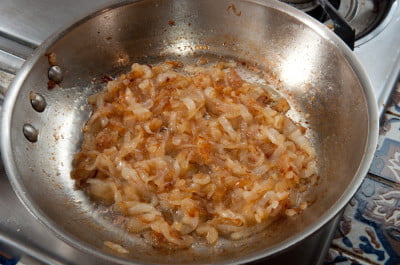
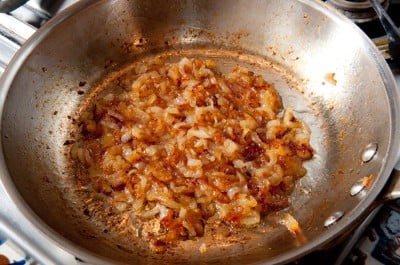
Lower heat as onions start to color. It takes approximately 45 to 60 minutes for them to cook. If they get too dry before they are done, add a bit more oil. Cool onions.
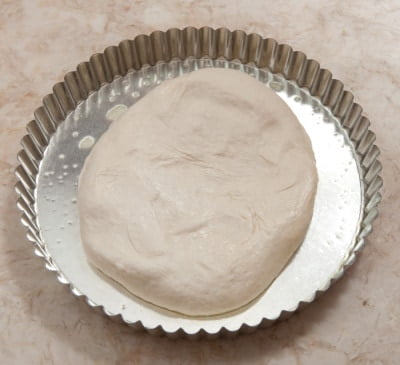
Punch dough down. Press dough into the bottom
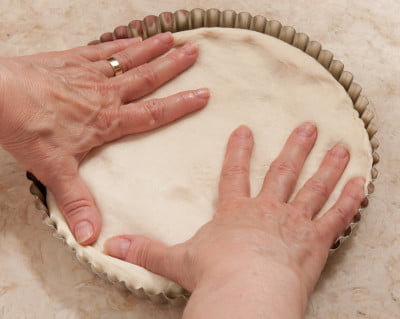
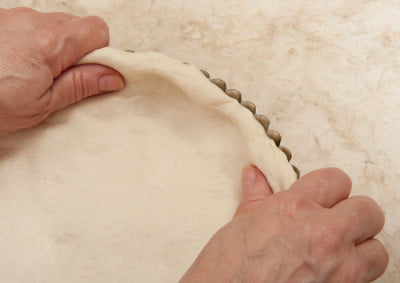
and up sides of a sprayed 9” quiche pan with removable bottom.
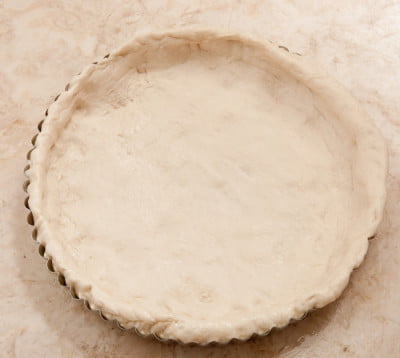
Place in refrigerator while finishing tart.
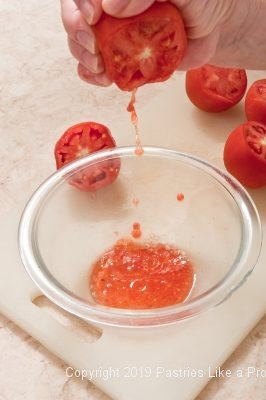
Cut tops off tomatoes. Squeeze the tomatoes to remove most of the juice but do not distort the tomato.
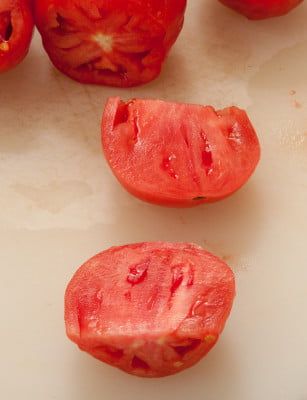
and cut in half.
Cut each half into wedges.
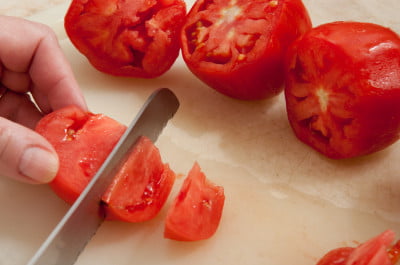
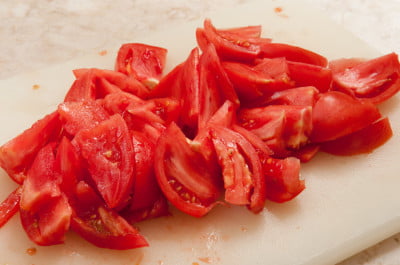
Set aside.
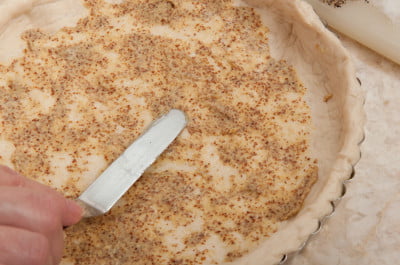
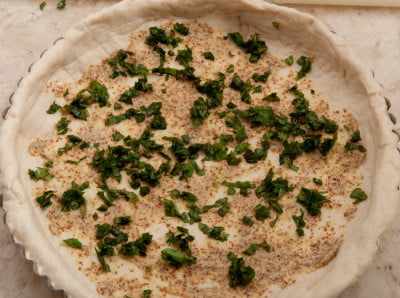
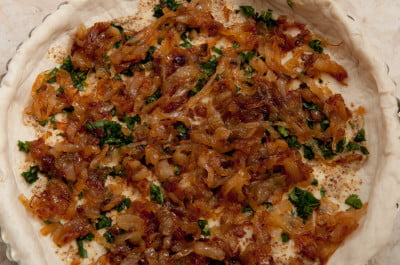
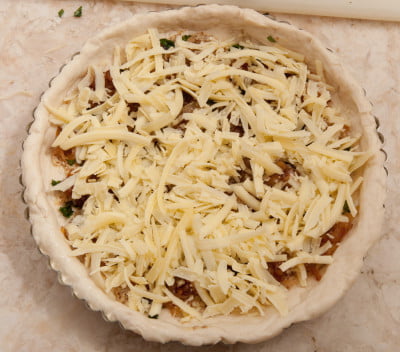
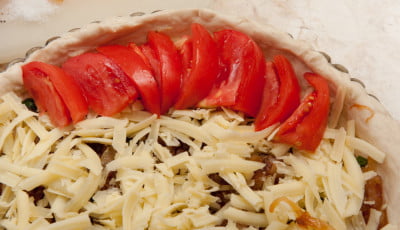
Spread the mustard over bottom of the crust. Sprinkle with basil.Top with onions, then cheese. Arrange tomatoes in a flower pattern.
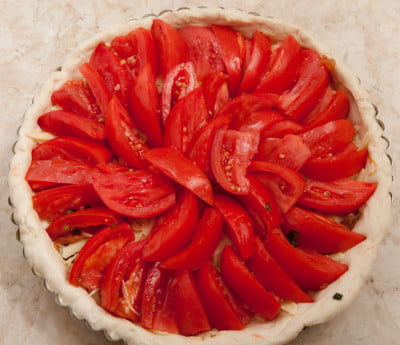
Sprinkle with olives, ½ teaspoon salt, and ¼ teaspoon pepper.
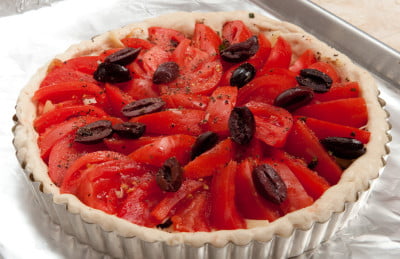
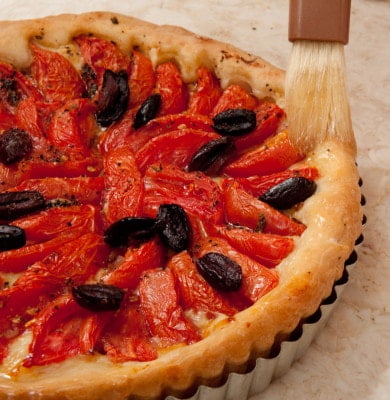
Bake at 375°F for approximately 40 to 45 minutes until the crust is a medium golden brown. Brush with garlic oil.
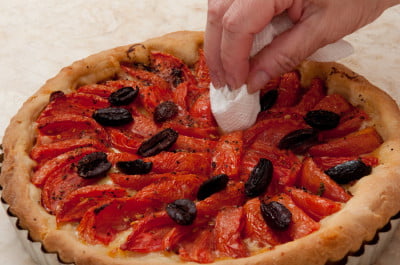
If the top appears to have lots of juice, blot with a paper towel.
Sprinkle with parsley just before serving.
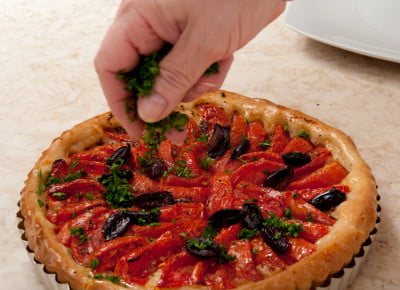
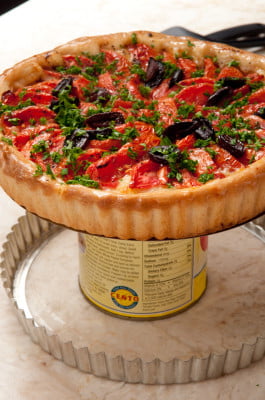
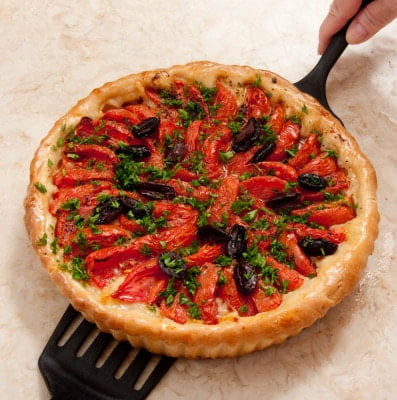
Release the tart from the pan by placing it on a fat can. The side should drop down.Transfer to a serving dish with two wide spatulas or pancake turners. Our name for these were "lifter-uppers."
This can be made the day ahead, cooled and refrigerated.
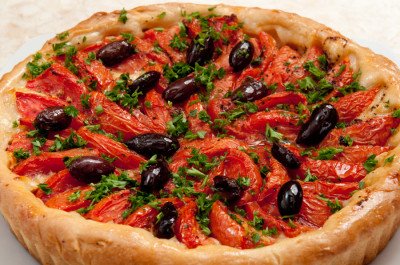
This French Onion Tart should be served warm or at room temperature. To reheat microwave for 20 to 30 seconds per piece. To reheat whole, place in a 375°F oven for about 20 minutes. Brush with garlic oil and sprinkle with parsley before cutting and serving.
If you enjoyed this Savory Tart, see
French Onion Tart
Ingredients
Tart Crust
- ½ teaspoon yeast
- ⅔ cup water (100 degrees)
- 1 teaspoon olive oil
- 1 teaspoon salt
- 1 ½ cups all-purpose flour (210 grams)
Tart Filling
- 1 lb Spanish Onions (454 grams)
- 3 tablespoon olive oil
- 4 teaspoon plain or grainy dijon mustard
- 4 ounces grated Guyere cheese (114 grams)
- 1 lb roma or plum tomatoes or any small tomato (454 grams)
- 7 kalamata olives, seeded/halved
- 1 tablespoon shredded fresh basil or more to taste
- Coarse black pepper to taste
- salt as needed
- garlic oil as needed
- 2 tablespoon minced parsley
Instructions
Tart Crust
- Combine yeast with water. Stir to dissolve yeast. Add oil. Add the flour and salt to a processor bowl. Process briefly to mix. With the machine running, pour the yeast water down the feedtube. Process until a ball forms and then for 30 seconds.
- Dump the dough out on a lightly floured board. Knead into a smooth ball. Place in a sprayed bowl, turn to coat both sides, cover with plastic wrap and let rise until doubled. At this point, it may be refrigerated overnight if desired.
Tart Filling
- Preheat oven to 375 degrees. Slice onions thinly into half-moons. Heat oil in a pan. Add the onions. Turn in the pan to coat onions with oil. Sauté over medium heat until deep golden brown.
- Lower heat as onions start to color. It takes approximately 45 to 60 minutes for them to cook. If they get too dry before they are done, add a bit more oil. Cool onions.
- Punch dough down. Press dough into the bottom and up sides of a sprayed 9” Quiché pan with removable bottom. Place in refrigerator while finishing tart.
- Cut tops off tomatoes. Squeeze the tomatoes to remove most of the juice, but do not distort the tomato and cut in half. Cut each half into wedges. Set aside.
- Spread the mustard over the bottom of the crust. Sprinkle with basil. Top with onions, then cheese. Arrange tomatoes in a flower pattern.
- Sprinkle with olives, ½ teaspoon salt, and ¼ teaspoon pepper. Bake at 350°F for approximately 40 to 45 minutes until the crust is a medium golden brown. Brush with garlic oil.
- If the top appears to have lots of juice, blot with a paper towel. Sprinkle with parsley just before serving.
- Release the tart from the pan by placing it on a fat can. The side should drop down. Transfer to a serving dish with two wide spatulas or pancake turners. Our name for these were "lifter-uppers." This can be made the day ahead, cooled and refrigerated.
Notes
Nutrition

MORE SAVORY RECIPES
Easy Decorated Shortbread Cookies
These Easy Decorated Shortbread Cookies came about when I was asked to appear on a TV program to decorate Easter cookies. Many years ago when I had my bakery, decorated cookies were all the rage. The trouble was, I have limited talent in this area so came up with the Painted Cookies technique. And easy it is!
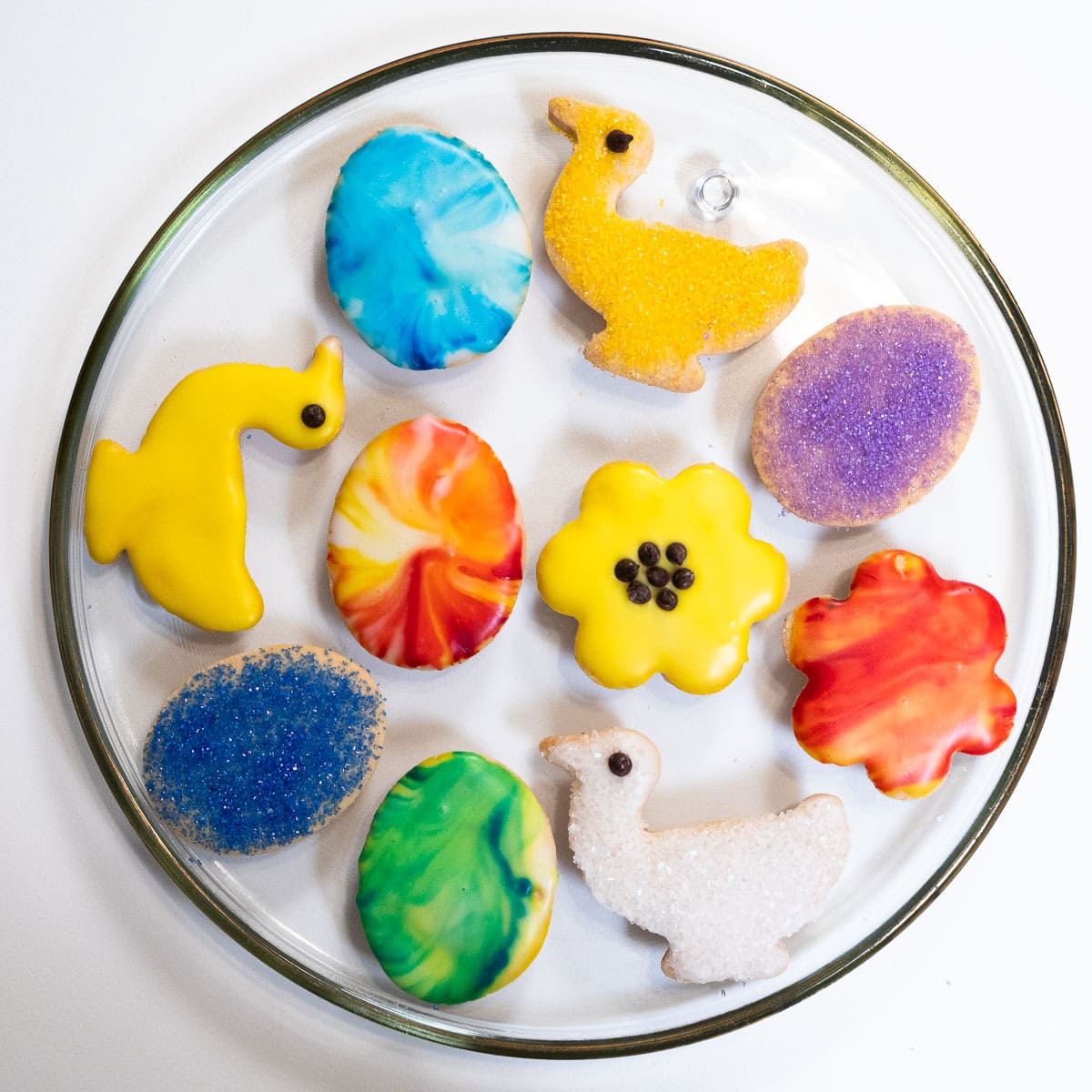
I used two techniques - the first is painted cookies, either solid colors or the very simple swirly, marbelized ones. The second is even easier since you simply cover the unbaked cookie with colored sugar and bake. That's it. Easy enough for the kids to help and maybe more fun than coloring Easter eggs.
For the ins and outs and the easiest way to roll out the cookie dough see Cut Out Cookies Using The Wax Paper Technique.
[feast_advanced_jump_to]What Makes This Recipe so Intriguing
- These easy shortbread cookies require only 3 ingredients. The glaze only 2.
- They are incredibly easy to make and decorate.
- Packed with flavor under estimates how incredible they are.
- The butter gives them a rich flavor, especially if you use European type butter.
- These are definitely show stoppers that will have your family and friends think you bought them at a high end bakery.
Recipe Ingredients
Shortbread Cookies
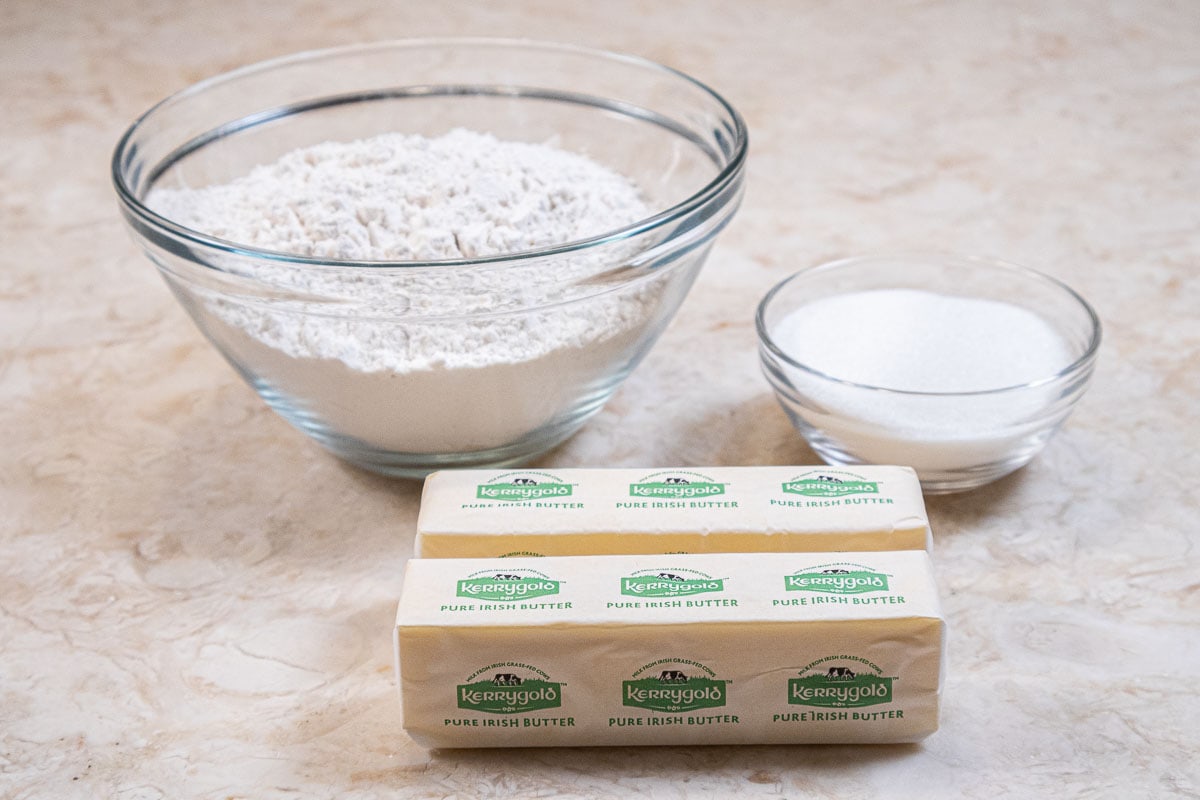
FRONT ROW: Unsalted European Butter
BACK ROW: All-purpose flour, granulated sugar
Lemon Glaze
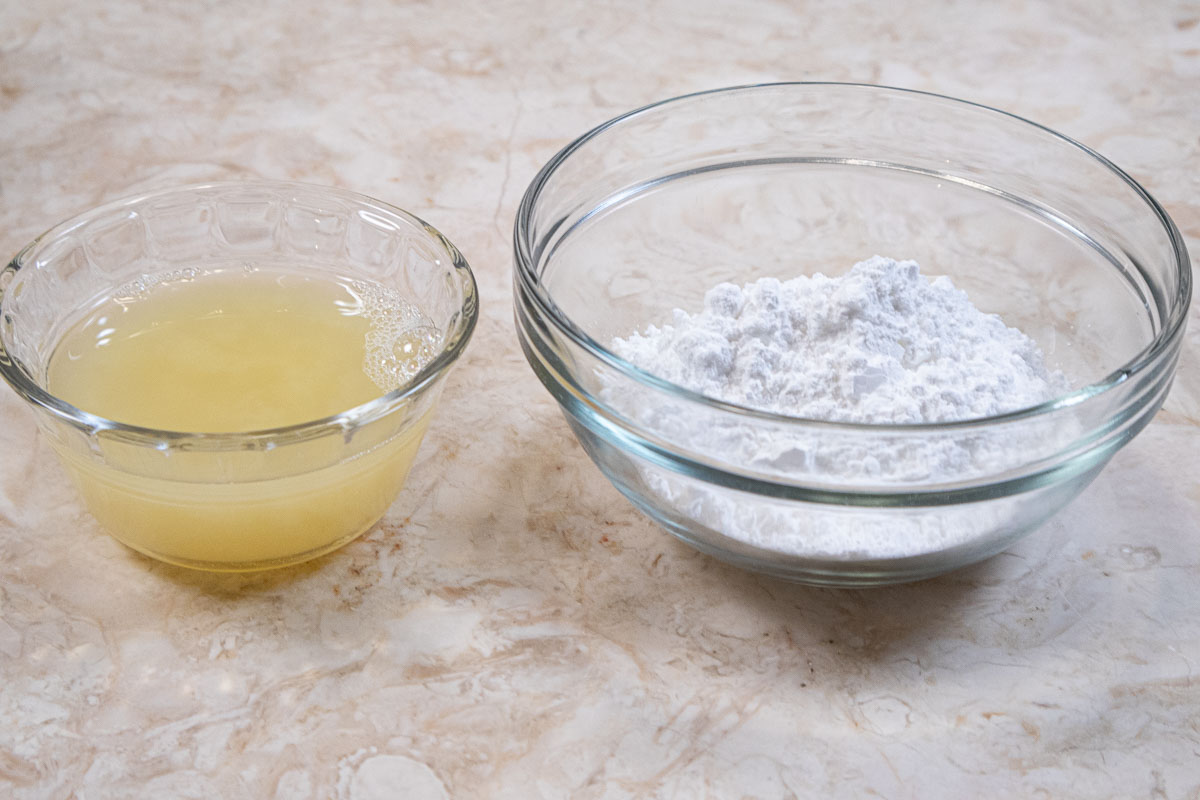
LEFT: Lemon Juice RIGHT: Powdered sugar
Unsalted European butter such as Kerry Gold or Plugra among other brands gives these cookies a deeper flavor that American butter. However, it is important to use unsalted butter here for maximum taste.
Freshly squeezed lemon juice is a must for the glaze. You can squeeze it a day or two ahead and refrigerate it just don't take a shortcut and use bottled lemon juice. I use all lemon juice for a punch of flavor. However, it can be watered down to be less aggressive. It can also be omitted completely and flavored with vanilla, almond or any other extract as your taste dictates.
Be sure to see the recipe card below for the exact ingredients and instructions.
Step by Step Instructions
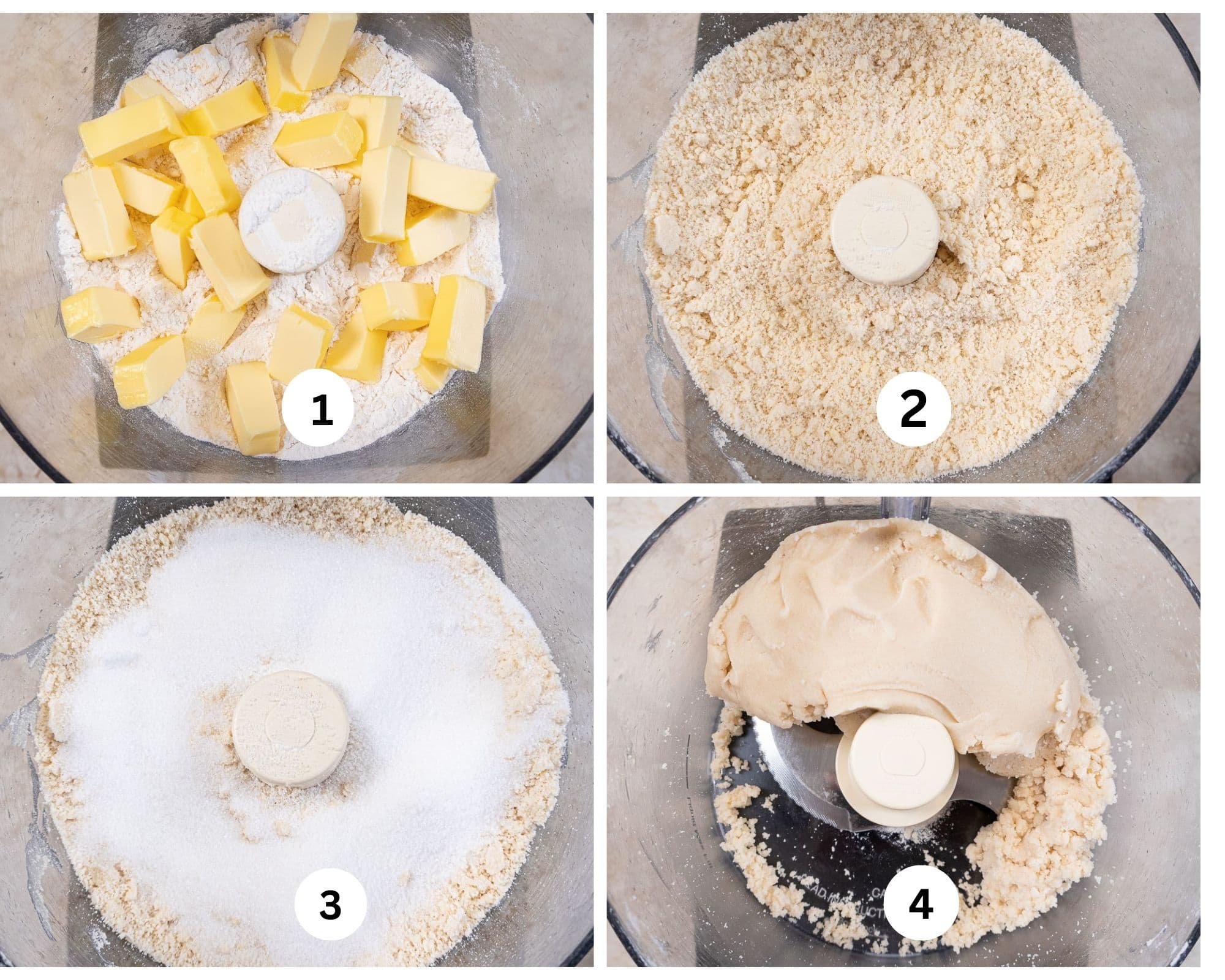
Step 1. Cut the cold butter into pieces and place over the flour in the processor bowl. Step 2. Process until the butter is indistinguishable. Step 3. Add the sugar to the processor. Step 4. Process until it comes together in large pieces. It most likely will not form a ball, that's fine.

Step 5. Gather the dough and knead it together. Flatten it into a round. Step 6. Divide the dough in half and roll one half between wax paper to about ¼ to ⅓" thick. Step 7. Cut the cookies out, keeping the cutters as close together as possible. Place the cookies, still on the wax paper on a tray and freeze until hard. When frozen, simply push them out or use a pancake turner to lift them off. Freezing the cookies makes it easy to remove them without the cookies losing their shape and with perfectly clean edges. Step 8. Place the frozen cookies on a cookie sheet and keep them frozen until baking.
Decorating the Cookies
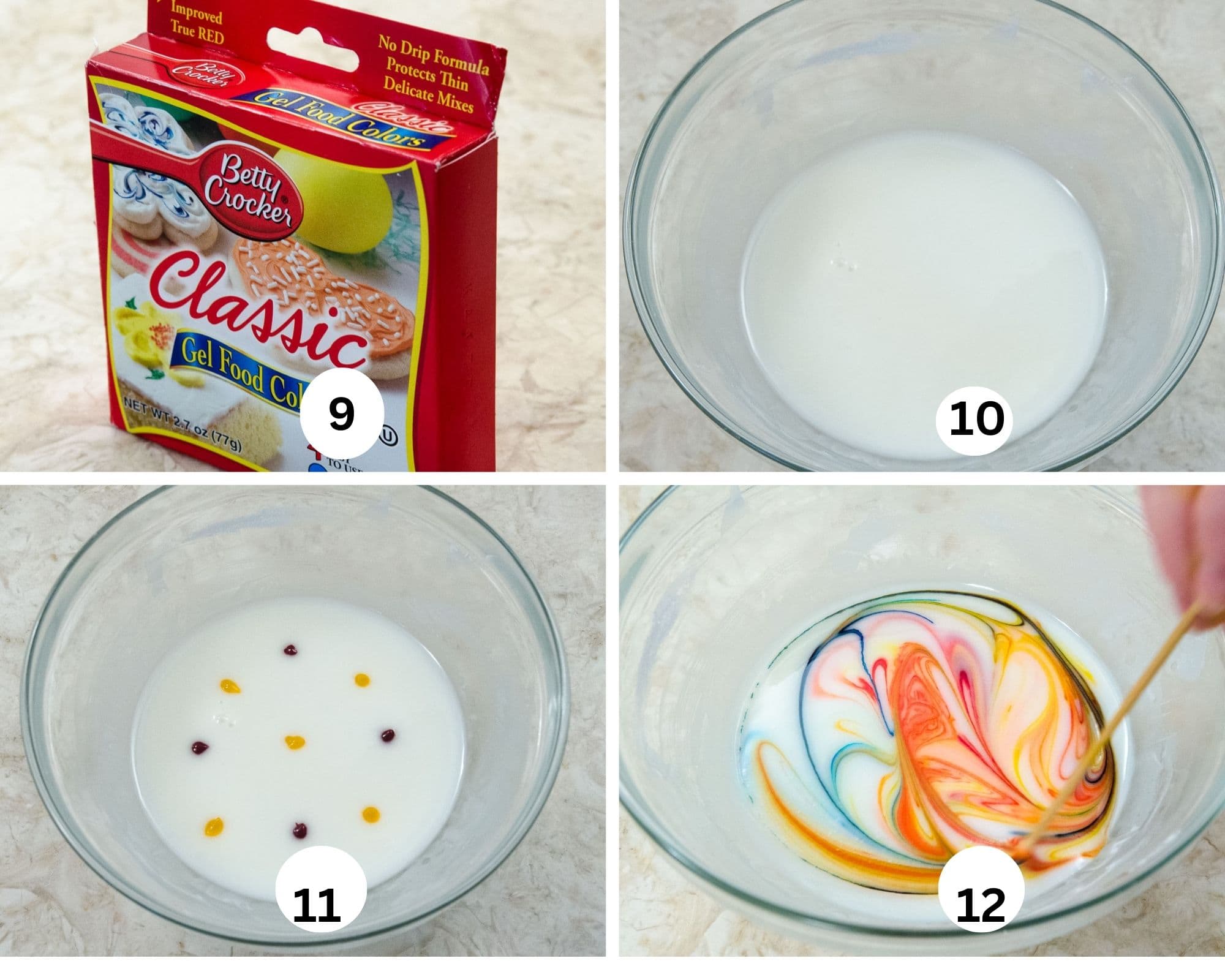
Step 9. Be sure to use gel colors instead of the liquid ones as they usually require a lot more to achieve the same colors as the gel. Step 10. The lemon juice and powdered sugar are mixed. Step 11. Dots of various colors are spaced out on top of the glaze. This collage shows the gel color package, dots of different colors on top of the glaze and the colors swirled int the glaze. Step 12. With a bamboo skewer or toothpick, swirl the colors together. Don't over swirl or the colors will be come murkey after just a few cookies. No two cookies will look alike. Additional color can be added at anytime. For a complete tutorial, see Painted Cookies.
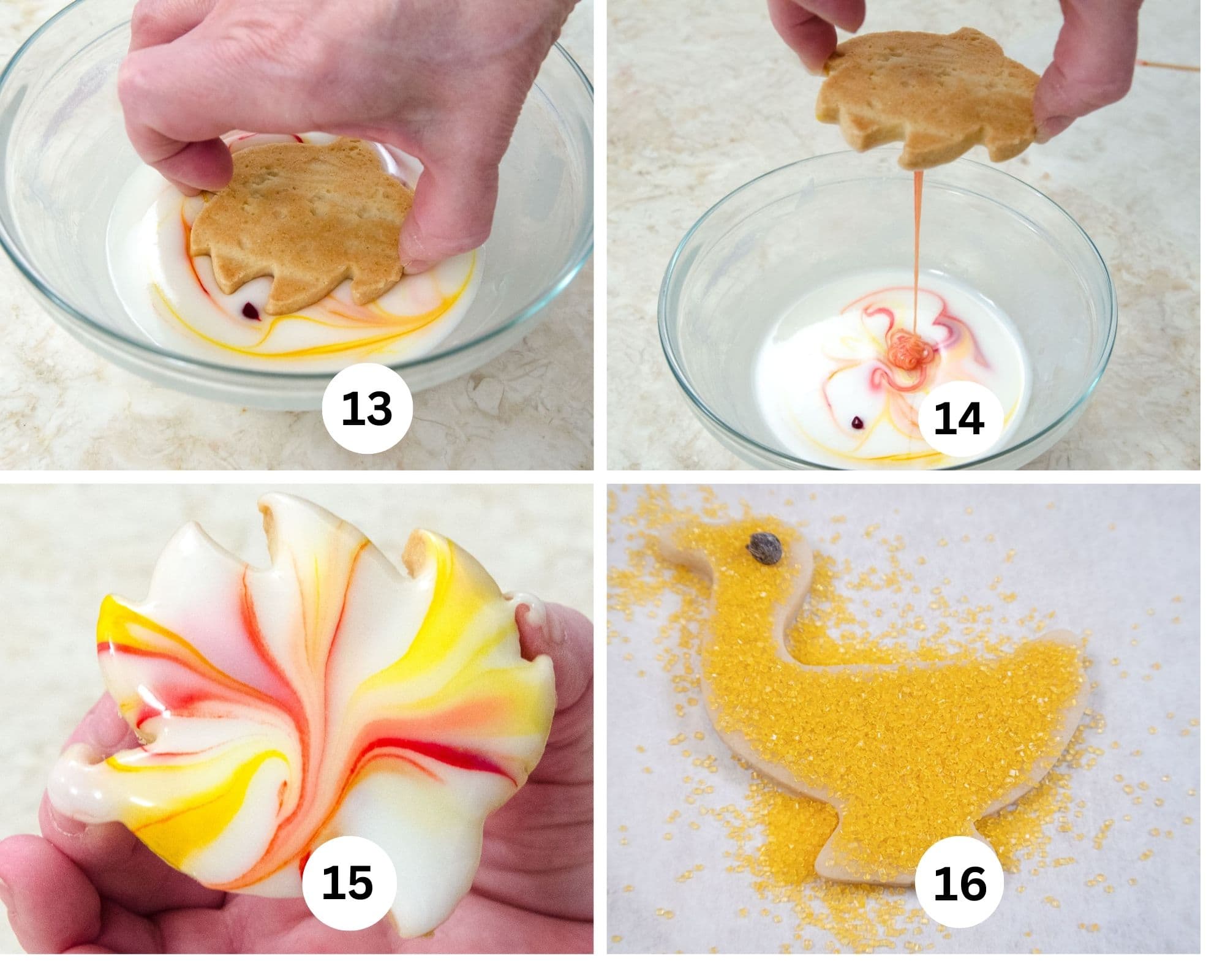
Step 13. Dip the top of the cookie into the glaze just deep enough to coat it. Step 14. Let the excess glaze drip back into the bowl. If there is still too much glaze on the cookie, very lightly wipe it against the top of the bowl. Step 15. The finished cookie glazed. Step 16. This is the second and easiest way to decorate a cookie. Before baking, heavily sprinkle the cookie with colored sugar crystals. Gently pat them in. For the eye of the duck, I used a mini chocolate chip. Place it on the duck before adding the sprinkles. Bake as called for.
Recipe FAQS
Sure. Sugar or butter cookies are perfect to decorate as long as they hold their shape when baked.
For the cookies above no. Just heavily sprinkle them, pat them very gently onto the cookie and bake. They stick right on.
Yes but it might take a day or so depending upon the weather. While it might appear dry on the top, it can still be wet underneath. After the glaze has dried, the cookies an be stacked in an airtight container for a week or more. They also ship well.
Expert Tips
- The cookies can be cut out and frozen for months before baking. They can also be baked and held, unpainted in an airtight container for days before decorating.
- Unsalted European style butter has a higher fat content than American butter and as such, imparts a deeper butter flavor into the cookies. I use this butter whenever I made a butter heavy cookie.
- Wax paper and freezing the cookies are key to a cookie with clean edges that won't lose their shape. Just cut out the cookies, leave them on the wax paper, place them on a cookie sheet and freeze until hard. Then just pop them out or remove them with a pancake turner and place them on a parchment lined baking sheet.
- Lemon juice, water or liqueur makes a somewhat harder glaze than does milk.
- Always us gel colors to impart brighter colors and reduce the amount of liquid added to the glaze. It's necessary to use more liquid coloring to obtain the same bright colors than it is to use gel colors.
- When swirling the colors for the painted cookies, start with 3 different colors and do not swirl too much in the beginning. Additional colors can be added as you go along. However, at some point, the glaze will become murky looking. At that point start over.
- The glaze can be broken down into smaller bowls to use when it is no longer useable. Just cover them with wet towels so they don't skin over. We did this at the bakery when we had hundreds of cookies to glaze.
- Be sure to let the painted cookies dry completely before storing them. The tops may appear dry but they can still be wet underneath. The glaze will usually wrinkle up when picked up and shaken a little if wet underneath.
- If you have children or grandchildren around let them help. This is a great family project. Just be ready for a bit of a mess that is easily cleaned up.

More Great Butter Cookies
If you love these Easy Decorated Shortbread Cookies, It would be hugely helpful and so appreciated it if you would take a moment to leave a rating below. Thank you.
Easy Decorated Shortbread Cookies
Ingredients
Easy Shortbread Cookies
- 1 cup unsalted butter, European preferred (225 grams)
- 2 ¼ cups all purpose flour (315 grams)
- ½ cup granulated sugar (100 grams)
Painted Cookie Glaze
- 2 cups powdered sugar (260 grams)
- ¼ cup lemon juice or water
- 1 teaspoon almond or vanilla extract if not using lemon juice
Instructions
Easy Shortbread Cookies
- If using a processor, butter needs to be cold. If using a mixer, butter needs to be softened. Preheat the oven to 350°F. Line baking sheets with parchment paper and set aside.
Processor Method
- The cold butter needs to be cut into small pieces. Add the flour to the bowl of a processor. Pulse several times to sift. Place the cold, cut up butter in a circle on top of the flour. Process until the butter is indistinguishable. Add the sugar and process until it comes together. It will not form a ball.
- It will take some time for the dough to come together. Redistribute the dough in the processor several times to help it along. Using long pulses will help with the mixing. It will form large crumbs that should be poured onto the work surface and kneaded together.
Mixer Method
- For this method, the butter needs to be softened. Combine the butter with the sugar in the bowl of a mixer. Beat until light. Add the flour all at once and beat until it comes together to form a solid mass.
Cutting the Cookies
- Divide the dough in half. Roll half of it between wax paper to a thickness of ¼ to ⅓ inch. See the post on the Cut Out Cookies Using the Wax Paper Technique for the easiest way. Repeat for the second half.
- Cut the cookies into the desired shapes. Leaving them on the wax paper, place them in the freezer until hard. Pop them out or use a spatula to remove them to the parchment lined baking sheets. Freeze or refrigerate
- Bake 12 to 15 minutes depending upon the thickness of the cookies until lightly browned. Cool completely before decorating.
Painted Cookie Technique
- Make sure the glaze is colored in a bowl just large enough for the largest cookie and your fingers. You do not want the glaze spread out into a large bowl.
- Divide the glaze into different bowls. Cover with a wet towel to prevent it from skinning over. Start a new bowl whenever the current one becomes too murky.
- Dots of color are added around the perimeter of the bowl and in the middle however you wish. Swirl in a few colors and add more if desired. With a bamboo skewer or toothpick, swirl the colors around in a marbleized fashion.
- Holding a cookie upside down by the edges of your fingers, dip it into the glaze making sure the entire top is covered. Allow the glaze to drip back into the bowl. It can drip to one side of the bowl to keep the paint undiluted as long as possible.
- Place the cookie on parchment to dry which can take up to a day if it is humid.
- After dipping some cookies, more or different colors may be added and swirled in to freshen the paint.
- Dry the cookies completely, making sure they are not just dry to the touch and still wet underneath. After drying, drips down the sides can be scraped off with a sharp knife. Store in an airtight tin with paper between the layers.
Sugared Cookies
- Prior to baking, heavily cover the cookies with colored sugar and lightly pat into place. Bake as above.
- The number of cookies will depend upon the cutters you use and the thickness of the cookies.
Notes
-
- The cookies can be cut out and frozen for months before baking. They can also be baked and held, unpainted in an airtight container for days before decorating.
-
- Unsalted European style butter has a higher fat content than American butter and as such, imparts a deeper butter flavor into the cookies. I use this butter whenever I made a butter heavy cookie.
-
- Wax paper and freezing the cookies are key to a cookie with clean edges that won't lose their shape. Just cut out the cookies, leave them on the wax paper, place them on a cookie sheet and freeze until hard. Then just pop them out or remove them with a pancake turner and place them on a parchment lined baking sheet.
-
- Lemon juice, water or liqueur makes a somewhat harder glaze than does milk.
-
- Always us gel colors to impart brighter colors and reduce the amount of liquid added to the glaze. It's necessary to use more liquid coloring to obtain the same bright colors than it is to use gel colors.
-
- When swirling the colors for the painted cookies, start with 3 different colors and do not swirl too much in the beginning. Additional colors can be added as you go along. However, at some point, the glaze will become murky looking. At that point start over.
-
- The glaze can be broken down into smaller bowls to use when it is no longer useable. Just cover them with wet towels so they don't skin over. We did this at the bakery when we had hundreds of cookies to glaze.
-
- Be sure to let the painted cookies dry completely before storing them. The tops may appear dry but they can still be wet underneath. The glaze will usually wrinkle up when picked up and shaken a little if wet underneath.
-
- If you have children or grandchildren around let them help. This is a great family project. Just be ready for a bit of a mess that is easily cleaned up.
Nutrition
Easter Roundup
Here are some wonderful suggestions to make your holiday brighter than ever. Something for everyone from breakfast to dinner and everything in-between. Above all have a very Happy Holiday.
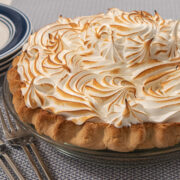
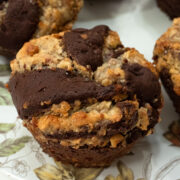
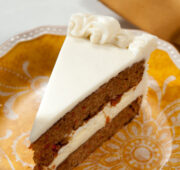
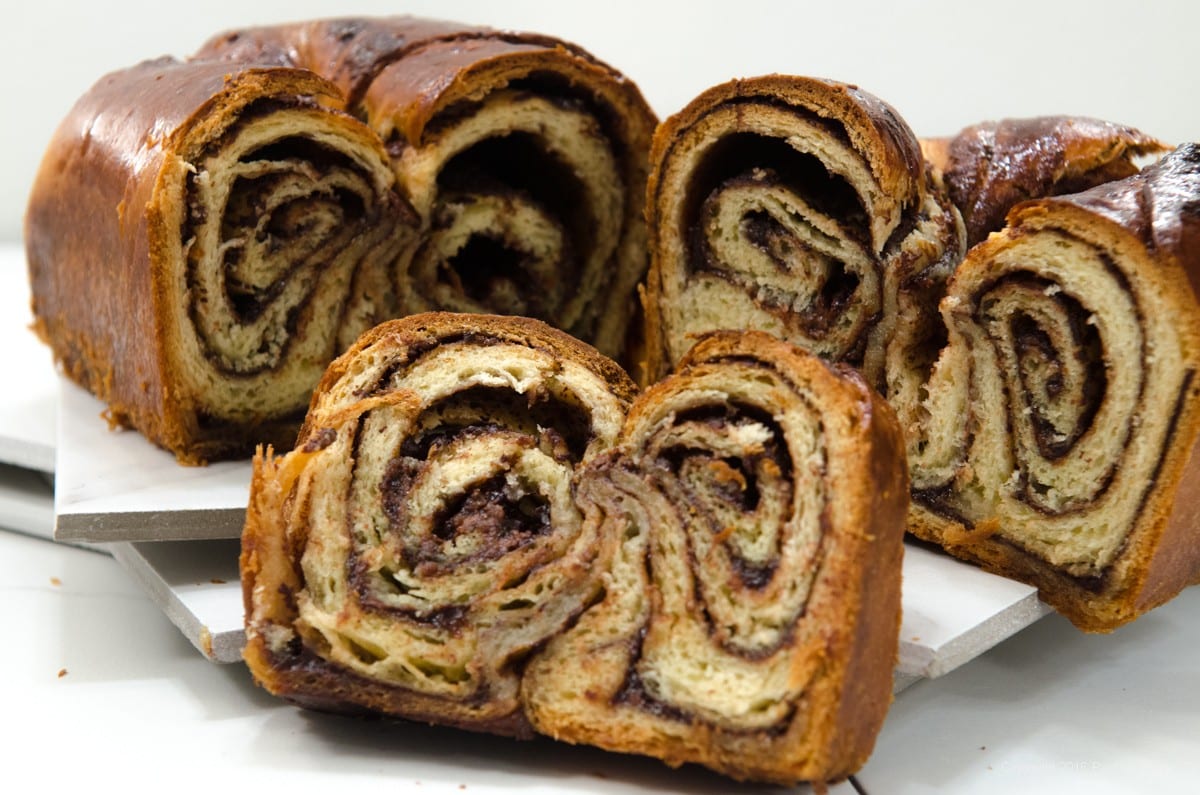
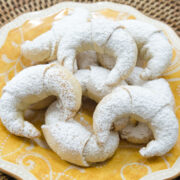
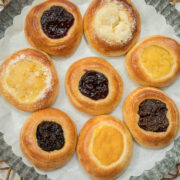
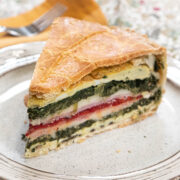
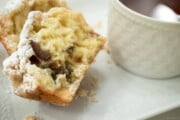
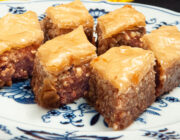
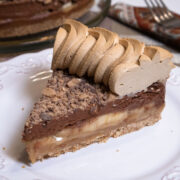
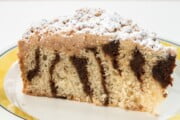
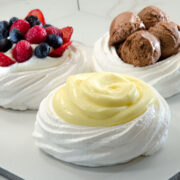
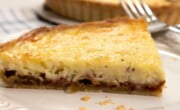
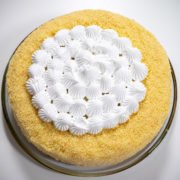
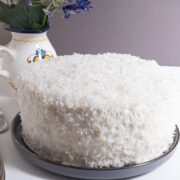
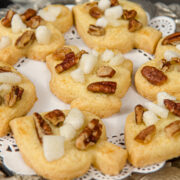
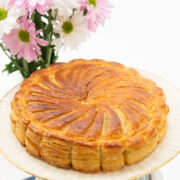
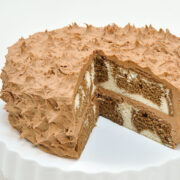
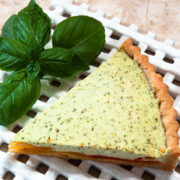
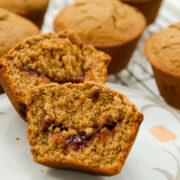
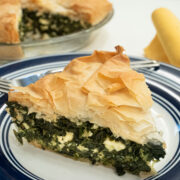
Banana Split Cupcakes
Banana Split Cupcakes are based on one of my favorite ice cream treats and are maybe even better. While most banana cakes are heavy, this is a very light cake filled with pineapple and topped with Strawberry Buttercream. A drizzle of chocolate finishes this treat.
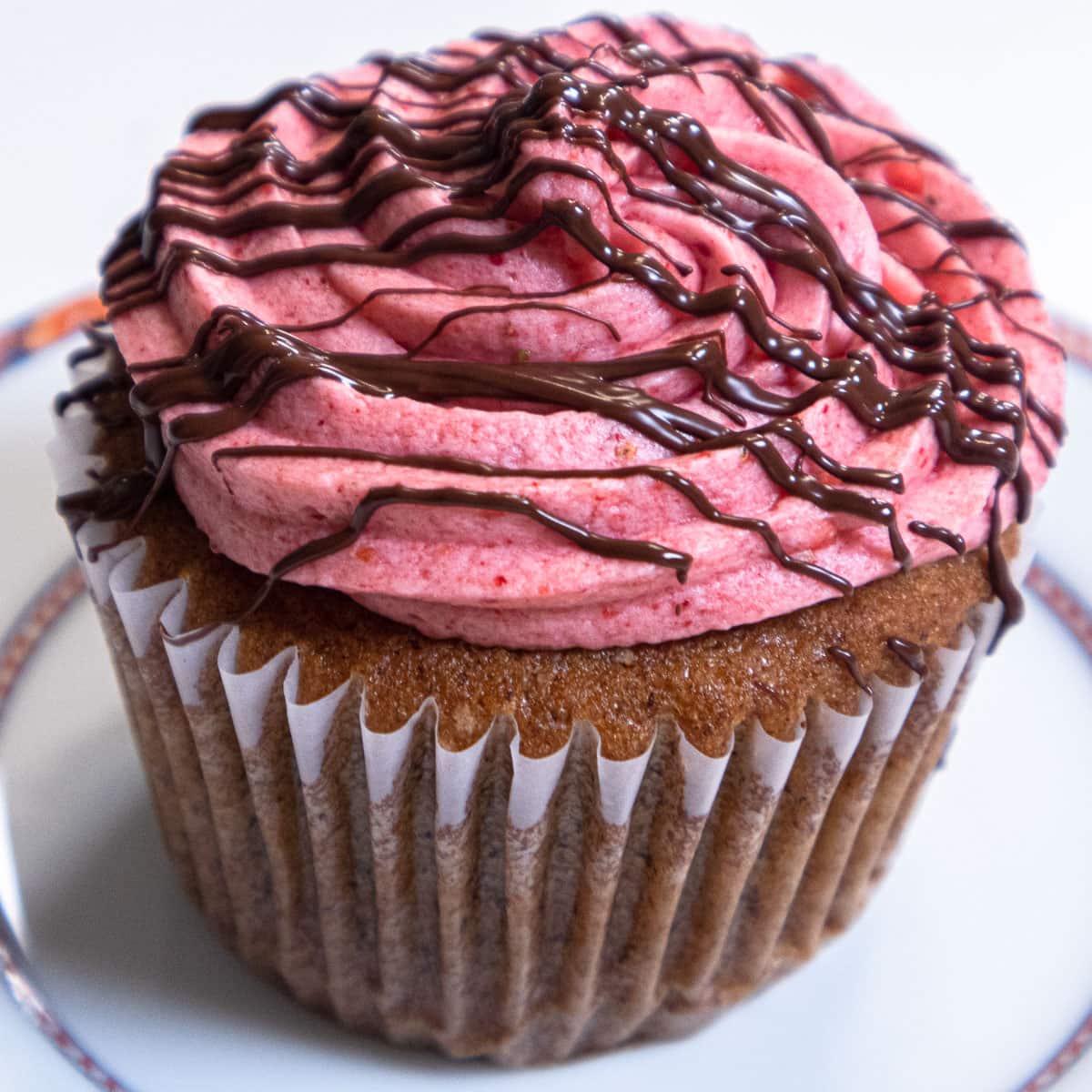
I made these in Texas muffin cups so they would hold a lot of the pineapple filling. The filling is straight from my The Marvelous Variable Kolache post with multiple fillings. The smaller cupcakes just seemed too small to hold all that goes into these beauties. These would be a perfect picnic bring along.
[feast_advanced_jump_to]Why I Love these Cupcakes
- First off, these just look gorgeous and inside there is a surprise.
- These taste incredible and are really easy to make.
- The banana cake, pineapple filling and strawberry buttercream are balanced so not one flavor dominates.
- Make no mistake though, these are boldly flavored for maximum enjoyment.
- No time to make them start to finish? The banana cupcakes and pineapple filling can be made ahead.
Why Use Butter and Oil?
Butter and oil are used because they preform different functions leading to this very light, tender cake. The butter adds flavor and fat that adds to the tenderness. The oil contributes to the tenderness and the ability of the cakes to stay moist for more days than butter alone. All butter cakes have a shorter lifespan than cakes made with oil. Buttermilk also contributes to the tenderness and long lifespan.
When I owned my bakery, I originally thought I had to use all butter cakes because the bakery made upscale desserts. I quickly found out they did work for restaurants who often don't serve all of the dessert in one day because they would become dry. So, I switched to cakes that used at least some oil in them. By using oil, it also allows the dominant flavor to come through more strongly.
Need more recommendations for summertime cakes? We have so many you can try!
Recipe Ingredients
Pineapple Filling
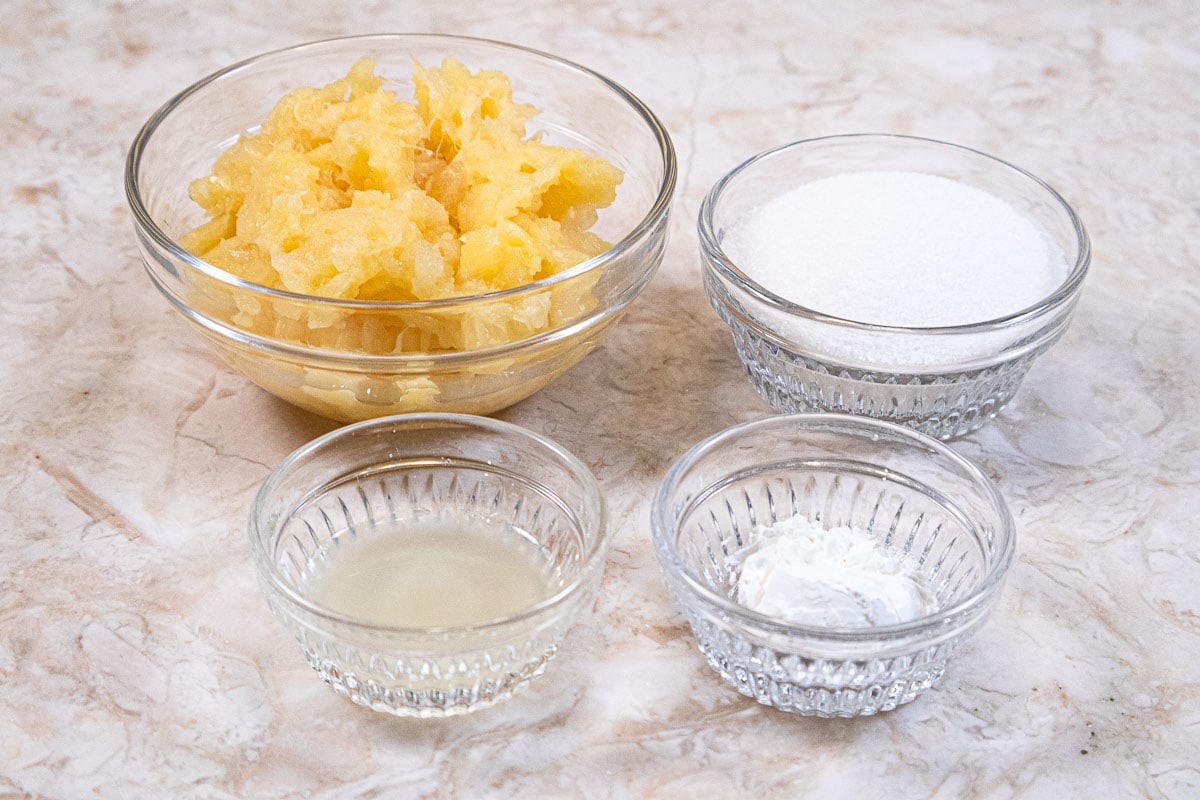
- FRONT ROW: Lemon juice and cornstarch
- BACK ROW: Crushed pineapple and sugar
Banana Cupcakes

- FRONT ROW: Baking soda, salt, baking powder.
- SECOND ROW: Unsalted butter
- THIRD ROW: Vegetable oil, eggs, buttermilk
- BACK ROW: Cake Flour, granulated sugar and bananas
Strawberry Buttercream
I have used this strawberry buttercream with its intense strawberry flavor and smooth texture in several ways including Strawberry Buttercream Frosting as well as Strawberry Cake which is a delightfully light spring and summer treat.
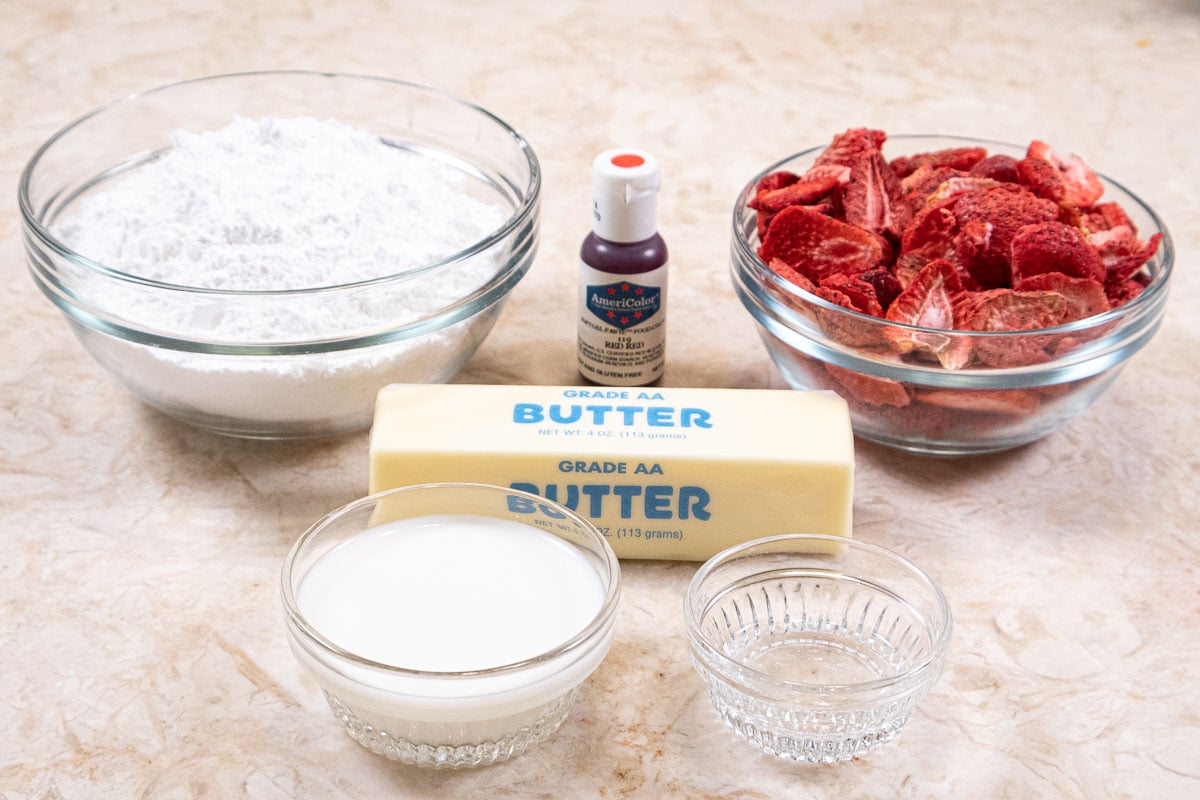
- FRONT ROW: Milk, almond extract
- SECOND ROW: Unsalted butter
- BACK ROW: Powdered sugar, red food coloring and freeze dried strawberries
Be sure to see the recipe card below for the exact ingredients & instructions.
Step by Step Instructions
Pineapple Filling
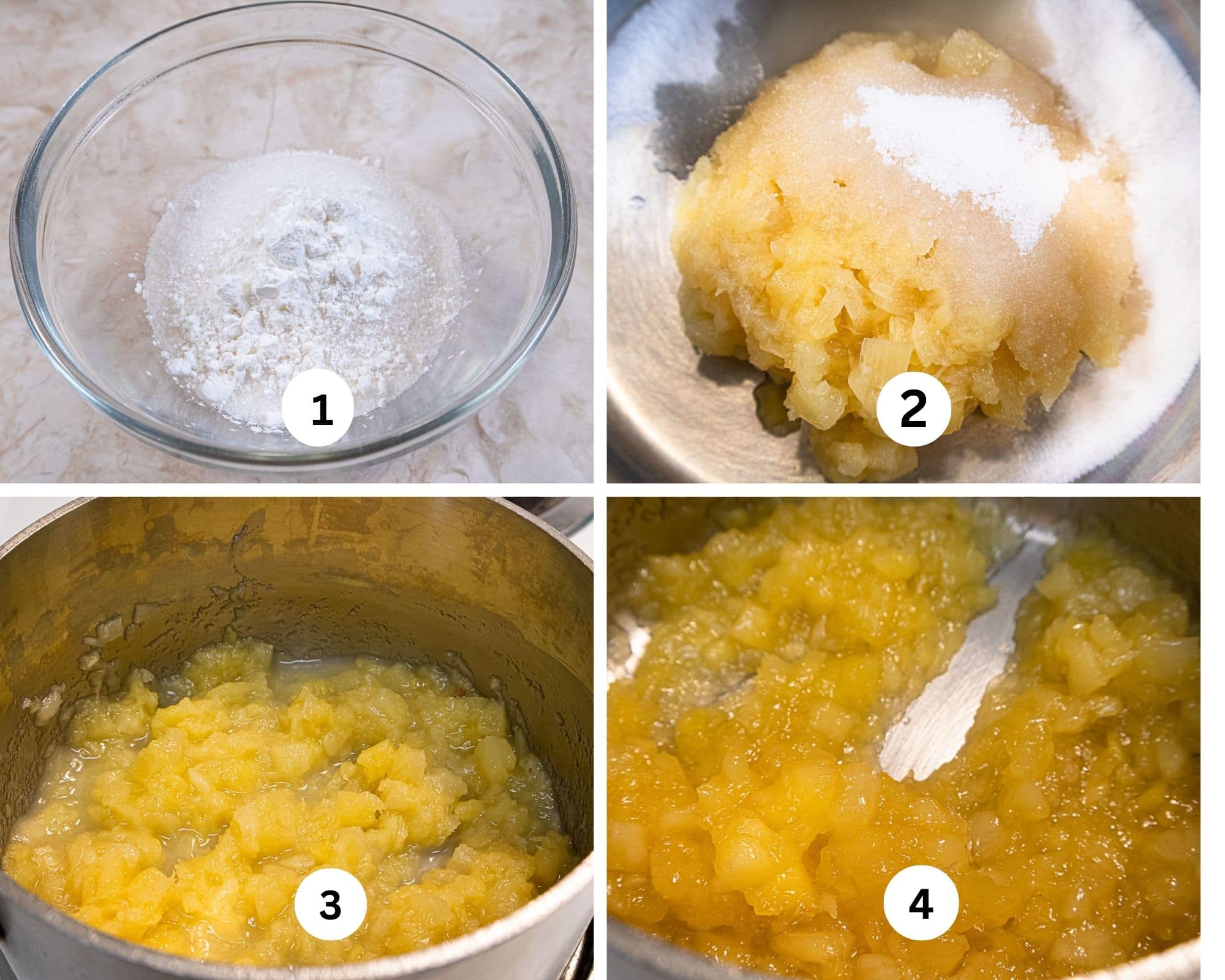
Step 1. Mix the sugar and cornstarch together. Step 2. Add it to the well drained crushed pineapple. Step 3. Put everything into a small saucepan. Step 4. Cook over medium heat until the mixture is thick and a spoon run through it leaves a path. Remove from the heat and cool. This can be made a week ahead and stored in the refrigerator
Banana Cupcakes
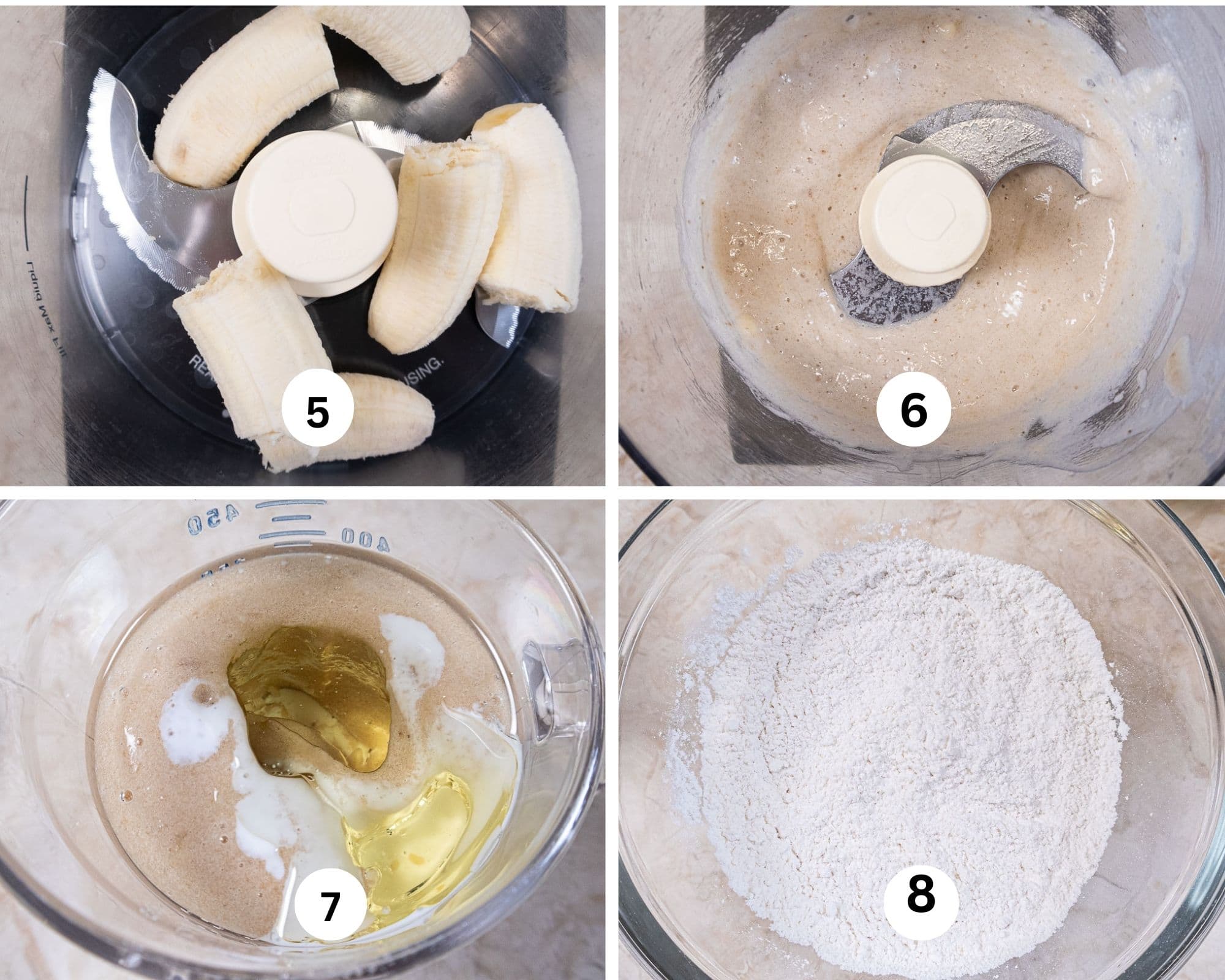
Step 5. Place the bananas in the processor. Step 6. Process the bananas until smooth. Step 7. Measure 1 cup and add the oil and buttermilk. Mix together. Step 8. Whisk together the dry ingredients for the cake and set aside.
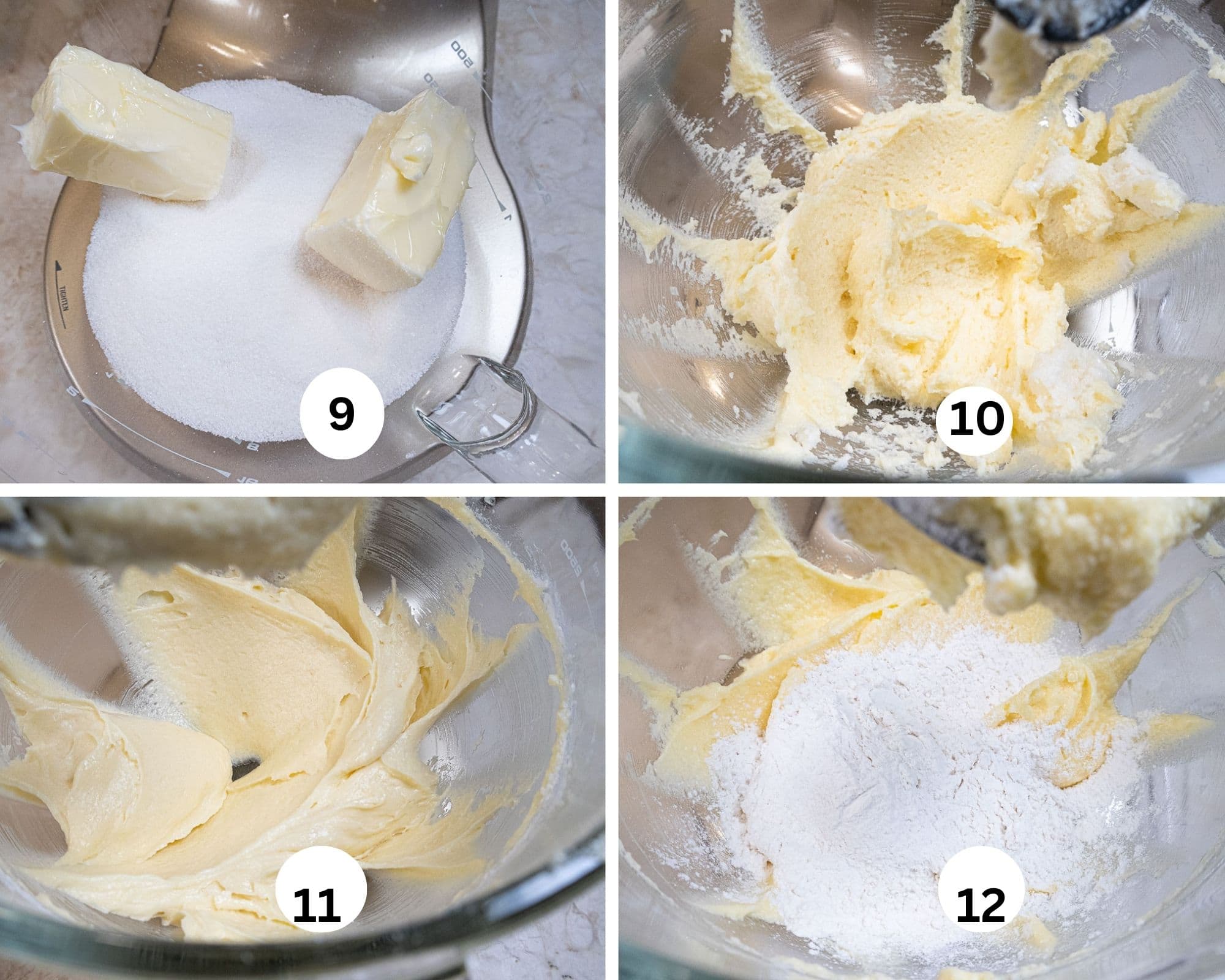
Step 9 Place the butter and sugar in the bowl of a mixer. Step 10. Cream them together until light. Step 11. Add the eggs, one at a time beating until combined completely. Step 12. Add the flour mixture and banana mixture alternately, starting and ending with the flour. Three additions of flour and two of the banana mixture is fine.
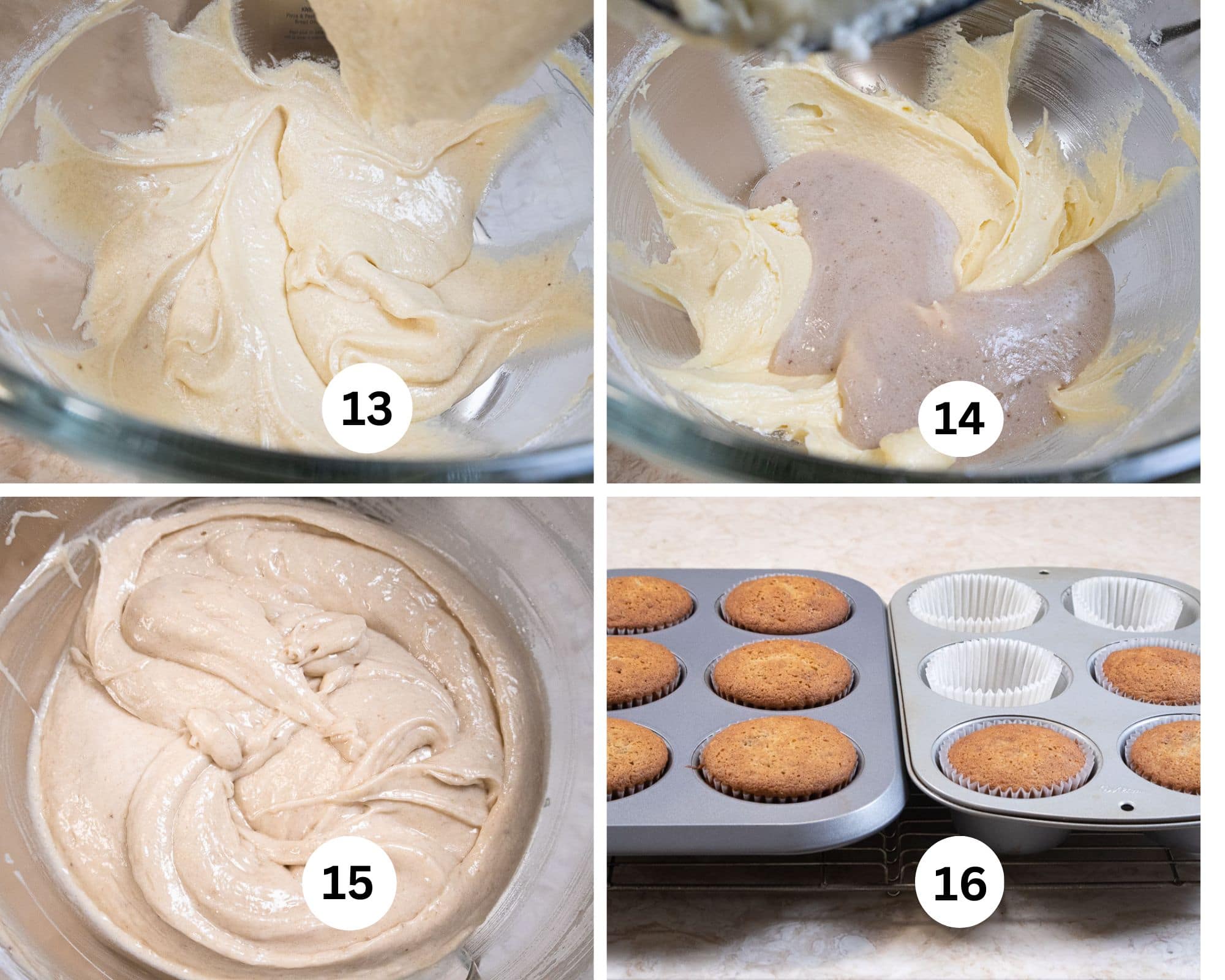
Step 13. Mix the first flour mixture on low until completely combined, scraping as necessary if you don't have a scraper attachment. Step 14. Add the first banana mixture and beat until combined. Step 15. Continue alternating until the flour and banana are all in. Step 16. Divide the batter between 9 large or Texas muffin tins lined with paper liners. I used a slightly overfilled #8 scooper to fill them about ¾ full in the left pan. The right pan was filled with the scooper cleaned off. The cupcakes are slightly smaller. I prefer the larger ones to hold the filling.
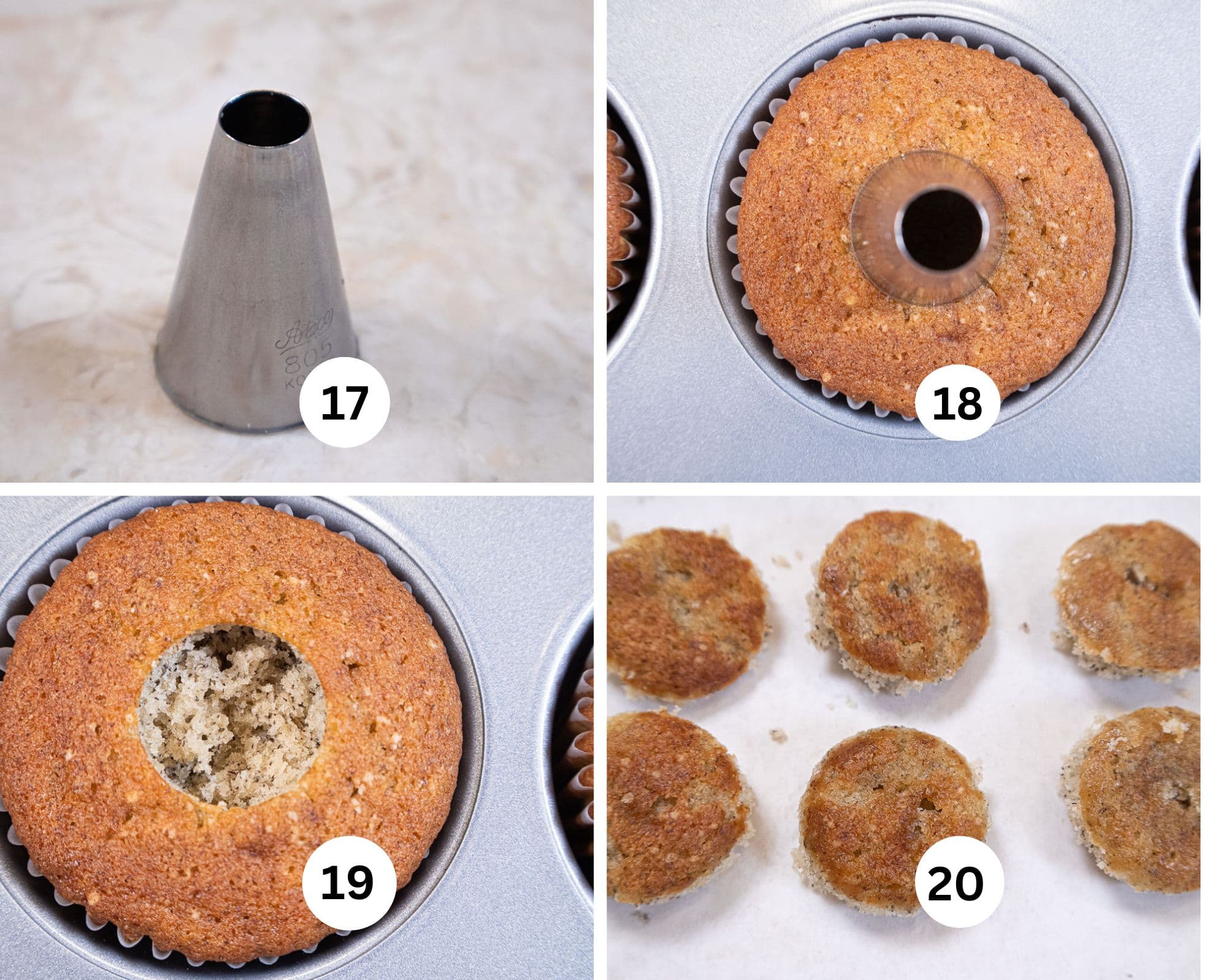
Step 17. To tunnel out the cupcakes for the filling, I used a large plain piping tip upside down. Step 18. Press it down in a circular motion to remove the cake. Do not go all the way to the bottom. To remove the cake from the pastry tip, poke it out using the back of a small spoon. Step 19. The initial hole is made. Step 20. Save the plugs removed from the cupcakes for later.
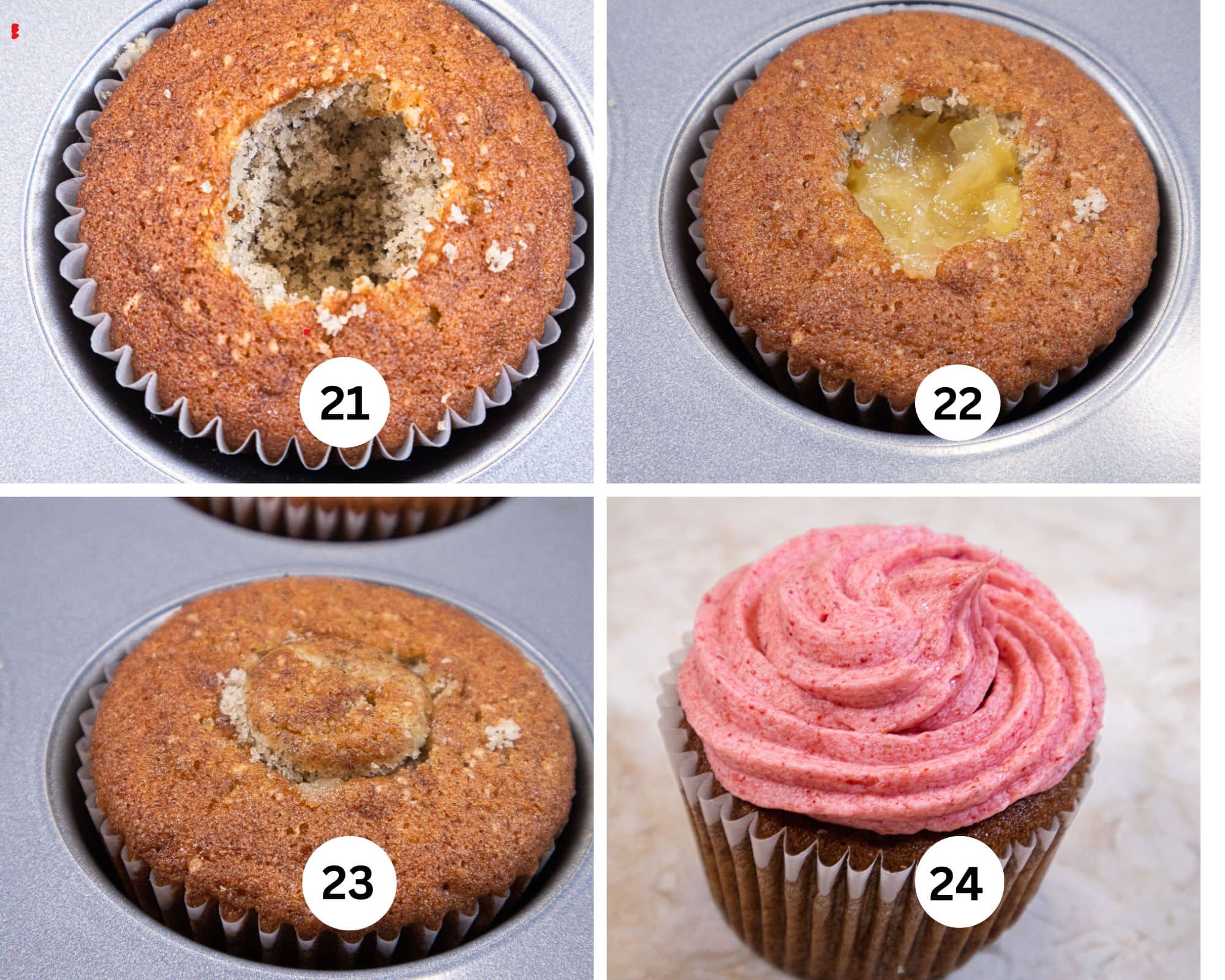
Step 21. Remove a bit more of the cake with a teaspoon to expand the size of the hole. Step 22. Fill the hole with about 1 tablespoon pineapple filling not quite to the top. Step 23. Replace the plug on top. Step 24. Pipe a swirl of strawberry buttercream on top of the cupcake.
Strawberry Buttercream
Visit my post on Strawberry Buttercream for Step by Step photographs.
Recipe FAQS
Yes they can either with or without the frosting as you prefer. If freezing, place them on a tray and freeze until hard. Then place them in an airtight container or wrap the tray really well in foil. Freeze for up to a month. Thaw at room temperature.
The short answer is no for the butter. The butter has to be softened to become light and fluffy when creamed with the sugar. It cream best around 72°F. Room temperature eggs are less lightly to curdle the batter when mixed in but that will be corrected with the addition of flour later.
It sure can. When adding the flour and liquid it is important to mix on low so the gluten in the flour does not become elastic. This is necessary when making bread, but it can change the texture of the cake making it chewy or dense.
Expert Tips
- Use a 16 to 20 ounce can crushed pineapple. Make sure to drain the pineapple really well before making the filling or it can be too loose when cooked.
- The filling can be made a week ahead and refrigerated.
- The cupcakes can be made in their totality several weeks ahead and frozen. Thaw at room temperature.
- Be sure to use freeze dried strawberries for the buttercream. They impart a very intense flavor.
- A few drops of red food coloring enhances the color after the buttercream is mixed.
- If you didn't have time or forgot to soften your butter, put the stick still wrapped on a plate in the microwave. Microwave for 3 to 5 seconds on each side turning the butter one quarter each time. It should be just perfect for creaming around 72°F.
- Using a ½", #6 open star piping tip will give your cupcakes a professional look.
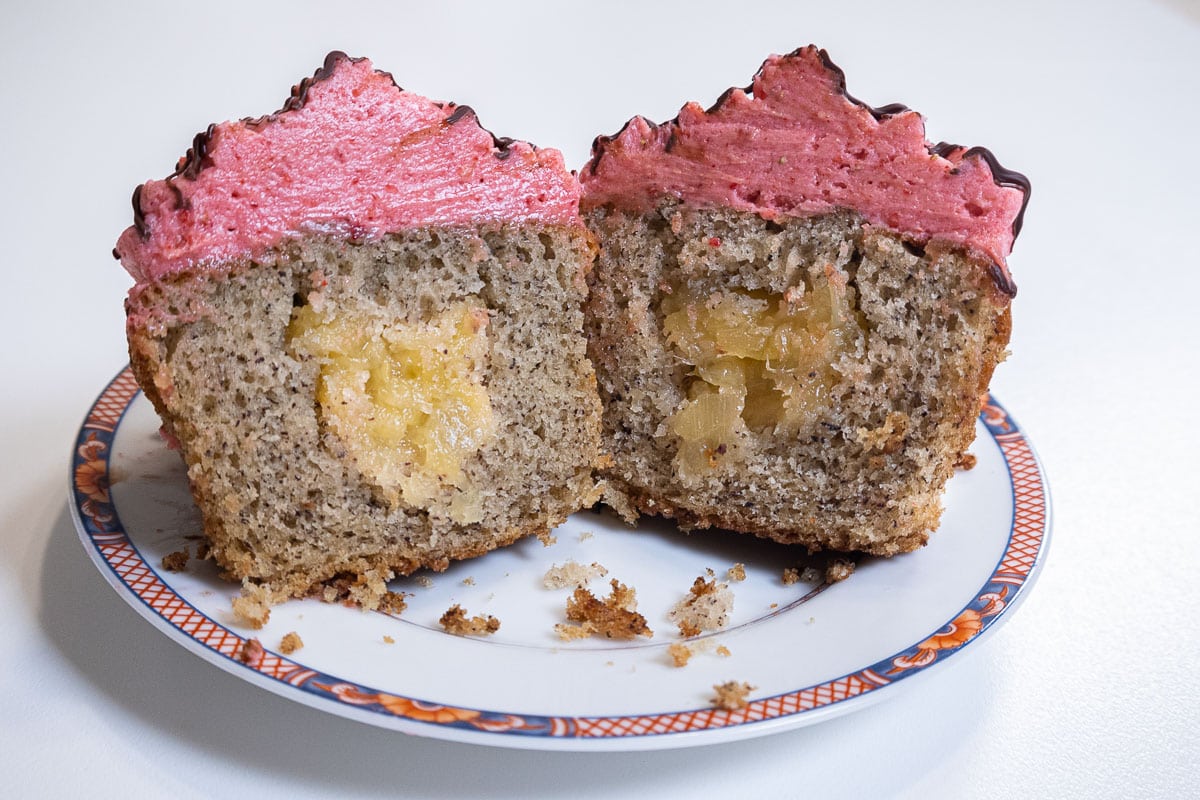
If you love these Banana Split Cupcakes, It would be hugely helpful and so appreciated it if you would take a moment to leave a rating below. Thank you.
Banana Split Cupcakes
Equipment
- Large Texas Muffin Cups
Ingredients
Pineapple Filling
- 1 ½ cups crushed pineapple, very well drained
- ½ cup granulated sugar (200 grams)
- 2 teaspoons cornstarch
- 2 teaspoons lemon juice
Banana Cupcakes
- 1 ½ cups cake flour (210 grams)
- 1 teaspoon baking soda
- ¾ teaspoon baking powder
- ¼ teaspoon salt
- 1 cup banana puree
- ⅓ cup buttermilk
- ⅓ cup oil
- ½ cup unsalted butter, softened (114 grams or 1 stick)
- 1 ¼ cups granulated sugar (250 grams)
- 2 large eggs
Strawberry Buttercream
- 3 cups freeze dried strawberries (from 2 -1.2 ounce packages
- 2 ⅓ cups powdered sugar (300 grams)
- ¾ cup unsalted butter, softened (170 grams -1 ½ sticks)
- ¾ teaspoon almond extract
- Red food color, optional
- semisweet chocolate as needed
Instructions
- Line 9 large Texas muffin cups with cupcake liners. Set aside
- Preheat the oven to 350°F.
Pineapple Filling
- This will make more than you need. The extra filling is great on toast, a bagel (especially with cream cheese also), as an ice cream topping (loosen it with a bit of water) or as a topping for anything.
- Whisk the sugar and cornstarch together.
- Combine all the ingredients in a small saucepan. Stirring constantly, bring to a boil and boil about one minute until a spoon drawn through it leaves a wide trail that does not fill in. Cool. This can be made a week ahead and refrigerated.
Banana Cupcakes
- Combine the flour, baking soda, baking powder and salt. Whisk to combine. Set aside.
- Place the bananas in the bowl of a processor or blender and puree until smooth. Add the buttermilk and oil, whisk together and set aside.
- Cream the butter and sugar until combined. Add the eggs one at a time, mixing well.
- Alternately add the flour and banana mixture, starting and ending with the flour.
- Fill the 9 cupcake liners about ¾ full. A #8 disher/scooper makes this easy.
- Bake for about 25 to 30 minutes until a tester comes out cleanly or they spring back when lightly touched. Cool completely.
Assembly
- See photos for the easiest way to do this.
- Using a large pastry tip upside down in the middle of the cake, core out the center. Save the plug just removed. Widen the hole a bit more with a teaspoon.
- Fill the hole generously with the pineapple filling and replace the plug on top. Set aside.
Strawberry Buttercream
- Place half the strawberries and half the powdered sugar the the bowl of a processor. Process until the strawberries are one with the powdered sugar. Repeat with the second half.
- Combine all of the ingredients except the food coloring in the bowl of a mixer. Beat on low to combine. Raise the speed to medium and beat until lightened. Add the food coloring as desired.
- Using a #6 or ½" open piping tip, finish the cupcakes with a swirl of buttercream.
- Melt a little semisweet chocolate at half power in a microwave. Dip a spoon in the melted chocolate and wave it over the iced cupcakes.
- The cupcakes can be stored for 3 days at room temperature or frozen for up to a month.
Notes
Nutrition
Amazing Banoffee Pie Recipe
My amazing no bake Banoffee PIe is comprised of a vanilla layer crust, a toffee filling, bananas, and chocolate mousse sprinkled with Heath bar bits, and coffee whipped cream to top it all off. The name of this English dessert comes from either bananas and toffee or bananas and coffee whipped cream which is often used in place of the plain whipped cream. I think you'll agree, this is one of the easiest, tastiest desserts around.
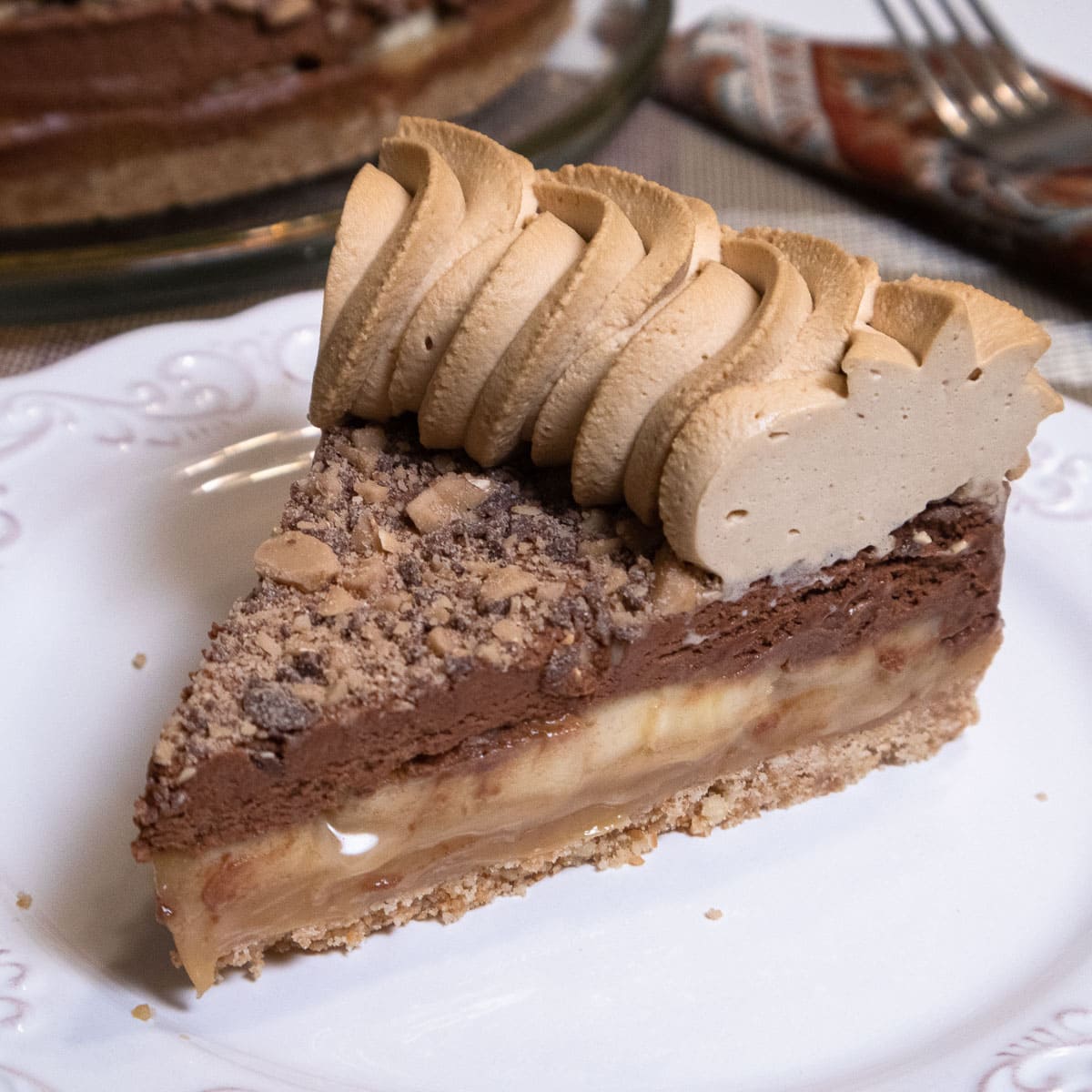
Whatever version is made, condensed milk is a vital ingredient. It is often turned into a caramel (called toffee in England) by either boiling in hot water for several hours or baking in the oven to condense and caramelize. I'm not a fan of boiling the can because it can explode if not kept under water the entire time. While I have baked it as in my Dulce de Leche cookies, it takes hours to caramelize. There is a different, much quicker way to obtain the toffee in this recipe.
Bananas are perfect when baking. Here are a couple of recipes that might interest you: Fruit Basket Cake, Best Two Step Banana Nut Bread. Don't forget we also updated our Lemon Meringue Pie!
[feast_advanced_jump_to]Why you'll love this recipe
- There is absolutely no baking.
- Many of the parts can be made ahead.
- Even with the number of layers, all of them are quick and easy to make.
- It tastes amazing and it's not too sweet.
- The people I served it to couldn't stop raving about how good it is.
Recipe Ingredients
Vanilla Wafer Crust

FRONT ROW: Vanilla Wafers
BACK ROW: Butter, powdered sugar
Toffee Filling
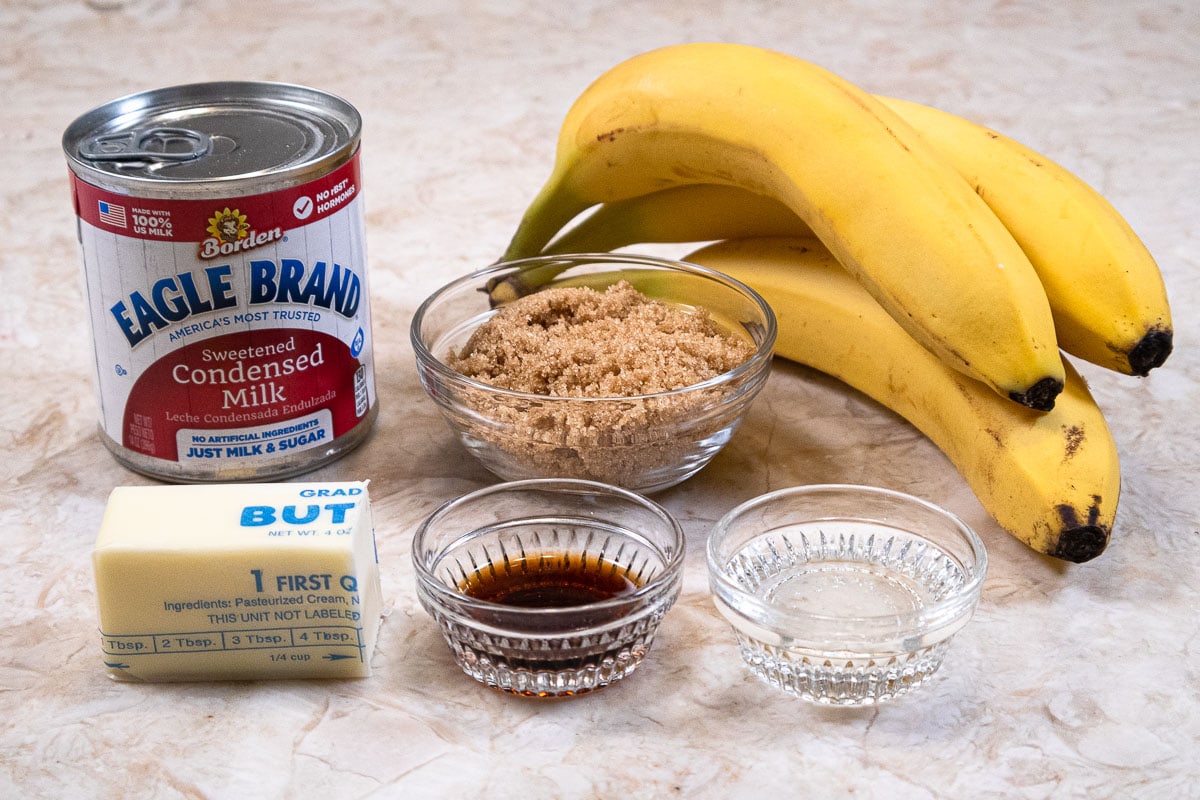
FRONT ROW: Butter, vanilla, corn syrup
BACK ROW: Condensed milk, brown sugar, bananas
Chocolate Mousse
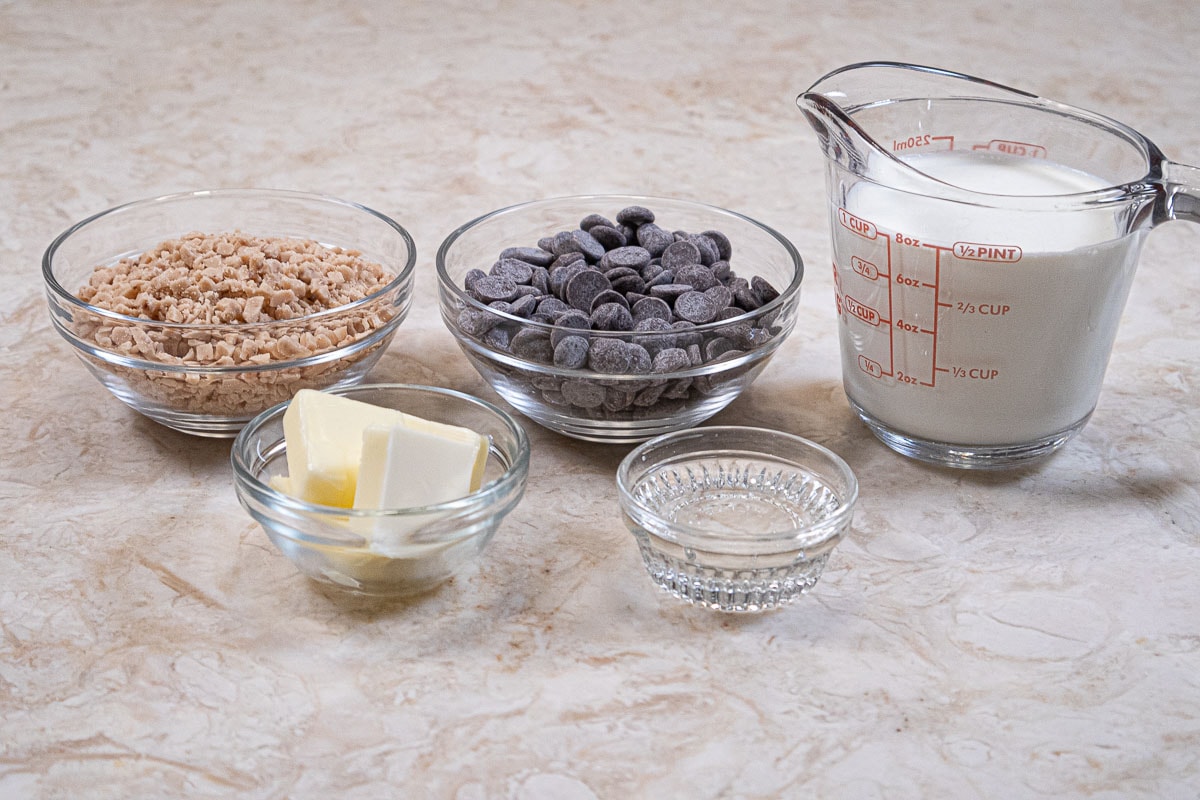
FRONT ROW: Butter, corn syrup
BACK ROW: Brickle pieces, chocolate, heavy cream
Coffee Whipped Cream
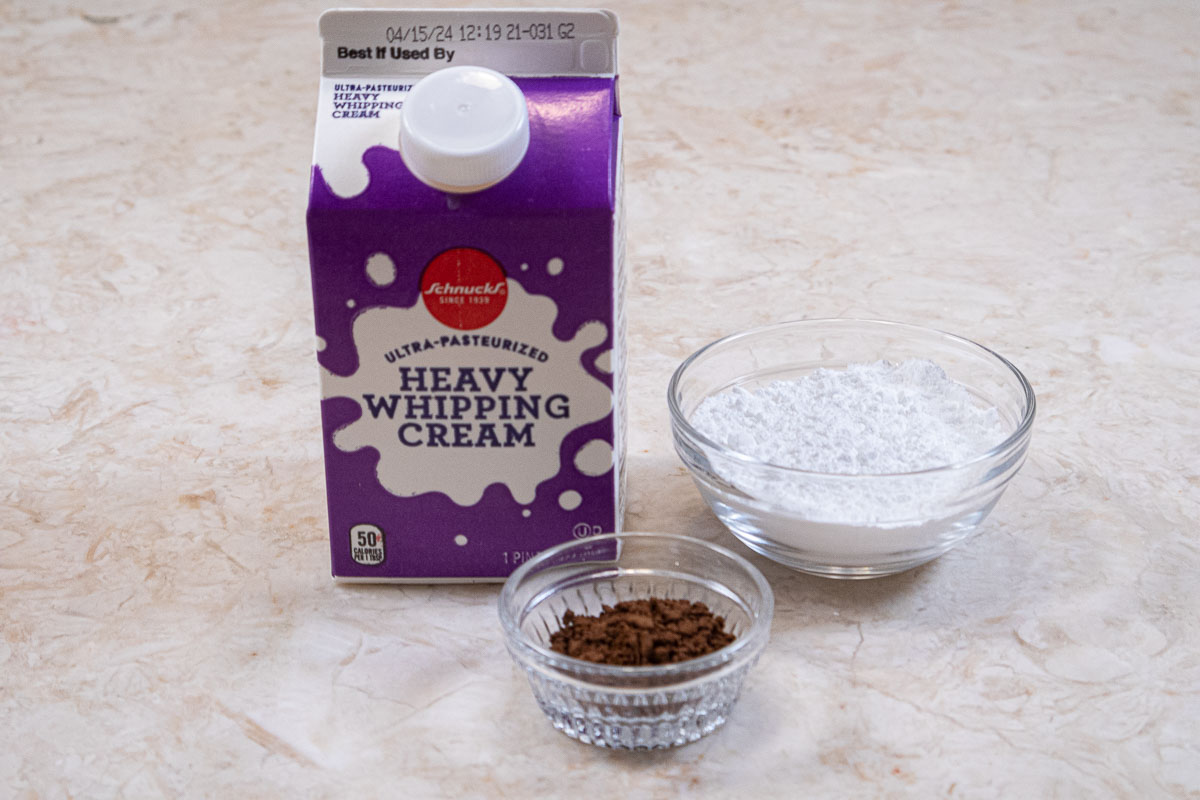
FRONT ROW: Instant coffee
BACK ROW: Heavy cream, powdered sugar
Vanilla Wafers - I used the popular Nilla wafers for my crust. Other brands may need more or less melted butter so just start with about ⅔ and add more as needed.
Some Condensed Milk (be sure not to used Evaporated) is thinner than the Eagle Brand. It may need a bit more cooking at the end.
The Banana skin should be almost all yellow with a few small brown spots. Really ripe bananas don't do well here.
Brickle pieces come in plain or with chocolate in them. In the finished photos you will see I used the chocolate brickle pieces. When I had to reshoot the ingredients the only one available were the plain. The ones I used were the Heath Bits O' Brickle English Toffee Bits. Another brand is Skor, but I have not seen that.
The chocolate may look like chocolate chips but it is actually #811 Callebaut semisweet chocolate callets which is pure chocolate.
Heavy Whipping Cream has a higher fat content than regular whipping cream. It holds its shape when whipped without any stabilization even if frozen and then thawed.
Instant Coffee was used. If using espresso, you may want to use less.
Be sure to see the recipe card below for the exact ingredients & instructions.
Step by Step Instructions
Vanilla Wafer Crust
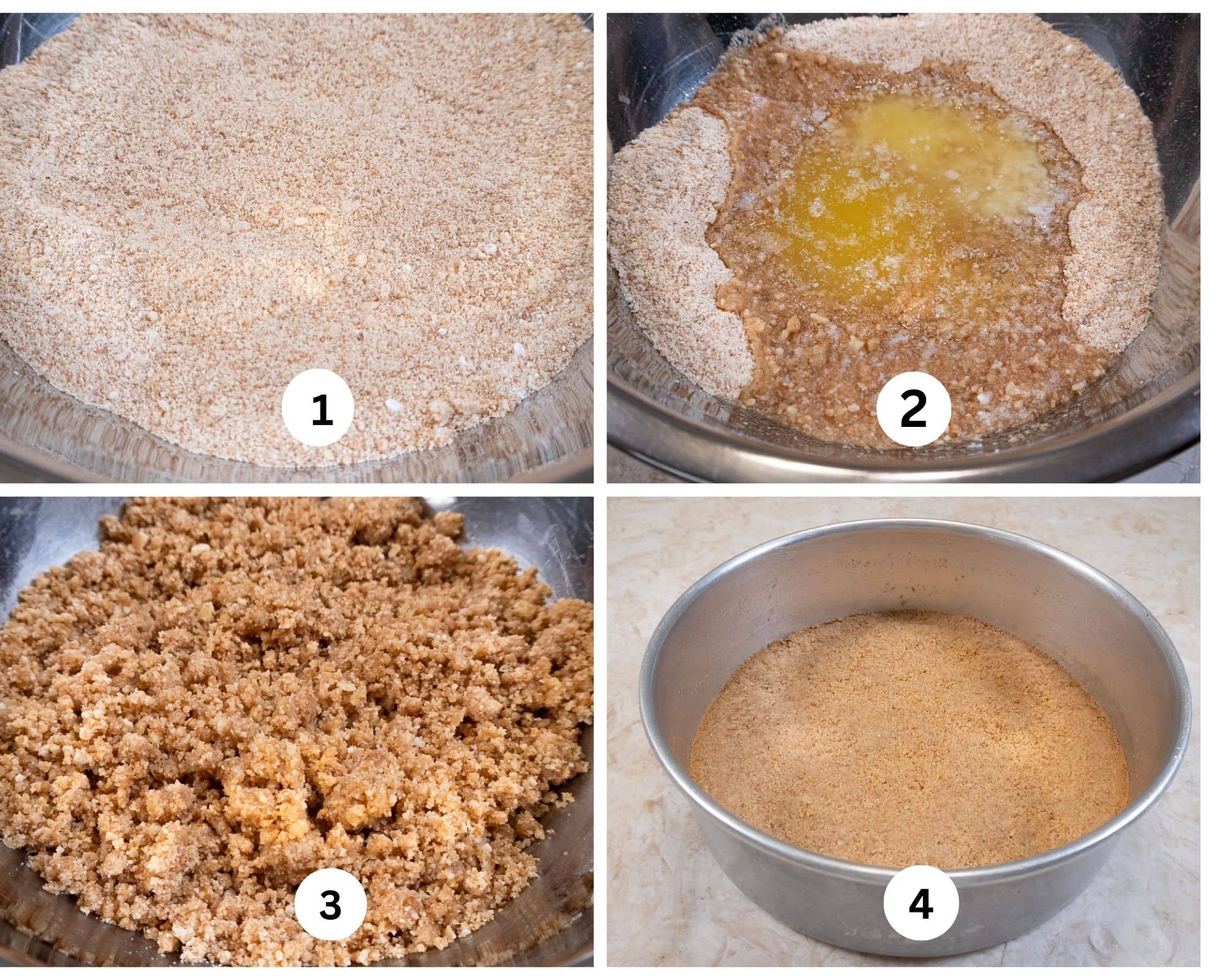
Step 1. Place the vanilla wafers and powdered sugar in a processor bowl. Process to make fine crumbs. Step 2. Add the melted butter. Step 3. Toss with a fork to completely coat the crumbs and form large crumbs. Step 3. Transfer them to a 9x3" cheesecake or springform pan and press them firmly into the pan.
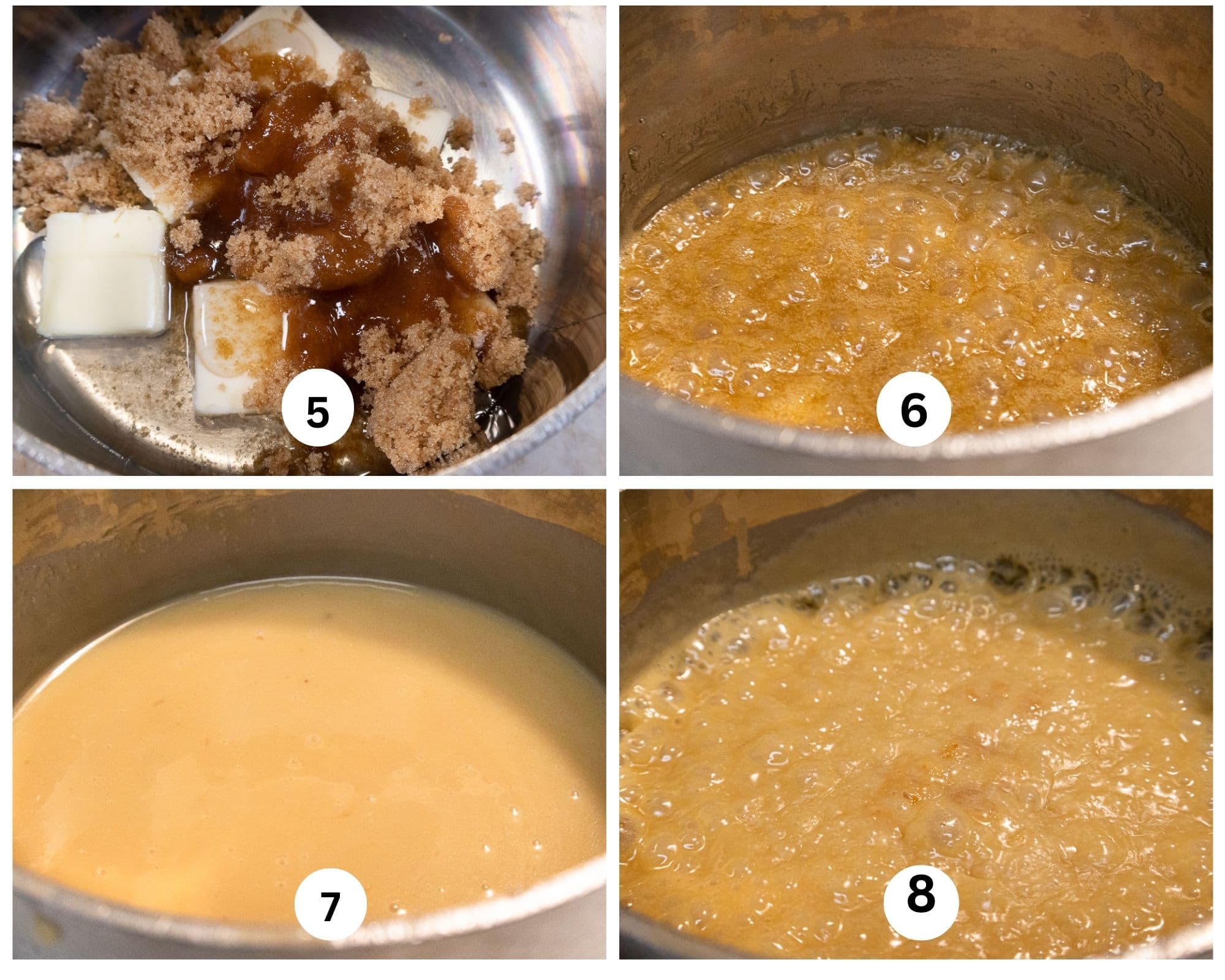
Step 5. Place the butter, brown sugar and corn syrup in a heavy bottom pan. Step 6. Stirring it constantly bring it to a rolling boil. Step 7. Add the condensed milk and switch to a whisk. Whisk it constantly as it comes to a rapid boil. Boil for 2 minutes until thick and golden brown. The mixture is prone to burning so it is necessary to whisk well, reaching into the corners of the pan.
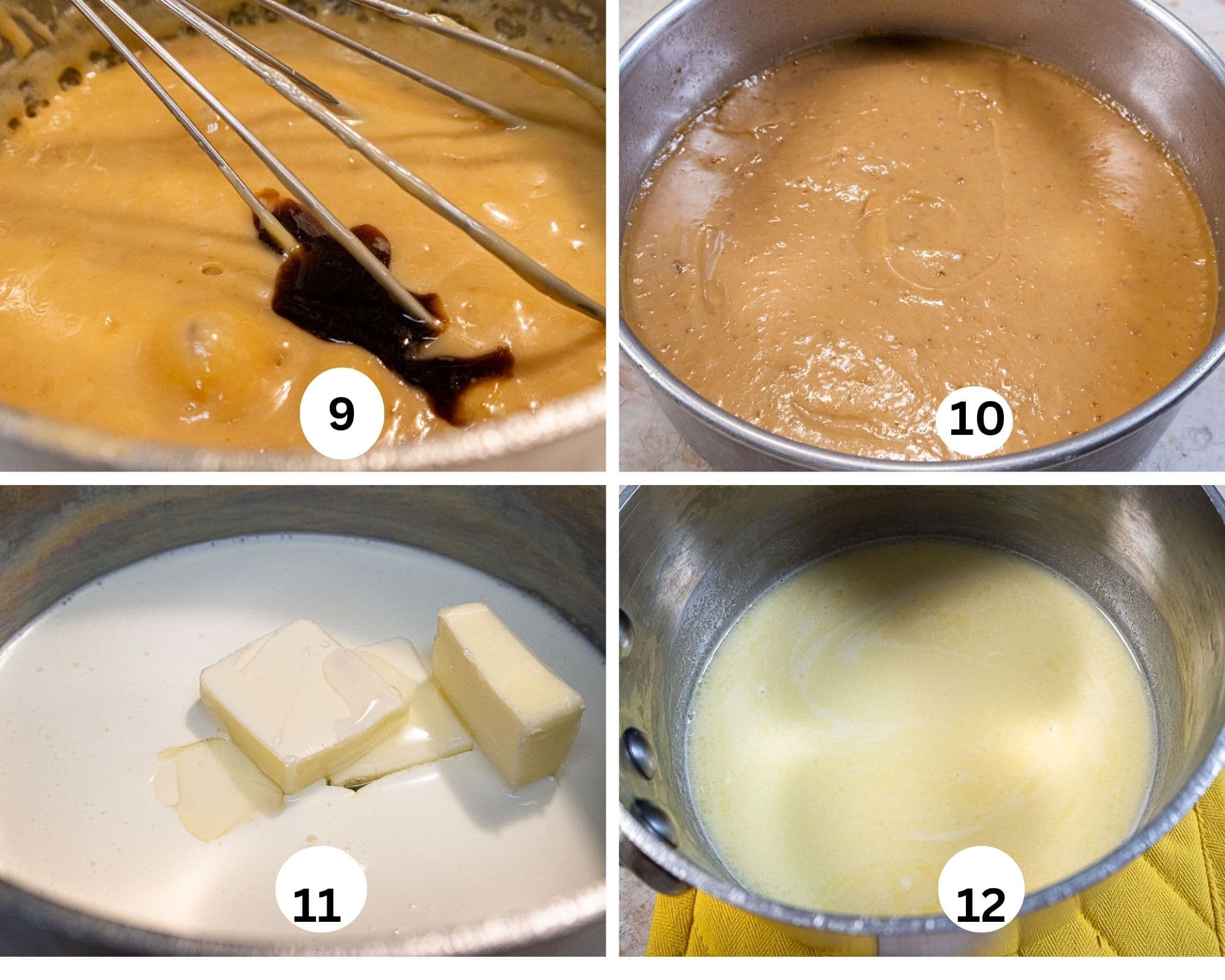
Step 9. Whisk the vanilla into the toffee. Step 10. Pour the toffee over the crust. Let it come to room temperature. Set aside. Step 11. Combine the cream and butter for the chocolate mousse in a 6 quart pan. Step 12. Heat until the butter is melted and the mixture is very hot and steamy but not boiling.
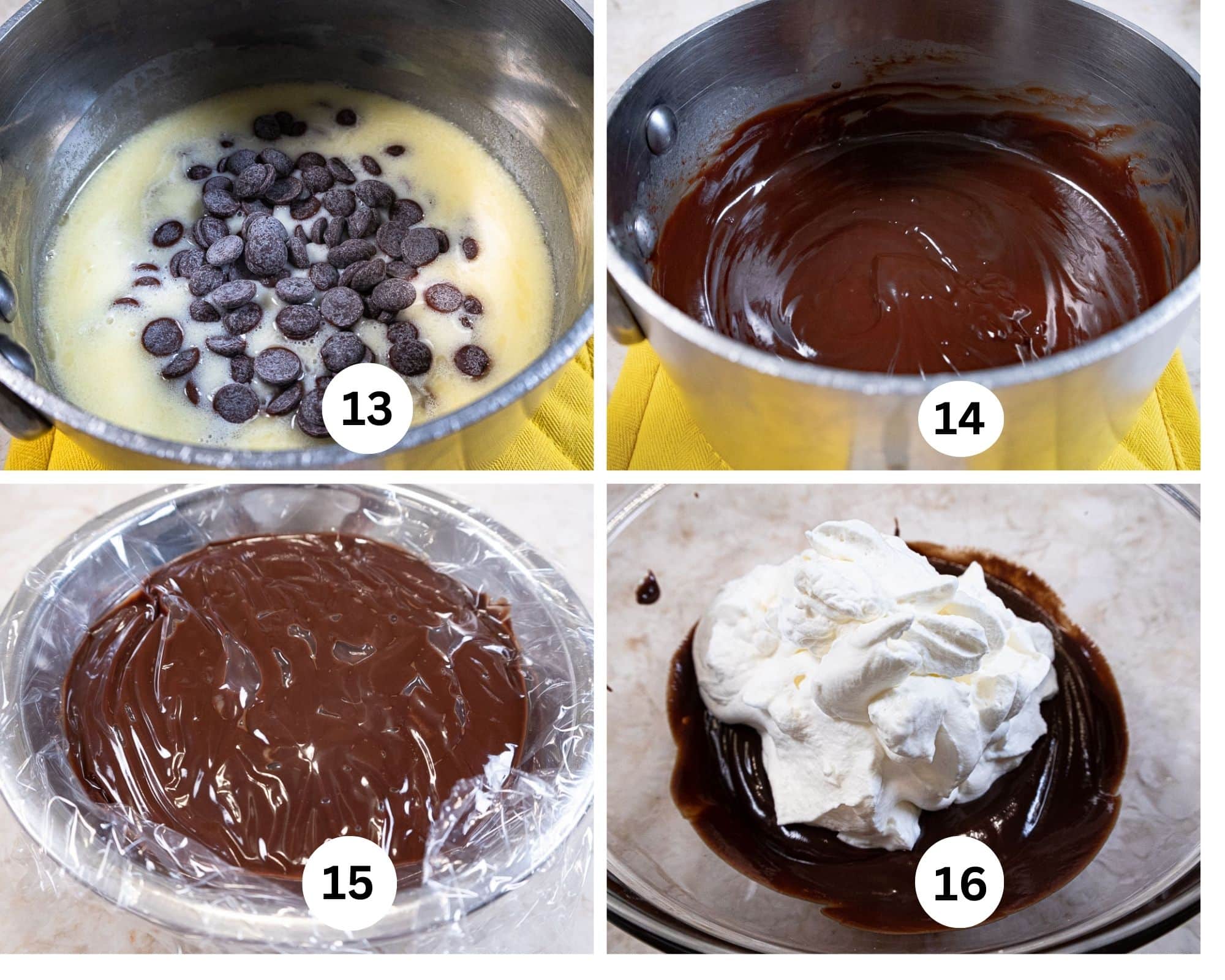
Step 13. Submerge the chocolate under the hot cream. Let it sit for several minutes. Step 14. Whisk until smooth. Step 15. Transfer to a small bowl and cover with plastic wrap. Cool to room temperature. Step 16. Whip the cream until soft peaks form. Add it to the chocolate.
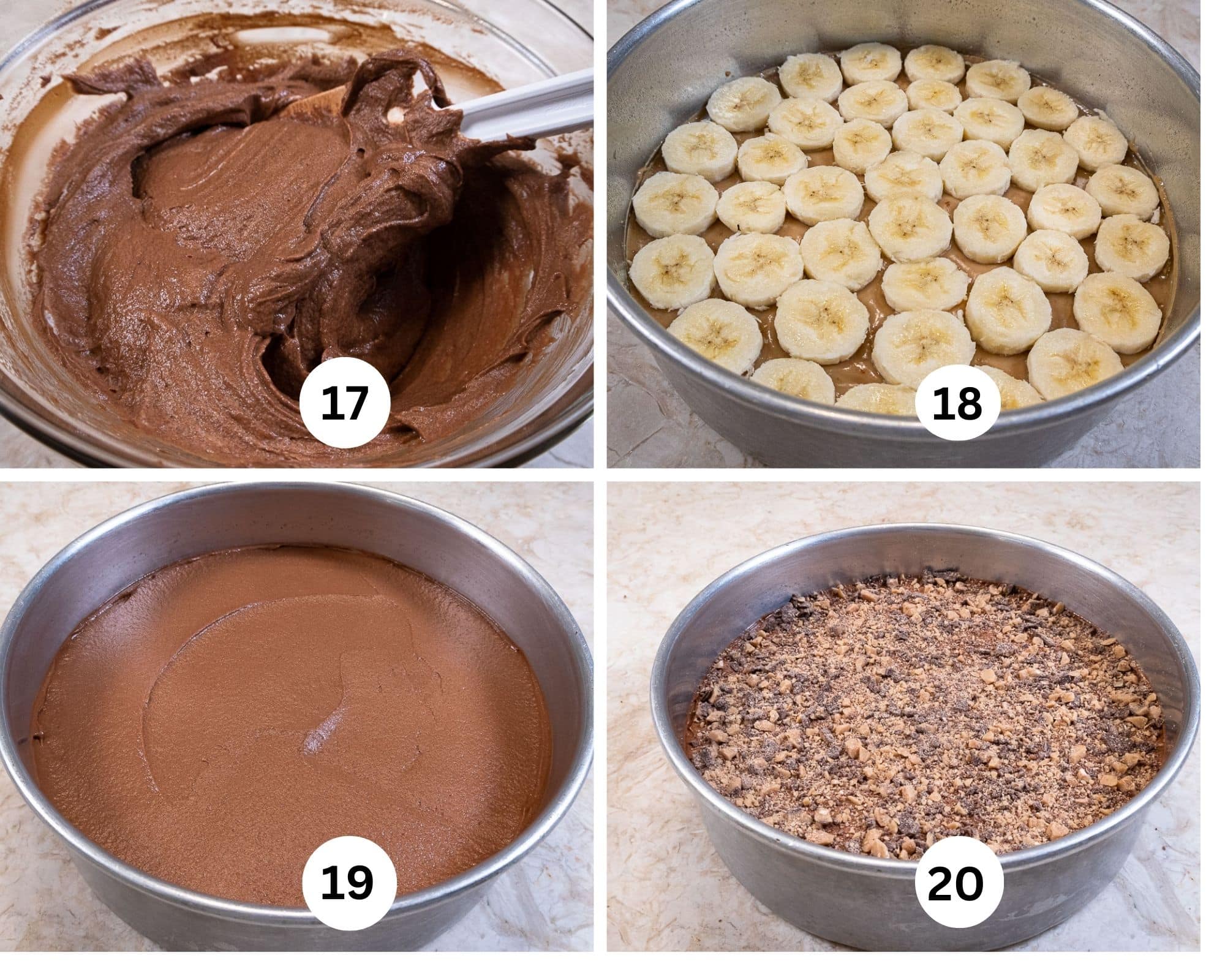
Step 17. Fold the cream and chocolate together. Step 18. Cut the bananas into thick slices and cover the toffee with them. Step 19. Spread the mousse over the bananas. Step 20. Cover the mousse with the brickle pieces. Refrigerate to firm.
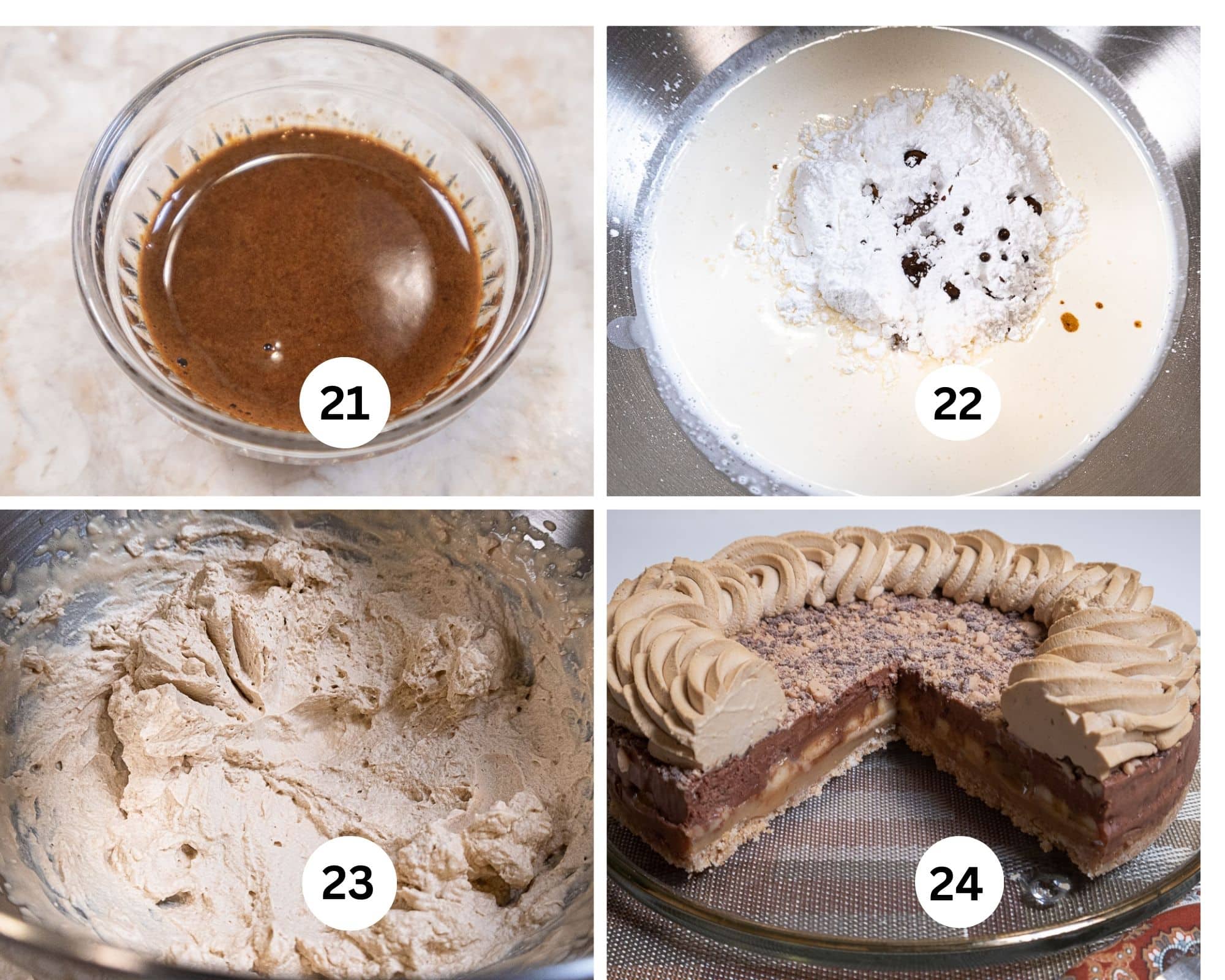
Step 21. Combine the vanilla and coffee for the coffee whipped cream topping. Step 22. Add them to the heavy cream. Step 23. Whip until stiff. Step 24. Release the pie from the pan and place it on a baking circle or a serving plate. Using a #6 open star tip in a piping bag, fill it with the cream and pipe around the edges of the Banoffee Pie. Refrigerate. For the best taste, room temp it for 20 to 30 minutes.
Recipe FAQs
The dessert was invented in Britain at the The Hungry Monk Restaurant in East Sussex, by owner Mackenzie and his chef, Ian Dowding in 1971.
When you add heat to your ingredients, they undergo a chemical reaction known as the “Maillard reaction” when the sugar is cooked to the proper moisture level caramelization occurs. This happens as the mixture becomes a rich brown.
Eagle Brand says no. The tins are not made to withstand high temperatures which is why they can explode unexpectedly.
Expert Tips
- Different vanilla wafer crumbs may require more or less butter to bind them. I used Nilla Wafers which work well with the amount of butter I specify. However, if using another brand, start with about ⅔ the butter and add more as needed. You just want them to hold together to form the base.
- The bananas should be all yellow preferably. Really ripe bananas, while perfect for banana bread aren't good here.
- Heavy cream should be used for its higher fat content.
- Store the pie in the fridge but room temp it about 20 to 30 minutes for the best taste.
- The coffee can be omitted from the flourish of whipped cream if desired.
- Be sure to use real chocolate, not chocolate chips for the mousse.
- Most recipes warn against the toffee becoming grainy from the sugar. This concern is alleviated by adding a bit of corn syrup which is an invert sugar and, added in the correct amount, will keep the toffee smooth.
- Be sure to use a heavy bottom saucepan to make the toffee filling and stir or whisk constantly as the condensed milk burns quickly.
- Either plain brickle or chocolate brickle can be used to top the mousse.
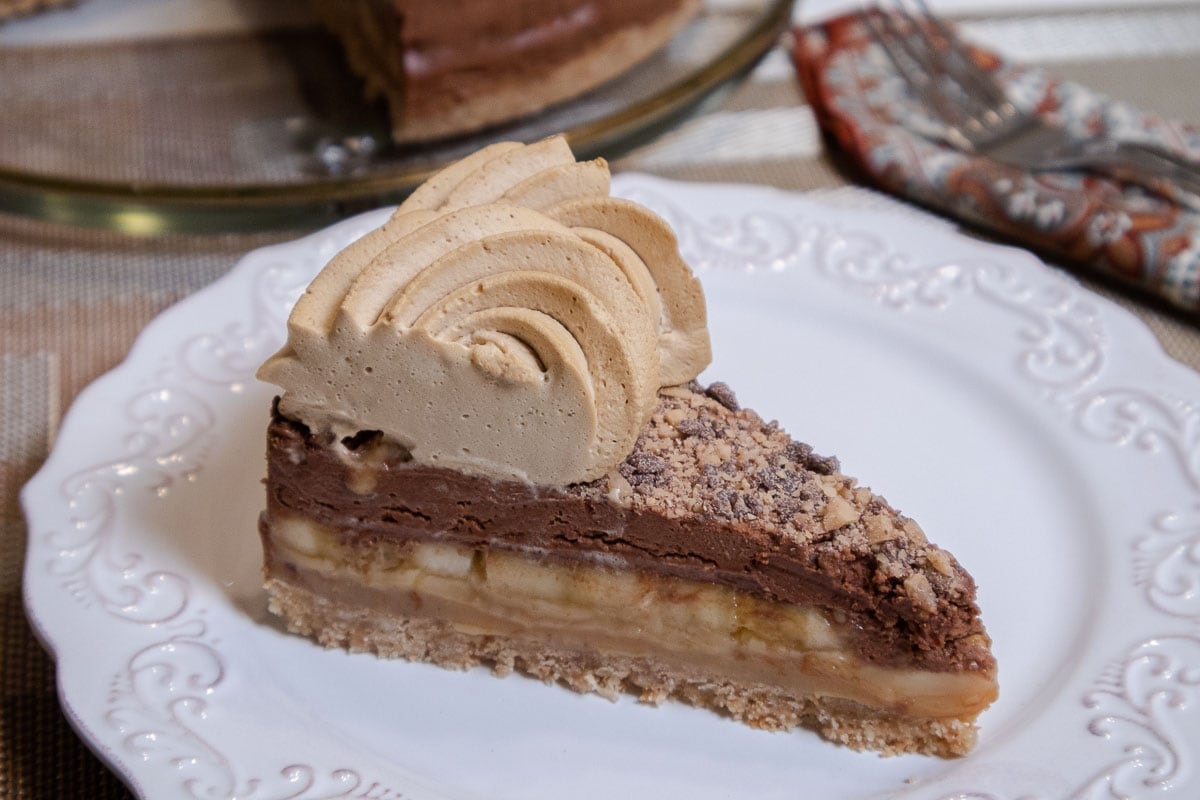
More Pies for Your Pleasure
If you love this Banoffee Pie, It would be hugely helpful and so appreciated it if you would take a moment to leave a rating below. Thank you.
Amazing Banoffee Pie Recipe
Equipment
- 9x2 cheesecake or springform pan
- Small (6 quart or so) heavy bottom saucepan
Ingredients
Vanilla Wafer Crust
- 2 cups vanilla wafer crumbs (215 grams)
- ¼ cup powdered sugar (35 grams)
- 6 tablespoon unsalted butter (90 grams)
Toffee Filling
- 4 tablespoons unsalted butter (60 grams)
- ⅓ cup light brown sugar (65 grams)
- 2 tablespoons corn syrup
- 12 ounce can condensed milk
- 1 teaspoon vanilla
- 3 medium bananas
Chocolate Mousse
- 1 cup heavy cream, divided
- 2 tablespoons clear corn syrup
- 2 ½ tablespoons unsalted butter (35 grams)
- 5 ounces semisweet chocolate (140 grams)
- Brickle as needed
Coffee Whipped Cream
- 2 teaspoons instant coffee, more or less to taste
- 1 teaspoon vanilla extract
- 1 ¼ cup heavy cream
- ¼ cup powdered sugar (35 grams)
Instructions
Vanilla Wafer Crust
- Spray a 9x3" cheesecake pan or springform mold with a non-stick baking spray. Set aside.
- Place the vanilla wafers and powdered sugar in the bowl of a processor. Process to make crumbs.
- Remove to a bowl and add the melted butter. Stir with a fork until all of the crumbs are uniformly coated.
- Press the crumbs evenly and firmly into the bottom of the pan.
Toffee Filling
- Place he butter, sugar, and corn syrup into a heavy saucepan, over a low heat, stirring all the time until the sugar has dissolved and it comes to a rapid boil
- Add the condensed milk and bring back to a rapid boil for about a minute or two, whisking all the time until thickened and golden. Remove from the heat and add the vanilla.
- Spread the toffee over the base and bring to room temperature. This may be made a day or two ahead and refrigerated if desired. Bring to room temperature before adding the bananas.
Chocolate Mousse
- Combine ½ cup cream, cornsyrup and butter in a small saucepan. Heat until the butter melts cut do not let it boil. It should be steamy hot but not boiling.
- Remove from the heat and submerge the chocolate. Wait for 2 minutes the gently whisk until smooth. Set aside at room temperature until thickened. This may take several hours.
- This may be made several days ahead and refrigerated. Bring to room temperature to use.
- Whip the remaining ½ cup cream to medium stiff peaks and fold into the chocolate mixture.
- Slice the bananas thickly and cover the toffee. Press them into the toffee lightly.
- Spread the chocolate mousse layer over the bananas.
- Sprinkle heavily with the brickle and refrigerate to set.
Coffee Whipped Cream
- Dissolve the coffee in the vanilla. Add all of the ingredients to the bowl of a mixer. Beat on medium until it begins to thicken, then raise it a bit higher and beat until stiff peaks form.
- Fit a piping bag with a #6 open star tip and pipe a wide border around the edge of the pie.
- Store the pie in the refrigerator for a day or two. Set it out at room temperature for 20 to 30 minutes before serving for the best taste.
Notes
Nutrition
Mini Pineapple Upside Down Cakes
Dazzle your friends and family with these classic Mini Pineapple Upside Down Cakes. Fruity, gooey, and caramelly this is one of America's favorite cakes. These individual cakes are perfect with any number of dinners from a down home barbecue to an upscale dinner party. No more dense cakes. The two step yellow cake is tender, featherlight, stays moist for days and is effortless to make.
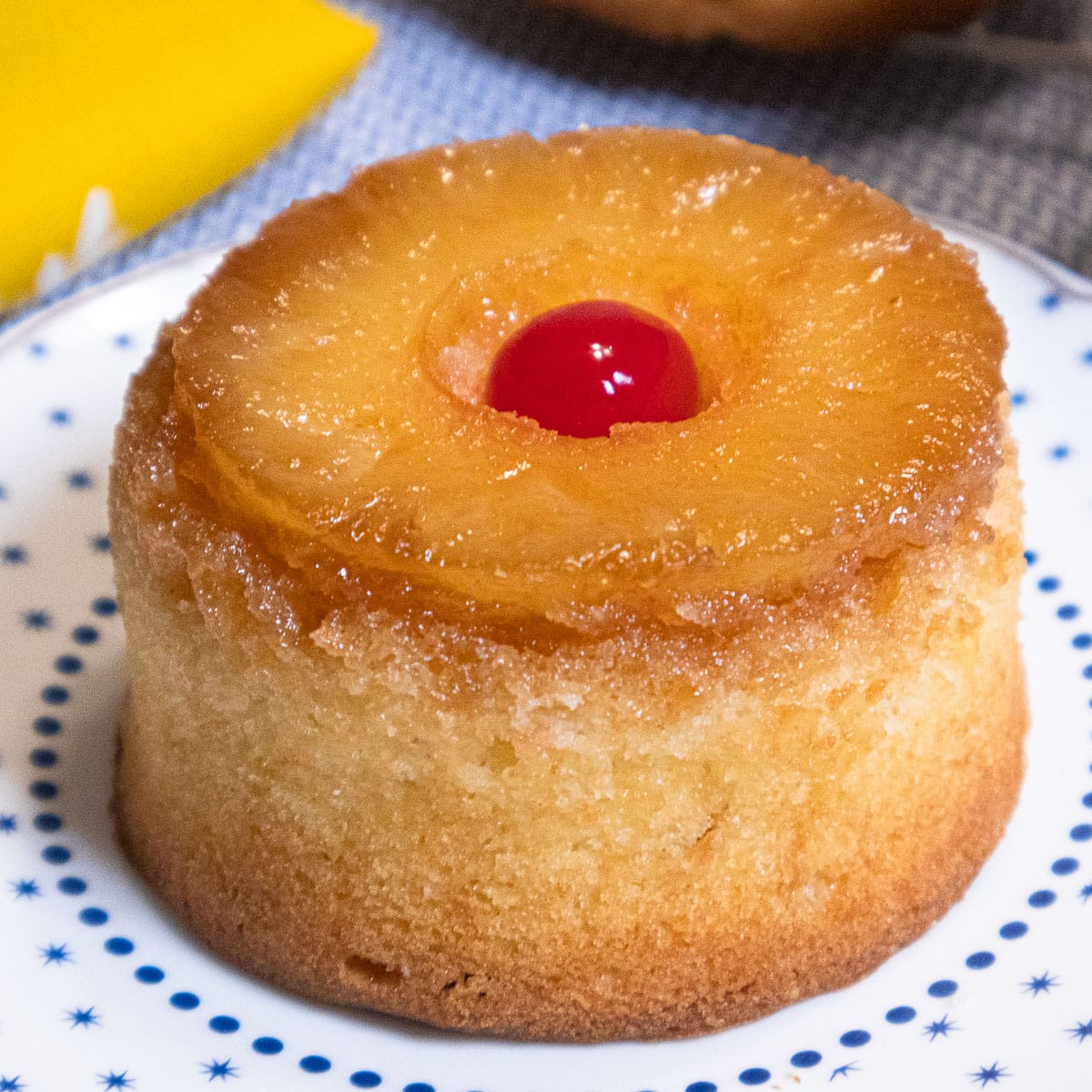
Made in eight ounce ramekins, these timeless cakes when flipped over after baking, make an impressive presentation of glistening caramelized fruit over a fluffy cake.
It became popular after an early 20th-century Dole engineer invented a machine that would slice that company's signature product — pineapple — into perfect rings; the first recipe appeared in print in 1923. The Daily Meal has a fascinating read on the origin of this cake.
And here's a fun fact. I'll bet you didn't know April 20th is National Pineapple Upside Down Cake Day. Now you do!
Be sure to check out these other fruit based recipes: Blueberry Lemon Pizza in a Brioche Crust, Sunnyside Up Apricot Pastries, Roasted Peaches with Amaretti Crisp, Pina Colada Cake, Easy Pina Colada No Bake Cheese Cake and Banana Split Cupcakes and the Plum Crisp.
[feast_advanced_jump_to]Why you want to make this recipe
- It's a classic cake which is simple to make and yields great results.
- Individual desserts are a great way to say "you are special".
- Uses simple ingredients that are probably in your pantry.
- Easy to make yet delicious and beautiful.
- Simply put, it tastes incredible.
- The brown sugar and butter caramelize the pineapple.
Variations
- Different fruits can be substituted. Canned apricots, fresh plums pitted and sliced in half, sliced apples, and fresh peaches are a few.
- Sprinkle pecans or coconut over the butter before adding the brown sugar.
- For a spiced version, add ½ teaspoon cinnamon and nutmeg to the cake batter.
- Fresh pineapple slices can be used. Blot dry also.
Recipe Ingredients
Pineapple Ingredients
FRONT ROW: Unsalted butter, maraschino cherries
BACK ROW: Canned Pineapple Slices, light brown sugar
Pineapple Ingredients
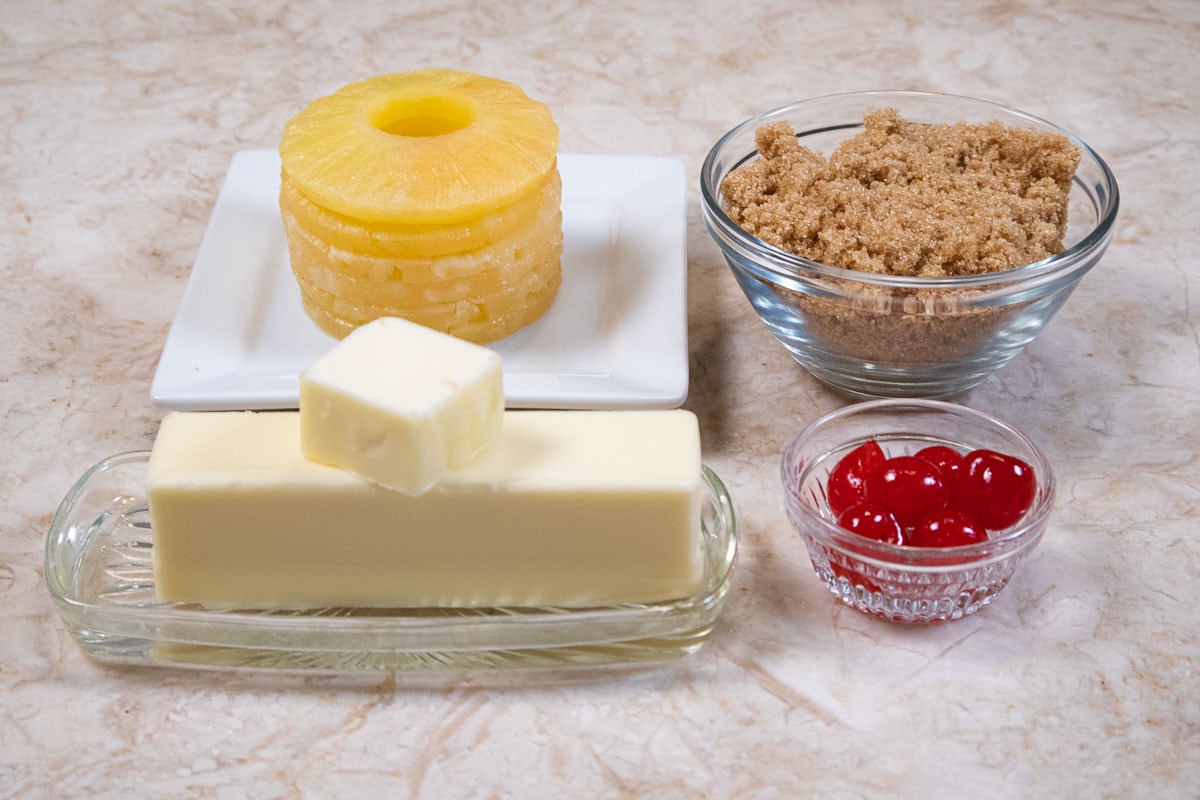
FRONT ROW: Unsalted Butter, maraschino cherries
BACK ROW: Pineapple Slices, brown sugar
Yellow Cake Ingredients

FRONT ROW: Vanilla extract, almond extract
MIDDLE ROW: Unsalted butter, egg yolks, baking powder
BACK ROW: Granulated sugar, cake flour, milk
Be sure to see the recipe card below for the exact ingredients an instructions.
Step by Step Instructions
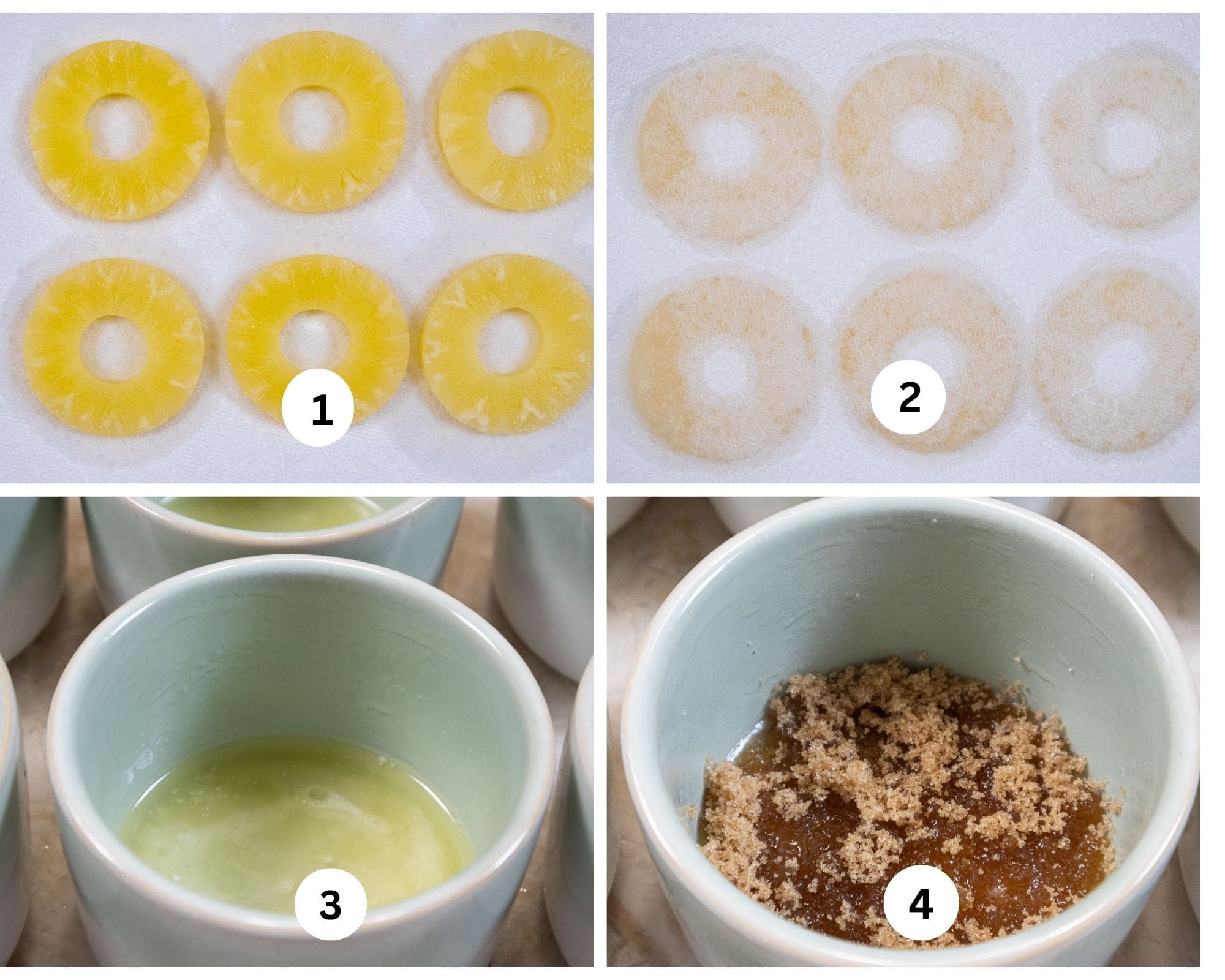
Step 1. Place the pineapple slices on several layers of paper towels. Step 2. Place several more paper towels on top of the pineapple slices. Press firmly to remove as much liquid as possible. Replace the paper towels and repeat to make sure they are dry. Step 3. Add 1 ½ tablespoons of melted butter to each ramekin. Brush it up the sides of the ramekins. Step 4. Sprinkle 2 tablespoons brown sugar over the butter. If using nuts or coconut, sprinkle it over he butter first, then add the brown sugar.
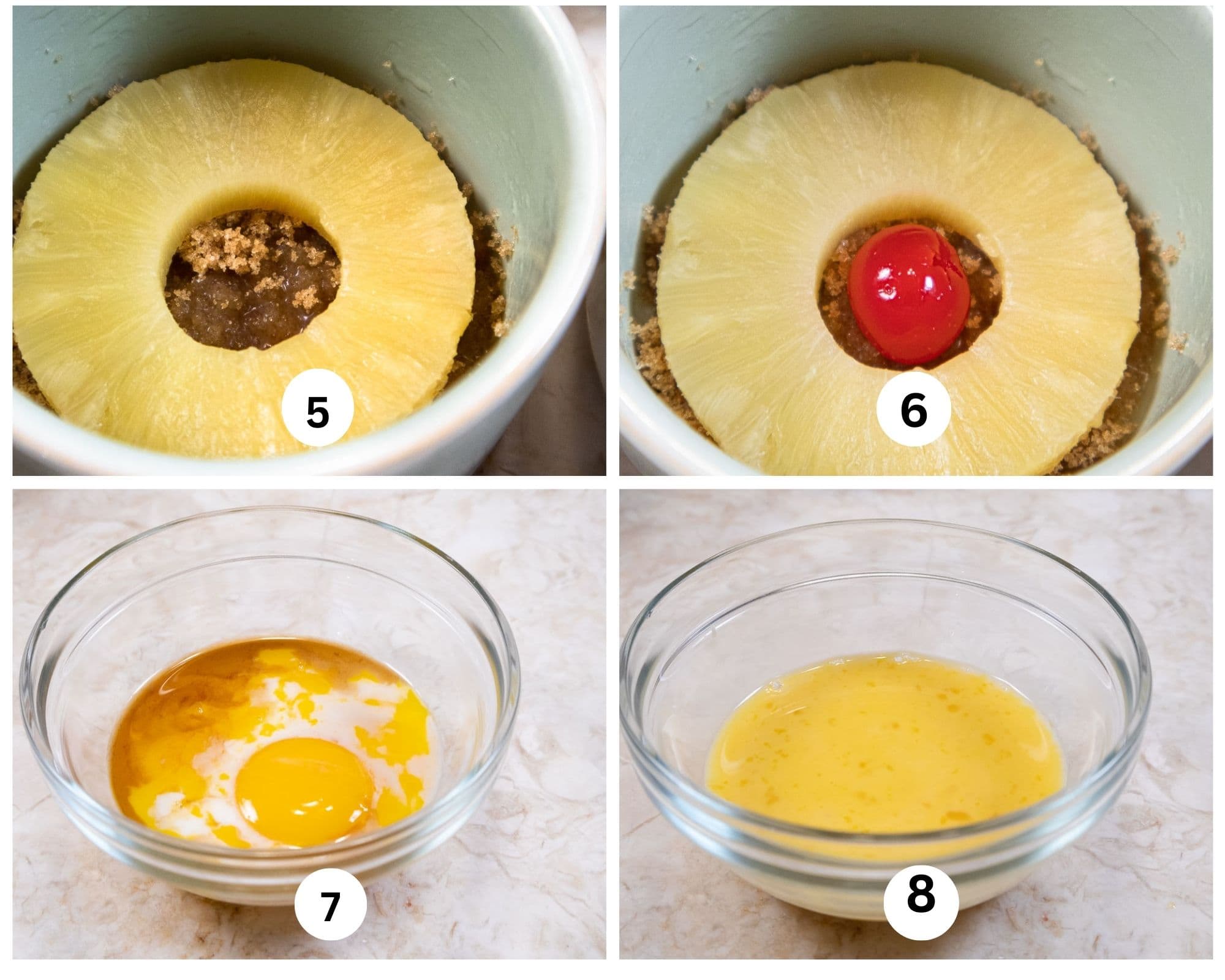
Step 5. Place the pineapple over the brown sugar, Step 6. Add a cherry in the hole of the pineapple. Step 7. Combine part of the milk, the vanilla and almond extracts and egg yolks in a small bowl. Step 8. Whisk together the liquids and set aside.
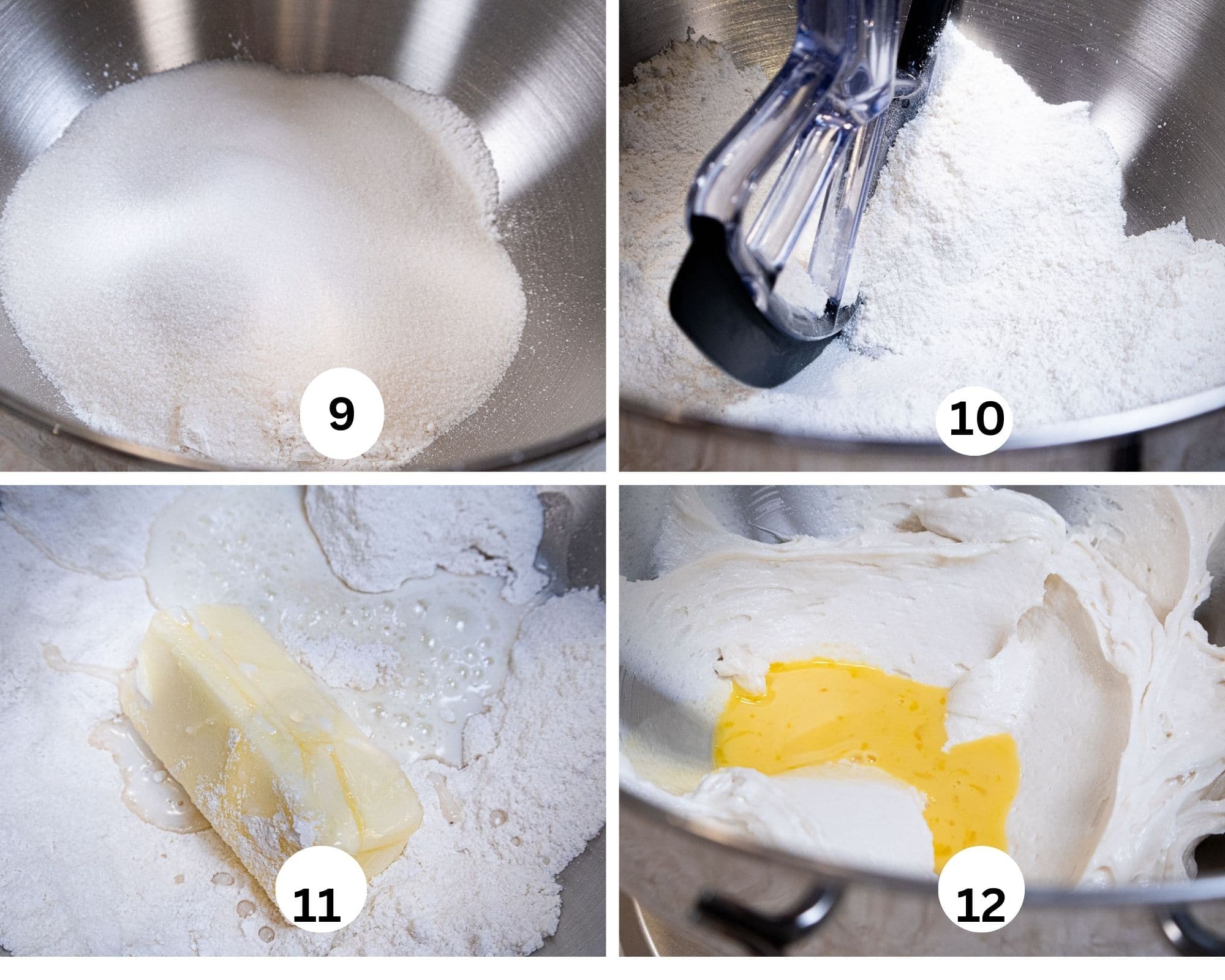
Step 9. Place the dry ingredients in the bowl of a mixer. Step 10. Mix them together for about 30 seconds. Step 11. Add the softened butter and remaining milk and mix according to instructions to form a batter. Step 12. Add half of the liquid to the batter.
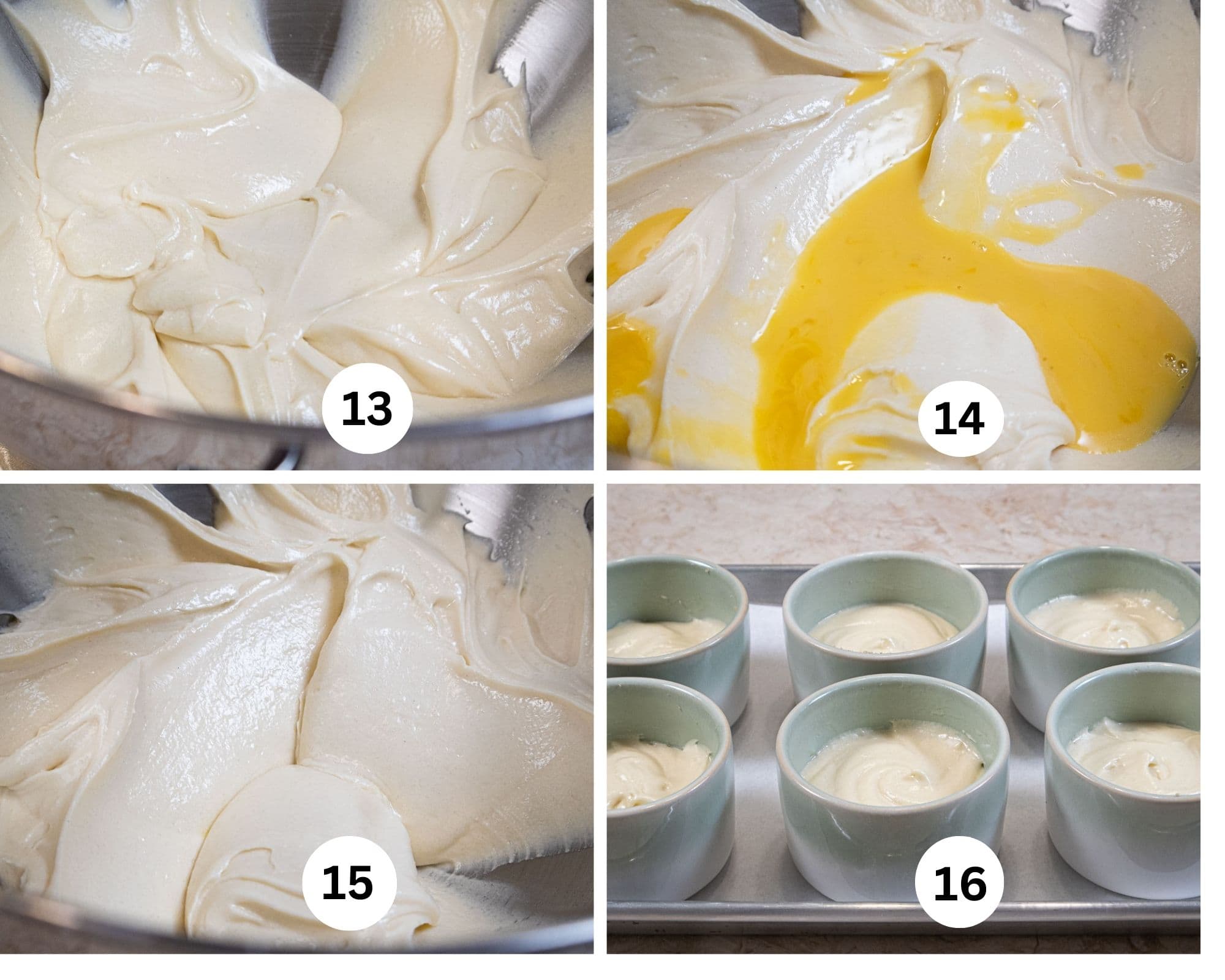
Step 13. Mix the batter for 30 seconds. Step 14. Add the last of the liquid. Step 15. Mix another 30 seconds. Step 16. Pour the batter over the pineapple in the ramekins.
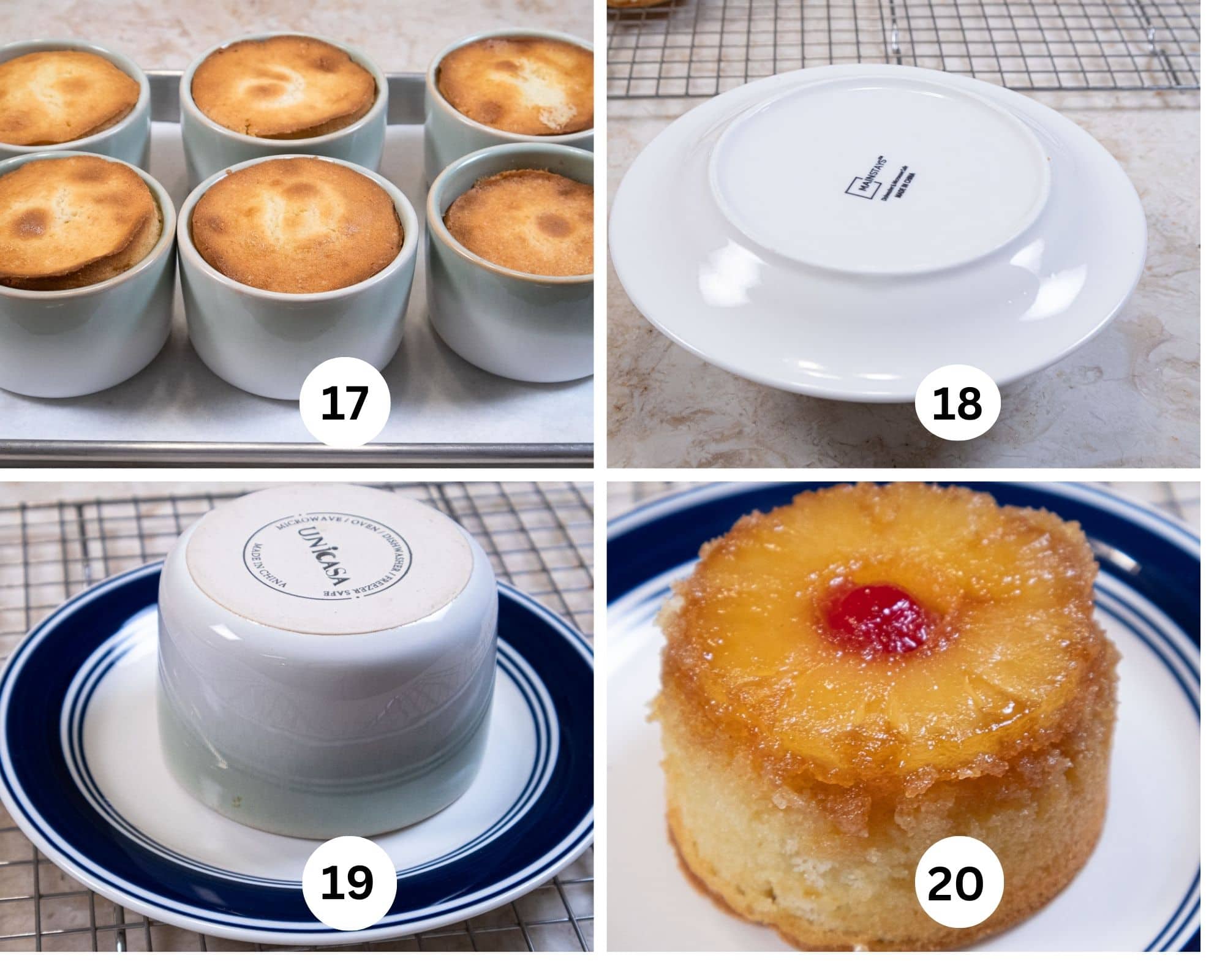
Step 17. Bake the cakes as instructed. Step 18. To release the cakes, place a small plate over the top of the ramekin. Step 19. Flip the plate so the ramekin is now upside down on the plate. Step 20. Pull the ramekin up and away from the cake. Use a pancake turner to transfer the still hot cake to a cooling rack.
RECIPES FAQs
The pineapple needs to be throughly blotted dry or the moisture from the wet pineapple can seep into the cake batter changing the texture and making it wet.
Butter the ramekins all the way up to the top very well. A non-stick baking spray also works very well. Spray the entire container well before adding the melted butter. Release within 5 to 10 minutes.
It will last 2 days, covered, at room temperature or 4 days in the refrigerator.
Storage Instructions
These mini pineapple upside down cakes are best served warm or at room temperature on the day they are made. They can be made that day and kept at room temperature covered with foil after they cool. To warm, place them, still covered in a 350°F oven for about 10 minutes. Store any leftovers at room temperature for a few days.
Expert Tips
- Be sure to blot the pineapple and cherry very dry or the extra moisture will seep into the cake while baking altering the baked cake texture. Change the paper towels as necessary.
- Don't press so hard you split the pineapple ring.
- Brush the butter all the way to the top of the ramekins so the cakes release easily and completely.
- Either whole or 2% milk can be used in the cake.
- These are made in 6 eight ounce ramekins with straight sides.
- The butter for the cake needs to be very soft but not melted or runny. It should be about 74°F.
- The ramekins will be hot but they need to be removed within 5 to 10 minutes of coming from the oven. Start at 5 minutes. I fold a kitchen towel and place it over the ramekin to remove it. See photos above.
- Transfer the hot cake to a cooling rack with a pancake turner to finish cooling.
- If you want a garnish, serve with rum whipped cream or better yet, Malibu rum which is coconut flavored and delicious. Just add a tablespoon of rum to a cup of heavy cream and a quarter cup of powdered sugar. Whip until fairly stiff.

More individual desserts to enjoy
If you love these Mini Pineapple Upside Down Cakes, It would be hugely helpful and so appreciated it if you would take a moment to leave a star rating below. Thank you.
Mini Pineapple Upside Down Cakes
Equipment
- 6 Eight ounce ramekins (225 grams)
Ingredients
Pineapple and Brown Sugar
- 9 tablespoons unsalted butter, melted (135 grams)
- ¾ cup light brown sugar, packed (150 grams)
- 6 slices canned pineapple
- 6 maraschino cherries
Featherlight Yellow Cake
- 2 large egg yolks
- ½ cup milk
- ¾ teaspoon almond extract
- ½ teaspoon vanilla extract
- 1 ¼ cups cake flour (150 grams)
- ¾ cup granulated sugar (150 grams)
- 2 teaspoons baking powder
- 6 tablespoons butter, softened
Instructions
Pineapple and Brown Sugar
- Preheat the oven to 350°F.
- Place the pineapple slices between several layers of paper towels. Press down to blot dry. Change the paper until the pineapple is dry. Blot the cherries lightly so as not to destroy their shape.
- Place 1 ½ tablespoons melted butter in each ramekin. Brush it up the sides of the ramekins making sure to cover the sides well.
- Add 2 tablespoons packed brown sugar to each ramekin. Top with a pineapple slice and cherry in the hole of the pineapple. Set aside.
Featherlight Yellow Cake
- Make sure the butter is very soft. It shouldn't be runny or melty but about 73°F.
- In a small bowl, whisk together the egg yolks, 2 tablespoons milk, almond, and vanilla extracts. Set aside.
- Place the dry ingredients in the bowl of a mixer. Mix on low for 30 seconds to blend.
- Add the butter and remaining milk. Mix on low speed just to moisten the dry ingredients. Increase the speed to medium and beat for 2 minutes.
- Add half of the egg mixture and beat for about 30 seconds. Repeat with the other half.
- Add about ½ cup batter to each of the ramekins. Spread flat.
- Bake for 28 to 33 minutes until golden brown and a tester comes out clean. When you test make sure to skewer only the cake. Do not go to the bottom of the ramekin.
- Cool 5 to 10 minutes and release the cakes.
- Place a small flat dish on top of the ramekin. Flip it over and carefully remove the hot ramekin. I used a folded kitchen towel over the ramekin to remove it.
- Remove the cake from the dish with a pancake turner and place it on a cooling rack.
- Serve it warm or at room temperature.
Notes
Nutrition
Traditional Irish Soda Bread
Traditional Irish Soda Bread is possibly the easiest, fastest bread to make. No yeast, no mixer, no rising - just a bowl, a rubber spatula and a few measuring utensils and in about 10 minutes or less you have a delicious loaf of rustic bread ready for the oven. This is considered a quick bread and quick it is. For more quick breads see my Quick Bread Category.
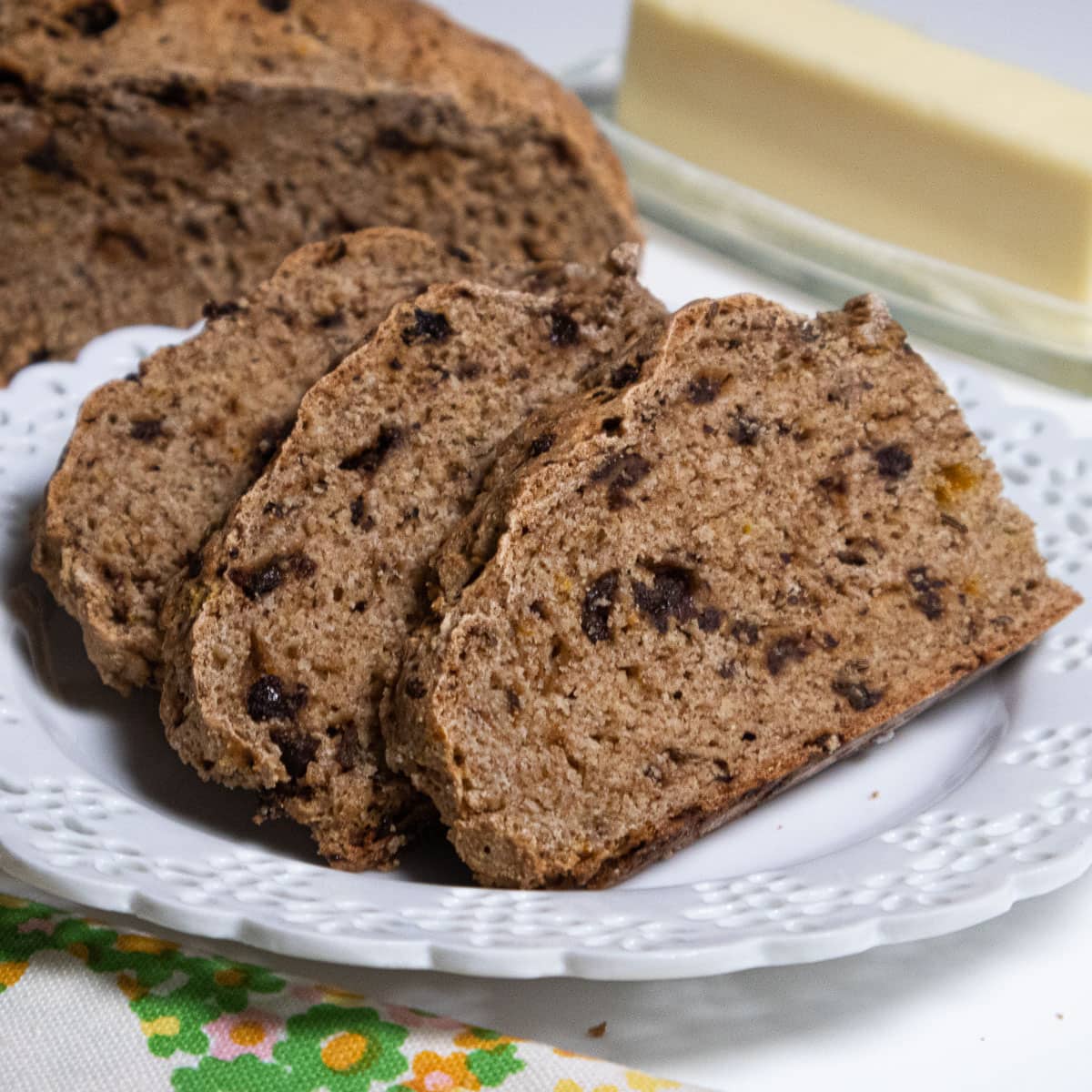
The basic Traditional Irish Soda Bread consists of five ingredients and differs from the American version as it has no eggs, butter or sugar. It is a dense, moist, hearty bread thanks to an abundance of buttermilk. The Beauty of Buttermilk in Baking is an in-depth discussion of this important ingredient.
The addition of currants or raisins, caraway seed, and orange rind adds flavor notes that fit perfectly with this rustic bread.
[feast_advanced_jump_to]Why you'll love this recipe
- It's super easy to make. A bowl, a rubber spatula and a few measuring ingredients are all that are required to make the bread.
- Due to the combination of all purpose flour and whole wheat flour, the bread has a depth of flavor by itself. Adding currants, caraway seeds, and orange rind add even more flavor.
- This rustic bread requires no shaping skills or involved techniques.
- It's great served on it's own with butter or cream cheese or as a great side to soup, chili or stew.
- It's the perfect foil for a ham and cheese or better yet a corned beef and swiss cheese sandwich.
- This soda bread lasts for days on the kitchen counter or can be frozen to enjoy later.
Recipe Ingredients

FRONT ROW: Salt, caraway seed and baking soda
MIDDLE ROW: Currants, orange for rind
BACK ROW: Whole wheat flour, all purpose flour and buttermilk
Be sure to see the recipe card below for the exact ingredients & instructions.
Step by Step Instructions
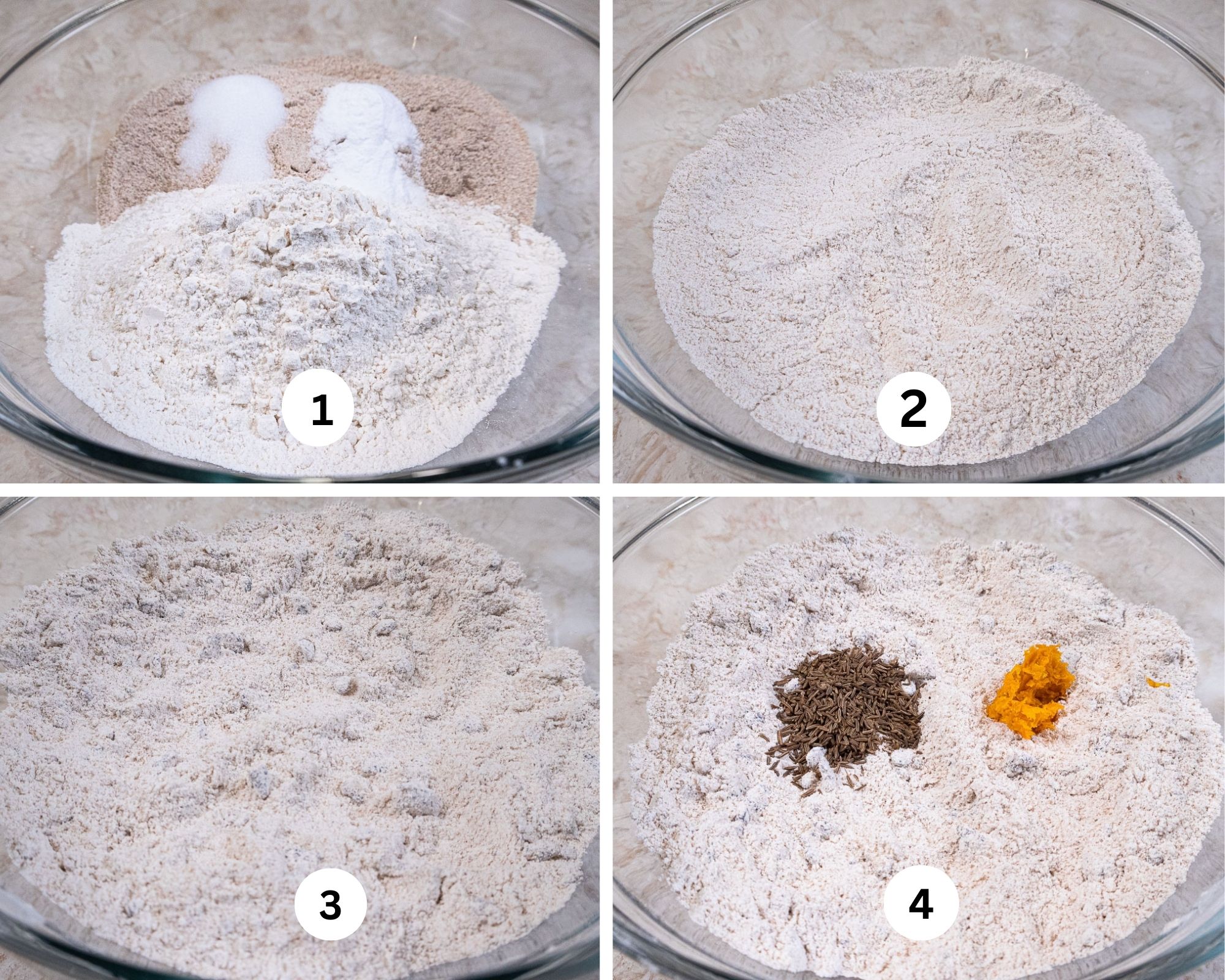
Step 1. Combine the all-purpose flour, whole wheat flour, salt and baking soda in a large bowl. Step 2. Whisk them together. Step 3. The currants were super moist and in a clump. Separate them by rubbing them with the flour to break them up. If raisins are being substituted, soak them first in hot water and squeeze them out completely before adding to the dry ingredients. Step 4. Mix in the currants and orange rind.
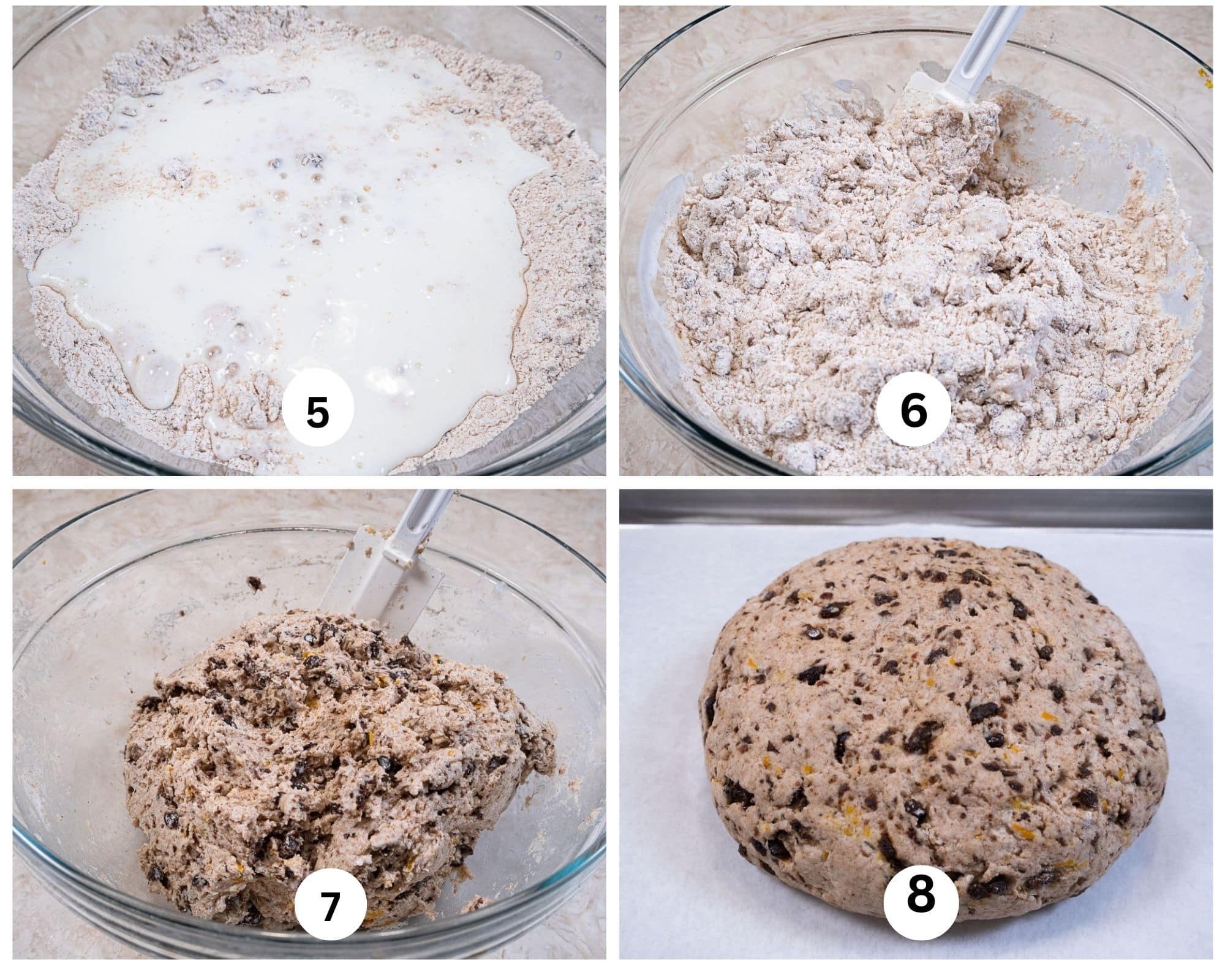
Step 5. Pour the buttermilk over the ingredients. Step 6. Using a rubber spatula, mix in the buttermilk using a folding motion. Step 7. The dough is very sticky and I don't recommend mixing it by hand. The spatula does a great job. Step 8. Turn the dough out onto a lightly floured surface and shape into a ball. Transfer to a parchment lined baking sheet. Bake as directed.
Recipe FAQs
Traditional soda bread has only five ingredients, flour, whole wheat flour, salt, baking soda and buttermilk. The American version features egg, butter and sugar.
It is called soda bread because it is leavened with baking soda. When the baking soda mixes with the buttermilk, it causes the bread to rise.
Dryness is most often caused by the lack of buttermilk. The dough should be very wet and sticky. Buttermilk naturally helps keep items moist.
Expert Tips
- Be sure to use buttermilk or if that is not on hand, substitute milk. Remove 1 tablespoon milk for every cup and add 1 tablespoon lemon juice or white vinegar. Let it sit while the rest of the recipe is prepared. As it sits it will curdle which is fine.
- See my post on Baking Powder vs. Baking Soda for more information on these two leavening agents.
- For a basic loaf, just omit the currants, caraway seed, and orange rind.
- Although the dough may be made with only all-purpose flour, it will not have the depth of flavor as that made with part whole wheat flour.
- If using raisins instead of currants, be sure to soak them in very hot water while the rest of the ingredients are gathered. Squeeze them very dry before adding them to the flour. Mix them in as for currants.
- I don't cut a cross in this bread as is traditional because the loaf becomes mis-shapen no matter how shallow the cut.

More Quick Breads to enjoy
If you love this Traditional Irish Soda Bread, It would be hugely helpful and so appreciated it if you would take a moment to leave a rating below. Thank you.
Traditional Irish Soda Bread
Ingredients
- 2 cups all-purpose flour (280 grams)
- 1 ¾ cups whole wheat flour (245 grams)
- 1 ½ teaspoons baking soda
- 1 ½ teaspoons salt
- ¾ cup currants or raisins
- 1 tablespoon caraway seed
- 1 teaspoon orange rind
- 2 cups buttermilk
Instructions
- If using raisins instead of currants, soak them in hot water. Squeeze them very dry when using. Grate the orange rind and set aside.
- Preheat the oven to 375°F. Line a baking sheet with parchment paper. Set aside.
- Combine both flour, the salt and baking soda in a large bowl.
- Add the currants or raisins to the dry ingredients. Rub them together with the flour. The currants may take a bit more effort to separate them if they are stuck together.
- Mix in the caraway seed and orange rind into the rest of the ingredients.
- Pour the buttermilk over and using a rubber spatula with a folding motion, combine the buttermilk and dry ingredients completely.
- Lightly flour your work surface and shape into a ball. Place on the parchment paper.
- Bake for 45 to 50 minutes until a tester comes out clean.
- Cool the bread on a rack.
- The bread may be stored at room temperature in a plastic bag for several days or it can be frozen for longer storage. Thaw it on the counter. Refresh in a 350°F oven, wrapped in foil with a hole left at the top for about 20 minutes.
Notes
Nutrition
No Bake Mini Chocolate Caramel Tarts
These easy, No Bake Mini Chocolate Caramel Truffle Tarts for Valentine's Day Dessert or any day consists of a chocolate press in crumb crust, homemade caramel and the same truffle filling used in our Chocolate Chocolate Truffles so popular at the bakery. These six tarts can also be made ahead.
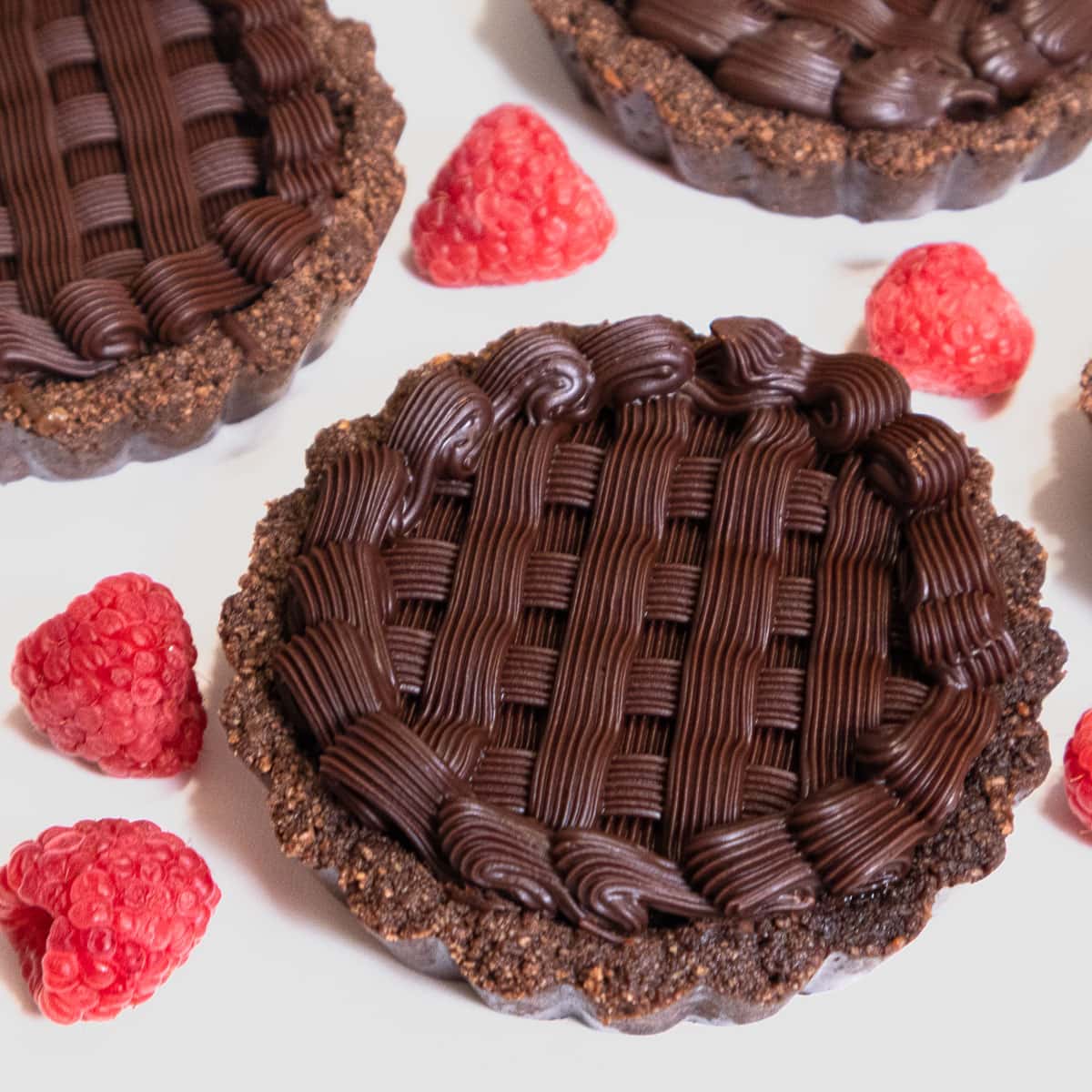
You won’t believe how easy the basketweave is to make. It gives such a sophisticated and elegant appearance to this special dessert and you don't need to be a professional to pull it off. Everyone will think you bought it at an upscale bakery.
[feast_advanced_jump_to]Other Special Valentine's Day Treats
Why You Need to Make this Recipe
- They are so easy to make and it looks so professional.
- These can be made ahead and held in the fridge or frozen and thawed. te
- The basketweave is simply straight lines made with a basketweave tip.
- If you're not into piping, just pour the warm ganache over the caramel.
- Everyone loves an individual dessert made just for them.
- Valentine's Day is ideal for showing love wit a special dessert.
- Last, but not least, they taste amazing!
Recipe Ingredients
Caramel

FRONT ROW: Unsalted butter, vanilla and corn syrup
BACK ROW: Water, sugar and heavy cream
Corn Syrup, an invert sugar, will ensure the caramel doesn't granulate and get grainy. One granule of sugar left in the cooked caramel can turn the whole batch grainy.
The chocolate I use is is #811 Callebaut Callets. They look like chocolate chips but are pure chocolate. There are many places to purchase this online.
Crumb Crust

FRONT ROW: Powdered Sugar, cocoa
BACK ROW: Graham Cracker Crumbs, unsalted butter
Chocolate Truffle Filling
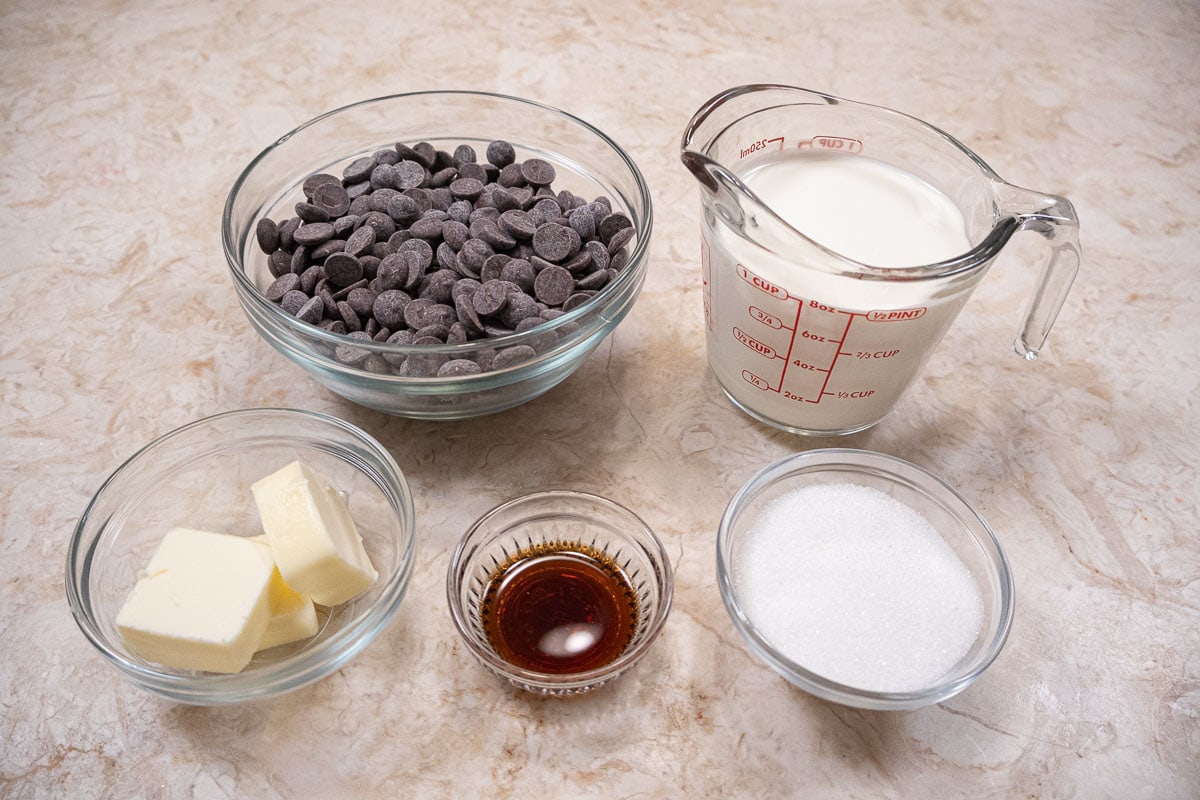
FRONT ROW: Unsalted butter, vanilla, granulated sugar
BACK ROW: Semisweet chocolate, heavy cream
Corn Syrup, an invert sugar, will ensure the caramel doesn't granulate and get grainy. One granule of sugar left in the cooked caramel can turn the whole batch grainy.
The chocolate I use is is #811 Callebaut Callets. They look like chocolate chips but are pure chocolate. There are many places to purchase this online.
Either Dutch cocoa or natural cocoa can be used but the Dutch cocoa will give a deeper color to the crust. When it comes to cocoas my article Cocoa Fundamentals Natural vs. Dutched tells you all about it.
Be sure to see the recipe card below for the exact ingredients & instructions.
Step by Step Instructions
Please see my Caramel - A Building Block of Pastry post for step by step photos as well as a great deal of information on the subject.
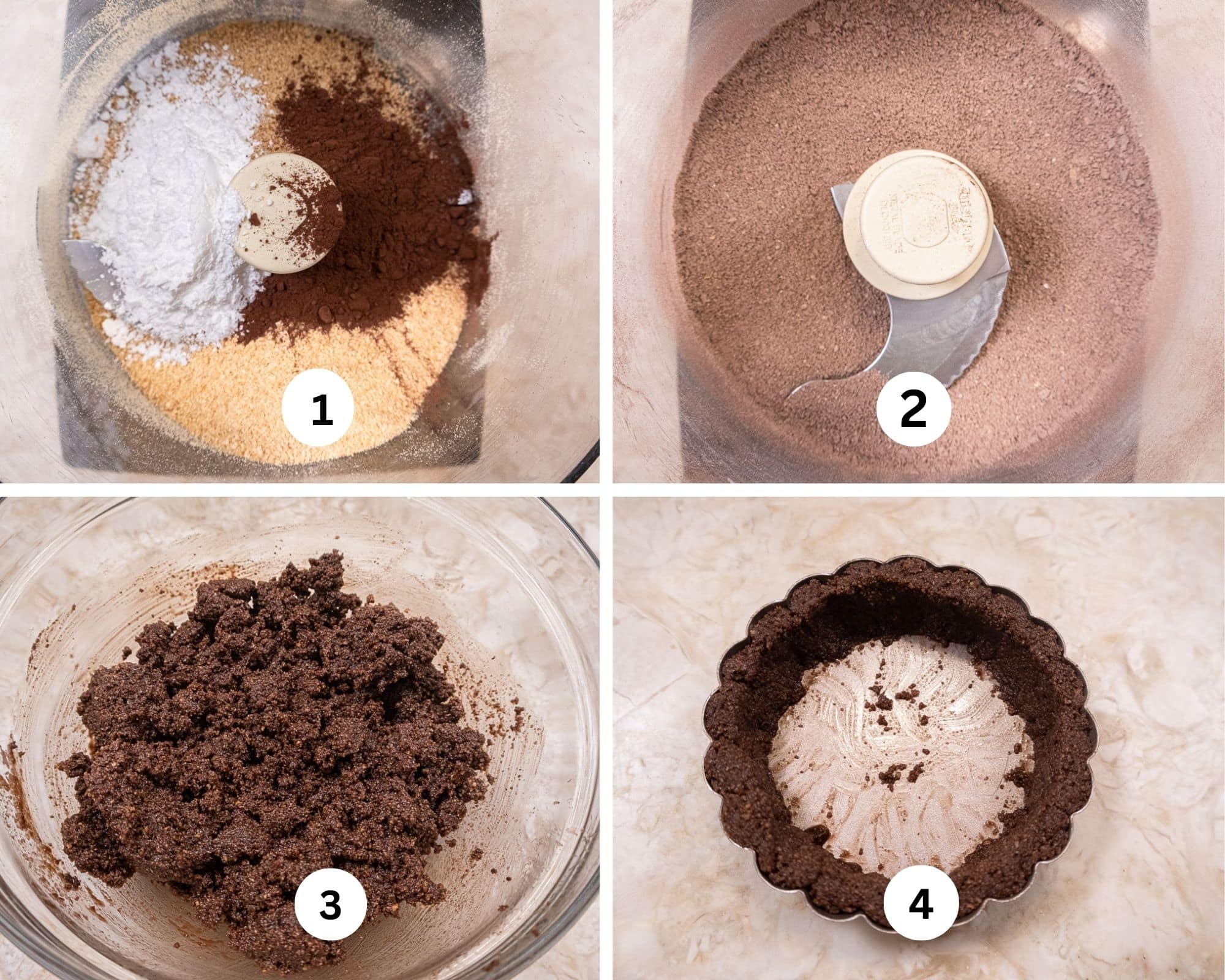
Step 1. Place the dry ingredients in the processor bowl. Step 2. Process to mix completely. Step 3. Pour into a bowl and add the melted butter. Mix with a fork until the crumbs are well coated with the butter. Step 4. Press 35 grams firmly along the sides of the each tart pan.
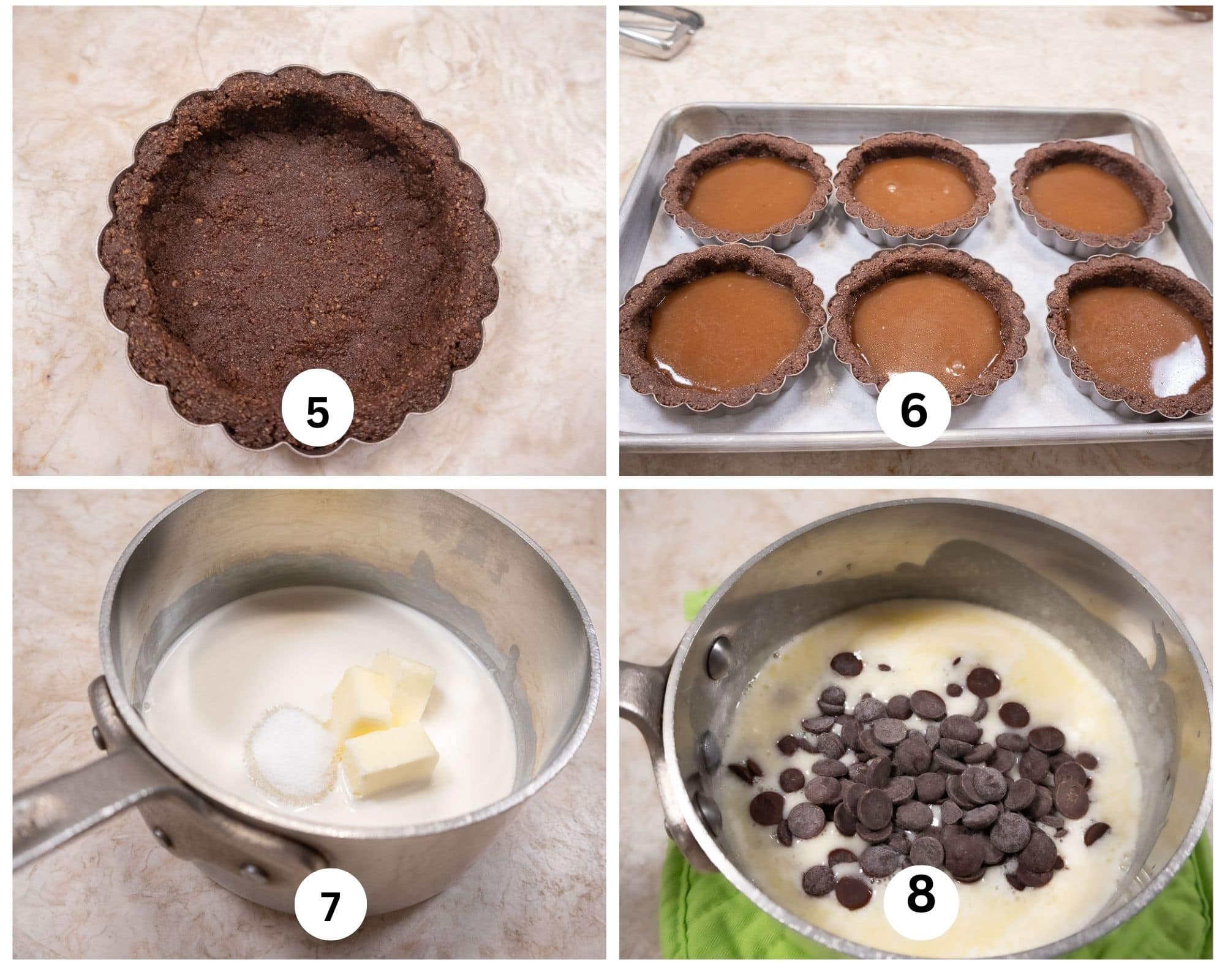
Step 5. Press 15 grams into the bottom of the pan. Step 6. Fill with about 3 tablespoons of caramel. Step 7. Place the cream, sugar and unsalted butter in a sauce pan for the caramel and bring it to a simmer, about 180°F. Make sure it is steaming but do not boil. Step 8. Add the chocolate and vanilla and submerge them under the hot cream. Let it sit for a few minutes for the chocolate to melt.
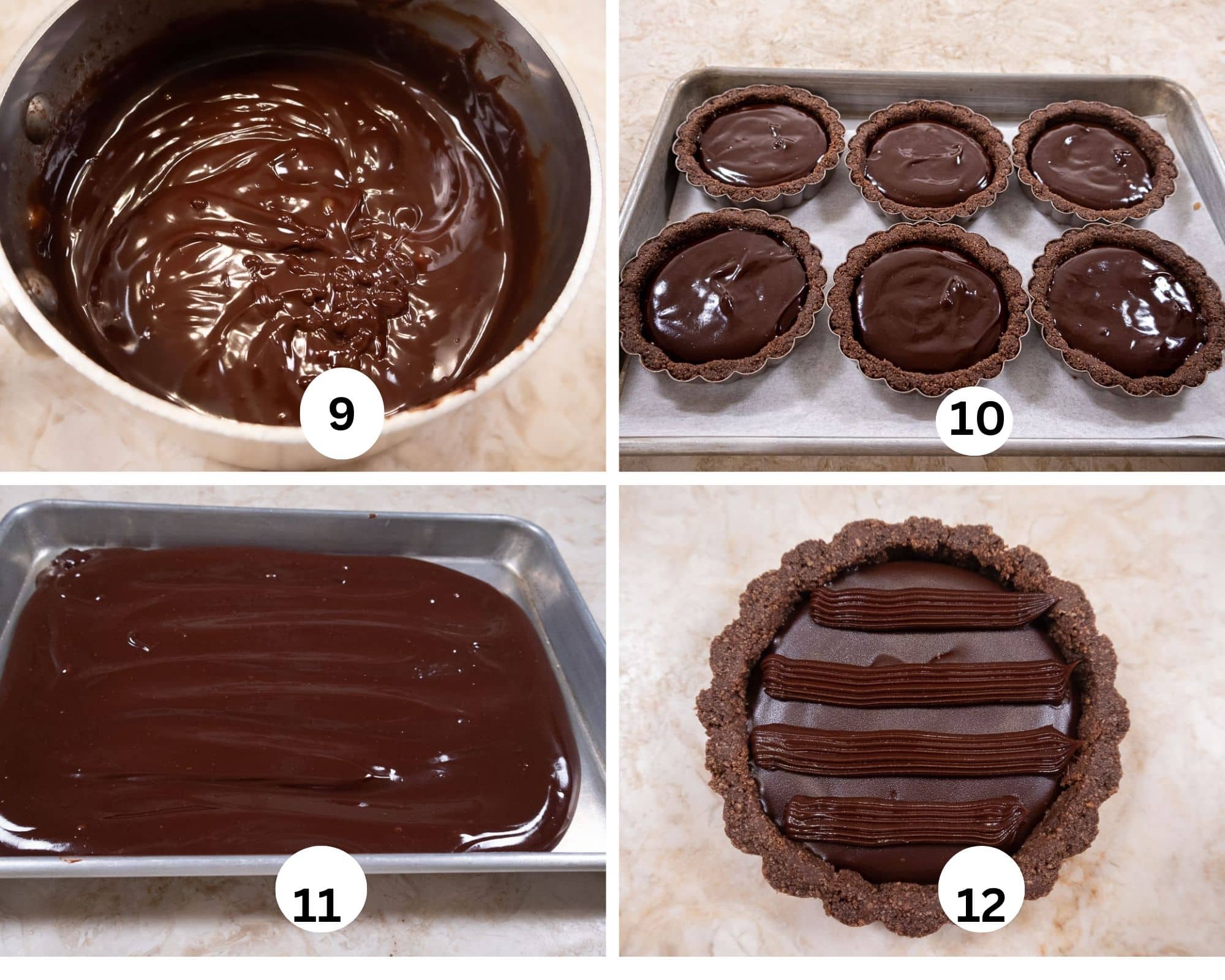
Step 9. Stir until the chocolate is completely combined with the cream mixture. Make sure you get into the corners of the pan. If using a whisk, do not whisk hard or air bubbles can be incorporated. Step 10. Pour 2 tablespoons ganache on top of each caramel layer leaving about ⅛ to ¼ inch for the basketweave. Chill the tarts until the chocolate layer is firm. Step 11. Lay out the remainder of the truffle filling on a clean sheet tray. Cover with plastic wrap and leave at room temperature to set up but still be able to be piped. Step 12. To start the basketweave, fill a piping bag fitted with a basketweave tip with the reserved chocolate truffle and pipe about 4 horizontal lines from one side to the other.
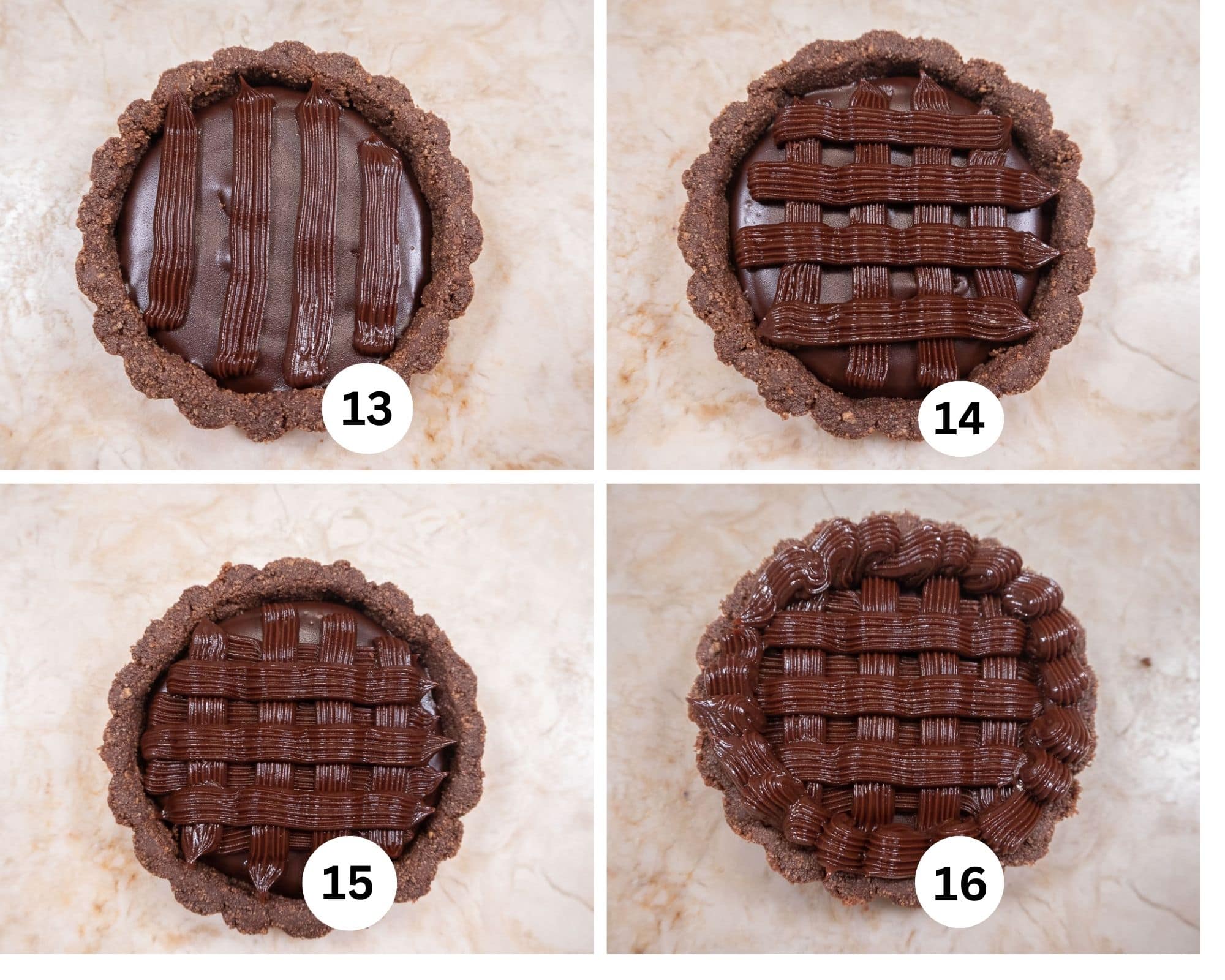
Step 13. Turn the tart 90° so the previous horizontal lines are now vertical in front of you. Step 14. Pipe a second set of 4 horizontal lines across the vertical ones. Step 15. Turn the tart 90° again so you are always piping horizontally. Pipe one last set of 4 lines across the vertical ones. This will close up any of the ganache below from showing. Step 16. Finish the edge of the tart by piping a ribbon around it or any other finish you wish. Refrigerate or freeze until needed. Thaw in the refrigerator, preferably covered overnight.
To release the tarts, let them sit at room temperature for a bit and slide the side down. Place a metal spatula between the bottom of the crust and the removable bottom. If the tart is cold enough, it will pop right off with a twist of the spatula. Otherwise, go under the tart with the spatula and lift it off.
Recipe FAQs
Depending upon the use of the caramel, the temperature can register from 215°F for caramel sauce to 315° for hard caramels. It is important to use a thermometer and take the caramel to the correct temperature. My post, Caramel - A Building Block of Pastry tells you all about it.
Depending upon the amount left over add cream to the existing caramel and heat it together. Add cream a bit at a time to thin it out. Remember, it will thicken up at room temperature or when cold.
A chocolate truffle is a candy made with a base of chocolate and cream and other ingredients such as sugar and butter. See my post on Chocolate, Chocolate Truffles. Truffles can be made with dark, milk or white chocolate and flavored many ways.
Expert Tips
- These six tarts are made in 3 ½" tart pans with removable bottoms to easily release. They are extremely rich and bigger size are not needed.
- Make sure the best ingredients are used. By this I mean heavy cream - lesser creams won't work the same - real chocolate not chocolate chips.
- Press the crumbs firmly into the tart pans so they don't crumble when released..
- Caramel can be made weeks ahead and refrigerated. Reheat very gently to liquify again. Do not overheat or it can become harder.
- A basketweave tip can be found wherever pastry tips are sold.
- If you're not sure of your piping skills, practice on a piece of waxed paper. A tip here is to look where you are going, not at the piping itself.
- The key to piping is to apply even, steady pressure to the bag.
- It is best to use a disposable piping bag as opposed to a plastic bag as they can easily and quickly stretch out of shape.
- The excess truffle mixture to be piped must be completely free of even the tiniest bit of unincorporated chocolate or it will clog the piping tip.
- Leave the excess truffle mixture at room temperature to use the next day. Refrigerating it will make it too hard. If it becomes hard at room temperature, pop it in a 200*F oven very briefly to soften it enough to pipe.
Storage and Freezing Instructions
The tarts can be made ahead and stored in the refrigerator for at least five days. Be sure to cover them, as chocolate easily picks up any odors in the fridge.
They can also be frozen up to a couple of months. Freeze the tarts on a tray uncovered until hard. Wrap well afterwards. To thaw, place them in the refrigerator overnight.
To Serve
Serve at room temperature to let the full flavor of the chocolate and caramel come through. Raspberry Sauce along with a few fresh rashperries or caramel sauce drizzled on the plate complete the presentation.

For Your Chocolate Pleasure
If you love these No Bake Mini Chocolate Caramel Tarts, It would be hugely helpful and so appreciated it if you would take a moment to leave a rating below. Thanks. I appreciate your help.
No Bake Mini Chocolate Caramel Tarts
Equipment
- 6 3 ½" tart pans with removable bottoms
- Candy Thermometer
- # 48 basketweave piping tip
- Disposable piping bag
Ingredients
Caramel - this can be made ahead
- 1 cup water
- 1 ¼ cups granulated sugar (250 grams)
- ½ cup corn syrup
- 1 cup heavy cream
- 4 tablespoons unsalted butter (60 grams)
- 2 teaspoons vanilla
Chocolate Crumb Crusts
- 1 ⅓ cups graham cracker crumbs* (140 grams)
- 3 tablespoons cocoa, dutch preferred (17 grams)
- ¼ cup powdered sugar (30 grams)
- 10 tablespoons unsalted butter, melted (145 grams)
- *If using whole graham crackers, process them to make crumbs.
Chocolate Truffle Filling
- 1 cup heavy cream
- 4 tablespoons unsalted butter (60 grams)
- ¼ cup granulated sugar (50 grams)
- 10 ½ ounces semisweet chocoalte (300 grams)
- 1 teaspoon vanilla
Instructions
Caramel
- There will be more caramel than needed but it can't cut down further. Add a bit of cream and heat it with the caramel for a delicious caramel syrup.
- Place the water, sugar and corn syrup in a 2-quart saucepan. Stir over heat until the sugar is dissolved completely. Bring to a boil; wash the sides of the pan down with a natural bristle pastry brush dipped in cold water, then boil without stirring until the mixture becomes a medium golden color.
- Off heat, immediately add the butter and stir until it is melted. Pour the cream in all at once and stir. If some of the cream lumps up don’t worry.
- Return to medium high heat and bring to a boil. Boil to 235°F on a candy thermometer.
- Cool in the pan. Do not stir at this point. Allow to come to room temperature. Refrigerate for longer storage.
Chocolate Crumb Crusts
- Either Dutch or natural cocoa can be used. The Dutch cocoa will make a darker crust, which is why I recommend it but either is fine.
- Sift the cocoa and powdered sugar together in a medium bowl. Add the graham cracker crumbs and whisk together. . Add butter and toss with a fork until crumbs are completely coated.
- Spray the center of the tart shells. Press 35 grams around edges (about ¼ cup loosely packed) and 15 grams (about 2 tablespoons) in the bottom.
- If the caramel was made ahead and is not spreadable, microwave briefly to soften it. Spread 2 tablespoons in the bottom of each tart. Set aside.
Chocolate Truffle Filling
- In a medium saucepan, bring the cream, butter and sugar to a simmer over medium heat. Whisk gently to make sure butter is melted and sugar is dissolved. If it is not, reduce heat and continue whisking until all is mixed and mixture is very hot, but not boiling - about 180 degrees on a candy thermometer.
- Remove from heat; Submerge the chocolate under cream mixture and let sit for about 5 minutes. Stir with a rubber spatula to incorporate most of chocolate. Change to a whisk and whisk gently to smooth out remaining chocolate but not so enthusiastically that you form a lot of air bubbles.
- Using a rubber spatula, go around all the bottom edges of the pan to make sure all of the chocolate is incorporated. This is extremely important when finishing the tart. If there are even teeny tiny lumps, it will not bode well as they will stick in the piping tip.
- Pour 2 tablespoons of chocolate truffle filling over the caramel. Place in refrigerator to set up for several hours or overnight.
- Lay out the remainder of the filling in a rimmed pan. Place plastic film directly over the filling and leave at room temperature for several hours or overnight. It needs to be soft enough to pipe but firm enough to hold its shape. If it becomes too firm, place it in a 200°F oven very briefly to soften it
- Fit a pastry bag with a #48 basketweave tip. Starting at the top of the tart, pipe 4 straight lines from left to right about ½ inch apart. Turn the tart 90° (¼ turn) and, again, starting at the top pipe another set of straight lines left to right ½ inch apart. Lastly, turn another 90° (¼ turn) and pipe the last set of lines. You will now have the basketweave design.
- Last, finish the edges of the tart with a ribbon design or another of your choice. Refrigerate to set.
- To release the tarts, let them sit at room temperature for a bit and slide the side down. Place a metal spatula between the bottom of the crust and the removable bottom. If the tart is cold enough, it will pop right off with a twist of the spatula. Otherwise, go under the tart with the spatula and lift it off.
- To Serve: Place in the cooler to firm up briefly if making ahead. Store in the refrigerator; but serve at cool room temperature. This can be made several days ahead as long as it is protected from odors in the refrigerator or it freezes well if covered.
Notes
Nutrition
Buttermilk Flatbreads
Buttermilk Flatbreads are just the thing when you're looking for a quick, tasty, bread with only 5 ingredients. A type of fry breads found in many cultures, these require no oven - just a few minutes in a skillet. The beauty of these, besides being fast and easy is they can be used in a multitude of ways and are endlessly customizable by adding cheese and herbs to the dough.
With the Super Bowl just around the corner, they would be sensational with my Make Ahead Chili Party
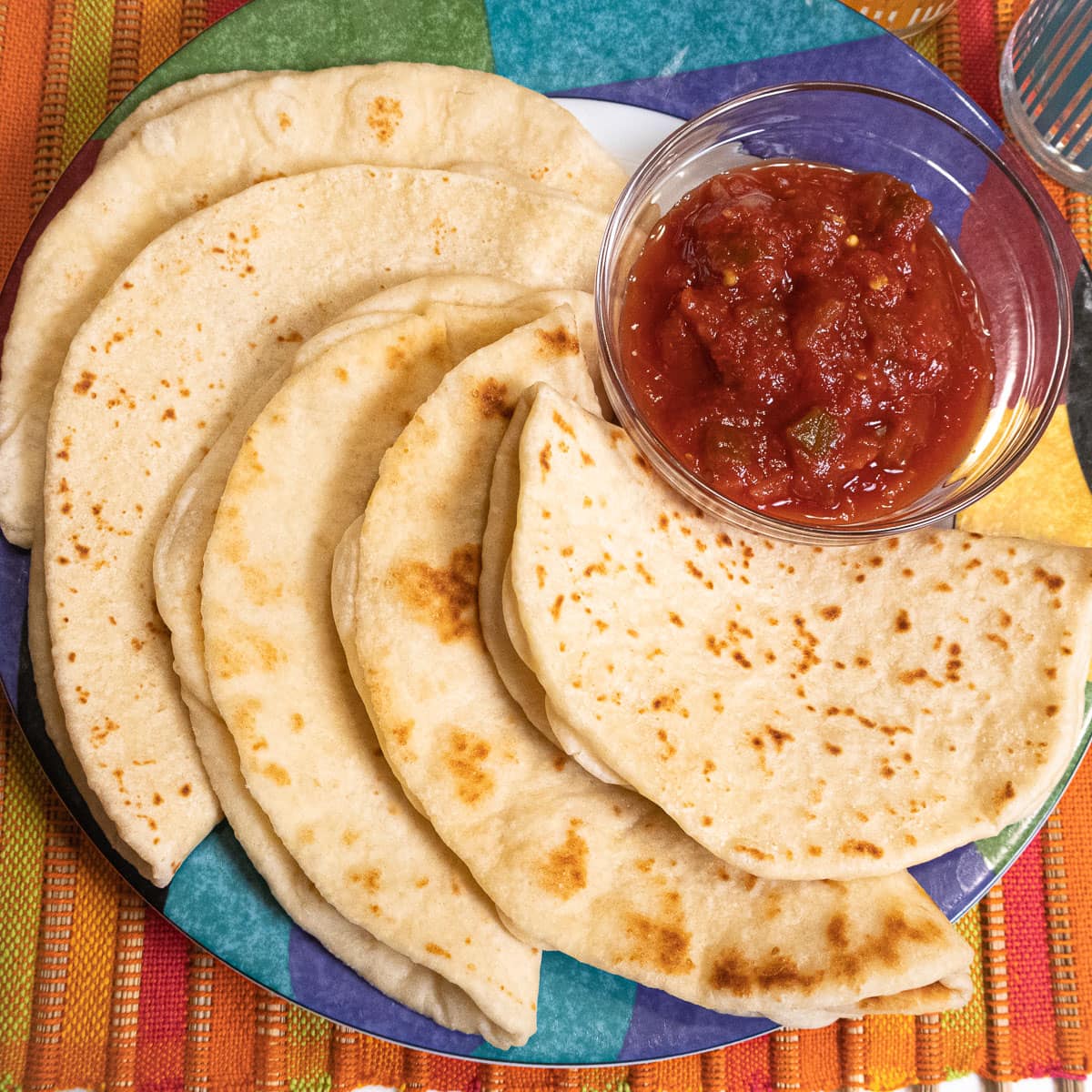
They're fantastic with a bowl of chili, simply dipped in a spicy salsa, use as a base for individual pizzas, as a stand in for pitas with Gyros, or folded over and filled for a sandwich as well as being used as a wrap. Or, cut them into quarters, brush with a little oil and toast them in a 350°F oven until lightly browned and crisp.....and you have almost instant pita chips.
Be sure to check out my International Flatbreads, my other version at Soft Flatbreads and my Homemade Pizza Dough.
[feast_advanced_jump_to]Why You'll Love these Flatbreads
- This recipe has only 5 ingredients that are probably in your pantry now. No buttermilk, there's a substitute for that.
- These are fast. The dough takes literally seconds to make in the processor. After a short rise, they are ready to shape and fry with no additional rise.
- They can be made ahead and frozen for months well wrapped. Thaw and heat wrapped in aluminum foil for a few minutes and there ready to go!
- There are so many uses for these, they'll become a staple in your kitchen.
- They are very customizable. Just add cheese and/or spices to vary them according to your taste.
- Having a fresh, warm bread on hand can perk up any meal.
Recipe Ingredients
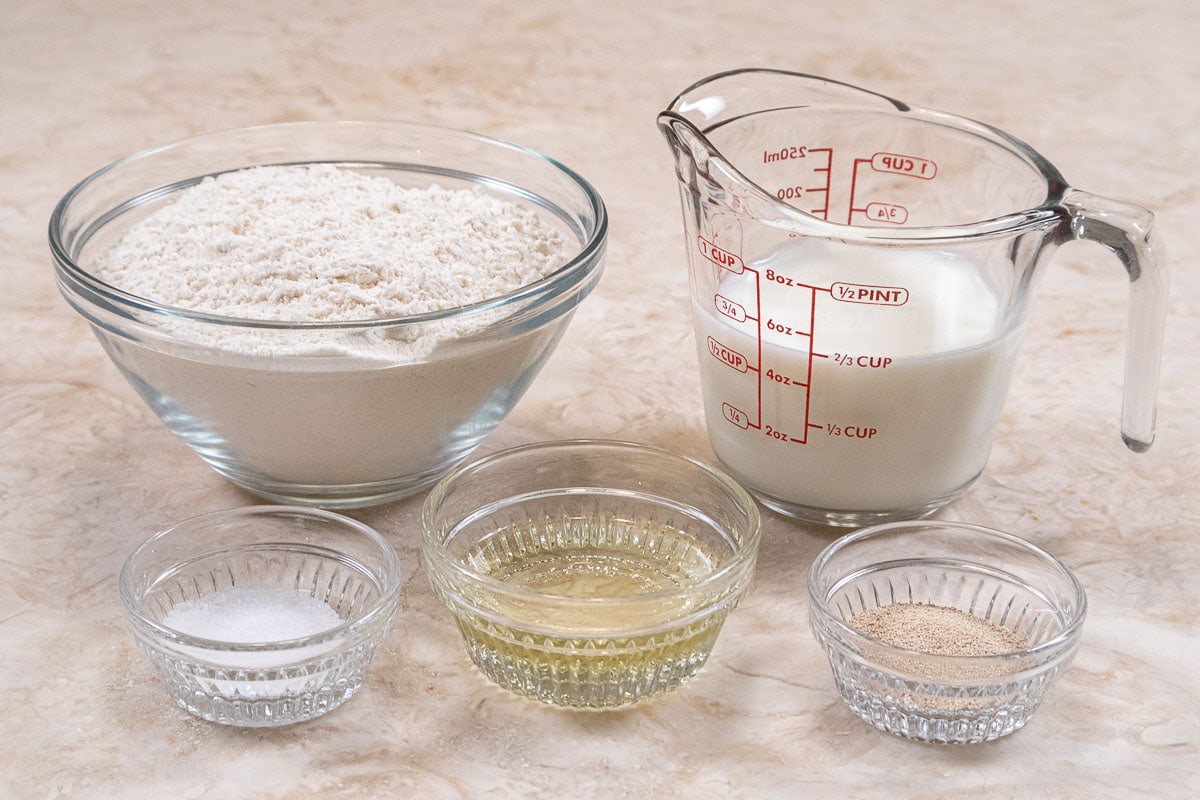
FRONT ROW: Salt, vegetable oil, instant yeast
BACK ROW: Bread flour, buttermilk
Be sure to see the recipe card below for the exact ingredients & instructions.
Step by Step Instructions
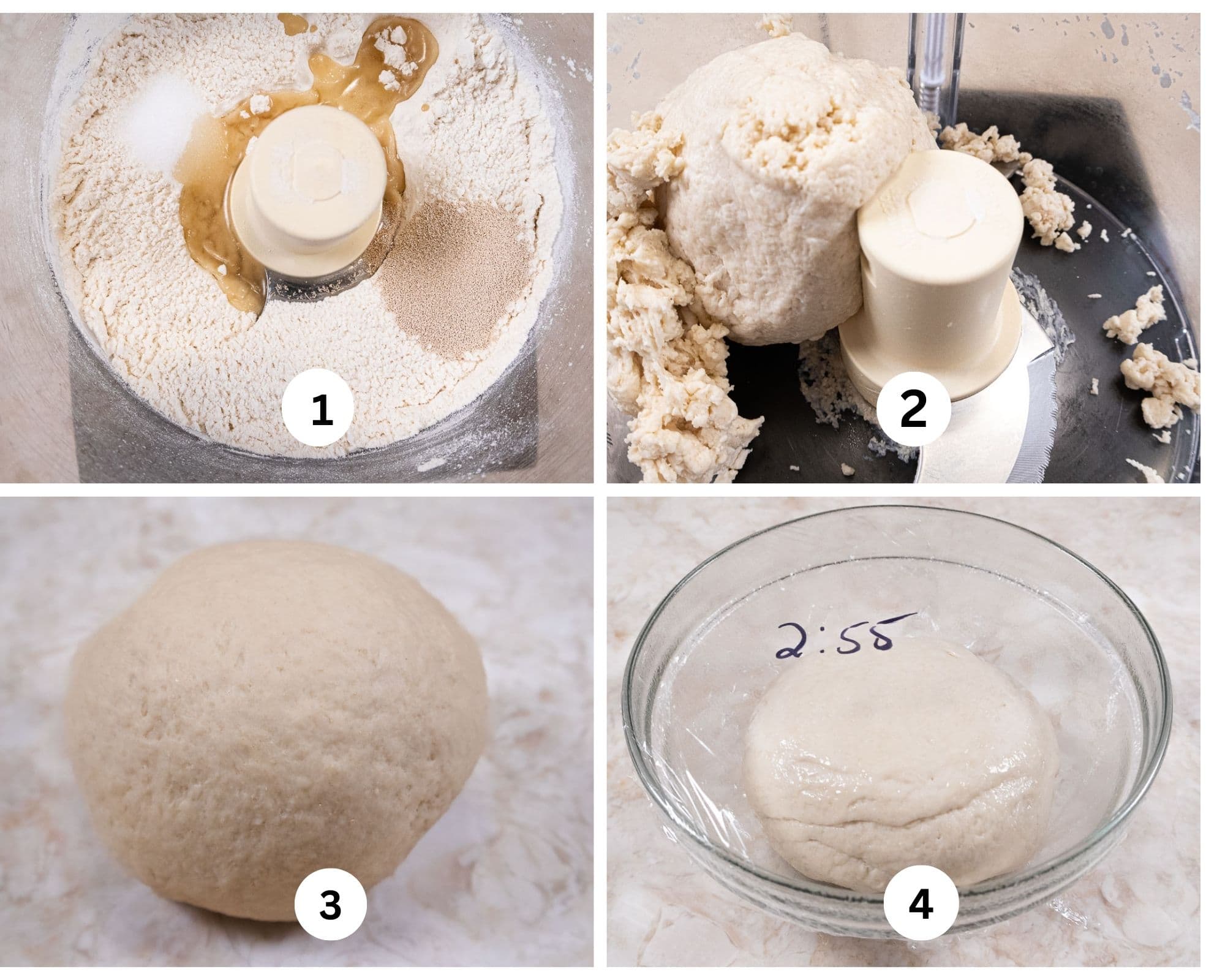
Step 1. Place all of the ingredients in the bowl of a processor. Step 2. Process for about 30 seconds until it comes together. Step 3. Remove the dough from the processor and form into a ball. Step 4. Spray a container with a non-stick baking spray and place dough in it. Turn the dough over so it is coated with the spray. Cover the bowl and let it rise until doubled. To speed up the rising, place the bowl in you oven with the light turned on. The heat of the light makes the oven a great proofer.
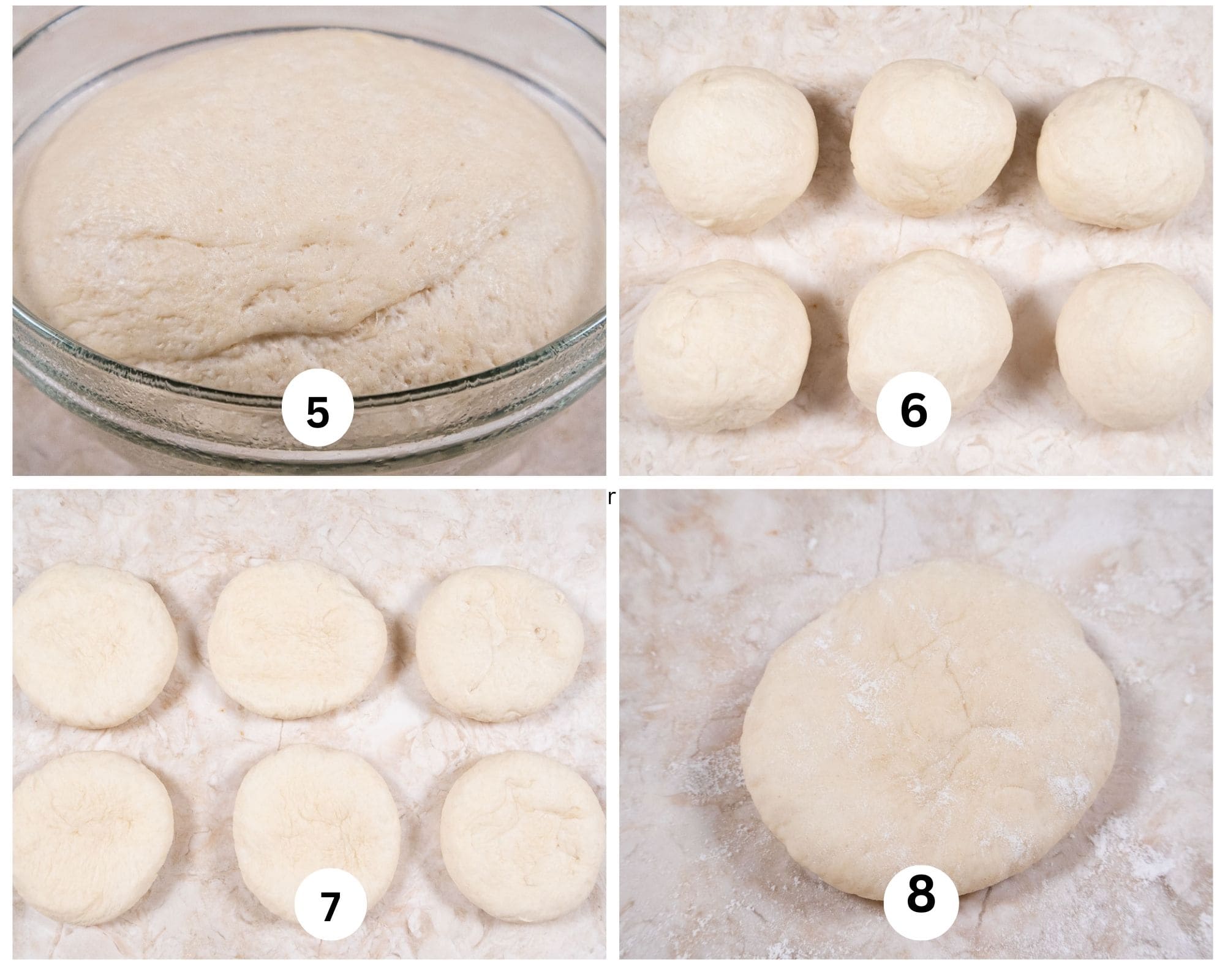
Step 5. Remove the cover from over the dough. Step 6. Divide the dough into six equal sized balls about 75 grams each. Step 7. Flatten the balls slightly, cover them while you go to the next step. Step 8. Take one flattened ball and place it in front of you.
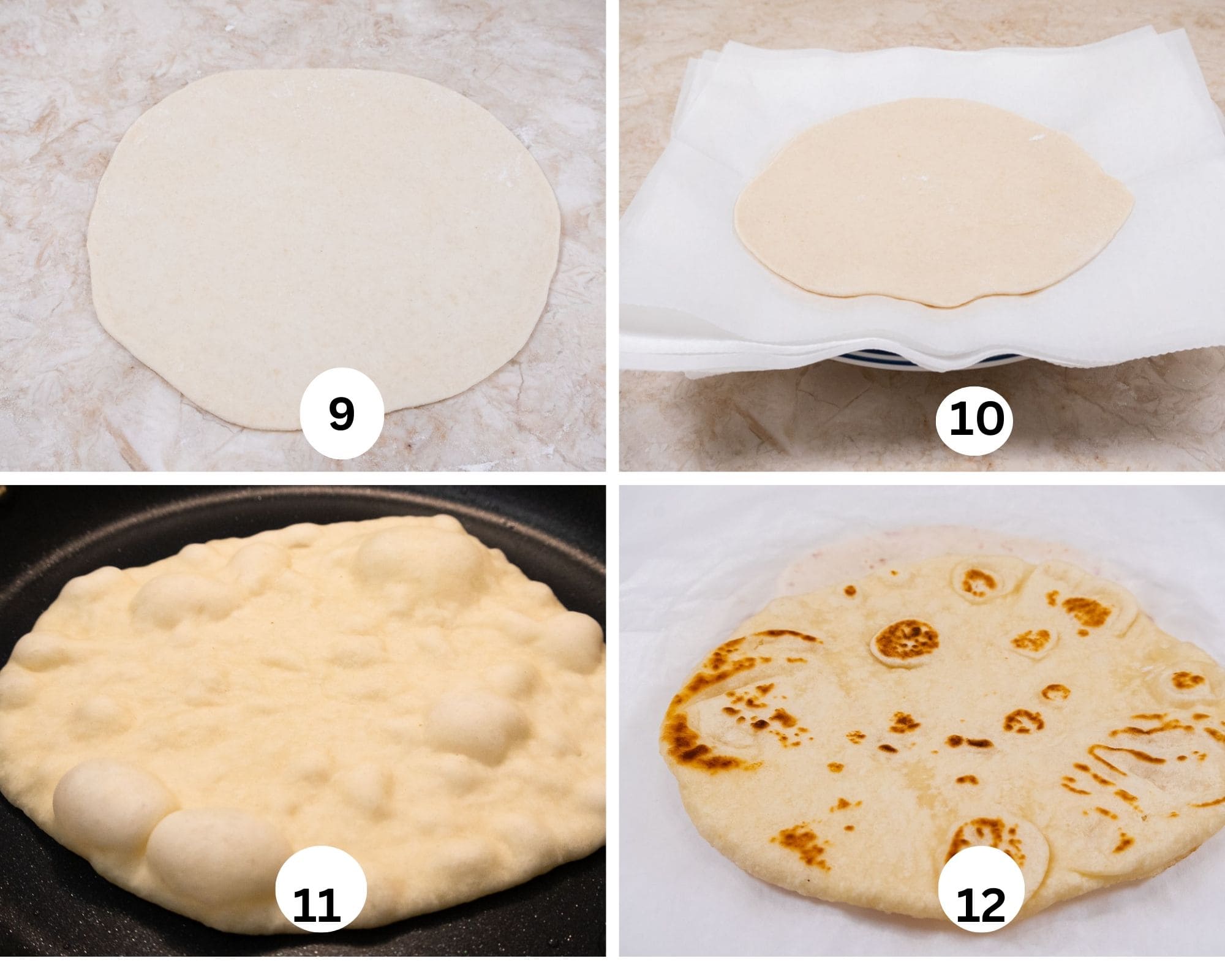
Step 9. Roll one flatbread at a time into an 8" circle. It will be thin. Step 10. Stack them on top of each other with paper in-between. Step 11. Heat the frying pan on medium. Add about a teaspoon or two of oil even if it is nonstick to help with the browning. They may be fried in a dry pan but the color and softness are better with the oil. Fry for about 1 to 1 ½ minutes until speckled on the bottom. It may or may not form big bubbles on top. Step 12. Flip it over and repeat the frying process. You do not need to oil the pan again for the second side. But add oil each time a new flatbread goes into the pan. Stack them up with paper between them.
Recipe FAQS
Place them on a parchment lined baking sheet. Cover with foil tightly and keep them warm on the lowest setting of your oven or in a warming drawer.
There are so many things it is hard to list them all. Use the fried flatbread as a base for an individual pizza, using pizza sauce, toppings you like, top it with cheese and heat it all together in a 450°F oven until the cheese melts.
Buttermilk is used for its taste as well as adding softness to the fried breads. But no you don't. Plain yogurt, thinned with a bit of milk, can be used as well as regular milk that has been soured. Just remove 1 tablespoon of milk and replace it with 1 tablespoon of lemon juice or white vinegar. Wait a few minutes until it becomes thicker and can separate slightly.
Storage
After they are cool, place them in a plastic bag. These remain soft and keep well for a couple of days at room temperature.
For longer storage, freeze them individually, stack them together and either wrap well in foil and/or place in a freezer bag. They will keep for several months.
To use from the freezer, it is best to thaw them first. Wrap loosely in foil. Preheat the oven to 350°F and heat them for 8 to 10 minutes. Be careful of the steam coming out of the foil when they are unwrapped.
Expert Tips
- All-purpose flour can be substituted for the bread flour.
- These can be made in a mixer following the same directions as for the processor.
- Flavor these as you wish by adding grated cheese and/or herbs of your choice.
- Serve the flatbreads warm for the best taste and texture.
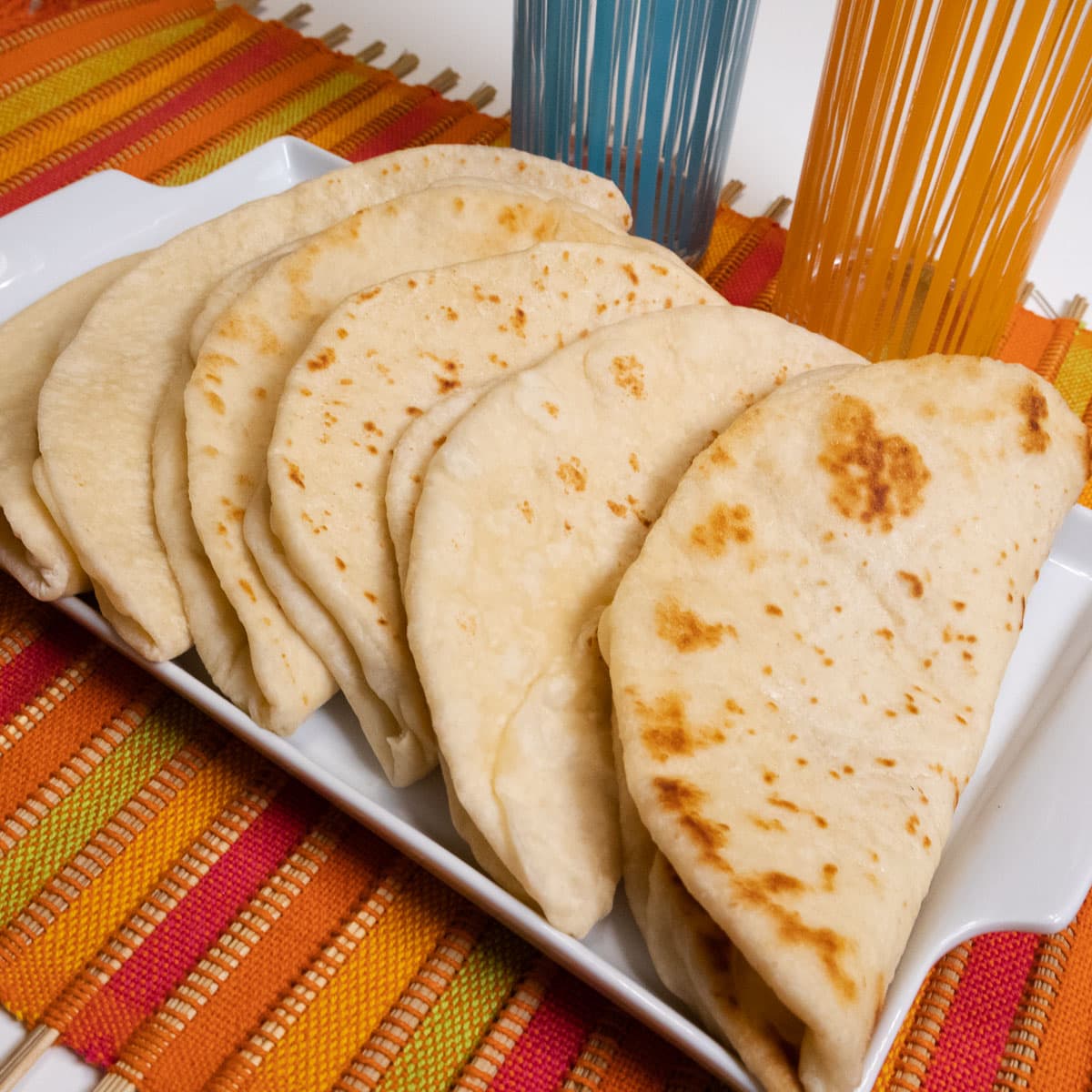
Other Flatbreads You'll Enjoy
If you love these Buttermilk Flatbreads, It would be hugely helpful and so appreciated it if you would take a moment to leave a rating below. Thank you.
Buttermilk Flatbreads
Ingredients
- 1 ¾ cups bread flour (250 grams)
- 1 ½ teaspoons instant yeast
- ¾ teaspoon salt
- 2 tablespoons vegetable oil, plus additional for frying
- ¾ cup buttermilk
Instructions
- Place all of the ingredients in the bowl of a processor or mixer.
- Process for 30 seconds or until it comes together. I may not form a ball, that's fine. It may take longer in a mixer.
- Remove the dough from the container and shape into a ball. Spray a container with non-stick baking spray, placing the dough in it. Turn the dough over so it is coated on top. Cover the container, mark the time on it and let it rise in a warm place. It should double in about an hour or so. See the notes for making and easy proofer.
- Divide the dough into 6 pieces about 75 grams each and roll them into balls. Flatten the balls.
- Using very little flour if any, roll each ball into an 8" circle. They don't have to be perfect and they will be very thin. Place them on a plate with paper between them. Continue for the remaining 5 balls. They do not rise again.
- Heat a skillet on medium. Add a teaspoon or two of oil. Place one of the flatbreads in the pan and fry for about 1 to 1 ½ minutes on each side. Stack them together with paper between them and cover with a tea towel if cooling. Otherwise, serve at once.
Notes
Nutrition
Zimtsterne - German Cinnamon Stars
Zimtsterne star shaped cookies are one of Germany's favorite Christmas cookies. Naturally gluten free with four ingredients, these cookies are fat free and go together in minutes. Germany is famous for its maravelous baking such as Murbteig Pastry, a lemon butter cookie with endless variations and Pfeffernusse cookies, those delightful powdered sugared "peppernuts" as they are known.
As with some European cookies, Zimtsterne cookies are finished with a snow white meringue that is baked with the cookie. It forms a crispy finish to an otherwise softer textured cookie.
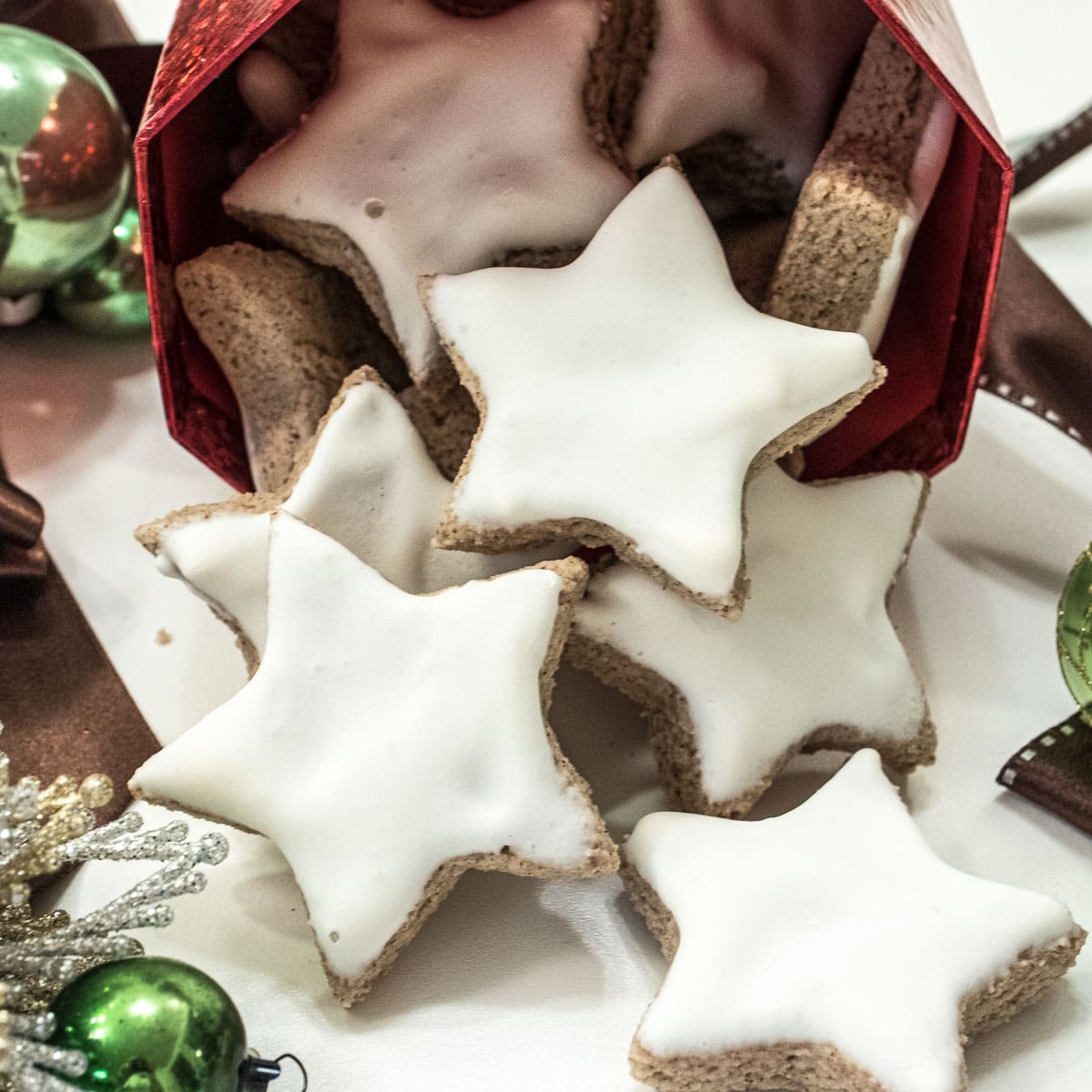
Four ingredients including almond flour make up the cookie and the frosting. One of the best things about this cookie is the longer they sit in an airtight tin, the better they taste. As with most spice heavy cookies, they need time to mellow. Honey Diamonds are another example of a spice rich cookie.
The amount of cinnamon may seem like a lot, but it mellows as they sit.
[feast_advanced_jump_to]Variations
Hazelnut flour can be substituted for the almond flour.
Recipe Ingredients

FRONT ROW: Cinnamon, egg whites
BACK ROW: Almond flour, powdered sugar
Be sure to see the recipe card below for the exact ingredients & instructions.
Step by Step Instructions for Zimtsterne
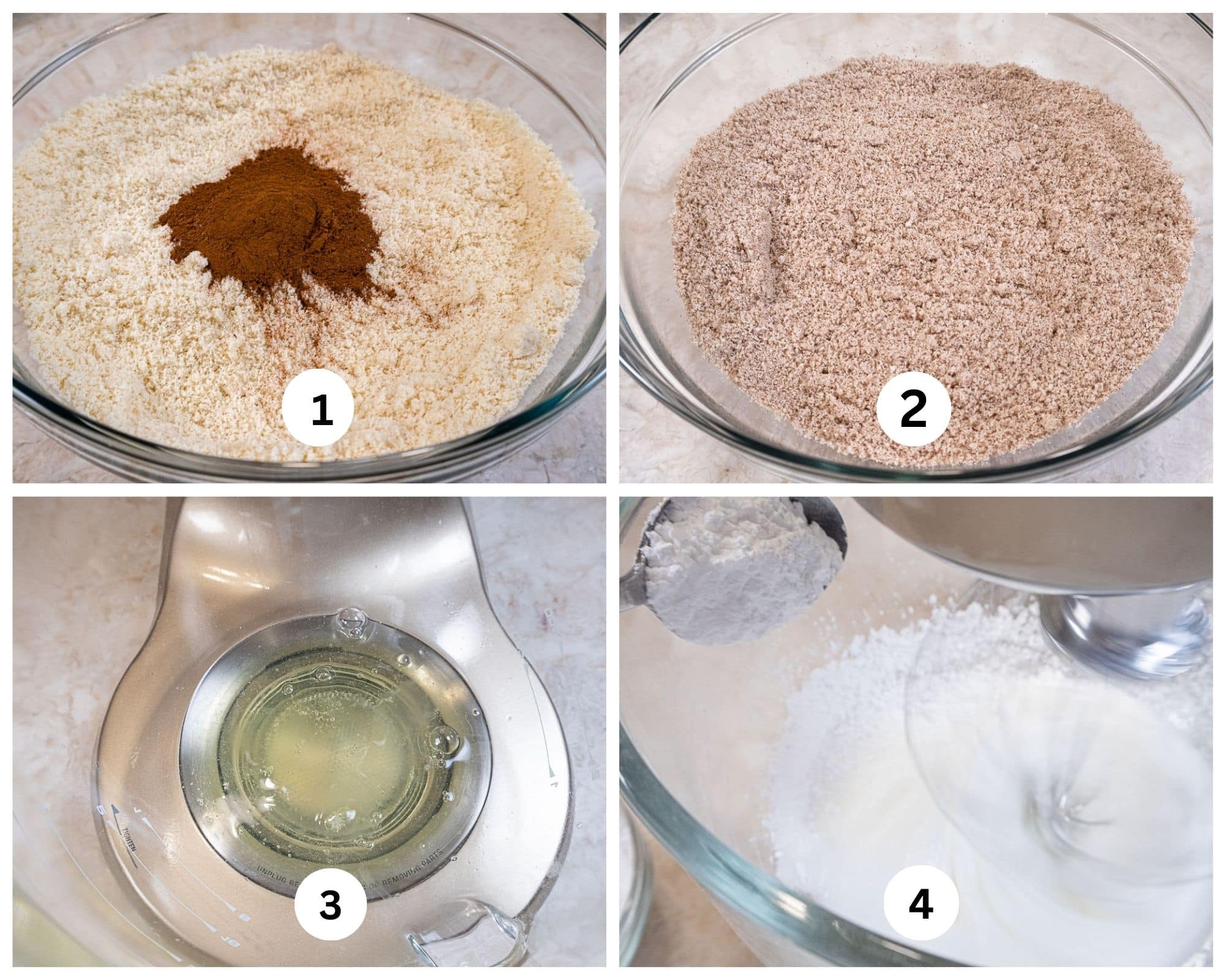
Step 1. Add the cinnamon to the almond flour in a large bowl. Step 2. Whisk together completely. Step 3. Add the egg whites to the mixing bowl. Beat until soft peaks for. Step 4. Slowly add the powdered sugar to the beaten egg whites.
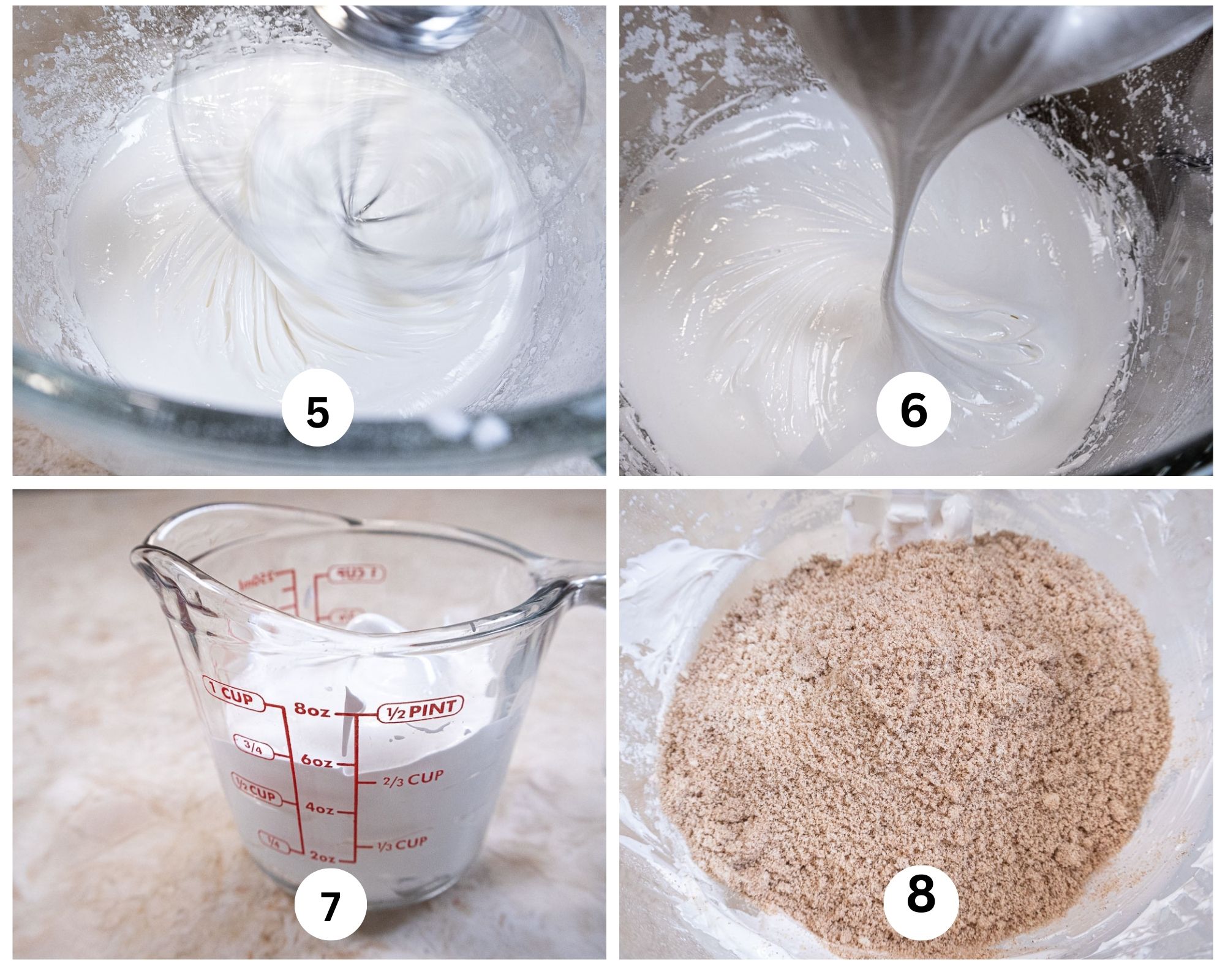
Step 5. Beat the egg whites for up to 8 minutes until very, very thick. Step 6. They will not reach the firm stage but will have increased. They will fall off the beater in a thick stream. Step 7. Remove ¾ cup for the frosting. Set aside. Step 8. Add the almond/cinnamon mixture to the egg whites and fold in by hand.
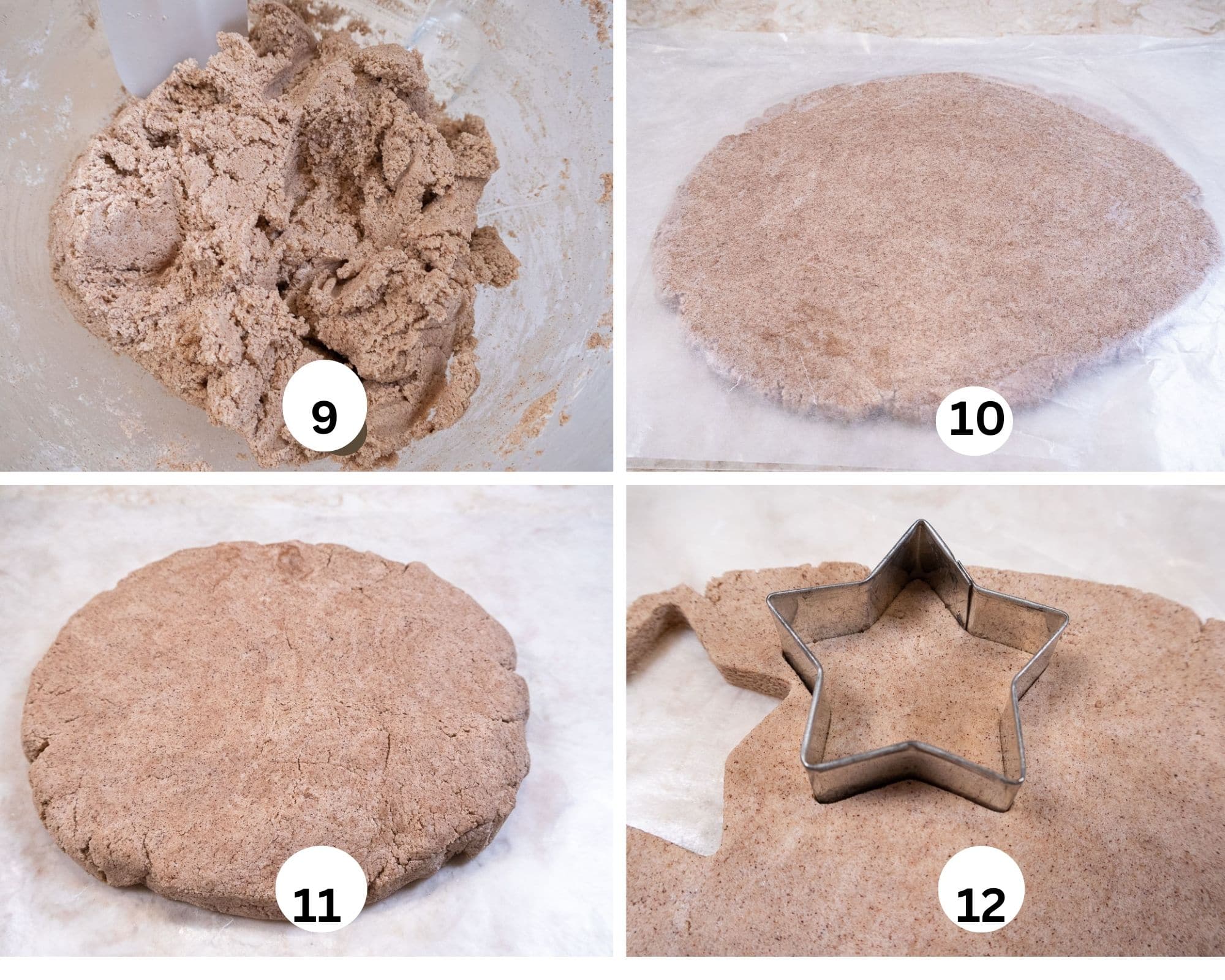
Step 9. Mix the dough completely. It will be very thick. Step 10. Flatten the dough and place it between waxed paper. Roll to about ⅓". Step 11. Remove the top piece of paper. Step 12. Cut the cookies out with a star shaped cutter. I used a 2 ¼" cutter but smaller sizes would work well also.
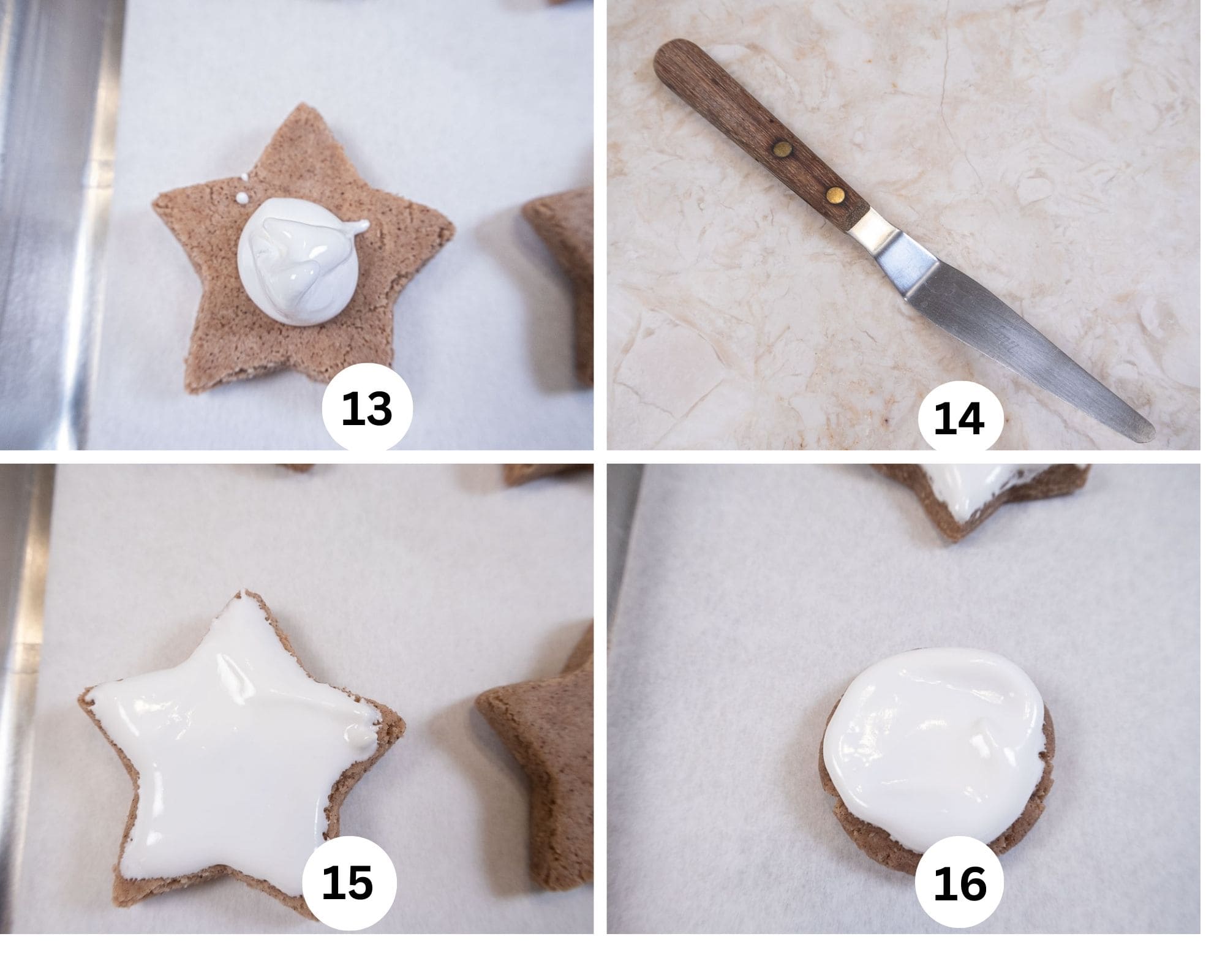
Step 13. Apply about ½ teaspoon of the reserved meringue on top of the cookie. Step 14. The easiest way to do this is to use an offset spatula with a pointed end. Step 15. Push the meringue from the center to the edges of the cookie. Step 16. Applying the meringue takes a bit of patience and time. Lacking those, simply cut out round "moons" and cover those.
Recipe FAQS
It is German for Cinnamon star.
While the origin is unclear, it is first mentioned in the mid 16th century being attributed to Swabian region of Germany. Because cinnamon was very expensive only the very rich or royalty enjoyed these cookies.
Zimtsterne is one of the favorite Chistmas cookie in Germany. They are also served at other holidays.
Expert Tips
- While really easy to make, it is important to beat the meringue sufficiently to increase the volume and to get it as thick as possible.
- By working the dough between waxed paper, the dough rolls out without using additional powdered sugar which can caramelize when baked.
- Use whatever size cutter you want.
- While the star is the traditional shape of the cookie, other shapes can be used.
- Because the dough is very thick when mixing is finished, the almond flour and cinnamon should be whisked to combine so they are evenly distributed when mixed.
- These cookies should be dried for about 24 hours to look their best.
- Place the cookies on the lowest rung of the oven. The meringue should remain as white as possible even after baking.
- The cookies should be aged a couple of days before eating. The amount of cinnamon may seem excessive but after storing it will become less strong.
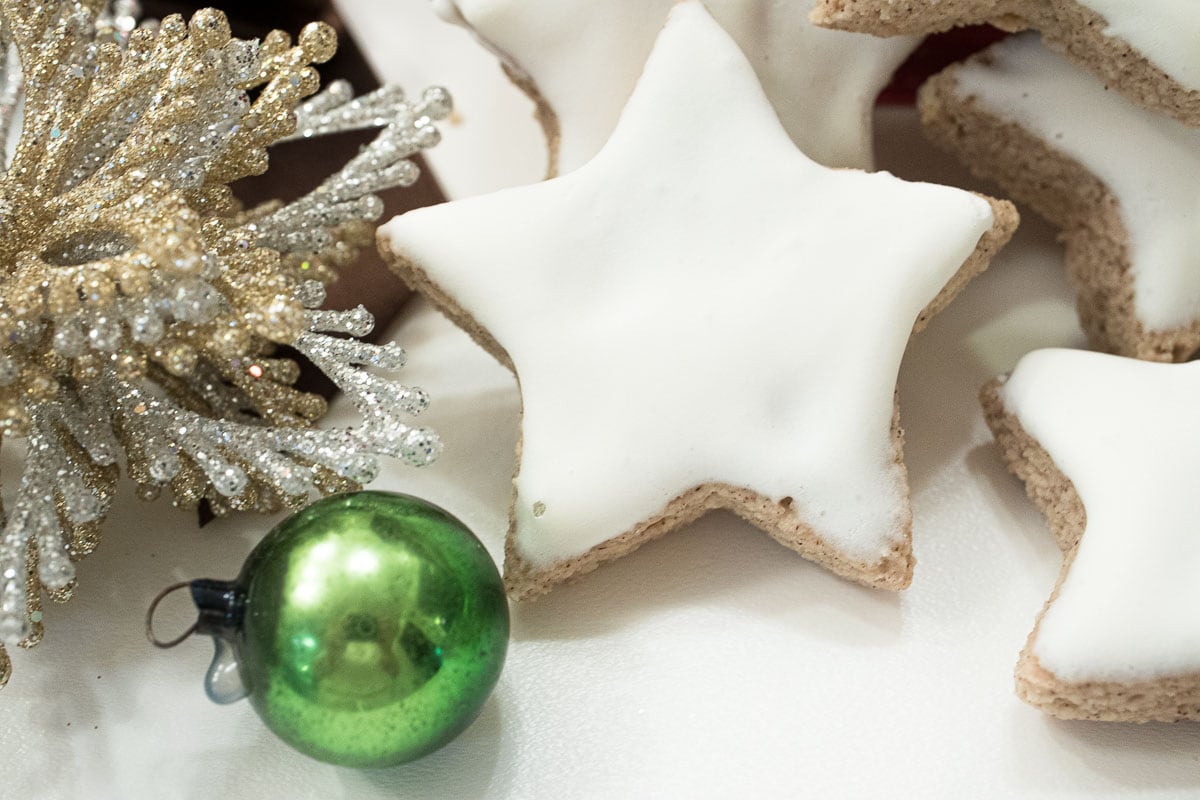
More European Cookies to Enjoy
If you love these Zimtsterne or any other recipe on my website, please leave a 🌟 star rating in the recipe card and let me know how it went the in 📝 comments below. Thank you and I appreciate each of you being here!
Zimtsterne - German Cinnamon Stars
Equipment
- Star shaped cookie cutter
- Pointed offset spatula
Ingredients
- 3 ¼ cups almond flour or meal (370 grams)
- 3 to 4 tablespoons cinnamon
- 3 large egg whites (100 grams)
- 2 cups powdered sugar (225 grams)
Instructions
- Line several baking sheets with parchment paper.
- Whisk the almond or hazelnut flour and cinnamon together completely. Set aside.
- Place the egg whites in the bowl of a mixer and beat until soft peaks form. Slowly add the powdered sugar and beat for about 8 minutes. This will not form stiff peaks, but it will be very thick and fall from the beater in thick ribbons.
- Remove ¾ cup of the meringue for the frosting. Set aside.
- Fold the almond flour/cinnamon mixture into the remaining meringue completely.
- Flatten the dough into a round and place between waxed paper. Roll out about ⅓" thick.
- Cut the cookies into stars or moons and place on the parchment lined baking sheets about 1 ½" apart to make finishing them easier. Re-roll the scraps and make more cookies.
- Drop about ½ to ¾ teaspoon of the reserved meringue in the middle of the cookie. Push it out to the edges, covering the cookie completely. The easiest way I have found to do this is to use a small offset spatula with a pointed end.
- Let the cookies dry at room temperature for about 24 hours.
- Preheat the oven to 225°F. Place the cookies on the lowest rack in the oven and bake for 20 to 25 minutes until baked through. The meringue should stay as white as possible.
Notes
-
- While really easy to make, it is important to beat the meringue sufficiently to increase the volume and to get it as thick as possible.
-
- By working the dough between waxed paper, the dough rolls out without using additional powdered sugar which can caramelize when baked.
-
- Use whatever size cutter you want.
-
- While the star is the traditional shape of the cookie, other shapes can be used.
-
- Because the dough is very thick when mixing is finished, the almond flour and cinnamon should be whisked to combine so they are evenly distributed when mixed.
-
- These cookies should be dried for about 24 hours to look their best.
-
- Place the cookies on the lowest rung of the oven. The meringue should remain as white as possible even after baking.
-
- The cookies should be aged a couple of days before eating. The amount of cinnamon may seem excessive but after storing it will become less strong.
- These cookies will last for weeks in an airtight container. They only get better.
Nutrition
Traditional Springerle Cookies
Springerle Cookies originated in the German province of Swabia in the 15th century. Originally made to honor Church Holy Days, they have become a much loved anise flavored Christmas cookie and are often used as Christmas tree ornaments.
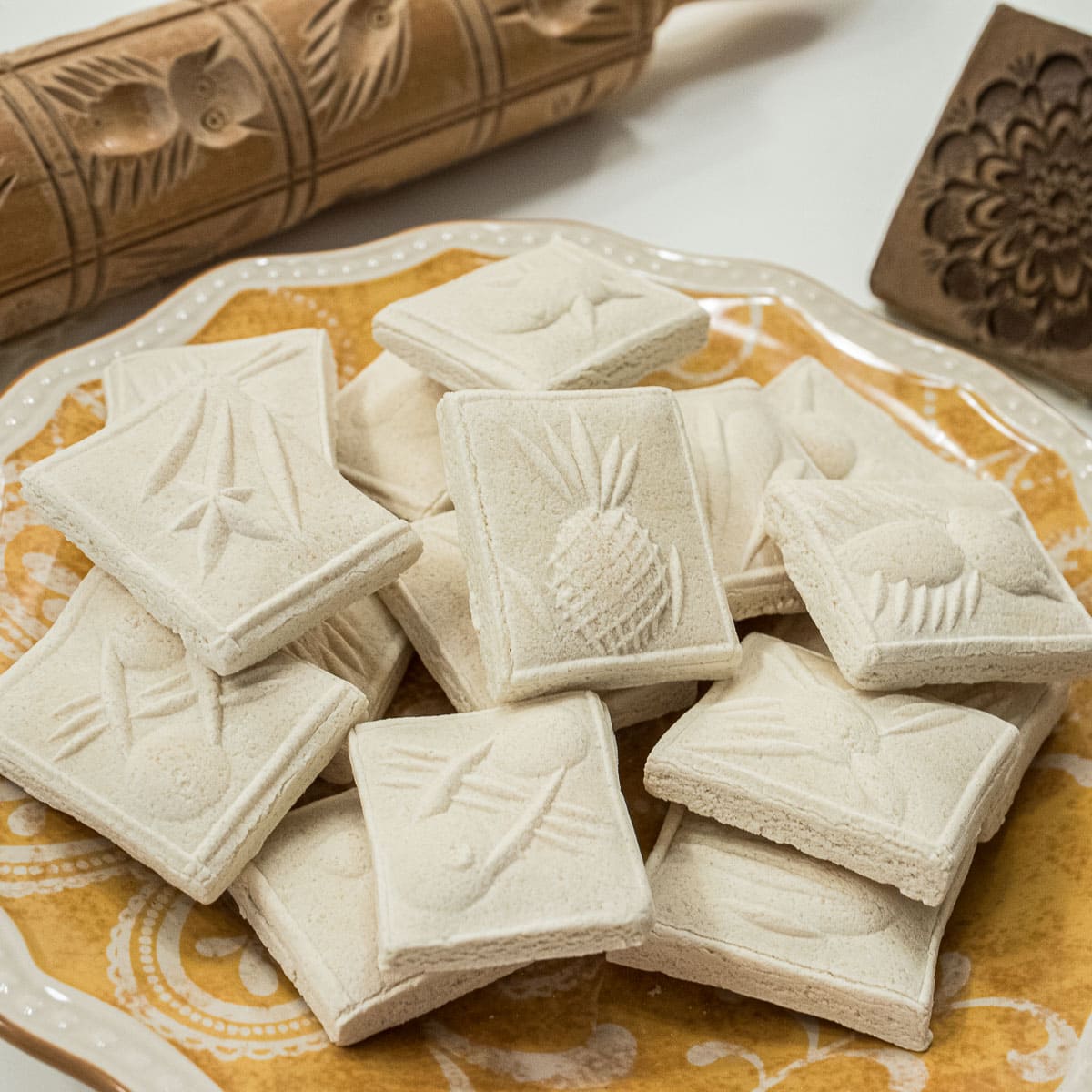
Special rolling pins with various carvings, as well as molds are used to imprint the cookie dough. The oldest known springerle mold carved with an Easter Lamb is from Switzerland and was carved from wood in the 14th century. They can be found online.
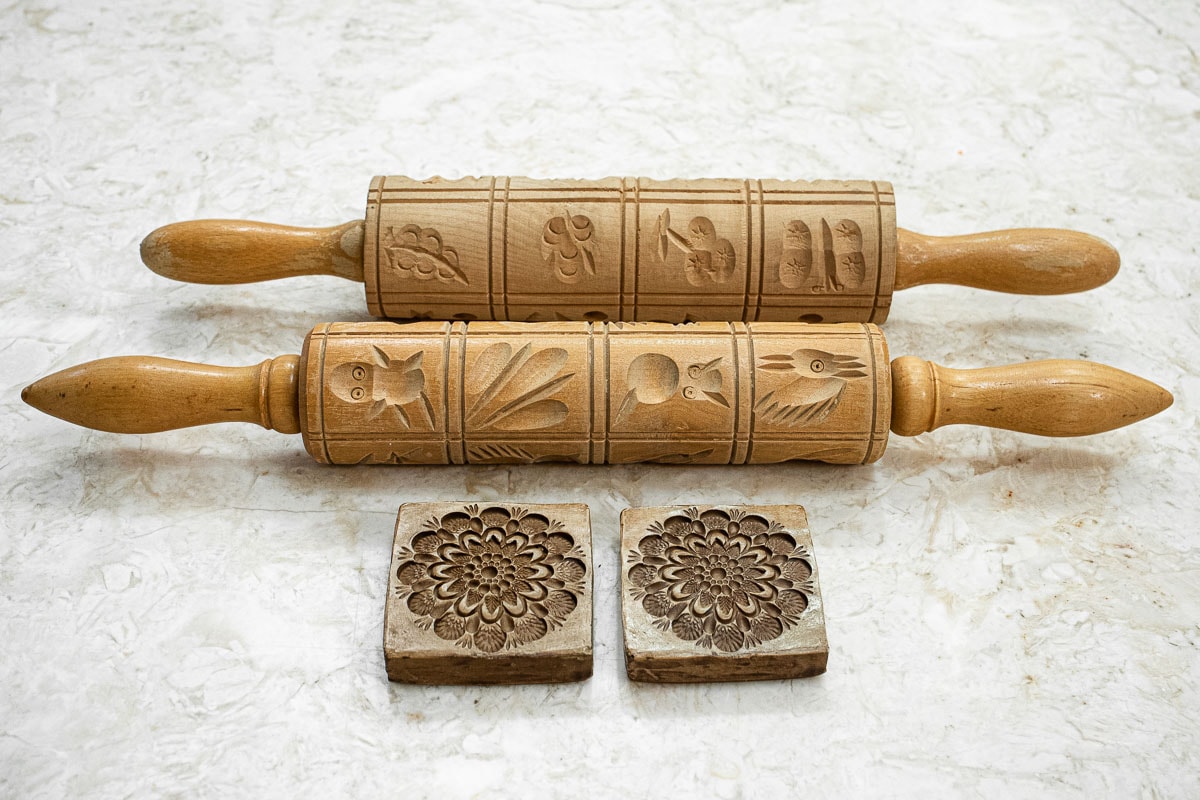
I have used the original leavening agent, baker's ammonia or hartshorn. It bakes up lighter and crisper than baking powder which is often used in America. Because there is no fat in Springerle, except for the egg yolks, it is more like a firm cake than what we usually think of as a cookie. It is also mixed differently than most cookies. A whole egg meringue is made into which the flour and flavoring is added. Using cake flour helps keep the cookies a bit softer after baking.
While most recipes I have seen recommend storing these up to 2 weeks before eating, I find that the cookies will become much harder and recommend eating them within a week to ten days at the most. If using them as tree ornaments, dry them out after baking.
More European Cookies for your Enjoyment
- Murbteig Pastry - Delicate lemon butter cookies form Germany.
- Sienna Lace - Two delicate spiced lacy cookies are sandwiched with chocolate.
- Chocolate Spice Olive Oil Biscotti - perfect with tea or coffee.
- Kifle - A fantastic sour cream pastry is wrapped around a walnut filling.
- Almond Macaroons - A naturally gluten free cookie half dipped in chocolate.
- French Macarons with Chocolate Raspberry Filling - What else is there to say?
- Sarah Bernhardts - A gorgeous naturally gluten free cookie with a macaron base, topped with a kiss of chocolate ganache, dipped in chocolate and finished with gold leaf.
- Sablé Breton - One of the most simple cookies but with a big wallop of flavor, this cookie comes from the Brittany region of France with its wonderful butter and sea salt, both used in this cookie.
- French Butter Cookies, Petit Buerre are simple, buttery, crisp, barely sweet but addictive, easily made and last indefinitely.
- Zimtsterne or German Cinnamon Stars are meringue based and held together with ground nuts.
The Most Beautiful Springerle
A virtual friend of mine Sally BR of Bewitching Kitchen is an artist in the kitchen. While she blogs about food in general, it is her cookies, pastries and breads that are standouts. Here are a couple of pictures she sent of my Springerle cookies beautifully painted. Do check out her blog, she's amazing.
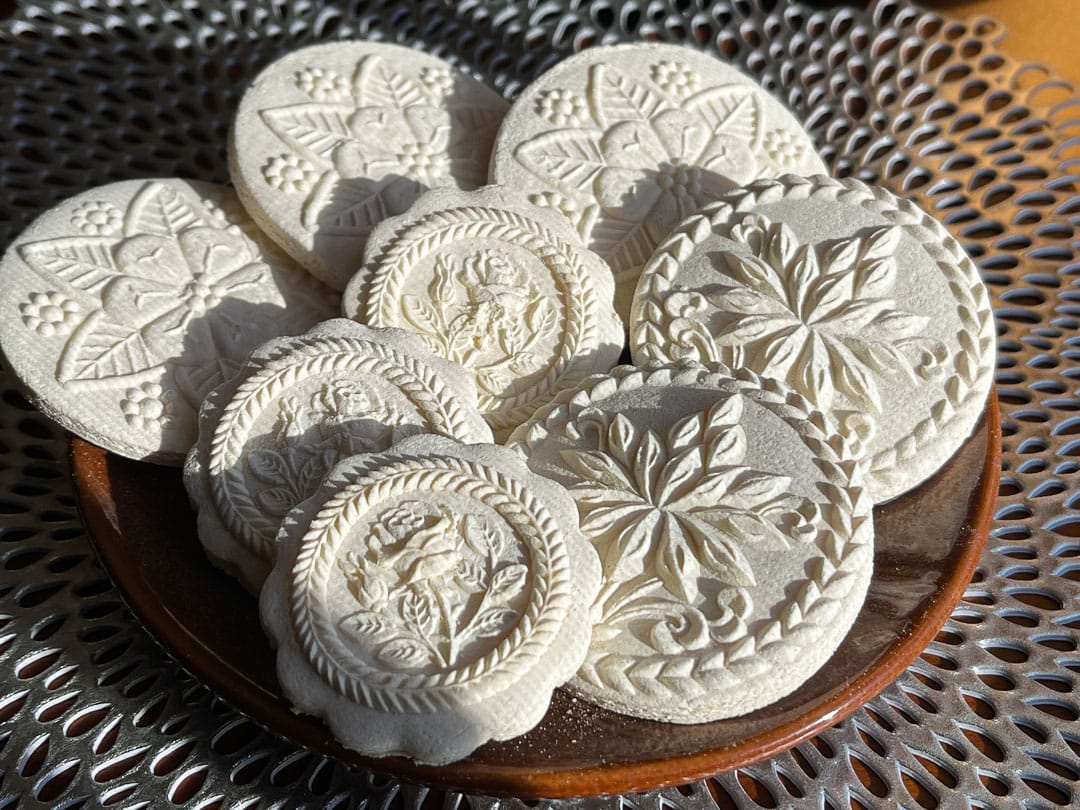
These are the cookies pressed in from molds. They are baked and perfectly white.
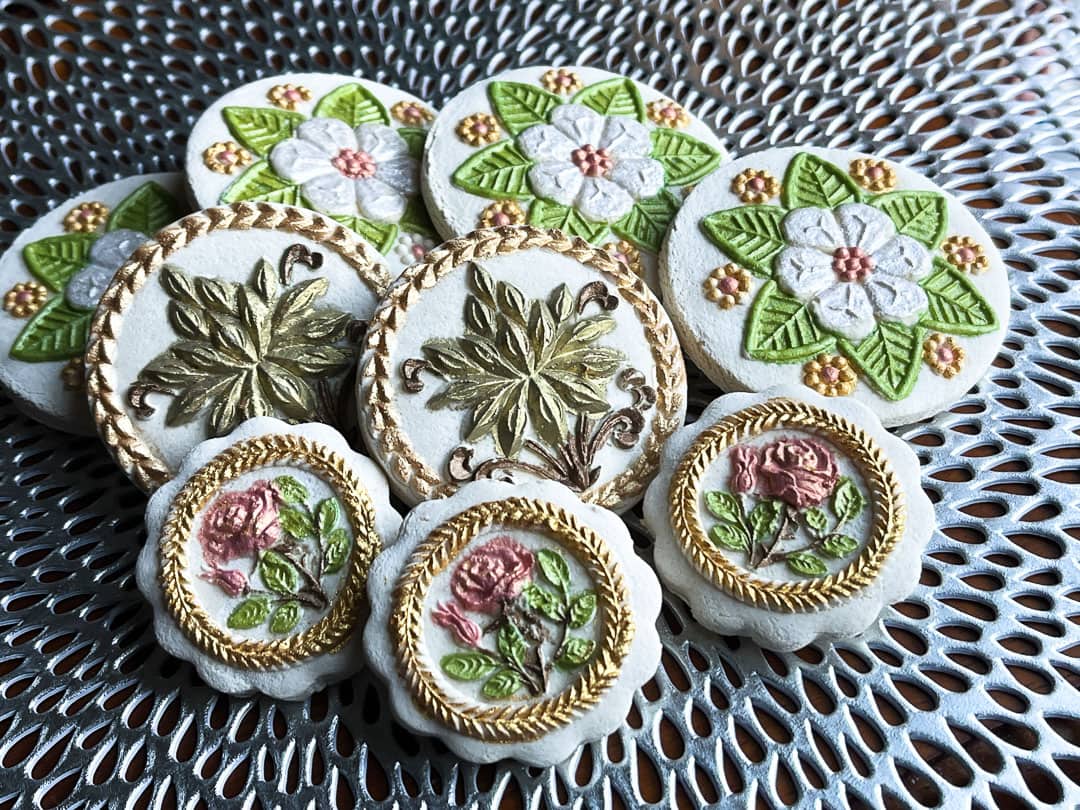
These are the same cookies gorgeously painted. If these had small holes made in the cookies prior to baking, they would make stunning, keepsake tree ornaments to be treasured tied with gold cord.
Springerle Ingredients

FRONT ROW: Anise extract, eggs, ammonium carbonate (Baker's Ammonia)
BACK ROW: Cake flour, granulated sugar
Ammonium Carbonate (Baker's Ammonia) is used in Europe as the leavening agent that shows up most in their cookies. It is easily found online at Amazon and Lorann Oils. When the bottle is opened do not take a whiff. This is the same stuff that is used to bring around someone who has fainted. While the smell is strong, it dissipates completely when baked. No hint of the smell or taste is left. Baking powder can be substituted but the results are not quite the same.
Granulated sugar is used in this recipe. When researching, I found quite a few of the recipes using powdered sugar. When I tested both ways, the granulated sugar cookies held the shape of the cookie and their shape and design better.
Cake Flour is used for a slightly softer cookies. 2 ¼ cups all-purpose flour can be substituted for the cake flour. They will weigh the same at 315 grams.
Be sure to see the recipe card below for the exact ingredients and instructions.
Step by Step Instructions
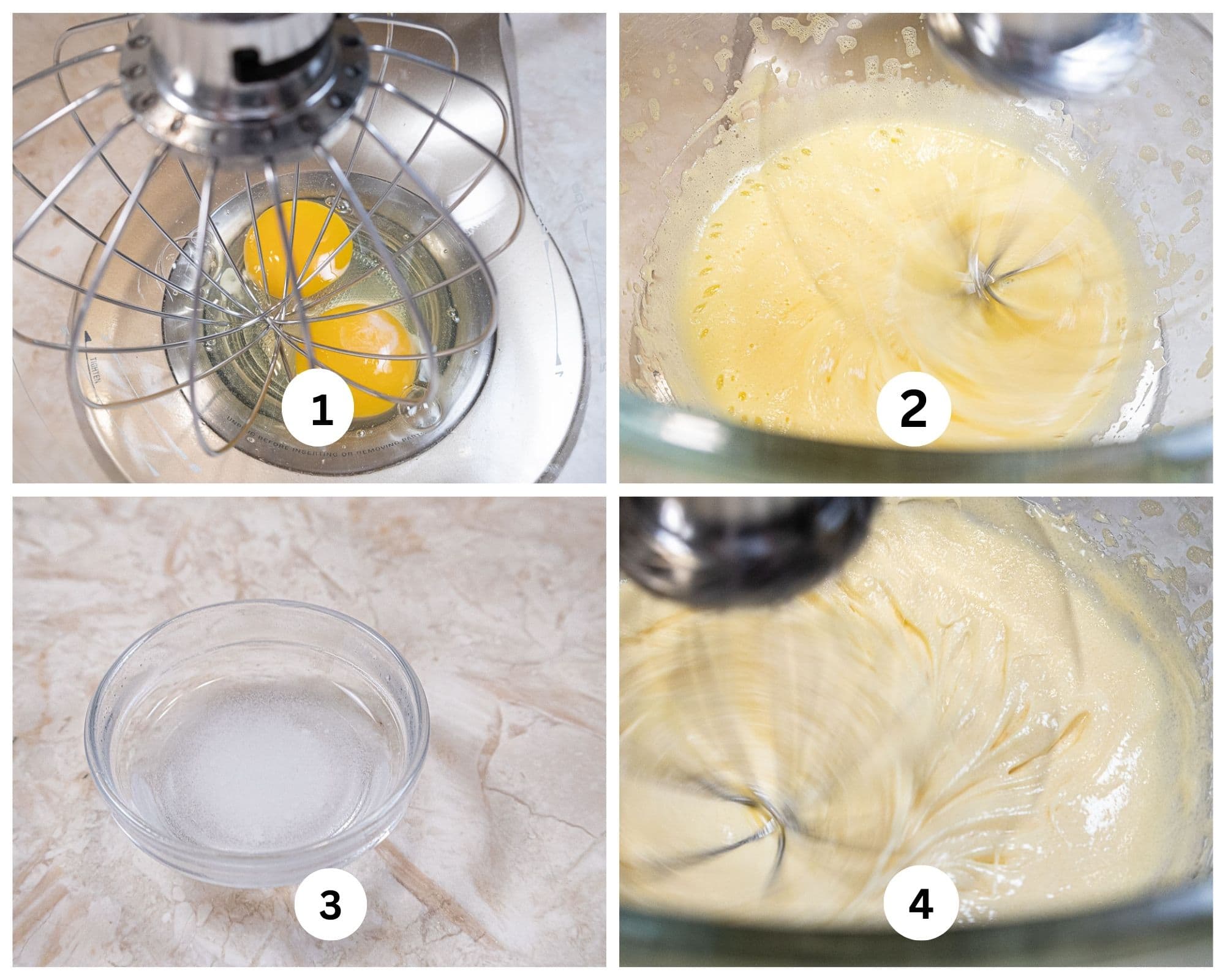
Step 1. Place the eggs in the mixing bowl fitted with the whisk attachment. Step 2. Beat until pale yellow. Step 3. Combine the anise extract and ammonia and add to the eggs. Step 4. Add the sugar a bit at a time, as when making meringue. Beat until the mixture is very light, has increased in volume and is thick.
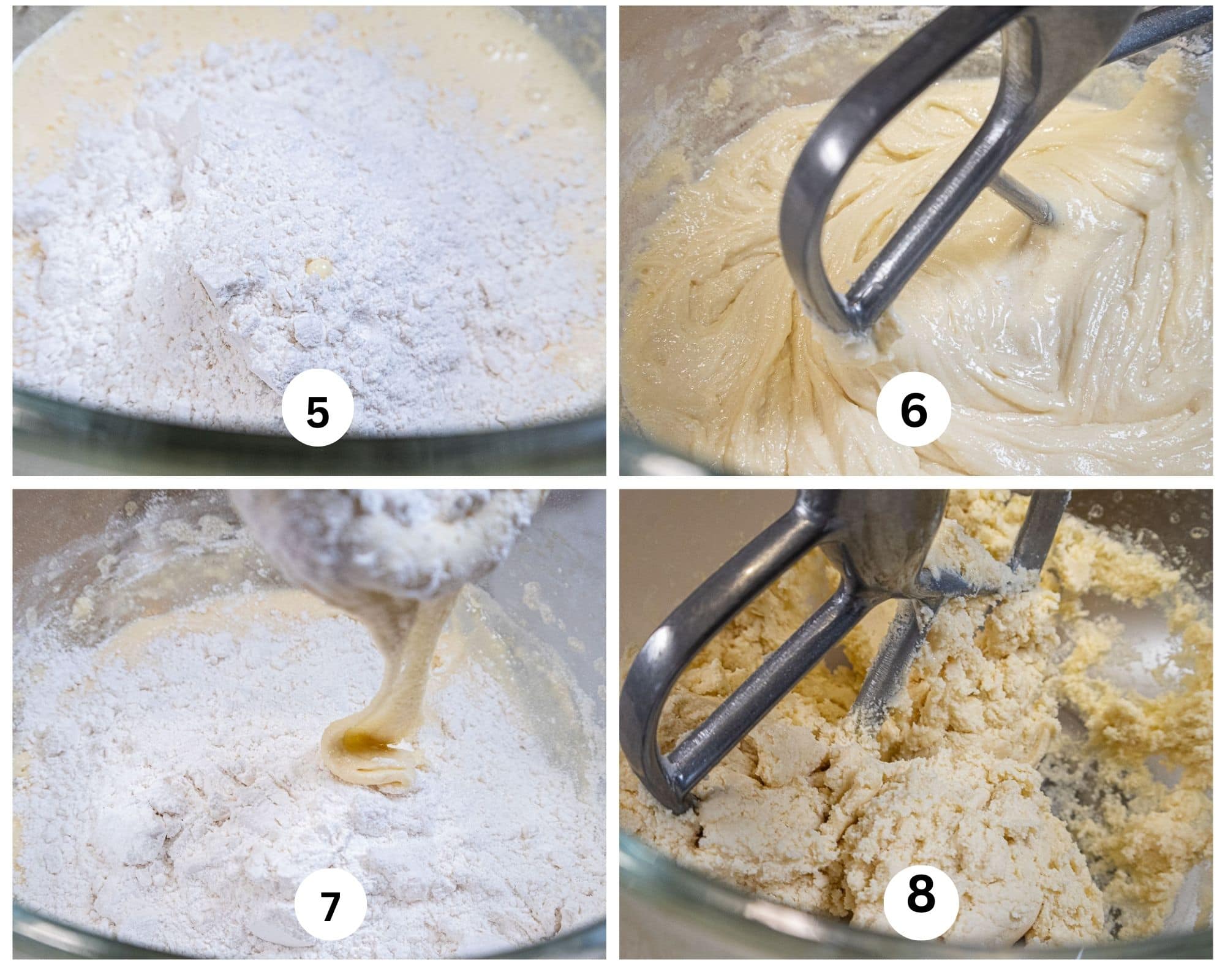
Step 5. Remove the whisk attachment and insert the paddle. This is a heavy, sticky dough so I wouldn't use the scraper paddle. Add half the flour to the egg mixture. Step 6. Incorporate the flour completely. Step 7. Add the remaining flour. Step 8. Beat on low until completely mixed. The dough will be rather sticky. This is as it should be. Do not add more flour.
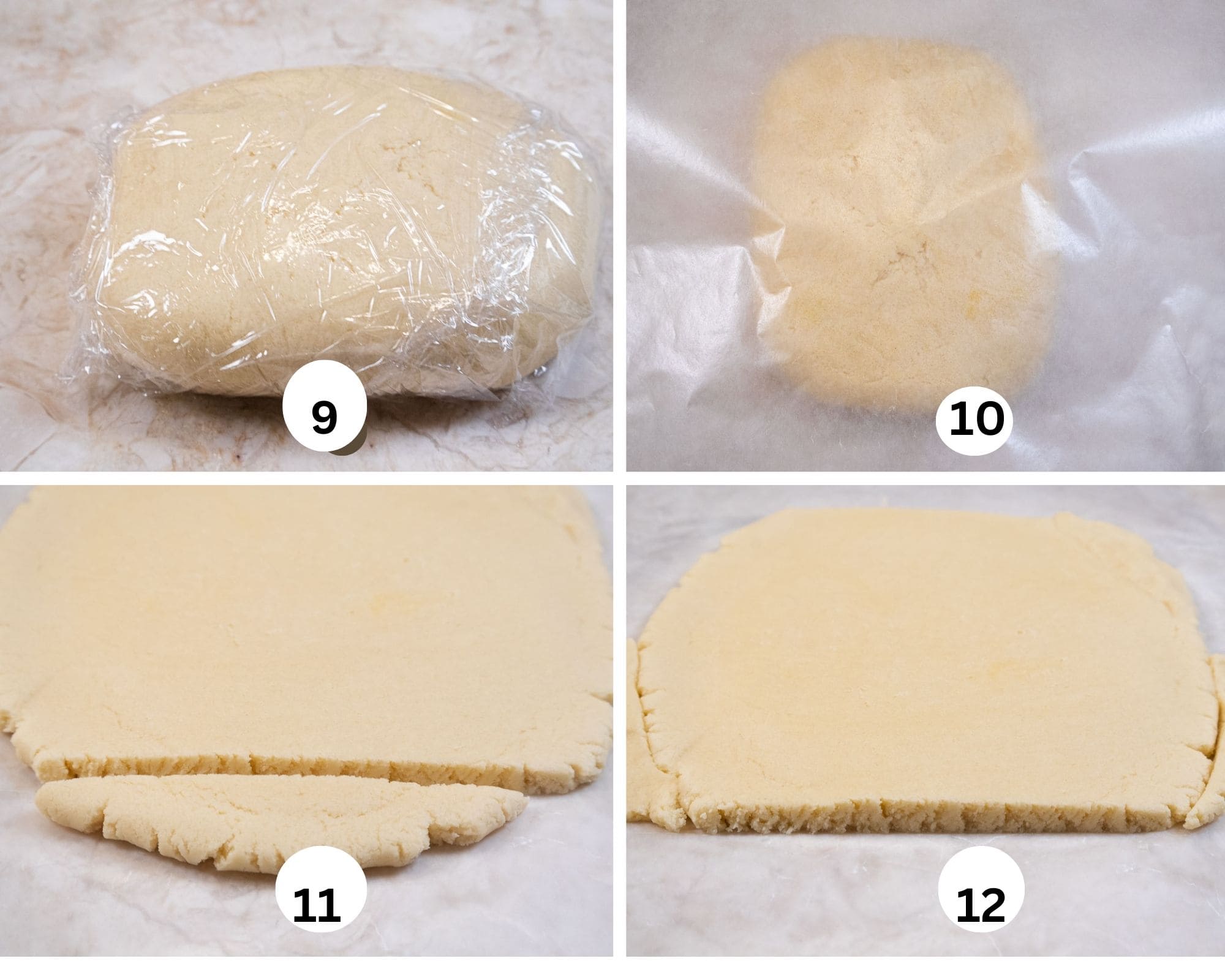
Step 9. Gather the dough together and knead it a few times into a rectangle. Step 10. Place it in plastic wrap and chill for a couple of hours to firm it up to make it easier to roll. Step 11. As much as I try, I don't always roll the dough into a perfect rectangle. So, cut off the bottom. Step 12. Place the dough around the edges to make a rectangle. Press them together, place the waxed paper on top and roll to make a rectangle about ⅜" thick and a little wider than the width of the springerle rolling pin if using one.
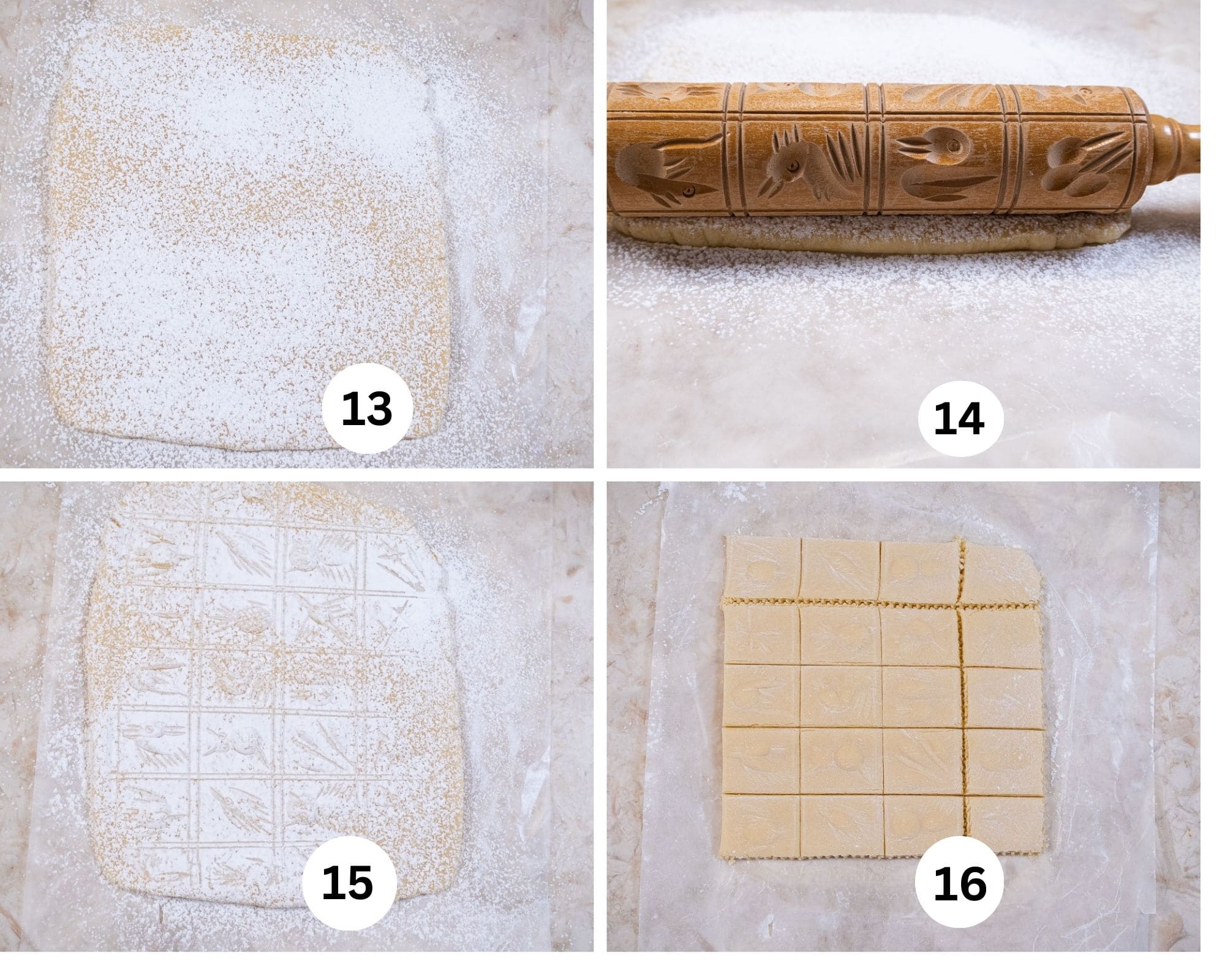
Step 13. After the dough is rolled out, dust lightly with powdered sugar. Step 14. Place the rolling pin with the dividing line between the cookies on the bottom of the dough. Step 15. Roll upward apply enough pressure to make sure the carvings are marking the dough. Step 16. Divide the cookies between the lines on the dough using a fluted pastry cutter or a knife. As you can see, I preferred the knife as I thought the cutter dragged the dough and didn't make a good cut. Freeze to firm up.
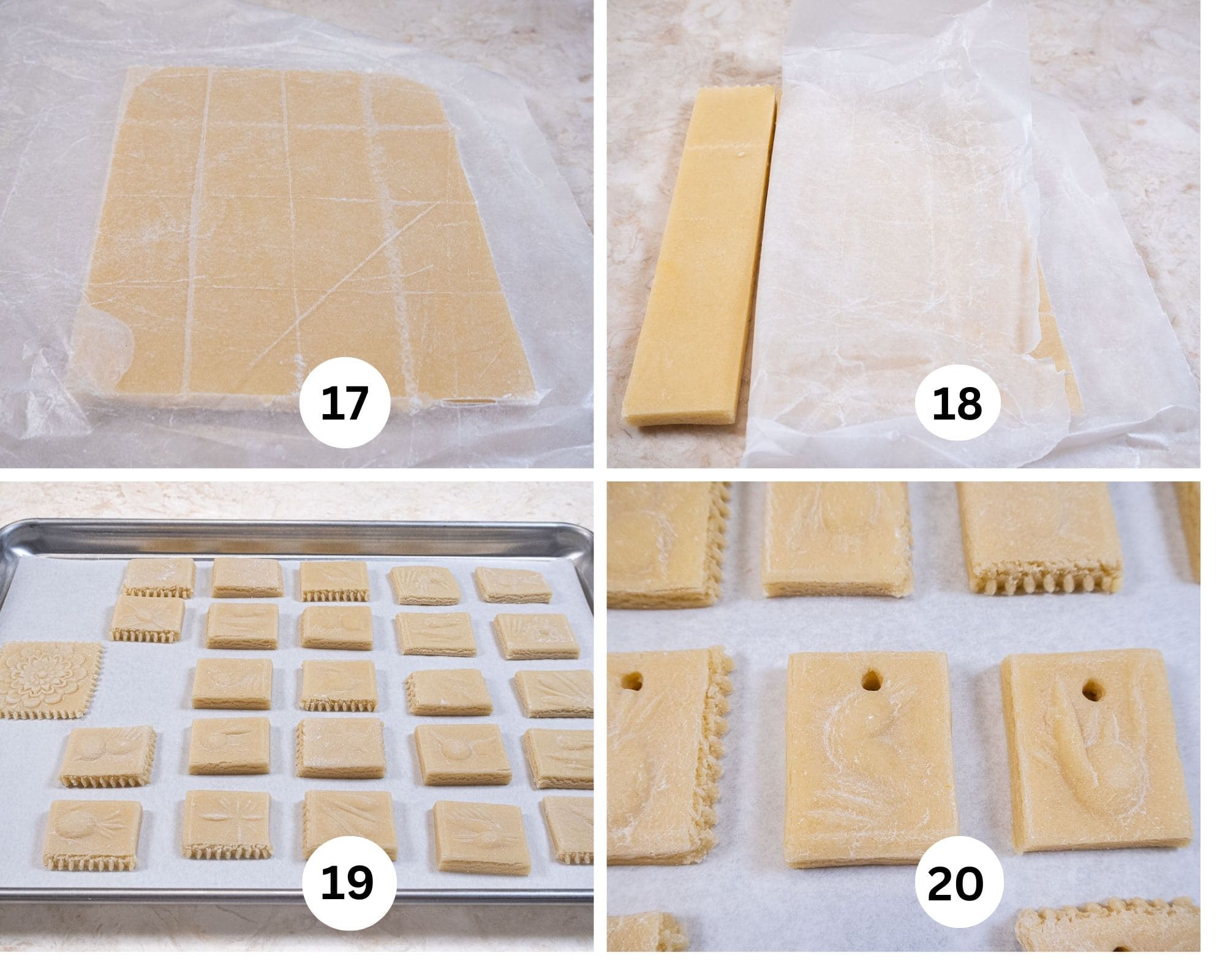
Step 17. When the cookies are firm, keeping them between the waxed paper, turn them upside down. Peel back the paper on one stripe and simply break them apart. Step 19. Place them about and inch apart on a baking sheet. Let dry for 48 hours at room temperature. Bake as directed. Step 20. If using them for ornaments, make a hole in the top of each cookie before baking. Make sure the dough is cleaned off the hole on the backside. I used the tip of an instant read thermometer to make these holes. Reroll the scraps to make more cookies.
Springerle Molds
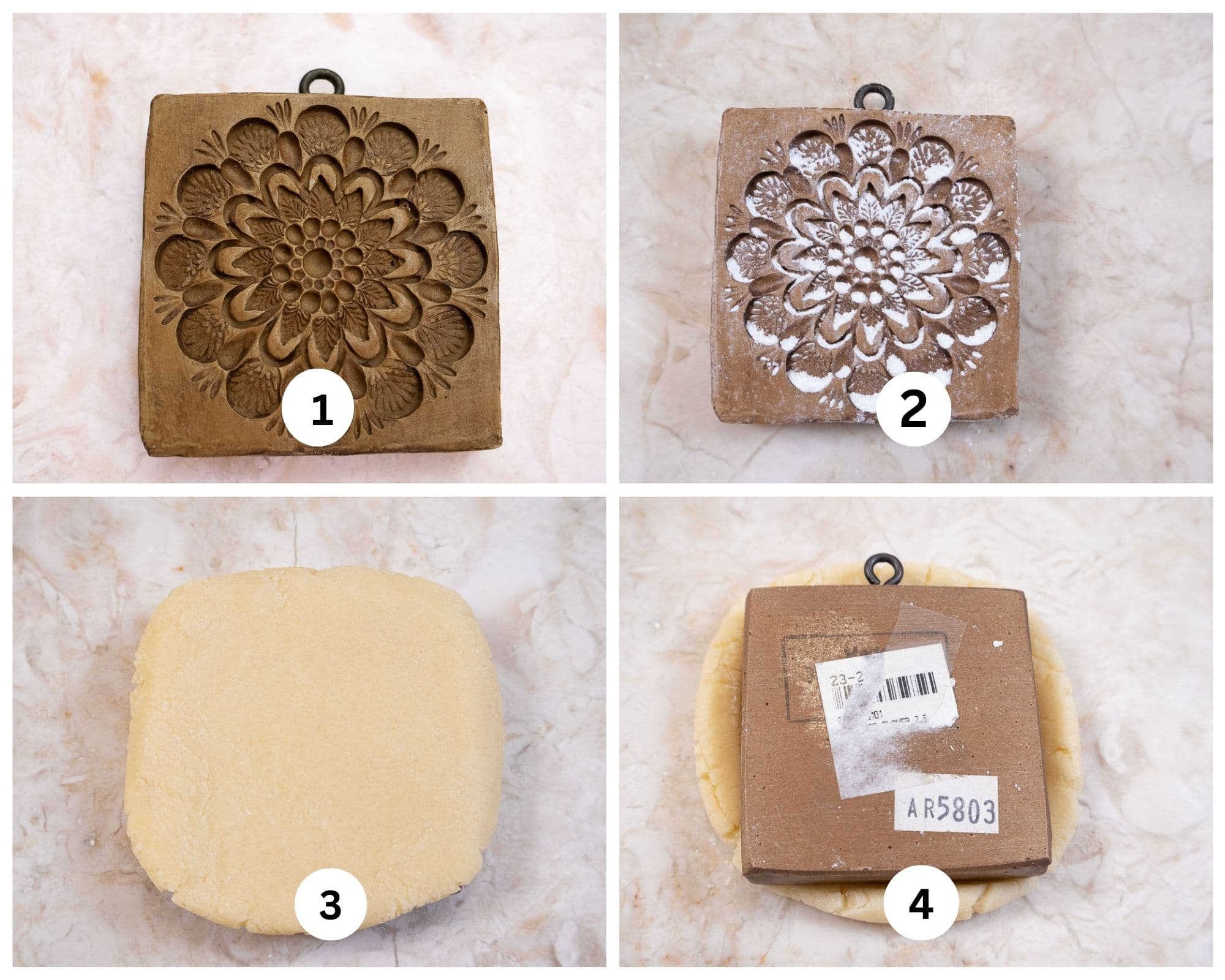
Step 1. This is my wooden mold. Step 2. Dust it with powdered sugar. I don't like to use flour because I feel it can clog up the fine details since it is heavier. Step 3. Make sure the dough is cold and firm. Roll the dough out and make sure it covers the entire mold, including the edges. Press it firmly into the mold. I run my rolling pin lightly over it. Step 4. Turn the mold upside down and press lightly on it to make sure it is getting into the crevices.
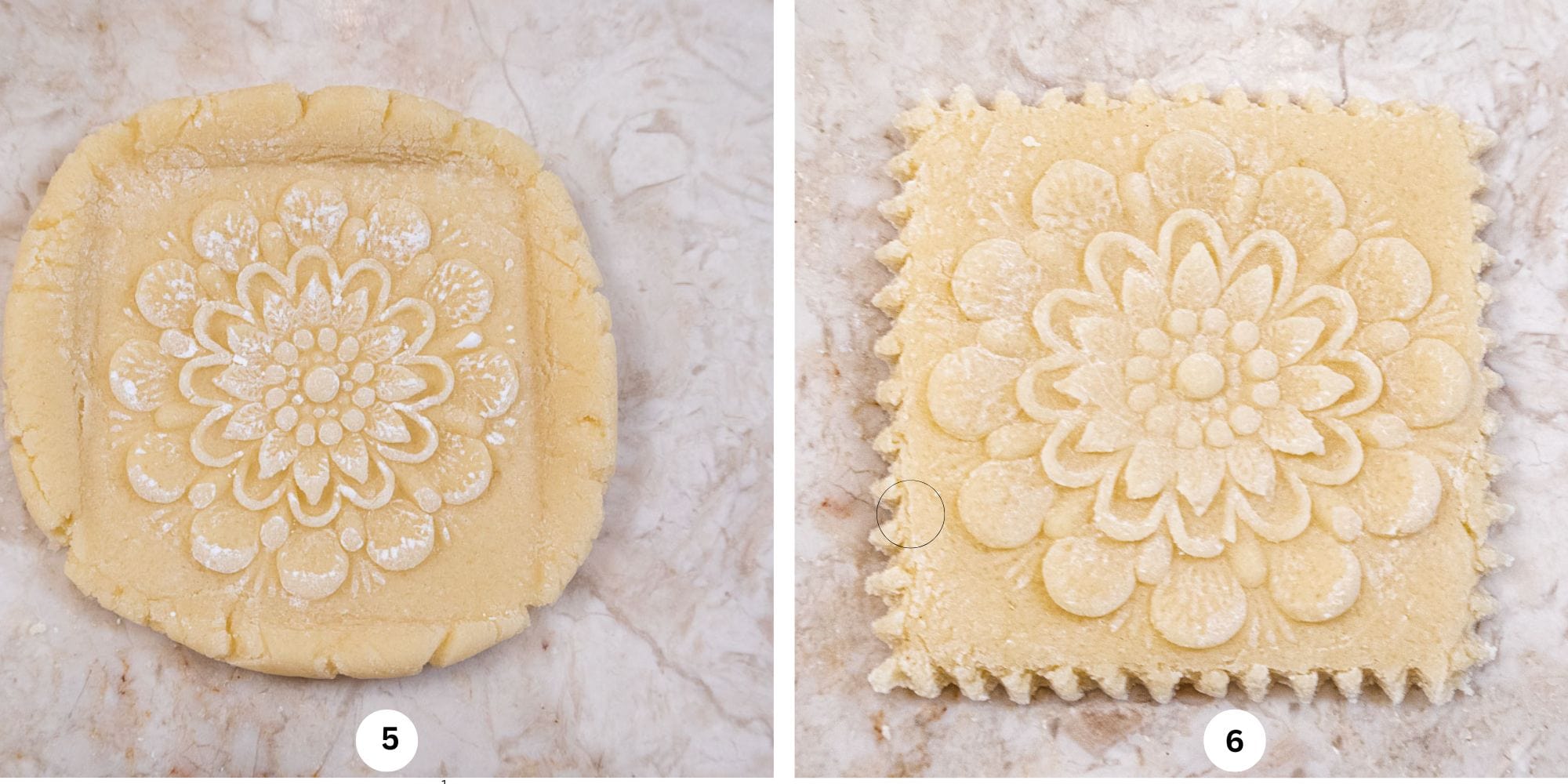
Step 5. Turn the mold over and carefully remove the cookie. Step 6. Trim the cookie and brush off the powdered sugar. Dry and bake as directed.
Recipe FAQs
Springerle means "little knight" or "little jumper" which some people think refers to jumping horses on the molds or rolling pins.
Use a stiff brush such as a toothbrush to scrub as much as you can from the carving. Then rinse it under water, scrubbing to remove any stubborn dough. Pat dry and then allow to dry completely at room temperature. This is easily done by standing it up in a sturdy container. Store it in a cool, dry place.
Yes. Some recipes dust the work surface with anise seeds and place the rolled out dough on top. When the springerle rolling pin is pressed into the dough and rolled the cookies pick up the seeds on the bottom.
Drying allows the surface of the cookie to form a “crust” which helps set the desired impression during the baking process.
Expert Tips
- The cookies should bake so the top remains white or almost white while the bottom is a golden brown.
- To test to see if they are done, break a baked one open to make sure there is no doughy center.
- It is important to dry the cookies so the designs will be set when they are baked. In fact, the designs can be seen more clearly even before going into the oven.
- The cookies will rise from the bottom. Mine are never evenly risen.
- These are not a soft cookie. They are firm the first few days and get harder as they are stored. They are perfect with a cup of coffee or tea.
- To soften them a bit, store them with a piece of bread, changing it as need to keep it fresh. They'll last a long time in an airtight tin.
- I prefer powdered sugar instead of flour for dusting the molds are sprinkling over the dough before rolling the designs on. It is easier to brush off and even if all of it isn't removed it tastes better than baked flour.
- Freezing the dough after impressing and cutting it makes it easier to keep the shape without stretching it.
- Cake flour is preferred for a cookie that stays a bit softer longer. 2 ¼ cups all-purpose flour can be substituted if need be. The weight remains the same.

More Cookies to Enjoy
If you love this Springerle or any other recipe on my website, please leave a 🌟 star rating in the recipe card and let me know how it went the in the comments below. Thank you and I appreciate each of you being here!
Traditional Springerle Cookies
Equipment
- Springerle rolling pin or molds optional
Ingredients
- 2 large eggs
- 1 cup granulated sugar (200 grams)
- ¼ teaspoon ammonium carbonate or baker's ammonia
- 2 teaspoons anise extract
- 2 ½ cups cake flour (315 grams)* see substitution below
- Powdered sugar, as needed
- *2 ¼ cups all-purpose flour can be substituted. The weight remains the same.
Instructions
- Line a baking sheet or two with parchment paper. Set aside
- Fit the mixer with the whisk attchment.
- Add the eggs to the bowl.
- Beat until pale yellow.
- Stir the ammonium carbonate (baker's ammonia) into the anise extract. Mix it into the eggs completely.
- Add the sugar gradually and beat on high for abut 5 to 8 minutes until very thick, light in color.
- Switch to the paddle attachment and incorporate half the flour. Add the remaining flour and mix well. The dough will be somewhat sticky at this point and will not completely come together.
- Remove the dough to a work surface and knead together briefly to make a cohesive rectangle. Wrap it in plastic wrap and refrigerate for an hour or to which will make it easier to roll out.
Using a Springerle Rolling Pin
- Roll between waxed paper into a rectangle about ⅜" thick. If your roll out looks less than a rectangle, see the photos on how to fix it. If the dough is warm at this point, refrigerate or freeze still between waxed paper just to firm up a bit.
- When ready, remove the top piece of waxed paper only and sprinkle lightly with powdered sugar. Place the rolling pin with the dividing line between the cookies on the bottom of the dough. Roll upward applying enough pressure to make sure the carvings are marking the dough. Divide the cookies between the lines on the dough using a fluted pastry cutter or a knife. As you can see, I preferred the knife as I thought the cutter dragged the dough and didn't make a good cut. Freeze to firm up.
- For the final step, turn the cookies over and pull back the waxed paper on one strip of cookies. Remove the cookies and break along the cut line to divide them. Place them on the parchment line sheets about 1" apart. Reroll any scraps and make more cookies.
- Let the cookies dry for 48 hours to allow the patterns on the cookies to set before baking.
- Preheat the oven to 325°F. Double Pan and bake for about 15 to 20 minutes depending upon the thickness. The cookies should stay as white as possible with the bottoms, which will have risen, a golden brown. Don't be concerned if they do not rise evenly. I don't think mine every have and it doesn't really show.
Using Springerle Molds
- For the molds, roll the pastry out as above. Cut pieces that will completely cover the mold. Sprinkle the mold with powdered sugar. Press the dough firmly into the mold.
- To insure a good relief on the cookie, turn them mold upside down and press it on the table.
- Turn it upright and very carefully remove the cookie from the mold. Trim the edges and place it on the parchment paper. Dry as above.
- If using the Springerle for ornaments, make a hole in the top of each one. I found the pointed tip of an instant thermometer was perfect for this. Remove any excess dough on the back of the hole.
- Let them dry at room temperature for 48 hours.
- Preheat the oven to 325°F. Double Pan and bake for abut 15 to 20 minutes depending upon the thickness. The cookies should stay as white as possible with the bottoms, which will have risen, a golden brown. Don't be concerned if they do not rise evenly. I don't think mine every have and it doesn't really show.
- To check to see if they are baked through, remove one cookie and break it open to make sure there is no unbaked dough.
- Yield: 24 to 28 cookies with rerolls.
- Store the cookies in an airtight container. These are not a soft cookie. They are firm the first few days and get harder as they are stored. They are perfect with a cup of coffee or tea. To soften them a bit, store them with a piece of bread, changing it as need to keep it fresh. They'll last a long time in an airtight tin.
Notes
Nutrition
Holiday Roundup
From outstanding desserts to breads, a soup, snacks, gifts and more, you're sure to find something new to add to your holidays. Because I know your days are as filled as mine with things to do, the majority of these recipes can be made in whole or in part ahead of time.
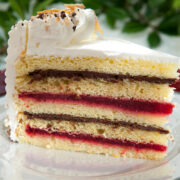
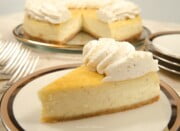
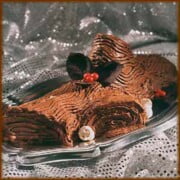
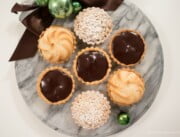

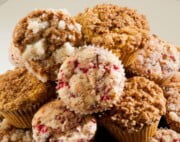
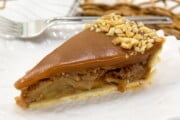
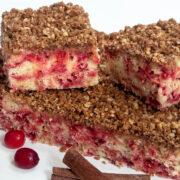
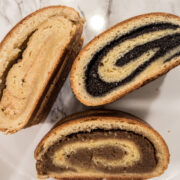
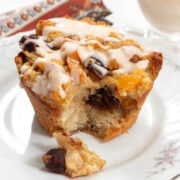
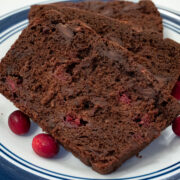
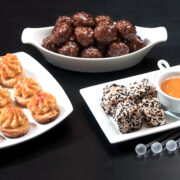
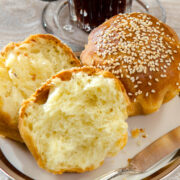
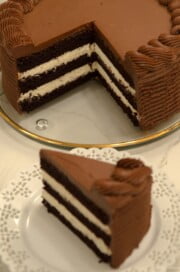
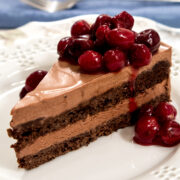
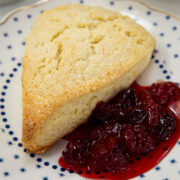
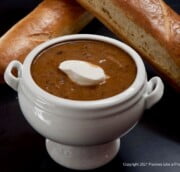

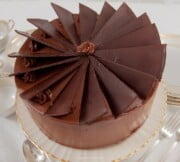
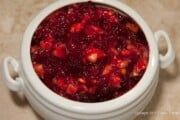
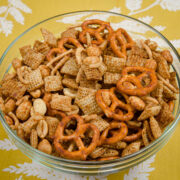
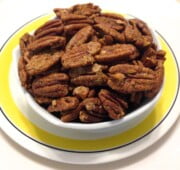
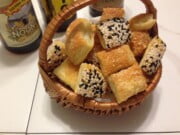
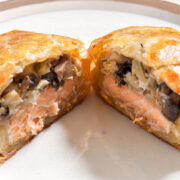
Want more Ideas for the Holidays? Try these Thanksgiving Recipes!
Viennese Whirl Cookies
These Viennese Whirl Cookies come to you from......England. I was surprised also. It seems they were thought to look like something that came from Vienna. Whatever was thought about them, they are a stunningly delicious, melt in your mouth cookie with only four ingredients for the basic cookie.

While the traditional English version is filled with buttercream and raspberry jam, I've upped the ante with a Strawberry Chocolate filling that will wow you!
This entire cookie is so easy to make, you won't want to miss it.
If you love sandwich cookies, here are a few more: Peanut Butter Sandwich Cookies, Dulce de Leche Your Way, and the Milano cookie of your dreams Langue de Chat.
[feast_advanced_jump_to]Why This Recipe is for You
- Soooo easy to make.
- 4 ingredients for the cookie that are most likely in your pantry.
- The Viennese Whirls are good by themselves and extraordinary when sandwiched - your choice.
- The Strawberry buttercream is great to fill a cake or top cupcakes and it actually tastes like strawberries unlike those made with jam.
- These last a while if kept in an airtight tin.
- They can be frozen for longer storage.
Importance of Double Panning
Double panning refers to placing one pan on top of another to slow down the bottom of cookies or baked goods becoming overly browned before the rest of the item is baked through. It is especially important when using brown sugar, molasses, honey, corn syrup, light or dark, chocolate and a lot of butter .
See the photos below to see the differences. For more information on double panning, please see my post.
Variations
- A lemon version can be made by adding the zest of a large lemon plus ¾ teaspoon citric acid (optional) to the butter and sugar when creaming. The citric acid can be found online. It adds a tartness to the cookies to emulate the taste of whole lemons.
- And the zest of a small orange for an orange version.
- For a citric version, add a teaspoon of lemon zest, orange zest and lime zest for an unusual flavor.
- There's a killer mincemeat filling that makes a delicious filling
Be sure to see the recipe card below for the exact ingredients & instructions.
Recipe Ingredients
Viennese Whirl Cookies
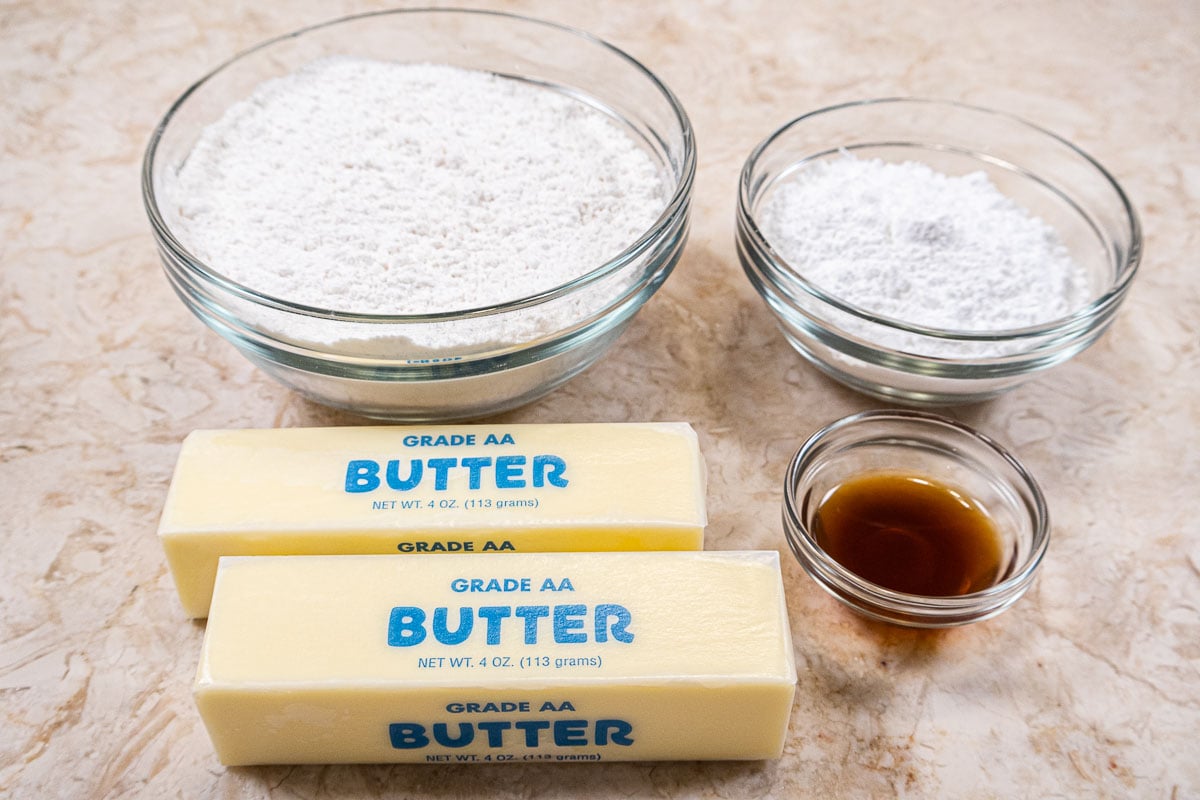
FRONT ROW: Unsalted butter, vanilla
BACK ROW: Cake flour, powdered sugar
Filling Ingredients

FRONT ROW: Almond extract, milk, powdered sugar
MIDDLE ROW: Red food coloring, unsalted butter
BACK ROW: Freeze dried strawberries, chocolate, heavy cream
Freeze Dried Strawberries can be found in stores or online. Trader Joe's has them as well as other freeze-dried fruit at the best prices I have found.
I don't prefer chocolate chips. My chocolate of choice is Callebaut #811 Semisweet Callets. They look like chocolate chips but are pure chocolate that can be used where any good chocolate is needed.
Heavy Cream is higher in fat content than those marked whipping cream. It is great to use wherever a recipes specifies.
Step by Step Instructions
Draw a template on parchment paper using a 1 ¾" round cookie cutter or whatevet size you want, spaced about 1" apart. Place a second piece of paper on top. Fit a piping bag with a 38" open star tip.
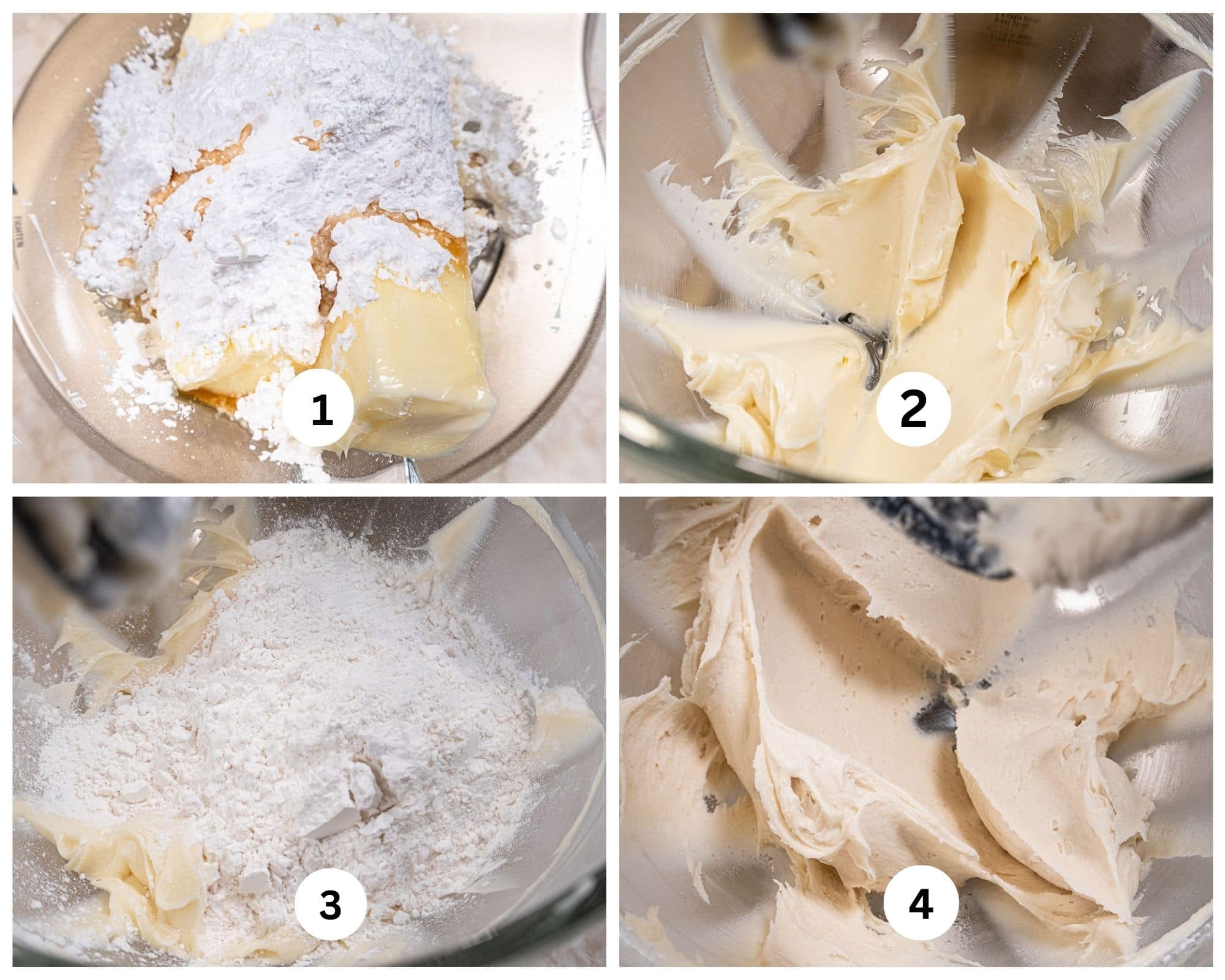
Step 1. Place the butter, powdered sugar and vanilla in the bowl of a mixer. Step 2. Cream together until light. Step 3. Add all of the flour. Step 4. Beat on low until completely combined.
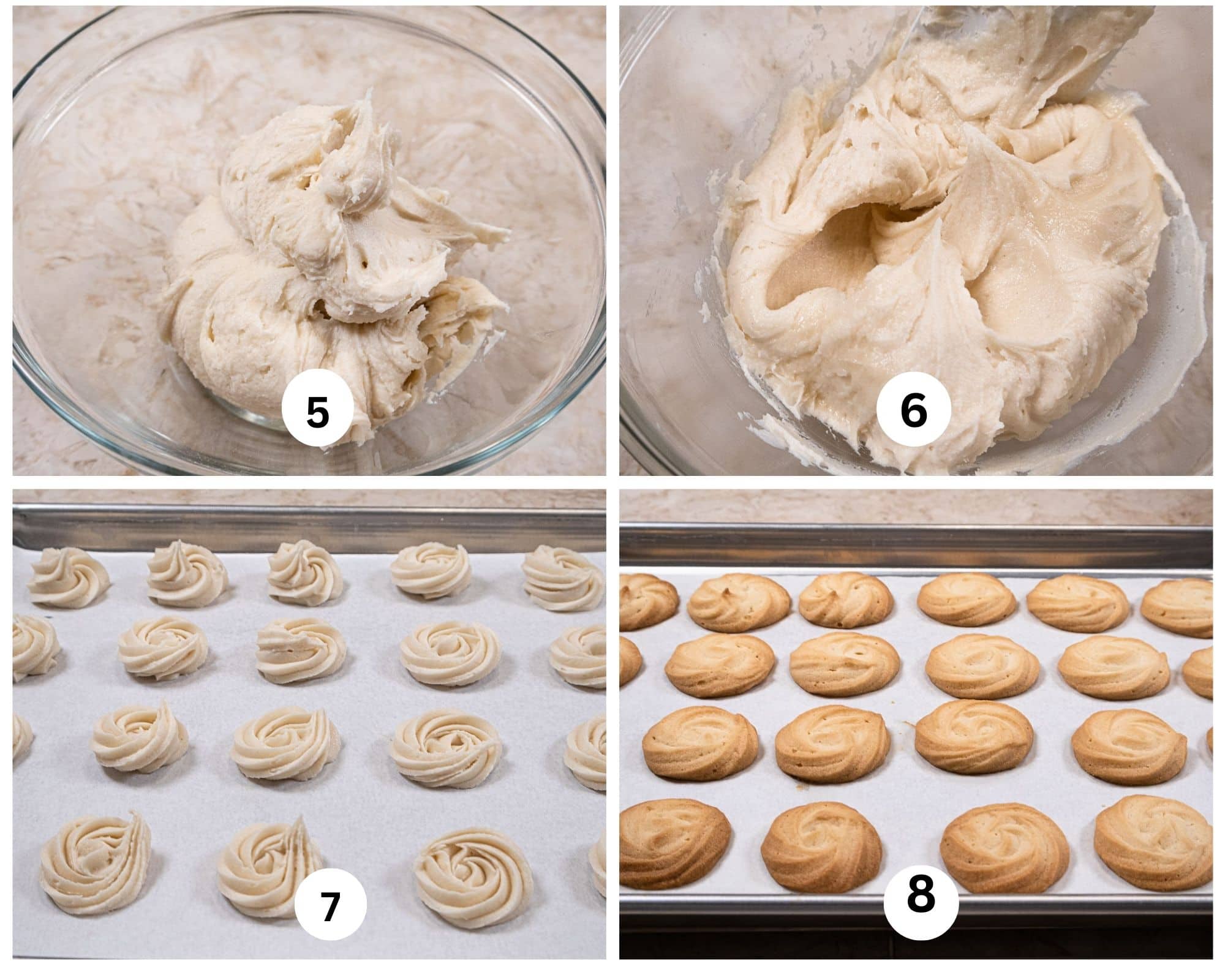
Step 5. If the batter is too stiff to pipe, place only as much as can be piped at once in a microwave safe bowl. Step 6. Microwave 4 or 5 seconds to soften. Repeat, with 3 more seconds if necessary. Do not get it too soft or the cookies won't keep their shape. Step 7. Pipe the cookies into whatever shape you desire. Step 8. Double Pan and bake the cookies. Cool them on the pan.
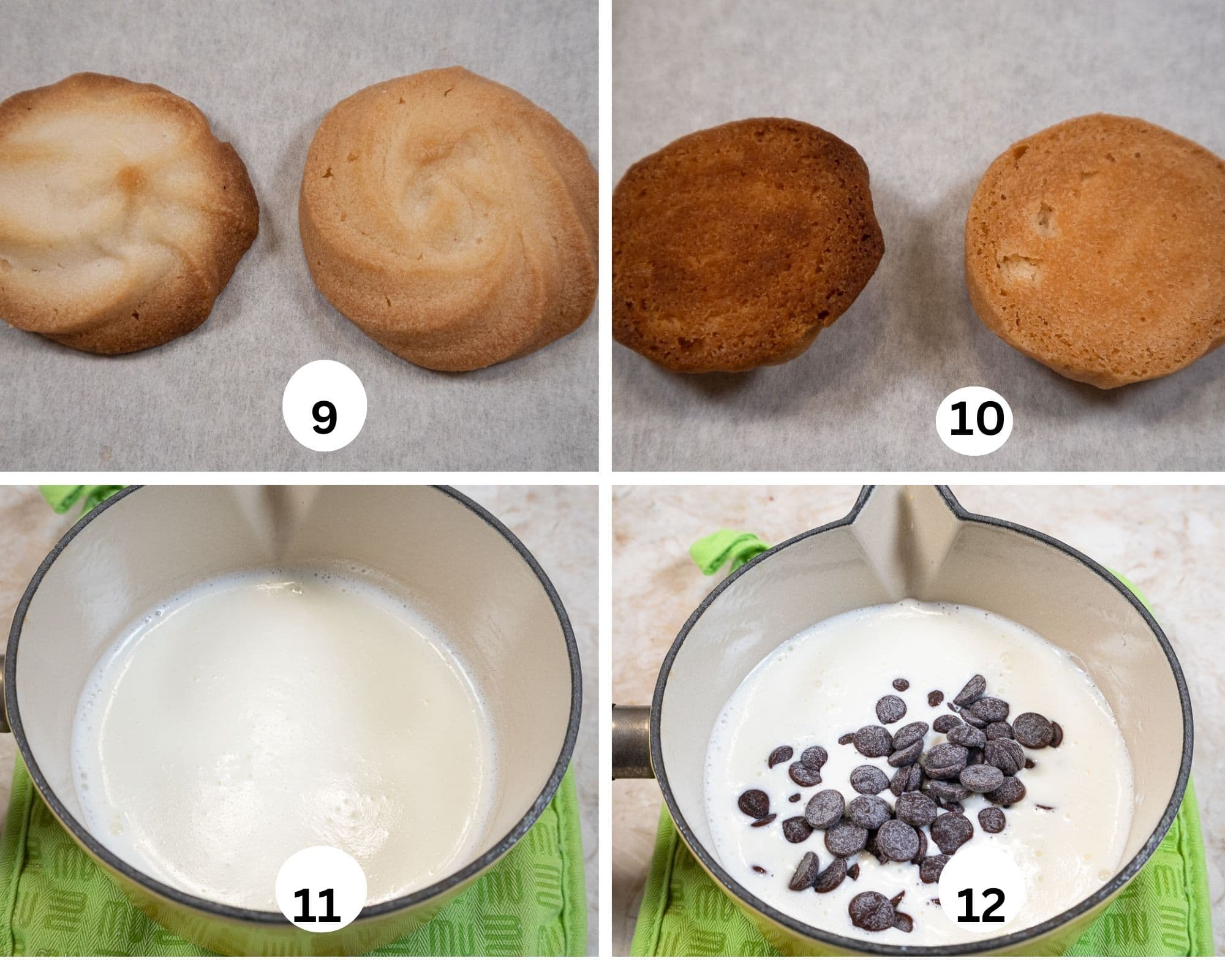
Step 9. The left cookie was baked on a single pan, the right cookie on a double pan. Step 10. The bottom of the left cookie is noticeably darker than the right cookie which was double panned. Step 11. Heat the cream until it is steamy but not boiling. Step 12. Add the chocolate to the hot cream.
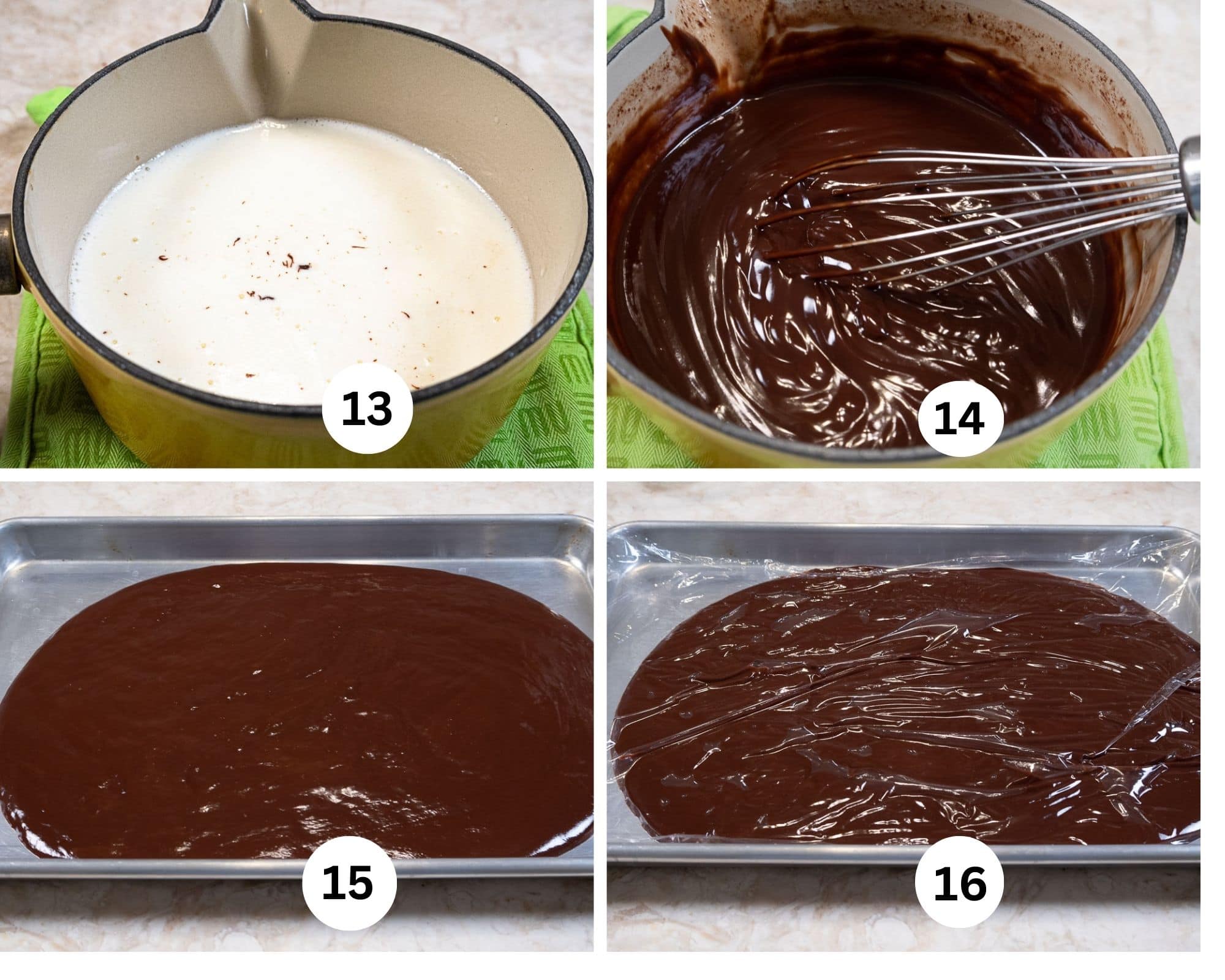
Step 13. Submerge the chocolate under the hot cream. Let it sit for 3 or 4 minutes. Step 14. Whisk gently until completely mixed. Don't be too enthusiastic or air bubbles will be incorporated. Step 15. To quick cool the ganache, spread it on a rimmed baking sheet. Step 16. Cover it with plastic wrap until it is pipable.
Strawberry Buttercream
Please see the how to photos on my Strawberry Buttercream Frosting post.
Assembly

Step 17. Match the individual cookies for size. Turn them upside down. Pipe the strawberry buttercream in one of two ways, either as a ring around the outer edge or fully covering the cookie. Step 18. Fill the open center of the ring with the chocolate ganache. Step 19. Or, pipe the chocolate ganache directly on top of the cookie completely covered with the strawberry buttercream. Step 20. Place the top cookie on the filled cookies.
Recipe FAQS
The powdered sugar. Cookies made with powdered sugar have this quality whereas cookies made with granulated sugar are more firm.
Microwave only the amount that will be piped at once for 3 to 5 seconds in the microwave. Do not get too soft or they won't hold their shape.
All chocolate, mincemeat is a great filling, just process it to smooth it out, any jam you wish, any flavor of buttercream you wish.
Expert Tips
- Use a small open star B tip about ⅜" for the best look when piping the strawberry buttercream or the chocolate ganache.
- For a list of piping tips see my post on Lange de Chat.
- If the pastry is too hard to pipe, microwave only the amount you will use immediately for 3 to 5 seconds to soften it. Repeat if necessary but be careful not to get it too soft or the cookie will not hold its shape.
- The butter for these cookies should be softer than usual to aid with the piping.
- Be sure to double pan to prevent the over browning of the bottoms and to make sure the tops are evenly browned.
- Pair the cookies for size prior to filling for the best looking cookies.
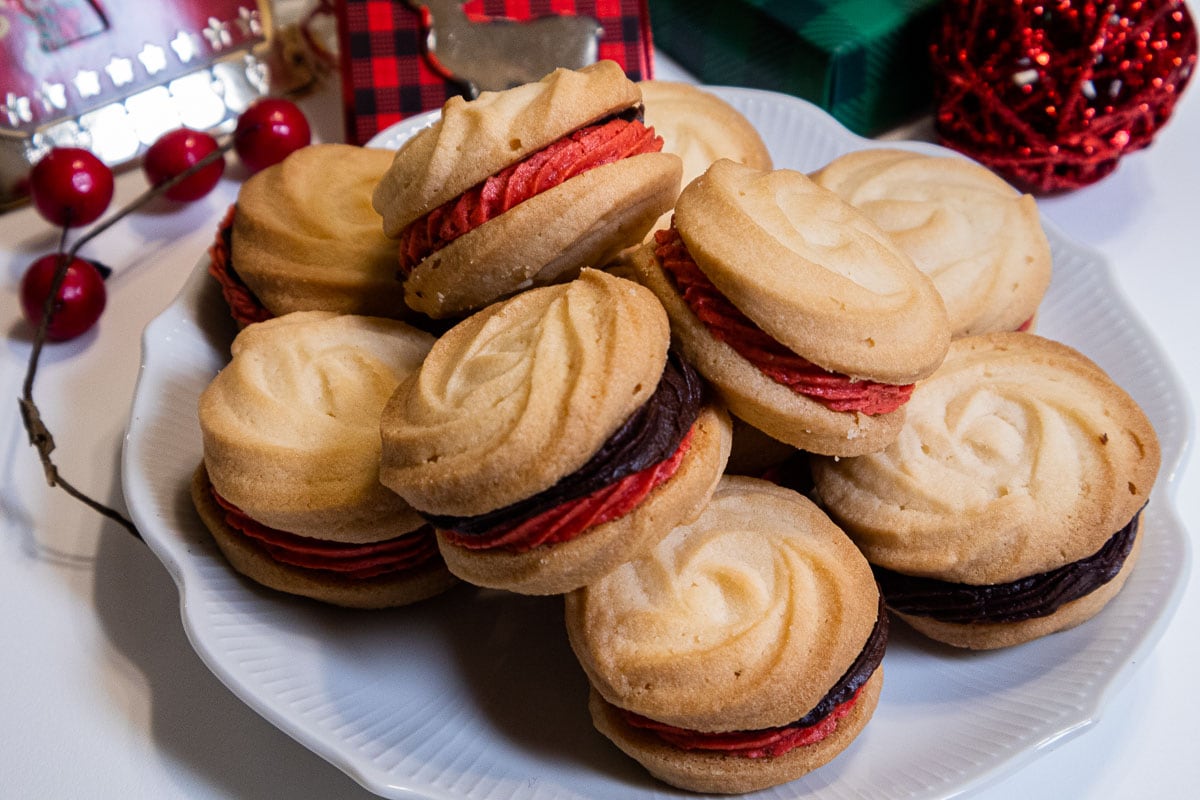
If you love these Viennese Whirl Cookies or any other recipe on my website, please leave a 🌟 star rating in the recipe card and let me know how it went the in 📝 comments below. Thank you and I appreciate each of you being here!
Viennese Whirl Cookies
Ingredients
Viennese Whirl Cookies
- 1 cup unsalted butter, softened* (225 grams)
- ½ cup powdered sugar (65 grams)
- 2 teaspoons vanilla
- 1 ¾ cup cake flour (225 grams)
Strawberry Filling
- 1 cup freeze-dried strawberries (34 grams)
- ⅞ cup powdered sugar (100 grams)
- ¼ cup unsalted butter (58 grams)
- ¼ teaspoon almond extract
- 1 or 2 tablespoons milk
- Red food coloring, optional
Chocolate Ganache
- ¾ cup heavy cream
- 170 grams semisweet chocolate (not chocolate chips)
Instructions
Cookies
- *The butter should be very soft. Softer and usual.
- Preheat the oven to 375°F. Line two baking sheets with parchment paper.
- Cream the butter and powdered sugar until light and creamy. if using citrus zest, add it with the butter and sugar.
- Add the vanilla or alternate flavoring.
- Add all of the flour, beating on low to combine.
Shaping the Cookies
- Draw a template on parchment paper using a 1 ¾" round cookie cutter or any size you wish. Space them about 1" apart. Place a second piece of parchment on top. Fit a piping bag with a ⅜" open star tip. Set aside.
- If the batter is too stiff to pipe, place only as much as you can pipe at once in a microwave safe bowl and microwave for 3 to 5 seconds. If still too stiff, repeat using the least amount of time. Do not get it too soft or it will not hold its shape when baked.
- Pipe the cookies to within about ⅛" of the inside of the circle.
- Remove the template to use on another baking sheet under parchment.
- Freeze the tray of cookies for 5 or 10 minutes until hard. Double pan and bake for about 13 to 15 minutes until a light medium brown. Cool completely.
Chocolate Ganache Filling
- Place the cream in a small saucepan or use the microwave to heat the cream until steaming hot but not boiling.
- Submerge the chocolate under the cream and let it sit for several minutes. Whisk to smooth out. Cool it until it can be piped and hold its shape. To quick cool the ganache, spread it out on a sheet tray. Cover it with film.
Strawberry Buttercream
- Combine all of the ingredients in a mixing bowl. Beat on low to bring together, then raise the mixer to medium to medium high and beat to lighten and increase the volume.
Sandwiching the Cookies
- Pair the cookies for size. Lay them out with the bottoms turned up.
- Pipe the strawberry buttercream either in a circle, leaving the middle exposed or completely cover the cookie.
- Pipe the chocolate ganache in the middle of the circle or on top of the cookie completely covered with buttercream. Place the second cookie on top.
Notes
- A lemon version can be made by adding the zest of a large lemon plus ¾ teaspoon citric acid (optional) to the butter and sugar when creaming. The citric acid can be found online. It adds a tartness to the cookies to emulate the taste of whole lemons.
- And the zest of a small orange for an orange version.
- For a citric version, add a teaspoon of lemon zest, orange zest and lime zest for an unusual flavor.
- There's a killer mincemeat filling that makes a delicious filling.
- Use a small open star B tip about ⅜" for the best look when piping the strawberry buttercream or the chocolate ganache.
- For a list of piping tips see my post on Lange de Chat.
- If the pastry is too hard to pipe, microwave only the amount you will use immediately for 3 to 5 seconds to soften it. Repeat if necessary but be careful not to get it too soft or the cookie will not hold its shape.
- The butter for these cookies should be softer than usual to aid with the piping.
- Be sure to double pan to prevent the over browning of the bottoms and to make sure the tops are evenly browned.
- Pair the cookies for size prior to filling for the best looking cookies.
- Store these in an airtight container for up to 7 days.
- You will have ganache left over. Add a bit of extra cream, warm it and it makes an excellent sauce for desserts or hot fudge ice cream.
- These cookies can be made smaller, just adjust the baking time a bit.
Nutrition
The Breville Bakery Chef Review
Earlier this year, several of my readers asked about the Breville Bakery Chef Mixer. I had been using my Breville model BEM800XL which was the model before this one and loving it. But I have to admit, I was curious and also wanted to answer their questions. So I contacted Breville and asked if they would supply a machine for me to test. And they did. Here is what I found.
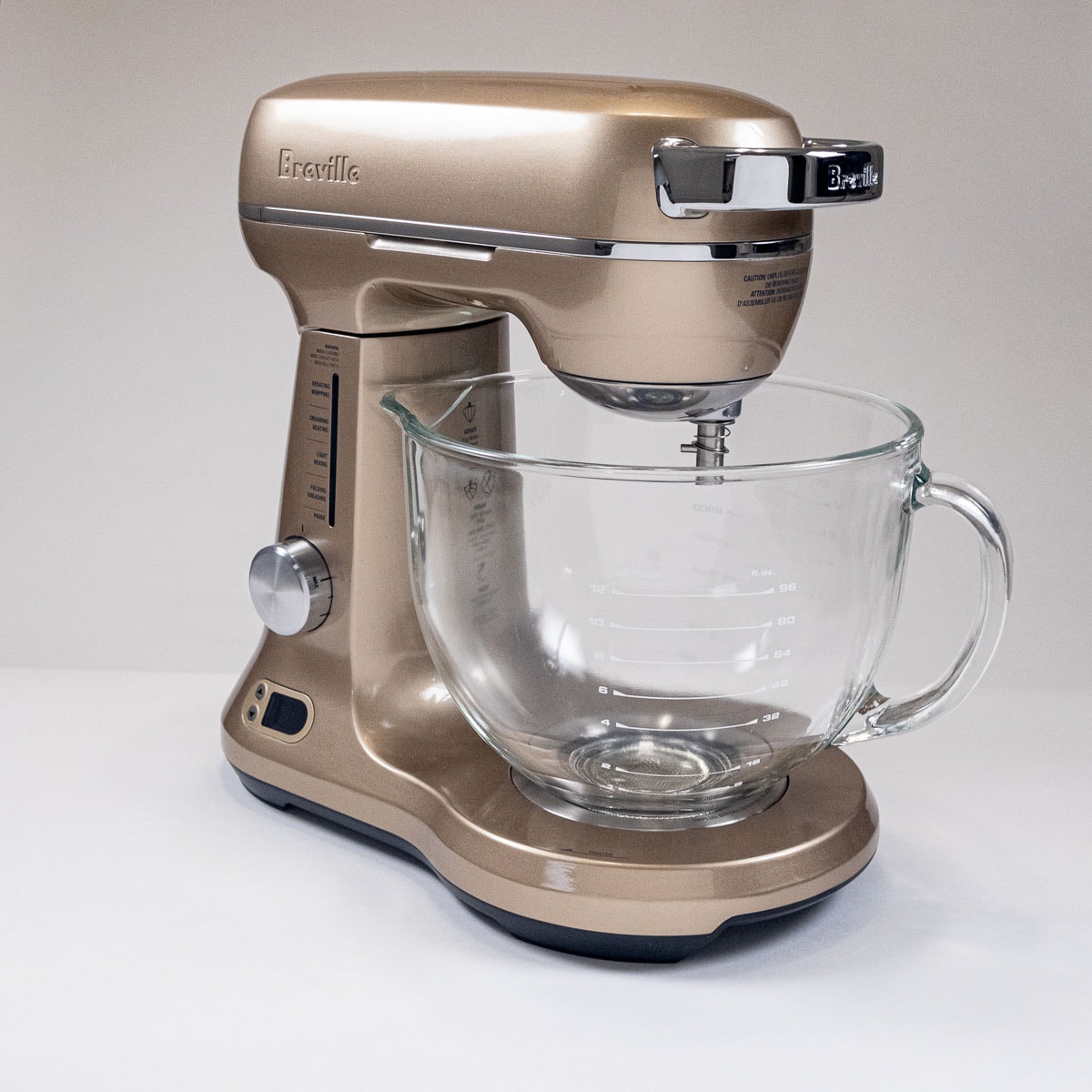
As a pastry chef for a top restaurant, the best equipment is important to me. While I use larger equipment at the restaurant, this is the closest thing you can get to what I bake with at work.
One of the most popular posts on this site is the Breville vs. Kitchenaid Mixer review for the former mixer which I loved. And this model has a couple of new items that makes it even more special. And I am here to tell you this one is even better.
[feast_advanced_jump_to]Why You'll Love This Mixer
The first thing you will notice is how beautiful the box is and well packed the mixer is. It was exciting to go down and down into the box and find yet another attachment, cover or bowl (yes it comes with two bowls, more later on that). While the color of the mixer above is Royal Champagne, It comes in a variety of colors which can be seen on their website including:
- Sea Salt.
- Black Truffle.
- Damson Blue.
- Oyster Shell.
- Royal Champagne.
The next thing that will amaze you is the beauty of this tilt head mixer. It just plain looks fantastic sitting on a counter. Breville is known for its sleek, modern designs with all of it's equipment and this mixer is a perfect example. It not only mixes perfectly, it looks gorgeous while doing it.
The Perfect Gift
The Breville Bakery Chef and an autographed copy of my latest book, Craving Cookies is the perfect gift for yourself or for your favorite baker.
You can buy one or buy both. When buying both, they have to be ordered separately and will come to you separately.
(As an affiliate of Breville I make a small commission when the mixer is sold. If you decide to buy the mixer, I would very much appreciate it you bought it from my site.)
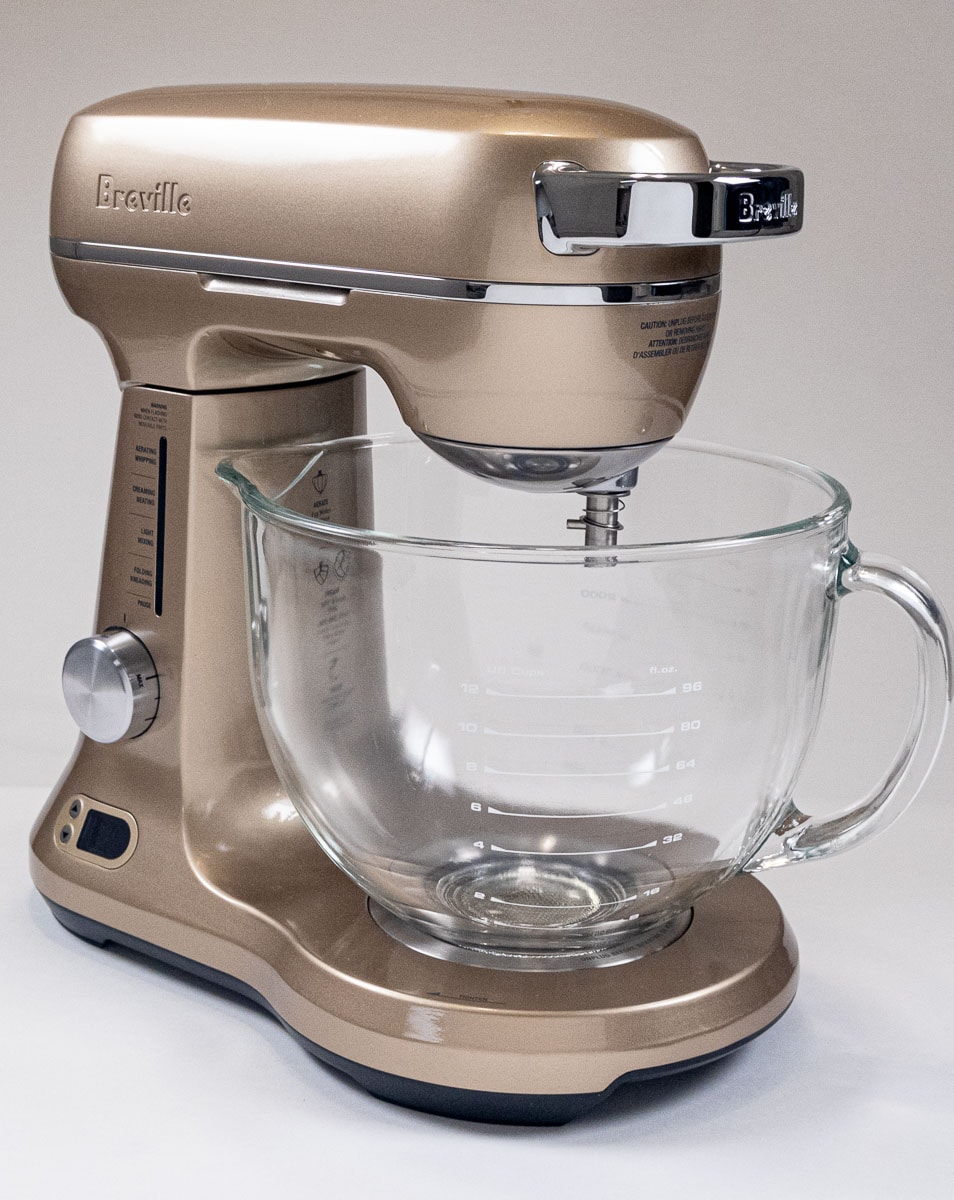
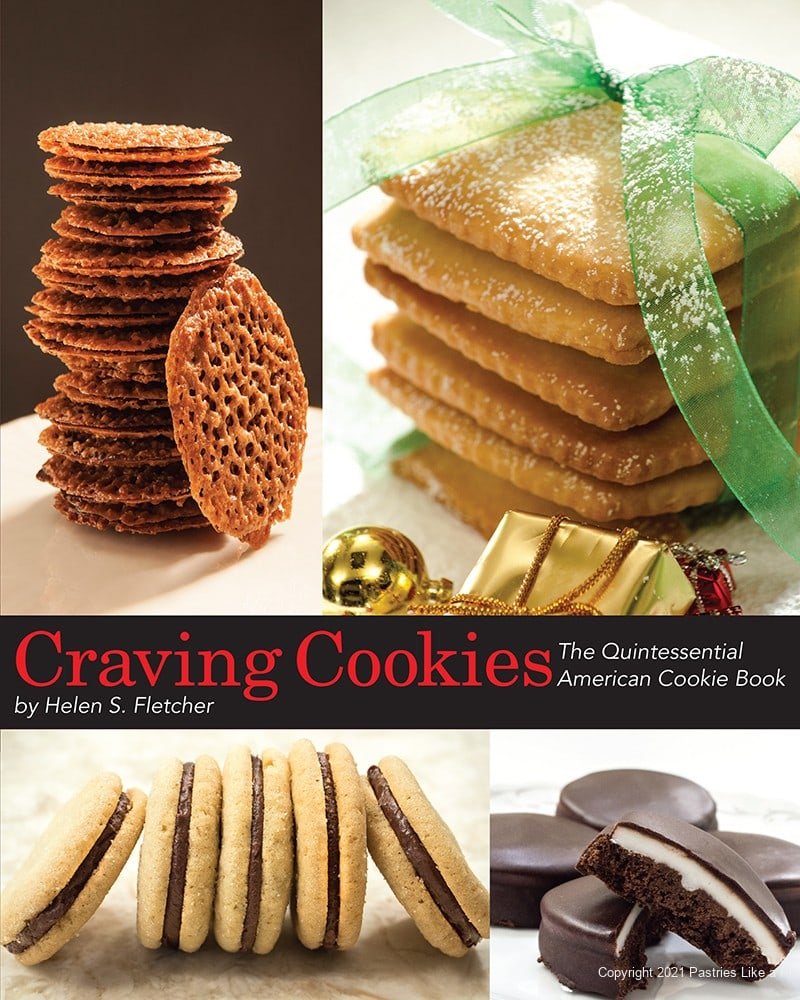
Let's Talk Bowls
The Bakery Chef comes with two bowls. A 5-quart glass bowl and a 4-quart stainless steel bowl. One more than other mixers because they know you'll need each one!
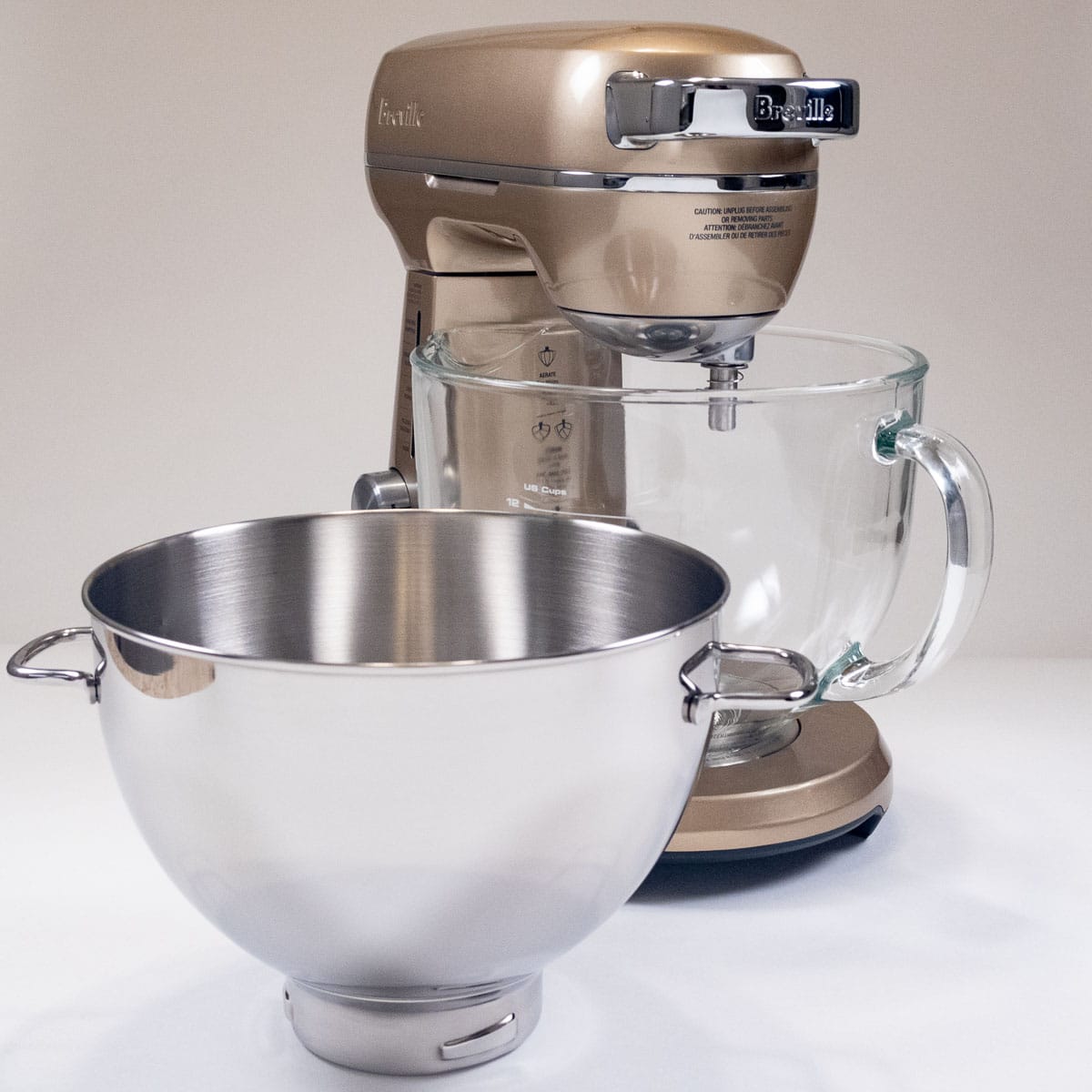
5 Quart Borosilicate Glass Bowl
I'll be perfectly frank. I was not a fan of glass bowls for a couple of reasons. They are heavy - even empty - and this one has to be hand washed due to the rubber gasket on the bottom. But it won me over when I could see how the batters or mixtures were coming together and how completely they were or were not mixed. No more wondering if the bottom of the mix was being incorporated. Just take a look! It also has a pouring spout and is marked with cups, milliliters, and fluid ounces.
Borosilicate Glass is extremely durable which is what you want in a mixing bowl. Taken care of, it will last a life time.
Ok, I get it! You really want something lighter that can go in the dishwasher. Well that's covered too. There's a 5 quart stainless steel bowl that can be purchased separately. It's the same size as the glass bowl and is just as efficient.
4 Quart Stainless Steel bowl - Why?
Why would you need a second, smaller bowl? Well, sometimes small amounts of ingredients just don't do as well in larger bowls. Take the 2 egg whites in my recipe for Haselnussmakronen - German Hazelnut Macaroons. The smaller bowl did a much quicker job of whipping the whites than if they were in the larger bowl.
It's also ideal when two mixtures are needed in a recipe such as egg yolks and sugar mixed in one bowl and the egg whites in another. There's no cleaning of a single bowl to continue if that's all you have.
The Attachments
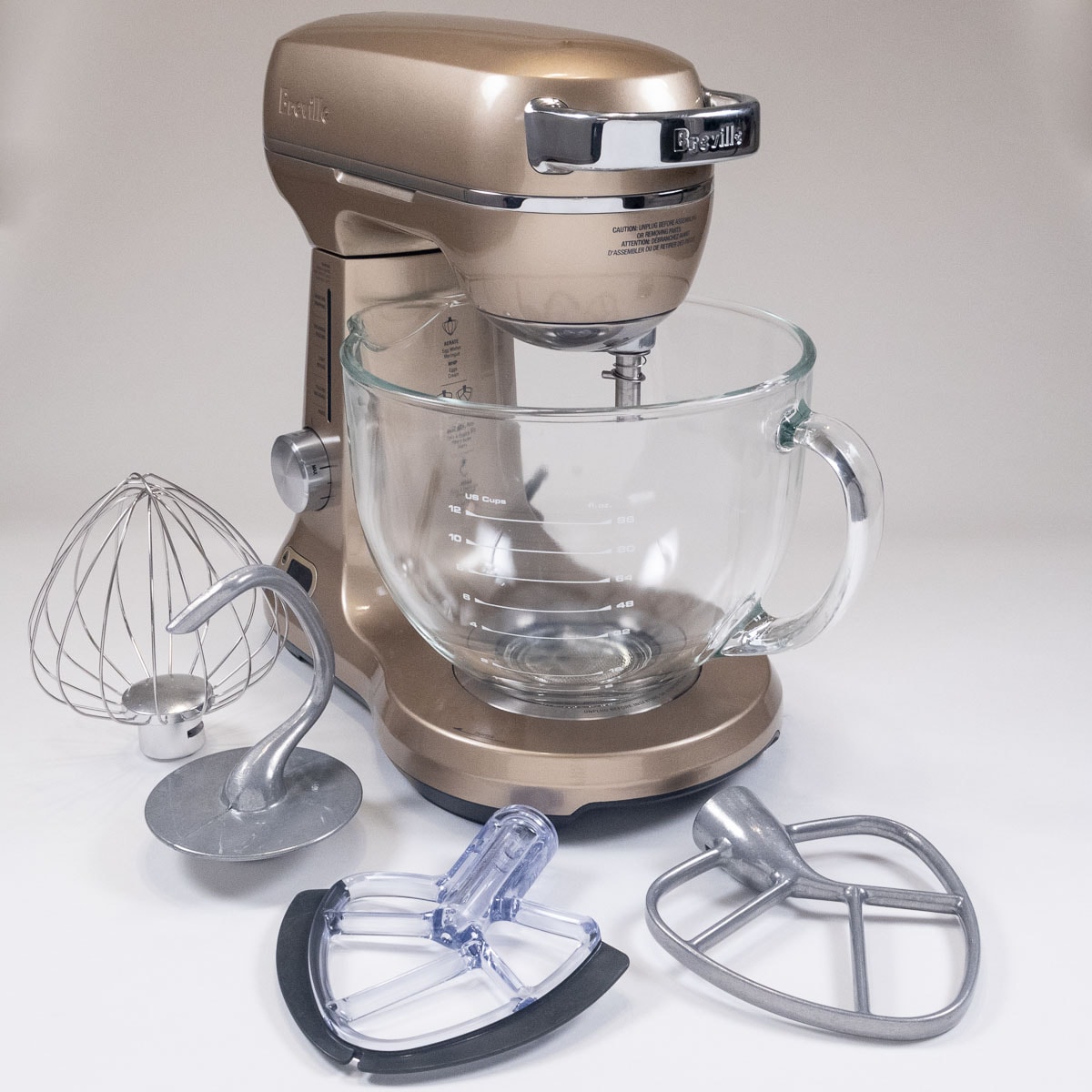
The whisk is used to areate and increase the of volume of buttercreams or increase the volume of egg white – think meringues, angel food cakes, and chiffon cakes as well as anywhere air is the main leavening agent. This Perfectly Easy Angel Food Cake whipped up even higher with this mixer. My only concern with the beater is I think it is a strange design. The previous one whipped egg whites and cream really fast. This one seems to whip the center really well and then it takes a bit for it to pull in the edges. It does a good job, but takes a bit longer.
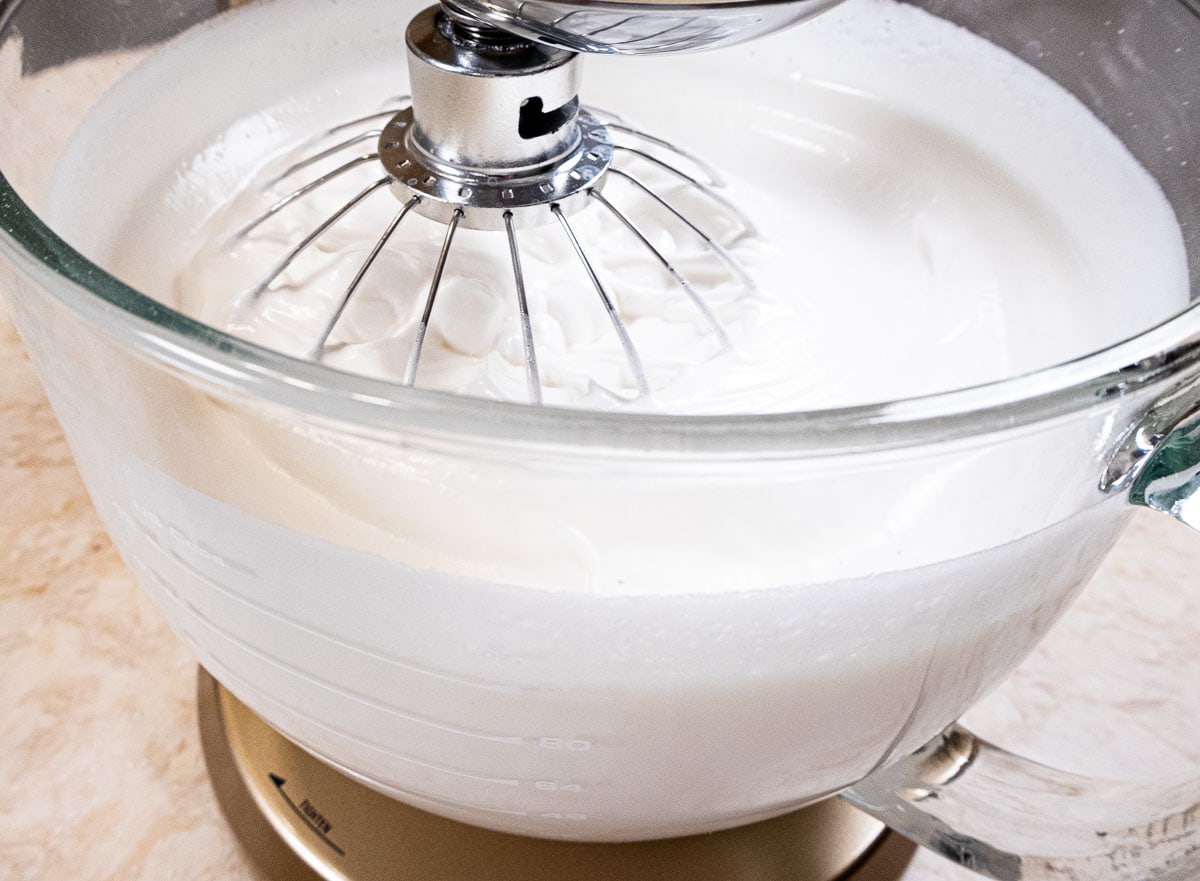
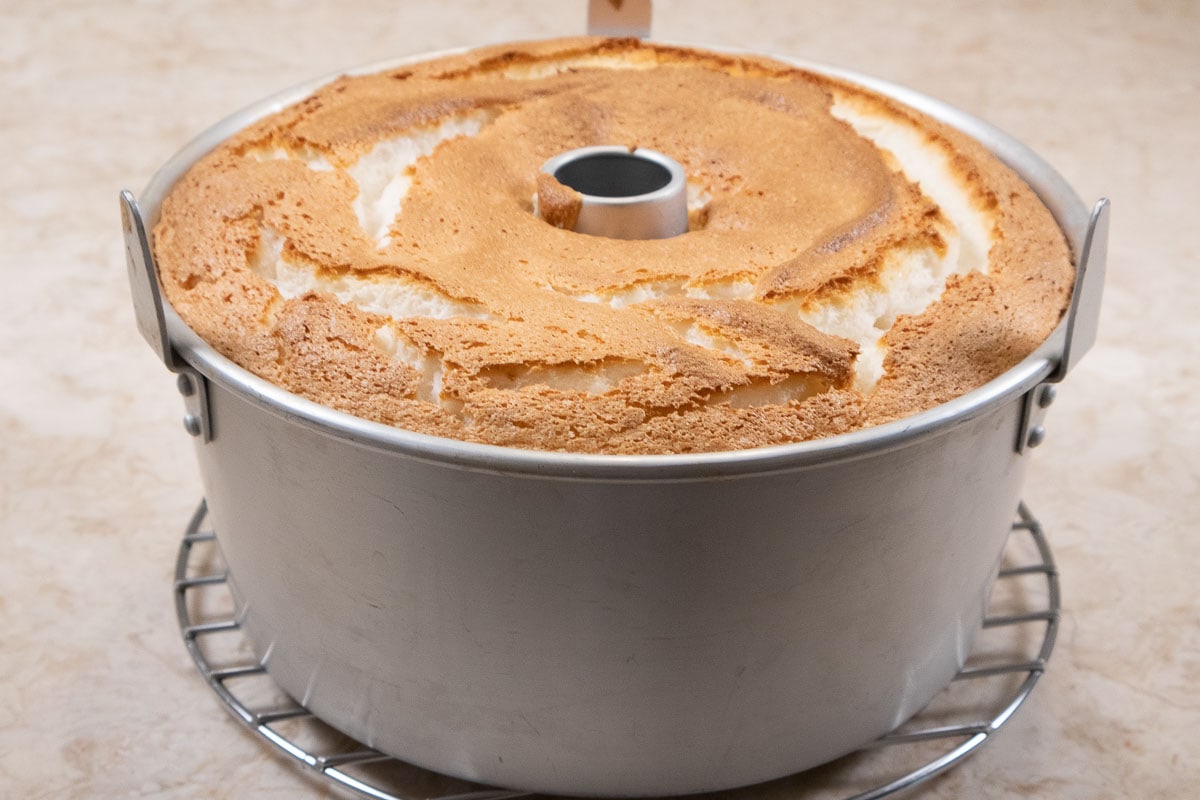
The dough hook is indispensable for bread baking. It's the mini version of those used in professional bakeries. It incorporates all of the ingredients, cleaning the sides and the bottom of the bowl so well it almost looks clean. It mixes everything including at the very bottom of the bowl which is where so many other mixers fail. There is no floury mix left unincorporated. Consequently, less time is used stopping and scraping the bowl. In the photo below, you can see the sides of the bowl are clean and the rest of the dough is mixed in the bottom of the bowl.
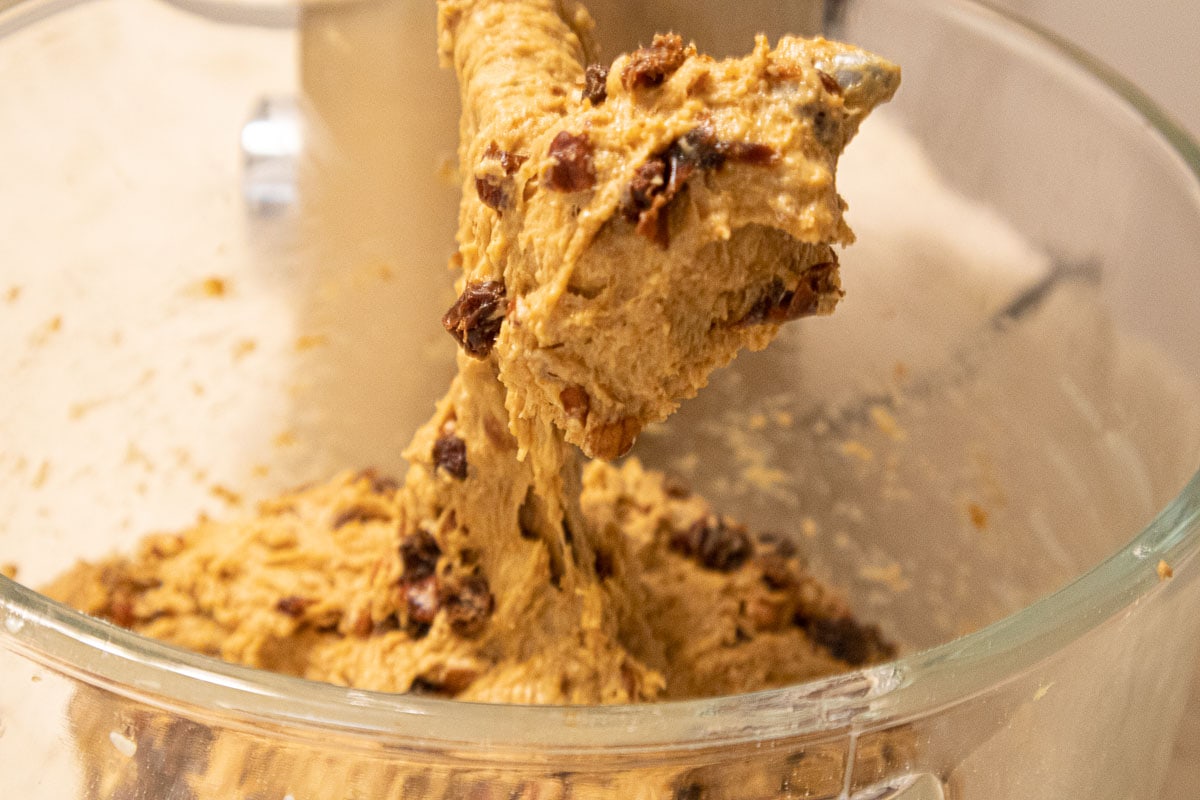
The double sided scraper attachment is my very most favorite attachment. It scrapes the side of the bowl and cuts the mixing time down by 60%. It is best used when ingredients are to be creamed or with light ingredients. Just look at how well it cleans the side of the bowl in the picture. Even better, it picks up everything in the bottom of the bowl and incorporates that also. Having said that, I made peanut butter fudge using the scraper and it worked like a charm.
There is literally no reason to ever scrape the bowl when mixing with this attachment. I don't know about you, but stopping and scraping down was my least favorite thing to do when mixing but really necessary for smooth batters and good results. However, this should not be used with heavy doughs. The next attachment is best for those.
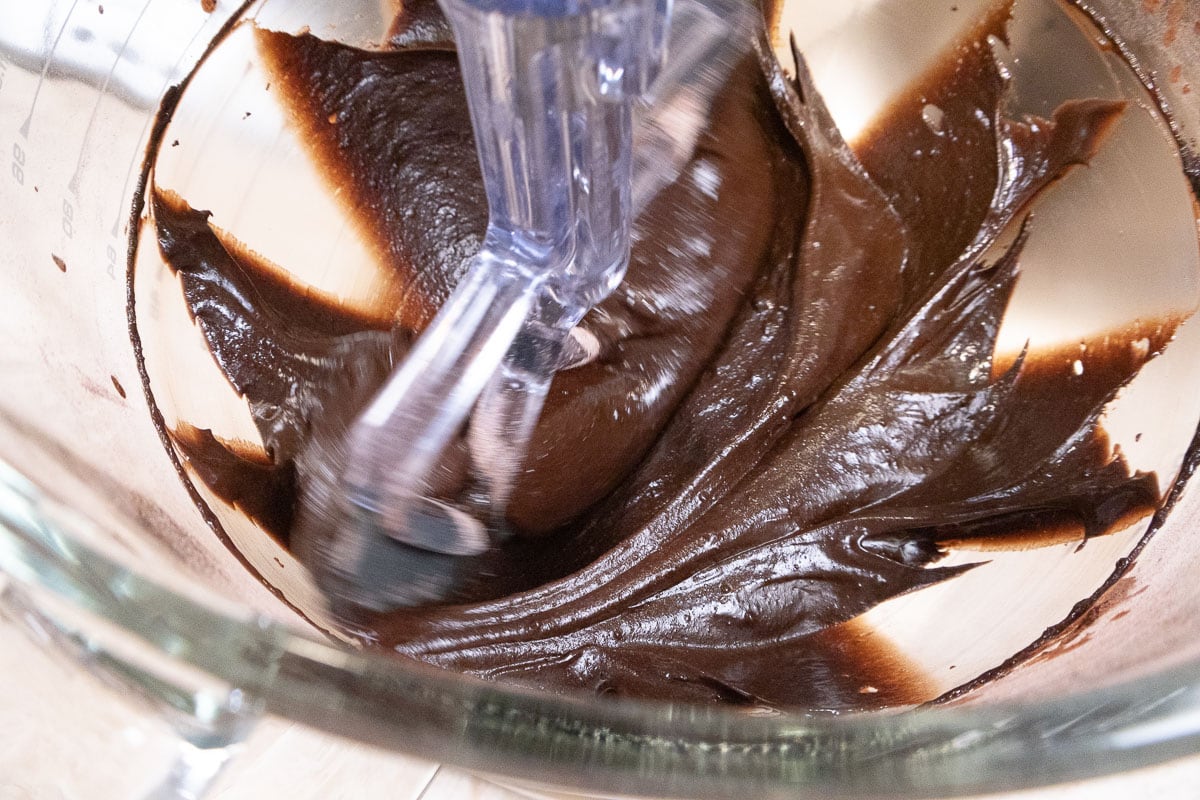
The Paddle Attachment is used for heavier batters, doughs and cookies or when mixing but not necessarily blending everything completely as when making crumbs, crumbles or crisp toppings where you want them to form crumbs.
The mixer also comes with a cover for the mixing bowl that allows you to mix bread and then cover it to rise in the same bowl at room temperature.
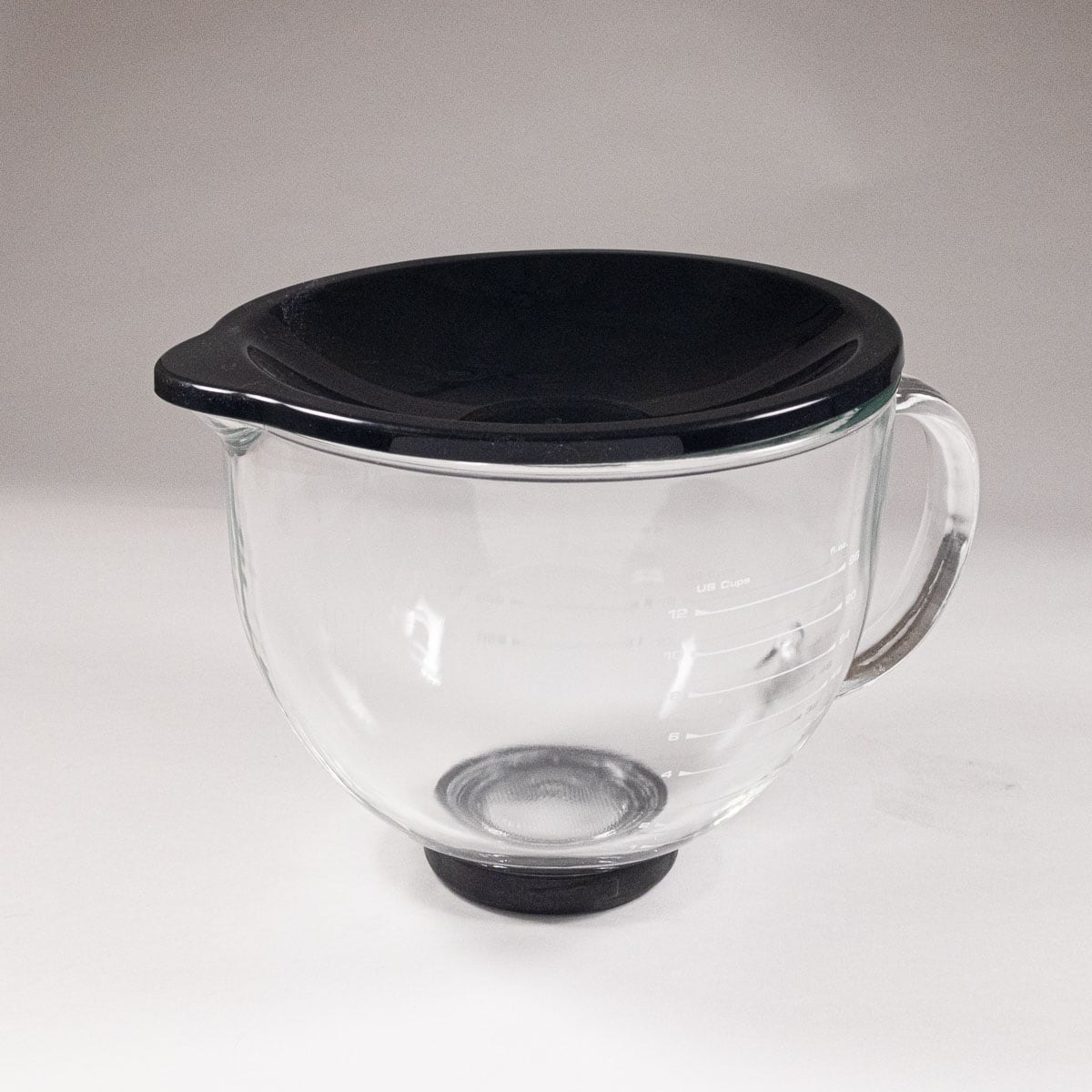
Here you can see the yeast dough has risen in the same bowl as it was mixed. Just cover it with plastic wrap and put the black top on. Set aside and let it rise. However, if using the oven as a proofer (see the notes in the ingredient card for (Pumpkin Dinner Rolls Two Ways), I suggest removing the dough to a different container.
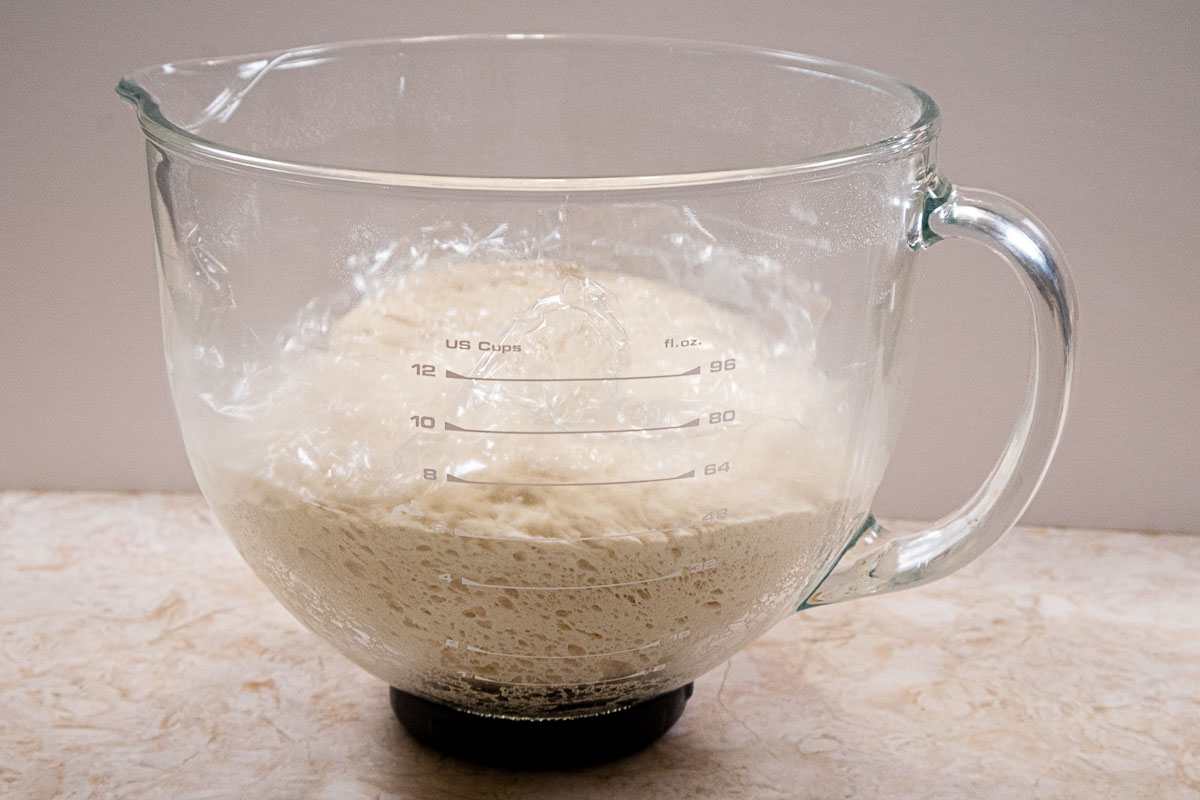
Last, but not least is the pouring shield with splash guard. At the restaurant, the pouring shield for my large mixer falls 3 inches away from the bowl so everything is poured on the floor. This all encompassing design won't do that. It prevents larger amounts of cream from splattering out of the bowl before it thickens as well as keeping hazelnuts from flying out of the bowl when skinning them as in Hazelnut Gianduja Cake. Ingredients can be added by pouring them down the extension.
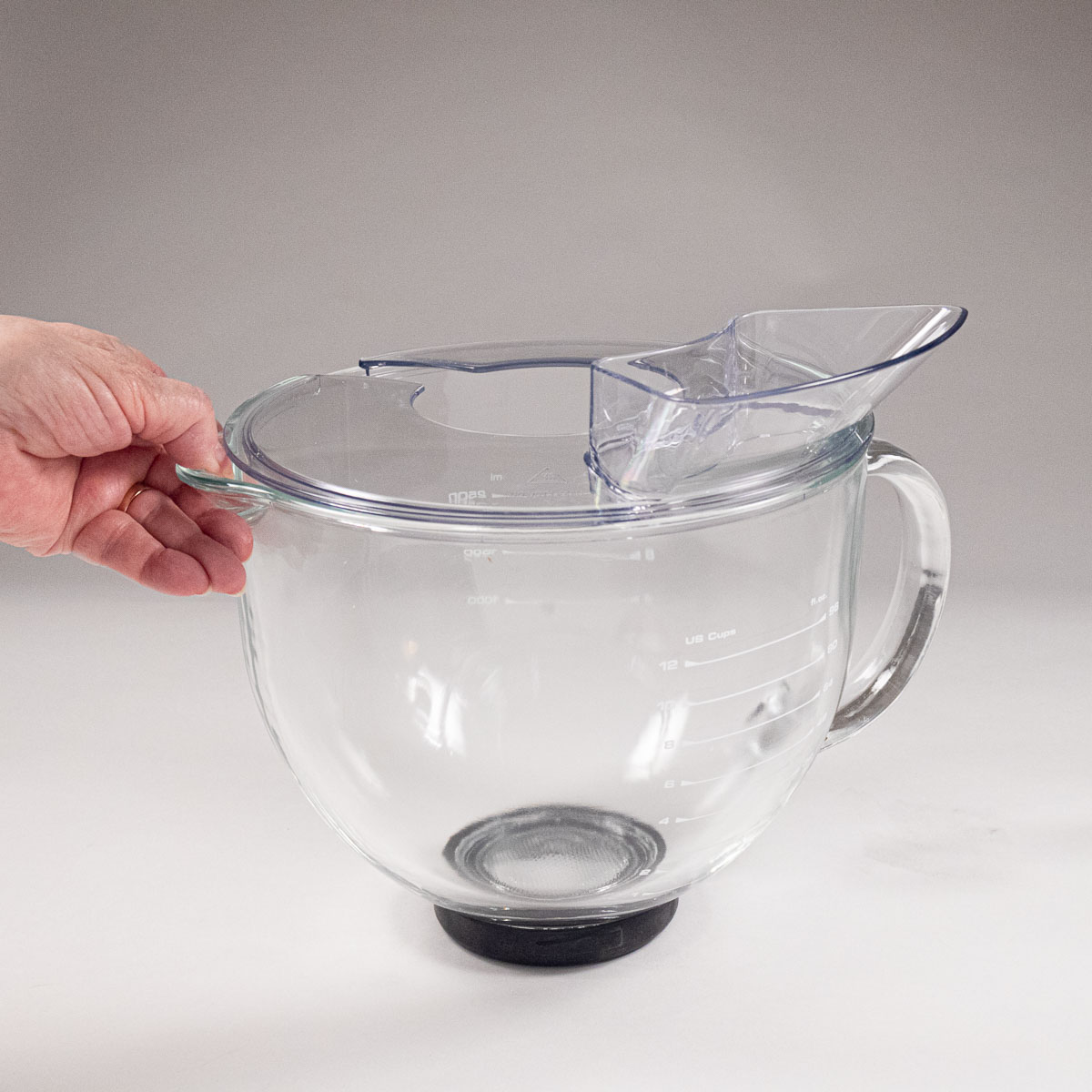
Innovations That I Love
- THE LIGHT - as someone who photographs food, I go for brighter pictures to make sure you can see what is going on. Well, there is a light under the head of the mixer that turns on when you start mixing. I can't tell you how much you'll love this. No more peering into dark bowls to see what's happening. And it is a boon to the photos. This alone is worth the price.
- On the side of the machine there is digital timer that, by default, counts up, but it can be changed to count down and the machine will automatically stop if that is preferred.
- There is a dial on the side of the machine with 11 speeds within 4 groups including folding/kneading, light mixing, cream/beating and aerating/whipping. There is also a pause button, that allows you to interrupt mixing without stopping the timer. If you turn the machine off, the timer will start all over.
- A handle at the front of the machine makes it much easier to lift and move the mixer.
- A thermo-cutoff will automatically stop the machine if it begins to overheat. The only time this happened for me was when making Italian or French Buttercream due to their extended time beating at a higher speed. It was easily managed as the machine restarted within a minute.
What I Tested
Everything! Here are a few of the recipes but there were many more. All of these can be found on my blog.
- Cakes: Angel food cake, Spirited Chocolate Cake, Double Chocolate Mousse Cake, and Strawberry Cake, as well as Coffee Cakes, big cakes, little cakes, butter cakes, sponge cakes, heavy cakes, light cakes.
- Buttercreams: Strawberry buttercream (American), Italian Buttercream, and French Buttercream
- Breads: Large batch of flatbreads (pizza dough), No Knead Bread, Chocolate Cherry Bread and Wine and Cheese Baguettes for just a few.
- Sweet Bread: European Nut Roll, Conchas, Gibassier and Fresh as a Daisy Doughnuts
- Cookies: Levain Style Chocolate Chip Cookies, Spice Bars, Langue de Chat, Baci di Dama, and Mocha Kahlua Brownies,
- Miscellaneous: Hazelnut Meringues with Raspberry Mascarpone Mousse, Individual Wedding Cakes,
What I Found Out
THIS IS THE PERFECT MIXER FOR BAKING AND PASTRY!!
I have seen reference to the head of the machine bobbling and the mixer moving around when mixing. So, let's address these.
I can only remember a few times in all the months I have worked with this machine that there was slight bobbling of the head of the machine. It was insignificant and in no way affected the mixing, end product or the machine itself. This most often occurs with heavy mixtures that are being beaten at too high a speed. All mixers will do this in the same conditions.
It creams butter and sugar better than I’ve ever seen. The double edged scraper attachment creams so thoroughly and quickly producing a lighter, fluffier mixture that enhances any recipe. Using this attachment, I didn’t need to scrape the bowl at any point from the start to the finish of mixing. I just put in the pans and baked it.
About Making Bread
Most breads, especially yeast breads are heavy, sticky doughs by nature.
For most bread recipes, the mixture should clean the sides and bottom of the bowl when mixed unless it is a batter or artisan breads that tend to be very wet. This mixer, even on the low speed as suggested, accomplishes that.
I particularly like the design of the bowl as the dough hook pulls all the flour in, whether from the sides or bottom without having to stop and scrape it down or push the flour into the center. The doughs cleaned the bowl without any help from me. The bread dough from the dough hook photo was removed from the bowl and this is what the bowl looked like. It wasn't cleaned at all.
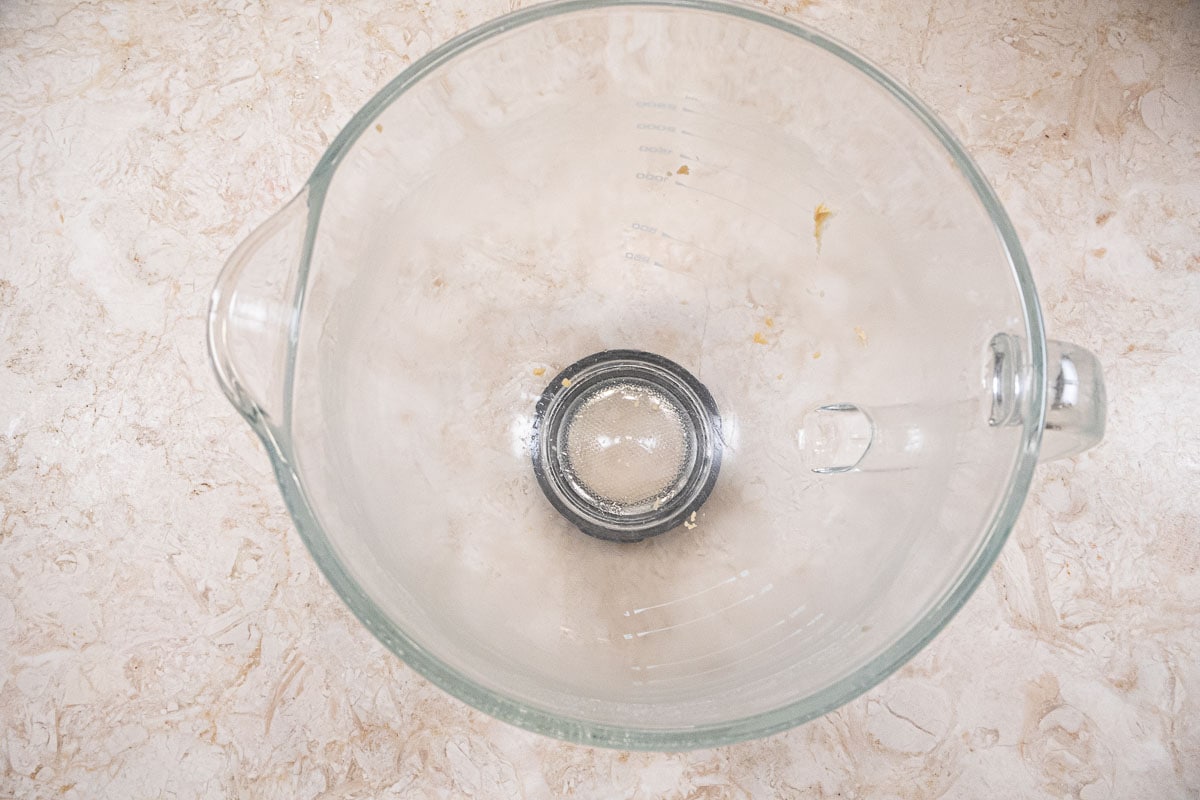
This Breville incorporates ingredients more thoroughly and completely than any machine I have used. And faster! One of the things I like about using the glass bowl for bread is that it cleans the sides of the bowl with no scraping or help. It just keeps picking up the flour and incorporating it.
I have heard comments about the head of the machine “bobbling”. I have found that, especially with bread, this can occur if the speed is raised too high. It is recommended to keep it on folding/kneading, which is the lowest speed. Truthfully, I thought it was too low, but it isn’t. Even the leading American mixer suggests that speed for bread.
As to the machine moving or bouncing when running, my testing did not find that it happened at any time with any recipe.
Conclusion
This heavy duty mixer will help make you the best baker or pastry chef around. It uses the same planetary mixing action in my professional mixers and has full 360° coverage like the ones I use at work to produce beautiful desserts.
There is free delivery within 5 to 7 days of ordering with a 30 day return. The Warranty includes 1 Year Repair with 5 Year Motor Warranty.
If you are wondering at this point if I am just blinded by my love for the Breville Bakery Chef, here are a few other reviews for your consideration.
The 7 Best Stand Mixers of 2023, Tested and Reviewed by Real Simple
We Tested 21 Stand Mixers — Here Are Our Favorite Models by All Recipes
The Best Stand Mixers of 2023 by USA Today
The Best Stand Mixers for Cookies, Cakes, Bread, and Beyond by Epicurious
The Techy Stuff - Equipment Specs
Attachments: Scraper Beater, standard flat beater, dough hook, whisk, splash guard, pouring shield and bowl cover.
Bowls: 5 quart Borosilicate Glass Bowl, 4 quart stainless steel bowl.
Construction: Die Cast Metal Mixer Body
Wattage: 550 watts
Voltage: 110-120 volts
Warranty: 1 year repair with 5-year motor warranty
Dimensions - (WxDxH)11.4" x 14.8" x 14.3"
Construction Materials - Die Cast Metal Mixer Body
LED Display - Counts up when starting, or use the arrow buttons to set timer to count down.
Load Sensing Technology - Detects when heavy dough and batters are being mixed and automatically adjust the power to maintain the selected speed
Pause Button - Rotate dial to PAUSE to temporarily stop mixing
HASELNUSSMAKRONEN -German Hazelnut Macaroons
Haselnussmakronen! What a mouthful. This German Hazelnut Macaroon is a very simple recipe with a really big reward that you don't want to miss. Six ingredients whipped up in a matter of minutes, baked in practically no time and filled with jam or chocolate will take a cookie tray to new heights.
As an added plus, these cookies are naturally gluten free.
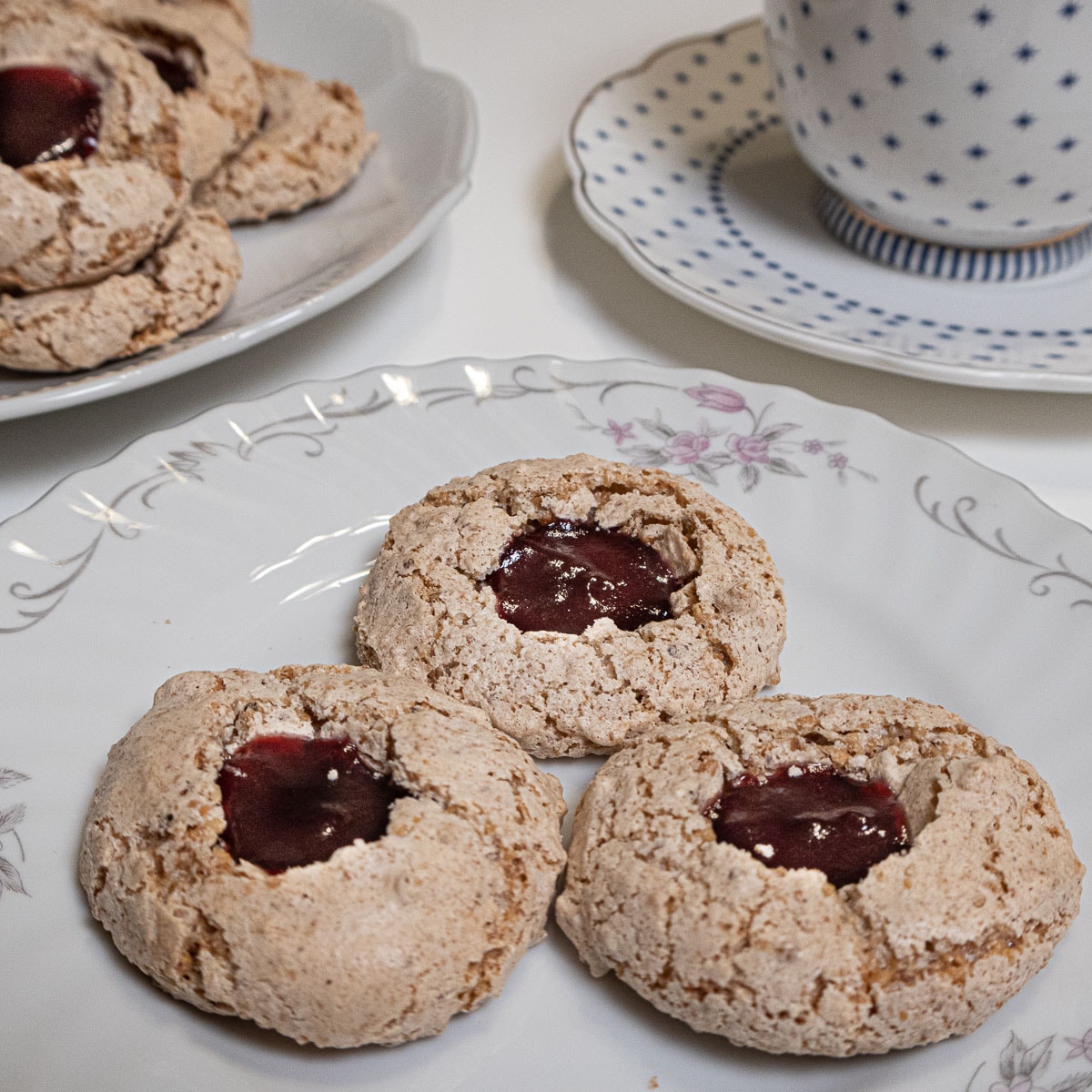
These are such an interesting cookie. They come out of the oven crisp like a meringue but become softer and chewy within a day. Eat one and you'll eat two for sure. They'll sit in a container for a week or more and even more accommodating, they can be frozen and thawed.
[feast_advanced_jump_to]Why You'll Love These Cookies
- First, they are one of the best tasting cookies with the least effort around.
- They can be made completely, frozen and thawed. Cookies don't get more convenient.
- Friends and family probably haven't tasted these.
- They are super, super easy to make.
- These are naturally gluten free.
- Not another butter cookie although I love these too.
Recipe Ingredients

FRONT ROW: Cream of Tarter, seedless red raspberry jam, vanilla
BACK ROW: Baker's sugar, toasted hazelnuts, egg whites
Baker's sugar is ideal here. It is rather expensive in the stores but Three Easy Sugar Fixes shows you how to make it in a flash! Baker's sugar dissolves more easily in the egg whites than does granulated sugar.
It is important to toast the hazelnuts for the maximum amount of flavor. The cookies will not be as amazing without this step. Make sure to cool them completely before processing so they don't turn into hazelnut paste.
If the hazelnuts are not skinned, my post Hazelnut Gianduja Cake shows you a really quick way to skin them without the hassle of boiling with baking soda, or rubbing them (endlessly) between towels.
Filling Variations
- Any kind of jam can be used.
- A chocolate filling can be made - see the recipe card
- Nutella is another option but I haven't tried it so i'm not sure it will set up firmly.
Be sure to see the recipe card below for the exact ingredients & instructions!
Step by Step Instructions

Step 1. A #60 disher/scooper is the perfect size with which to drop the macaroons and the end of the wooden spoon handle is ideal for making holes in the cookies. Step 2. After the hazelnuts have been toasted and cooled, place them in a processor. Step 3. Process the nuts until they are very finely ground. Long pulses, followed by shorter ones are the key to not turning the nuts into a paste. Step 4. Place the egg whites, cream of tarter and vanilla in the bowl of a mixer.

Step 5. Beat the egg white mixture until very foamy and increased in volume. Step 6. Add the sugar gradually, beating after each addition to make sure the sugar is dissolved. Beat to medium stiff peaks. Step 7. Add the toasted, ground hazelnuts. Step 8. Fold them in carefully so the whites aren't deflated.

Step 9. Drop the cookies with a #60 disher/scraper or a tablespoon about 1 ½ inches apart. I accidentally deleted the photo of the dropped cookies. They will look rather small but will spread out. Bake as directed. Step 10. Remove from the oven and let them sit about 2 or 3 minutes and, using a wooden spoon, make and indentation in the center of the cookies. Don't be concerned if the surrounding area cracks a bit. It's fine. Step 11. Heat or microwave the jam until pourable. Carefully, spoon the jam into the indentations. Step12. Let dry on the baking sheet overnight or until the top of the jam is no longer tacky.
Recipe FAQs
Meringues are dried in the oven until they are very crisp and remain so. Macaroons are firm on the outside but soft on the inside.
Macarons are made on a meringue base but not beaten to stiff peaks. When dropped or piped they spread out into smooth rounds. After drying, they are baked and have little feet on the bottom. Macaroons are often, but not always, made on a meringue base also but have coconut, nuts, etc. folded in. When baked, they are initially crisp but soften and become chewy after sitting.
No. One of the most recognizable macaroons is the coconut one. It is held together by condensed milk.
Expert Tips
- Removing the skins from the nuts can be done easily by using my method in Hazelnut Gianduja Cake. Don't be concerned if every speck of skin is not removed.
- Toasting the nuts is the key to the flavor of these cookies. Without it, they will be flat.
- Baker's sugar dissolves faster in the egg whites than regular granulated sugar.
- It is difficult to beat the meringue to stiff peaks because it is a sugar-heavy meringue. You only want medium peaks.
- A disher/scooper will give you much more uniform cookies and is faster to portion out.
- Making the indentations in the cookies is easily done with the end of a wooden spoon. The surrounding area may crack somewhat but that is fine. The cookies have a cracked look anyway.

If you love Haselnussmakronen or any other recipe on my website, please leave a 🌟star rating in the recipe card and let me know how it went the in 📝 comments below. Thank you and I appreciate each of you being here!
HASELNUSSMAKRONEN -German Hazelnut Macaroons
Ingredients
- 1 ½ cups hazelnuts (170 grams)
- 2 large egg whites (64 grams)
- 1 teaspoon vanilla
- ⅛ teaspoon cream of tarter
- ¾ cup baker's or granulated sugar (150 grams)
- ½ cup seedless red raspberry jam
Instructions
- Preheat the oven to 350°F. Line two baking sheets with parchment paper. Set aside.
- If the hazelnuts need to be skinned, there is an easy way to do it in my post Hazelnut Gianduja Cake. If a bit of the skins refuse to budge, it's fine. Cool completely before proceeding.
- Place the nuts in the bowl of a processor and use long pulses in the beginning, then quicker ones to chop the nuts finely. Do not process past this point or they can turn into hazelnut paste.
- Beat the egg whites, cream of tarter and vanilla on medium speed until very foamy and increased in volume. Slowly, add the sugar and beating to medium peaks.
- Fold in the hazelnuts.
- With a #60 disher/scooper or a tablespoon, drop rounds about 1 ½" apart on the prepare sheets. 4 across and 5 down on a half sheet pan works well.
- Bake for 13 to 15 minutes until they feel crisp. The cookies are done when they can be lifted off the paper easily and cleanly.
- Cool for a few minutes and make an indentation in the middle of each cookie with the end of a wooden spoon.
- Microwave or heat the jam until it is liquid. Carefully spoon the jam into the indentations. Let the jam dry overnight or until no longer tacky.
- Store in an airtight container for a week or more. These also freeze well. Thaw at room temperature.
Alternative Fillings
- Any jam can be used as long as it is smooth and without pieces of fruit in it.Chocolate Filling: Use 8 ounces of semisweet chocolate and 2 tablespoons shortening or coconut oil. Microwave at half power or heat over simmering water just to melt the chocolate and shortening. Stir together and fill the indentations. Refrigerate briefly to set up. They can then be stored at room temperature. Nutella is another option. Hazelnut on hazelnut - can't get much better!
Notes
Nutrition
Cuccidati - Italy's Finest Cookie
A favorite Italian Christmas cookie, Cuccidati (coo-cha-dah-tee) is actually easy to make and can be done over a number of days. The pasta frolla, an Italian pastry, encloses a filling of black mission figs, dates and raisins highlighted with orange and lemon zest finished with rum. The cookies are glazed and sprinkled with colored nonpareils.

I'm convinced this is the inspiration for our Fig Newtons. But the Cuccidati filling has so much depth to it.
Check out the other Italian cookies on my blog : Chocolate Spiced Olive OIl Biscotti, Baci di Dama, and Amaretti Cookies. A couple of others using a glaze include: Painted Cookies and Easy Decorated Shortbread Cookies. The Fig Stuffed Anise Sweet Bread is another recipe featuring figs.
[feast_advanced_jump_to]Why This Recipe Works
- Both the dough and the filling can be made ahead. The dough can be made several days ahead and refrigerated or frozen for a couple of months. The filling can be made 10 days ahead and refrigerated.
- The ratio of filling to dough is balanced for its incredible taste.
- Two steps in the processor and the filling is done. No cooking or intricate prep. Soak the raisins and trim the stems from the figs - that's it.
- The Cuccidati themselves last at least 10 days in an airtight container.
Recipe Ingredients
Pasta Frolla Dough
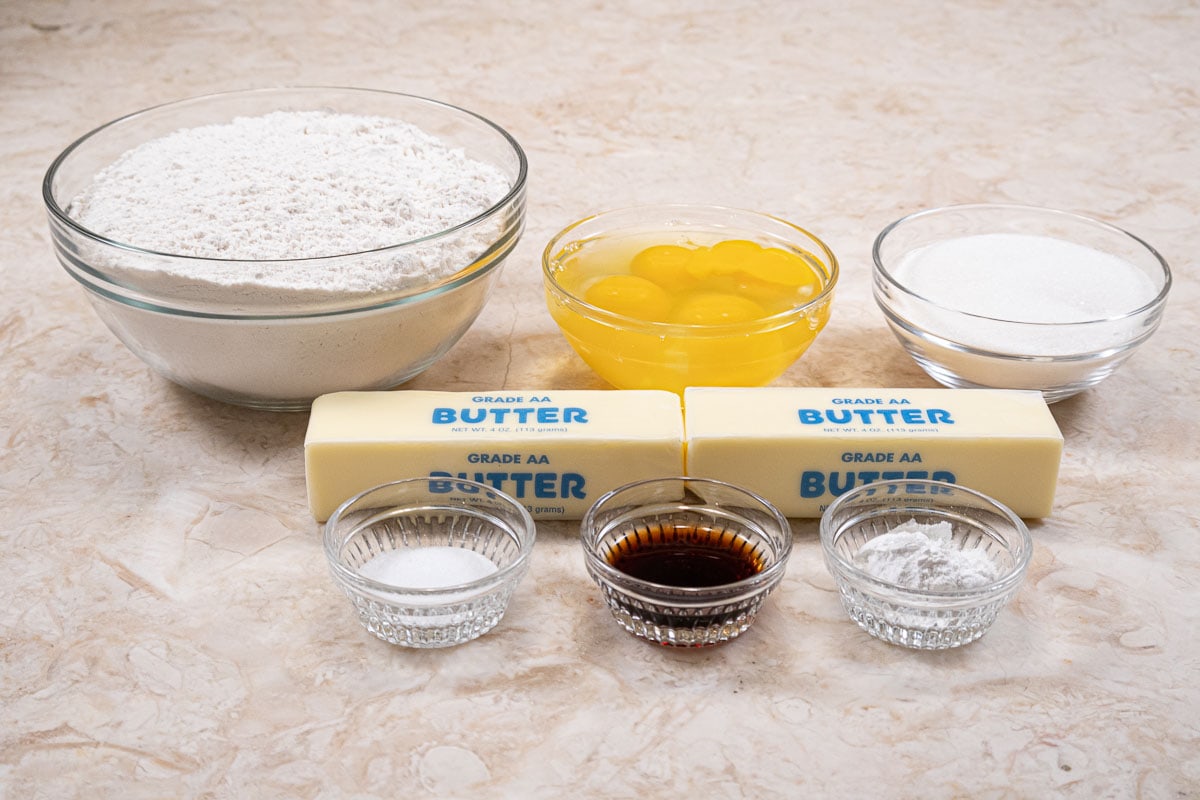
Ingredients read left to right.
FRONT ROW: Salt, vanilla, baking powder
MIDDLE ROW: Unsalted butter
BACK ROW: Flour, eggs, granulated sugar
Filling Ingredients

Ingredients read left to right.
FRONT ROW: Cinnamon, rum, lemon and orange zest
MIDDLE ROW: Walnuts, honey, almonds
BACK ROW: Dried Mission figs, dates and raisins
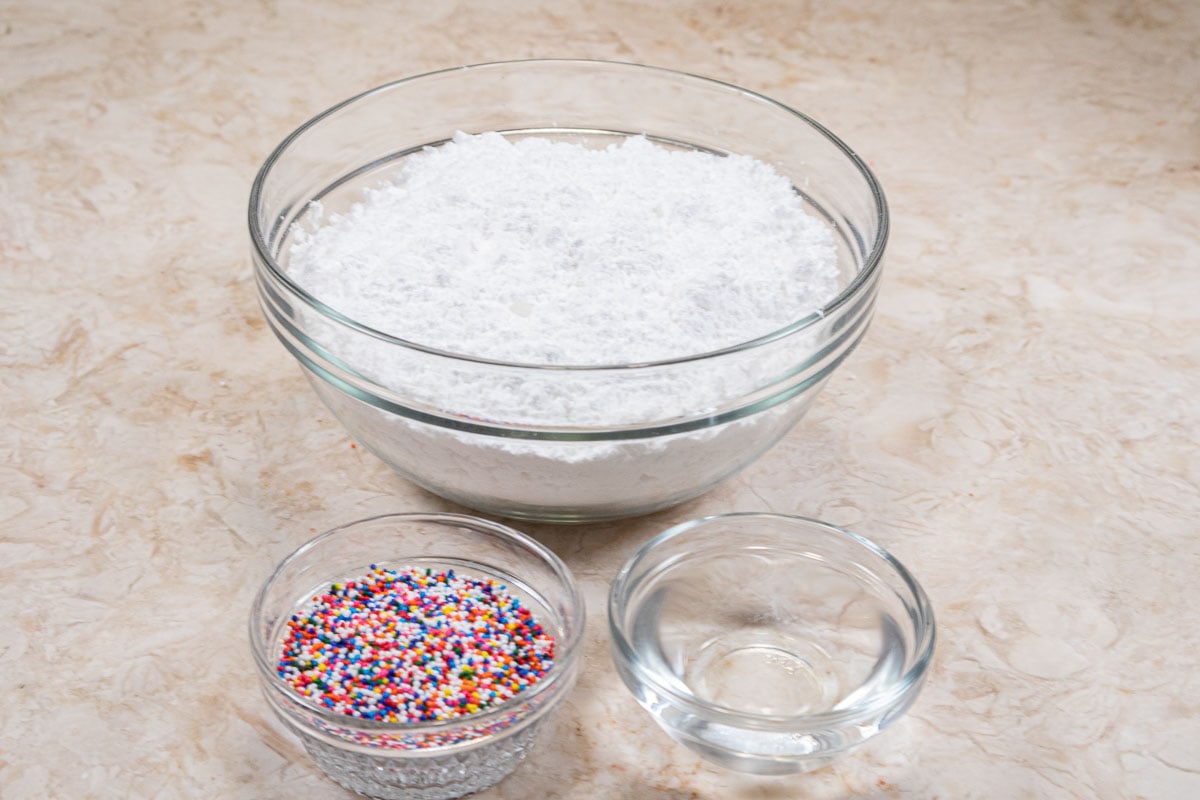
FRONT ROW: Nonpareils, water
BACK ROW: Powdered Sugar
I use Korintje Cinnamon but other cinnamons can be substituted.
Dark rum, such as Meyer's Dark Rum imparts the most taste.
Both the walnuts and almonds are toasted to bring out the most flavor.
There are varying degrees of drying when it comes to the Mission Figs. Mission figs are generally smaller and a dark purple, almost black when fresh. The ones I use are moist. They will yield in the bag when squeezed. I have seen some that are really dry. Those should be reconstituted in boiling water for several minutes until they are plumped up.
The raisins should be soaked in the hottest tap water while the rest of the ingredients are gathered. Alternatively, they can be added to the water for 5 to 8 minutes with the figs if they are being reconstituted. When they are ready to use the raisins, squeeze all of the water from them.
While I like Medjool Dates, others can be substituted if these can't be found.
The nonpareils can be found in most grocery stores.
Be sure to see the recipe card below for the exact ingredients & instructions.
Step by Step Instructions
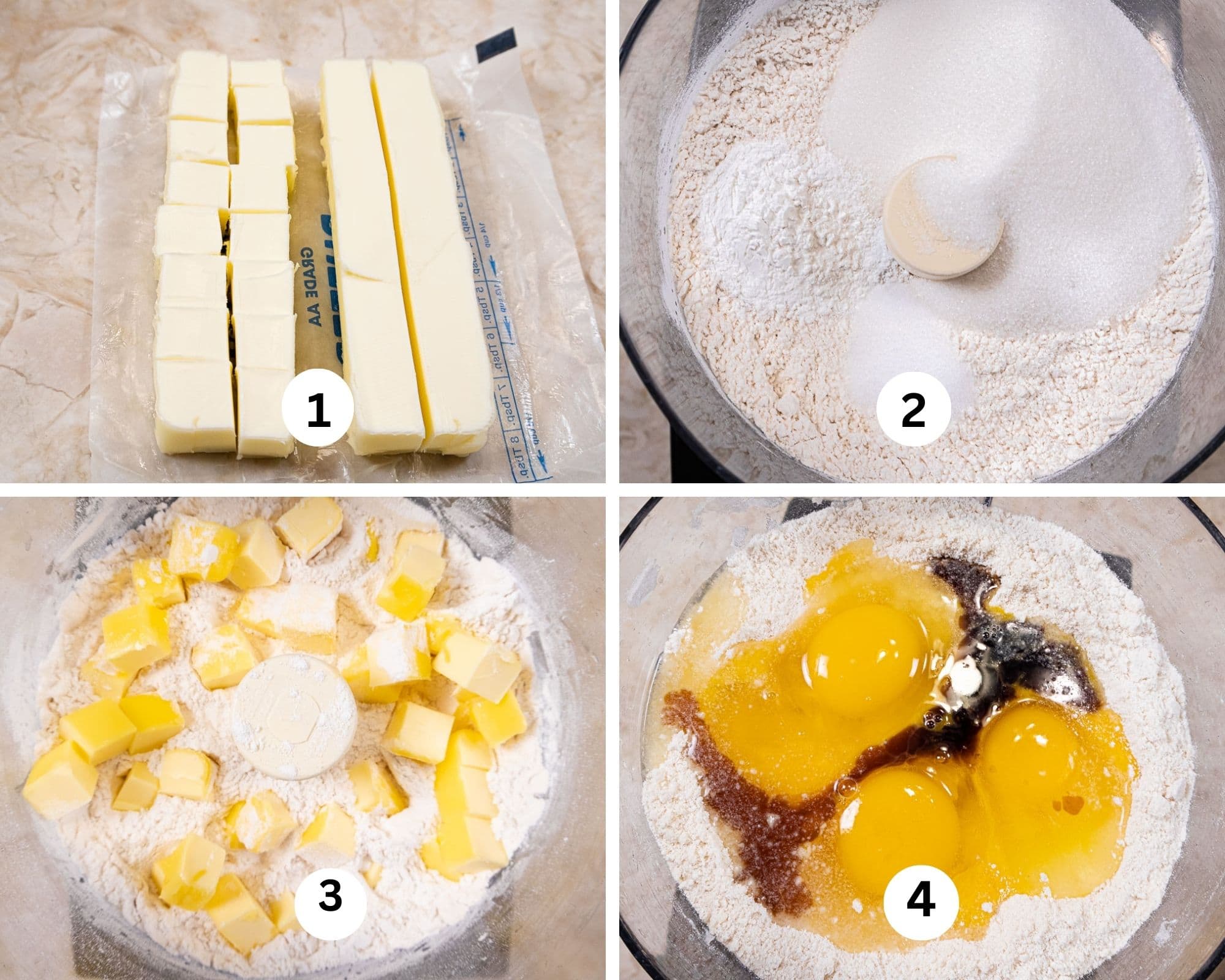
Step 1. Cut the butter into small pieces. The easiest way is to cut a stick vertically, then horizontally 8 down. Keep the dough refrigerated while prepping the rest of the recipe. Step 2. Place the dry ingredients into the processor bowl. Pulse several times to mix. Step 3. Place the butter over the dry ingredients and process to cut in until the butter is indistinguishable. Step 4. Add the eggs and vanilla.
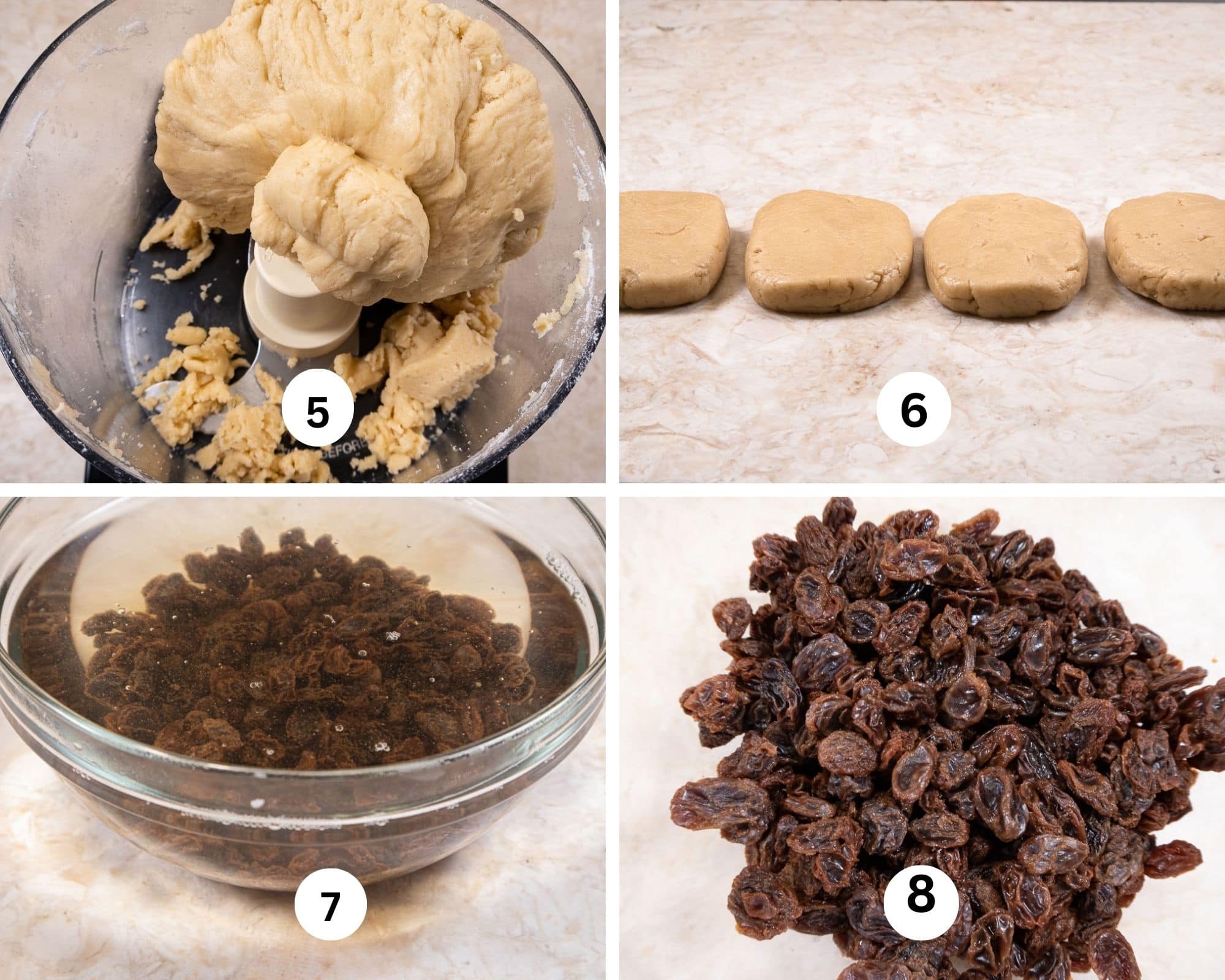
Step 5. Process the ingredients until the mostly form a ball. Remove to a work area and knead a few times to bring together. Step 6. Divide into four pieces and shape into rectangles. Wrap in plastic wrap and refrigerate for several hours or overnight. Step 7. Soak the raisins in really hot water. Step 8. Squeeze the water from them when ready to use.
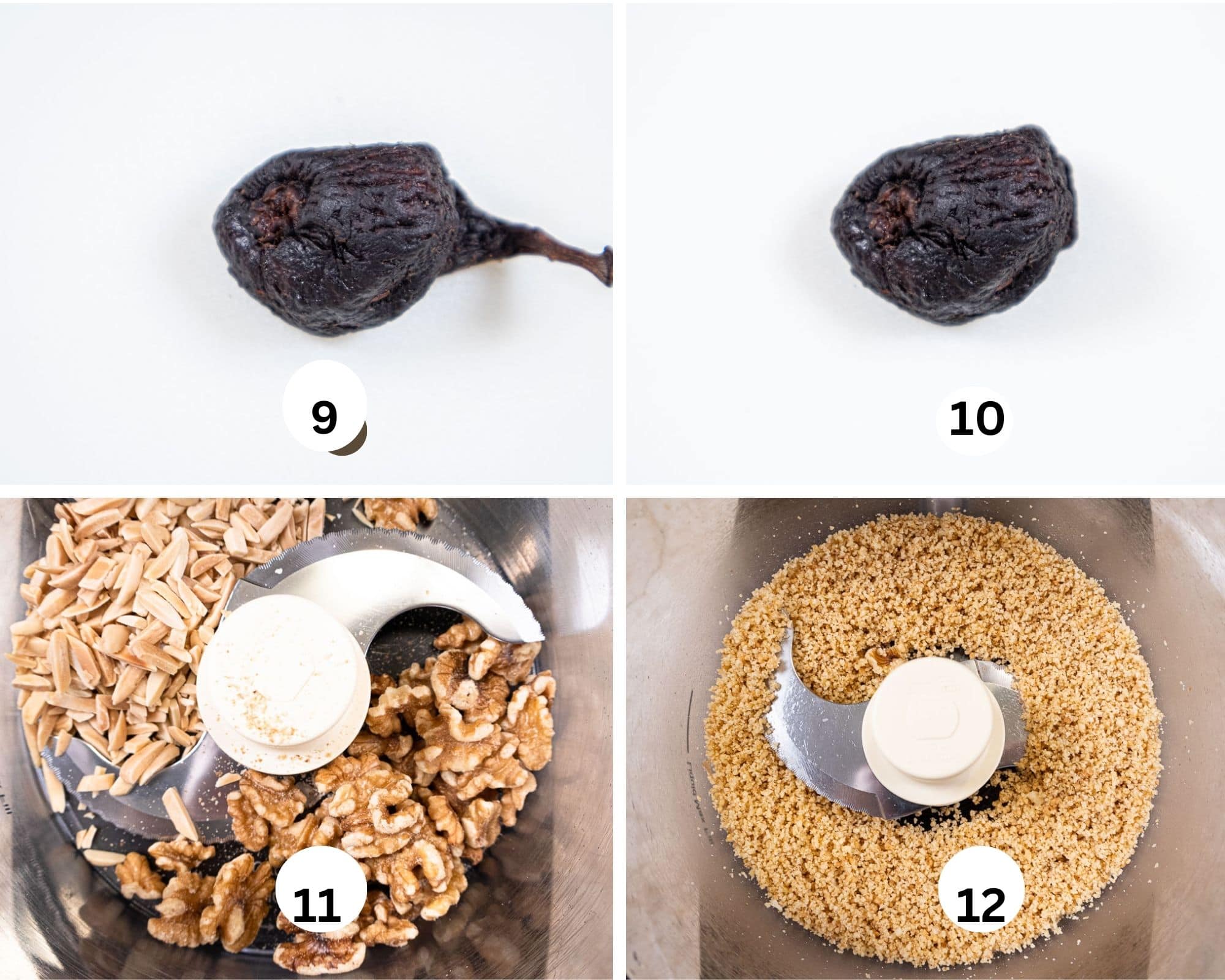
Step 9. Figs come with the stems on generally. Step 10. Cut them off before proceeding. Step 11. Place the toasted almonds and walnuts in the processor bowl. There is no need to clean it from the dough made. Just wipe it out. Step 12. Process them until they are very finely cut. However, don't make a paste of them.
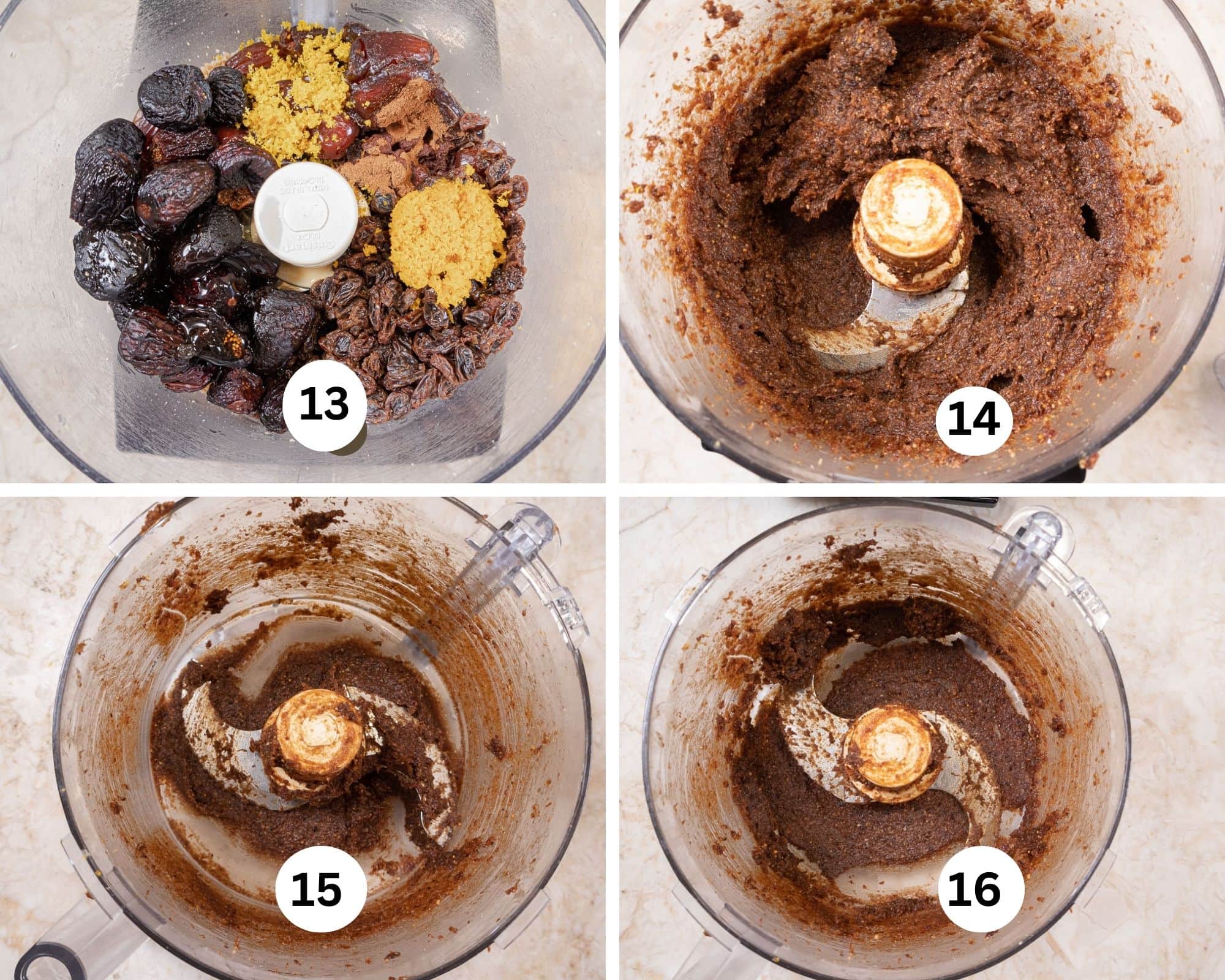
Step 13. Place all of the ingredients (with the squeezed out raisins) in the bowl of the processor with the nuts. Step 14. Process the ingredients until them a paste. Add water, starting with a tablespoon, to the mixture to obtain a spreadable consistency. Continue adding water as necessary. Step 15. It is difficult to remove all of the contents of the processor since it is on and under the blade. Step 16. For a really easy way to do this, put the top back on the processor and pulse it or 5 times. The filling will be slung off the blade by centrifugal force to the sides of the bowl. Simply remove the blade and scrape out the remainder. You can find more tips on using the food processor on my post Food Processor Tips When Baking. Divide the filling into fourths. Roll each piece into a 12" rope. See the instructions on the Recipe card for more detail. Freeze for several hours or overnight.
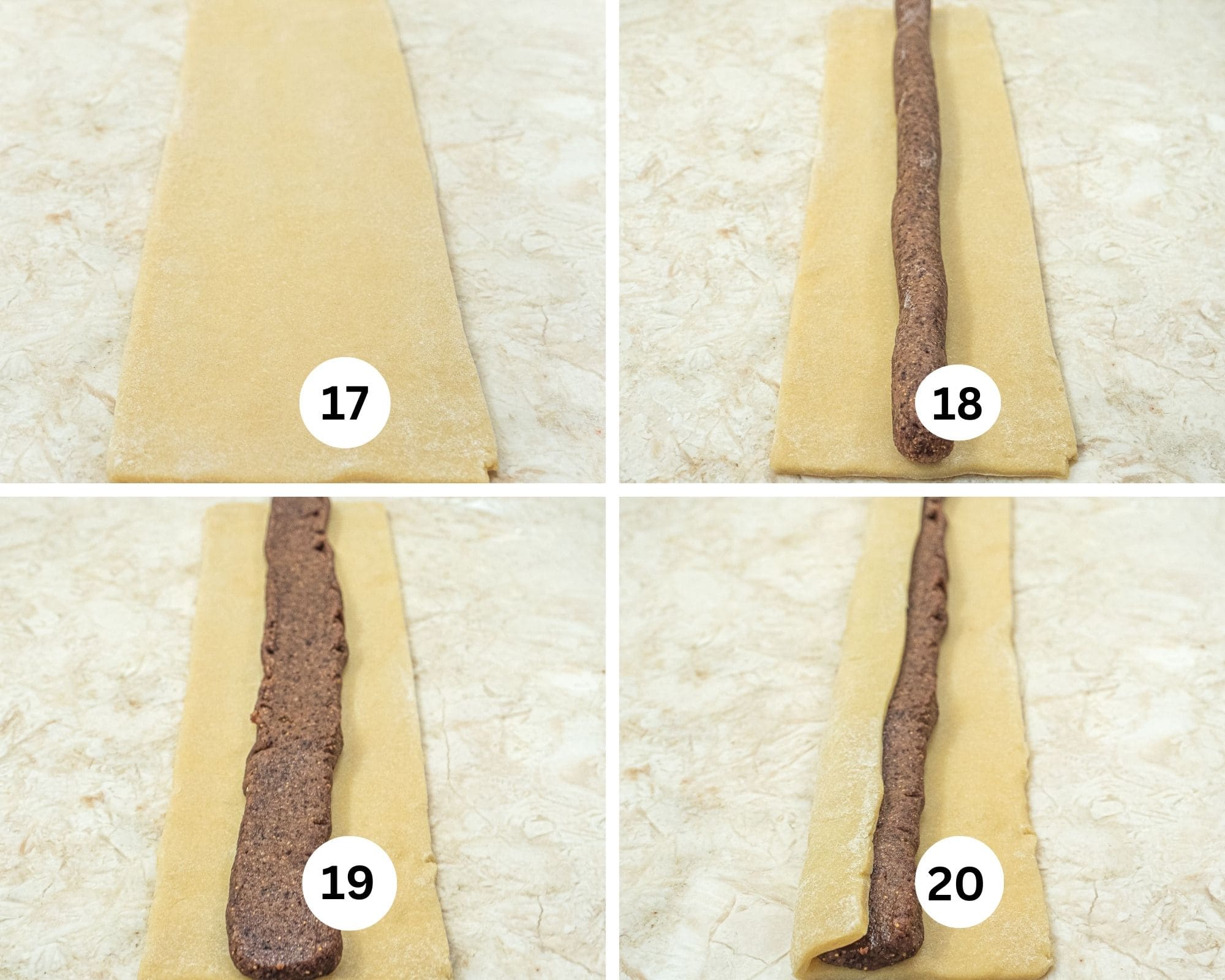
Step 17. Roll the dough out into a 12"x5" rectangle. Step 18. Place a filling rope down the center of the dough. Step 19. Flatten the rope so it is equal on both sides. Step 20. Fold the left side over the filling. It should cover a little over half of the filing.
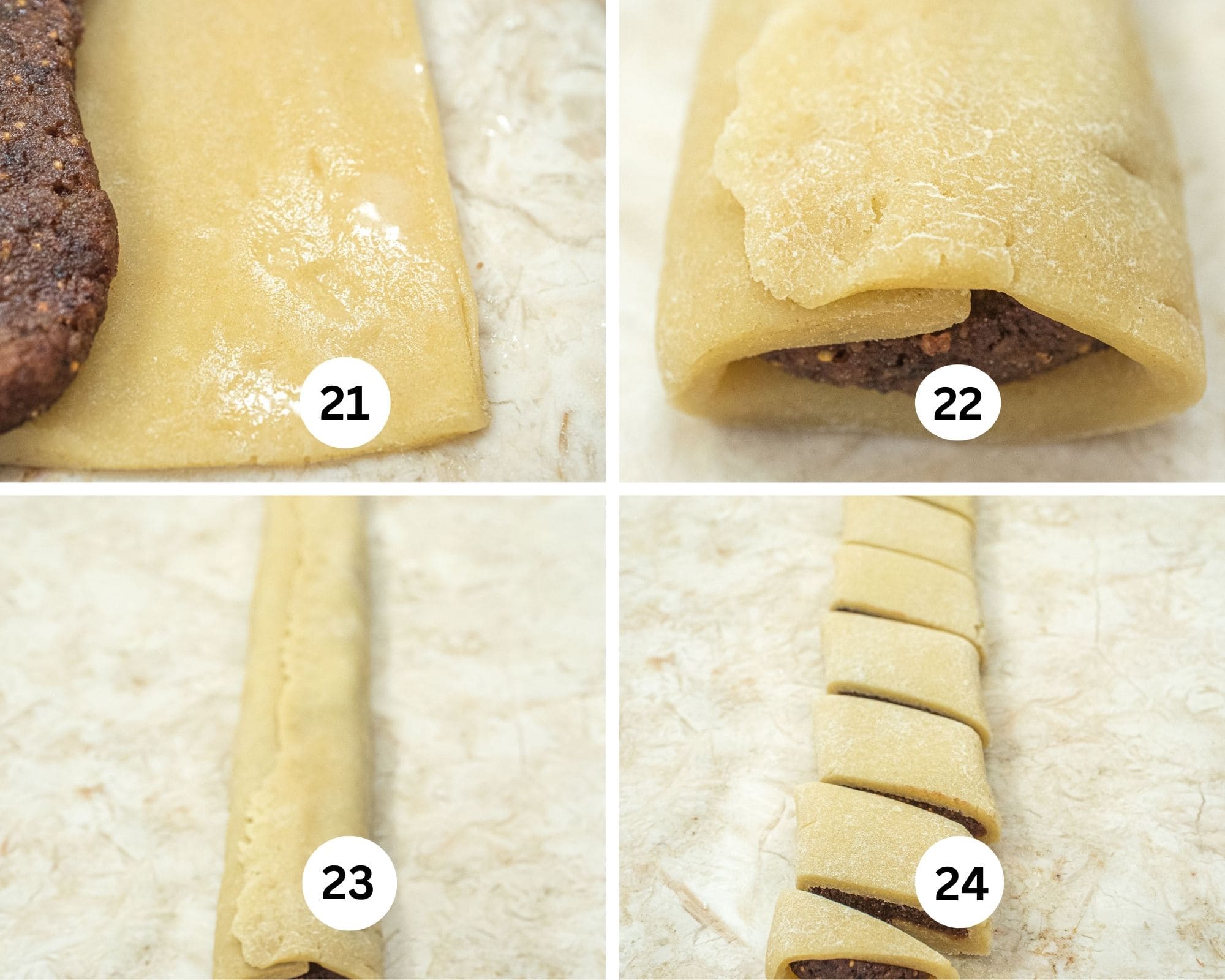
Step 21. Lightly wet the length of the edge of the dough. Step 22. Fold it over on top of the left side of the dough. Step 23. Seal the edge of the dough by pinching it together and flattening it out. Step 24. Turn the roll over and slice the cookies ¾ to 1" thick.
Recipe FAQs
They are considered a Christmas cookie and as such eaten during the holidays.
Figs, dates and raisins along with almonds, walnuts and citrus zest are wrapped in a pastry dough. After baking, the tops of the cookies are dipped in a powdered sugar icing which are sprinkled with nonpariels.
Cuccidati, which means "little bracelet" comes from Sicily
Expert Tips
- While the filling should be moist, it should not be loose or too wet.
- Toasting nuts brings out the most flavor and enhances any dish to which they are added.
- Don't skip the icing and nonpareils - they are traditional and add a lot to the cookie as these are not very sweet on their own.
- Both the dough and the filling can be made ahead.
- When finishing the cookies, place them on rimmed baking sheets after dipping in icing and sprinkling with nonpareils. This will keep them from rolling all over the kitchen.

If you love the Cuccidati or any other recipe on my website, please leave a 🌟 star rating in the recipe card and let me know how it went the in 📝 comments below. Thank you and I appreciate each of you being here!
Cuccidati - Italy's Finest Cookie
Ingredients
Pasta Frolla Dough
- 1 cup unsalted butter (225 grams)
- 4 cups all-purpose flour (560 grams)
- ¾ cup granulated sugar (150 grams)
- 2 teaspoons baking powder
- 1 teaspoon salt
- 4 large eggs
- 2 teaspoons vanilla extract
Filling
- ½ cup slivered almonds (60 grams)
- ½ cup walnuts (60 grams)
- ½ cup raisins (75 grams)
- 12 ounces Mission black figs (340 grams)
- ½ cup dates (100 grams)
- 3 tablespoons honey
- 2 tablespoons dark rum
- 1 teaspoon cinnamon
- 1 orange zest
- 1 lemon zest
Finishing and Decorating
- 3 cups powdered sugar (390 grams)
- 5 tablespoons water
- Multicolored Nonpariels as needed
Instructions
Pasta Frolla Dough
- Cut the cold butter in small pieces as shown in the step-by-step photos. Keep it refrigerated as you prep the rest of the ingredients. It is important that it be kept refrigerated until needed.
- Place the flour, sugar, baking powder and salt in the bowl of a processor. Pulse several times to mix.
- Place the butter over the dry ingredients and process until the butter is indistinguishable.
- Add the eggs and vanilla and process until the dough forms a ball.
- Remove from the processor. Divide it into 4 pieces about 285 grams each. Shape each piece into a rectangle about 3 ½ x 4 ½ inches. Wrap each piece in plastic wrap and refrigerate several hours or, preferably overnight. The dough can be held in the refrigerator for several days or frozen, well wrapped for a couple of months. Thaw in the refrigerator overnight to use.
Filling
- I used moist figs and raisins but if yours are really dry, place the figs in a small pan. Cover with hot water. Simmer for 5 to 10 minutes until plumped.
- Toast the almonds and walnuts at 350°F for about 7 minutes until lightly browned and fragrant. Cool completely before using.
- Cover the raisins with really hot tap water and let them plump while gathering the rest of the ingredients.
- Without cleaning the processor bowl (just wipe it out with a paper towel) add the nuts. Process them until very fine but do not turn the into a paste.
- Squeeze the water from the raisins and figs if they were plumped. Add the remaining ingredients and process until a spreadable paste forms. If it is too thick to spread, add about a tablespoon of water at a time until it is spreadable. It will be sticky.
- Divide the filling into fourths (about 190 grams each). This measurement may vary depending up if and how much water was added.
- Roll each piece into a 12" log. This is sticky business but here are a few tips to make it easier. Keep your hands slightly wet. Re-wet them as necessary. Form the piece into a sausage shape and then, pinching and pulling to 12 inches. Roll it onto a piece of plastic wrap and roll up. While in the wrap, roll it several times to smooth it out. Freeze for several hours or overnight. They will never get rock hard but they will be easier to manage. They can be kept in the freezer, wrapped in for for several months. Use from the freezer.
Assembly - See the how to photos
- Preheat the oven to 400°F. Line several baking sheets with parchment paper. Set aside.
- Remove one piece of dough at a time from the refrigerator and roll between wax paper into a 12" x 5" wide rectangle. Square the sides, top and bottom. An easy way is to use a ruler and lightly tap the dough on each side to square it. Refrigerate it, keeping it on the wax paper while you roll out the other 3 pieces.
- Place one piece of dough on the work area. Remove the top piece of paper, but keep it on the bottom one. Mark the dough 1 ½" from each side, leaving 2" in the middle.
- Place one rope of filling in the center. Flatten and spread the rope to about 2" using yur fingers or a moist offset spatula.
- Fold the left side of the dough over the filling using the paper as an assist. Pull it tightly against the dough.
- Wet the edge of the right side of the dough slightly and, again using the paper, fold it over the edge of the left side.
- Pinch the seam to seal. Flatten the seam. Turn it over. Refrigerate while assembling the remaining dough and filling. If the last roll is soft after assembly refrigerate. The rolls can also be assembled and frozen, well wrapped for several months. Thaw in the refrigerator overnight before cutting and baking.
- Cut the cookies ¾" to 1" thick. place them on the prepared sheets 5 across and 4 down. Bake for 13 to 15 minutes until lightly browned. Cool on the paper.
Finishing and Decorating
- Combine the powdered sugar and water. Stir to combine. If it is too thick, add water by droplets. If too thin, add powdered sugar a bit at a time. Theicing should be very thick and stick to th e top of the cookie without running down the sides too much.
- Dip the top of the cookies into the icing and place it on parchment lined rimmed baking sheets. After dipping 5 ord 6 cookies, immediately sprinkle with the nonpareils. If you wait too long, the icing starts to dry and the nonpareils won't stick. The rimmed baking sheets keep the nonpareils from rolling all over the kitchen.
- Allow to dry completely before storing in an airtight container with paper between the layers. These will keep well for at least 10 days and ship well.
Notes
- Both the dough and the filling can be made ahead. The dough can be made several days ahead and refrigerated or frozen for a couple of months. The filling can be made 10 days ahead and refrigerated.
- The ratio of filling to dough is balanced for its incredible taste.
- Two steps in the processor and the filling is done. No cooking or intricate prep. Soak the raisins and trim the stems from the figs - that's it.
- The Cuccidati themselves last at least 10 days in an airtight container.
- While the filling should be moist, it should not be loose or too wet.
- Toasting nuts brings out the most flavor and enhances any dish to which they are added.
- Don't skip the icing and nonpareils - they are traditional and add a lot to the cookie as these are not very sweet on their own.
- Both the dough and the filling can be made ahead.
- When finishing the cookies, place them on rimmed baking sheets after dipping in icing and sprinkling with nonpareils. This will keep them from rolling all over the kitchen.
Nutrition
Sablé Breton
Sablé Breton, (sob-lee breh-tone) is a classic, very buttery cookie coming from the Bretagne region (Britanny) in the North-West of France. The region is famous for its indulgent use of butter, in particular salted butter.
The word Sablé is French for sand and refers to the butter being incorporated into the flour. It actually feels sandy after mixing. The cross hatch design on top is the traditional finish.
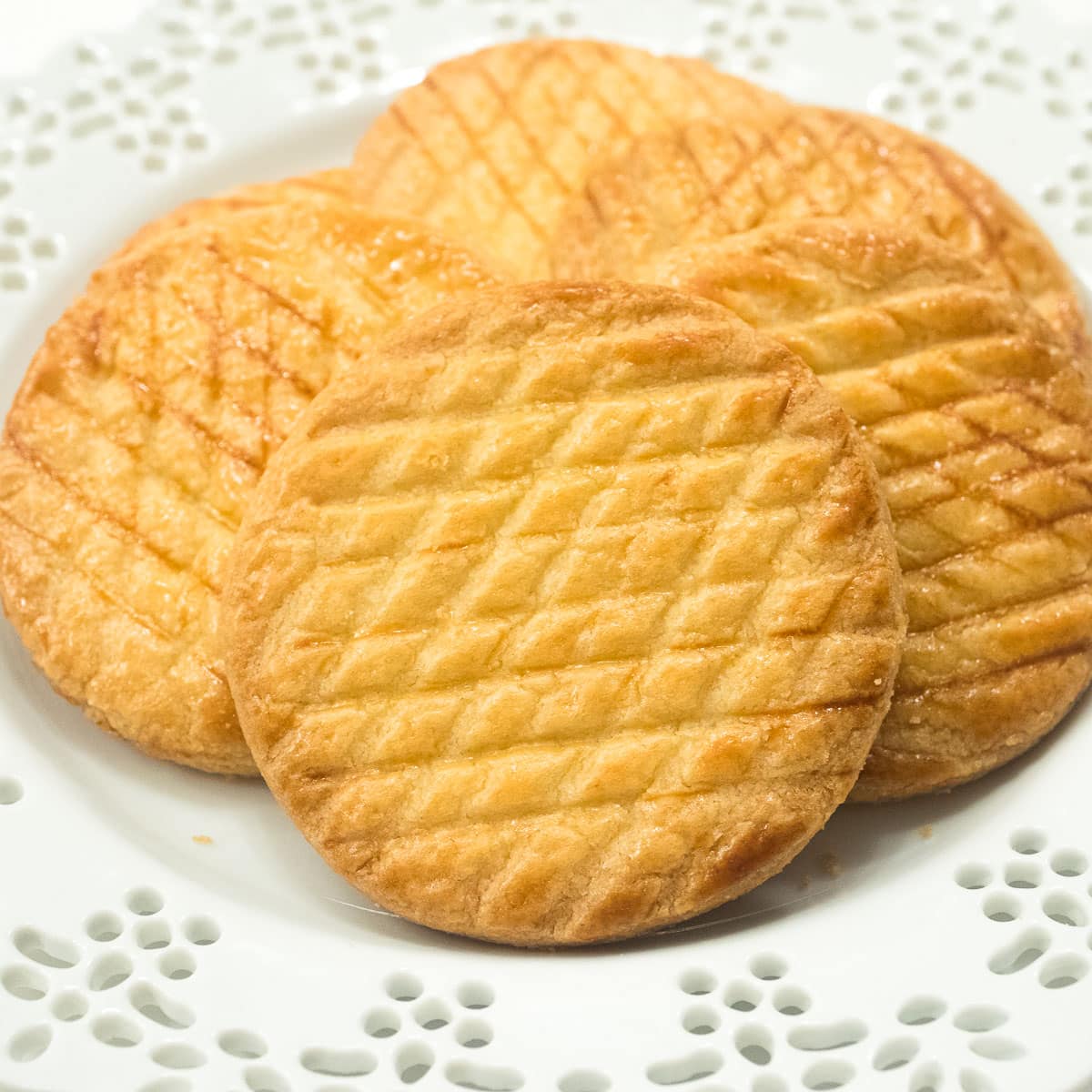
Don't mistake the simplicity of this cookie as just another butter cookie. The French make the best butter cookies, including Petit Beurre. Sablé Breton are another of their superb cookies that are in a class by themselves. There is another famous French dessert, Gateau Breton which uses a variation of this pastry.
Four ingredients make up the cookie with salted butter being the most important one and Brittany has the best sea salt as well as butter. "The history of salt works on the peninsula stretches back 2,700 years; Brittany’s “white gold” was a sought-after luxury product as early as Roman times" according to the Taste of France magazine.
These make a perfect holiday gift, especially since they can be made ahead and baked when needed.
For more information on baking great cookies, see my post Cookie Tips for the Best Cookies.
[feast_advanced_jump_to]Why you want to make this cookie
- They are really easy to make with just 4 ingredients. How can you go wrong?
- These cookies can be made well in advance. Simply cut out the cookies, freeze, wrap and store in the freezer for up to 3 months.
- Sablé Breton are like no other butter cookie you'll ever eat. They are absolutely addictive. I can say that from personal experience.
- They're perfect with coffee or tea, as a snack or just because they are so good.
- They make an exquisite gift for someone special.
Variations
- Add a lemon or orange rind to the dough.
- A chocolate version can be made by removing ¼ cup of flour and substituting ¼ cup Dutch cocoa.
- Add ½ cup of any nut and process it along with the flour. Increase the egg yolks to 3.
- While these are usually served as single cookies, they can be sandwiched with jam, nutella, or buttercream.
- Any size cutter can be used.
Recipe Ingredients
Sablé Breton Dough
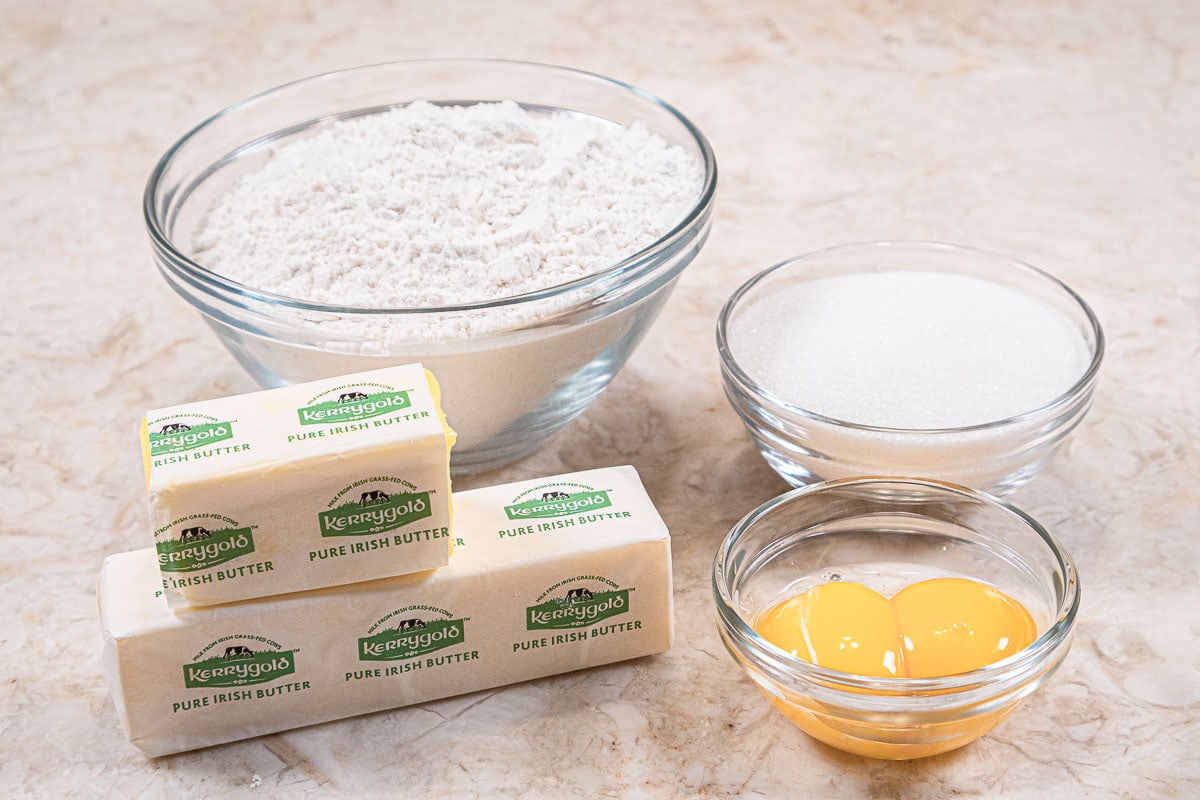
FRONT ROW: European Salted Butter, egg yolks
BACK ROW: All-purpose flour, granulated sugar
Egg Wash
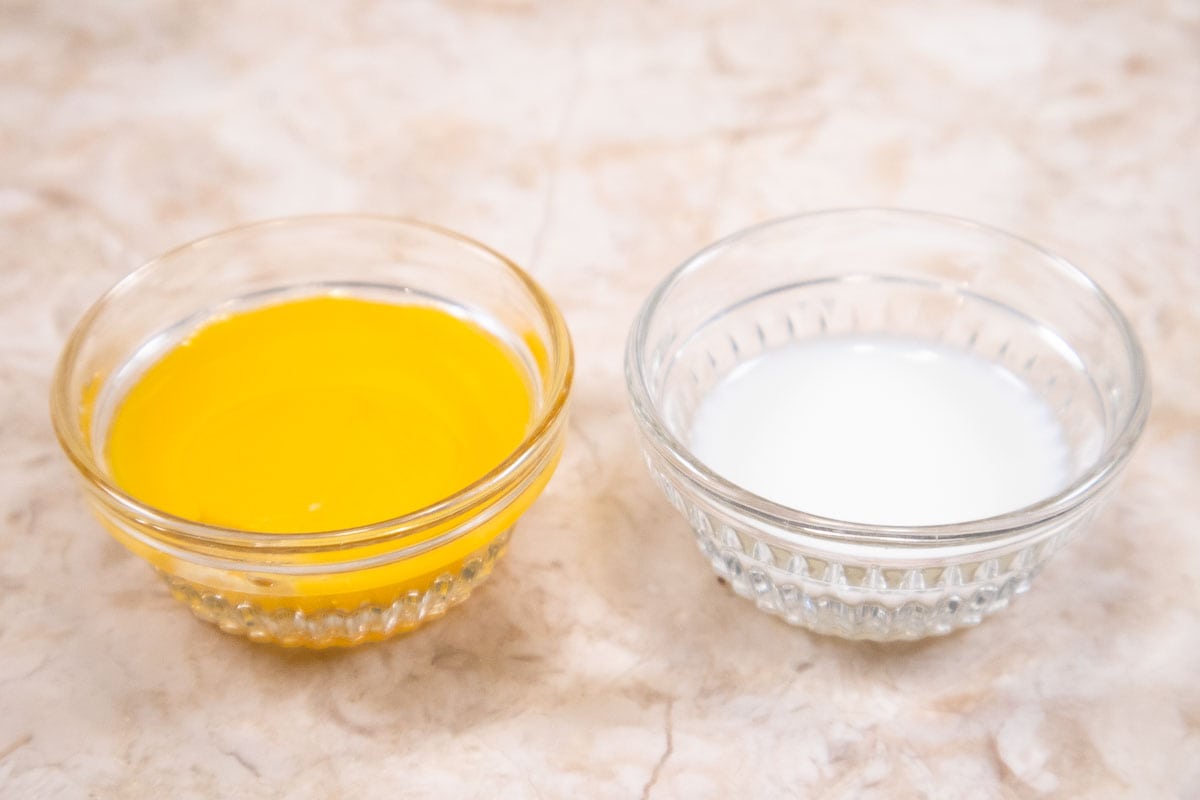
Egg Yolk, Milk
The butter I used is Kerrygold Salted Butter. It is a European butter that has a higher fat content (82%) which gives a richer taste and color to the cookie. However, it softens faster when rolling out but a quick trip to the refrigerator or freezer firms it up.
Granulated sugar is used for the sandy texture that is indicative of this cookie. I have seen recipes with powdered sugar but that defeats the sandiness of the cookies.
The egg yolks enrich the cookie and add color. They are essential to the texture.
The egg yolk and milk glaze adds shine and a pleasant glow to the cookie as well as being traditional.
Be sure to see the recipe card below for the exact ingredients & instructions.
Step by Step Instructions

Step 1. Kerrygold is just one of many European butters either imported or made in America. The bold package holds salted butter while the silver package is for unsalted.Step 2. Cut the butter into small pieces. The easiest way is to cut is legthnwise and crosswise into about 8 cuts. The butter has to be very cold before continuing. Step 3. Add the dry ingredients to the processor and place the cold butter over them. Step 4. Process until the butter is indistinguishable.

Step 5. Add the sugar to the processor. Step 6. Process to incorporate. Step 7. Add the egg yolks. Step 8. Process until the dough comes together. It does not have to form a ball. Pour the dough onto your work surface.

Step 9. Gather the dough together and form into a flat round. Step 10. Divide the dough in half to make it easier to roll out. Step 11. If the dough is really soft, chill until firmed up somewhat. Do not let it get hard. Roll one piece between wax paper. There is a great tutorial regarding rolling dough between wax paper and why I prefer this medium over others. You will find it in my post Cut Out Cookies Using the Wax PaperTechnique. Step 12. After chilling or freezing, cut the cookie out in the desired size. Leave them on the bottom sheet of wax paper and freeze them.
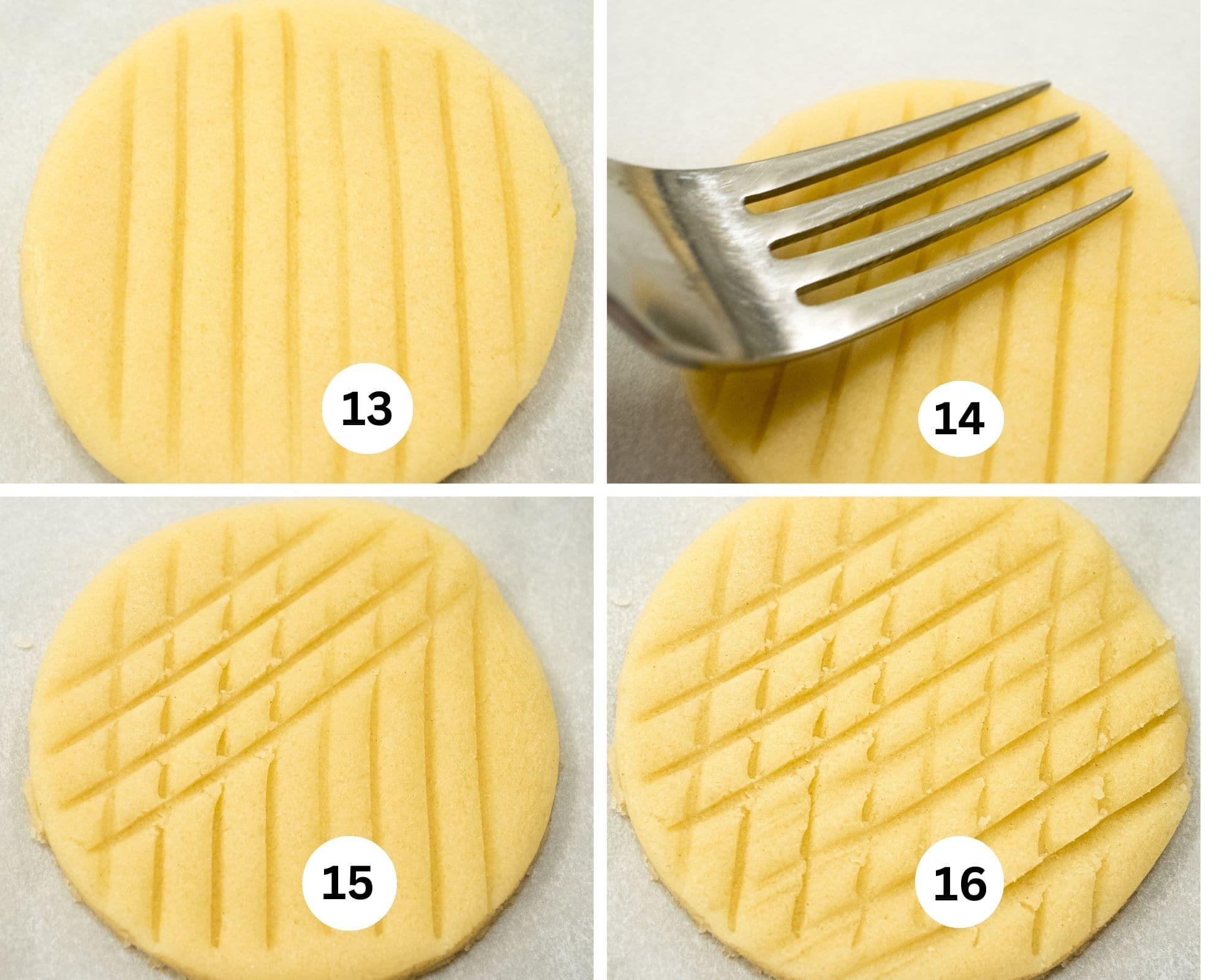
Step 13. Make vertical lines from the top to bottom of the cookie with the tines of a fork. Step 14. Draw diagonal lines across the vertical ones. Step 15. After the first set of lines is drawn, line the fork up leaving the appropriate amount of space and continue across the cookie. Step 16. The cookie should be chilled at this point. When ready to bake, combine the egg yolk and milk and brush each cookie.
Alternative Directions with a Mixer
The dough may be made in a mixer with a few changes. All the ingredients remain the same. However, the butter should be softened instead of refrigerated. Beat the sugar and butter until combined. Add the egg yolks, mixing in well. Add the flour, mixing on low. Shape into a flat round and chill if too soft to roll out. Continue as above, rolling between wax paper.
Recipe FAQ's
The word sablé means sandy in French. The word breton refers to Brittany, France's northwesternmost region. Breton shortbread literally means Sandy Cookies from Brittany.
The butter used is salted unlike most butter cookies that call for unsalted butter. The salt is an important ingredient as well as the butter. For authenticity the butter should be of the European type which has an 82% butterfat content vs. American type butters which are mandated to be at least 80% butterfat. The higher butterfat content makes the cookies even more buttery.
The cookies have a crisp and crumbly texture with an over the top buttery taste and a melt in your mouth quality that will have you reaching for more than one.
Expert Tips
- The butter should be refrigerator cold when adding it to the dry ingredients.
- To cut out the cookies, chill the dough until firm. Do not freeze. Roll between wax paper. Cut the cookies into the desired size.
- Without removing the cookies from the surrounding dough, freeze the whole thing keeping it on the bottom paper.
- Simply pop the cookies out. Bring the scraps together when thawed, re-roll and continue to make more cookies.
- The cross hatch design and brushing the cookies with the egg wash gives them the traditional Sablé Breton finish.
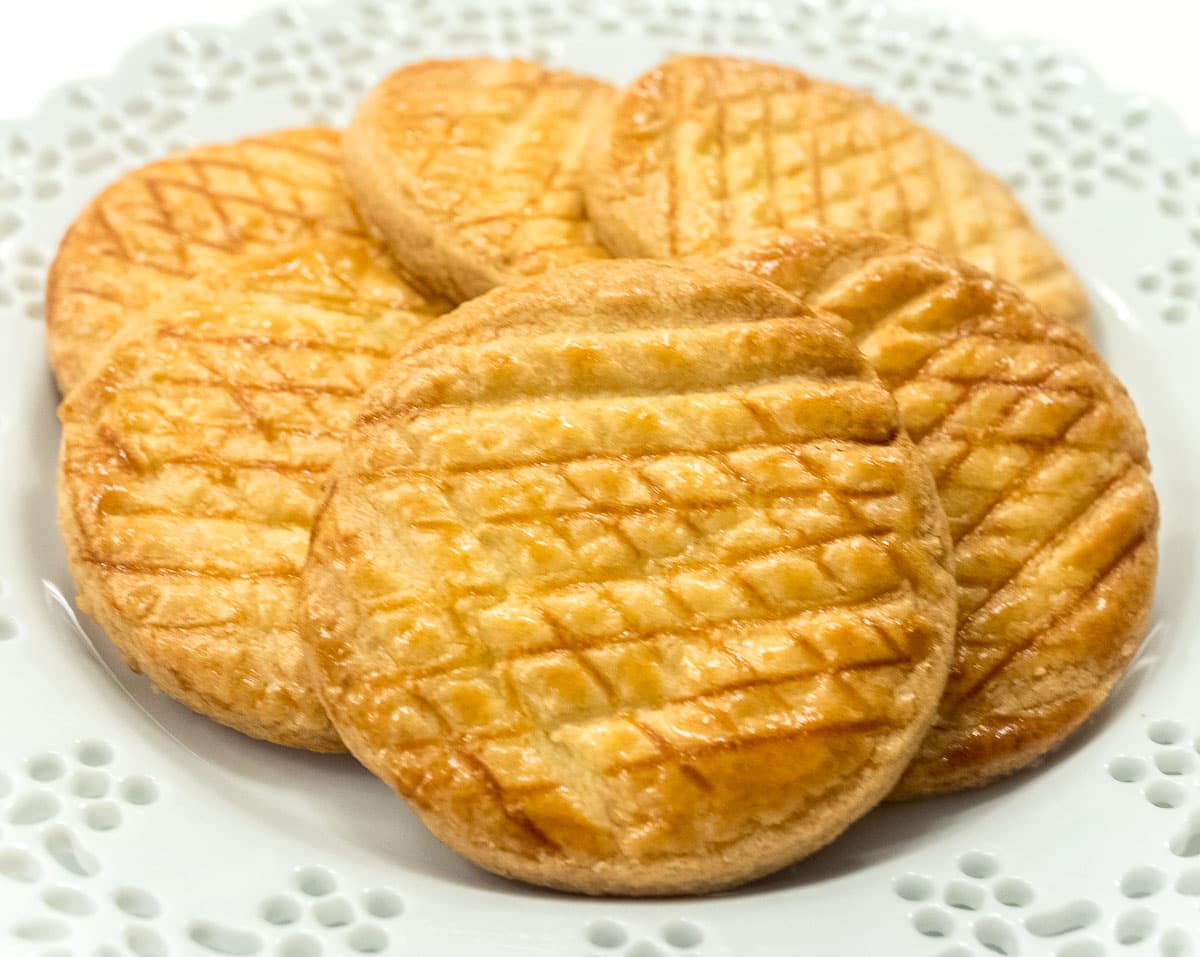
If you love these Sablé Breton or any other recipe on my website, please leave a 🌟 star rating in the recipe card and let me know how it went the in 📝 comments below. Thank you, I appreciate you being here.
Sablé Breton
Ingredients
Sablé Breton
- ¾ cup European style salted butter, cold (170 grams)
- 2 cups all-purpose flour (280 grams)
- ⅔ cup granulated sugar (130 grams)
- 2 egg yolks
Egg Glaze
- 1 egg yolk
- 1 teaspoon milk
Instructions
- If for any reason you cannot find or use European style butter, add ⅓ teaspoon salt to the flour and continue.
- Preheat the oven to 350°F. Line several baking sheets with parchment paper. Set aside.
- Cut the butter into small pieces as shown in the pictures above. Put it back in the refrigerator while prepping the remaining ingredients. It is important for it to be cold.
- Place the flour in a food processor. Pulse several times.
- Add the cold butter pieces and process until the butter is indistingushable.
- Add the sugar and process briefly to mix.
- Add the 2 egg yolks and process until the dough comes together. It may not form a ball and that's fine. Pour out onto a work surface and push it together. Form it into a flat round. The dough should be fine to continue but if it is too soft, refrigerate briefly to firm up. Do not let it get too hard or it will be difficut to roll.
- Divide the dough in half (about 300 grams each piece). Place one piece between two pieces of wax paper and roll to about ¼". For the cleanest edges, refrigerate or freeze briefly. Cut out rounds of the desired size. The cookies shown are 2 ½ inches. Do not remove the dough around the cookies.
- Place the cookies, still between the paper on a baking sheet and refrigerate or freeze until hard.
- Remove the top piece of paper and pop the cookies out. Place on the prepared baking sheets. With the back tines of a fork, mark the cookies vertically. Placing the fork on a diagonal, mark the cookies again, making small diamonds. (See photos).
- Combine the 1 egg yolk and milk. Brush the cookies. Bake for about 15 minutes until golden brown and set. Cool.
- The cookies can be stored in an airtight container for a week or 10 days.
- Alternatively, prepare the cookies, through marking them and freeze them unbaked. To bake, glaze them with the egg glaze and bake, allowing a few additional minutes in the oven.
To Make in a Mixer
- Soften the butter and place in the mixing bowl with the sugar. Beat until combined.
- Mix in the eggs.
- Add the flour and beat on low to bring everything together.
- Proceed as above, chilling the dough slightly if it is too soft to roll.
Notes
Nutrition
Pryaniki - Russian Honey Spice Cookies
Pryaniki (pre-ah-nee-kee) are honey and spice Russian cookies traditionally served at teas and holidays. These cookies are more cake-like than their German cousins, Pfeffernusse and are finished with a white or chocolate glaze.
To make your life easier, these cookies can be made, shaped and frozen for up to a month or so before baking and glazing.
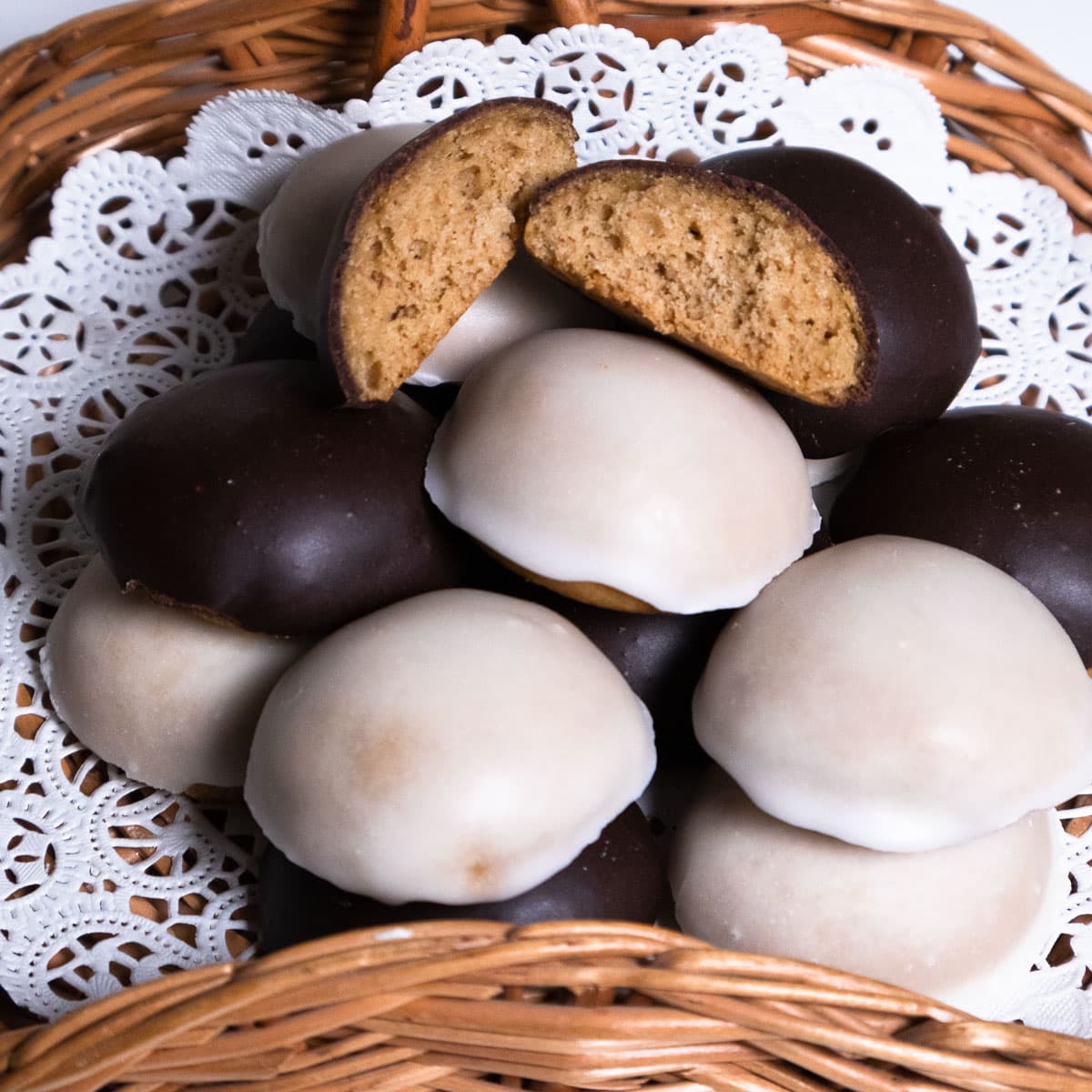
Redolent of honey and spices, these are an easily made cookie that only gets better with age. While the traditional finish is a white glaze, chocolate and spices have an affinity for each other that can't be beat. My Chocolate Spice Olive Oil Biscotti and Honey Diamonds are perfect examples of this.
Russian Spice cookies, also called honey bread, have been made since the 9th century. When trade began with the Middle East and India in the 12th and 13th centuries spices, many spices were added. As time went on, it seems every family had their special recipe, some highly secreted.
Typically, the cookies were graced with cloves, ginger, citrus fruits, pepper, nutmeg, mint, anise, ginger, and many other flavorings, giving them the name pryanosti or well-spiced. Many of those, along with the Russians love for honey, make up this cookie.
[feast_advanced_jump_to]Why You'll Want to Make Pryaniki
- Although this doesn't have just 5 ingredients, it is so simple to make. Basically it only requires, melting a few ingredients, adding all the ingredients to the mixing bowl, mixing and chilling. Which makes this ideal for a make ahead cookie.
- But there is more as the saying goes. These cookies need to be aged before finishing. So they can be made, stored and a week later glazed, after which they can be stored for weeks in an airtight container.
- The texture of the cookies makes them easier to eat than say Pfeffernusse or Springerle.
- These are so packed with flavor they taste incredible. Anyone who enjoys a spice cookie is going to ask for the recipe.
Recipe Ingredients
For the Cookies

Ingredients read left to right.
FIRST ROW: Ginger, cloves, cardamom, nutmeg, black pepper
SECOND ROW: Cinnamon, baking soda, coffee, baking powder, anise extract
THIRD ROW: Water, white vinegar, butter, egg
FOURTH ROW: All-purpose flour, sugar, honey
Glaze
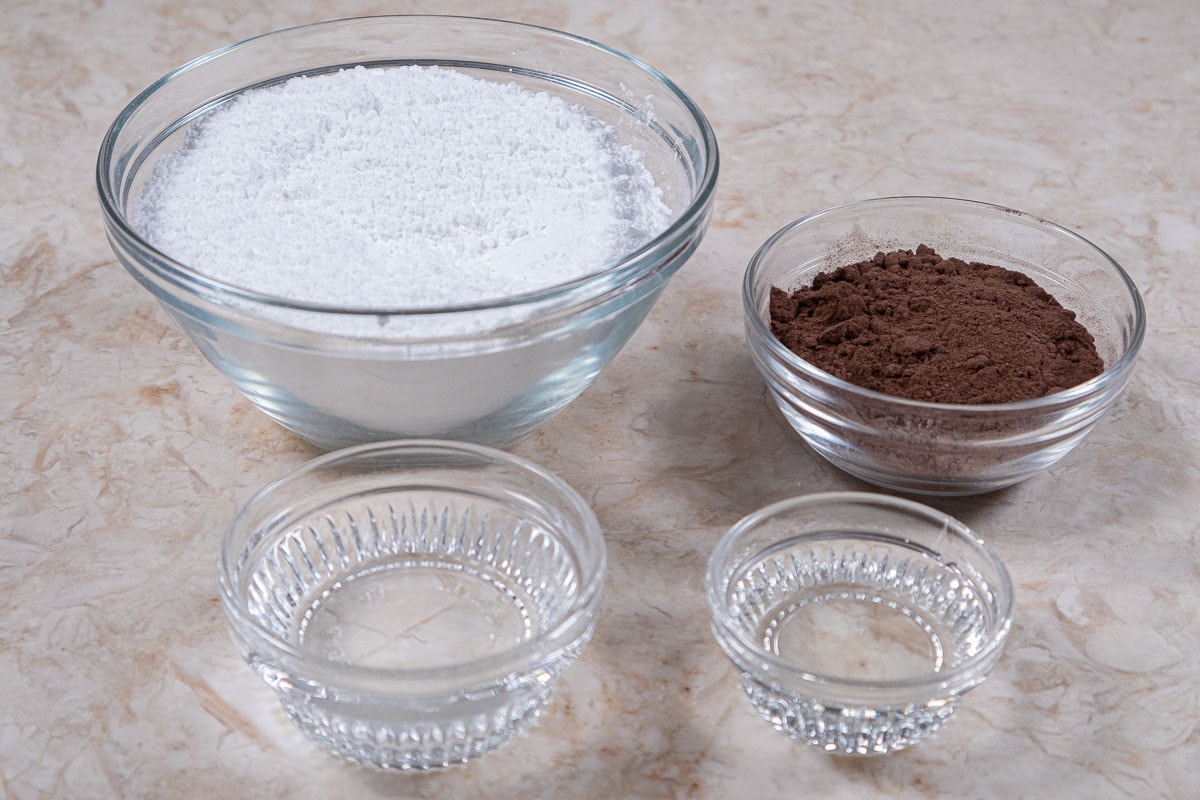
Left to Right:
FRONT ROW: Water, corn syrup
BACK ROW: Powdered sugar, cocoa
Cardamom is an expensive ingredient. Penzy's has it in tiny amounts. Keep it in the freezer when not using. I keep all of my seeds and expensive spices in the freezer where they will last forever.
Anise extract is a popular European flavoring. It is easily found in the spice department of most grocery stores.
The baking soda dissolved in vinegar is key to this cookie so don't skip it. There will be no taste of it in the cookies. By dissolving the baking soda in the vinegar, it produces carbon dioxide gas (C02), which is evident because of the formation of bubbles in the foaming mixture.
These allow for soft and airy baked goods such as cookies, pancakes, and cakes. Baking soda also increases pH levels while reducing gluten. This creates less chewy and more tender baked goods.
Corn syrup is used in the glaze to add sheen and help prevent cracking of the glaze. Corn syrup sold to consumers is not the high glucose variety used in commercial products.
Be sure to see the recipe card below for the full ingredients and instructions.
Step by Step Instructions

Step 1. Dissolve the coffee in the water in a small saucepan. Step 2. Add the butter, honey and sugar. Step 3. Heat to melt the butter and dissolve the sugar. Step 4. Whisk in the anise extract and all of the spices. Cool slightly. Place in the bowl of a mixer.

Step 6. Add the baking soda to the vinegar, mixing completely. It will bubble up. Step 6. Add the egg, the baking soda mixture and baking powder. Step 7. Pour all of the flour on top of the liquid. Step 8. Mix on low to medium low, scraping as necessary. The mixture will be a batter more than a dough. Refrigerate the batter overnight.
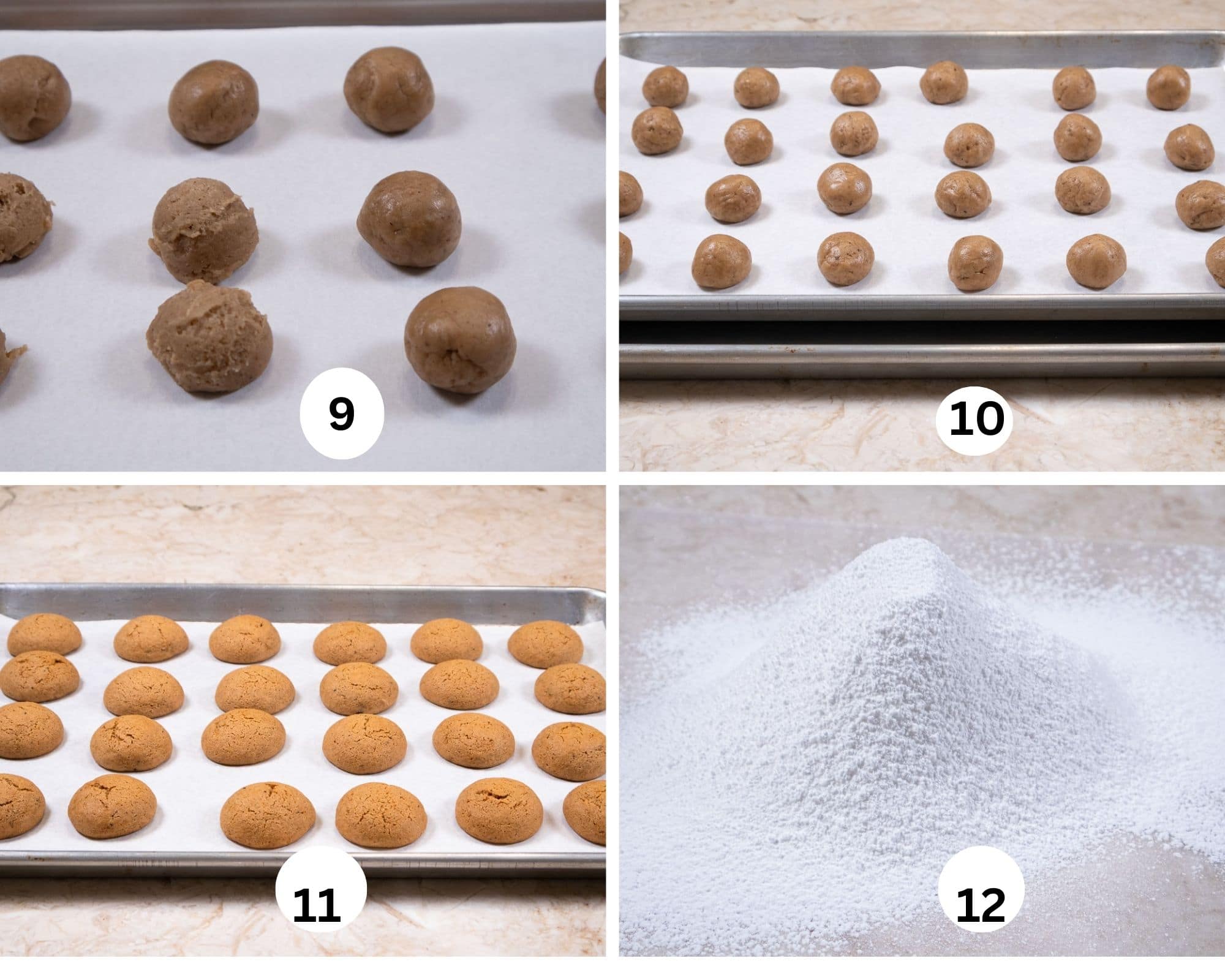
Step 9. The batter must be cold to scoop. Using a #70 disher/scooper or a tablespoon measure, scoop the cookies and line them up 4 across and 6 down on a parchment lined sheet pan. Roll them into smooth balls. Step 10. Double pan the Pryaniki before going into the oven. One pan is simply put on top of another pan. Step 11. Bake the cookies as called for. Step 12. Sift the powdered sugar for the glaze.
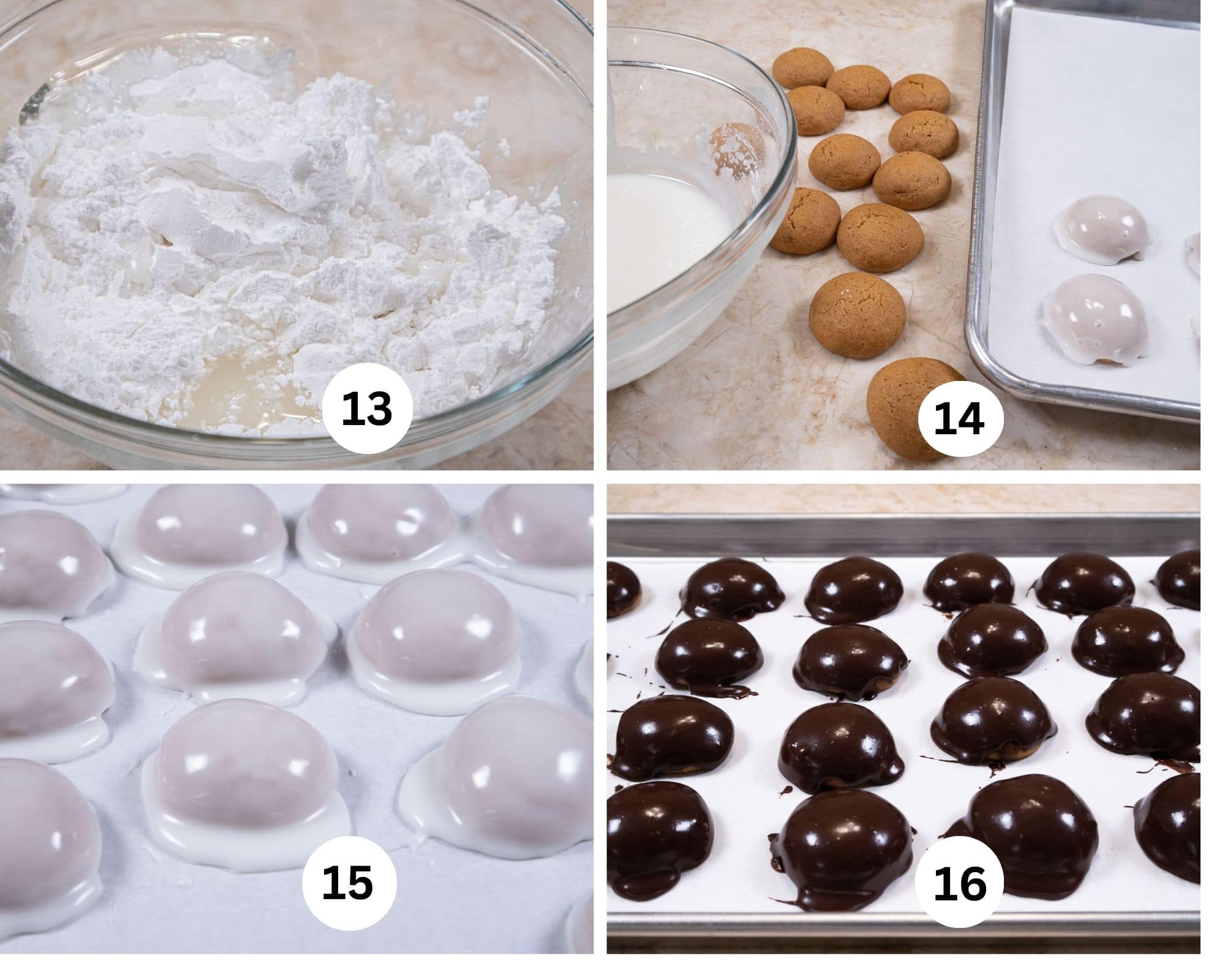
Step 13. Place all of the glaze ingredients in a bowl and stir until completely smooth. Do not use a whisk as it can make a lot of air bubbles that will show on the cookies. Step 14. Dip a cookie, top down, into the glaze. Dip up to the very edge. Place on a parchment lined tray to dry. Step 15. A tray of cookies with the glaze puddled. Step 16. A tray of chocolate glazed cookie. Let the glaze dry completely. This may take up to 48 hours. When completely dry, simply break off the puddled glaze.
Recipe FAQs
Pryaniki is the name of the Russian gingerbread and derives from the word 'pryany' which means 'spicy'. The first pryanik (singular cookie) appeared in Russia around the IX century and was called "honey bread". It was based on rye flour mixed with honey and berry juice.
They used to be served mostly at holidays such as Christmas and Easter, Weddings and Baptisms. Now they are commercially made and can be bought anytime.
Not at all. They are basically mixed in two steps and after chilling, shaped into balls and baked. The glazing takes a bit of time but is not at all difficult.
If you enjoy these, try out these Hello Dolly Cookies!
Expert Tips
- Sift the powdered sugar or the powdered sugar and cocoa together. Otherwise tiny bumps may show on the finished glazed cookies.
- Be sure to stir the glaze ingredients together. A whisk can incorporate air which can appear on the finished cookie.
- Plan ahead so you allow enough time to let the glaze dry completely.
- The cookies can be dipped in the glaze or they can be placed on a cooling rack and the glaze poured or spooned over them.
- After the cookies are finished, they can be stored in an airtight container for 7 to 10 days.
- These cookies mail well.
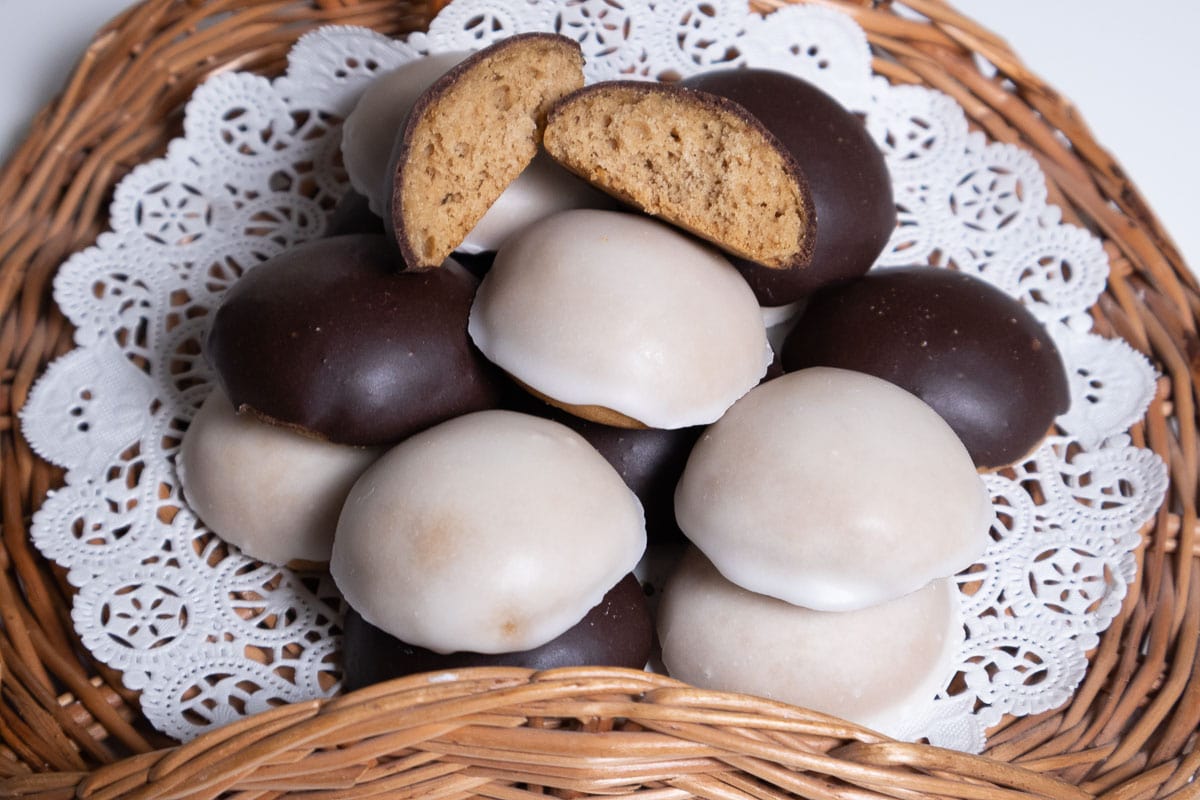
If you love these Pyraniki or any other recipe on my website, please leave a 🌟 star rating in the recipe card and let me know how it went the in 📝 comments below. I appreciate each of you being here!
Pryaniki - Russian Honey Spice Cookies
Ingredients
Cookies
- 2 teaspoons instant coffee
- ¼ cup water
- ½ cup unsalted butter
- ½ cup granulated sugar (100 grams)
- ¾ cup honey
- 2 teaspoons anise extract
- 1 teaspoon cinnamon
- ½ teaspoon nutmeg
- ½ teaspoon ginger
- ½ teaspoon cardamom
- ½ teaspoon coarse ground black pepper
- ¼ teaspoon cloves
- 1 large egg egg
- ¾ teaspoon baking soda
- ½ teaspoon white or cider vinegar
- ¾ teaspoon baking powder
- 3 cups all-purpose flour
White Glaze - This will coat about half of the cookies
- 1 ¾ cups powdered sugar (245 grams)
- 1 tablespoon light corn syrup
- 2 - 3 tablespoons water
Chocolate Glaze - This will coat about half of the cookies
- 1 ½ cups powdered sugar (200 grams)
- 6 tablespoons cocoa
- 1 tablespoon light corn syrup
- ¼ - ⅓ cup water
Instructions
- In a small saucepan, dissolve the instant coffee in the water. Add the butter, sugar and honey. Heat on medium until the butter is melted.
- Remove from the heat and whisk in the anise and all of the spices. Cool slightly. Place in the bowl of a mixer.
- Add the egg and baking powder.
- Dissolve the baking soda in the vinegar. It will bubble up and fizz. Add it to the ingredients in the mixer.
- Place the flour on top and beat on low to combine the ingredients, then on medium to mix them completely to make a batter.
- Place in a container with a lid and refrigerate at lease 6 hours or overnight. The batter must be completely cold to shape.
- When ready to shape, preheat the oven to 350°F. Line several baking sheets with parchment paper and set aside.
- With a #70 disher/scooper or a 1 tablespoon measure, scoop the cookies 4 across and 6 down on a half sheet pan. Roll them between our hands into smooth balls. If using another baking pan, be sure to leave at least 3" beween the cookies. They will at least double in size.
- Double Pan. Bake for 14 to 16 minutes. Do not overbake or they will become hard. Cool. At this point they can be glazed or held in an airtight container for a week or so before glazing.
- Another option is to shape the cookies, roll them into balls and freeze them for up to a month before baking and glazing. Thaw them at room temperature and bake as directed.
Glazing the Cookies
- Sift together the powdered sugar and cocoa or just powdered sugar.
- Add the corn syrup and the least amount of water. Stir with a spoon - do not whisk or air bubbles can form which will ruin the looks of the finished cookies.
- Dip the cookies top down into the glaze. Wipe the excess glaze that drips off on the side of the bowl or with your finger. Place, bottom down on parchment paper.
- Alternatively, place the cookies on a rack and spoon the glaze over the cookies to completely enrobe them. Move them with an offset spatula to parchment lined paper. The glaze will puddle around the bottom of the cookies. That is how it should be.
- Let them dry until the puddles are hard. It may take up to 48 hours depending upon the temperature of the room. Remove the excess glaze by simply breaking it off.
Notes
Nutrition
Langue de Chat
For the first cookie in my weekly European cookie post the Langue de Chat is a French cookie that translates to cat's tongue because of its shape. It is a crisp, sweet, long, wafer thin cookie and a snap to make with only five ingredients.
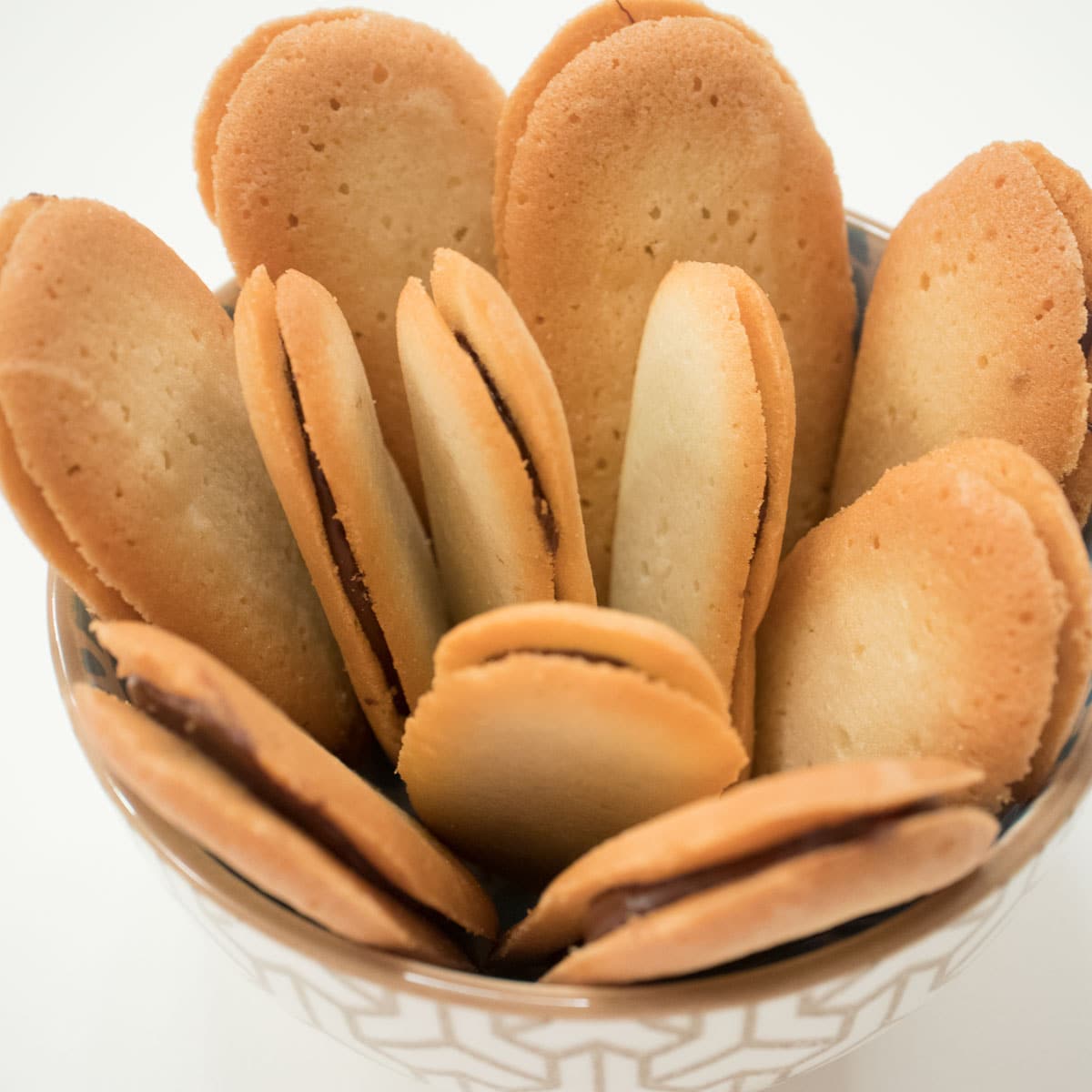
While this cookie is made in other countries and known as Kue Lidah Kucing in Indonesia, Lengua de Gato in the Philippines, and Lingue di Gatto in Italy they retain the traditional ingredients and look.
I love them as a simple straightforward cookie, but they are even better by sandwiching with chocolate. Think Milano cookies here...especially if you remember them when they were made with butter instead of oils.
While they are often seen barely browned on the edges, they taste, look and last better when baked to a golden brown. An easily made template keeps these cookies the same size.
A couple of other French Cookies you'll love are the French Butter Cookies - Petit Beurre, Chocolate Orange Macaron, French Macaron.
For more information on baking the best cookies see Cookie Tips for the Best Cookies.
[feast_advanced_jump_to]European vs. American Cookies
- Let's face it - all cookies are good but there are definite differences between European and American cookies. One of the major differences between them is European cookies are not as sweet as American Cookies. On the other hand, many American cookies and bars have a lot of add ins that make for a more complex cookie.
- While American cookies can have an ingredient list that is daunting, European cookies generally have fewer ingredients but they are manipulated a hundred different ways. The cookies usually contain butter, flour, egg yolk as opposed to whole eggs and flavoring. Leavening such as baking powder and baking soda are rarely used. If leavening is needed it is often ammonium carbonate or baker's ammonia and is used when crispness is the desired outcome.
- European cookies often feature a lot of ground nuts. Almonds, pistachios, walnuts and hazelnuts are used but peanuts and pecans will be found in American cookies. Almond paste is a popular ingredient and is instantly recognizable.
- Greek, Middle Eastern, Italian, German and Scandanavian cookies often feature honey as a sweetener, in whole or in part and a lot of spices. Think Lebkuchen and Pfeffernusse. Candied citrus peel is also used as well as anise and lemon flavoring.
- Salt, while a staple in American cookies, is not used in most European Cookies.
- Chocolate and peanut butter are huge components in the states but not so much in Europe.
- Americans like their cookies large whereas European cookies are usually small in comparison.
- There is no right or wrong cookie, no satisfactory or unsatisfactory, no better or worse cookie. As with all things human, there are differences, and in the case of cookies, delicious differences.
What makes these cookies so easy
- There are only 5 ingredients and I'm betting you have them in your fridge and pantry.
- If you have left over egg whites this is a quick, delicious way to use them.
- The cookie batter mixes up in a matter of minutes.
- While these do require some piping, I have a whole section dedicated to making this easy for you.
- What else can I say, simple, delicious and easy? So why wouldn't you make them?
Langue de Chat Ingredients
Cookies

FRONT ROW: Vanilla and egg whites
MIDDLE ROW: Unsalted butter
BACK ROW: Powdered sugar and flour
Chocolate Filling
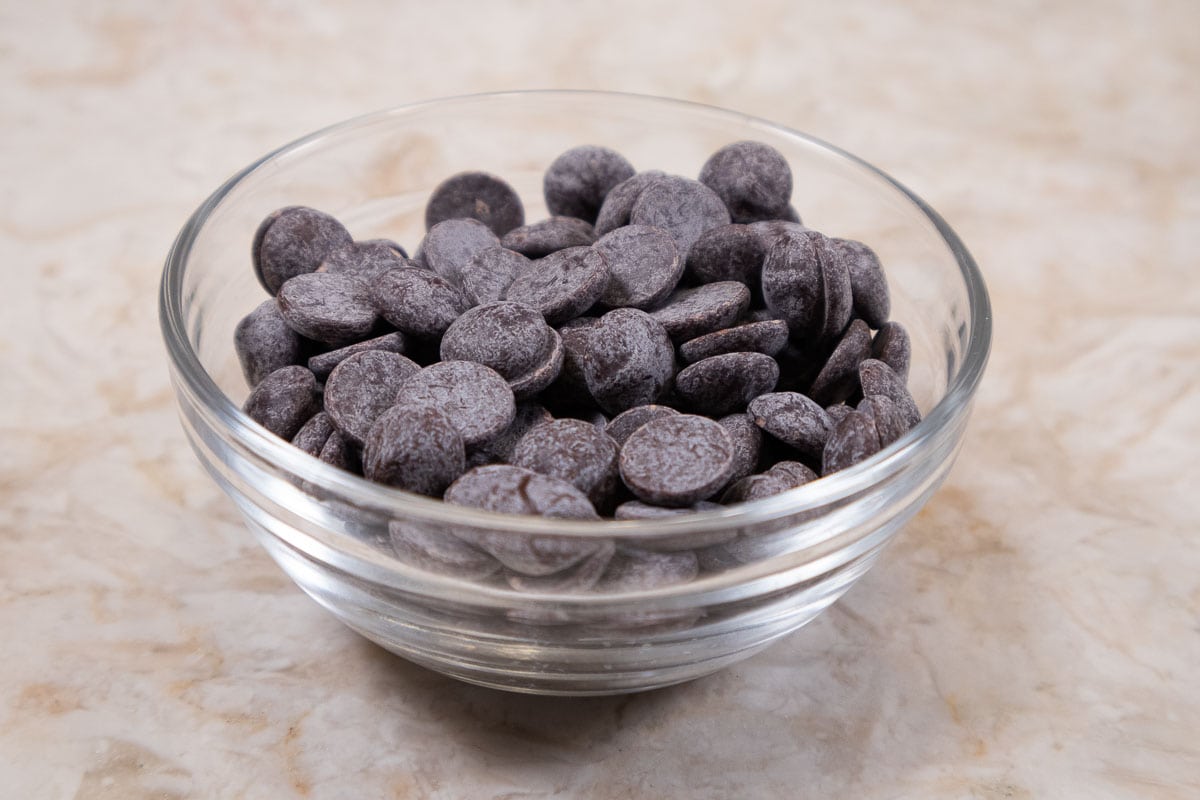
Callebaut #811 semisweet chocolate callets for the filling
Be sure to see the recipe card below for the full ingredients list and instructions.
Step by Step Instructions

Step 1. On a piece of parchment paper the size of your pan, draw lines 3" wide with about ½" between them from the top to the bottom of the paper. Set aside. Step 2. Add the softened butter, powdered sugar and vanilla to the mixing bowl. Cream until light. Step 3. Add one egg white. Step 4. Beat on medium until it is completely incorporated.

Step 5. Add the second egg white. Step 6. Beat on medium to combine. It will probably curdle but that will be fixed in the next step. To learn more about curdled batters see my post How to Avoid Curdled Cake Batter. Step 7. Add all of the flour. Step 8. Beat on low to bring the batter together until smooth. Do not raise the speed as you don't want to incorporate additional air into the batter.

Step 9. Place a second piece of parchment over the template. Fit a piping bag with a ½" plain tip and pipe in a straight line between the 3" lines. It will have a sharp upward tip at the end. Don't be concerned about this. It will come out flat when baked. Step 10. Be sure to leave about 3" between piping the cookies. These will spread a lot in the oven. Step 11. If sandwiching the cookies after baking and cooling, pair the cookies for shape and size. Step 12. Turn a pair of cookies bottom up. Spread a thick layer of melted semi-sweet chocolate on the bottom cookie about ¼" in from the edge. Place the top cookie on and gently press down to bring the chocolate to the edges.
Recipe FAQs
Long duh shot.
By baking them to a golden brown, they will keep in an airtight container for weeks, either plain or sandwiched with chocolate.
Sure. Use another extract such as almond or add lemon or orange zest or a bit of cinnamon can be used.
Piping Tips
- Piping can be scary but it's actually easy when piping these cookies. I do suggest you purchase a ½" piping tip. They are very inexpensive and do a much better job than a plastic bag with the tip cut off. The plastic bags can and do stretch out of shape as you apply pressure when piping.
- The most important thing to remember when piping is to keep an even, steady pressure on the bag, letting up only at the end. Don't worry about the peak at the end, it will melt in the oven and won't show.
- The harder you squeeze the piping bag the more comes out of the tip.
- I'd suggest that you do a trial run on a few cookies to get a feel for how much pressure you need to apply. Scrape up the practice cookies and put them back in the bag.
- When piping, look at where you want to go, not how you're doing along the way. Your hand will follow your eye and you will get straighter lines.
- For these cookies, to keep the lines of batter straight, keep the bottom edge of the piping tip on the paper and, keeping even pressure on the bag, pipe straight down to the bottom line while looking at it.
- When you get down to the last row of piping, turn the pan around to make piping the last row easier.
Expert Tips
- Creaming butter and sugar is an important step for these cookies. Using powdered sugar helps blend the two smoothly. If you forget to take the butter out early, there is information in Softened Butter and Better Butter for Baking. I refer to butter as softened rather than room temperature because all rooms aren't the same temperature. Some are too cold, some too hot. The ideal temperature for butter to cream well is 72°F to 75°F where the sugar and butter can best work together.
- Whatever you do, do not use melted butter as it can't incorporate air.
- Using plain chocolate to sandwich cookies instead of ganache keeps the cookies crisp for weeks in an airtight container. The ganache can soften them due to the cream in the chocolate.
- And while I know some people suggest cutting the end off of a plastic bag to pipe these, I encourage you to purchase a half inch pastry tip as the plastic bags often stretch out of shape as they are used. These are one of the easiest cookies you can find to make so don't let the piping deter you.
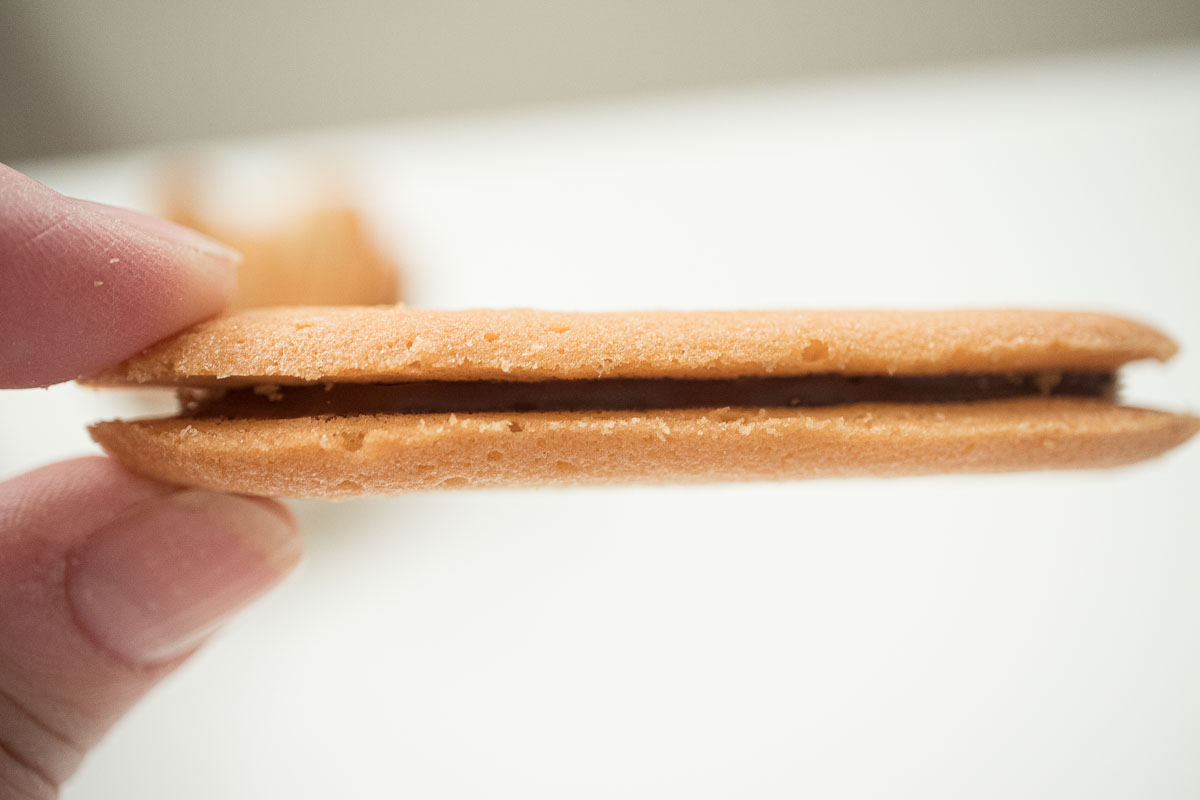
More Special Cookies for You
If you love this recipe for Langue de Chat or any other recipe on my website, please leave a 🌟star rating in the recipe card and let me know how it went the in 📝 comments below. I appreciate each of you being here!
Langue de Chat
Equipment
- ½" piping tip
- Piping bag
Ingredients
- ½ cup unsalted butter, softened (114 grams)
- 1 cup powdered sugar (130 grams)
- 1 teaspoon vanilla extract
- ¾ cup all-purpose flour (105 grams)
- 2 large egg whites
- 3 ounces semisweet chocolate (85 grams)
Instructions
- Preheat the oven to 325°F.
- Make a template on a piece of parchment paper that fits your pan,spacing wto lines 3" apart. Continue down the paper, leaving about ½" between the 3" lines. Set aside.
- Combine the butter, powdered sugar, and vanilla in a mixing bowl. Beat until very light in color and texture. Scrape down.
- Add 1 egg white and mix until completely combined.
- Add the second egg white and mix on medium until blended. It will most like curdle but that will be fixed in the next step.
- Add all the flour at once and beat on low until everything is incorporated and the batter is smooth.
- Place a piece of parchment over the template. Place the pastry tip in a pastry bag. Fill with the batter.
- Pipe a few practice cookies between the 3" lines. They can be scooped up and put back in the bag if you're not happy with them. Please see the piping tips above you need help. Keep the bottom edge of the piping tip on the paper and, keeping even pressure on the bag, pipe straight down to the bottom line while looking at it. It will make a small point at the bottom, but it will disappear when baked.
- When the last line of cookies needs to be piped, turn the pan around to make it easier to pipe without damaging the cookies above it.
- Remove the template, place it under another piece of parchment and proceed to pipe the remaining cookies.
- Bake for 12 to 14 minutes until golden brown. Cool and store in an airtight container.
- If they are to be sandwiched, match the cookies for size and shape. Melt the chocolate in a microwave at half power or over hot water, just until completely melted. Turn a set of cookies over and put a generous amount of chocolate on the lower cookie about ¼" from the edges. Cover with the top cookie, right side up, and gently press down to distribute the chocolate out to the edges of the cookie. Let them sit at room temperature until set. Store in an airtight container for a week or so.
Notes
-
- See Piping tips above for additional information.
- Piping can be scary but it's actually easy when piping these cookies. I do suggest you purchase a ½" piping tip. They are very inexpensive and do a much better job than a plastic bag with the tip cut off. The plastic bags can and do stretch out of shape as you apply pressure when piping.
-
- The most important thing to remember when piping is to keep an even, steady pressure on the bag, letting up only at the end. Don't worry about the peak at the end, it will melt in the oven and won't show.
-
- The harder you squeeze the piping bag the more comes out of the tip.
-
- I'd suggest that you do a trial run on a few cookies to get a feel for how much pressure you need to apply. Scrape up the practice cookies and put them back in the bag.
-
- When piping look at where you want to go, not how you're doing along the way. Your hand will follow your eye and you will get straighter lines.
-
- For these cookies, to keep the lines of batter straight, keep the bottom edge of the piping tip on the paper and, keeping even pressure on the bag, pipe straight down to the bottom line while looking at it.
- To make mini Langues de Chat,make the ones on the template 1 ½ to 2 inches. Use a ¼ inch pastry tip and reduce the baking time.
- Orange Langues de Chat can be made by adding the zest of an orange to the sugar and butter. Sandwich with milk chocolate.
- Lemon Cookies require the zest of 1 large or 2 medium lemons added to the butter and sugar. Sandwich with white chocolate.
Nutrition
Plum Crisp
This easy Plum Crisp recipe uses readily available fresh plums and is ideal for beginners. It’s much like a pie but with with no crust. The crispy topping stays crunchy under sweet-tart softened plums while a heavy dose of vanilla, turns a ho-hum crisp into a delicious dessert.
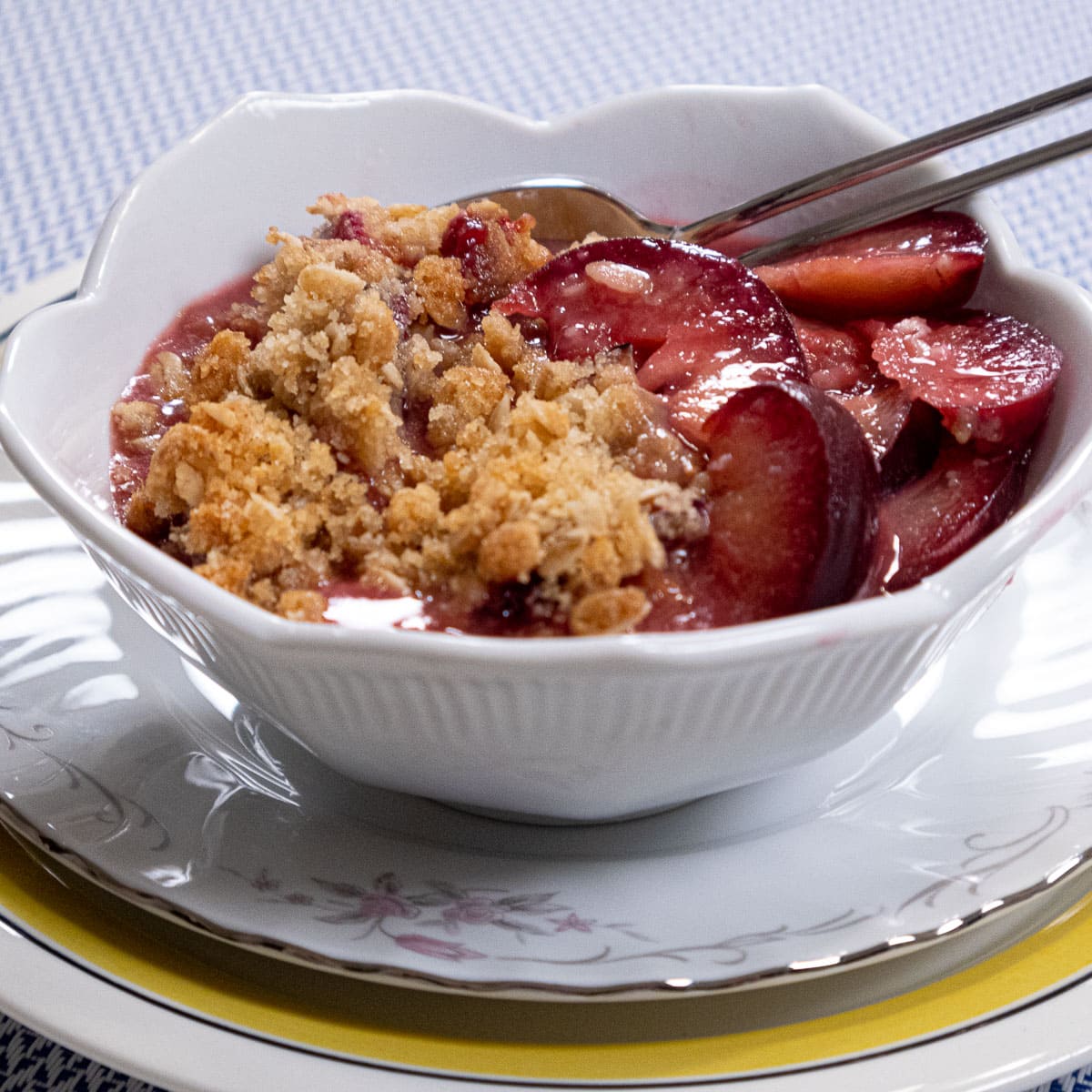
There are yellow plums, red plums, black plums and green plums. They come in all sizes for all tastes. Mirabelles are considered the sweetest, while Italian prune plums are exactly that – especially sweet when dried into prunes. There are American, Japanese, and European plums. All About Gardening has an interesting article with photos about the variety of plums.
My Best Plum Dumplings uses fresh Italian Blue Plums while the Gateau Breton uses them dried as prunes. Both are worth a look!
I used black plums for this recipe. They aren’t actually black but a deep purple which I suppose looked black to whomever named them. They are of the larger variety and hold their shape well when baked. Santa Rosa's work well also. While plums aren’t peeled, the stones can be a challenge to remove but I’m going to show you an easy way to do that.
[feast_advanced_jump_to]Why You'll Love This Recipe
- Simple and Quick to Make - There is nothing complicated about this recipe. It comes together literally in a matter of minutes and is a great finish for any meal. Just stir the topping together, the fruit together, into the pan it goes and bake. That's it!
- Not too Much Sugar - At the bakery, we reduced the sugar in all of our pies so the flavor the the fruit is forward, not the sugar. I continue to make my fruit desserts this way and think you'll enjoy the enhanced flavor.
- The crisp topping is plentiful and the crunchy texture blends perfectly with the soft fruit underneath.
- A plum sauce is how I like to describe the looser than pie juiciness that bakes up.
- This plum crisp is so delicious on it's own, I don't serve ice cream or anything else with it. Just enjoy the full flavor of the plums and the crisp for an old fashioned dessert that is just as popular today as ever it was.
- The recipe uses Pantry Ingredients that are probably on hand with the exception of the plums.
- This dessert is a great family dessert and especially good after barbecue.
Recipe Ingredients
Crisp Topping
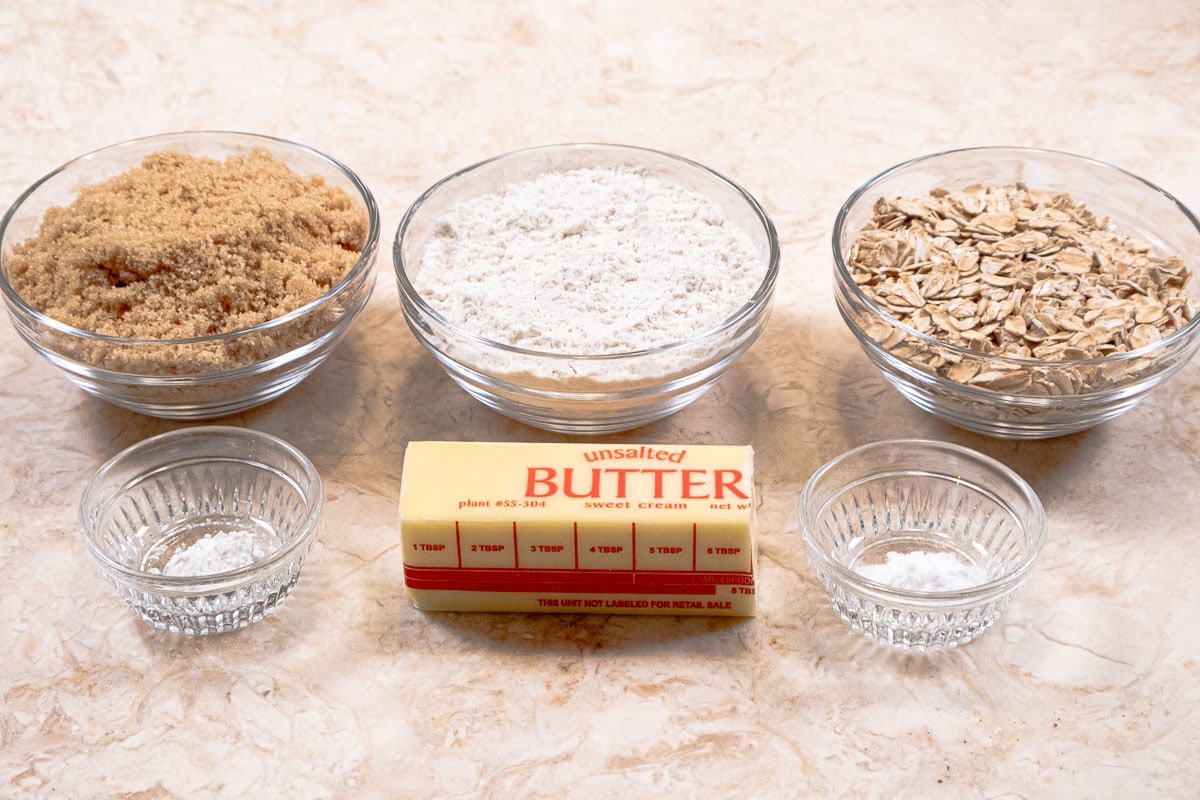
Ingredients read left to right.
BACK ROW: Brown sugar, flour, rolled oats
FRONT ROW: Baking powder, unsalted butter, baking soda
Plum Ingredients
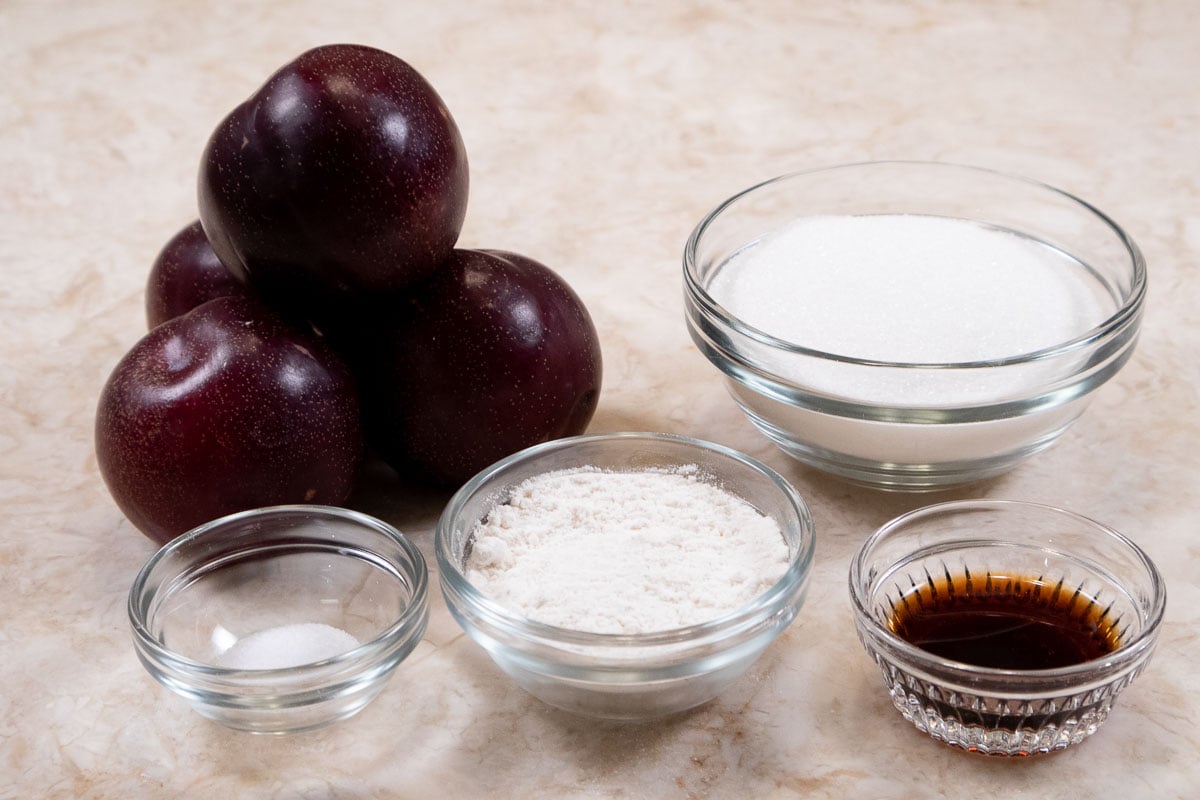
BACK ROW: Plums, granulated sugar
FRONT ROW: Salt, flour, vanilla
Be sure to see the recipe card below for the full ingredients list and instructions.
Variations
- Use half plums and half apricots for a change.
- Substitute all fresh apricots for the plums in equal amounts.
- Make individual crisps in 6 or 8 ounce ramekins. Place them on a tray and bake until the fruit is soft and the crisp is golden.
Step by Step Instructions
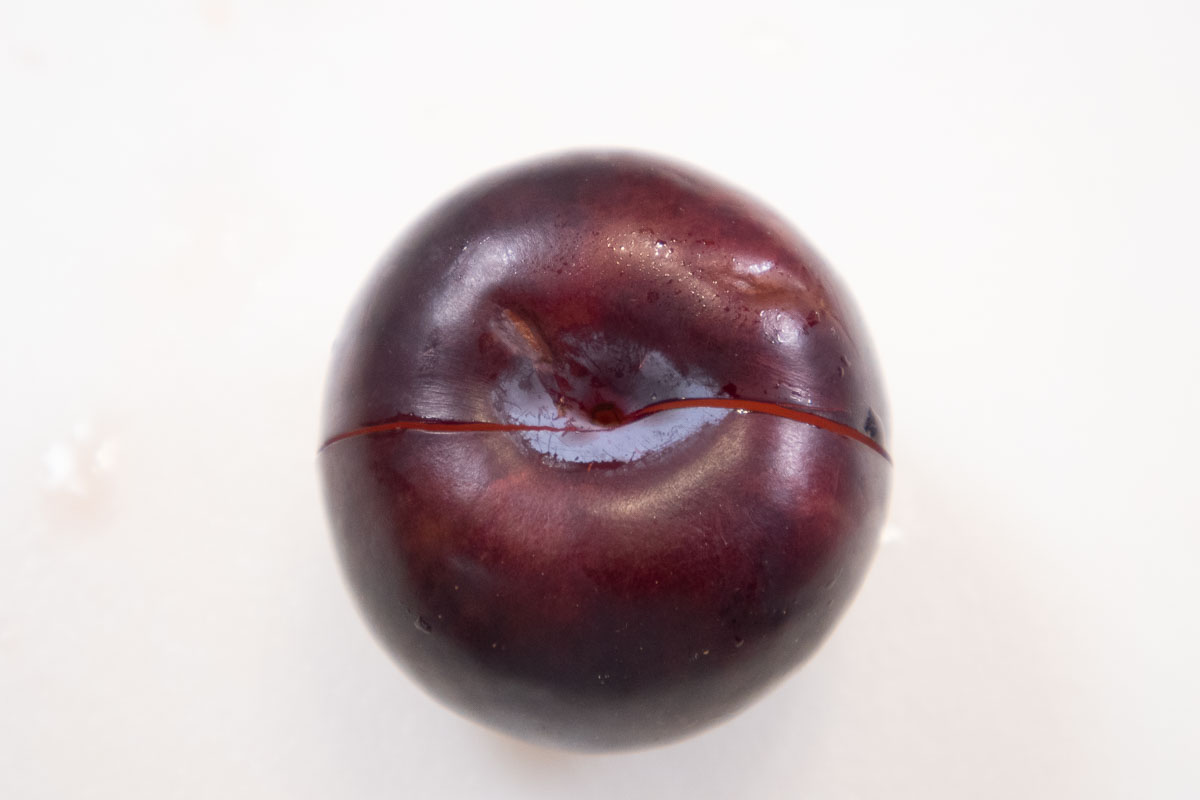
Step 1. Cut the plum through its equator and twist in opposite directions to separate them.
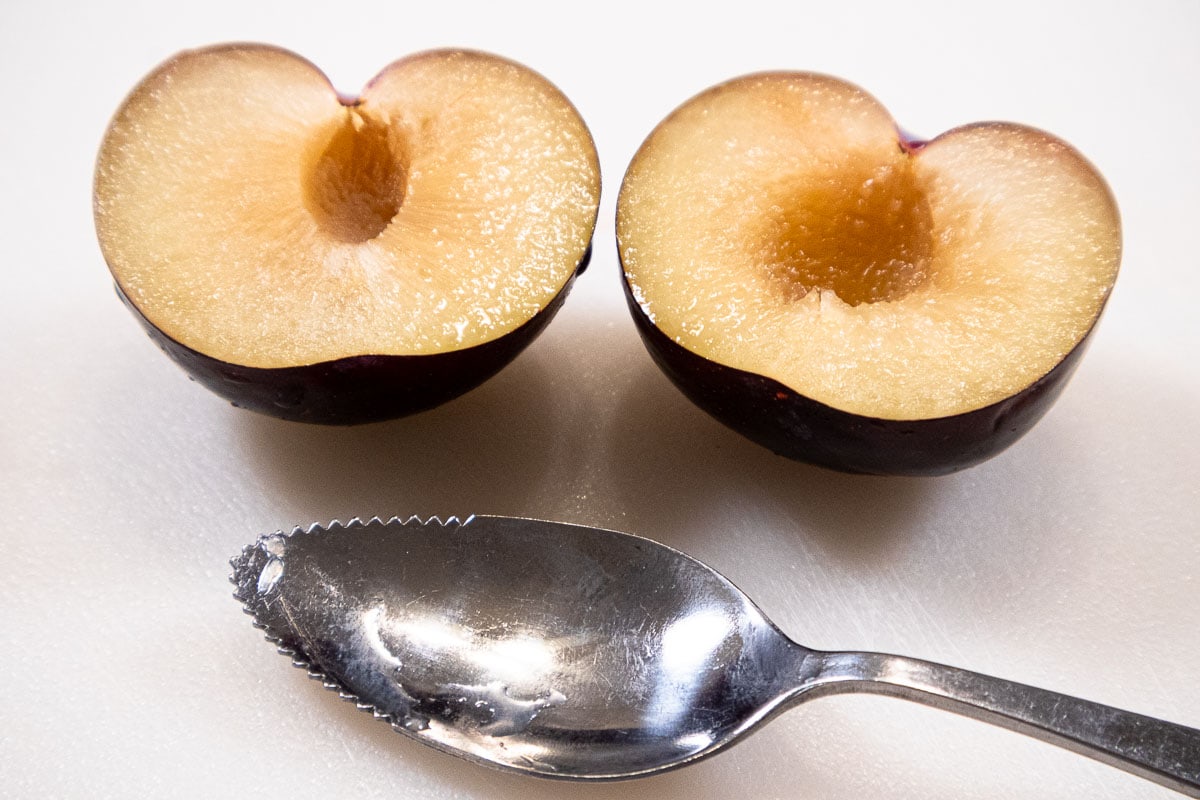
Step 2. Using a spoon with a serrated tip makes removing the pit of the plum much easier. Just go around the pit and lift it out.
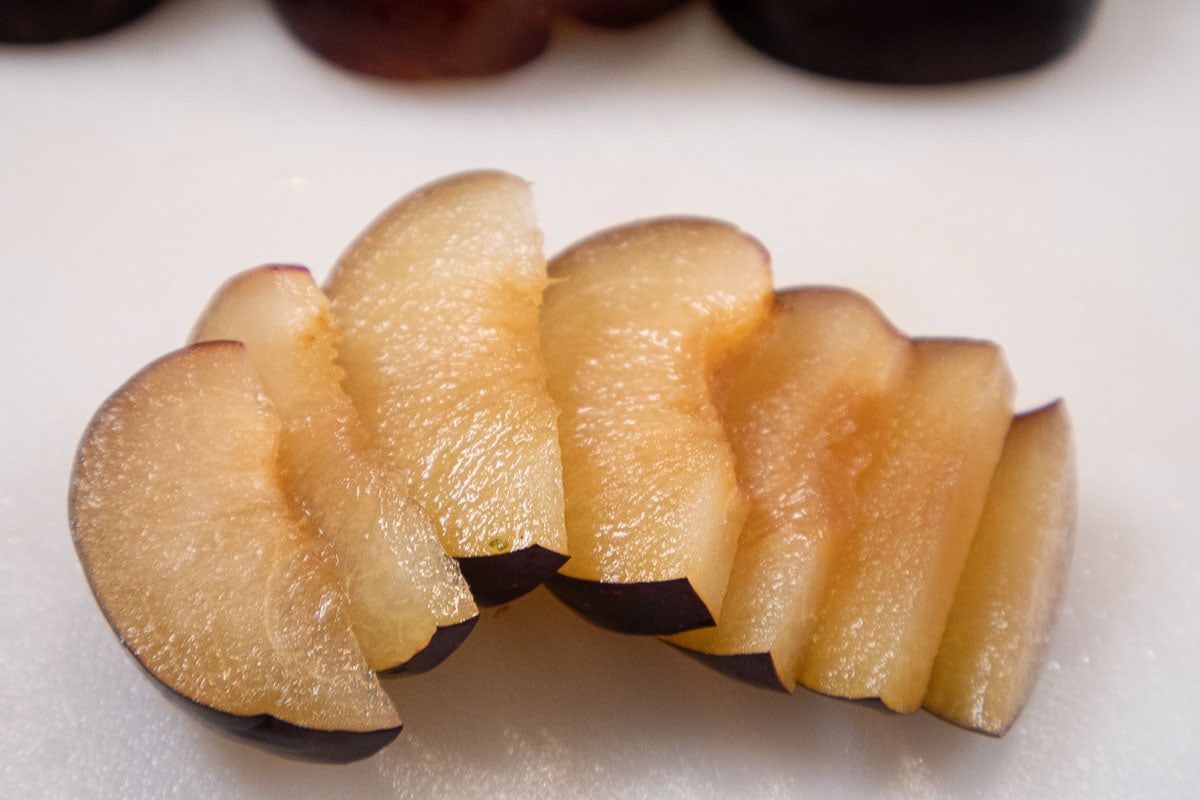
Step 3. Cut the plums in about ¼" slices. This is easiest done by turning the plum halves over and cutting from the skin side. Place in a large bowl.
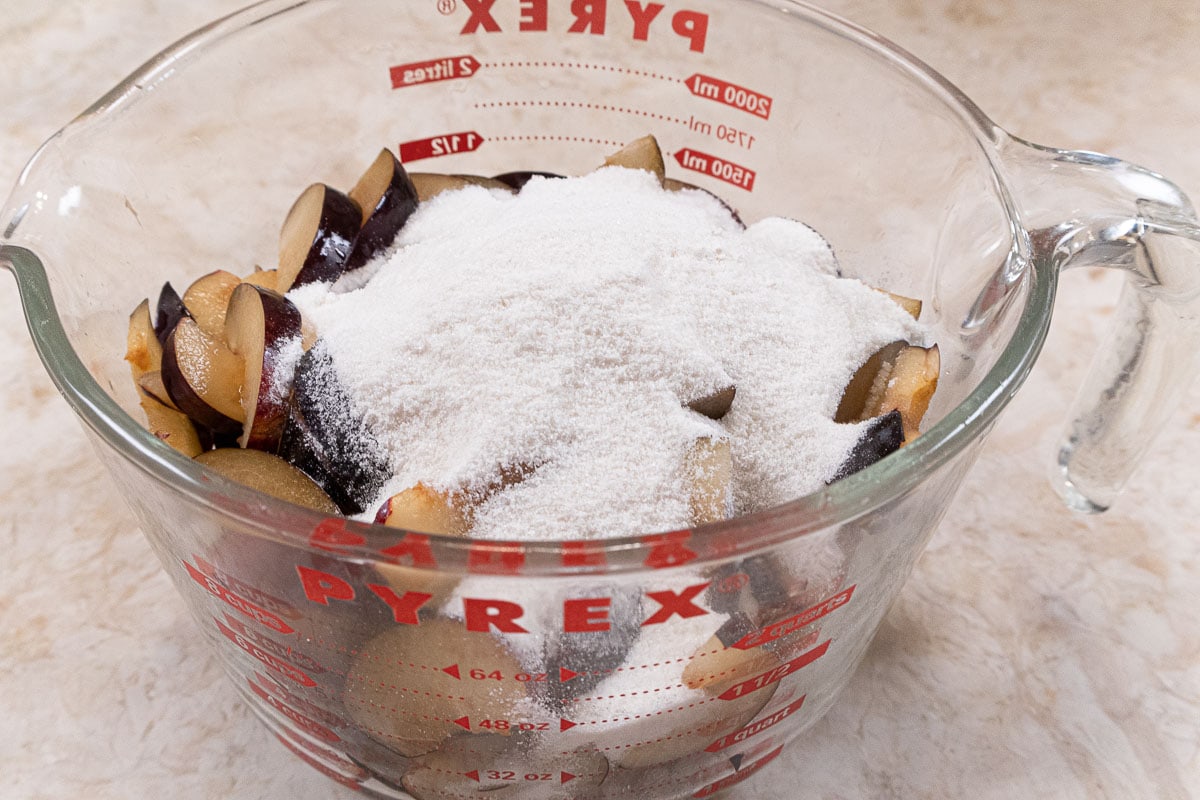
Step 4. Mix the dry ingredients together and add to the plums. Stir to coat them evenly. Set aside.
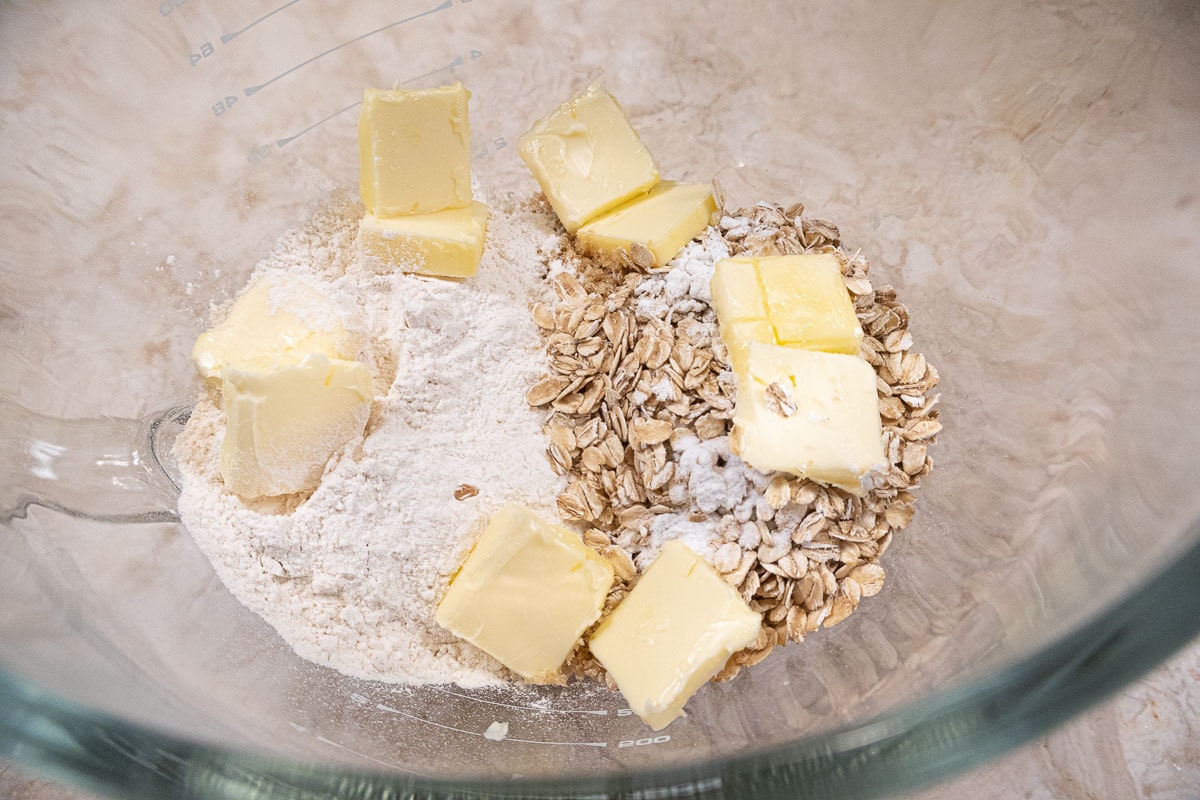
Step 5. Place all of the ingredients for the crisp in a mixing bowl.
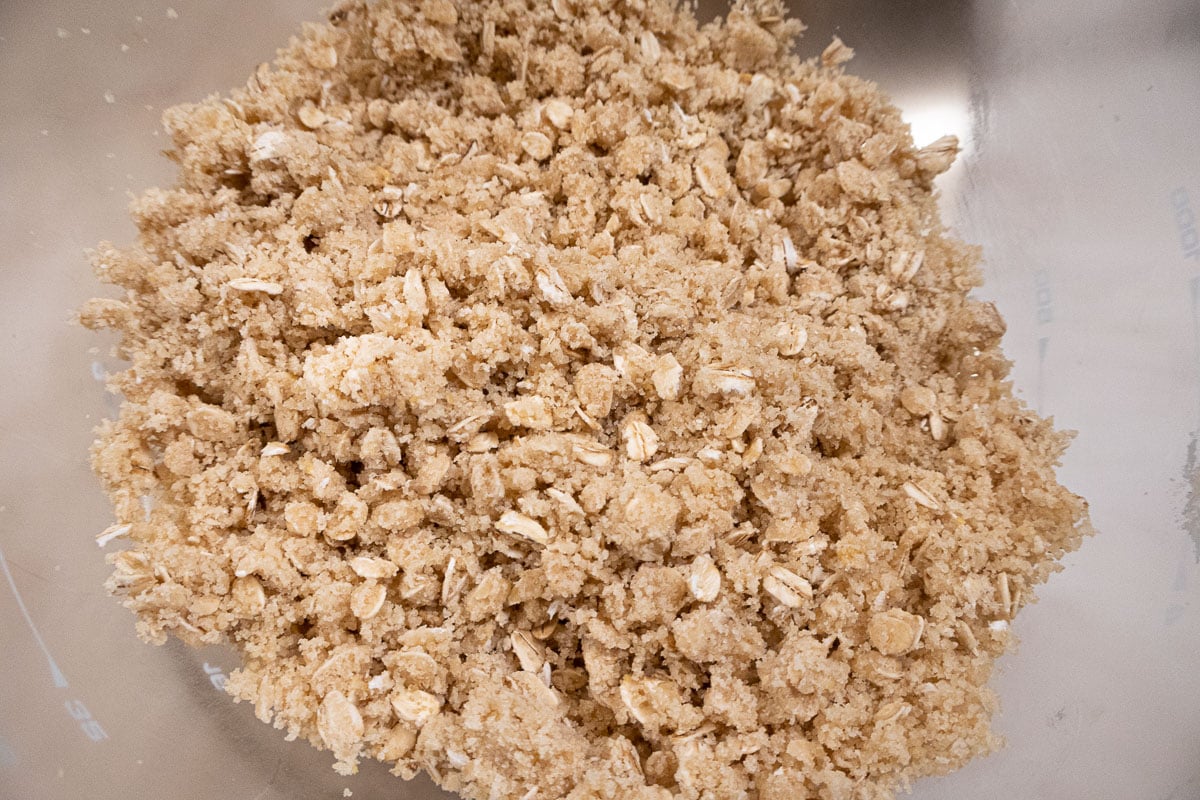
Step 6. Mix on low to bring ingredients together, then on medium to form the crumbs. Do not mix past the crumbs or it will become a paste.
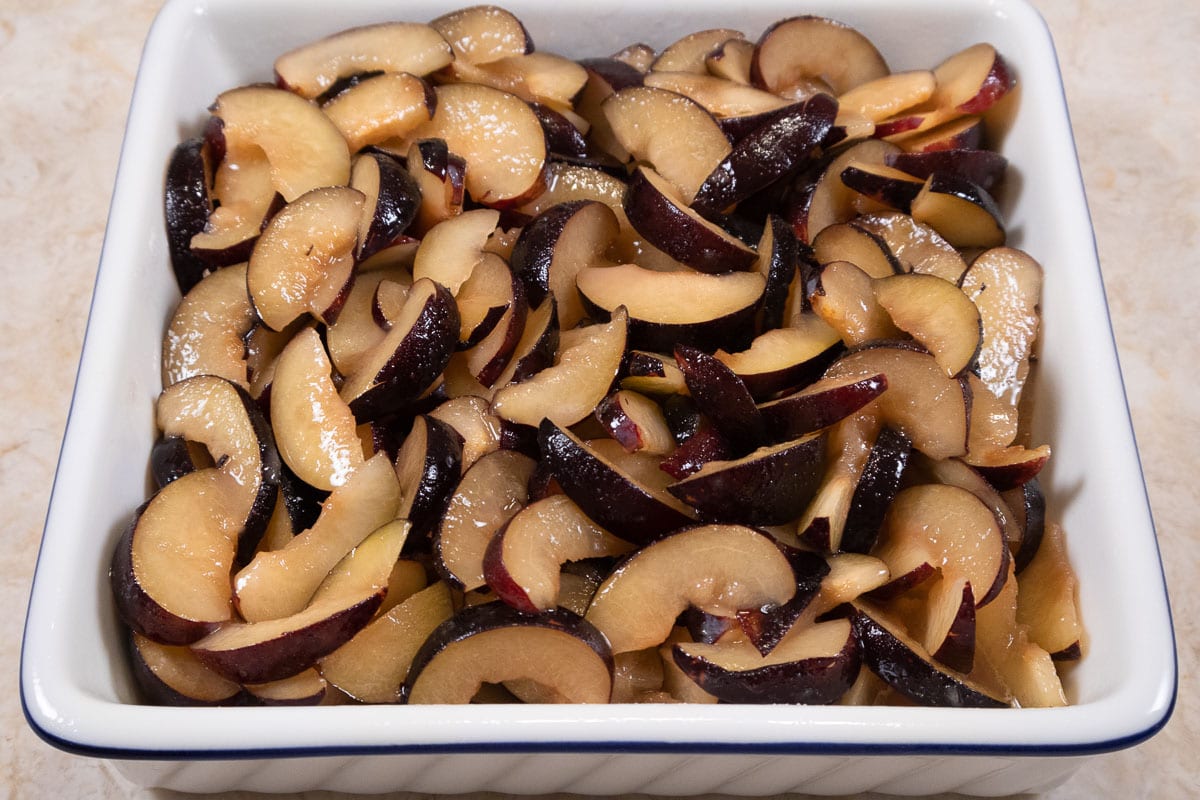
Step 7. Pour the prepared plums into the baking dish.
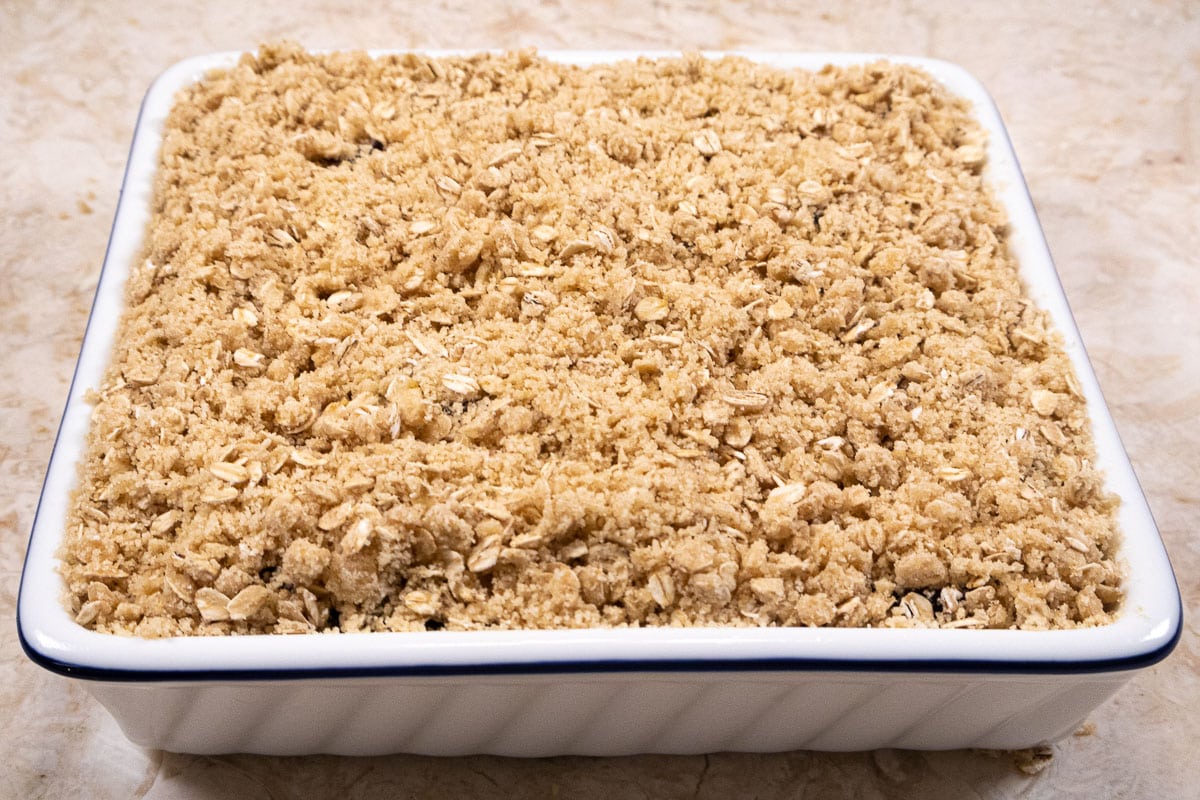
Step 8. Cover the plums evenly with the crisp. Bake as directed.
The good news is they don't. Their skins are thin and they add texture to the baked dish.
Slightly under ripe or just ripe plums are best so they don't become mushy when baked as fully ripened fruit would do.
Late June or early July to September. Asian plums usually ripen earliest in the season, followed by complex cross varieties, and then European plums - some of which will continue ripening into the beginning of fall. The Italian prune plum has a very short season in late August or early September close to the end of the plum season.
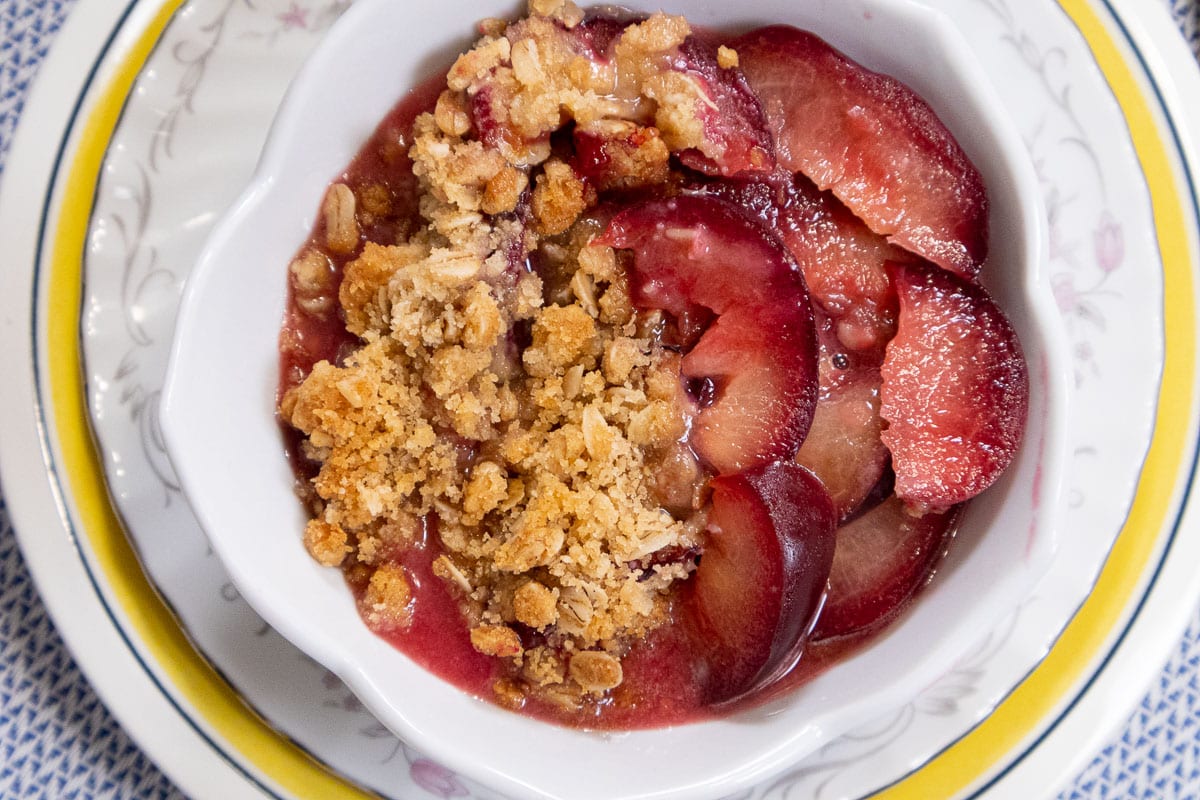
More Fruit Desserts
If you love this Plum Crisp or any other recipe on my website, please leave a 🌟 star rating in the recipe card and let me know how it went the in 📝 comments below. I appreciate each of you being here!
Plum Crisp
Ingredients
Plums
- 2 pounds black or santa rosa plums
- ¾ cup granulated sugar (150 grams)
- 3 to 4 tablespoons all-purpose flour (40 grams)
- ¼ teaspoon salt
- 2 teaspoon vanilla extract
Crisp Topping
- ¾ cup oatmeal (75 grams)
- ¾ cup brown sugar (150 grams)
- ¾ cup all-purpose flour (105 grams)
- ¼ teaspoon baking soda
- ¼ teaspoon baking powder
- 6 tablespoons unsalted butter, softened (85 grams)
Instructions
Plums
- Preheat the oven to 375°F. Spray a 9x9 in square pan or the equivalent size with a non-stick baking release. Set aside.
- The amount of flour to use depends upon how loose you like the plums. Use more if you like a tighter filling.
- Cut the plums in half along their equator. Twist them in opposite directions to separate. Remove the pit. It is easy to do by going around the pit with a serrated spoon and scooping it out. Prepare all of the plums.
- Turn the plums, skin side up and slice them about ¼ inch thick. Put them in a large bowl. Add the vanilla.
- Combine the dry ingredients and stir the into the plums. Let the sit while you prepare the crisp, stirring once in a while.
Crisp Topping
- Place all of the ingredients in a mixing bowl. Mix on low speed to bring together. Raise the speed to medium to medium high and mix until crumbs form.
Assembly
- Stir the plums well and pour them into the prepared dish. Top with the crisp, spreading it evenly over the plums.
- Place the dish on a parchment line rimmed sheet pan and place in the oven for 35 to 45 minutes until the plums are soft, the crisp is a medium golden brown and the juices are bubbling out.
- Serve warm.
Notes
Nutrition
Dutch Peach Pie
Fresh summer peaches just beg to be made into this amazing looking Dutch Peach Pie, which is one of the most sensational tasting pies around. While this is not a recipe that you'll make in twenty minutes, it's worth every second it takes.
The combination of a flaky crust, ripe peaches lightly sweetened and an easy crumb topping are balanced for the perfect bite every time. It's truly summer in your mouth.
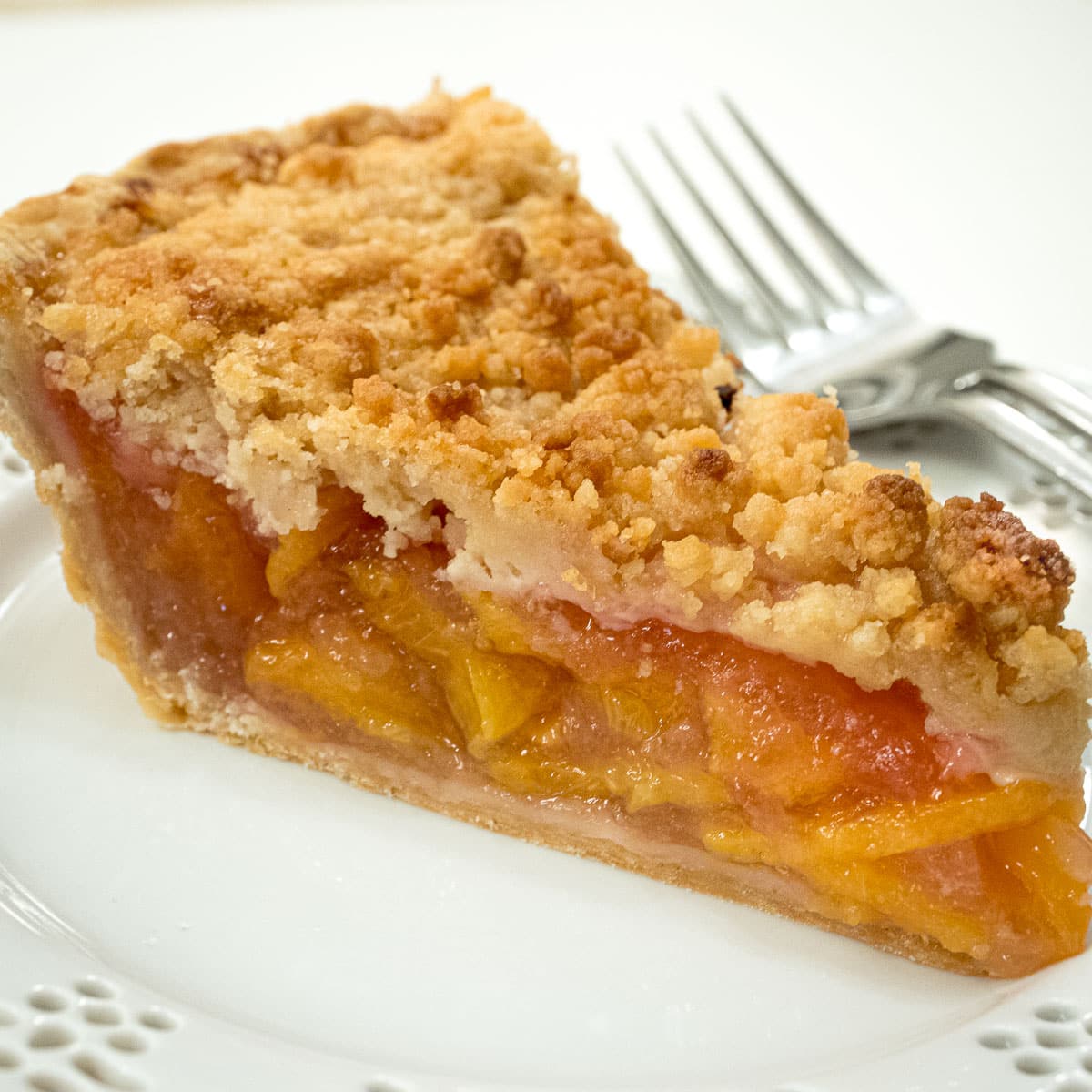
Sometimes less is more and I have taken that approach to the sugar in my pies by reducing the amount to allow the full flavor of the peaches to shine through.
If you're looking to impress or just making a pie for the family, this recipe is sure to please.
For more information about peaches, types, easiest way to peel and pit and how to hold them, see my post All About Peaches - Summers Sweet Spot.
A couple of other summer pies you might enjoy are: (Almost) No Bake Strawberry Pie, Coconut Cream Pie with a Difference and Chocolate Strawberry Pie (another almost no bake pie).
[feast_advanced_jump_to]A Note About Peaches
I like to buy under ripened peaches and allow them to ripen at room temperature in my kitchen. For pies you want them ripe but not overly so. They should definitely smell like peaches but not be too soft as they will exude more juice and can become mushy when baked.
How to Peel Peaches
There are a couple of ways to do this and one is definitely easier than the other. Peeling them with a vegetable peeler is not only more time consuming, it also takes more of the peach with the peel.
Blanching them briefly in boiling water, then running the under cold water to stop the cooking, makes it easy to slip the skins off with no peach coming with it. This only works with ripe peaches. The skin on unripe peaches sticks like glue to the peach so those have to be peeled. But I'm not sure why one would use unripe peaches to start with.
Why This Recipe Works
- The pie crust is easily made in the processor faster and easier. See my American Pie Crust Tutorial for a full reading of the how's and why's.
- The combination of instant tapioca and flour is the ideal combination for thickening most pies. It is the one we used in the majority of our deep dish pies at the bakery. It soft sets the filling while keeping it firm and upright and gives the fruit a bright, jewel like appearance when baked.
- The reduced sugar intensifies the peach flavor by not masking it with sweetness. It really does make a difference.
- A combination of butter is used for flavor and the shortening is used for flakiness in the pie crust.
- The crumb finish is so much easier than making a lattice or enclosing the pie in a top crust.
- The balsamic vinegar gives a boost to the flavor profile of the pie.
Recipe Ingredients
Crumb Topping

BACK ROW: Granulated sugar, flour, brown sugar
MIDDLE ROW: Unsalted butter
BACK ROW: Salt, cinnamon
Pie Crust
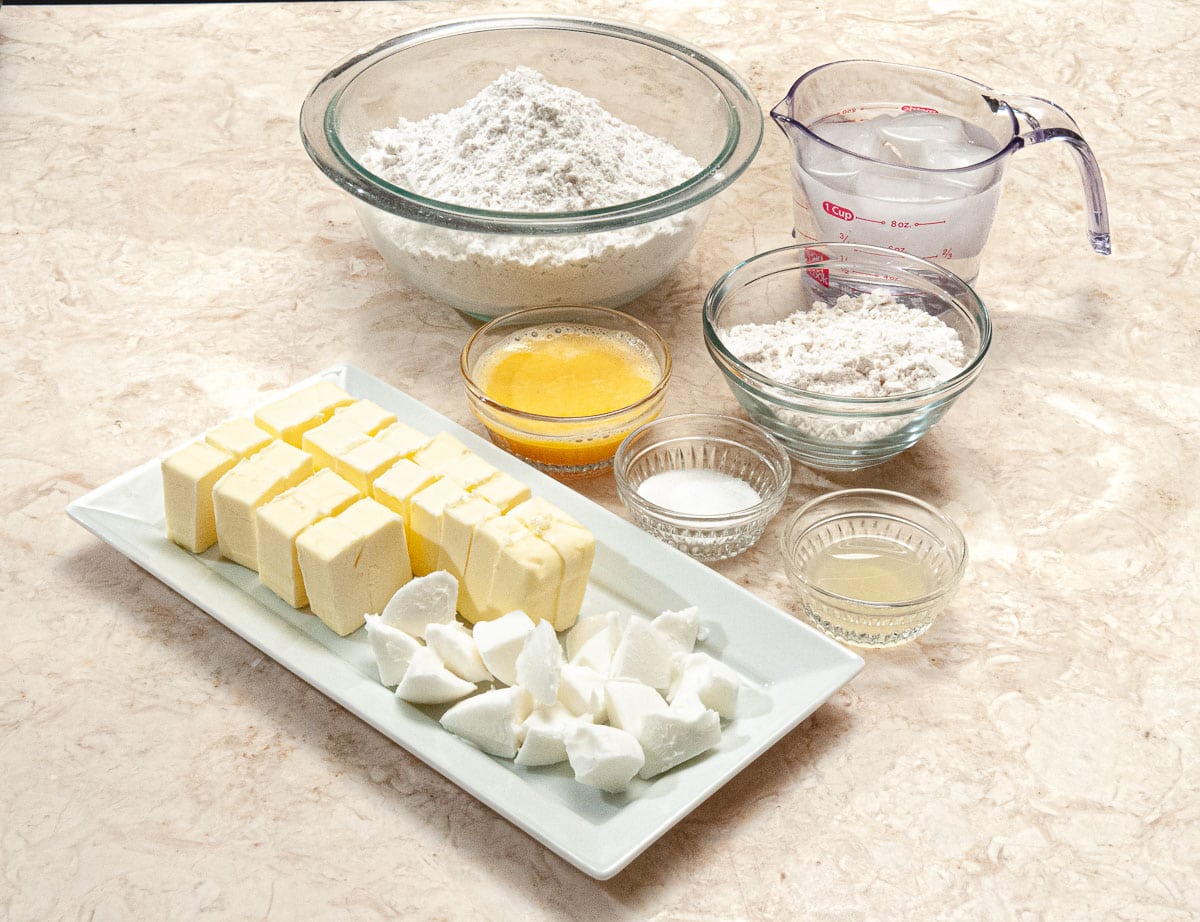
BACK ROW: Cake flour, ice water
MIDDLE ROW: Egg, all-purpose flour
FRONT ROW: Butter, shortening, salt, lemon juice
Filling
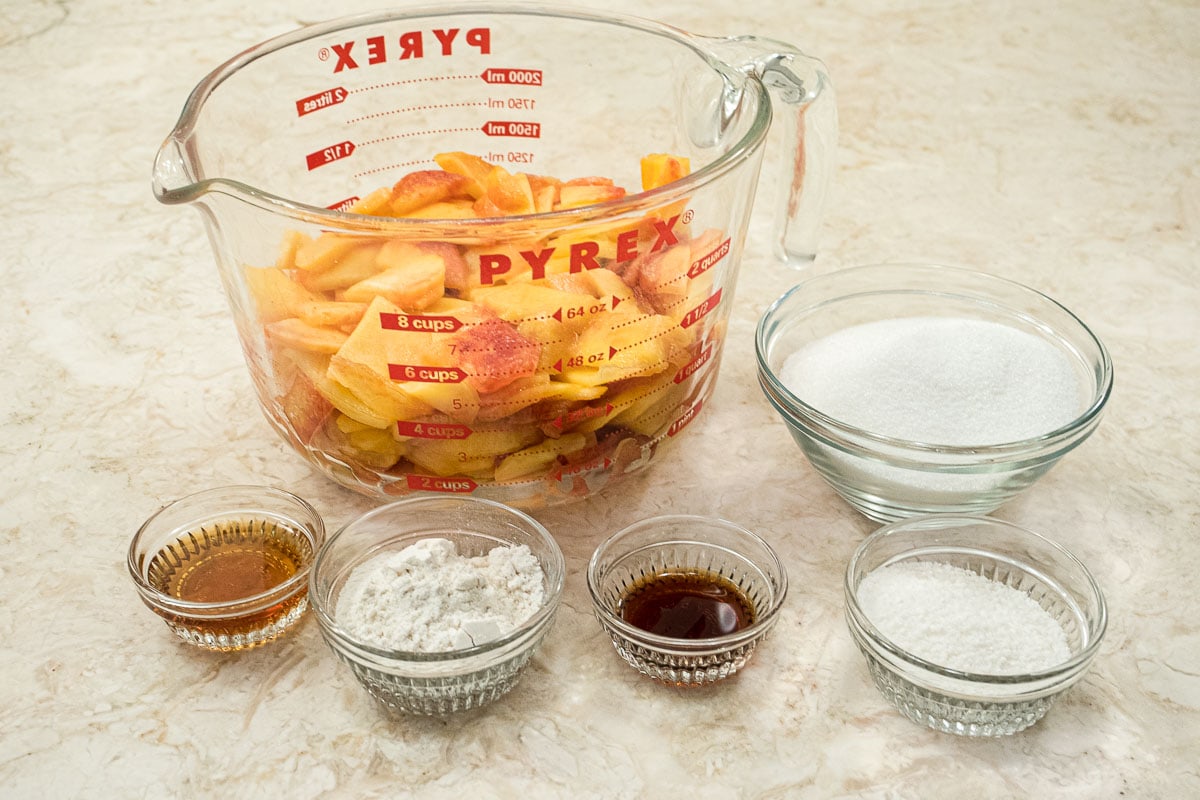
BACK ROW: Peaches, granulated sugar
FRONT ROW: White Balsamic Vinegar, flour, vanilla extract, minute tapioca
Be sure to see the recipe card below for full ingredients list and instructions.
Step by Step Instructions
Crumb Topping
See my post for the easiest to make Crumb Topping with step by step instructions and photos.
American Pie Crust
Use the ingredients given in the recipe. For step by step pictures and information on this pie crust, see my post on the American Pie Crust Tutorial.
Peach Filling
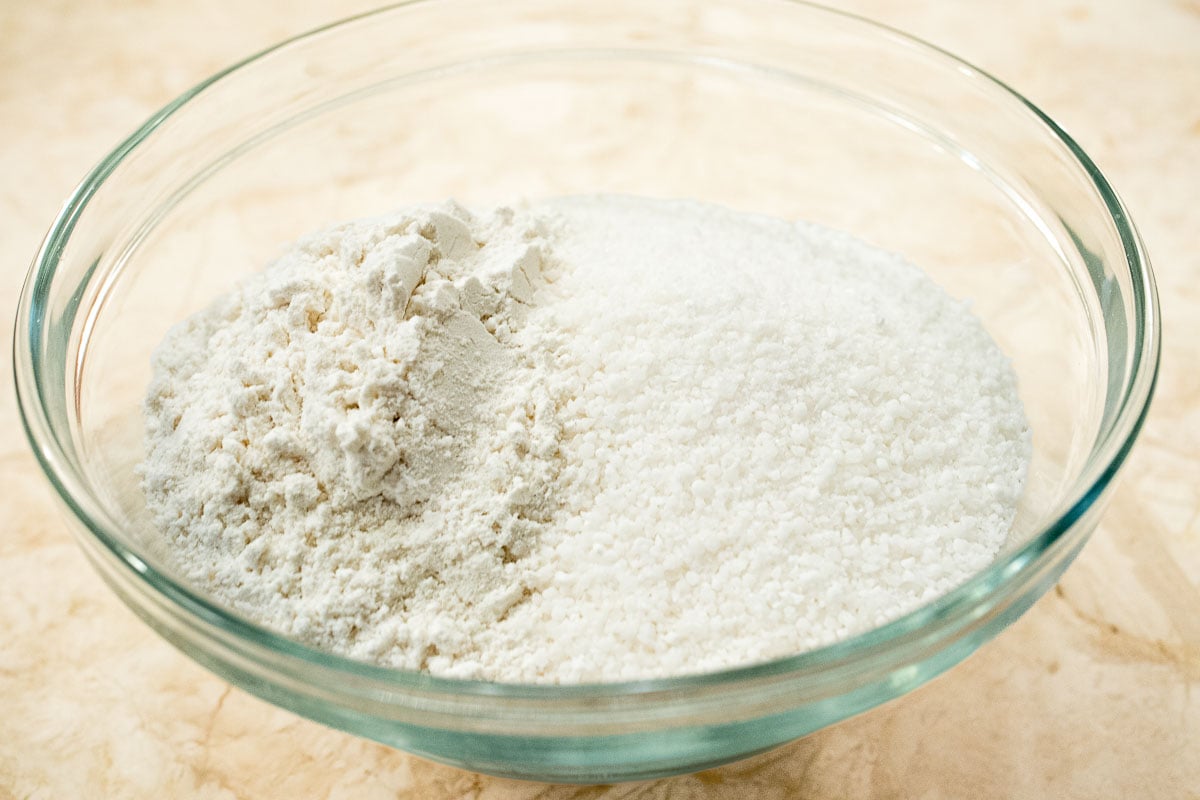
Step 1. Mix the flour and tapioca in a bowl to combine.
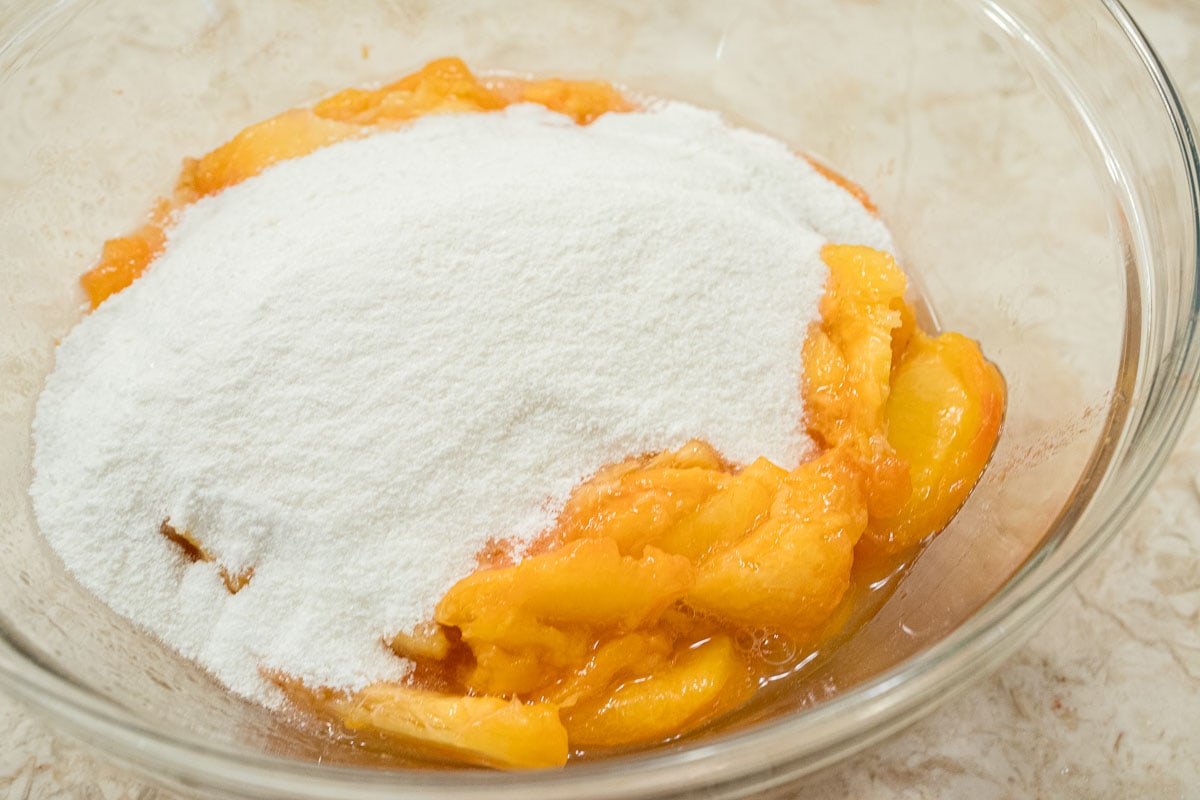
Step 2. Pour it over the peeled and sliced peaches. Let them sit 20 minutes. Do not let them sit longer or the peaches can juice too much.
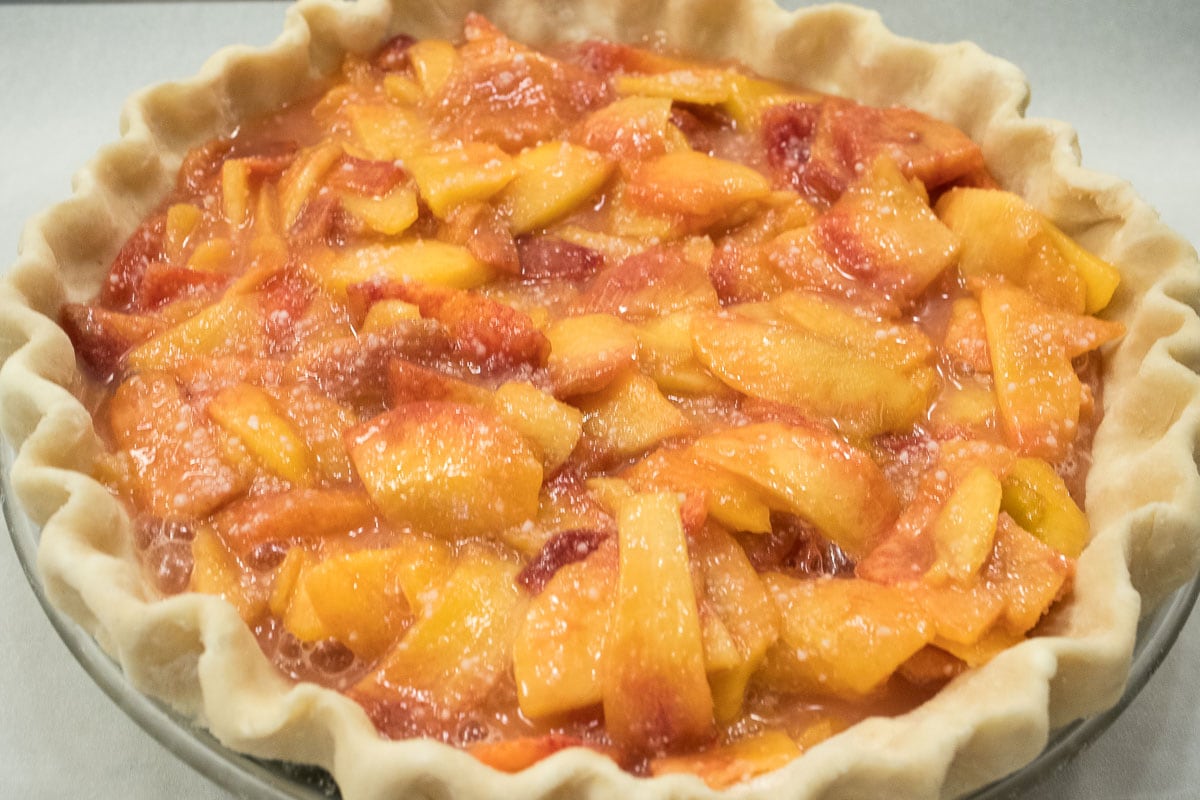
Step 3. Pour the filling into the pie crust.
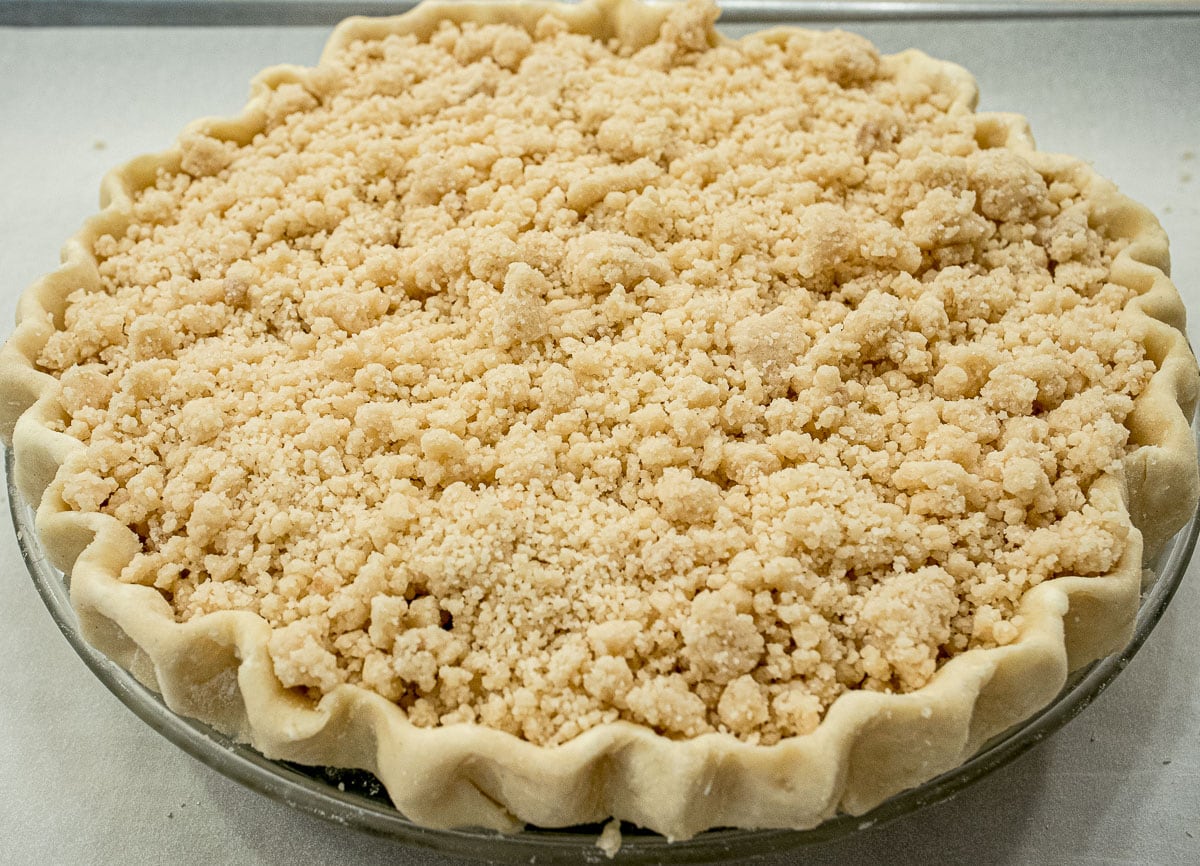
Step 4. Cover the peaches evenly with the crumbs.
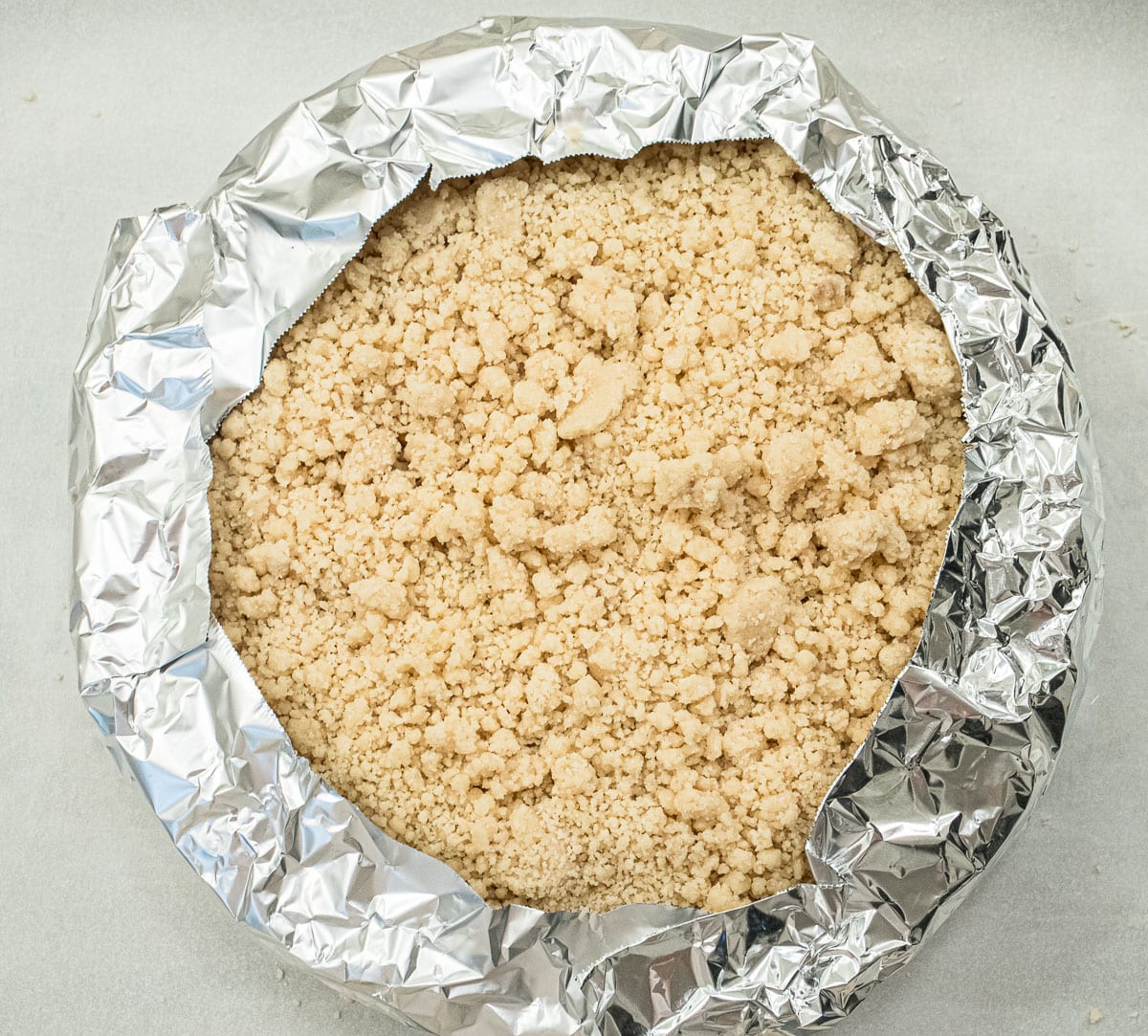
Step 5. The edges of the pie are covered with foil.
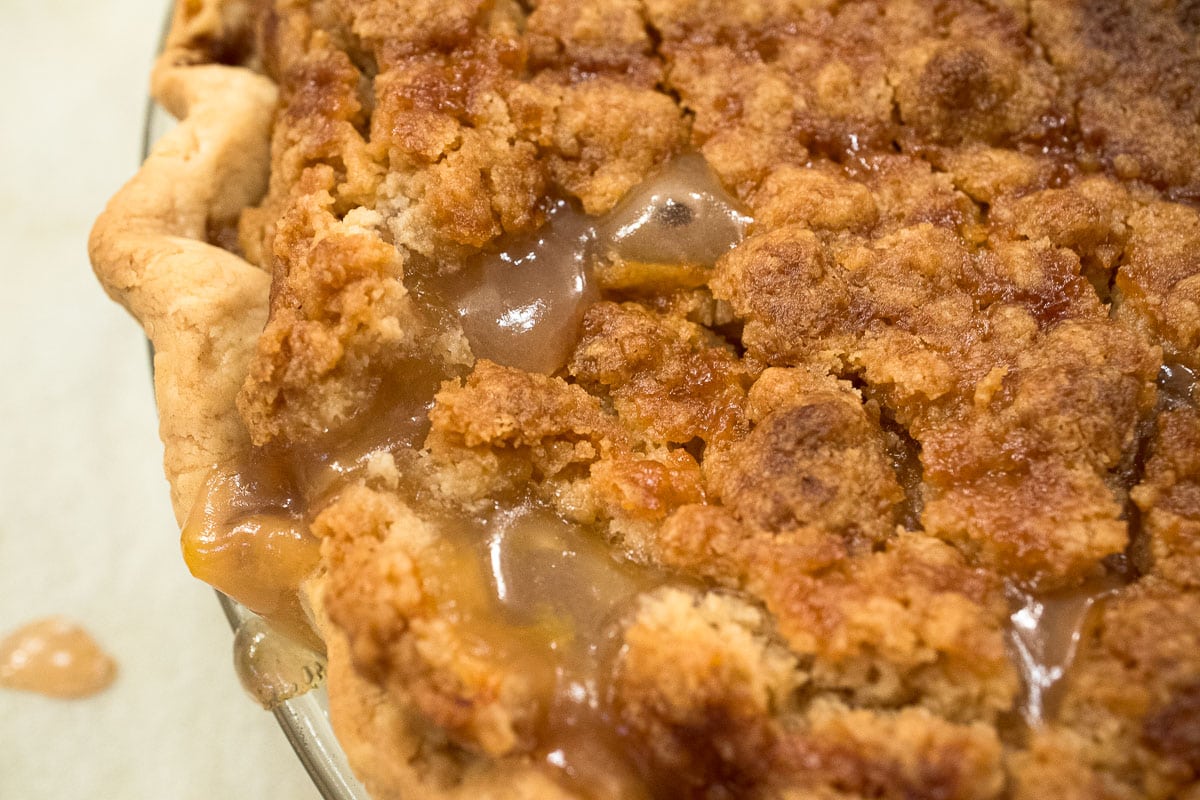
Step 6. The pie is baked until the filling bubbles up through the crumb crust.
Recipe FAQs
It depends upon whether the pie will be frozen. Cornstarch is often used for its shiny clarity and works well but cornstarch breaks down if frozen and thawed. Flour alone will work for freezing but it makes the pie a bit cloudy. For a thickener that will bake up to a jewel-like look, use half flour and half minute tapioca.
If you can get them, Red Haven. They are known as the dessert peach because they have exceptional flavor that takes well to cobblers, pies, jams and anything baked. Unfortunately, they are not often marked in stores as are apples.
One of two things could be the cause. There isn't enough thickening or it wasn't baked long enough for the thickener to activate. That is why with fruit pies, you look for the thickener to bubble up through the crust or crumbs.
Expert Tips
- Make sure everything is very cold or frozen hard as called for when making the pie crust. This will prevent the butter and from shortening being incorporated into the dough.
- The butter and shortening should be visible in the dough. That is what makes a flaky crust. When they melt, steam is produced making layers of dough. Think laminated doughs.
- When rolling out, make sure the dough is cold and lightly flour the work surface. You don't want to incorporate raw flour into the dough at this point.
- Be aware that thickeners require time and temperature to activate. Fruit pies are done when the filling bubbles thickly out of the crust.
- I prefer glass pie plates to metal because I can see if the bottom crust is browned. There is nothing that will ruin a pie like an unbaked crust.
- Pie shells can be made and frozen, well wrapped, for several months. Thaw in the refrigerator to use.
- Covering the edges of a pie that requires long baking prior to putting into the oven is easier and safer than halfway through baking. This is the method we used at the bakery. Tear pieces of foil 3" to 4" inches wide. Cover just the edge and under the lip of the pie plate. About 3 pieces are used for a 9" pie pan. Halfway through baking, use tongs to remove the foil.
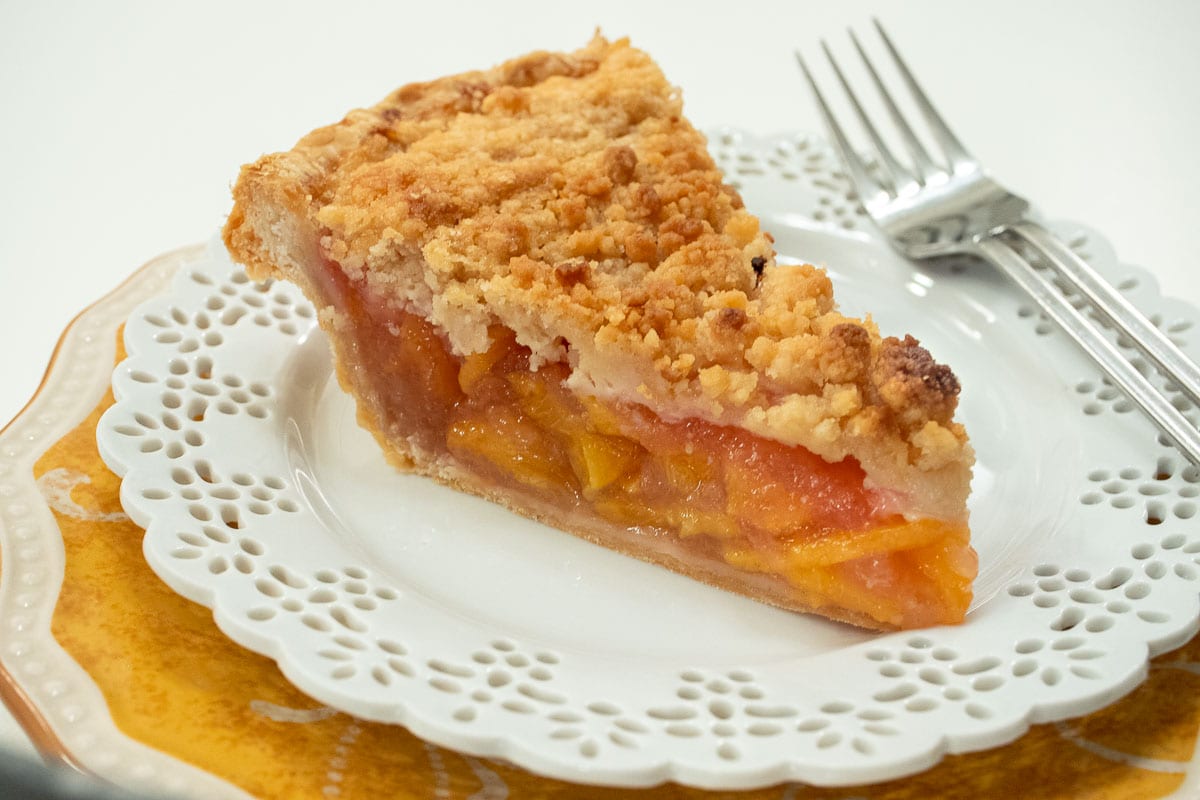
More Peach Recipes You'll Love
If you love this Dutch Peach Pie or any other recipe on my website, please please leave a 🌟 star rating in the recipe card and let me know how it went the in 📝 comments below. I appreciate each of you being here!
Dutch Peach Pie
Ingredients
Single Pie Crust
- 1 ¾ cups sifted cake flour (180 grams)
- ⅓ cup sifted all-purpose flour (40 grams)
- ¾ teaspoon salt
- 6 tablespoons butter, cut into pieces and frozen until hard
- 3 tablespoons shortening, like Crisco frozen and cut into pieces
- 2 tablespoons beaten egg
- 1 teaspoon lemon juice
- 5 tablespoons water, chilled and divided
Crumb Topping
- ½ cup unsalted butter, softened (114 grams, or 1 stick)
- ⅓ cup granulated sugar (65 grams)
- ⅓ cup packed dark-brown sugar (65 grams)
- ¼ teaspoon salt
- 1 ½ cups cake flour (190 grams)
Peach Pie Filling
- 3 pounds fresh peaches (1380 grams)
- 1 cup sugar (200 grams)
- 3 tablespoons all-purpose flour (40 grams)
- 3 tablespoons minute tapioca (28 grams)
- 2 tablespoons white Balsamic Vinegar
- 1 teaspoon vanilla or almond extract
Instructions
Single Crust
- I have a post that does a deep dive into the American Pie Crust with the functions of ingredients and step by step pictures.
- Cut the butter into 6 pats and cut those half. Measure the shortening in tablespoons. Freeze both of these hard.
- Place both flours and the salt in the processor bowl. Pulse several times to mix. Place the frozen butter evenly over the flour and pulse until the butter is in large pieces. Add the frozen shortening and to pulse several times.
- Combine the egg, lemon juice, and water. Pour in a circle over the processor contents. Pulse until it forms clumps. Pour out onto a lightly floured work surface. Push the clumps together into a ball. Knead 4 or 5 times for form a dough. Pat into a circle about 1 inch thick. Wrap in film and refrigerate a minimum of 2 hours or overnight.
- On a lightly floured surface, roll out to a circle approximately 13 inches. Place in the pie pan and fit into corners. Cut the overhang an even 1 inch all the way around. Tuck the crust under and flute the edges.
- Chill well. This can be made the day before and refrigerated or frozen. Thaw in the refrigerator if frozen.
Crumb Topping
- Combine the butter and both sugars in a mixer. Cream until very light. Combine the salt and flour; add all at once and beat on medium just until large crumbs form. Scrape down the sides and the bottom for unincorporated flour. Mix briefly.
- Do not over mix or you will end up with a really thick cohesive mixture. Store the crumbs in the refrigerator while you make the filling. This can be made a day ahead if desired. Refrigerate until needed.
Peach Pie Filling
- Preheat the oven to 400°F. Line a half sheet pan with parchment.
- About 20 minutes before filling the pie, combine the sugar, flour, and tapioca.
- Add the balsamic vinegar and extract to the fruit. Pour the dry ingredients over the fruit and mix well.
- Place the pastry shell on the lined sheet pan and pour in the filling. Cover the fruit with the crumbs. Foil the edges of the crust to prevent burning.
- Bake for 45 minutes then remove the foil. This is easiest done with tongs. Continue baking for about 45 minutes more until the crust is browned and the peaches are beginning to bubble around the edges. Lightly tent with top with foil if the crumbs are browning too much.
- Cool the Dutch Peach Pie before serving, although I love it slightly warm. If you make it the day ahead, just microwave the slices briefly.
Notes
- The combination of instant tapioca and flour is the ideal combination for thickening most pies. It is the one we used in the majority of our deep dish pies at the bakery. It soft sets the filling while keeping it firm and upright and gives the fruit a bright, jewel like appearance when baked.
- The reduced sugar intensifies the peach flavor by not masking it with sweetness. It really does make a difference.
- A combination of butter is used for flavor and the shortening is used for flakiness in the pie crust.
- Make sure everything if very cold or frozen hard as called for when making the pie crust. This will prevent the butter and shortening from being incorporated into the dough when processed.
- Pieces of the butter and shortening should be visible in the dough. That is what makes a flaky crust. When they melt, steam is produced making layers of dough. Think laminated doughs.
- When rolling out, make sure the dough is cold and lightly flour the work surface. You don't want to incorporate raw flour into the dough at this point.
- Be aware that thickeners require time and temperature to activate. Fruit pies are done when the filling bubbles out of the crust thickly.
- I prefer standard size glass pie plates to metal because I can see if the bottom crust is browned. There is nothing that will ruin a pie like an unbaked crust.
- Pie shells can be made and frozen, well wrapped, for several months. Thaw in the refrigerator to use.
- Covering the edges of a pie that requires long baking prior to putting into the oven is easier and safer than halfway through baking. This is the method we used at the bakery. Tear pieces of foil 3" to 4" inches wide. Cover just the edge and under the lip of the pie plate. About 3 pieces are used for a 9" pie pan. Halfway through baking, use tongs to remove the foil.
- Storage: The pie can be served warm or at room temperature. It can be held at room temperature. The baked pie can also be frozen, well wrapped for several months. Thaw in the refrigerator overnight. Freshen by placing the pie back in the pie pan if frozen without it. Place it in a 350°F oven. Tent the top with foil and heat for 20 to 25 minutes.
Nutrition
Spritz Bars - Easier than The Cookies
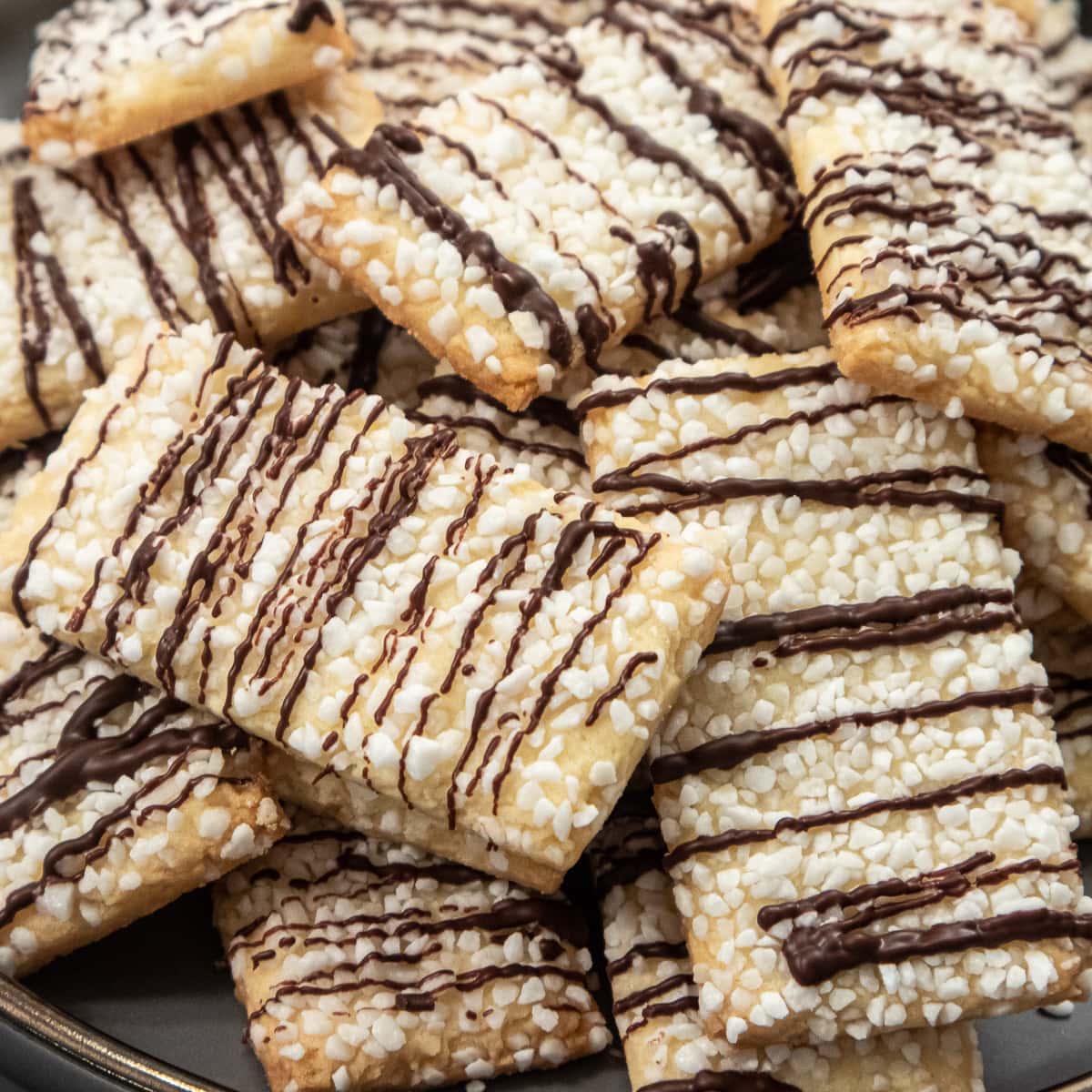
Spritz Bars are a faster way to make Spritz cookies all dressed up with Swedish Pearl Sugar and drizzled in chocolate. With October being cookie month, I wanted to bring you a cookie that’s not in my new book, Craving Cookies.
Because I wanted the Spritz Bars to hold their shape, they require a bit more flour. Other than that, they are the same.
Swedish Pearl Sugar
I love using Swedish Pearl sugar for its pure white pebbles that don’t melt under heat. They add a wonderful crunch to cookies. They can be found online. I use Lars, but there are other brands available. Don’t confuse the Swedish Pearl Sugar with the Belgium Pearl Sugar as those sugar crystals are much larger.
These Spritz Bars will make a great addition to your Christmas Cookies.
Ingredients
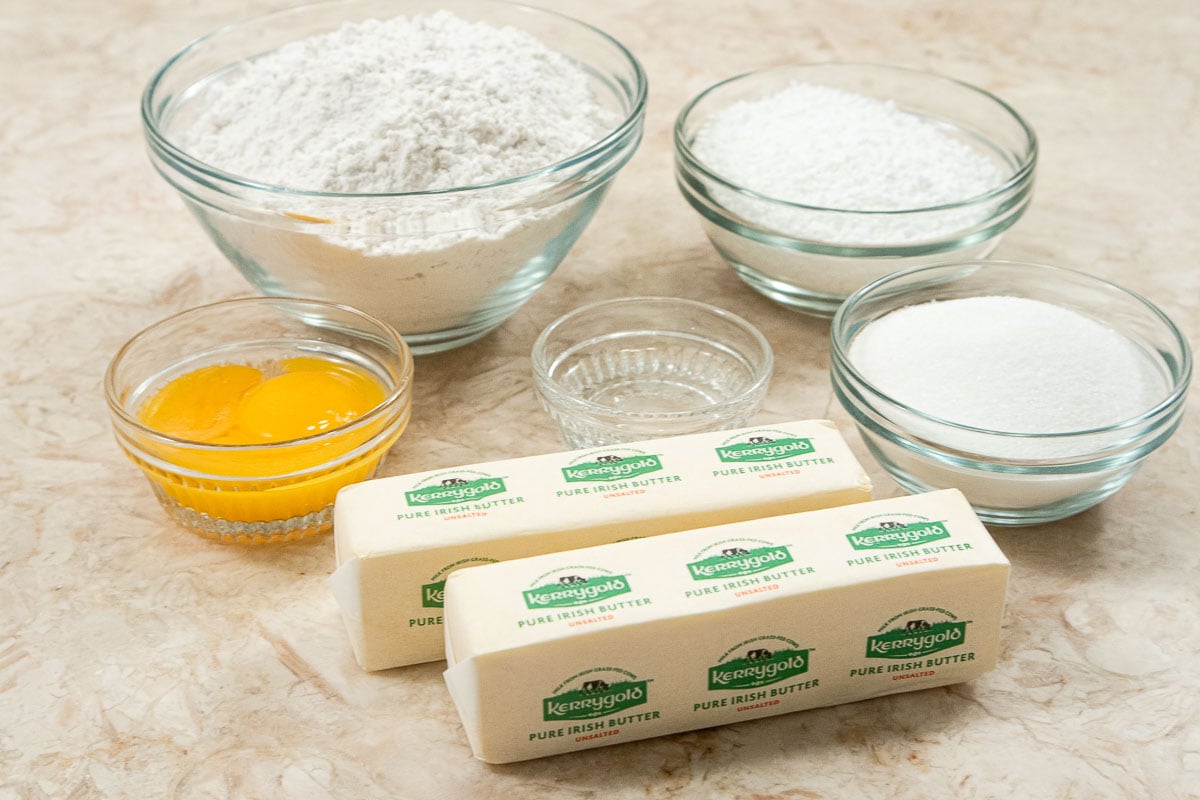
BACK ROW: Cake Flour, Swedish pearl sugar
MIDDLE ROW: Egg Yolks, almond extract, granulated sugar
FRONT ROW: European Butter
Recipe Ingredients
1 cup unsalted European butter, softened (225 grams, 8 ounces or 2 sticks)
½ cup granulated sugar (100 grams or 3 ½ ounces)
1 tablespoon almond extract
2 egg yolks
3 cups cake flour (375 grams or 13 ⅛ ounces)
Swedish Pearl sugar (about 225 grams or 8 ounces)
2 to 3 ounces semisweet chocolate (85 grams)
Instructions
Step 1. Preheat the oven to 350°F / 175°C. Line several baking pans with parchment paper and set aside.
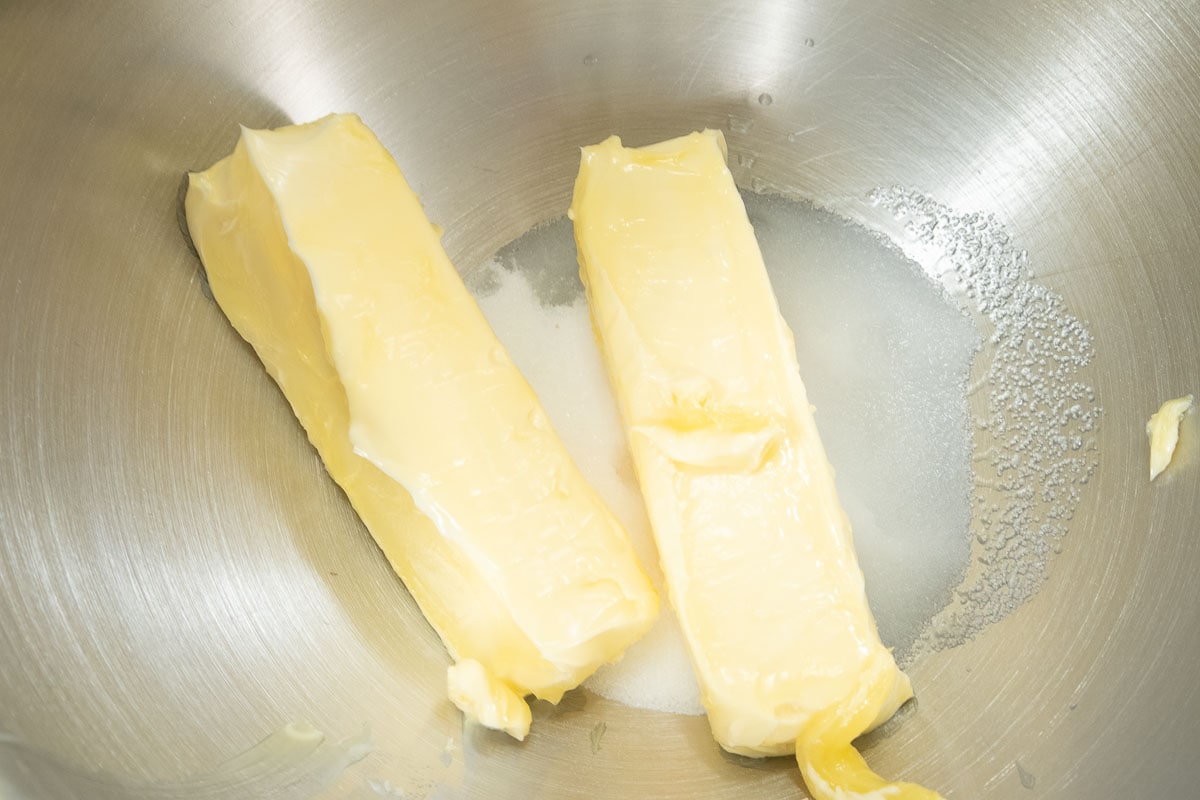
Step 2. Place the butter, sugar, and almond extract in a mixing bowl. Cream until combined.
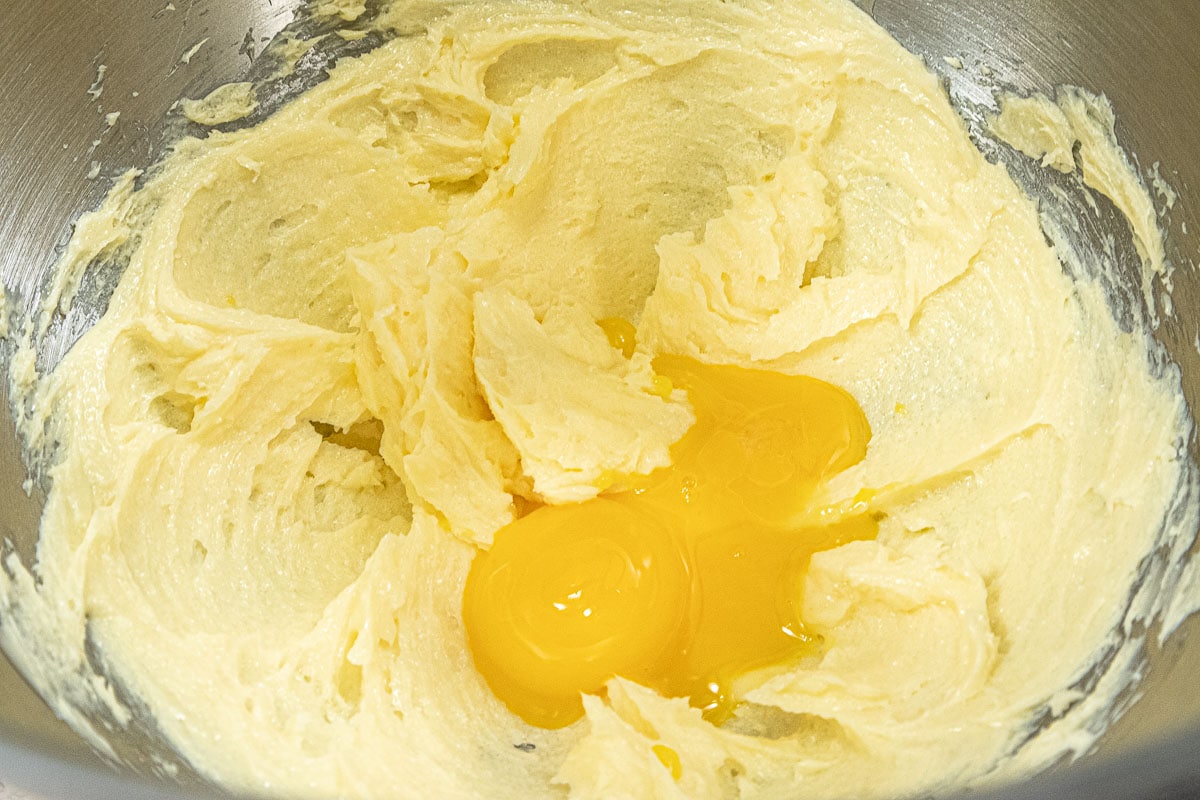
Step 3. Add the egg yolks and beat until light.
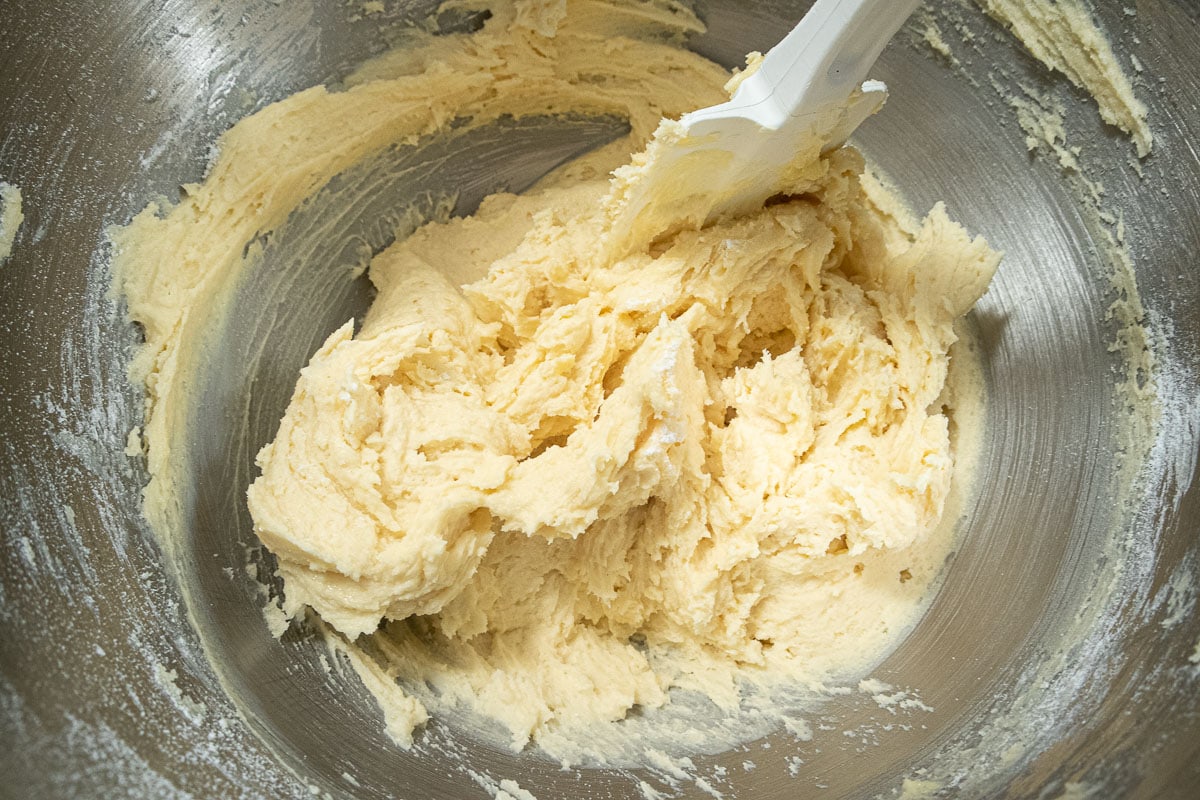
Step 4. Add the flour gradually and beat until everything is well blended. The dough will be a bit sticky. That is how it should be.
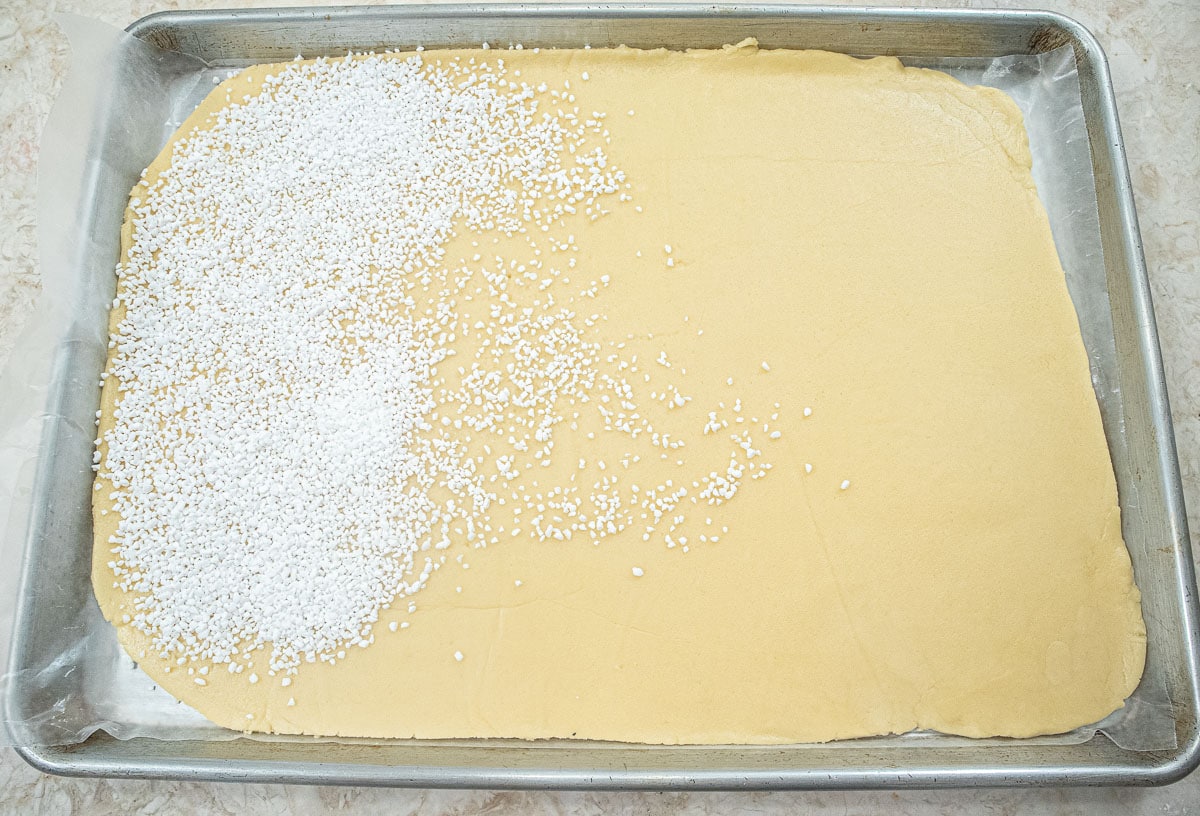
Step 5. Cut off two pieces of wax paper or foil large enough to overhang the pan by a couple of inches on both sides. Roll the dough between wax paper to 18”x13”. It will be about ⅛” thick. Place it in a half sheet pan.
Alternatively, divide the dough in half and roll each piece into a 9x13” rectangle.
Whichever you decide, cover the dough with the pearl sugar and press in firmly.

Step 6. Cover the dough completely with pearl sugar, pressing it into the dough slightly. Place in the freezer until partially, but not completely frozen. It should be firm.
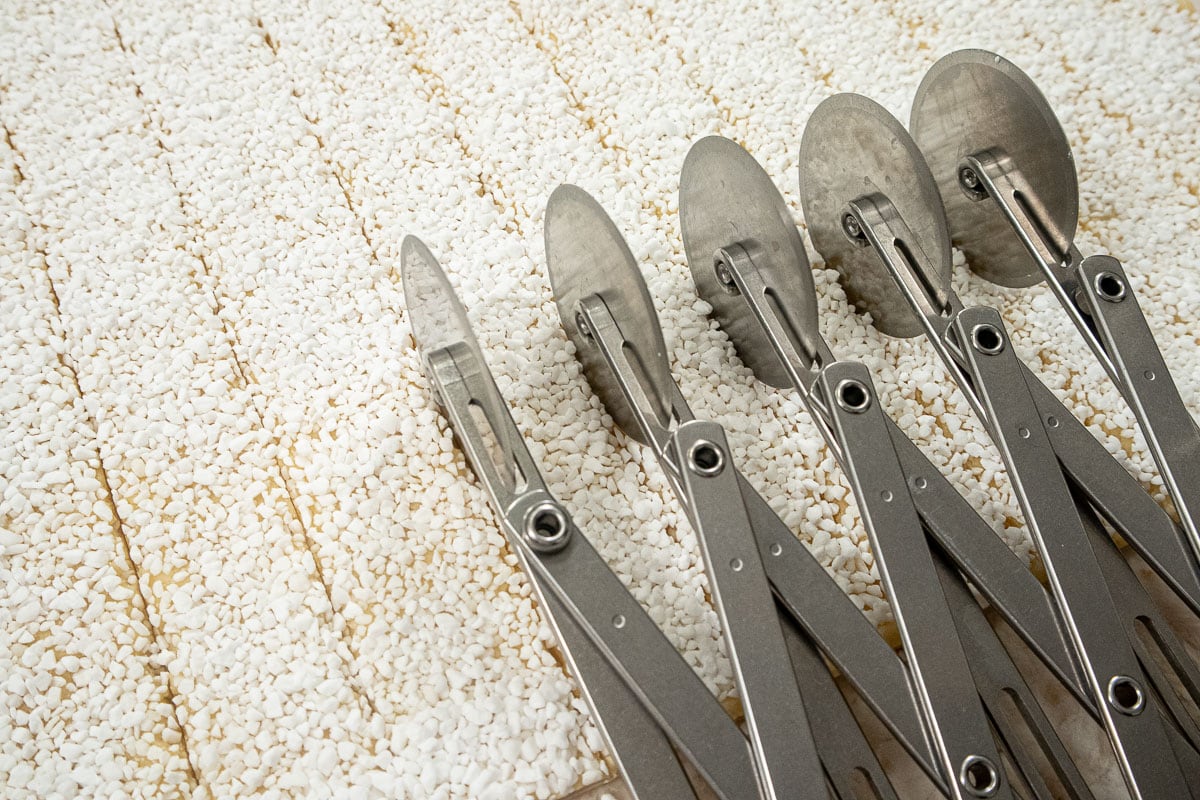
Step 7. Cut the dough into 2 ½ x 1 ¼ inch rectangles. I used the cookie dough cutter that I talked about in the Oreo Taco post. I love it for it’s ease of cutting identical size bars. Cut lengthwise into 1 ¼” strips. Adjust the size to 2 ½” and cut crosswise. Done!
The bars can also be cut with a ruler and knife. In either case, the dough must be cold and firm.
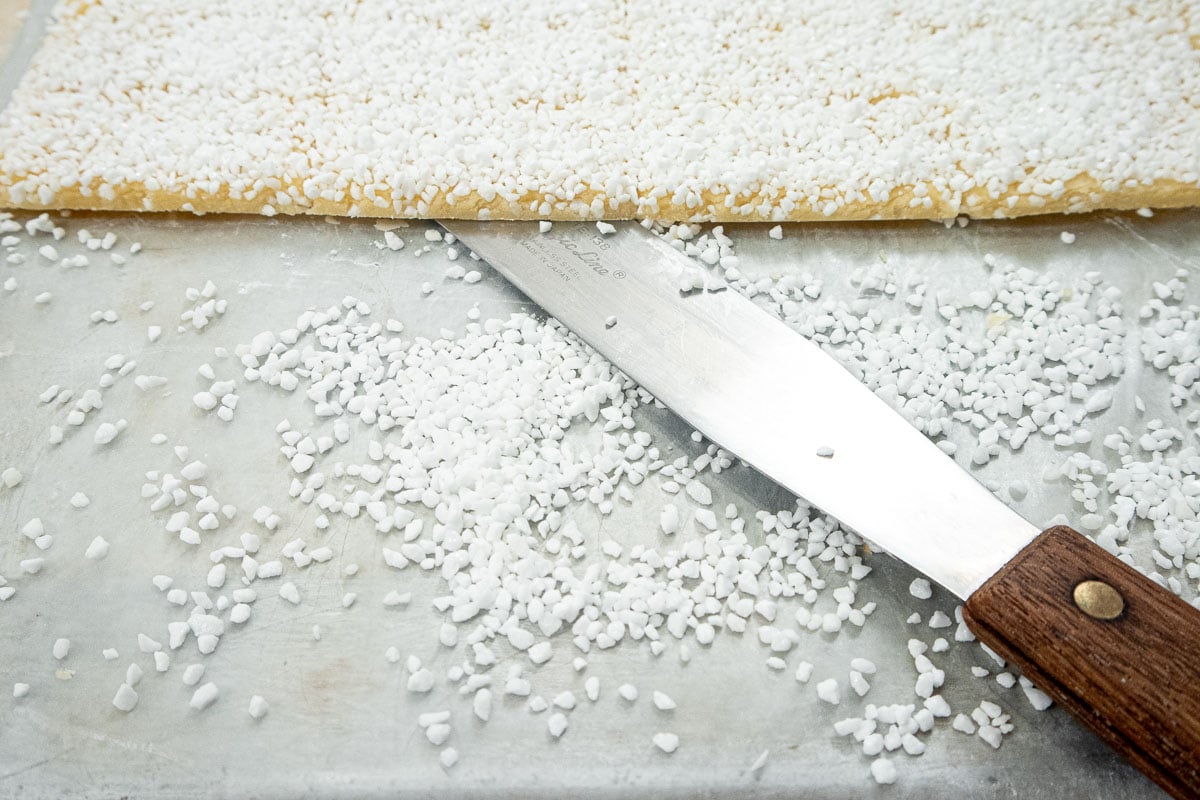
Step 8. When ready to bake, run a spatula under the cookies to free them from the paper.
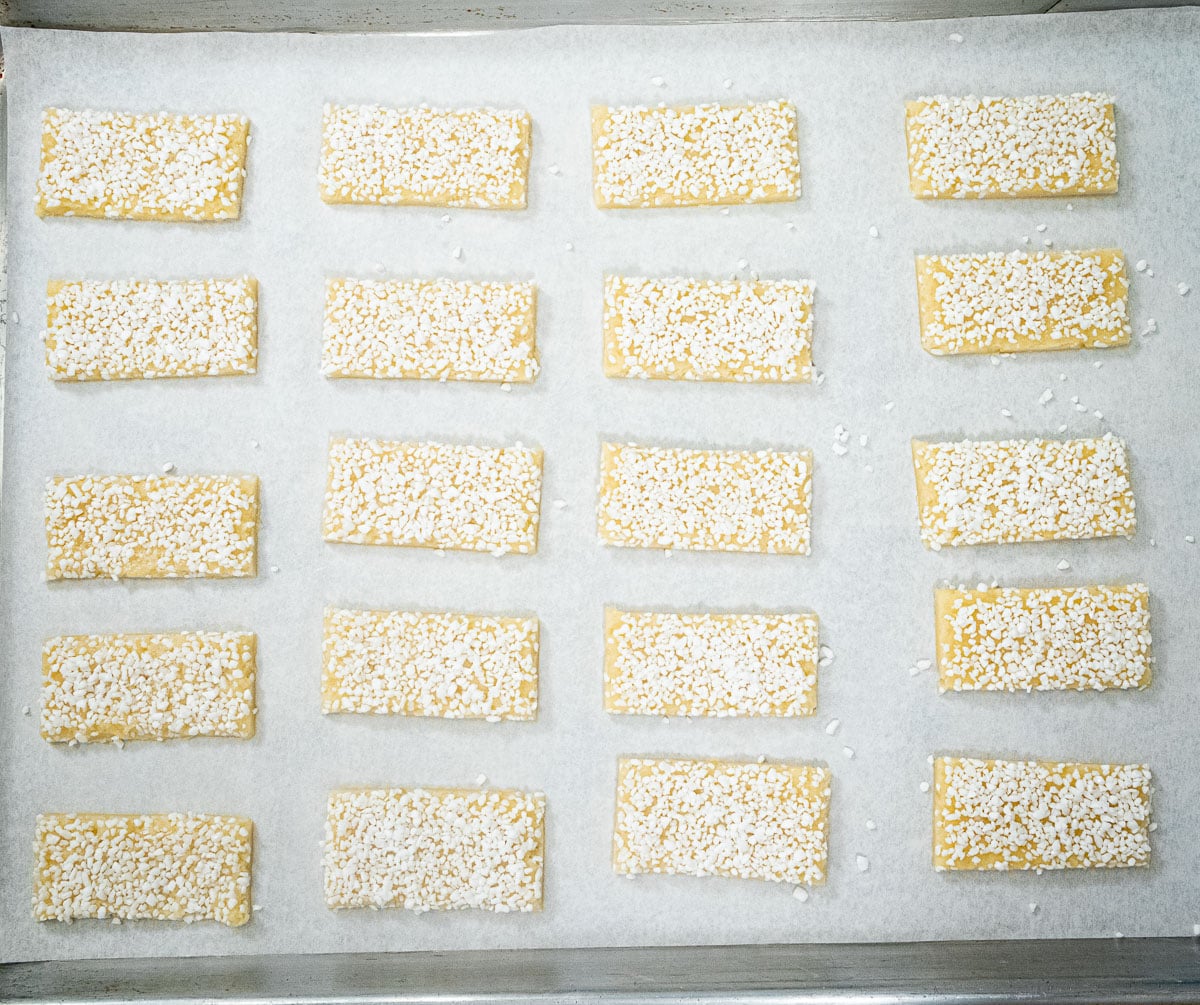
Step 9. Most likely, they will come off about 2 to 4 at a time. Break them along the cutting lines and place them 4 wide x 4 down on half sheet pans.
Freeze the Spritz Bars until hard. When ready to bake, run a spatula under the cookies to free them from the paper.Most likely, they will come off about 2 to 4 at a time. Break them along the cutting lines and place them 4 wide x 4 down on half sheet pans.
Bake for 12 to 14 minutes until just browning on the edges. Do not overbake.
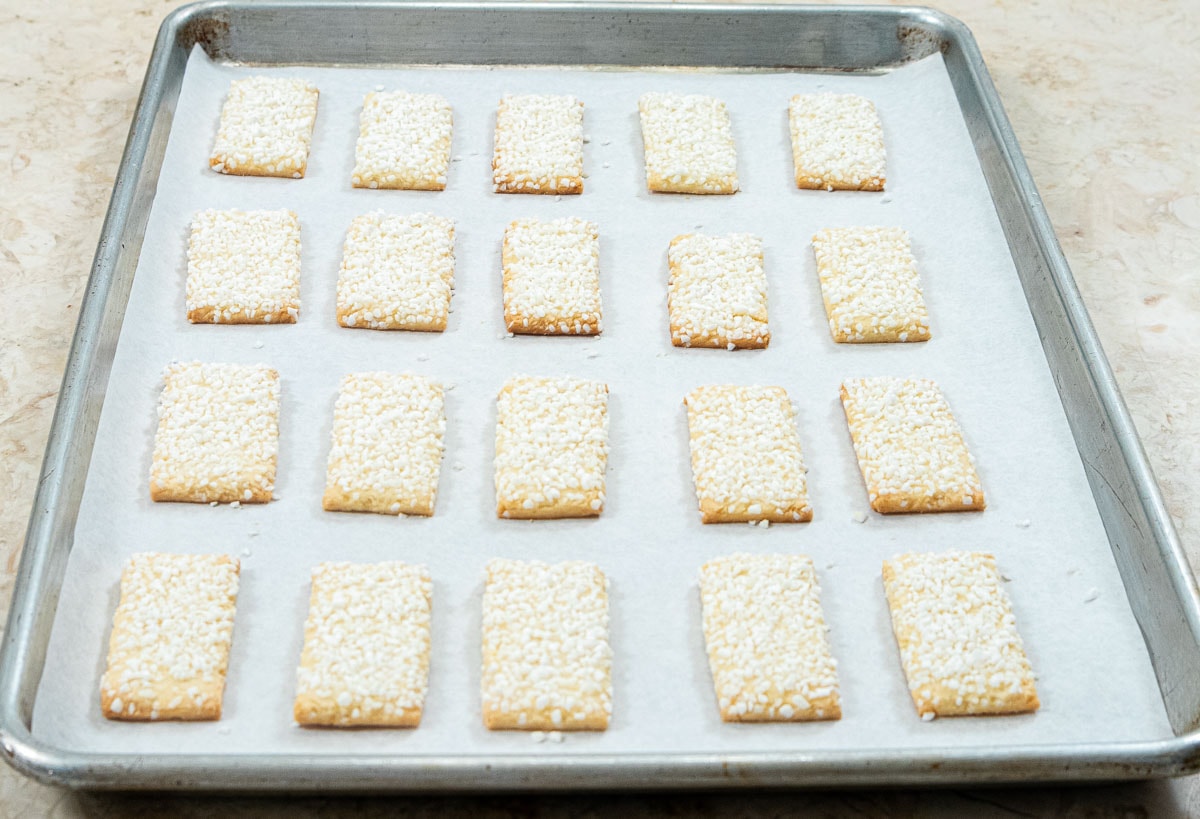
Step 10. Cool the baked bars in the pans.
To Finish
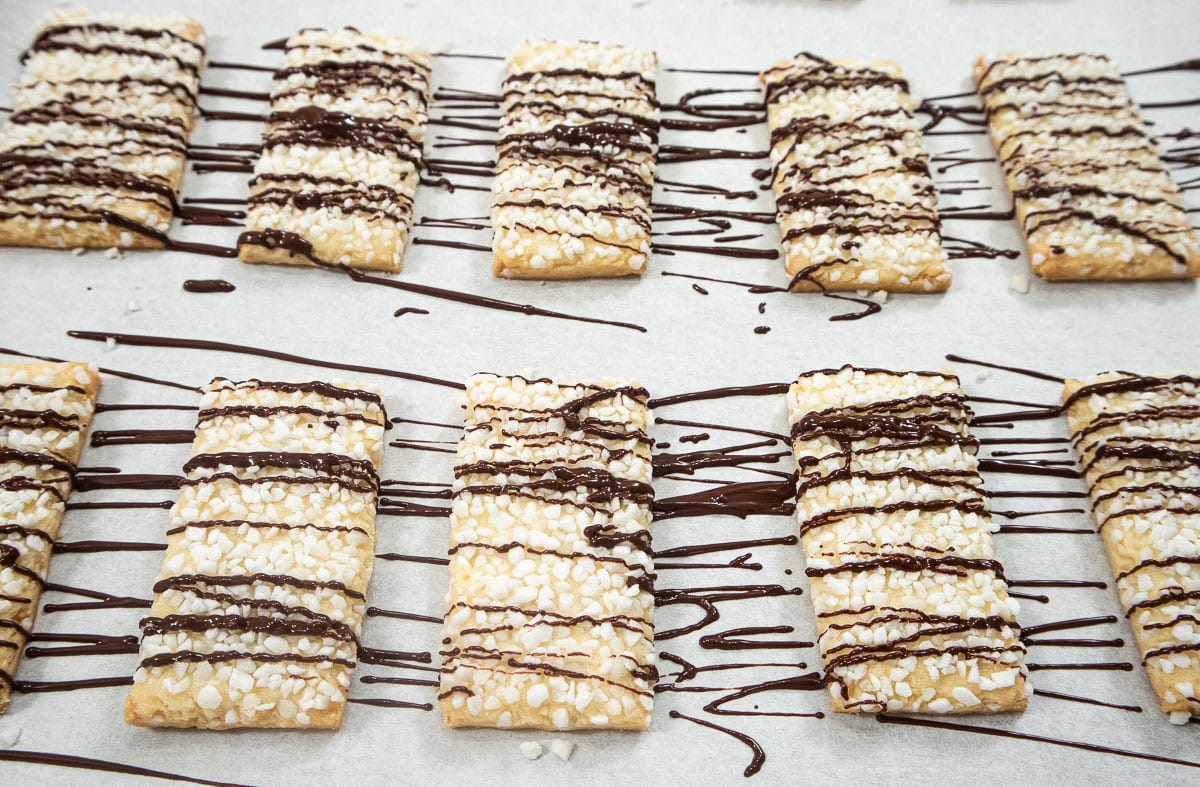
Step 1. Melt the semisweet chocolate at half power in the microwave or over simmering water. Drizzle it over the cookies. Allow the chocolate to set up before storing them.
Yield: Approximately 48 Spritz Bars
Storage: Let the chocolate set up completely. Stack with paper between them in a closed tin where they will last for weeks.
Note: These Spritz Bars are actually better if they are stored for a few days in the tin. The size of the bars can be made larger or smaller as you choose. When you break them apart, some of the Swedish Pearl sugar will fall off. Save this as it can be used later.
The bars can also be cross cut again to make square cookies. Adjust the size as desired.
Spritz Bars
Ingredients
- 1 cup unsalted European butter, softened (225 grams, 2 sticks)
- ½ cup granulated sugar (100 gramss)
- 1 tablespoon almond extract
- 2 egg yolks
- 3 cups cake flour (375 grams)
- Swedish Pearl sugar (about 225 grams
- 2 to 3 ounces semisweet chocolate (85 grams)
Instructions
INSTRUCTIONS
- Preheat the oven to 350°F / 175°C. Line several baking pans with parchment paper and set aside.
- Place the butter, sugar, and almond extract in a mixing bowl. Cream until combined.
- Add the egg yolks and beat until light.
- Add the flour gradually and beat until everything is well blended. The dough will be a bit sticky. That is how it should be.
- Cut off two pieces of wax paper or foil large enough to overhang the pan by a couple of inches on both sides. Roll the dough between wax paper to 18”x13”. It will be about ⅛” thick. Place it in a half sheet pan.
- Alternatively, divide the dough in half and roll each piece into a 9x13” rectangle.
- Whichever you decide, cover the dough with the pearl sugar and press in firmly.
- Cover the dough completely with pearl sugar, pressing it into the dough slightly. Place in the freezer until partially, but not completely frozen. It should be firm.
- Cut the dough into 2 ½ x 1 ¼ inch rectangles. I used the cookie dough cutter that I talked about in the Oreo Tacos post. I love it for it’s ease of cutting identical size bars. Cut lengthwise into 1 ¼” strips. Adjust the size to 2 ½” and cut crosswise. Done!
- The bars can also be cut with a ruler and knife. In either case, the dough must be cold and firm.
- When ready to bake, run a spatula under the cookies to free them from the paper.
- Most likely, they will come off about 2 to 4 at a time. Break them along the cutting lines and place them 4 wide x 4 down on half sheet pans.
- Freeze the Spritz Bars until hard. When ready to bake, run a spatula under the cookies to free them from the paper.Most likely, they will come off about 2 to 4 at a time. Break them along the cutting lines and place them 4 wide x 4 down on half sheet pans.
- Bake for 12 to 14 minutes until just browning on the edges. Do not overbake.
TO FINISH
- Melt the semisweet chocolate at half power in the microwave or over simmering water. Drizzle it over the cookies. Allow the chocolate to set up before storing them.
- Yield: Approximately 48 Spritz Bars
Notes
Nutrition
Crumb Topping
There's nothing like a Crumb Topping for muffins, pies, coffee cakes, cakes, bar cookies, and quick breads. And with this recipe there is no more pinching dough together to make crumbs. Just follow the directions for either the processor or mixer version and you will have a pile of crumbs in less than 30 minutes to use as you wish.
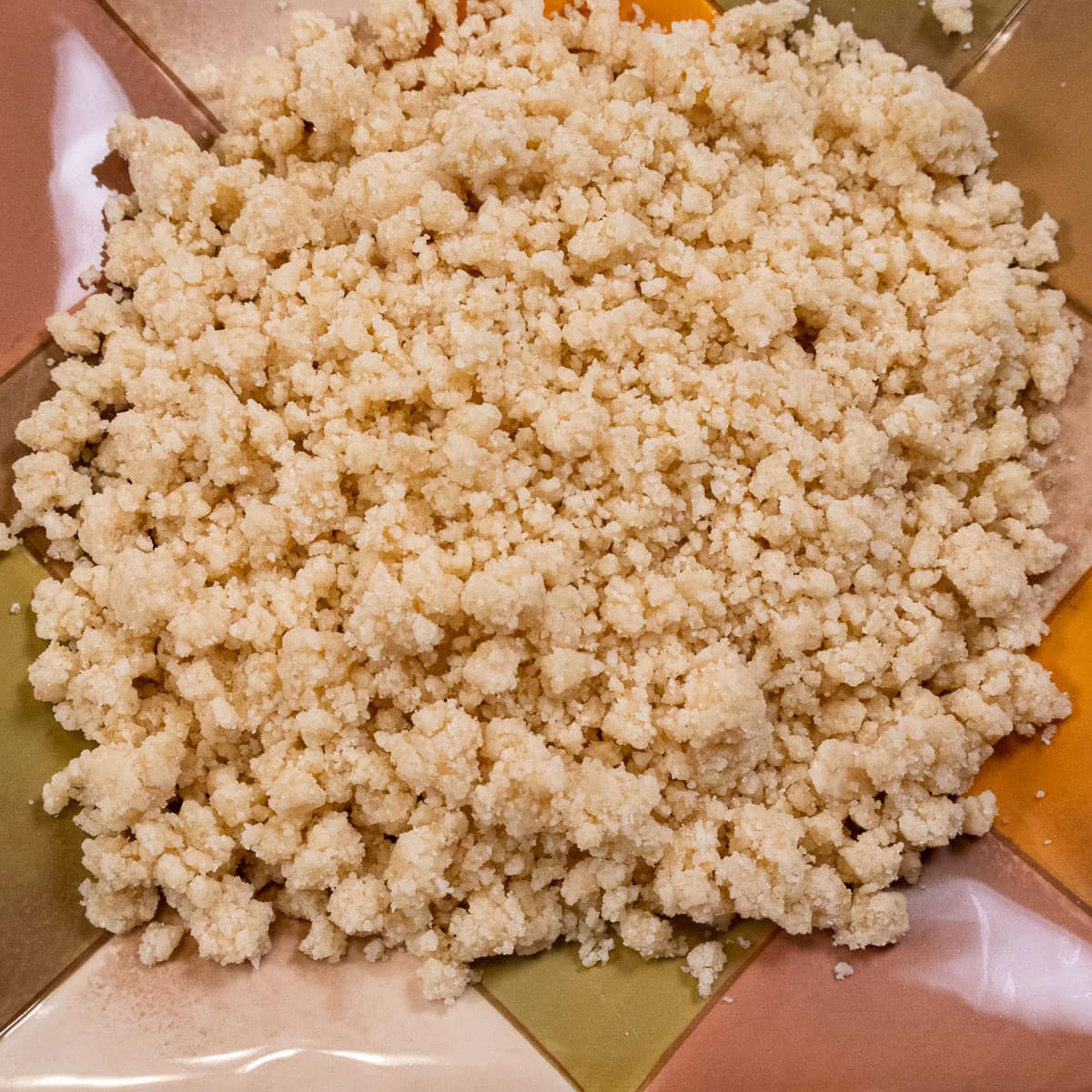
Just five ingredients to make the crumbs that can be frozen for future use. This can't be easier for perfect results every time.
Sometimes there are left over crumbs. See below for Baked Crumb Topping.
If you are wondering what the difference is between crumb topping and streusel, not much is the answer. Both are crumb toppings containing the same ingredients but streusel often has more sugar, cinnamon, nuts and or oats included.
I have used these crumbs on the New York Syle Crumb Cake, Strawberry Muffins, Cuccidati Coffeecake and Crumb Cake Doughnuts as well as other recipes.
[feast_advanced_jump_to]Why You'll Love This Recipe
- The crumbs use 5 ingredients that are probably in your pantry now.
- They can be made in either the mixer or a processor. I think the crumbs are lighter in the processor but either mixing methods works.
- These can be frozen so they are always on hand whenever needed.
- I can't imagine an easier recipe to make.
- The crumbs take 30 minutes or less to make.
Crumb Topping Ingredients

COUNTERCLOCKWISE: Unsalted butter, cake flour, brown sugar, salt, granulated sugar.
Be sure to see the recipe card below for the full ingredients and instructions.
Step by Step Instructions
Food Processor Method
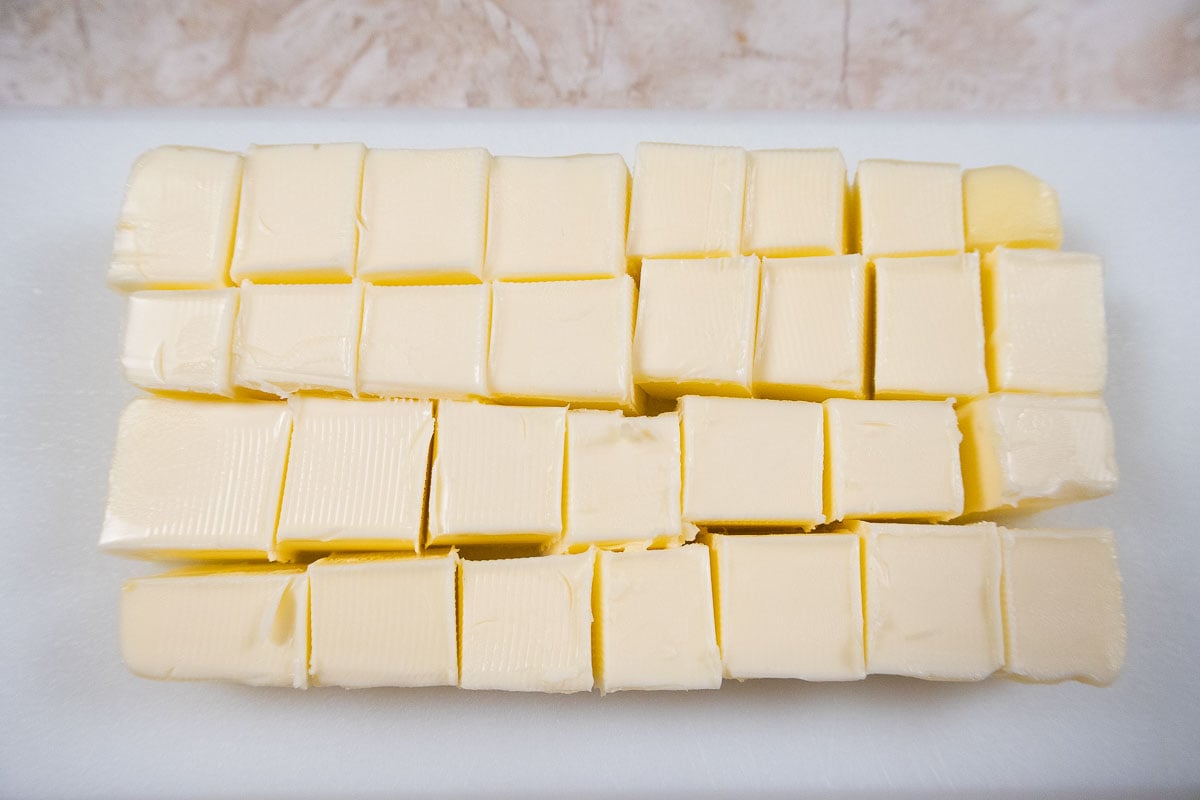
Step 1. The cold butter is cut into pieces. Keep the butter cold.
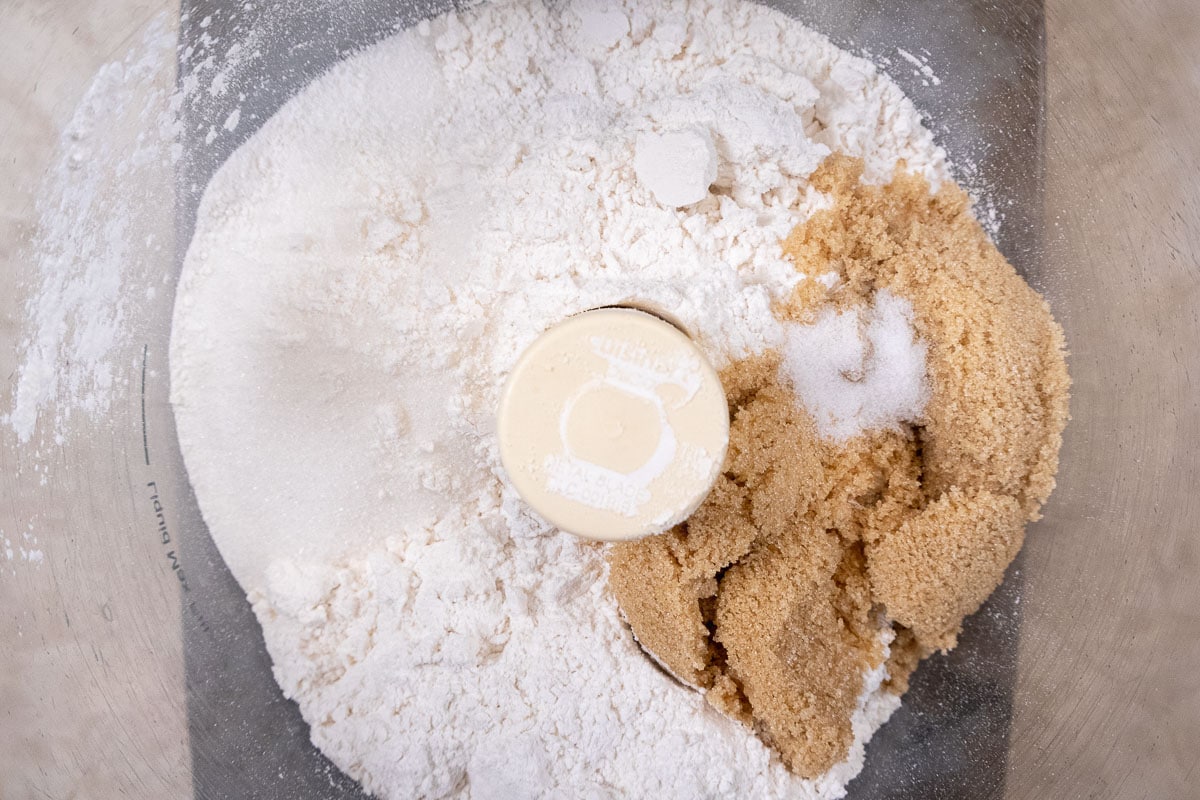
Step 2. Place all of the dry ingredients in the bowl of a food processor.
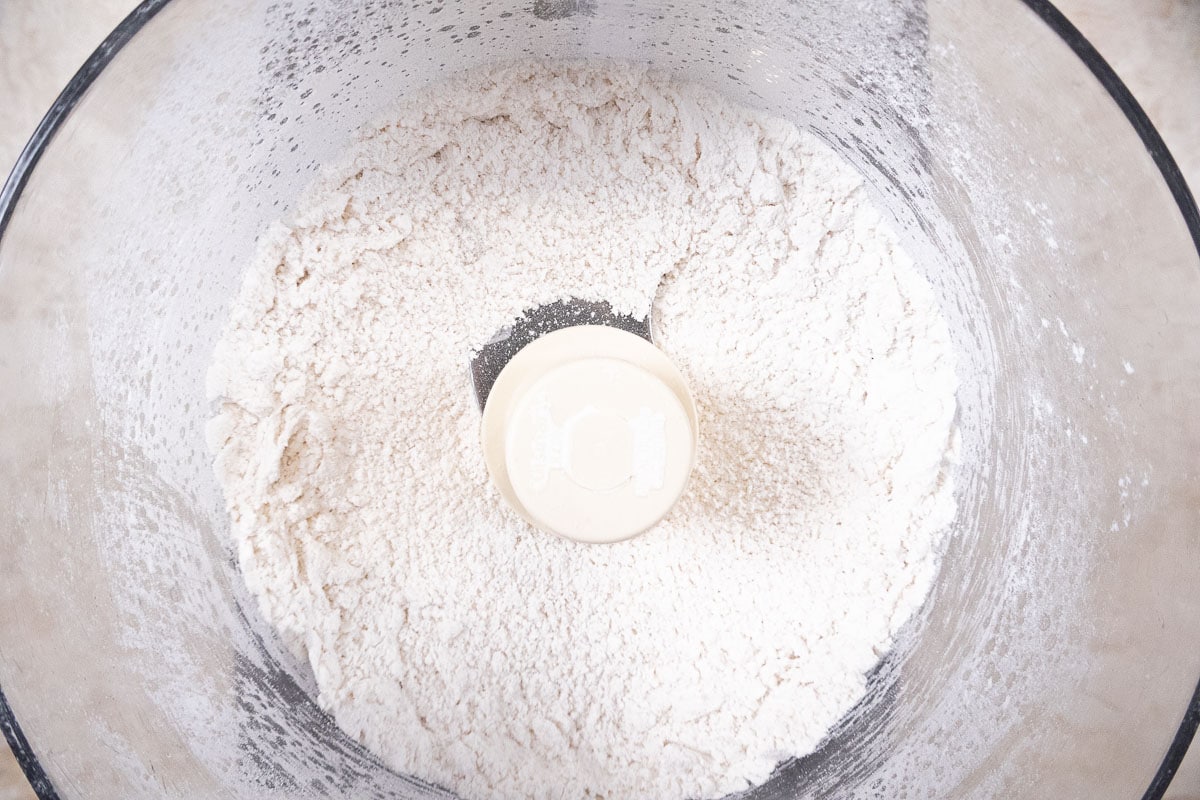
Step 3. Process the dry ingredients to combine them.
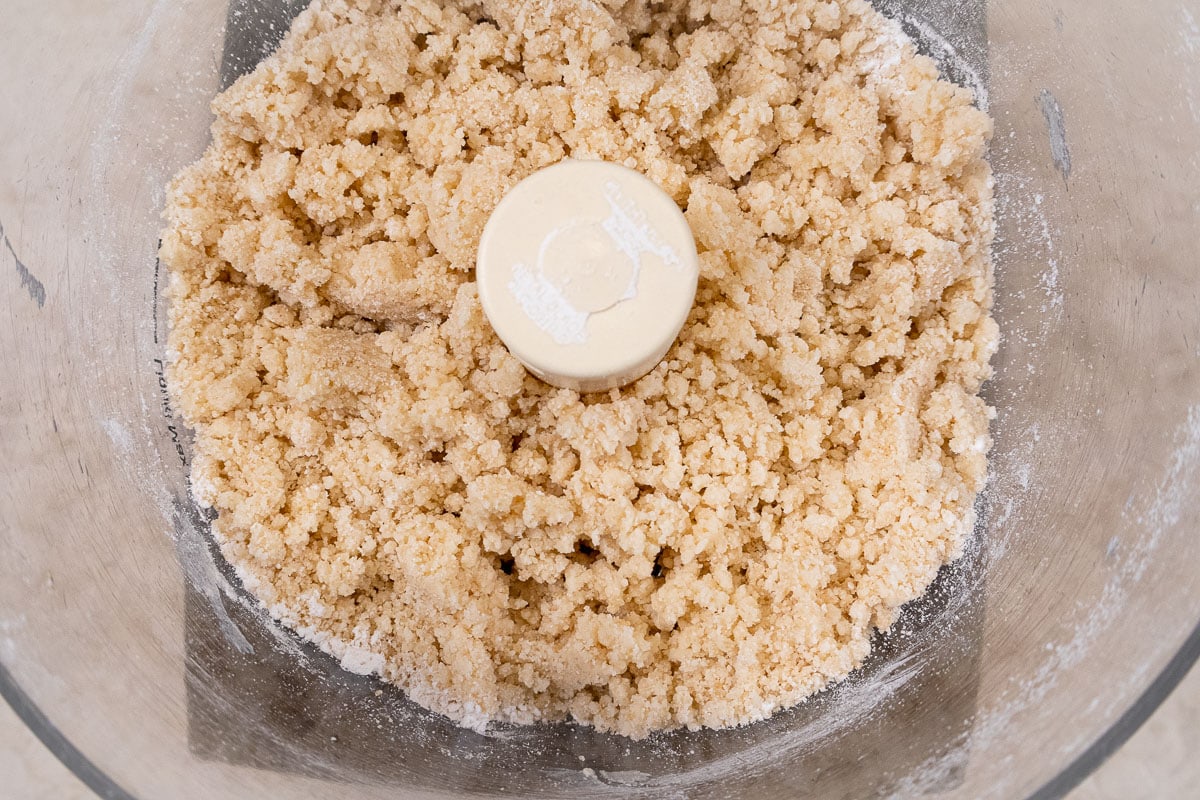
Step 4. Place the butter over the dry ingredients and pulse the processor until the crumbs form. Do not over process or a paste will form.
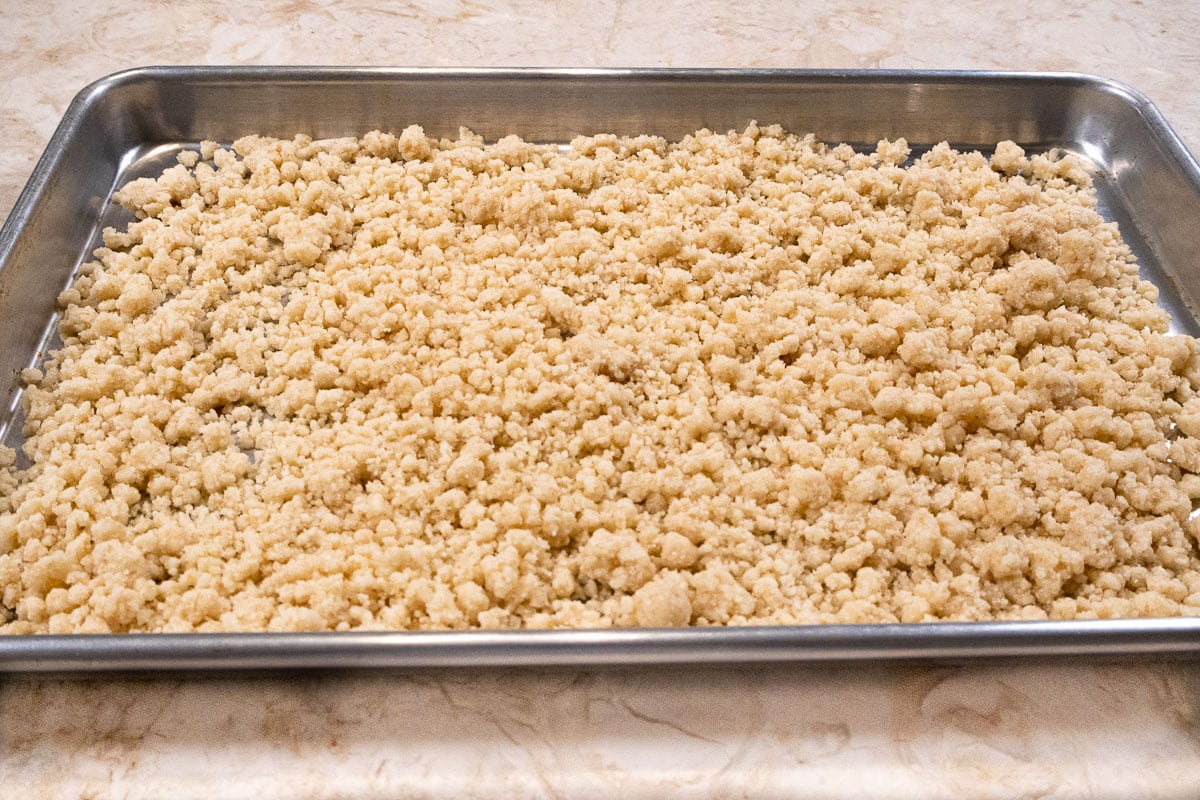
Step 5. If freezing, place the crumbs on a tray and freeze hard. Place in a freezer bag where they will last several months.
Mixer Method
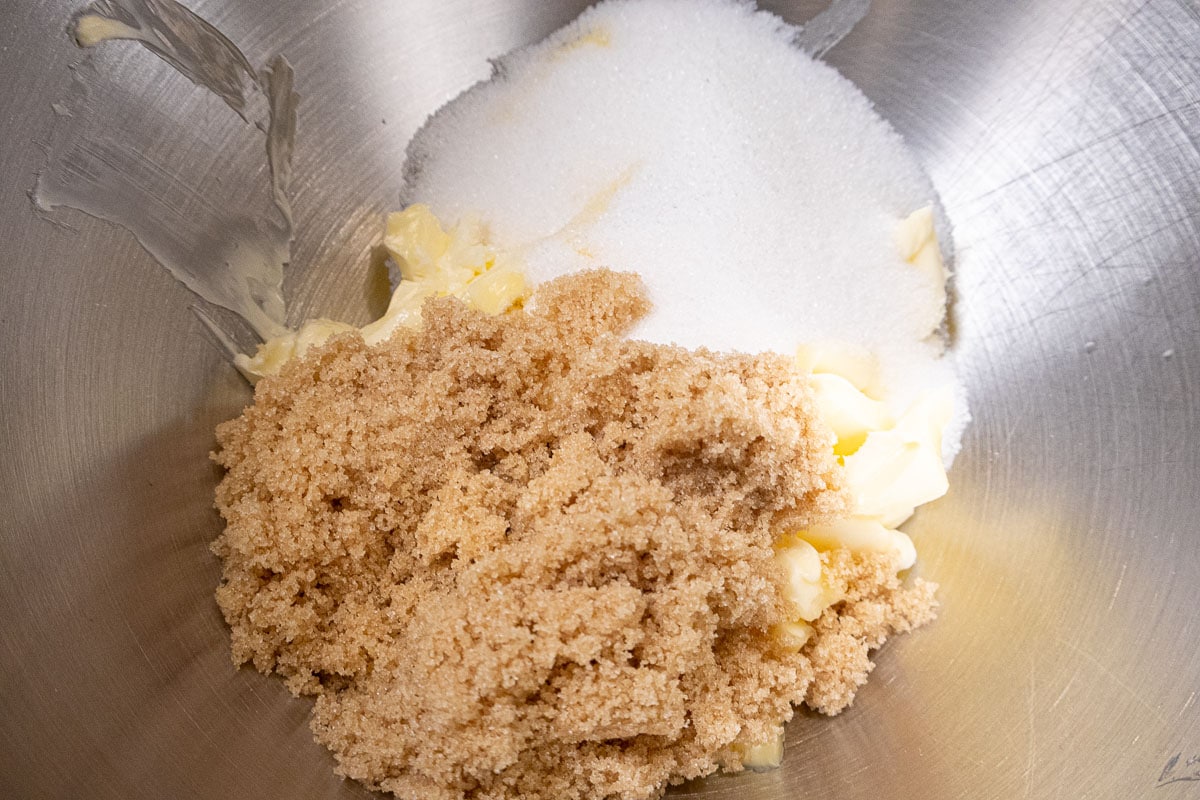
Step 1. For this version the butter should be softened. Place the butter and both sugars in the mixing bowl.
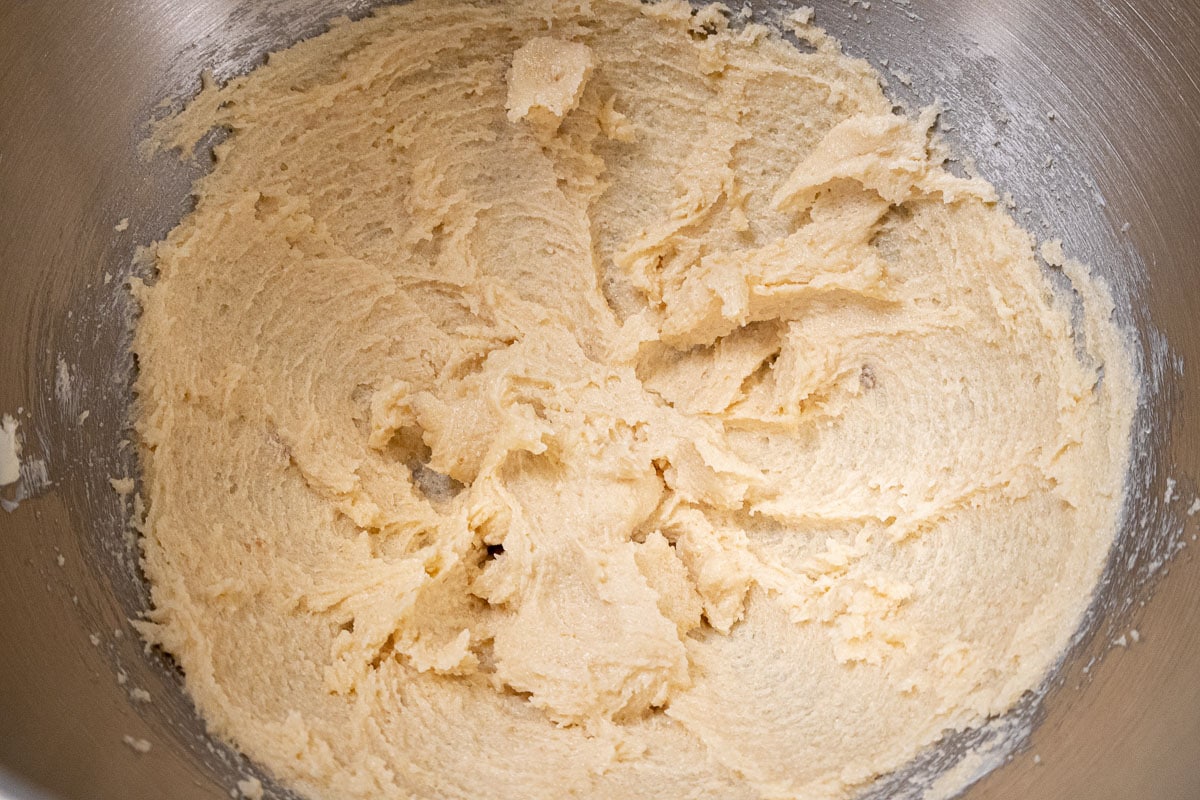
Step 2. Cream the mixture until light, scraping down as necessary. Do not use the scraper blade for this recipe. Use the normal paddle.
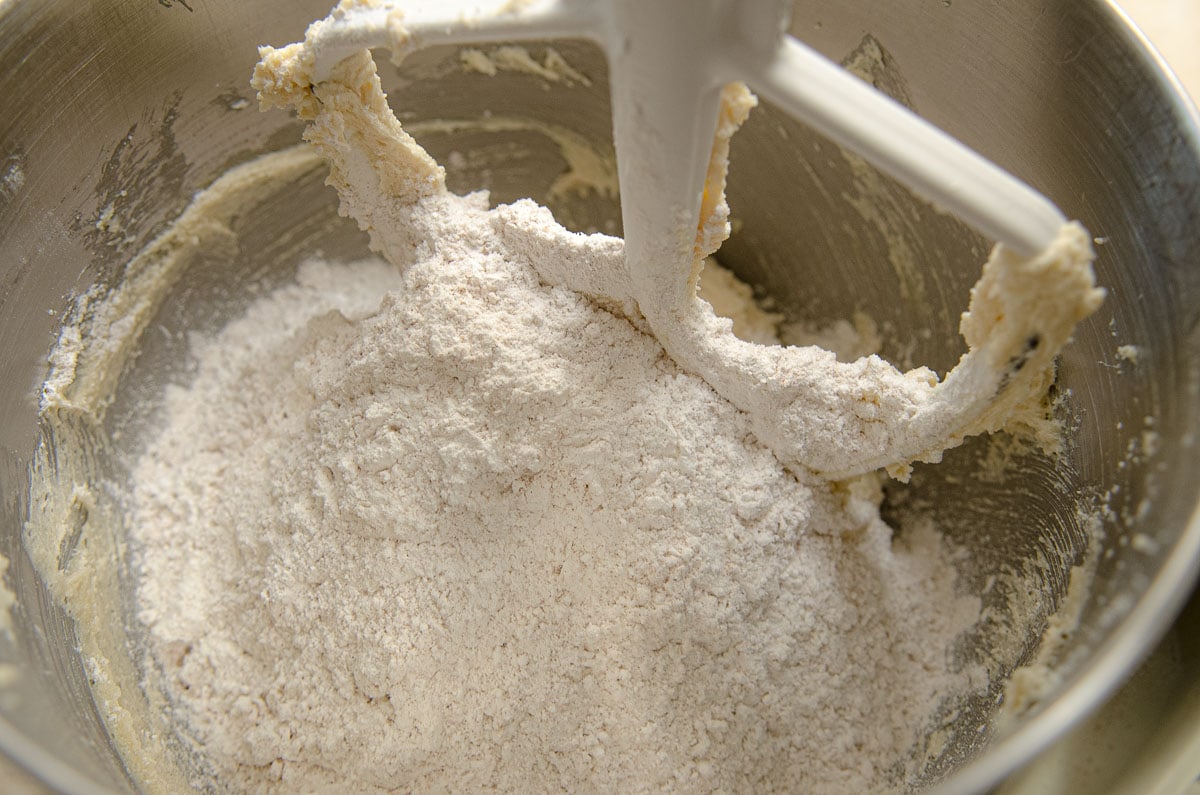
Step 3. The flour and salt are mixed and added to the flour to the mixing bowl. Mix on low to combine, raise to medium to make the crumbs.
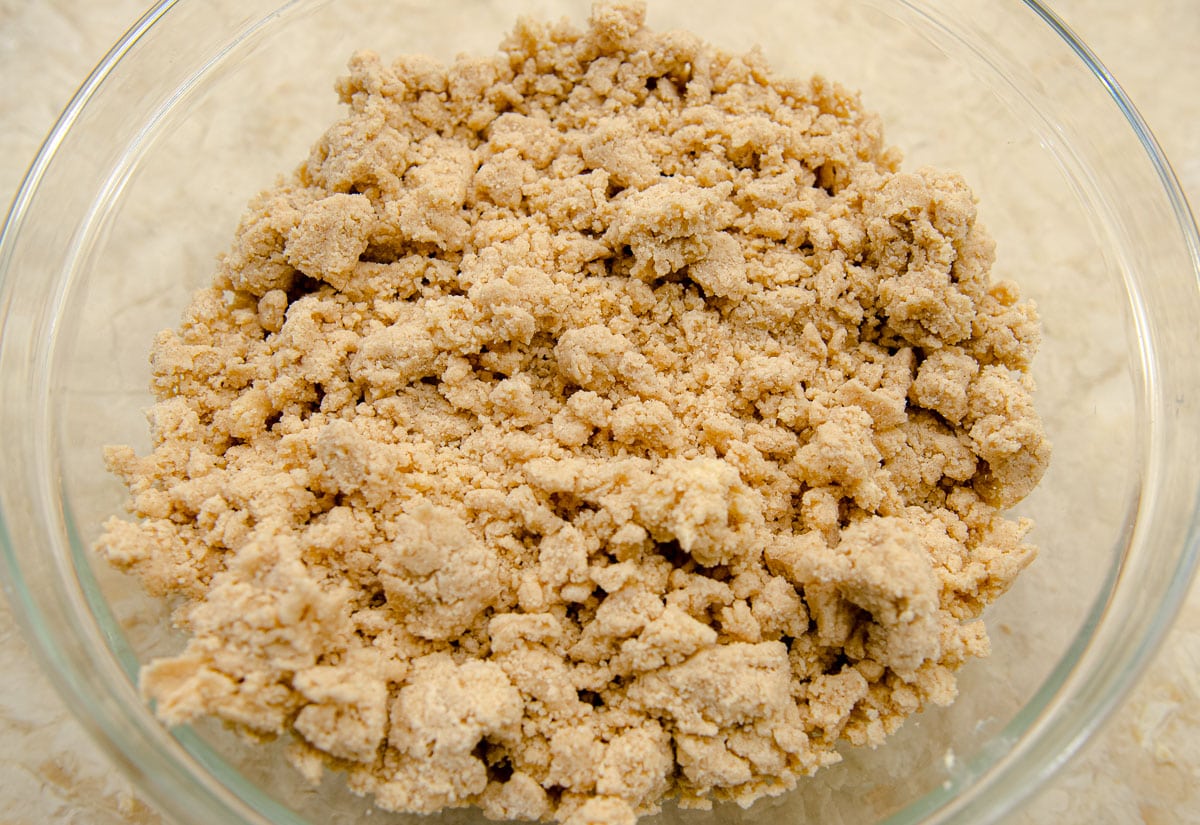
Step 4. The crumbs are transferred to a bowl. They may be frozen as above.
Baked Crumb Topping
These are fantastic to use sprinkled on ice cream, pastry cream or just eat them as a snack!!
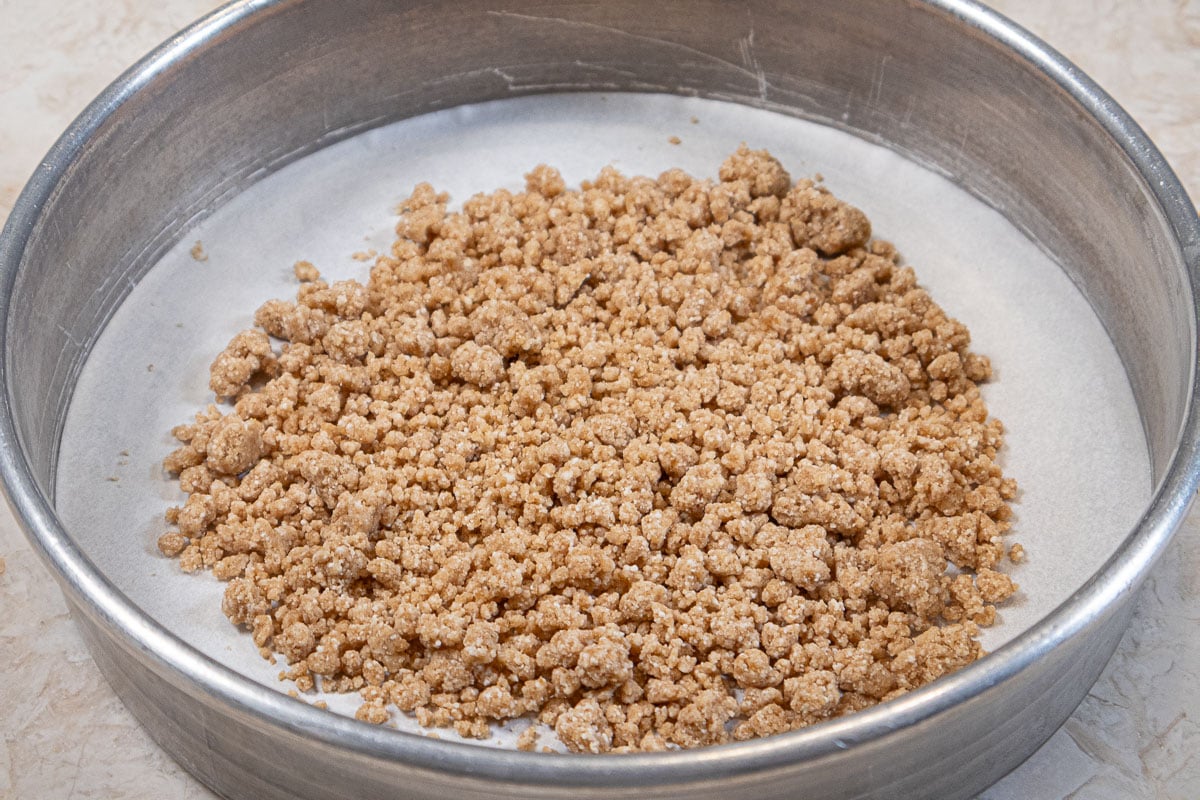
Step 1. Line a pan with parchment paper and place the unbaked crumbs in a single layer.

Step 2. Bake at 350°F for 12 to 15 minutes until golden brown. Cool completely. Use as desired.
Recipe FAQs
It can. However, the crumbs are a bit sturdier and not as soft as with cake flour. If using all-purpose flour, use the same weight. If measuring by volume, remove 2 tablespoons of flour.
Yes but if only granulated sugar is used the crumbs might be a bit bland. In that case, add 2 teaspoons molasses to kick up the flavor. If using only brown sugar, you don't need to do anything.
Yes, it will turn into a paste so watch it and stop when the crumbs form
Expert Tips
- Be sure the butter is the correct temperature for whichever way the crumbs are being made. Softened for the mixer method, cold for the processor.
- If substituting all-purpose flour and measuring by volume instead of weight, remove 2 tablespoons of flour.
- Add ¾ teaspoon cinnamon to dry ingredients if desired.
- I prefer the term softened butter which is about 75°F instead of room temperature. Room temperatures vary wildly - think Alaska and Arizona.

Recipes To Love with Crumb Topping
If you love this Crumb Topping or any other recipe on my website, please please leave a 🌟 star rating in the recipe card and let me know how it went the in 📝 comments below. I appreciate each of you being here!
Crumb Topping
Ingredients
- ½ cup unsalted butter (114 grams or 1 stick)
- ⅓ cup granulated sugar (65 grams)
- ⅓ cup brown sugar (65 grams)
- 1 ½ cups cake flour (190 grams)
- ¾ teaspoon cinnamon, optional
- ¼ teaspoon salt
Instructions
Processor Method
- Cut the cold butter into pieces. Keep cold.
- Place all the dry ingredients in the processor bowl and pulse several times to mix.
- Circle the cold butter over the dry ingredients and pulse the processor until crumbs form. Do not over process or a paste will form
- Use at once, store in the refrigerator for up to a week or freeze for longer storage.
Mixer Method
- The butter should be softened to about 75°F for this method. I don't use the term room temperature because Alaska and Arizona can have wildly different temperatues.
- Place the butter and both sugars in the mixing bowl. Cream until light.
- Combine the flour and salt. Add to the mixer and mix on low to blend, then on medium to form crumbs. Do not over mix or a paste will form.
Notes
- Be sure the butter is the correct temperature for whichever way the crumbs are being made. Softened for the mixer method, cold for the processor.
- If substituting all-purpose flour and measuring by volume instead of weight, remove 2 tablespoons of flour.
- I think the crumbs are lighter in the processor but either mixing methods works.
- This crumb topping can be refrigerated for a week or frozen so they are always on hand whenever needed. To freeze them, spread them out on a tray, freeze and then bag. You can then use what you need and the rest can be kept frozen for several months.
Nutrition
Peach Amaretto Jam
This Peach Amaretto Jam is the perfect recipe if you've never made jam before. I've reduced the sugar to allow the peach flavor to come through and added a bit of amaretto to enhance it. This is a refrigerator or freezer jam that doesn't require canning with the large pot of boiling water and all that comes with it.
This is so versatile you won't want to miss the No Churn Peach Swirl Ice Cream that uses this jam or the Cream Biscuits which the easiest biscuit recipe you can find and it has no butter.
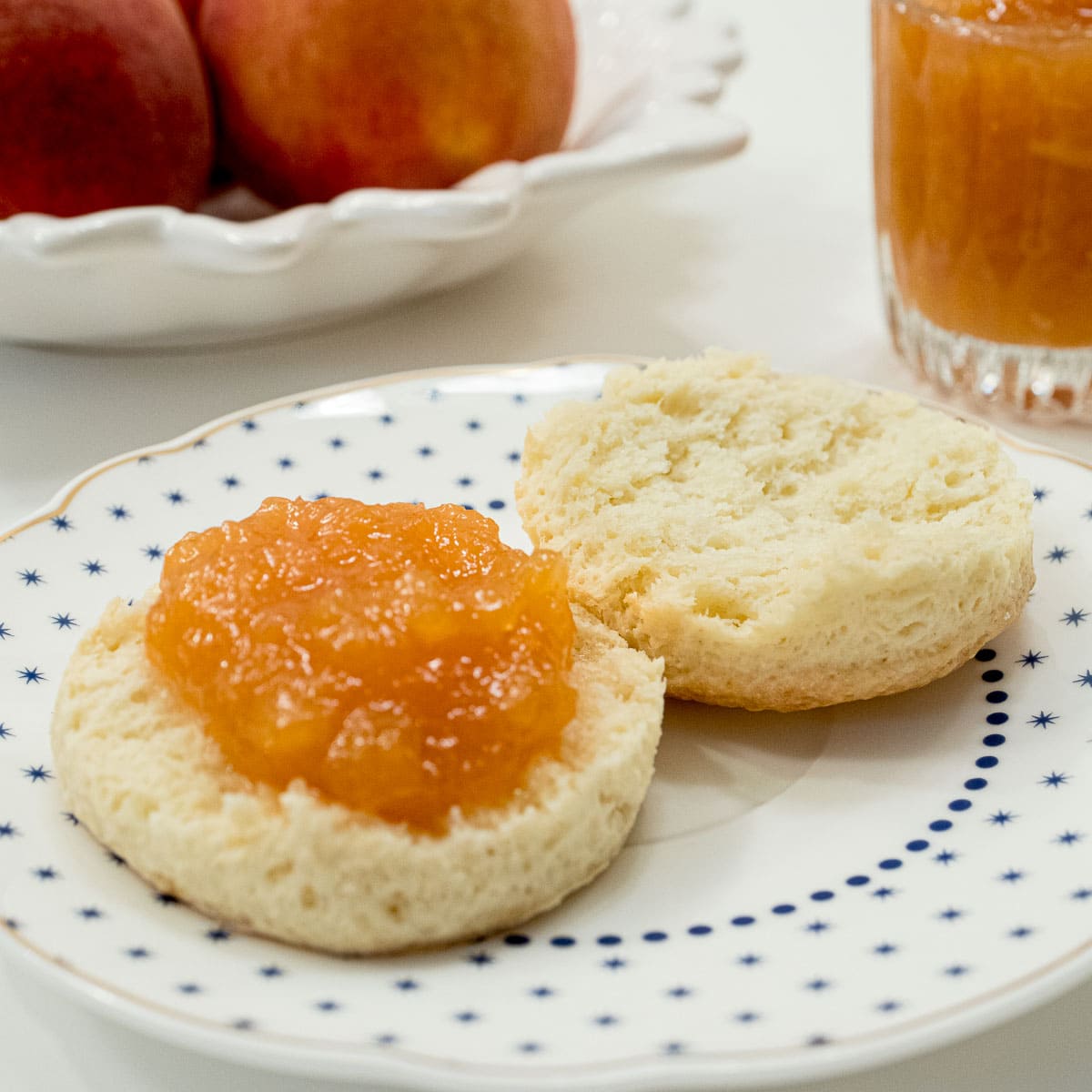
While peeling peaches can be a pain, it doesn't have to be. All About Peaches shows you my favorite, easiest way to quickly get it done. The post also talks about the different types of peaches and explains the difference between Freestone and Clingstone peaches as well.
Although this recipe features a liqueur, the alcohol is totally gone by the time the jam is finished, leaving only the flavor behind.
If you absolutely have to substitute you can use ⅓ cup water and 1 teaspoon almond extract. I have not done it, but it should get you close to the flavor of the amaretto.
[feast_advanced_jump_to]
Why You'll Love This Recipe
- First of all Peach Amaretto Jam is really easy to make. You won't spend hours heating up the kitchen to make this jam since there is no canning involved.
- The flavor is astounding. Commercial peach jam doesn't come close to the intense flavor in this jam.
- It's so versatile. From topping toast, a biscuit or scone, it can be used as an ice cream or cake topping.
- There's only 3 ingredients in the recipe.
- Now is the season for peaches and they are at their peak.
Recipe Ingredients

LEFT TO RIGHT: Peaches, amaretto and granulated sugar.
Be sure to see the recipe card below for the full ingredients list & instructions.
Step by Step Instructions
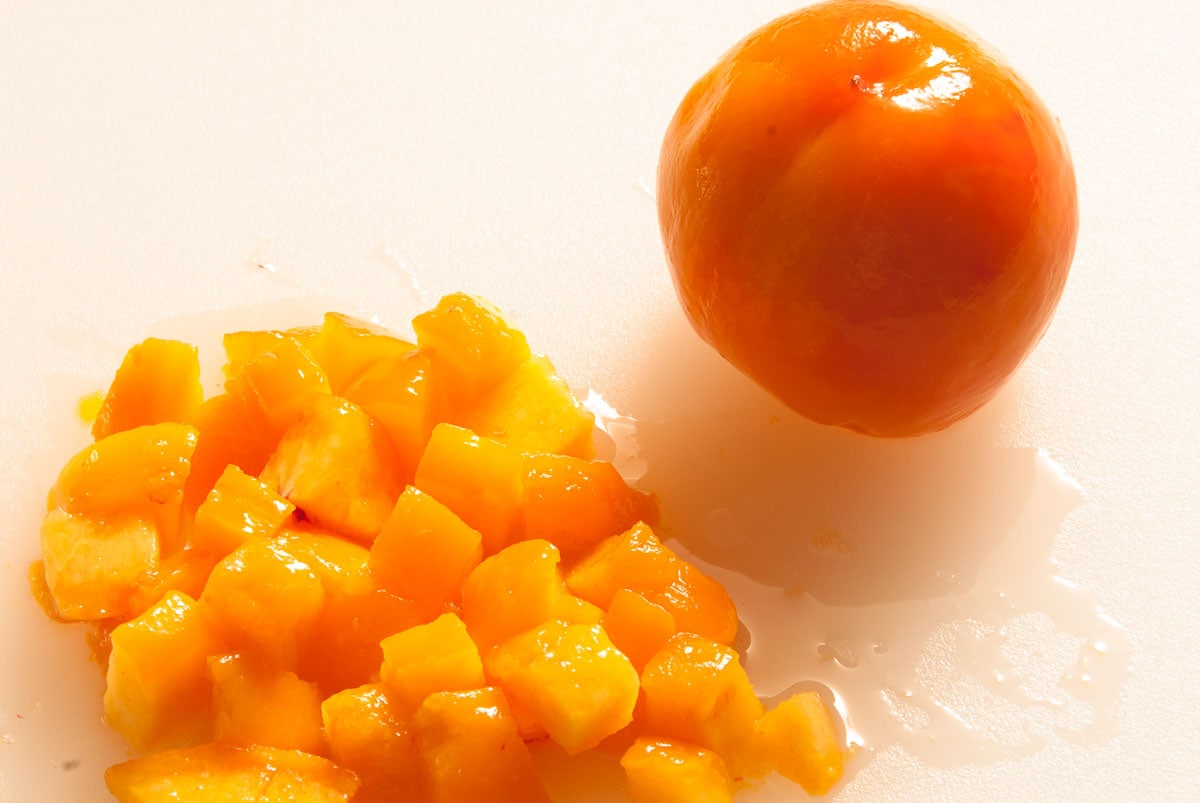
Step 1. Peel and coarsely cut the peaches.
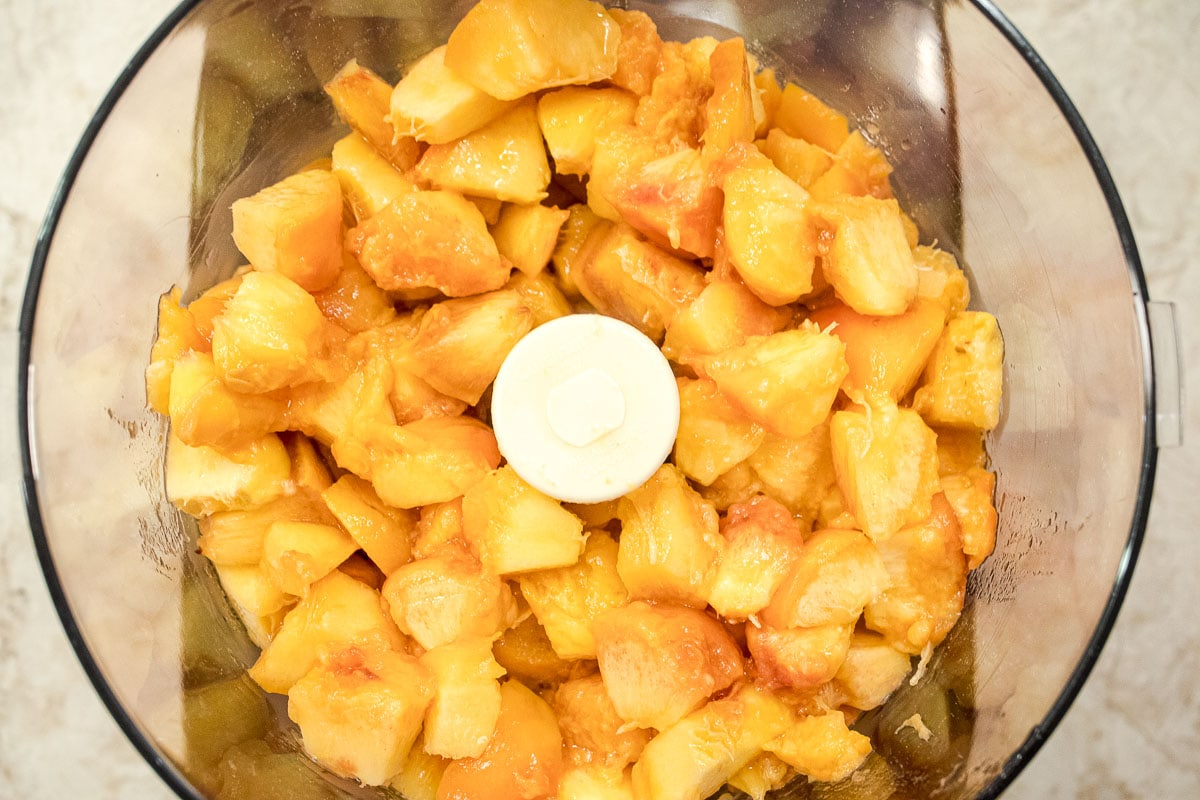
Step 2. Place the cut peaches in the bowl of a processor.
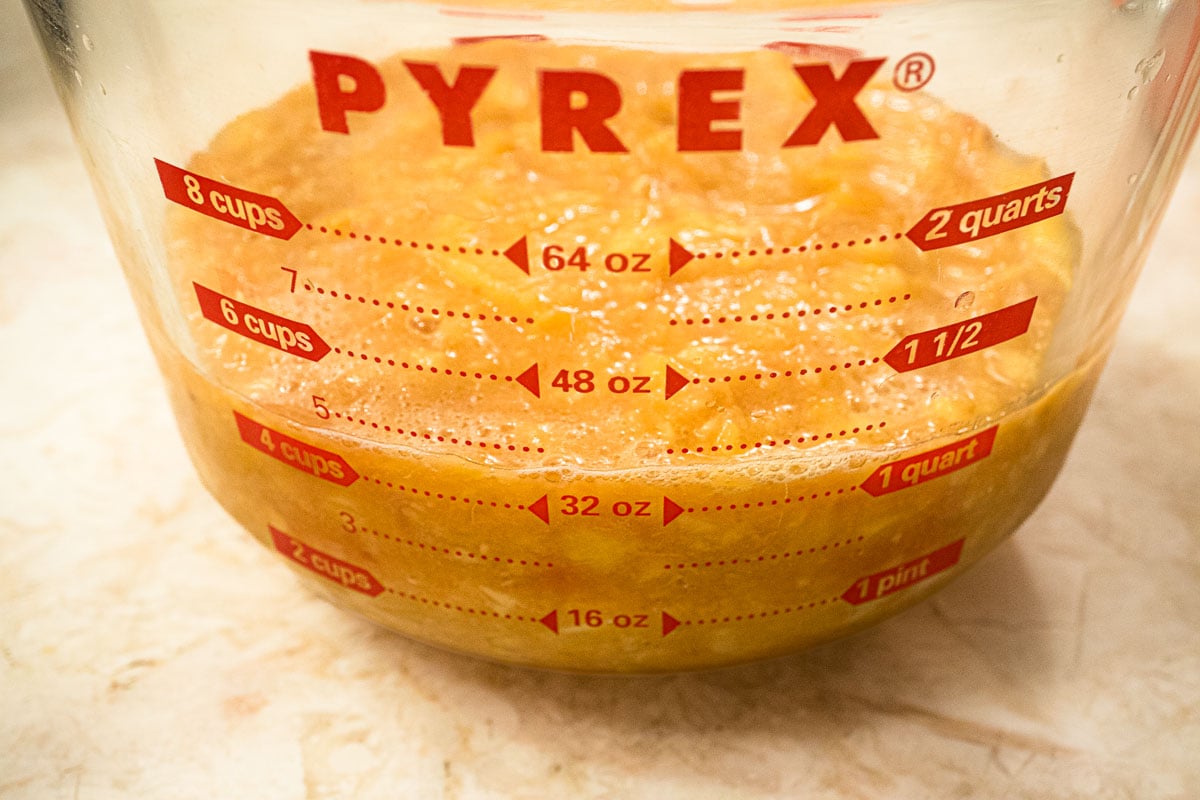
Step 3. Pulse the peaches in the processor until the pieces are little. Do not puree them.
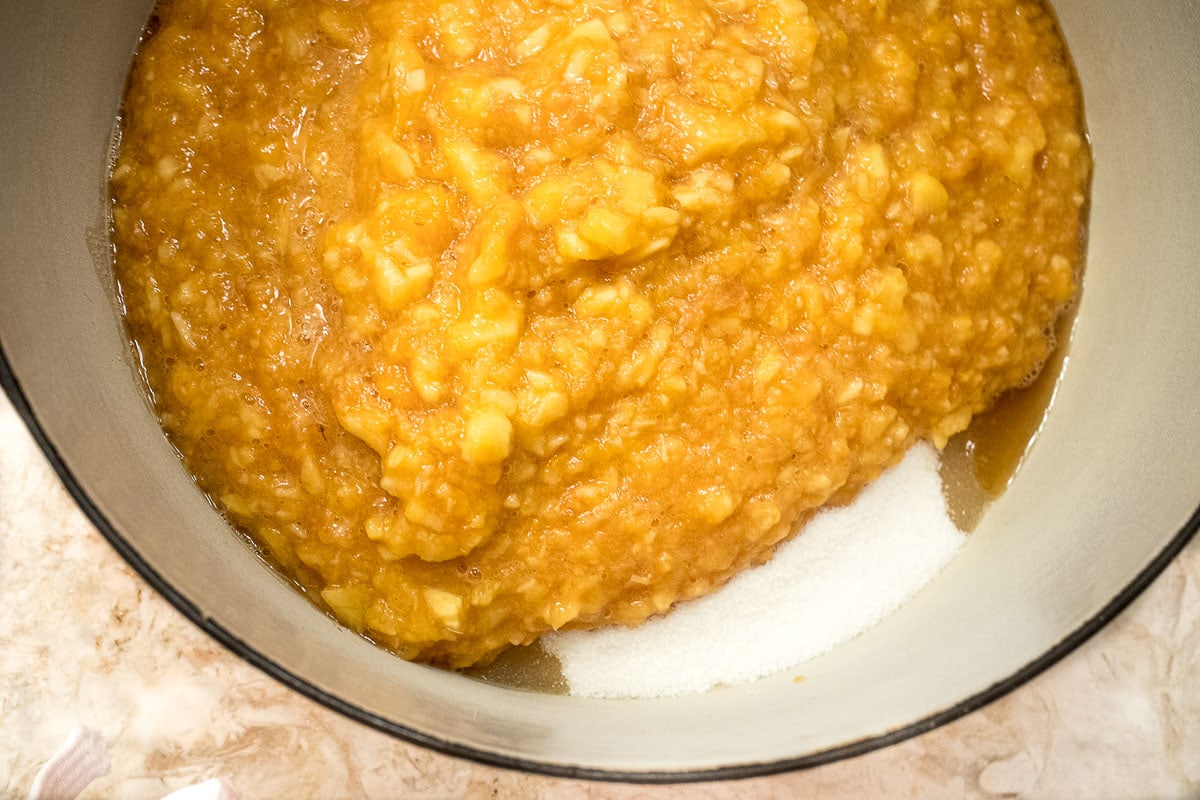
Step 4. Stir all the ingredients together in a heavy dutch oven or pot. Bring to a boil over medium heat, stirring from time to time.
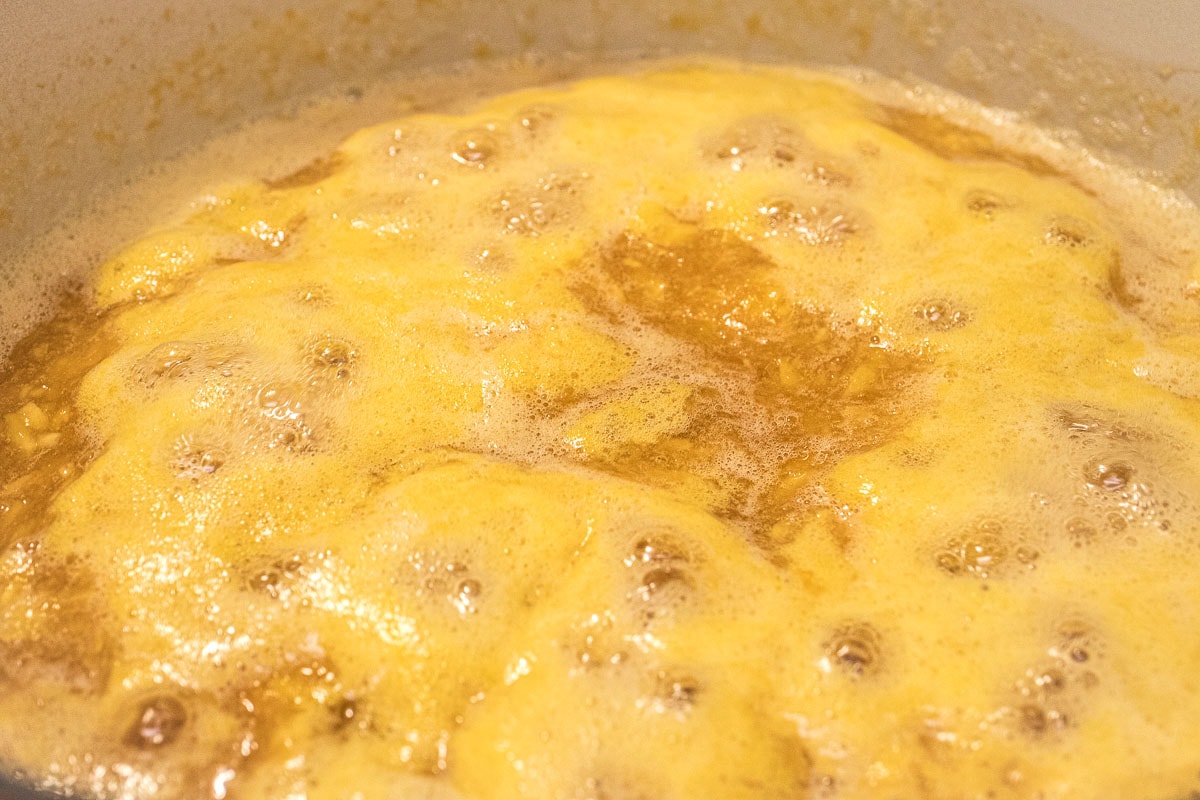
Step 5. Skim off the foam that rises to the top from the boiling peaches so the jam will be clear.
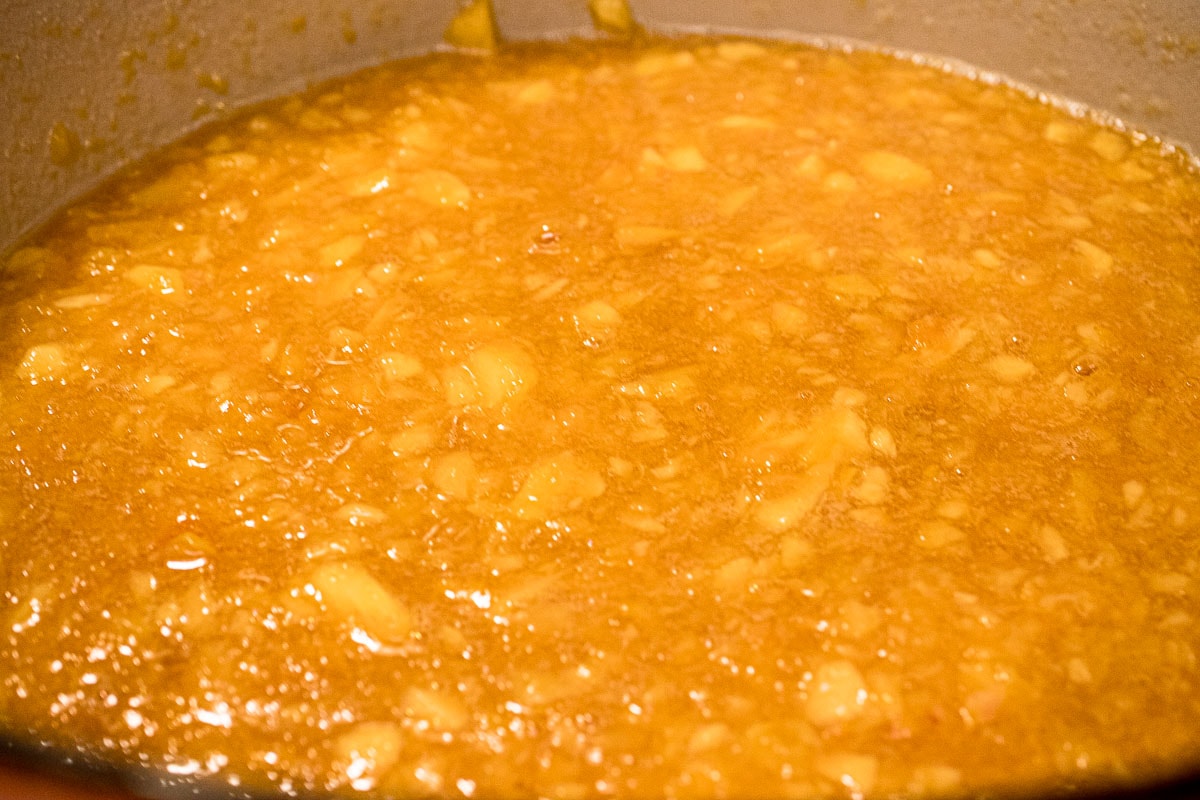
Step 6. Reduce the heat to a low boil and cook the jam until it has thickened.
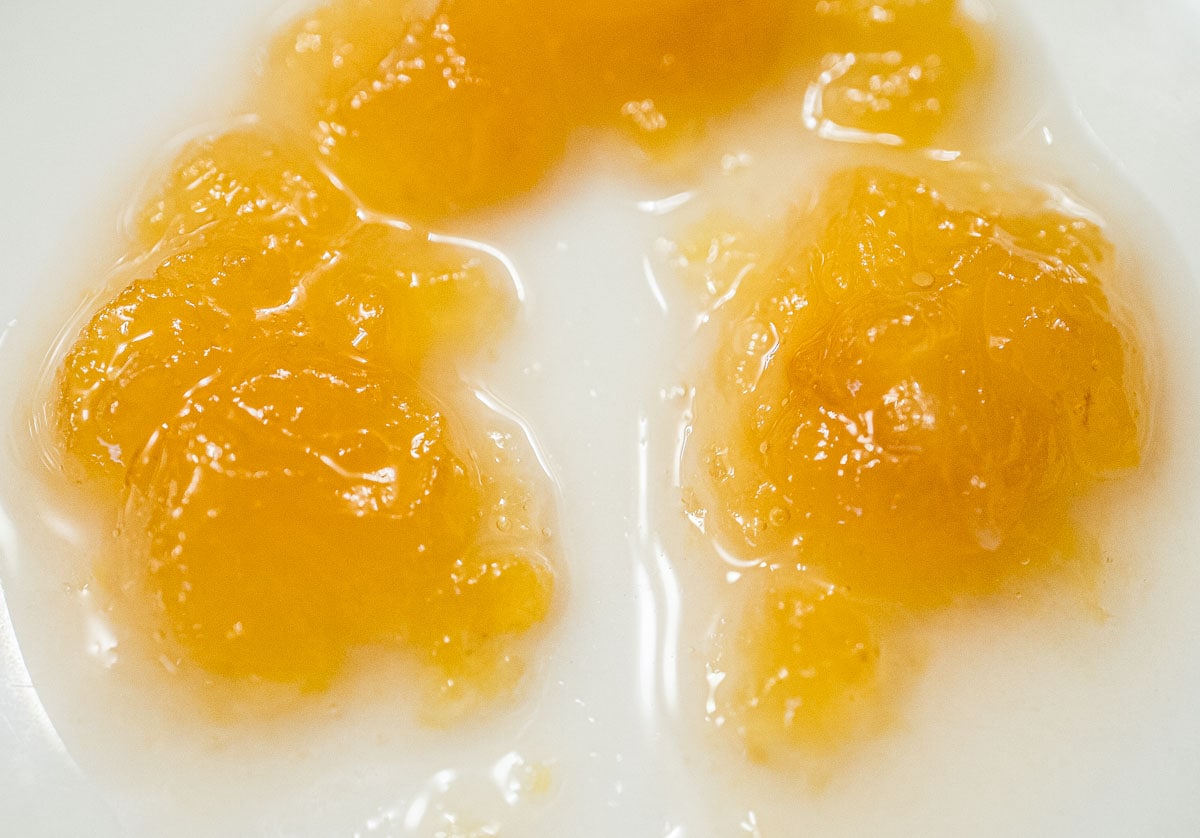
Step 7. The jam is finished when a small amount is placed on a frozen plate and it stays separated when you draw your finger through it with very little liquid surrounds it.
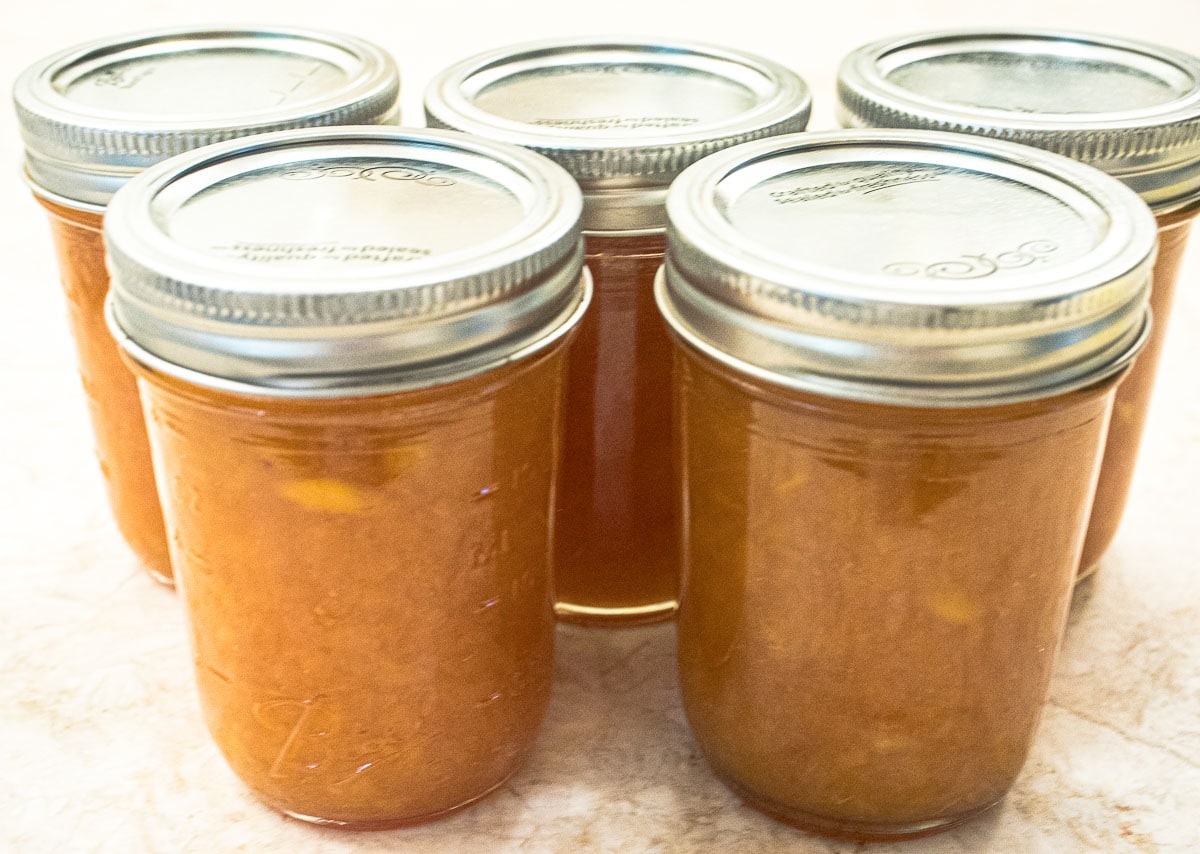
Step 8. Immediately pour the hot jam into jars and place the lids on. Cool completely at room temperature then store in the refrigerator or freezer.
Recipe FAQs
Contrary to what others might suggest, I say yes they do. See my post on All About Peaches, for the quickest way to do this.
The main difference is that the pieces of fruit are smaller in jam than preserves. You can generally see large pieces of fruit in preserves but not jams.
It should be eaten within 3 to 4 months. It can also be frozen and thawed in the refrigerator for later use.
It sure can if cooked too long. Test it using the cold plate method as it thickens.
After the jam has been bottled and come to room temperature, store it in the refrigerator up to months. It can also be frozen in freezer proof containers for up to a year. Thaw and store in the refrigerator.
Expert Tips
- Peaches do not have a lot of pectin. For gelling purposes they have none. I have not added pectin to this recipe because I want it to be a soft set. Just make sure to use the frozen plate test to determine when it is done.
- Use ripe, but not overly ripe fruit. It will yield the best taste and texture.
- To skim the foam from the top of the preserves while cooking, use a slotted spoon to let the juice drip through and remove only the foam.
- If freestone or cling-free peaches are available, buy those. The stone will come out much easier. Clingstone peaches refer to peaches where the flesh is attached to the pit. They are harder to separate. Unfortunately, they are rarely marked as such.
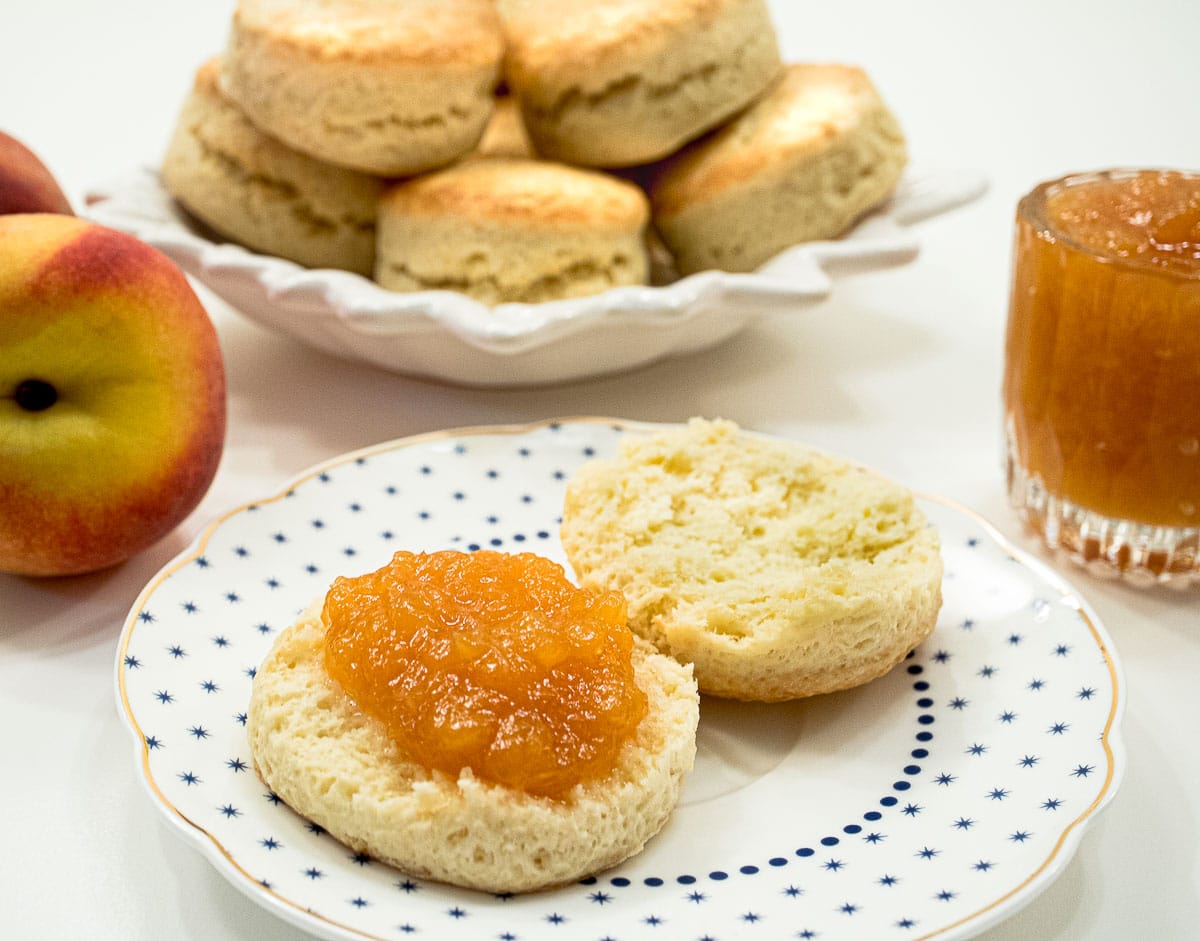
More inviting Peach Recipes
If you love this Peach Amaretto Jam or any other recipe on my website, please please leave a 🌟 star rating in the recipe card and let me know how it went the in 📝 comments below. I appreciate each of you being here!
Peach Amaretto Jam
Ingredients
- 3 pounds ripe peaches
- 2 ¼ cup granulated sugar (450 grams)
- ½ cup amaretto
Instructions
- If you absolutely have to substitute the amaretto, you can use ⅓ cup water and 1 teaspoon almond extract. I have not done it, but it should get you close to the flavor of the amaretto.
- Place several small, flat plates in the freezer.
- Peel the peaches, pit them and and cut them into large pieces. Place them in the food processor and pulse until they are cut into little pieces. Do not puree them. For the easiest way to do this, please see my post, All About Peaches.
- Place all the ingredients into a heavy dutch oven or heavy pot and bring to a boil, stirring frequently. This took about 10 minutes.
- Skim the foam off the top. This is easiest to do with a slotted spoon, letting the juice run back into the pot.
- Reduce the heat to medium and cook another 20 to 30 minutes until it is thick enough that a small amount placed on a frozen plate has very little liquid surrounding it and it stays separated when you draw your finger through it.
- Fill the jars to about ½ inch from the top and put the lids on. Let cool to room temperature, then place in the refrigeratorIf freezing the jam. place them in freezer proof container.
Notes
- Peach Swirl Ice Cream Peaches do not have a lot of pectin. For gelling purposes they have none. I have not added pectin to this recipe because I want it to be a soft set. Just make sure to use the frozen plate test to determine when it is done.
- Use ripe, but not overly ripe fruit. It will yield the best taste and texture.
- To skim the foam from the top of the preserves while cooking, use a slotted spoon to let the juice drip through and remove only the foam.
- If freestone or cling-free peaches are available, buy those. The stone will come out much easier. Clingstone peaches refer to peaches where the flesh is attached to the pit. They are harder to separate. Unfortunately, they are rarely marked as such.
- After the jam has been bottled and come to room temperature, store it in the refrigerator up to months.
- It can also be frozen in freezer proof containers for up to a year. Thaw and store in the refrigerator.
Nutrition
Best Two Step Banana Nut Bread
The hardest thing about the Best Two Step Banana Bread recipe is waiting for the bananas to fully ripen with brown specks on their yellow jackets. A processor or blender combines the wet ingredients and they are whisked together with the dry ingredients. Into the pan they go then into the oven. That's it for the best quick bread ever!
This is the perfect baking project with kids or grandchildren!
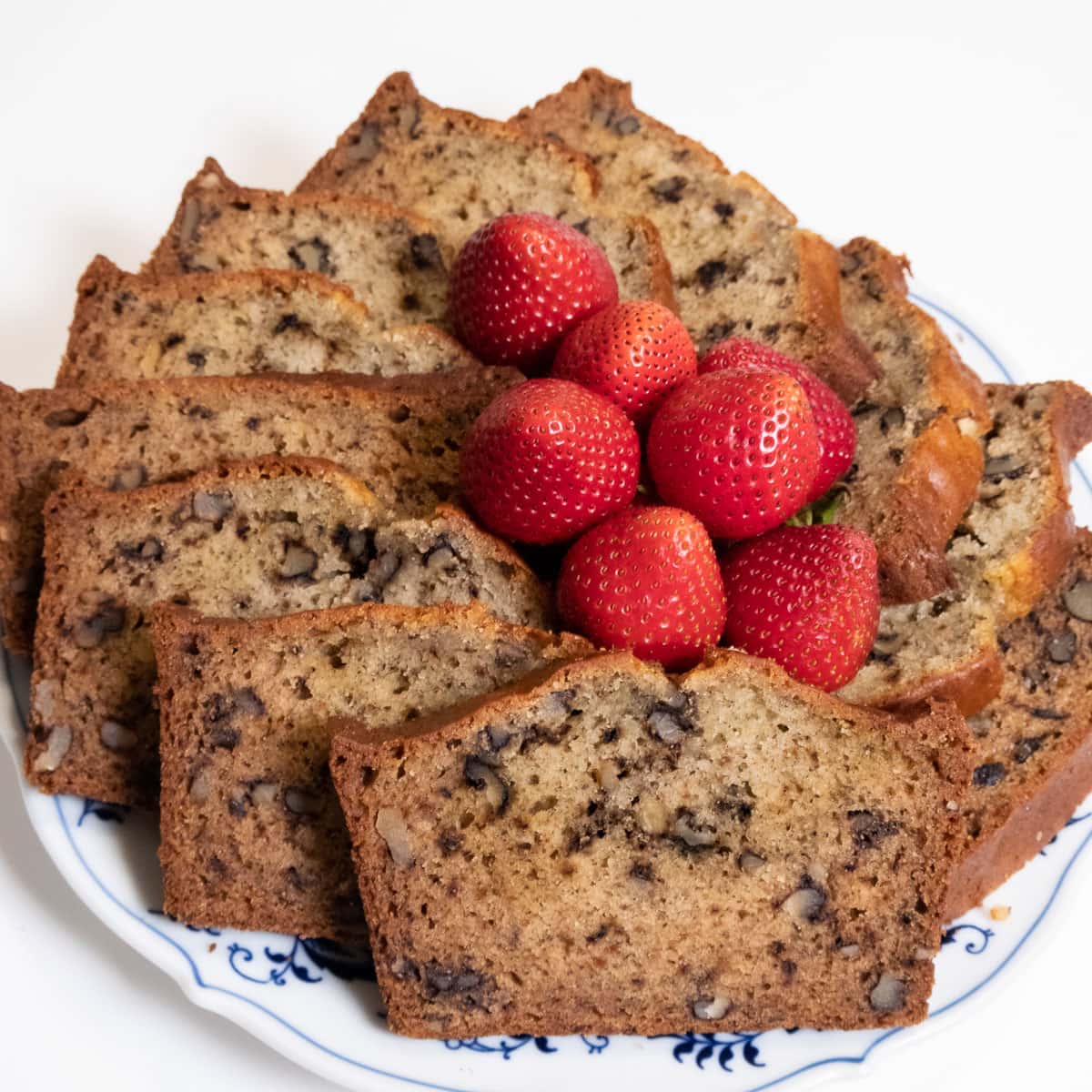
This Two Step Banana Bread is great as a quick gift to someone on your list or to yourself. it is sure to be well received and appreciated. It's also great to have tucked away in the freezer for those times you need to have a bit of something for drop in guests or you just want a treat.
Quick breads are so easy and popular to make, here are a few more: Date Nut Bread, Traditional Irish Soda Bread, Strawberry Bread, and Peach Pecan Quick Bread.
[feast_advanced_jump_to]Why You'll Love This Recipe
- It's basically two steps after measuring the ingredients. When it comes to baking it doesn't get much easier.
- This is almost cake-like in texture and taste. It doesn't fall apart when cut and is packed with flavor.
- It uses really basic ingredients and not many of those.
- It can be eaten for breakfast, snacks, great with salads and as a treat anytime.
- This only uses a few measuring ingredients, a bowl and a whisk to make.
Recipe Ingredients

BACK ROW: Buttermilk, cake flour, vegetable oil
MIDDLE ROW: Walnuts, granulated sugar, eggs, bananas
FRONT ROW: Salt, baking powder, vanilla extract, baking soda
Buttermilk helps keep whatever it is used for moist longer.
Cake Flour is used for tenderness and impart a cake like quality to the bread
Vegetable oil is much better than butter, melted or creamed. It not only contributes to keeping the bread moist, it allow the full flavor of the bananas to shine through.
Bananas should be speckled or even darker for the most flavor. Perfectly yellow bananas will not impart as much.
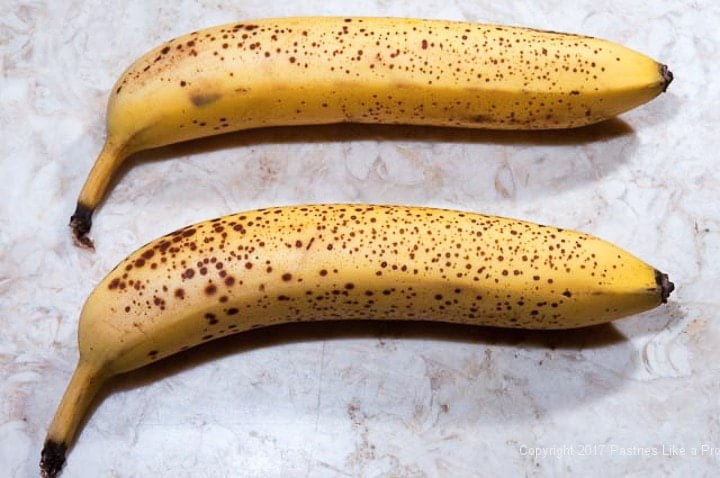
Variations
- Any nut can be substituted for the walnuts.
- ½ cup chocolate chips can be added to the batter along with the nuts.
- The rind of a small orange can be added.
- ½ cup dried cherries, raisins or cranberries are a good addition.
Be sure to see the recipe card below for the full ingredients list & instructions
Step by Step Instructions
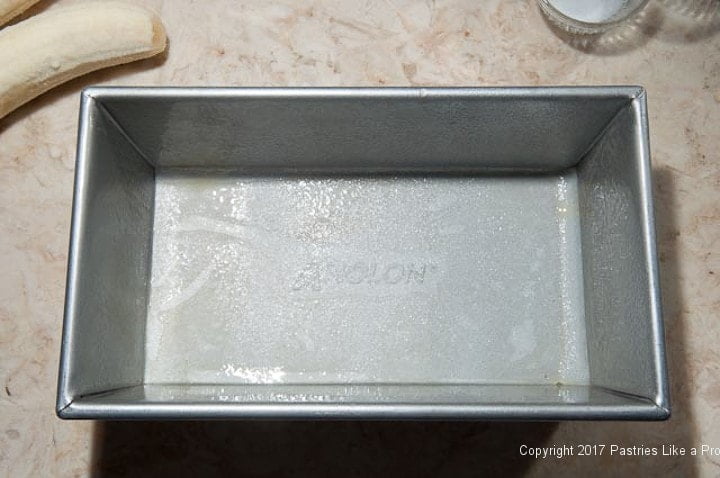
Step 1. Prepare a 9x5" loaf pan by lining it with parchment paper and spraying the paper and the pan with a non-stick baking spray. Set aside.
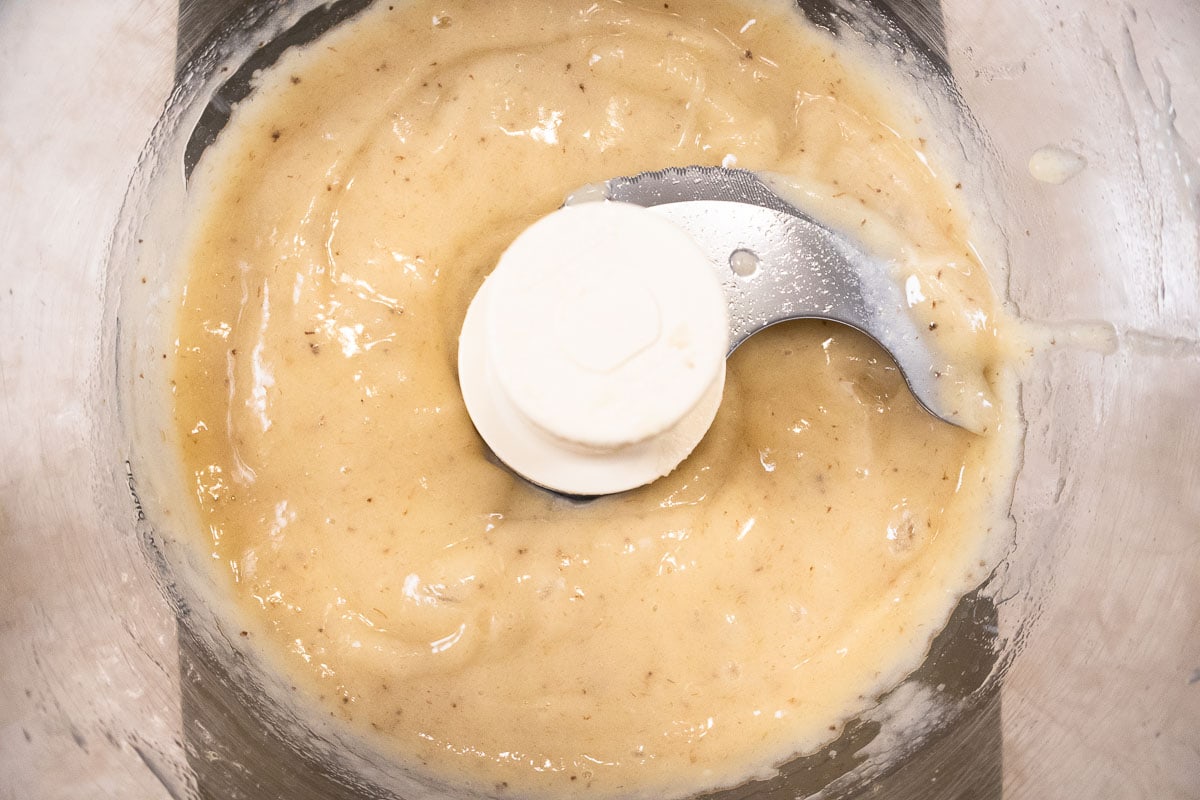
Step 2. Puree the bananas in the food processor or blender.
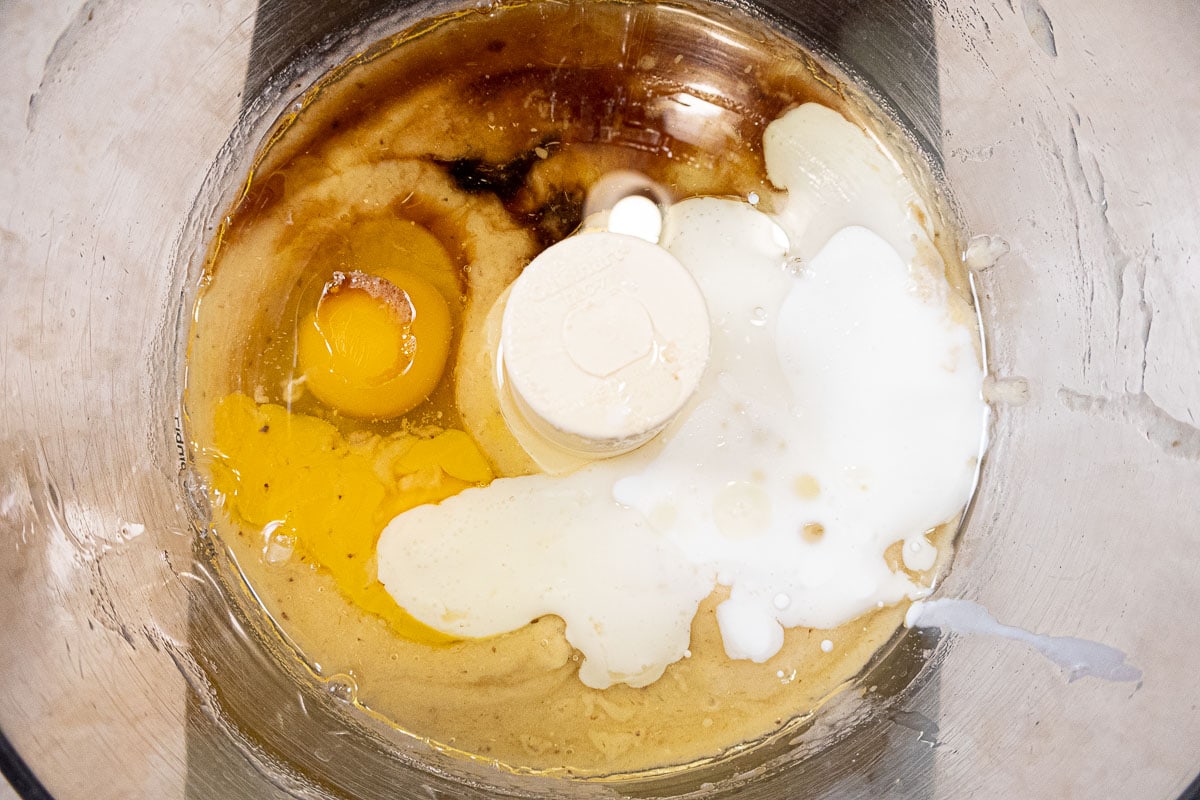
Step 3. Add the eggs, buttermilk, oil and vanilla to the processor or blender.
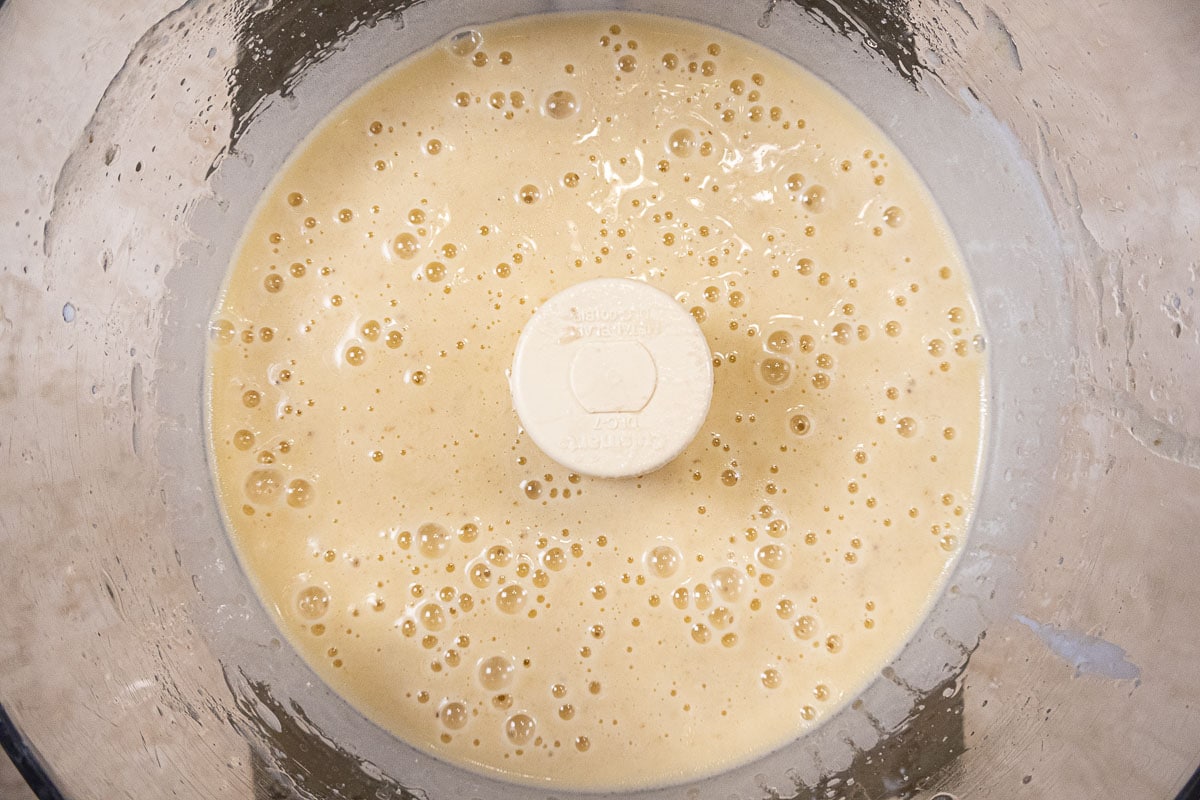
Step 4. Process the ingredients with the banana puree.
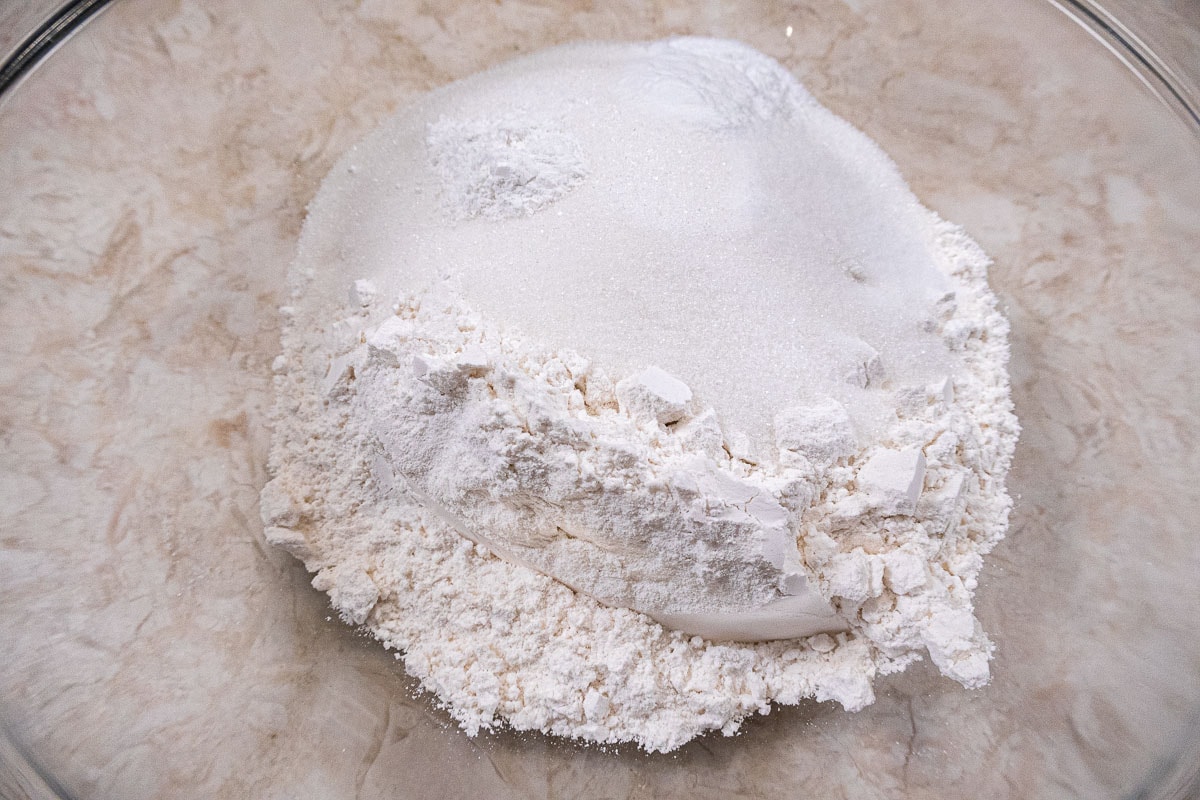
Step 5. Whisk the flour, baking soda, baking powder and salt together in a large bowl.
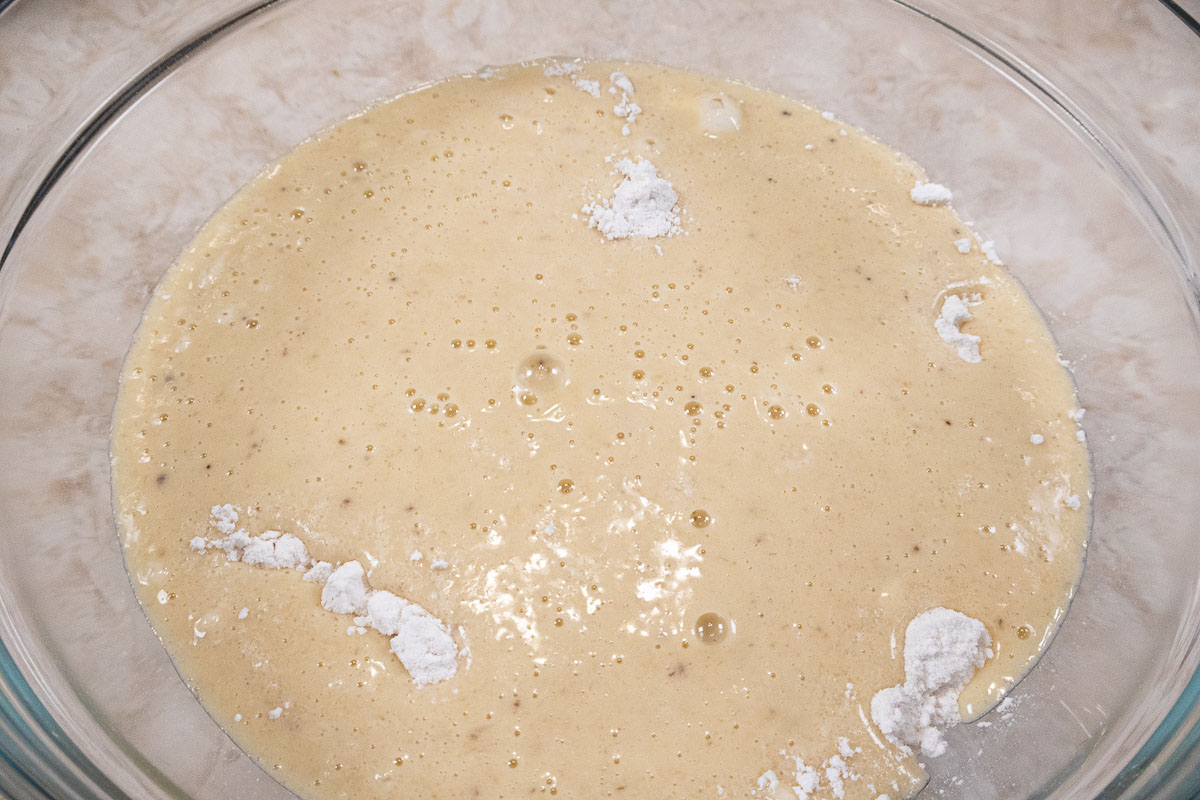
Step 6. Pour the wet ingredients over the dry ingredients and whisk together until smooth.
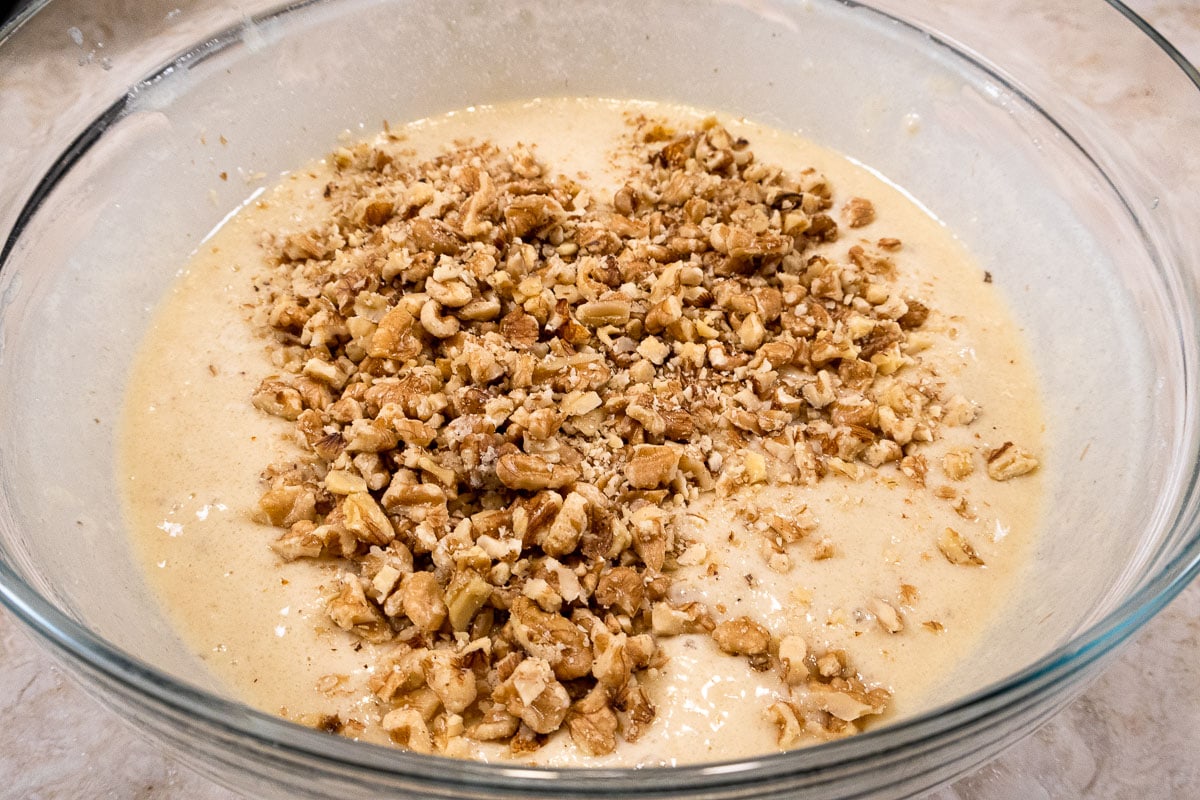
Step 7. Stir the walnuts into the batter.
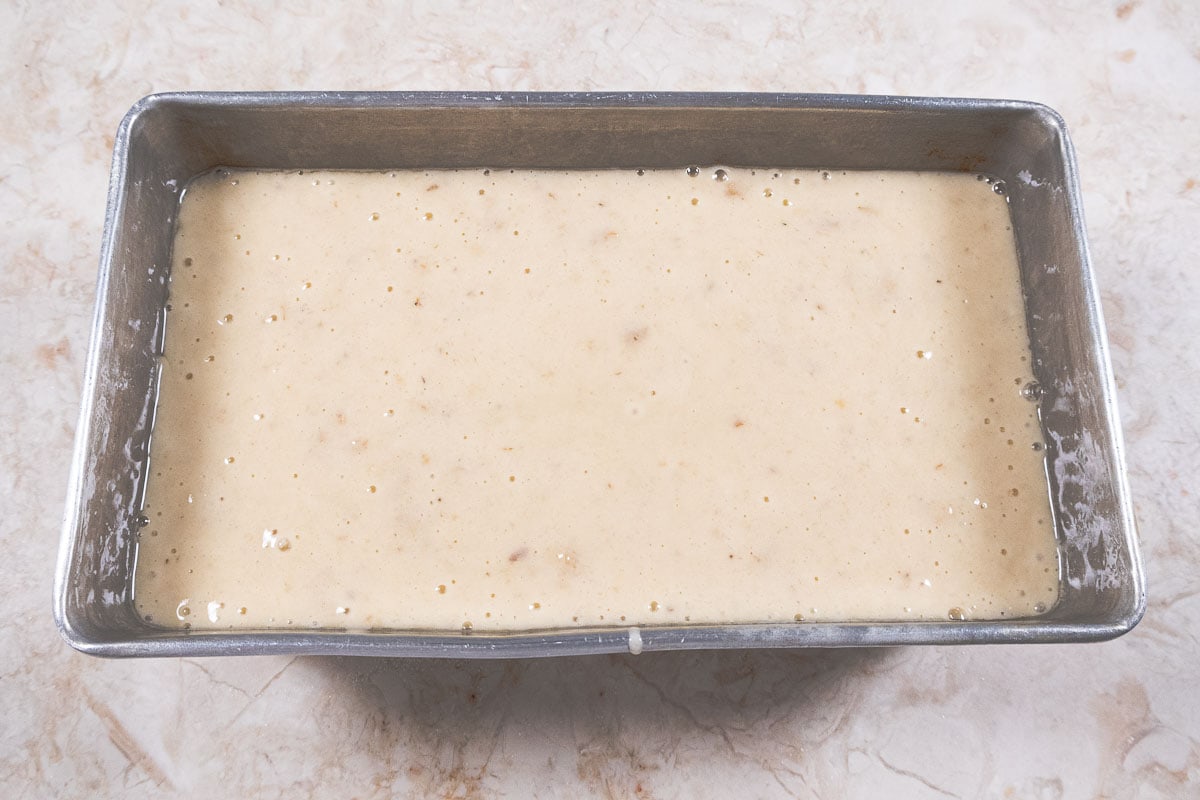
Step 8. Pour the batter into the prepared pan and bake as directed.
Recipe FAQs
For this recipe, it is preferable to puree them for the best result. However, if neither is available, mash them with a fork until as pureed as possible.
Bananas are shipped very green. Produce sellers have special rooms kept at 70°F in which the bananas are kept until mostly yellow at which point they are edible.
The bread won't have as much flavor as if really ripe bananas are used.
Storage
The bread will keep covered for 5 or so days at room temperature. For longer storage, freeze, wrap well and freeze for several months. Thaw unwrapped at room temperature.
Expert Tips
- Cake flour is preferred for this recipe as it adds tenderness and a cake like quality. However, all purpose flour can be used by removing ¼ cup and replacing it with cornstarch.
- While buttermilk is best, use milk (either whole or 2%), remove 2 teaspoons and add 2 teaspoons vinegar or lemon juice. Let it sit while the rest of the ingredients are prepared so it can separate into curd and whey becoming thicker and emulating buttermilk.
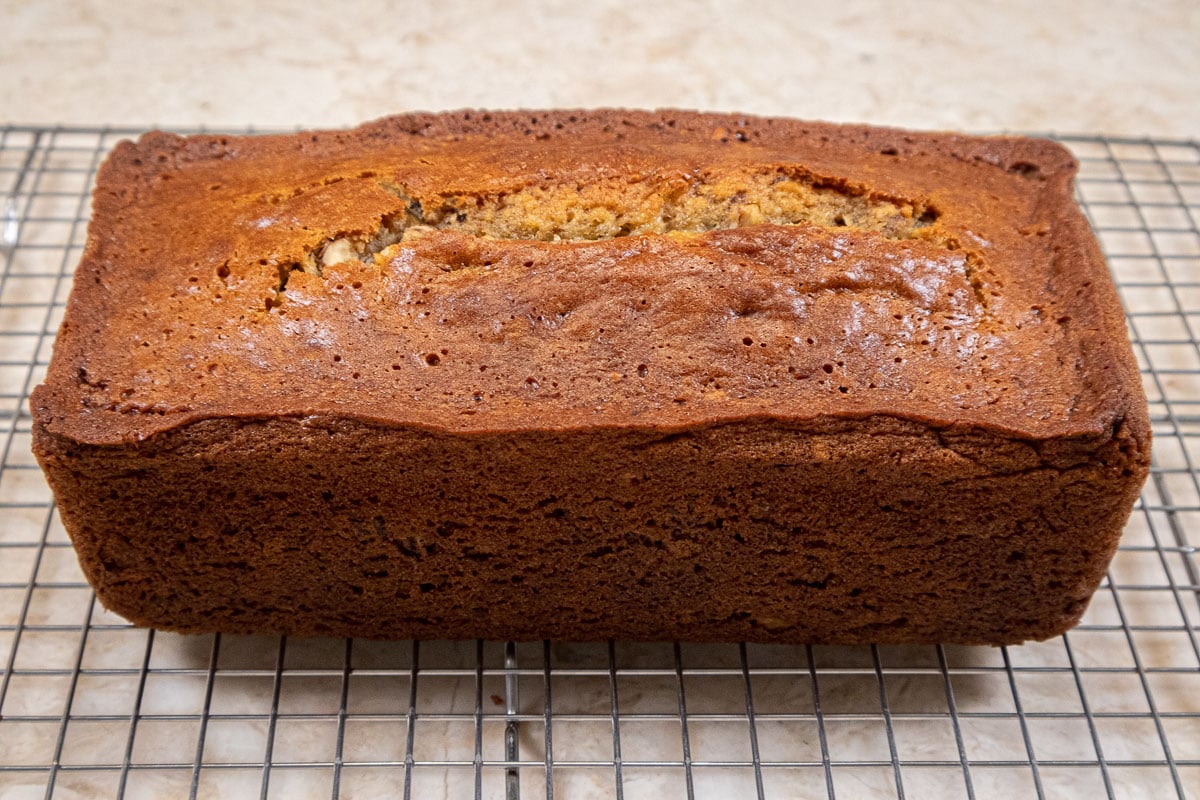
More Ways to Enjoy Banana Recipes
If you love this Two Step Easy Banana Bread or any other recipe on my website, please please leave a 🌟 star rating in the recipe card and let me know how it went in the 📝 comments below. I appreciate each of you being here!
Best Two Step Banana Nut Bread
Ingredients
- 1 cup banana puree
- ½ cup buttermilk
- 2 large eggs
- 2 teaspoons vanilla extract
- ⅔ cup canola or vegetable oil
- 2 cups cake flour (250 grams)
- 1 cup granulated sugar (200 grams)
- 1 teaspoon baking soda
- ¾ teaspoon baking powder
- ½ teaspoon salt
- ½ cup coarsely chopped walnuts
Instructions
- Preheat the oven to 350°F. Line the bottom of a 9x5" loaf pan with parchment paper. Spray the paper and sides well with a non-stick baking release. Set aside.
- Puree the bananas in a food processor or blender. Measure 1cup and return it to the processor or blender. Add the buttermilk, eggs, vanilla and oil. Process or blend until liquid.
- In a medium size bowl, place the remaining ingrediets except the walnuts. Add the liqud ingredients and whisk to combine. Stir in the walnuts.
- Pour into the prepared pan. Bake for 60 to 75 minutes until a tester come out clean.
- Cool for about 15 minutes and turn the bread out onto a cooling rack.
Notes
Nutrition
Smoked Turkey Salad
As much as I love cooking, the summer months of high 90's have me looking for easy options to feed us. This Smoked Turkey Salad, which came from my take out shop, fills that need. A few easy to get ingredients with the star being the smoked turkey are easily assembled into this winner of an entree salad.
Serve it with cold fresh cantaloupe or watermelon and a piece of good bread and dinner is ready!
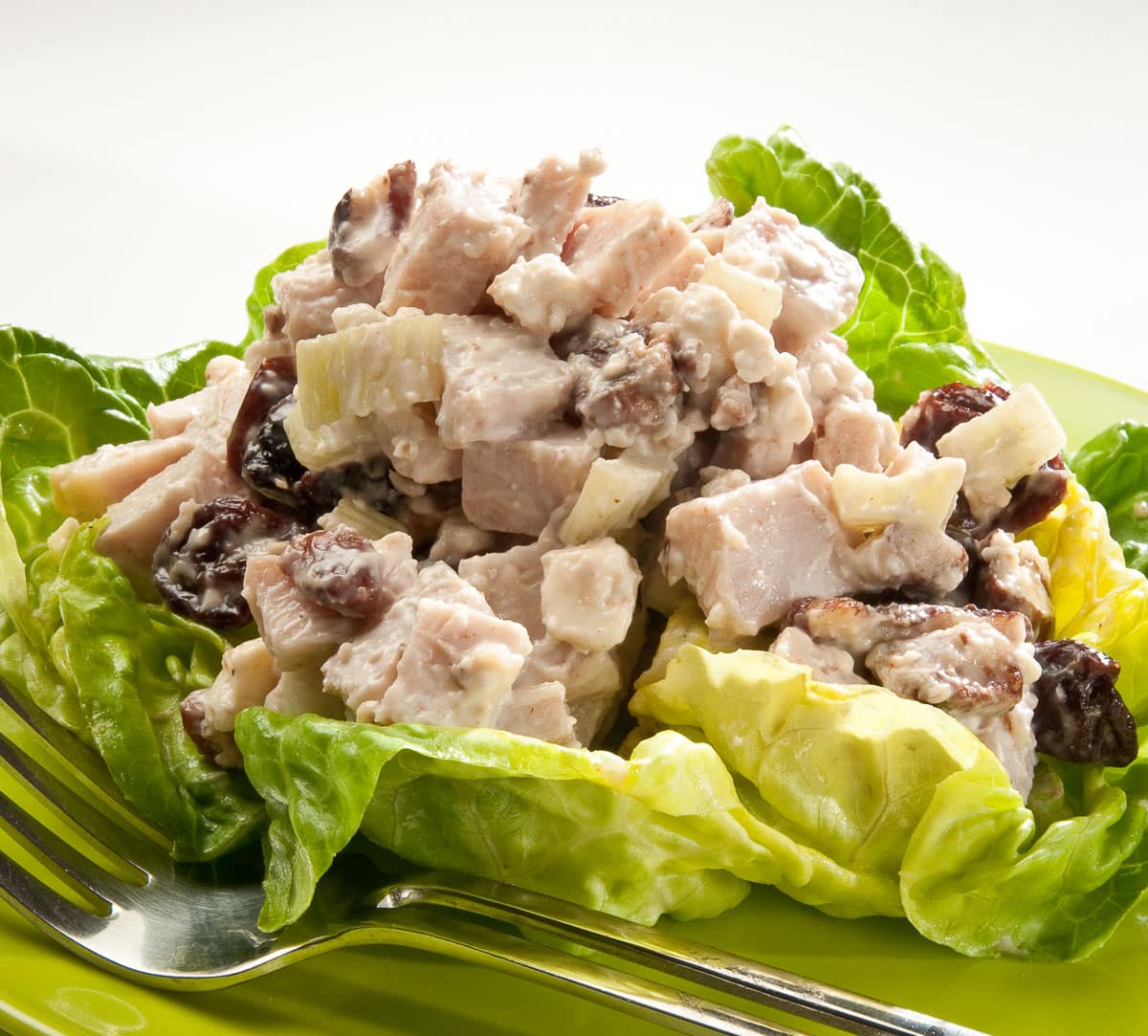
Lacking a home smoker, I visit my local barbecue/smokehouse and buy the smoked turkey from them. It's so much better than deli turkey which is usually pumped with water.
A couple of other things to enhance the salad are toasting the pecans and soaking the dried cherries to plump them. I used to make this with the Hot Peppered Pecans we sold at the shop but simplified it by skipping that step and adding cayenne.
[feast_advanced_jump_to]What makes this salad so special
- The first thing is the smoked turkey. It adds a distinct flavor that roasted turkey doesn't, although I wouldn't turn down roasted turkey if that's all I could get.
- Bleu cheese brings a distinct taste to counter the sweetness of the turkey and cherries.
- Celery brings its crunch to the party.
- Either apples or dried cherries can be used for the sweetness they impart. If using apples, add them at the last minute as they have a tendency to turn brown. I have found that Gala or Pink Ladies don't brown as quickly. If using the dried bing cherries, soak them first to bring out all of their flavor.
- Cayenne gives this salad a kick that rounds everything out and makes this so special.
Recipe Ingredients

BACK ROW: Bleu Cheese, smoked turkey, pecans
MIDDLE ROW: Dried cherries, mayonnaise, celery
FRONT ROW: Worcestershire sauce, cayenne pepper, salt
Be sure to see the recipe card below for the full ingredients list and instructions.
Step by Step Instructions
Special Note about the Turkey
However, you buy your smoked turkey, have it sliced about ½" thick so it can be cubed into about ½ " squares.
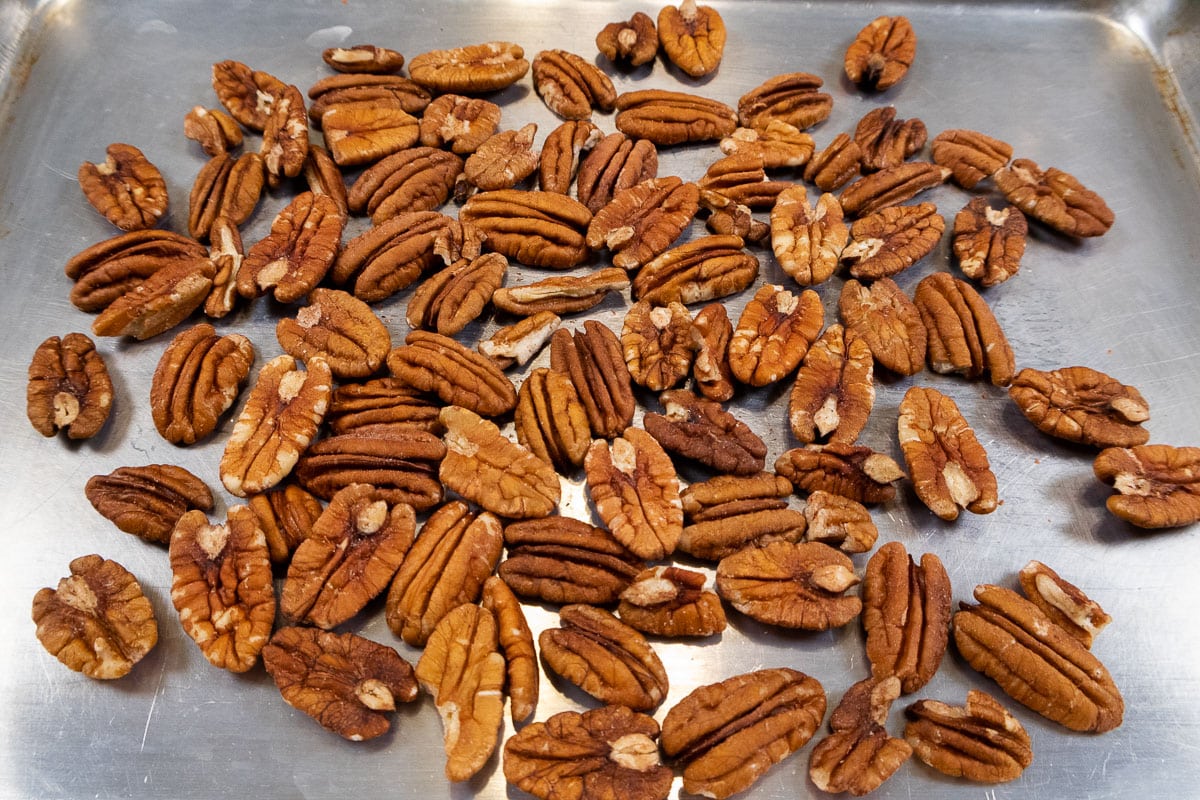
Step 1. Place the pecans on a tray and toast for 7 to 9 minutes until fragrant and slightly browner. If using smaller pieces, reduce the time. Cool and chop. Set aside.
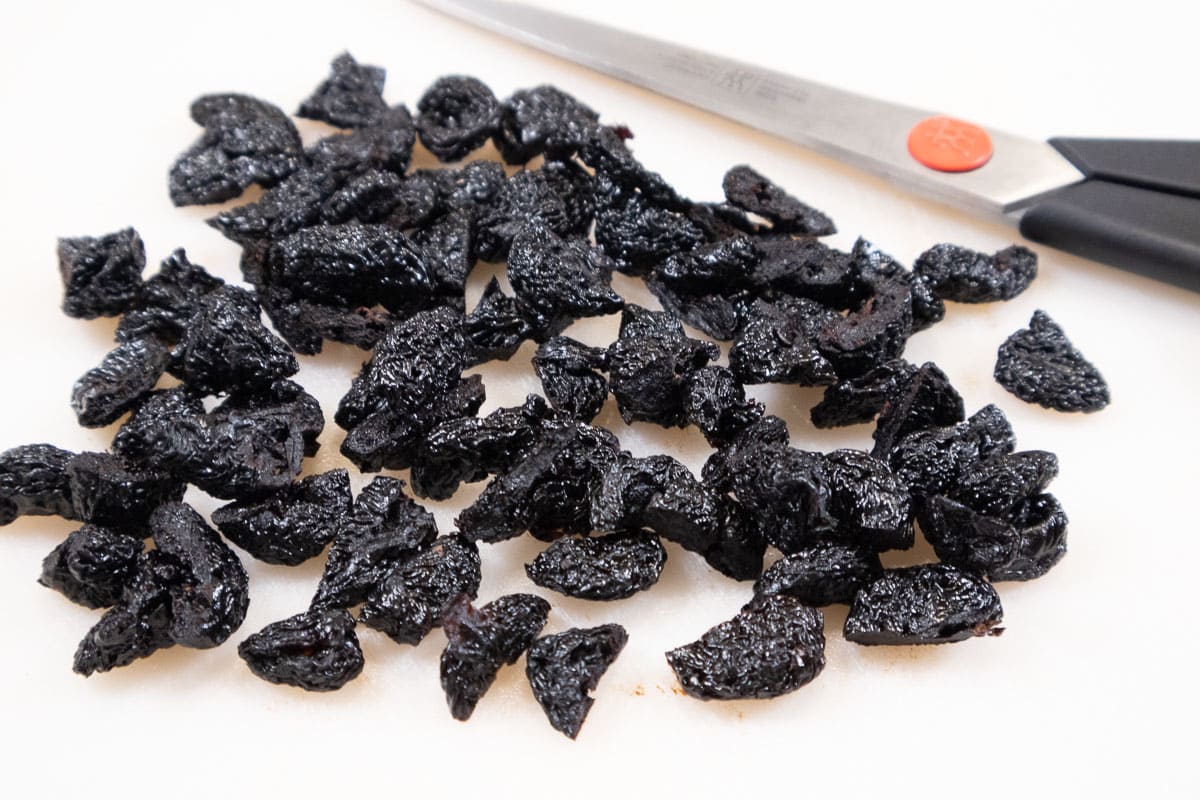
Step 2. Cut the dried cherries in half. It is easiest to do this with scissors.
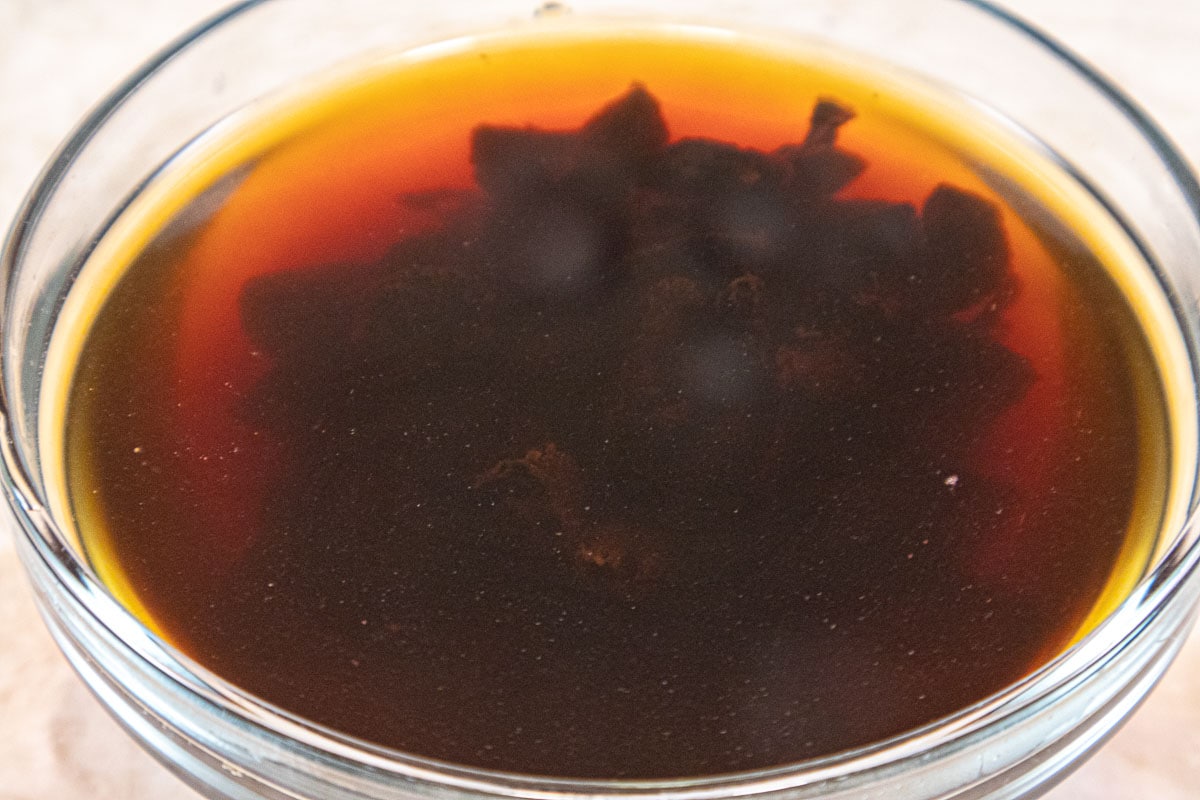
Step 3. Cover the cherries with really hot water and let them soak until they soften. Squeeze the water out of them before adding to the other ingredients.
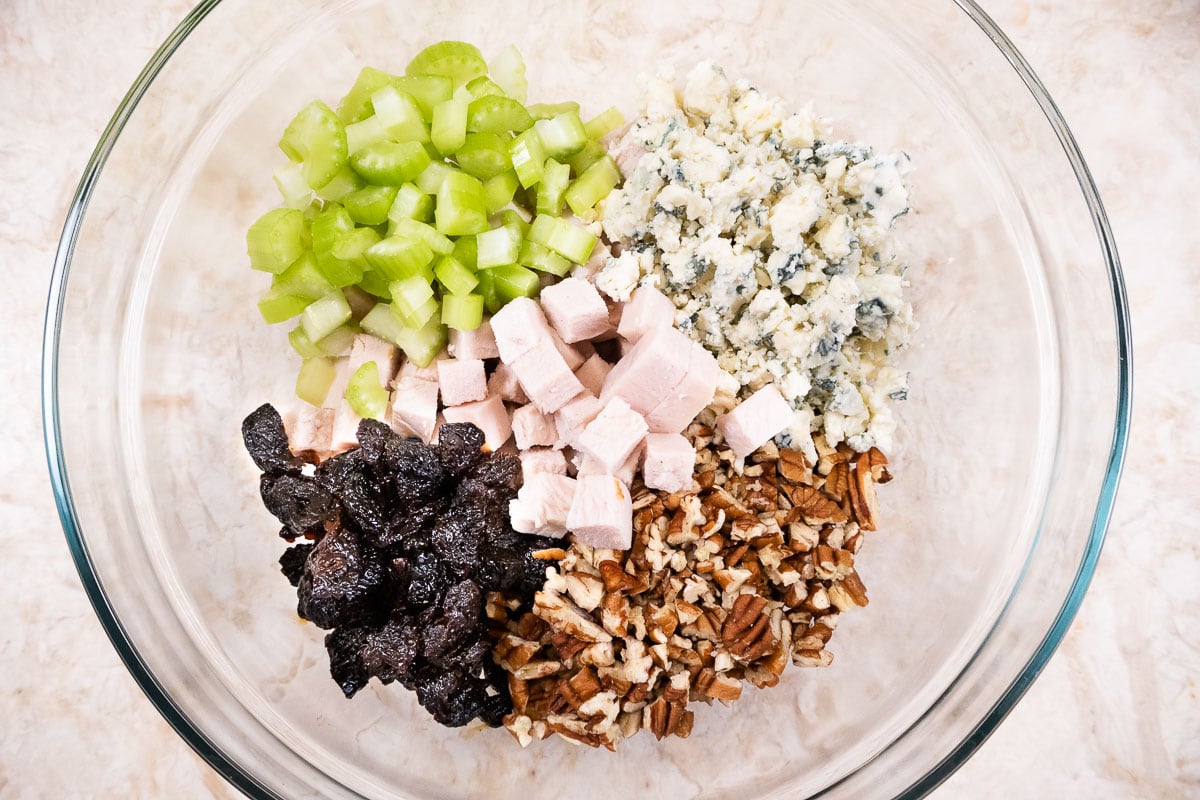
Step 4. Place the celery, bleu cheese, toasted pecans, cherries and turkey in a large bowl.
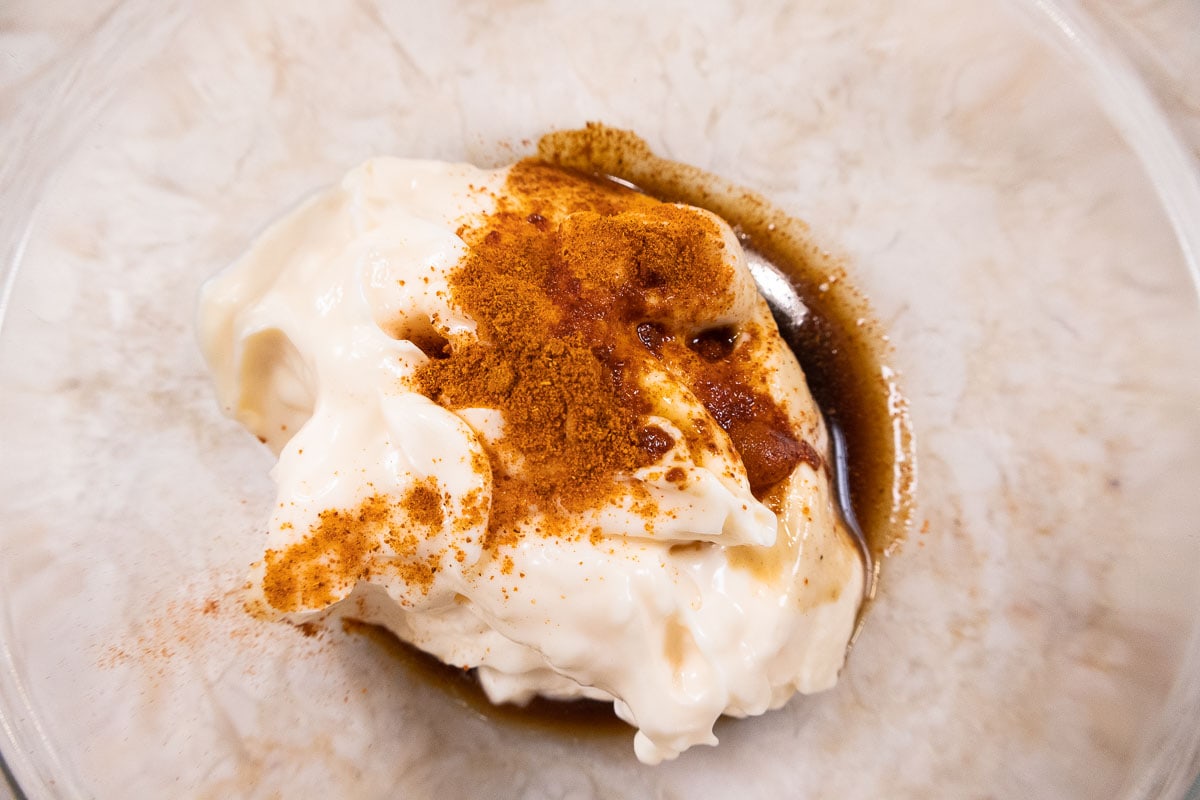
Step 5. Place the mayonnaise, worcestershire sauce and cayenne in a bowl.
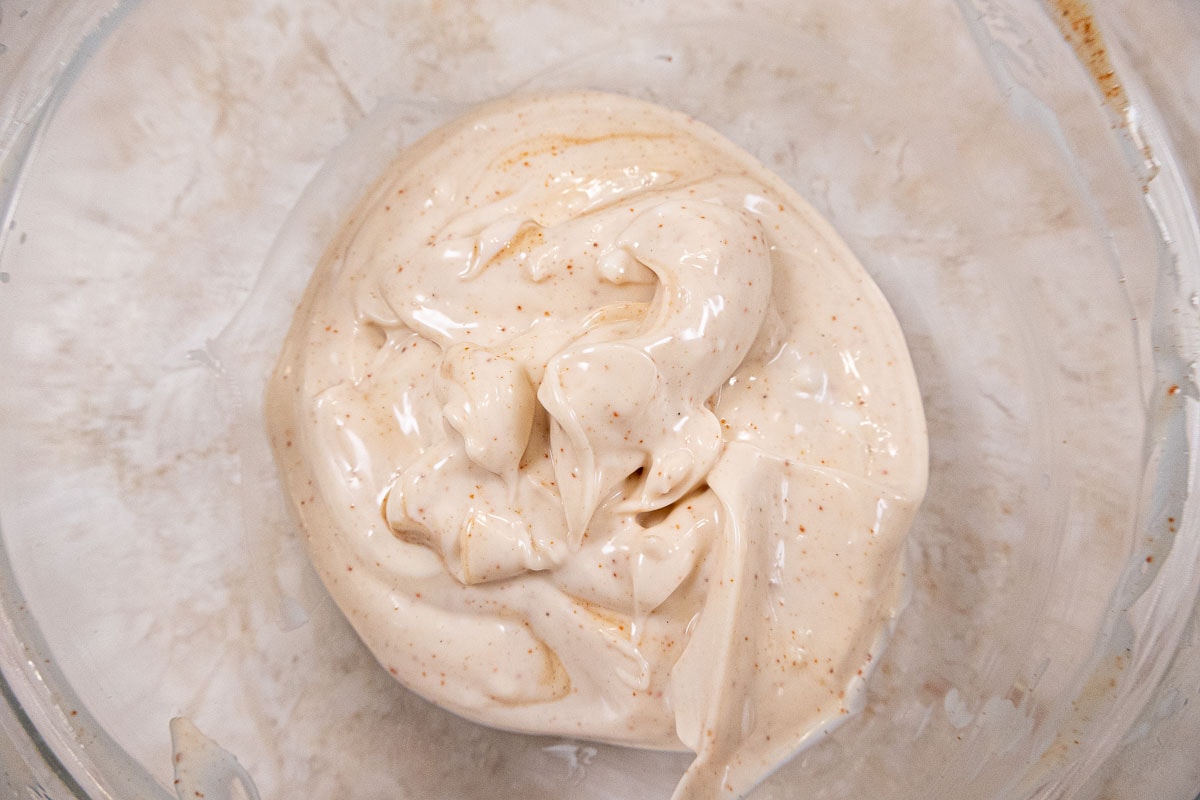
Step 6. Whisk the dressing ingredients together.
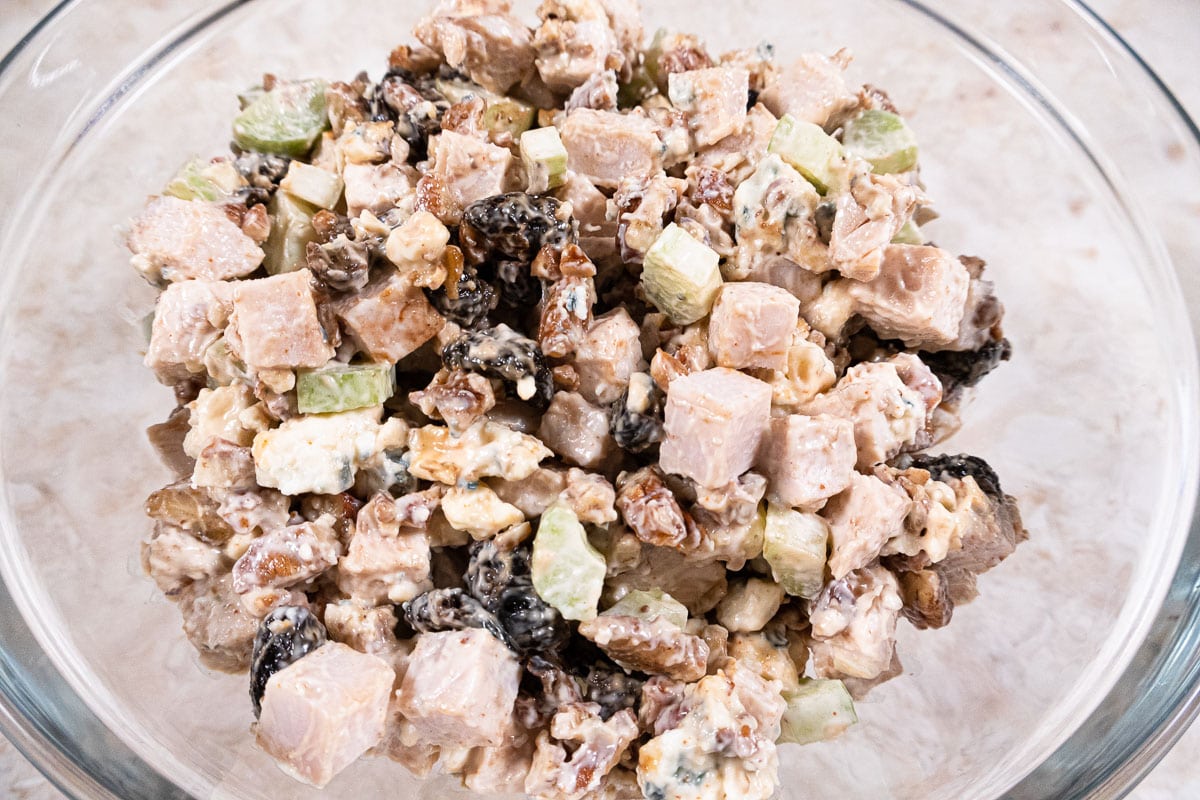
Step 7. Add the dressing to the bowl and mix everything together. Chill, preferably overnight.
Recipe FAQs
According to FoodSafety.gov, if it has been properly stored, it is safe to eat the salad within four days. 1 This rule also applies to similar mayonnaise-based salads like chicken, tuna, ham, and macaroni salads.Feb 17, 2023
This one cannot. It needs to be eaten within 4 days
Yes, but it will alter the taste. Any cheese can be used.
Expert tips
- Dried cherries are difficult to cut with a knife. Scissors work well here.
- For the easiest way to chop the nuts after roasting and cooling see my post Chopping Nuts - An Easier Way
- If you're a bread baker, save the water in which the cherries soaked. It is great to use as the liquid or part of the liquid in a rye or whole wheat bread. If it won't be used in a couple of days, freeze it. Thaw to use.
- If you're not storing your celery this way, you should be.
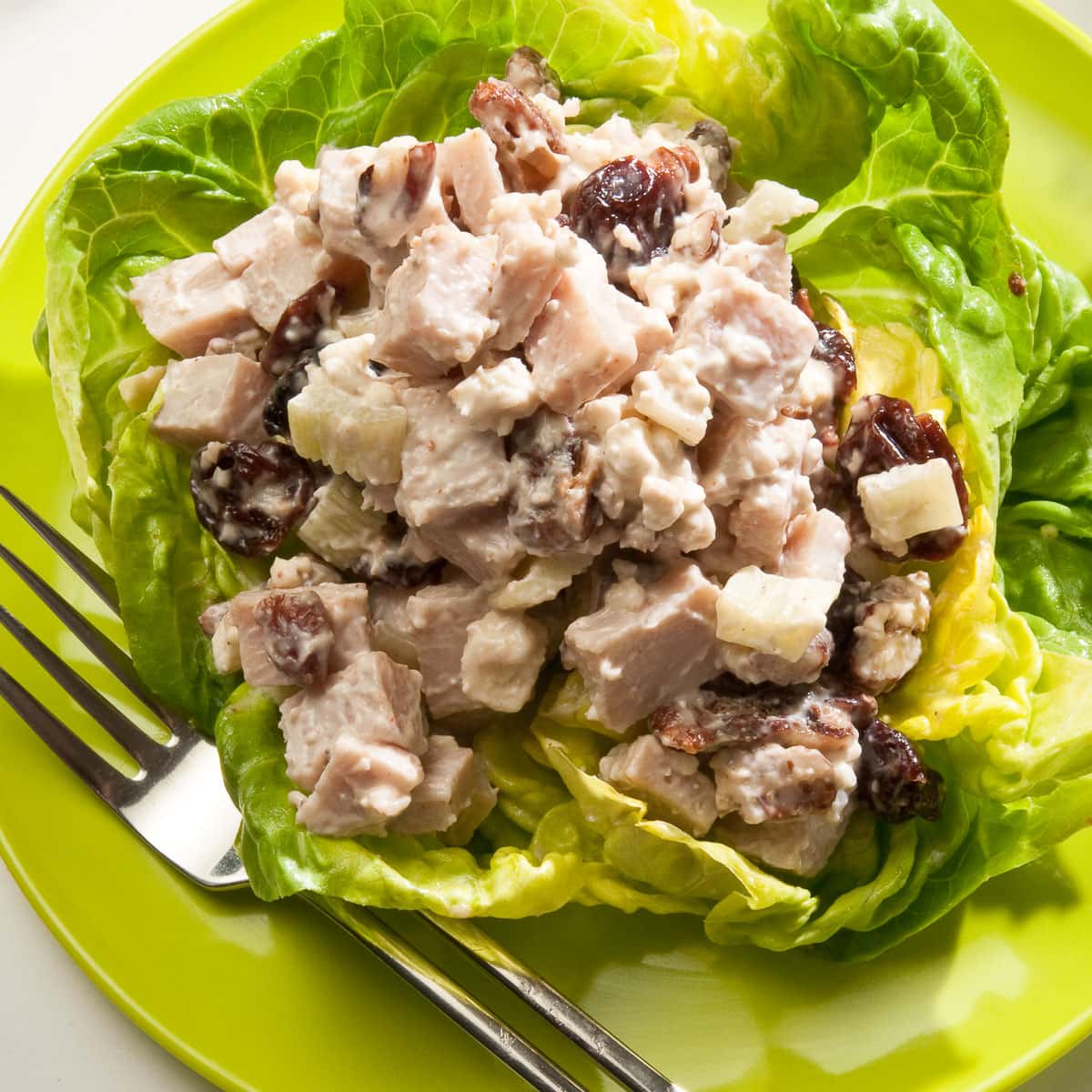
More Simply Delicious Salads
If you love this Smoked Turkey Salad or any other recipe on my website, please please leave a 🌟 star rating in the recipe card and let me know how it went the 📝 comments below. I love hearing from you!
Smoked Turkey Salad
Ingredients
Smoked Turkey Salay
- 4 ounces pecans (114 grams)
- ⅔ cup dried cherries
- ⅔ cup celery, cut
- 1 pound smoked turkey (454 grams)
- 4 ounces bleu cheese, (114 grams)
Salad Dressing
- ¾ cup mayonnaise
- 1 teaspoon worcestershire sauce
- ¼ teaspoon cayenne pepper or to taste
- ½ teaspoon salt
Instructions
Smoked Turkey Salad
- Preheat the oven to 350°F. Place the pecans on a baking sheet in a single layer and toast for 7 to 9 minutes until fragrant and slightly darker. Cool completely. Chop coarsely. See my post, Chopping Nuts, A Quicker Way. Set aside.
- Cut the dried cherries in half. Pour really hot water over them and let the soak until softened. Squeeze the water out of them.
- Cube the turkey in about ½" square pieces.
- Combine the turkey, cherries, celery, bleu cheese, and pecans together. Mix well.
Salad Dressing
- Whisk together the mayonnaise, worcestershire sauce and cayenne pepper in a small bowl. Add it to salad ingredients and mix well.
- Taste for salt and cayenne. I have found mayonnaise and smoked turkey to be very salty so often don't add any additional. If a zippier version is preferred, add cayenne to taste.
- This is best made the day before so all of the flavors can meld.
Notes
Nutrition
Storing Celery
I'm not sure where heard or found this technique but I can tell you it really works. In the past, I found my celery would often go bad because I didn't use it fast enough.
With this method, it will stay crisp and fresh for a month in the refrigerator. Even better it takes only two steps.
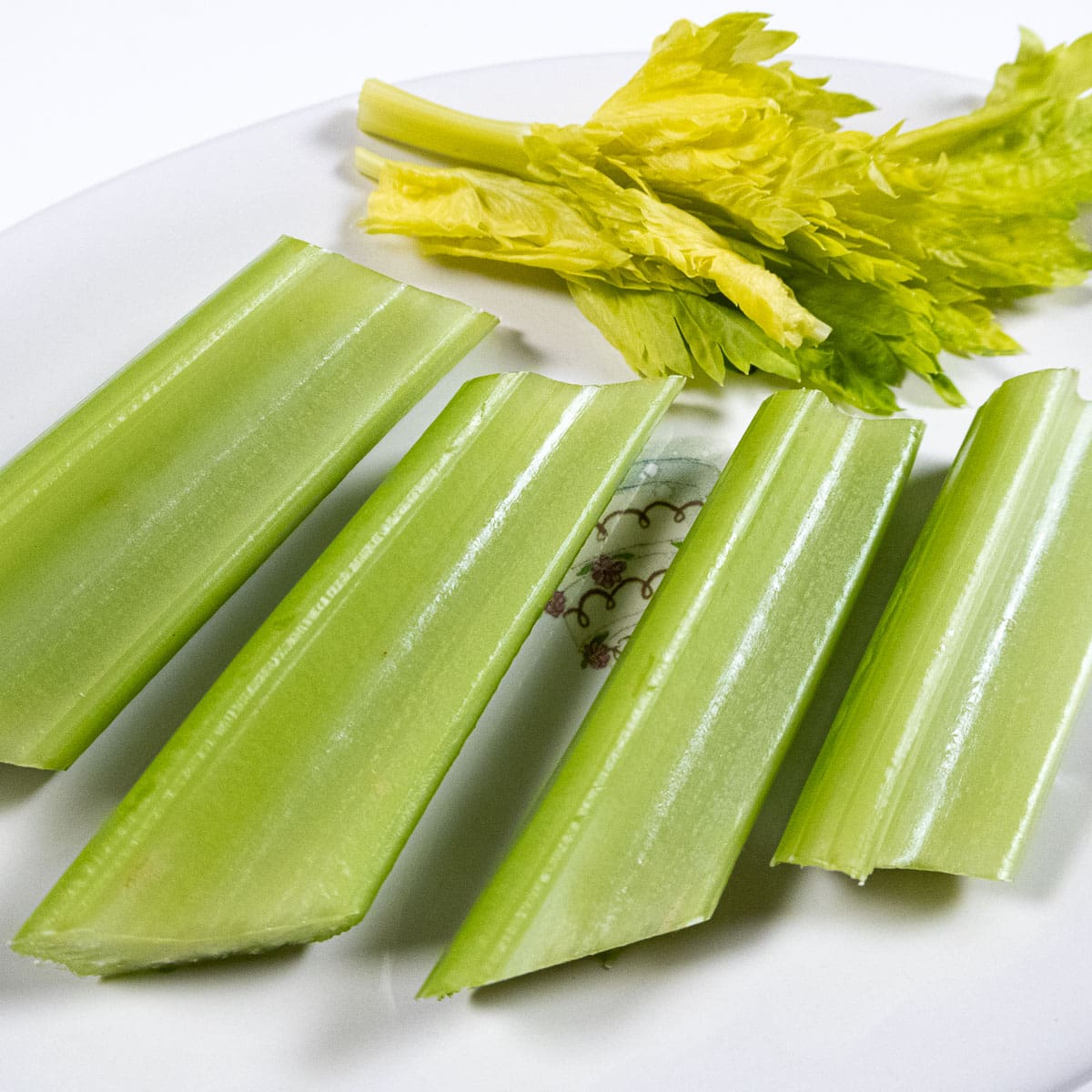
Step by Step Instructions
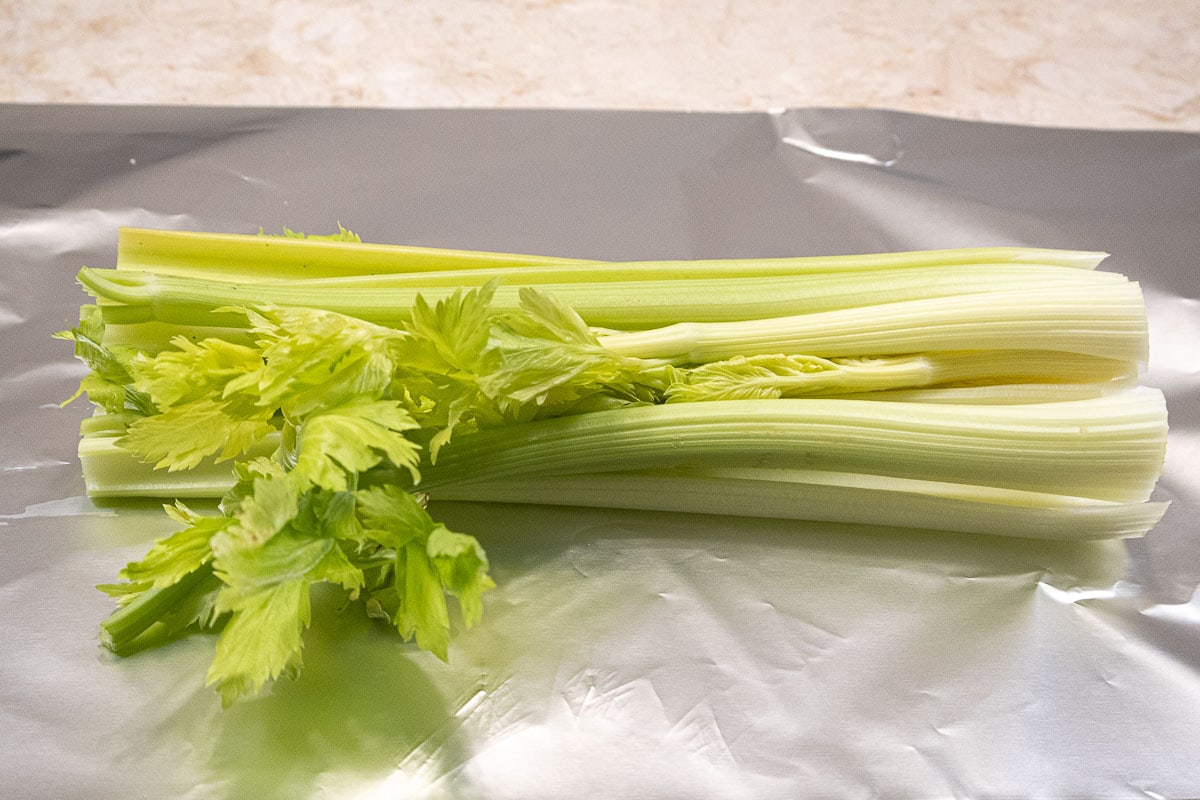
Step 1. Cut the top and bottom off the celery. Do not wash it until you use it. Place it on a large piece of foil.
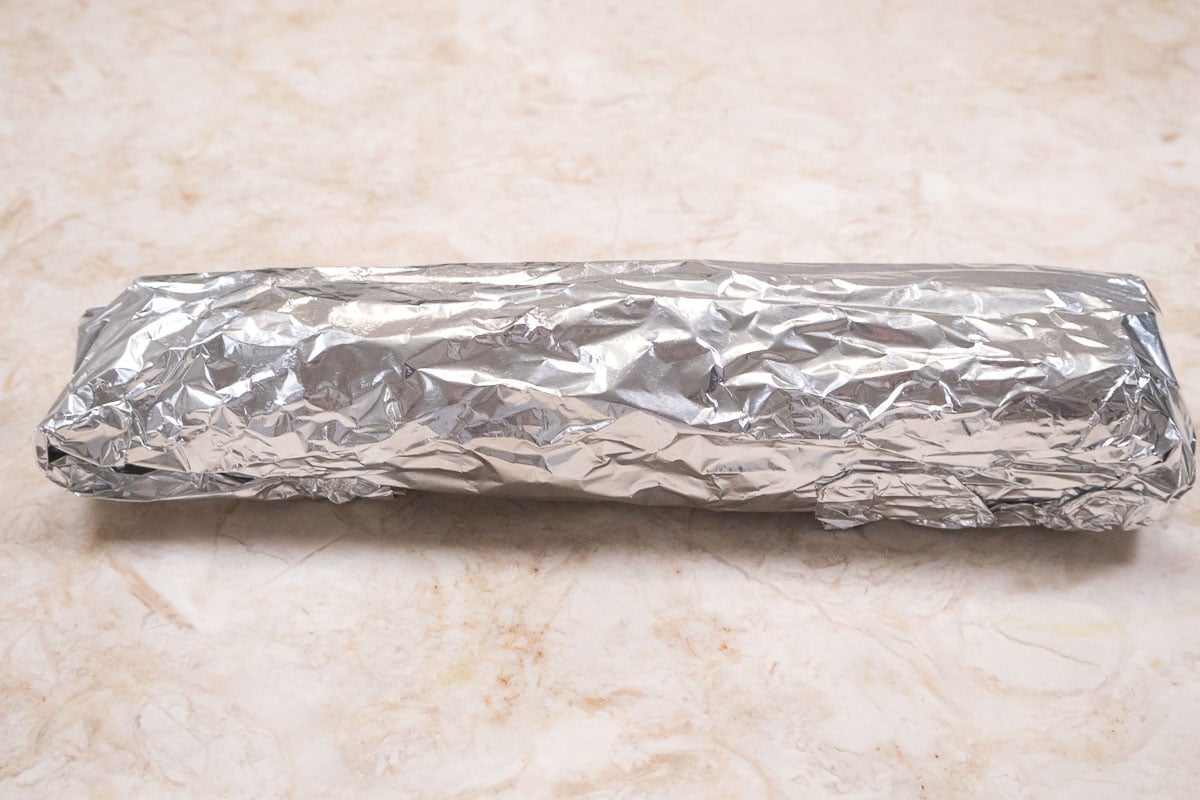
Step 2. Wrap the celery tightly in foil and store in the vegetable crisper of refrigerator.
That's it. Enjoy your celery!
Other Techniques You Might Find Helpful
Love this recipe or any other on my site? Please leave a 5-star 🌟🌟🌟🌟🌟rating in the recipe card & consider leaving a review in the comments further down. Star ratings help people discover my recipes online. Thanks for reading.
Lemonade Cake with Blueberry Sauce
You won't want to miss this Lemonade Cake with Blueberry Sauce, cool as a cucumber and just perfect for summer. When I taught this, everyone loved the clean cut of this cake with the deep purple sauce running down the pale yellow sides.
A tart lemon curd is tempered with whipped cream and a meringue and poured over a vanilla wafer crust. And that blueberry sauce is one you will make over and over to serve with pancakes and waffles as well as over ice cream. As I said, just made for summer!!
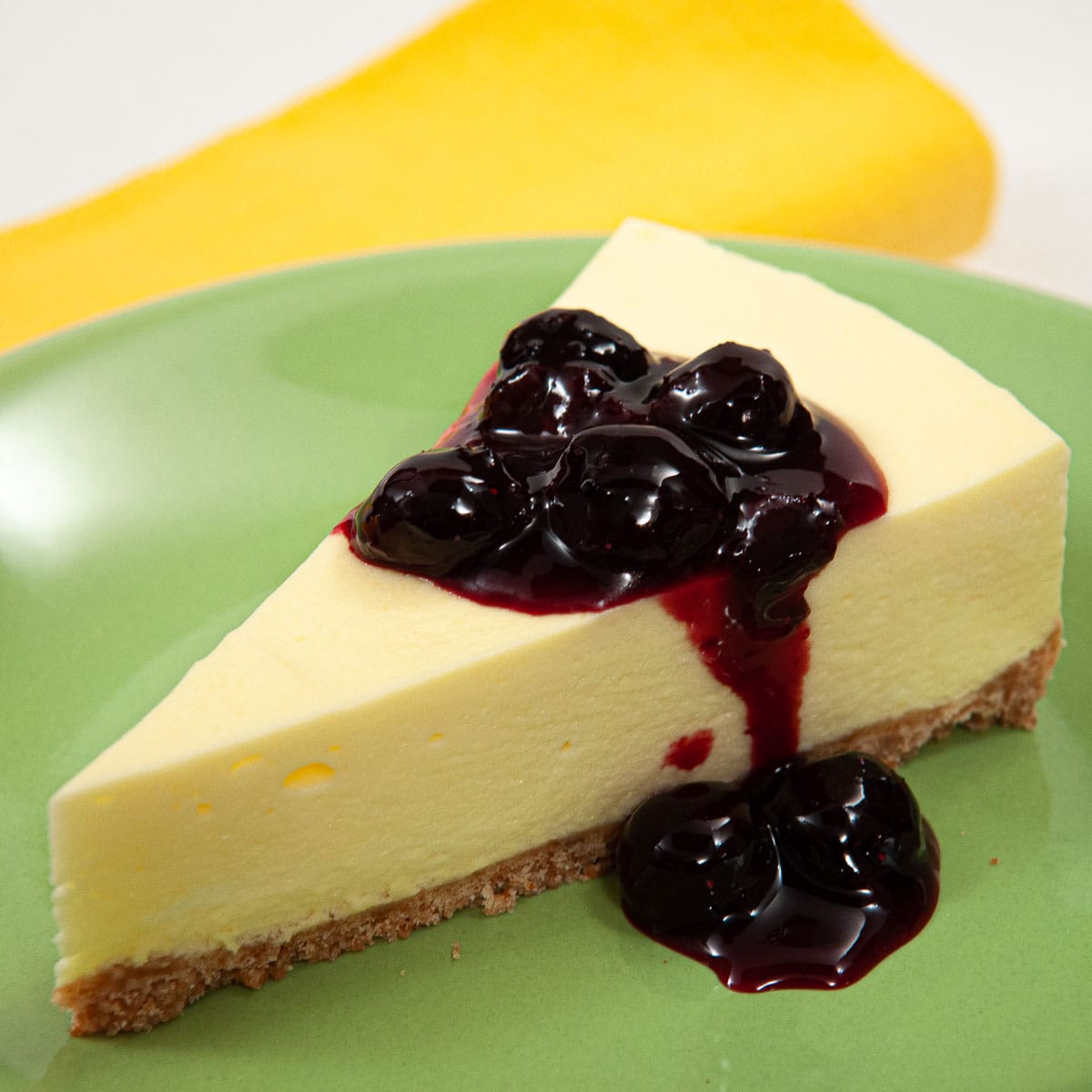
While it does have several component parts they can be made ahead and the cake just assembled. Or, the entire cake can be made ahead and frozen.
Be sure to check out some of the other desserts with lemon and/or blueberries: Blueberry Poke Cake, Blueberry Pizza in a Brioche Crust (the 60 Second Brioche) or the Lemon Meringue Cake which is not to be missed.
[feast_advanced_jump_to]Why You'll Love This Recipe
- It tastes incredible. The sweet-tart mousse served with the whole blueberry sauce is a classic combination for anytime and anything.
- Uses basic ingredients available in any grocery store
- It can be made ahead and frozen. Perfect when time is not your friend.
- Elegantly simple yet boldly flavored.
Recipe Ingredients
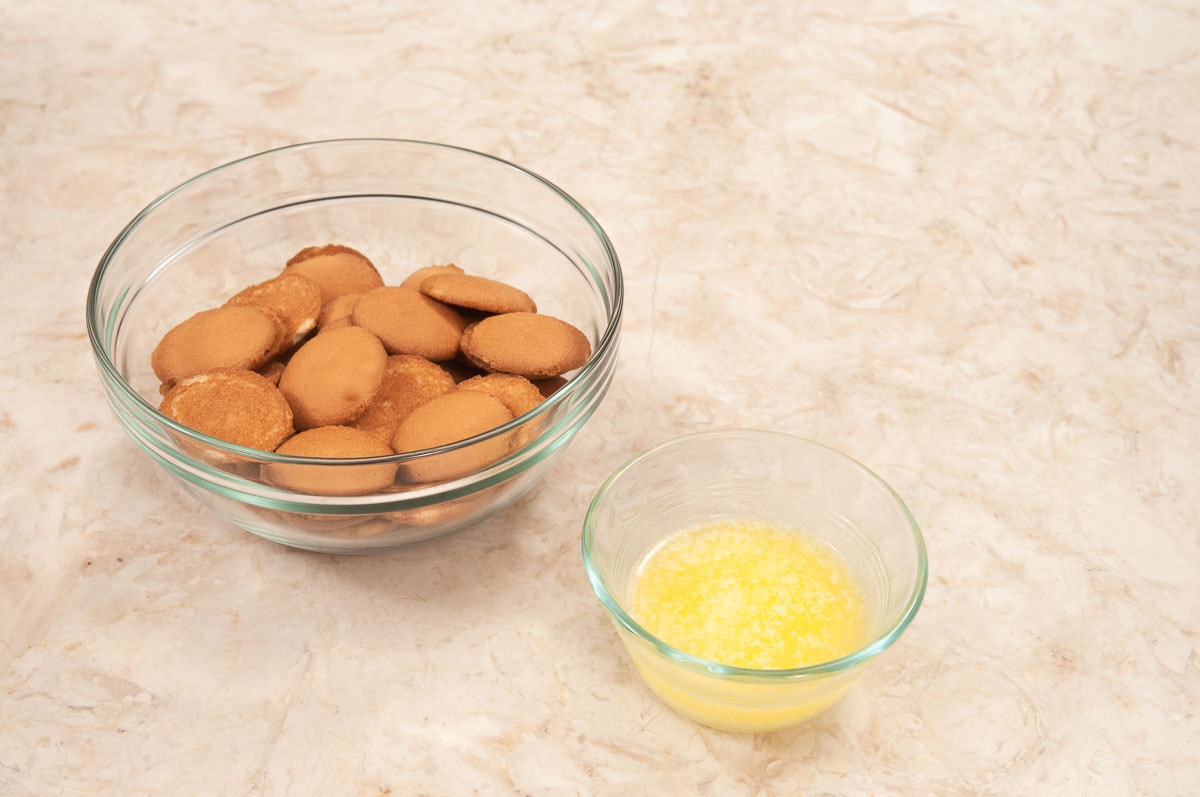
Vanilla Wafers and melted butter
Lemon Curd

BACK ROW: Egg yolks, whole eggs, lemon juice
MIDDLE ROW: Unsalted butter
FRONT ROW: Granulated sugar, gelatin, water
Lemon Mousse

Clockwise: Egg whites, lemon curd, heavy cream, granulated sugar
Blueberry Sauce
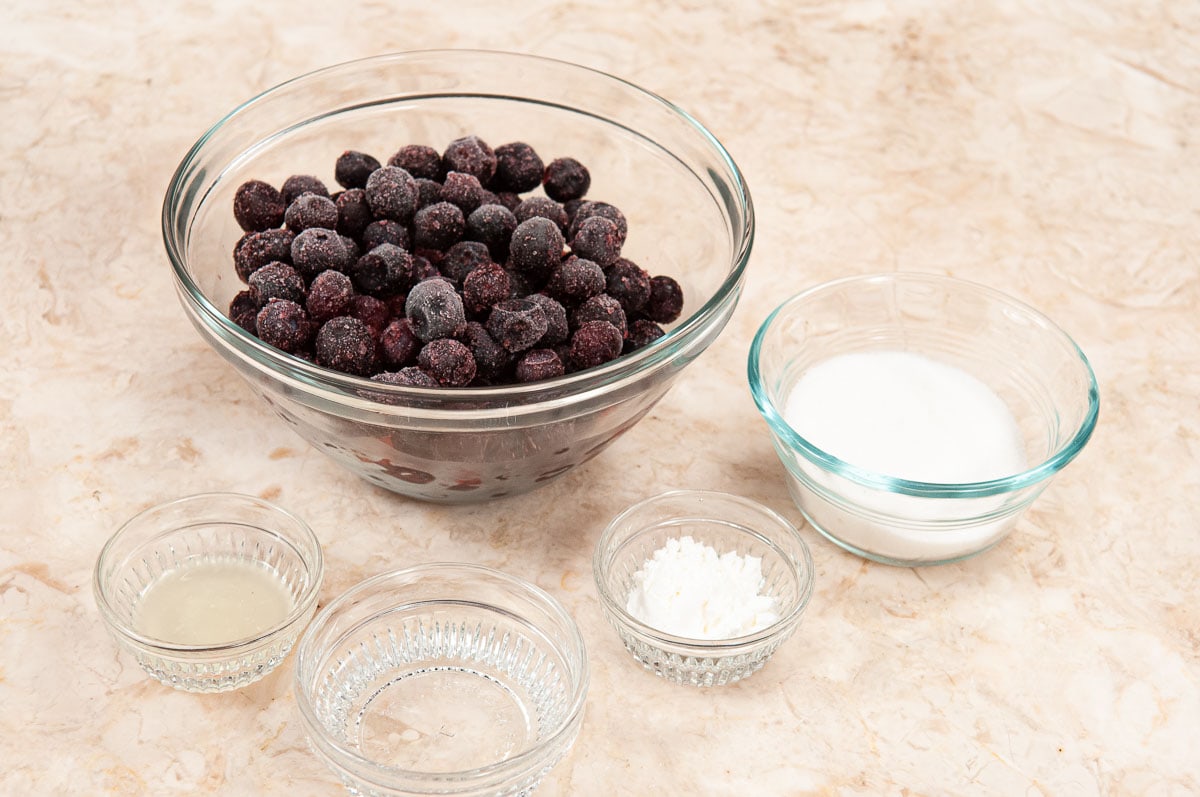
Clockwise: Blueberries, granulated sugar, cornstarch, water, lemon juice
Be sure to see the recipe card below for the full ingredients list and instructions.
Step by Step Instructions
Lemon Curd
Using the ingredients listed below, prepare the lemon curd as pictured in the How to Make Lemon Curd.
It is important to make the curd and let it cool until just barely cool at room temperature. If it gets too set, just put it in the microwave for 10 to 15 seconds at a time until it is still thick and cool but will blend well with the meringue and whipped cream.
Crumb Crust
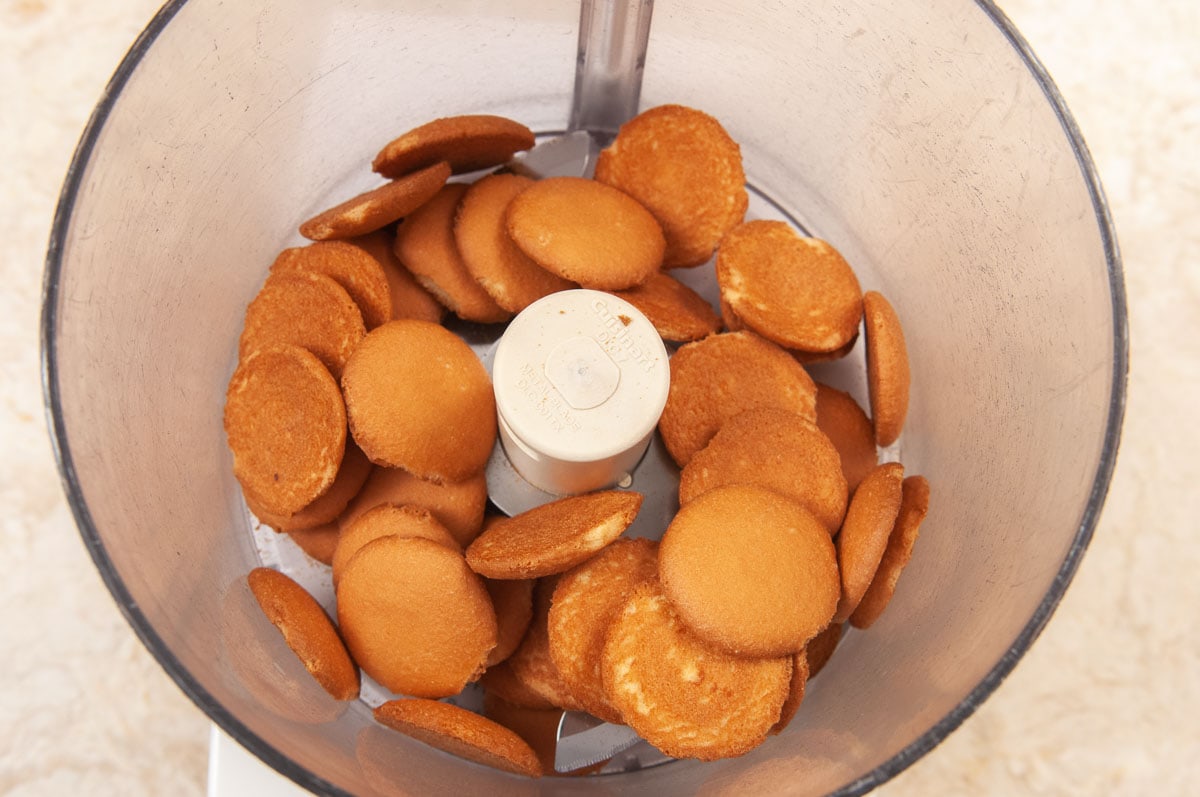
Step 1. Place the vanilla wafers in the bowl of a processor.
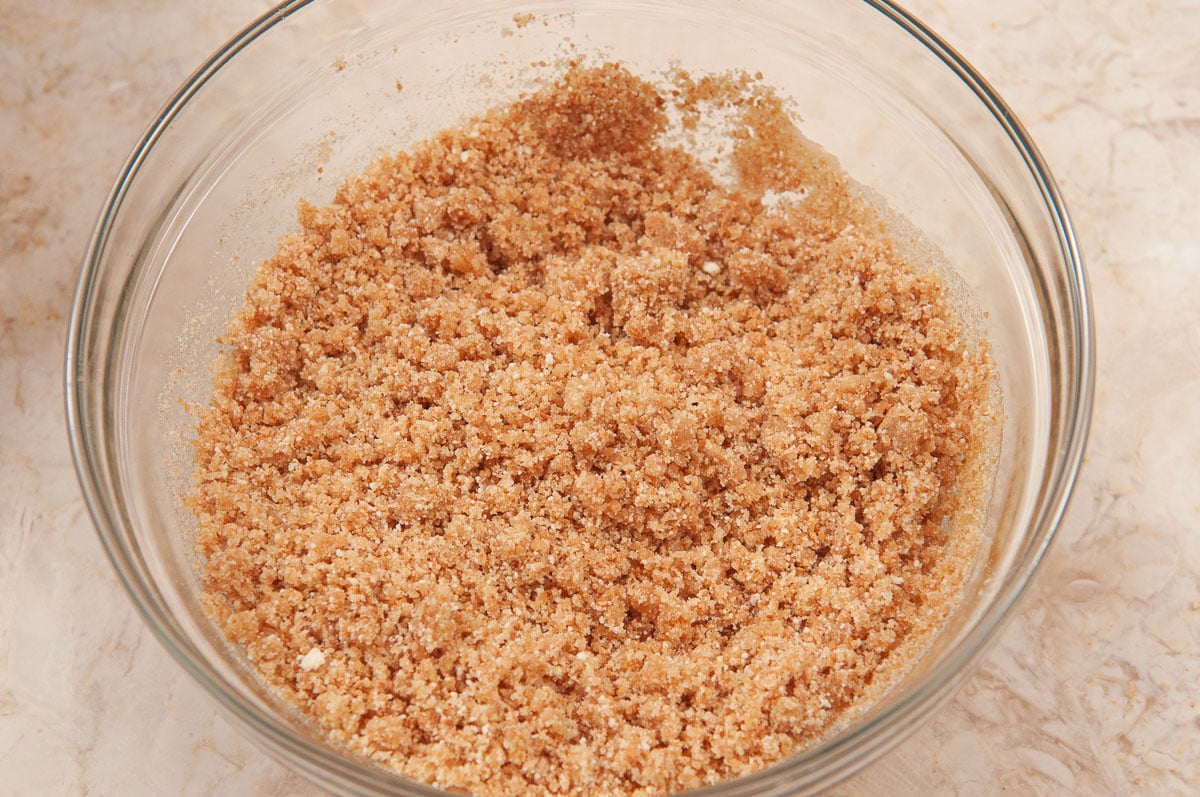
Step 2. Process the crumbs until fine and place in a medium size bowl.
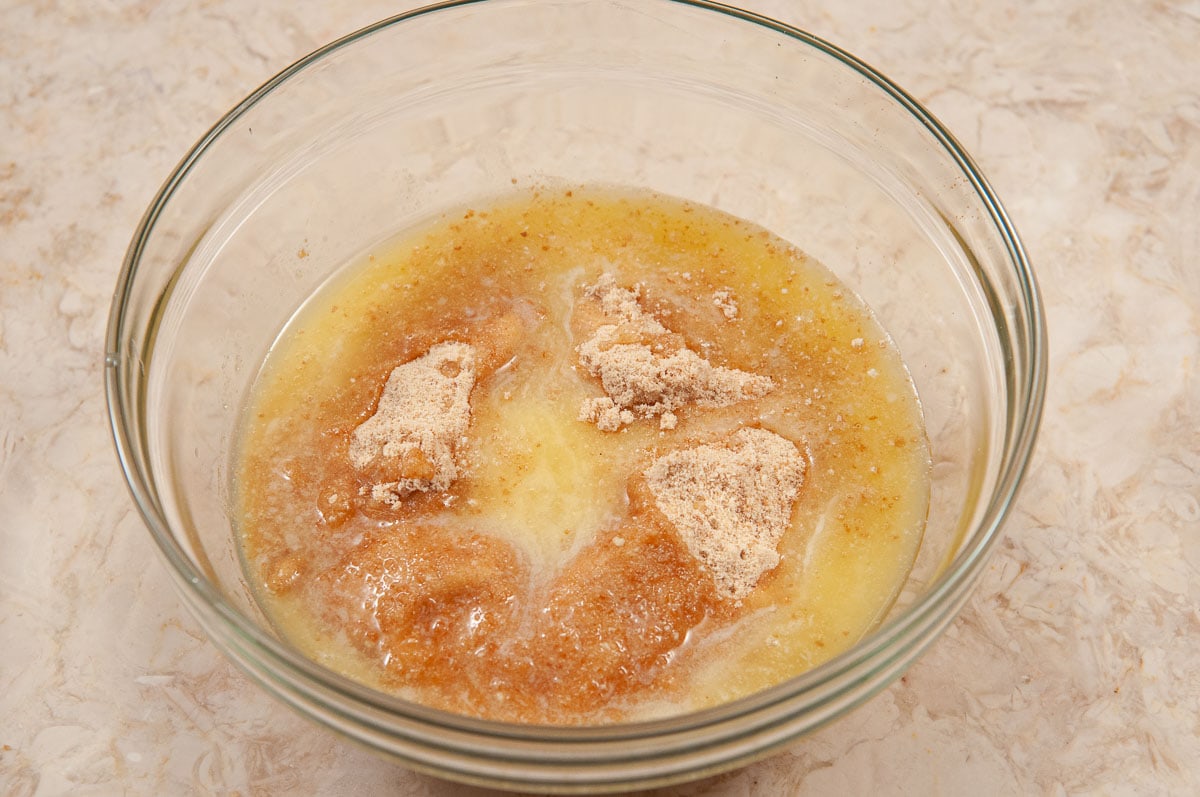
Step 3. Add the butter to the crumbs, mixing so the crumbs are evenly buttered. Pour into the prepared pan.
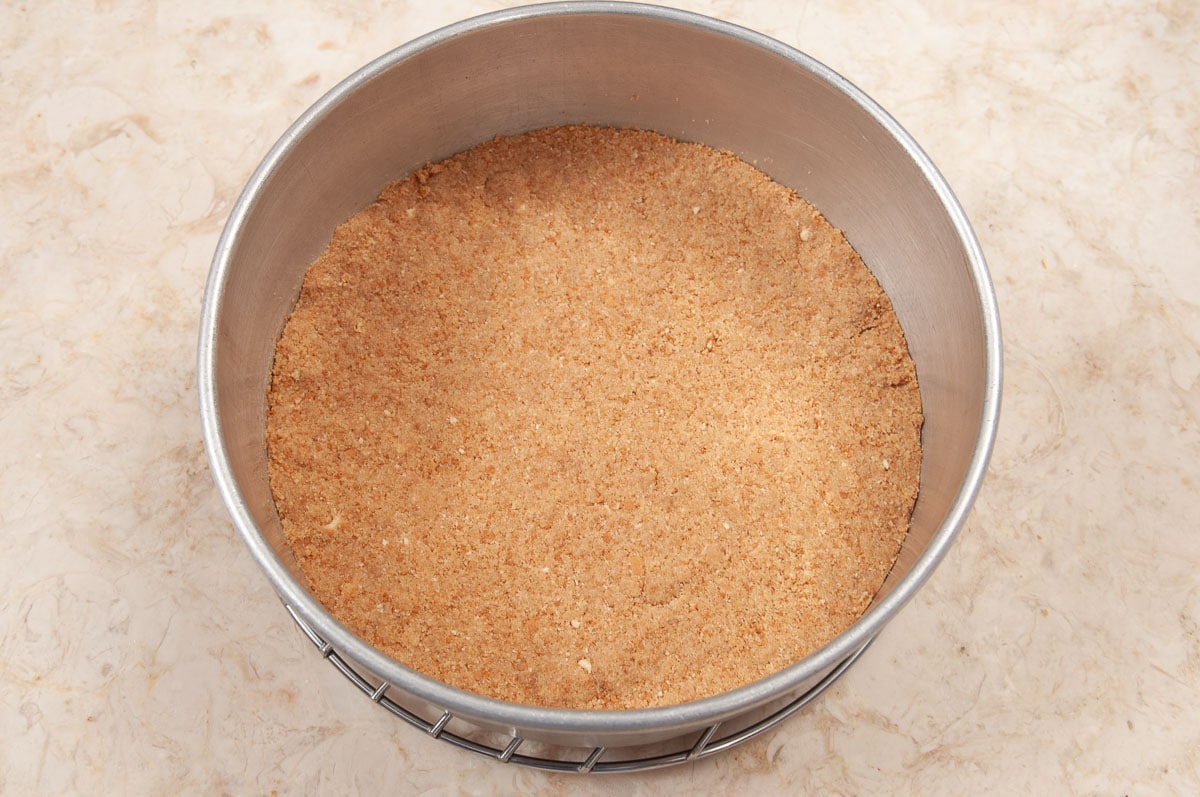
Step 4. Pat the crumbs evenly and firmly into the bottom of the pan. Set aside.
Lemon Mousse Filling
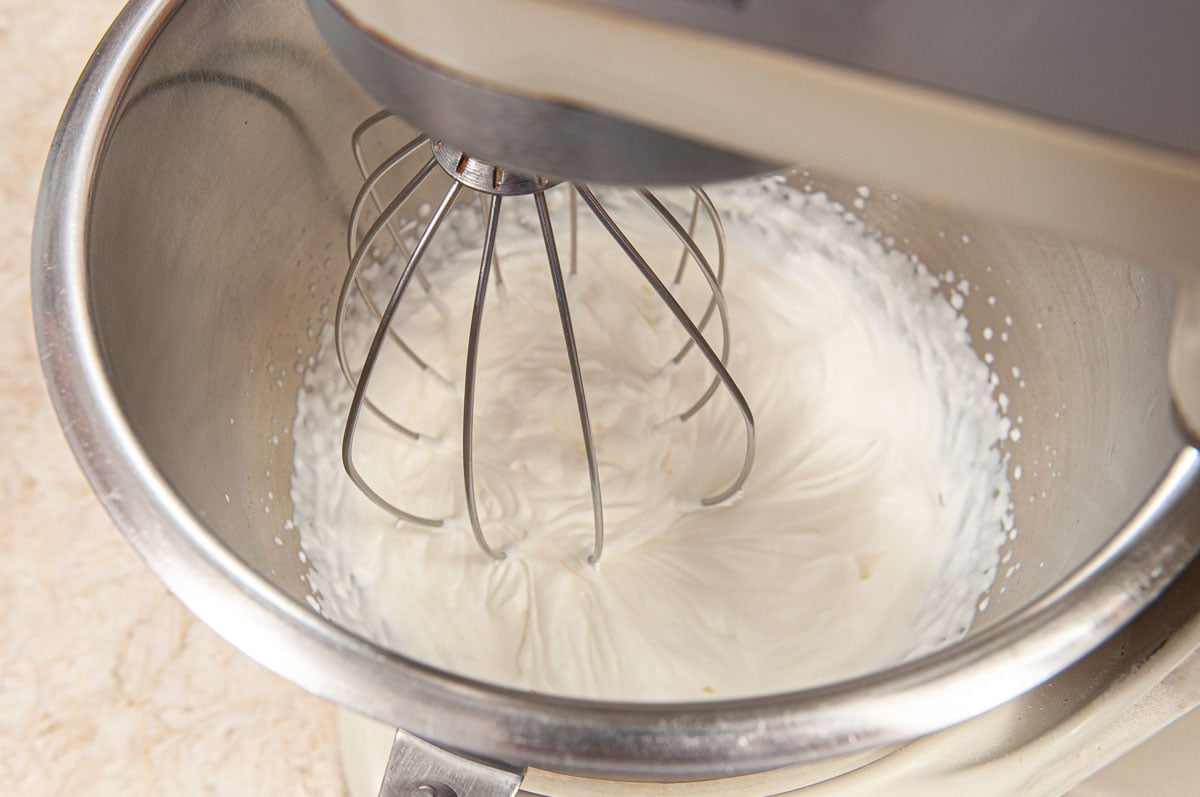
Step 1. Whip the cream to medium peaks. Remove it from the bowl and set it aside.
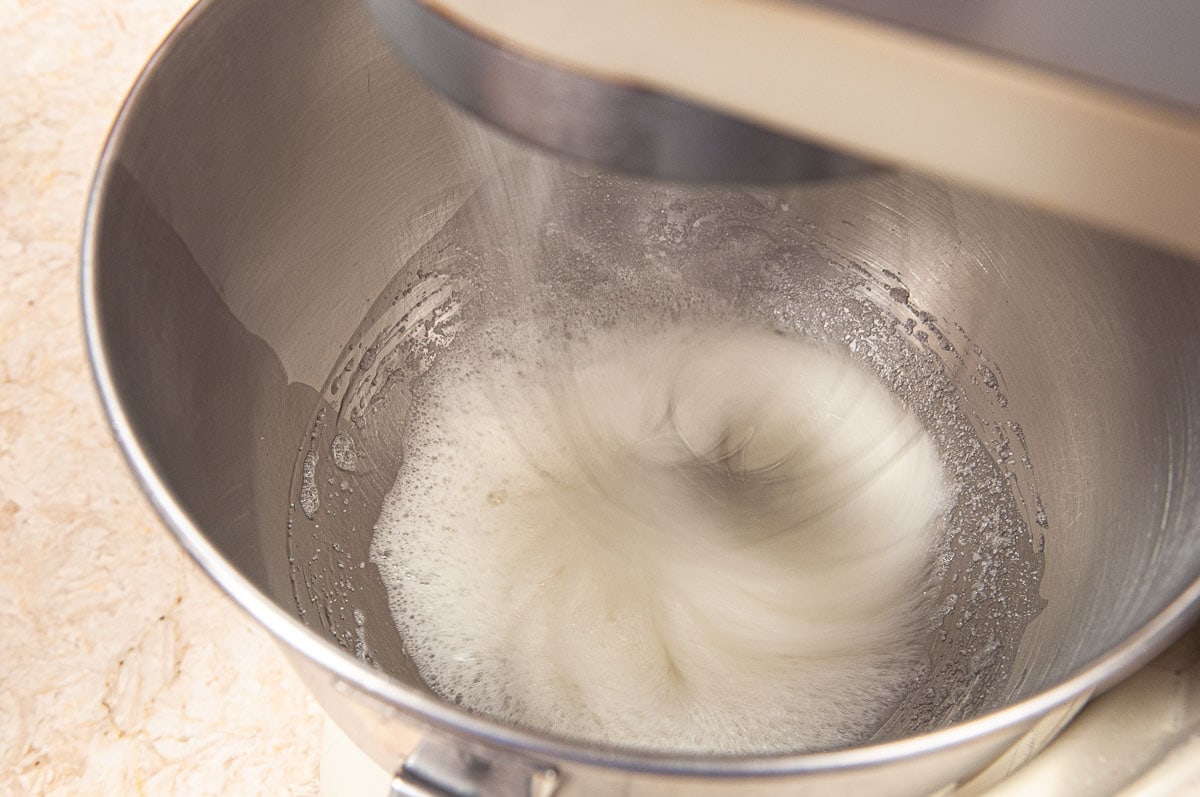
Step 2. In a clean mixing bowl, whip the whites until they leave tracks from the beater.
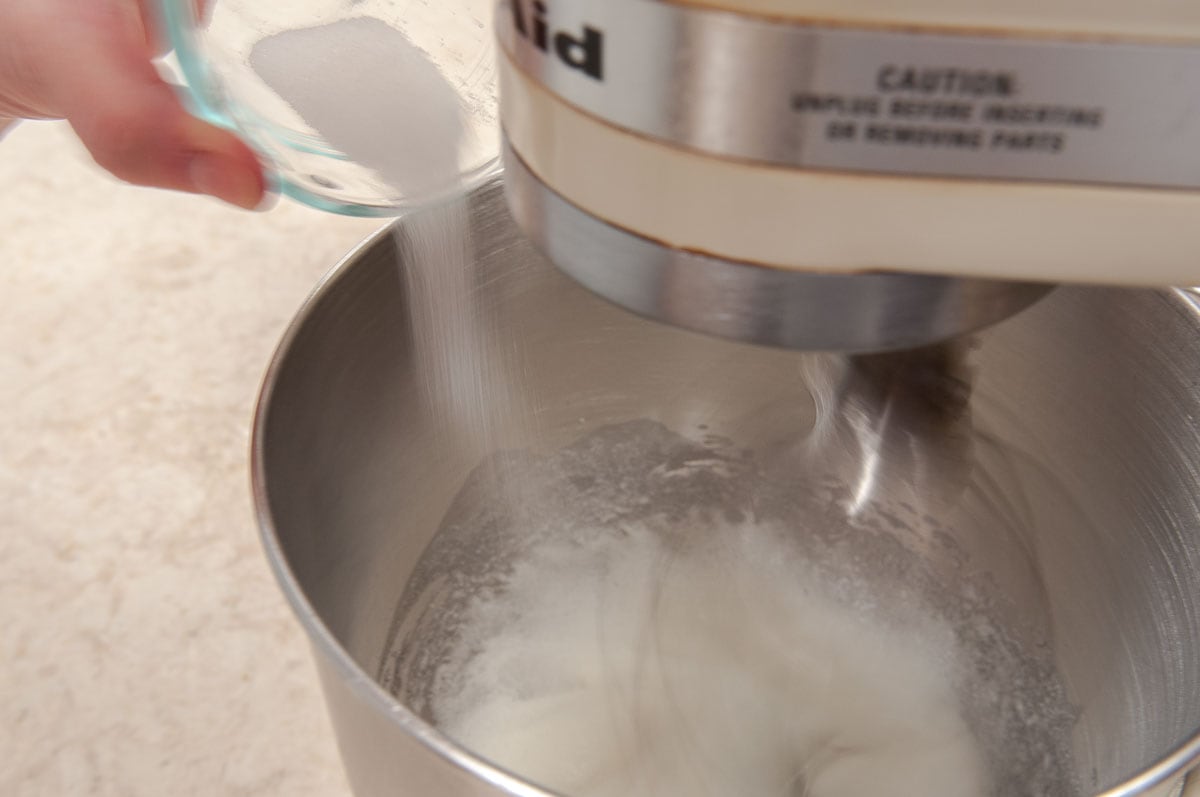
Step 3. Slowly add the sugar to the beating egg whites. Wait about 10 seconds before adding the next addition.
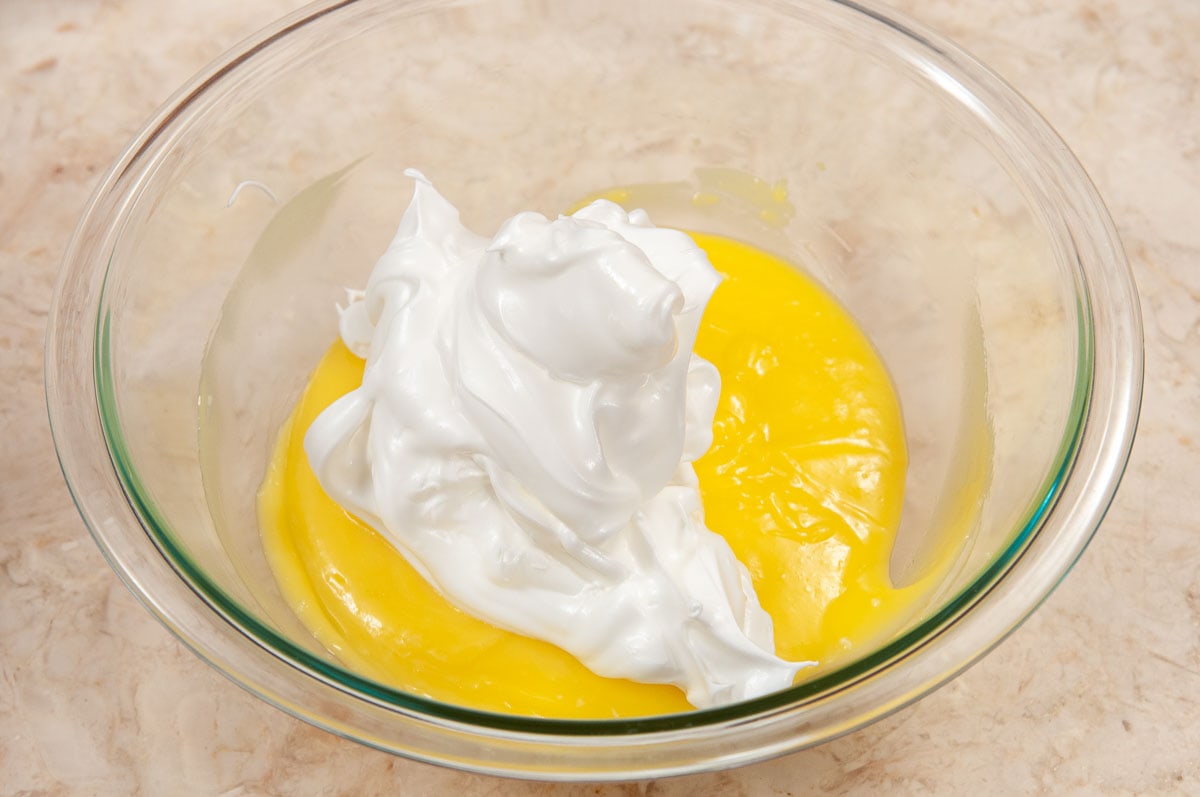
Step 4. Add the meringue into the lemon curd and fold in. It doesn't have to be folded in completely.
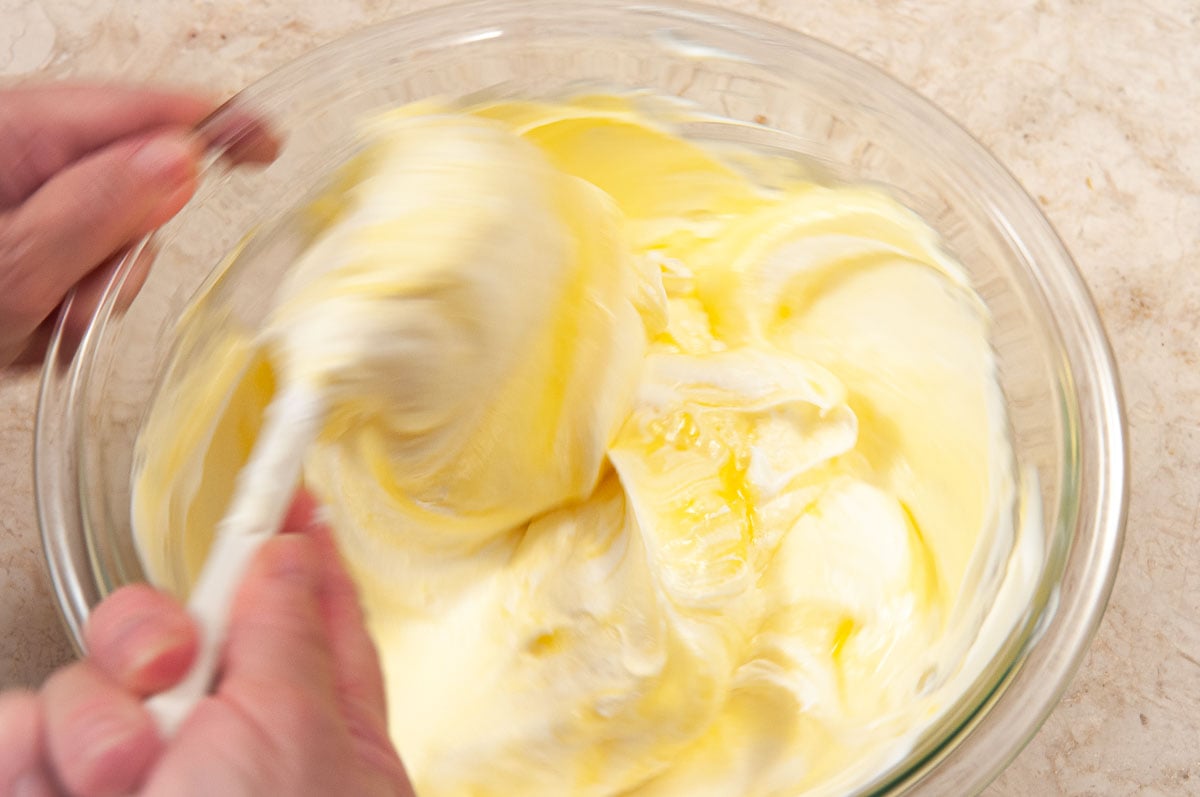
Step 5. The reserved whipped cream is added to the lemon curd mixture and everything is folded together completely.
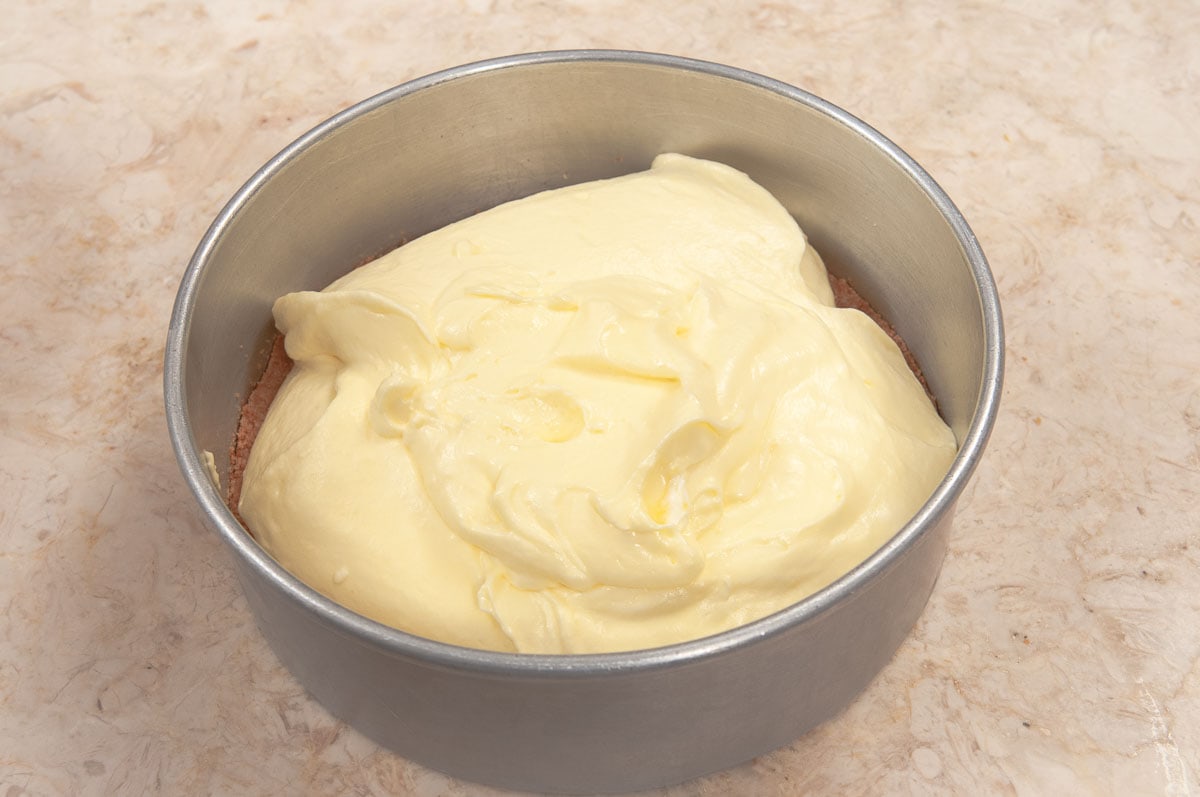
Step 6. Pour the filling over the crust in the pan.
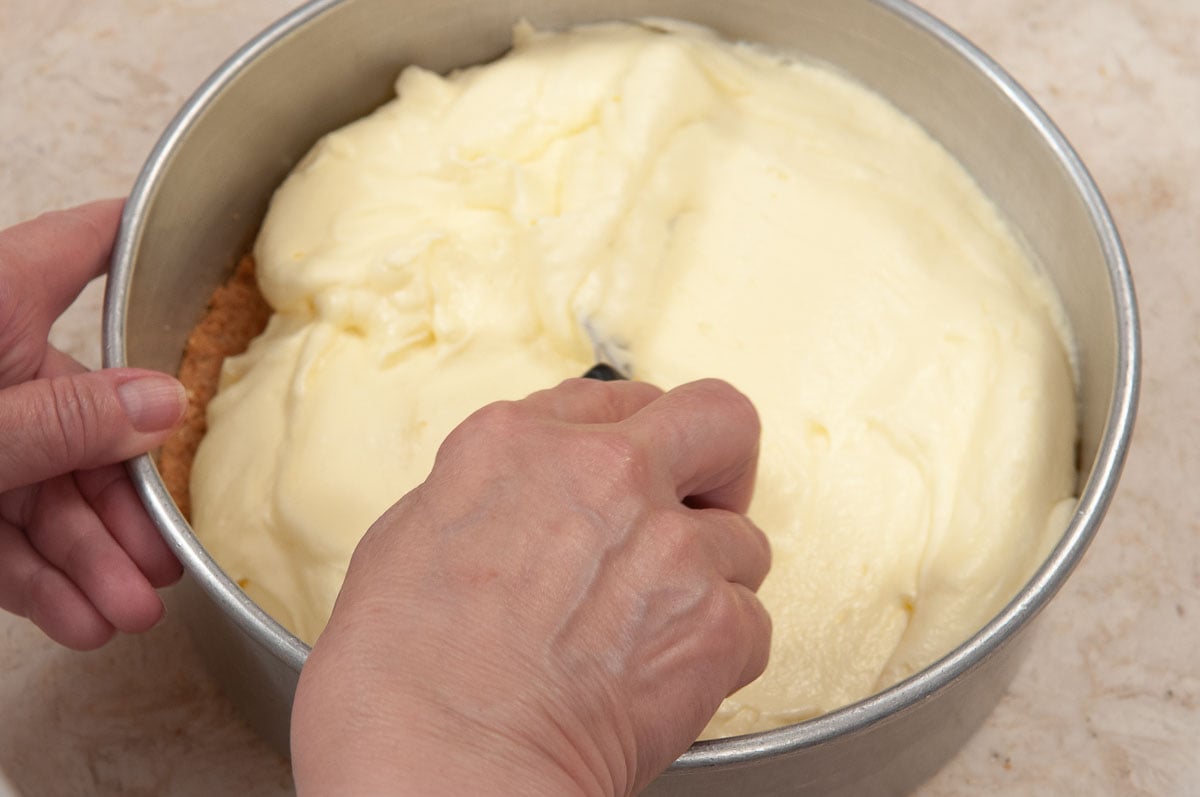
Step 7. Smooth the filling our with an offset spatula.
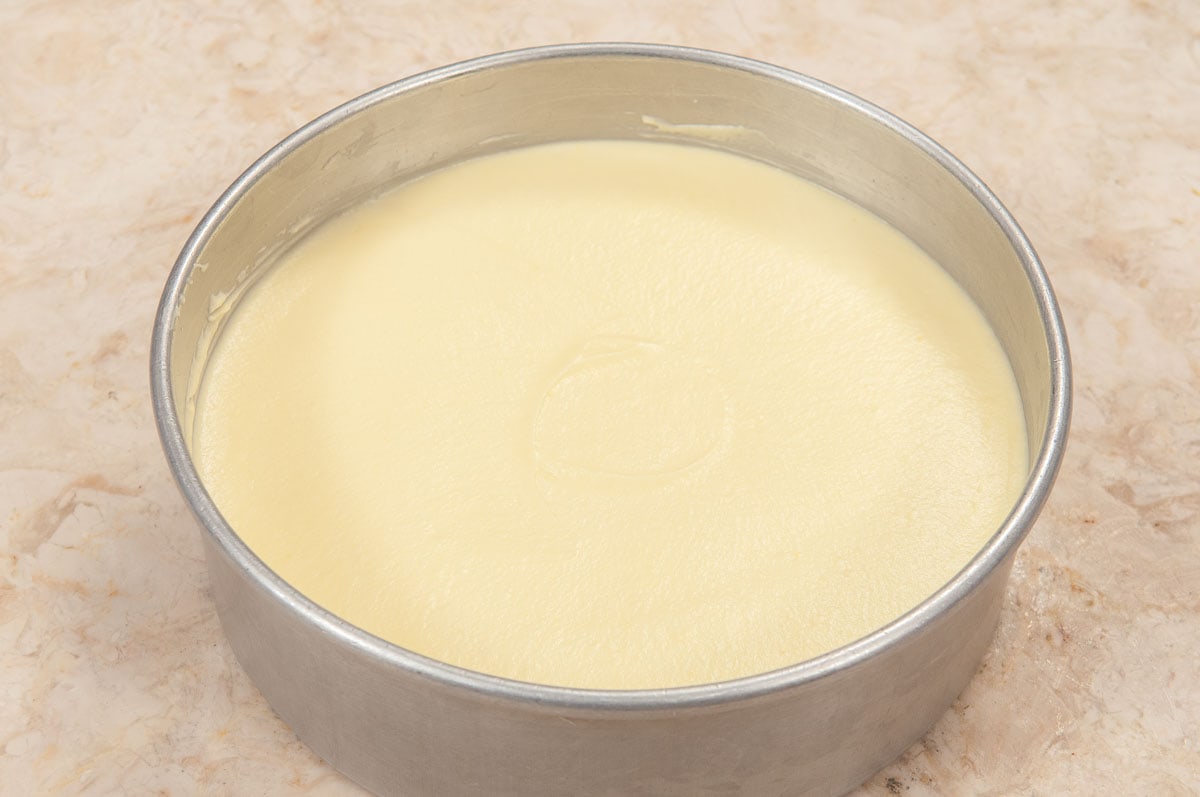
Step 8. Place the cake in the refrigerator to firm up.
Releasing the Cake
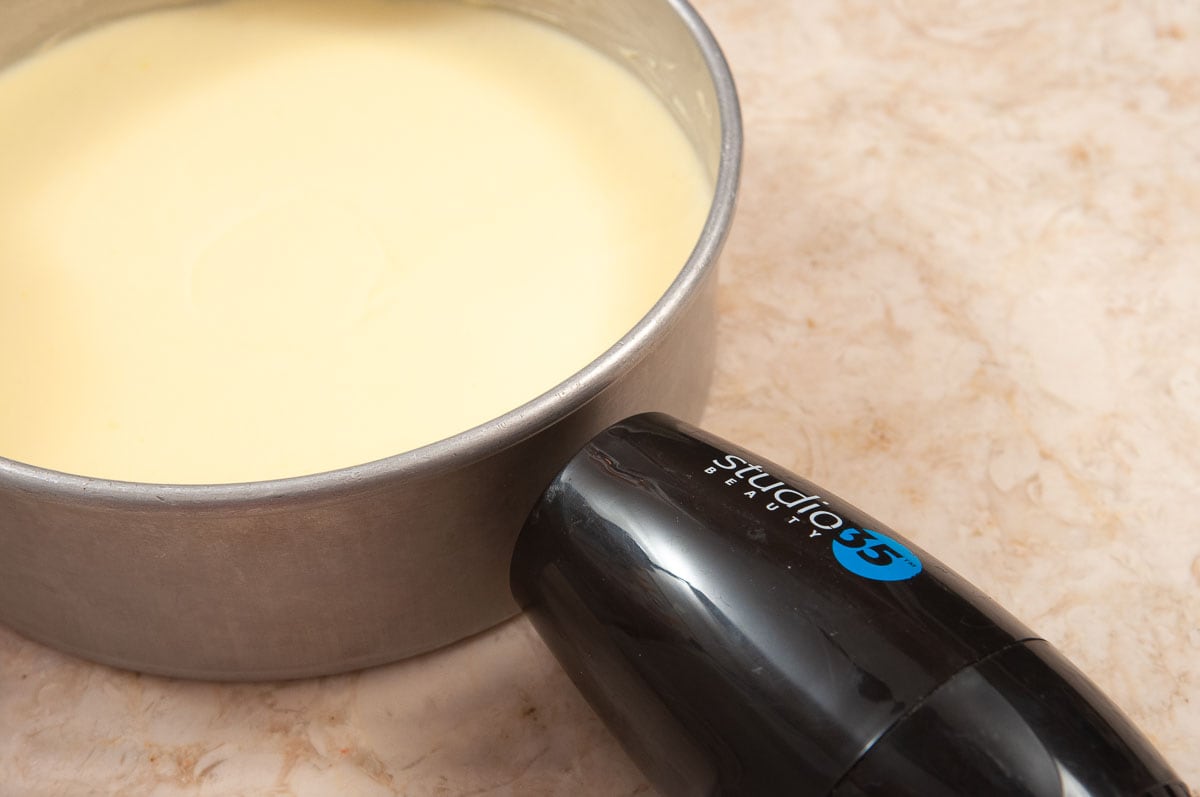
Step 1. Place a hair blower on high about ½ inch from the side of the pan. Go around the side briefly. You just want to loosen the mousse.
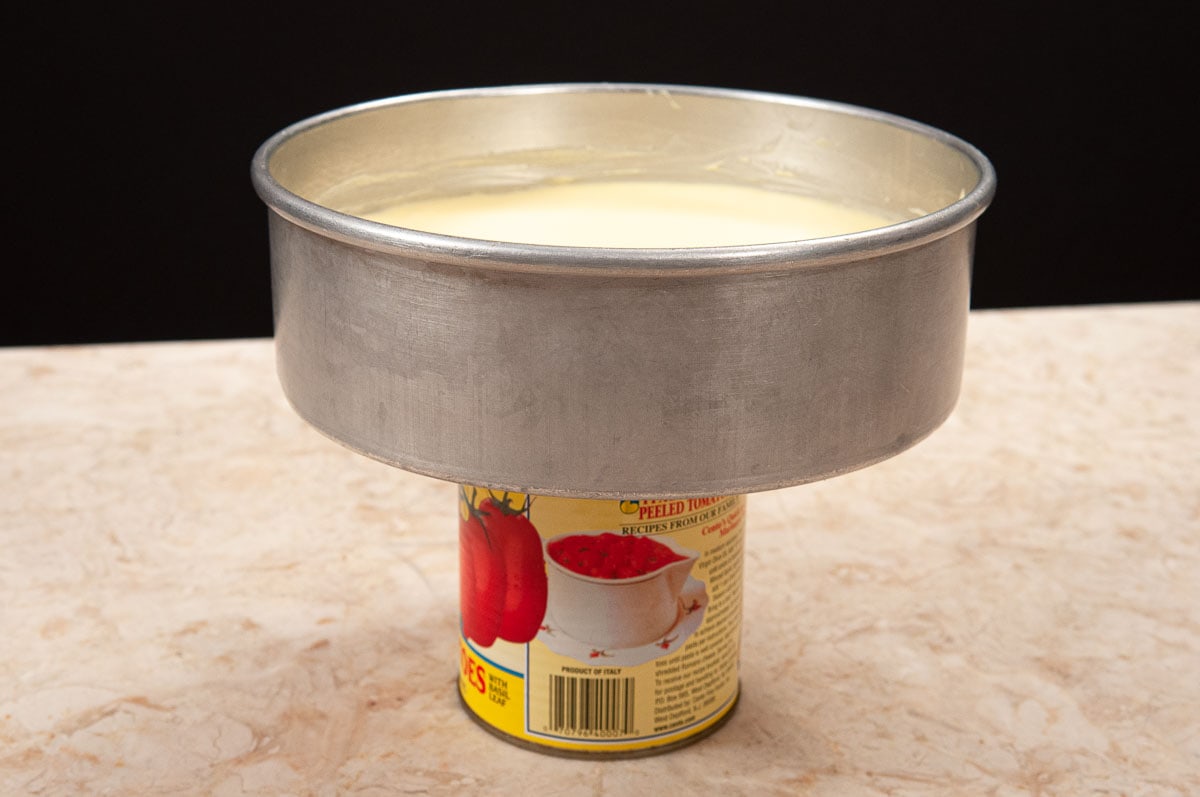
Step 2. Place the cake on a wide can.
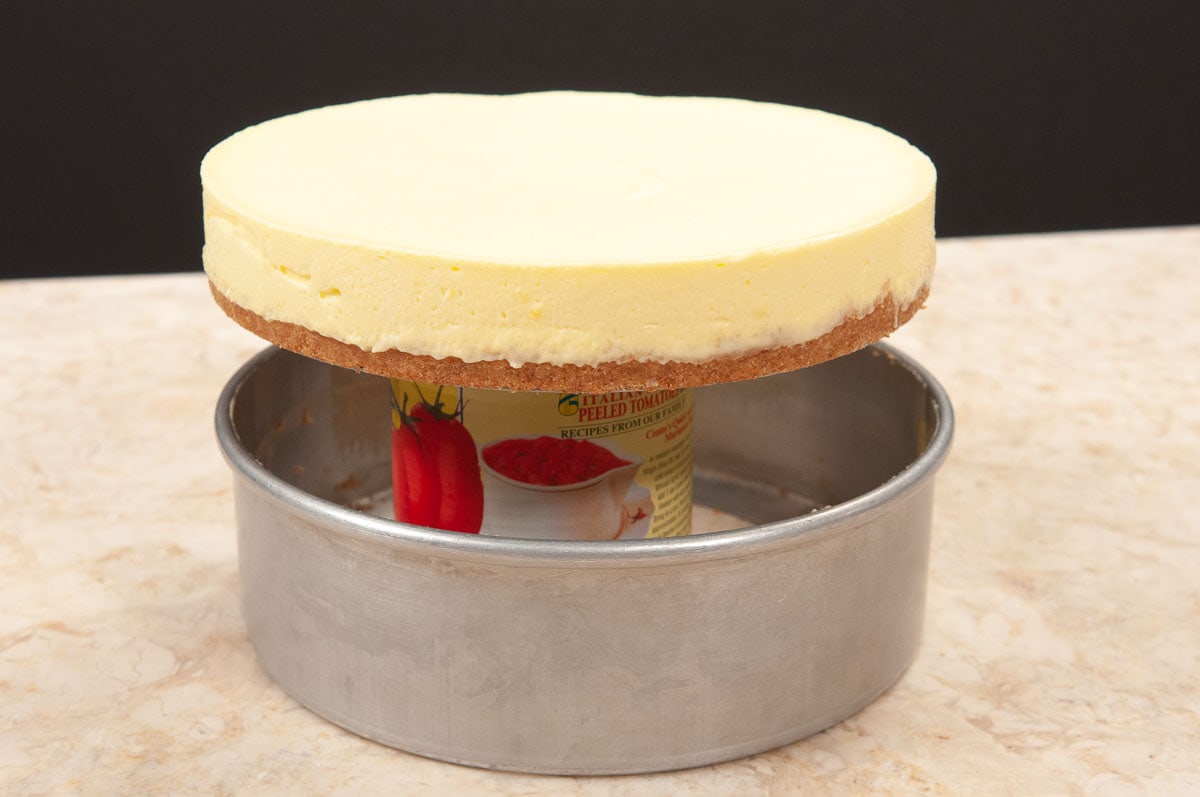
Step 3. Slide the rim of the cheesecake pan down.
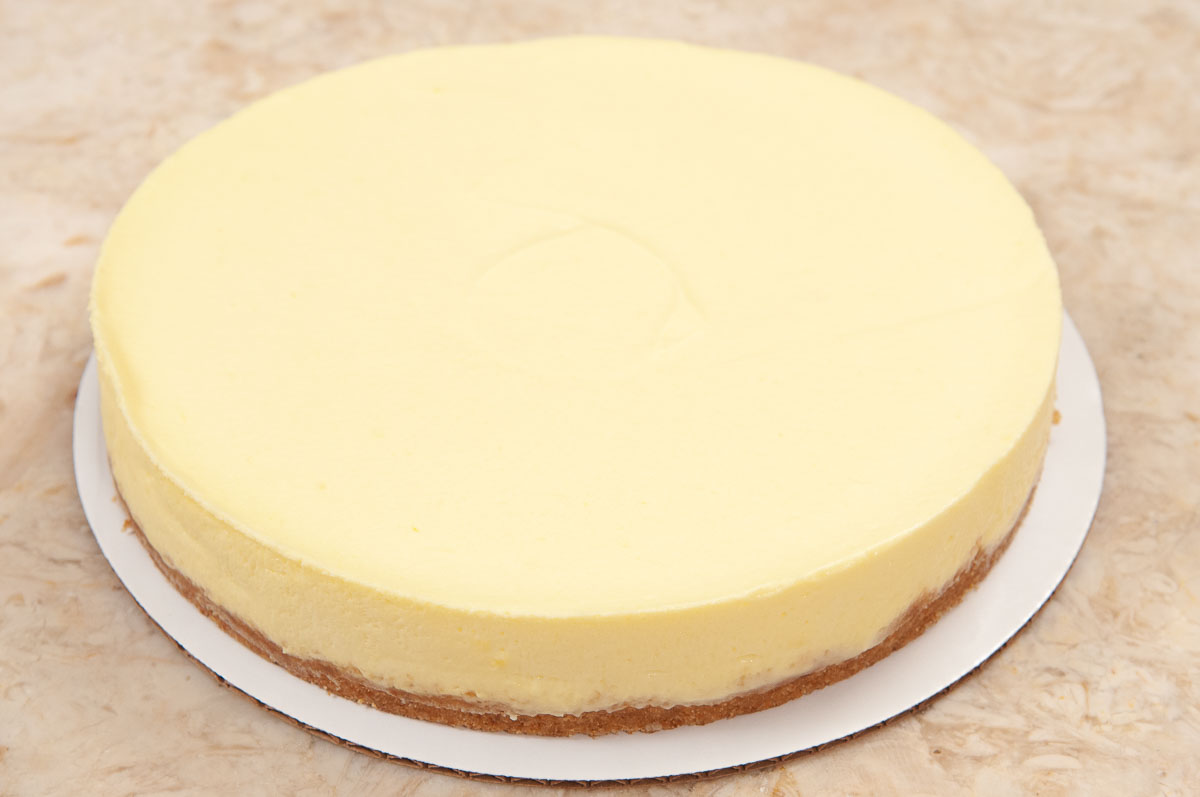
Step 4. Place the cake on a cake board or serving plate by placing a metal spatula between the bottom of the crust and the bottom of the pan. Go around the bottom and move with two spatulas.
Blueberry Sauce
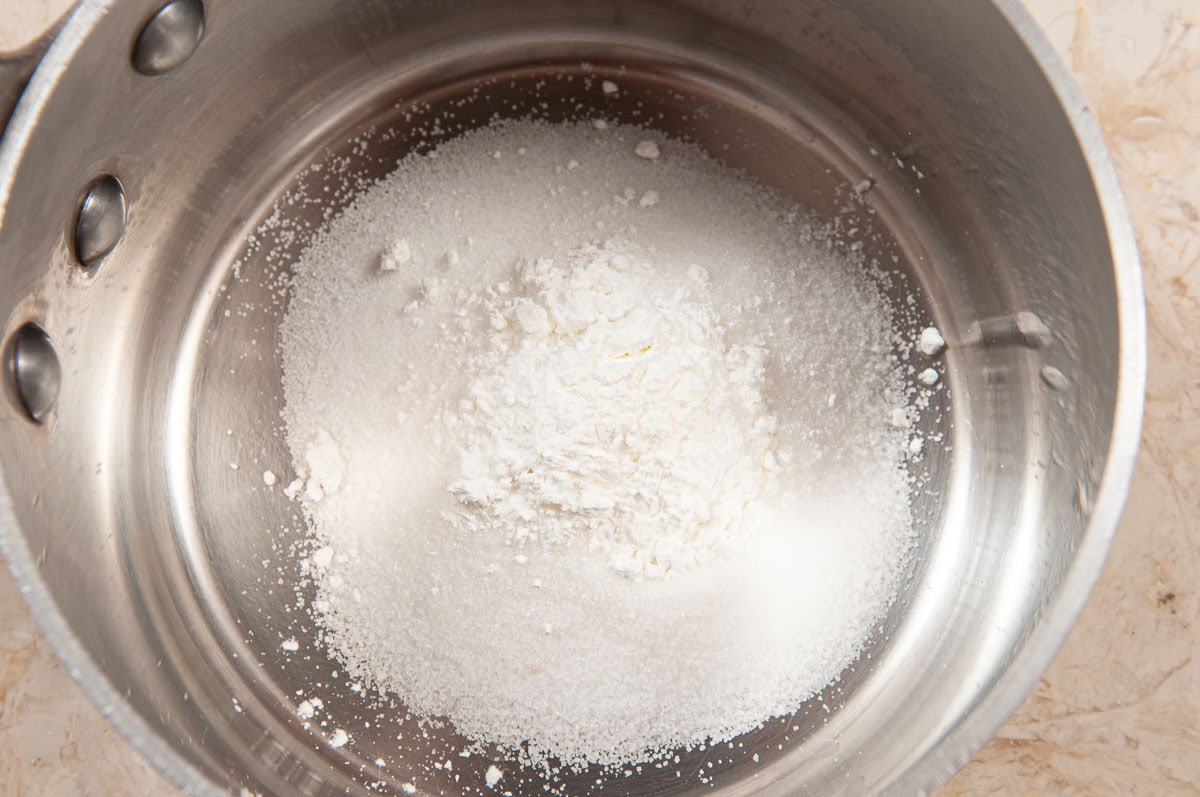
Step 1. Place the sugar and cornstarch in a medium size pan.
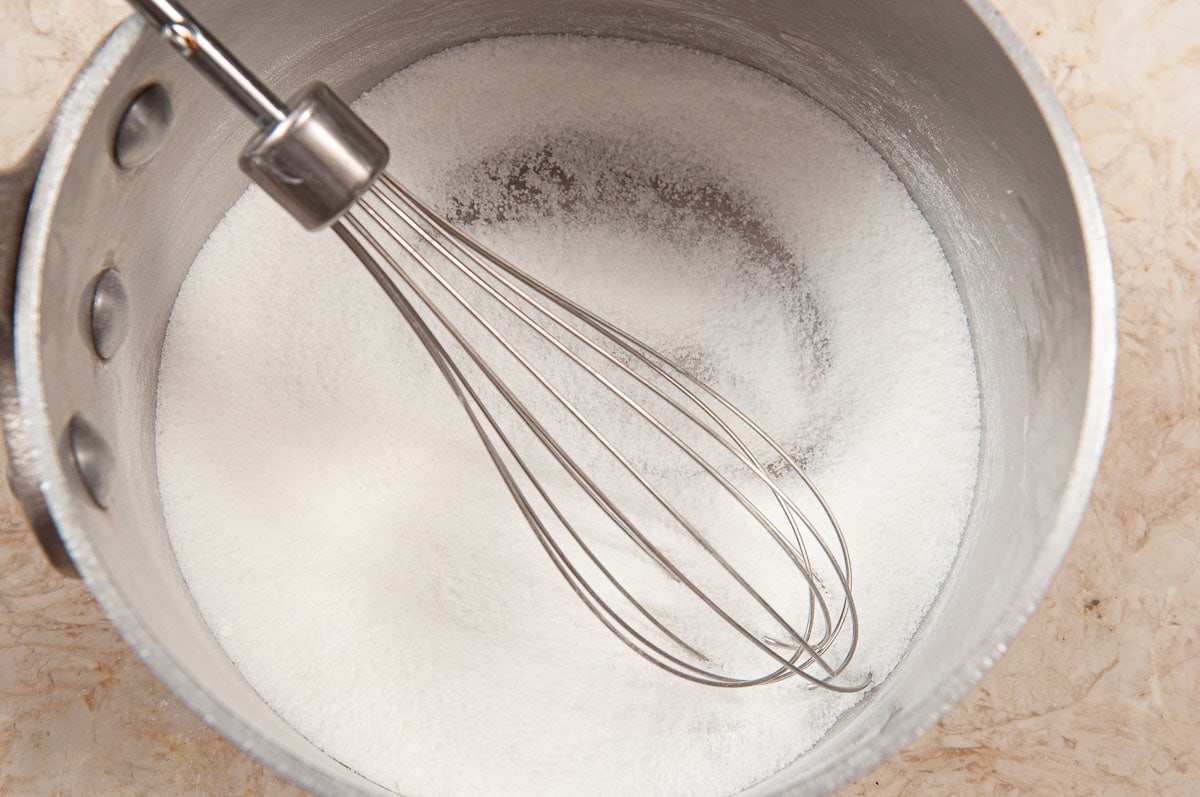
Step 2. Whisk the two together.
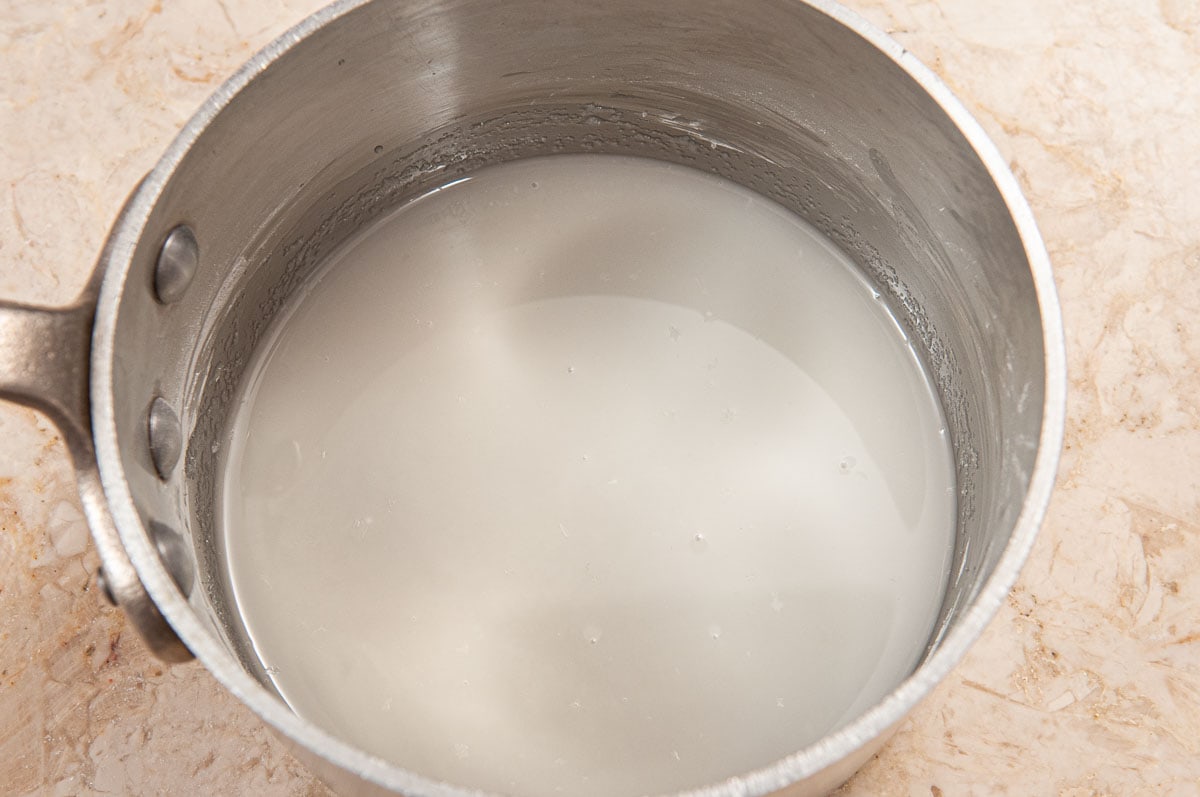
Step 3. Whisk in the water and lemon juice to start dissolving the sugar and cornsyrup.
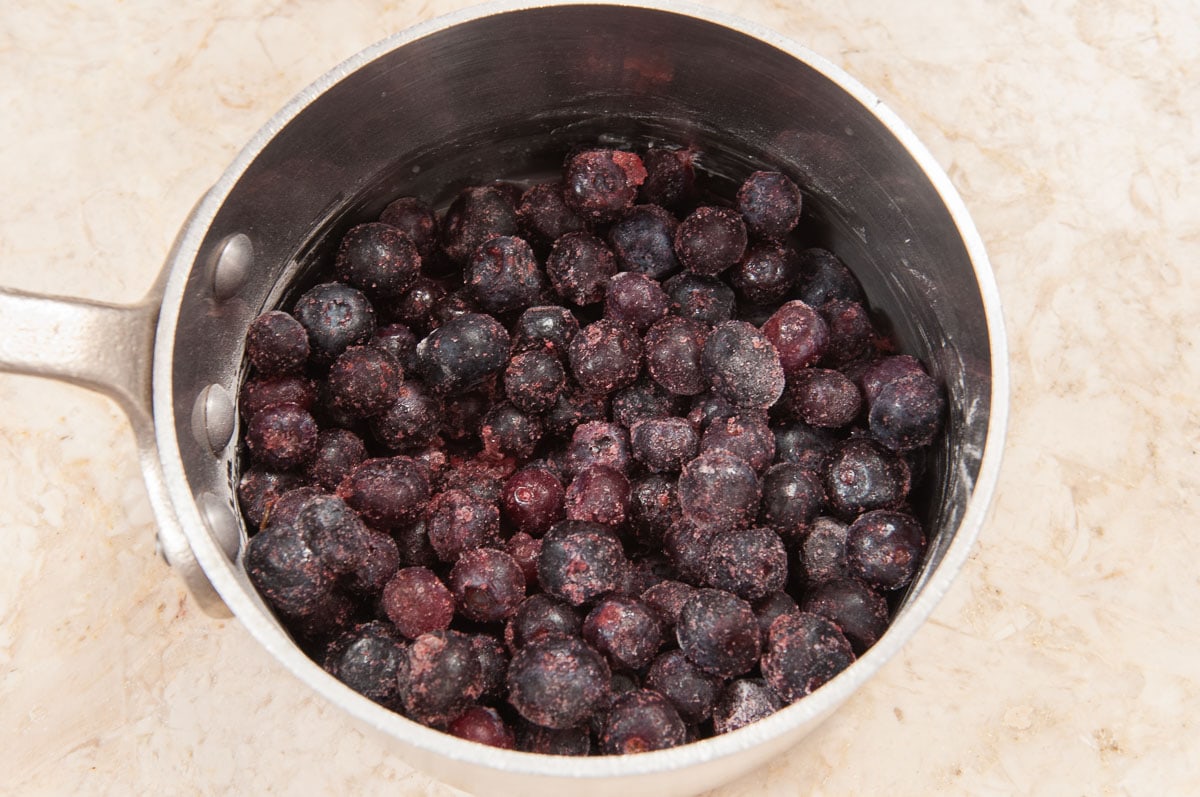
Step 4. Add the blueberries to the pan.
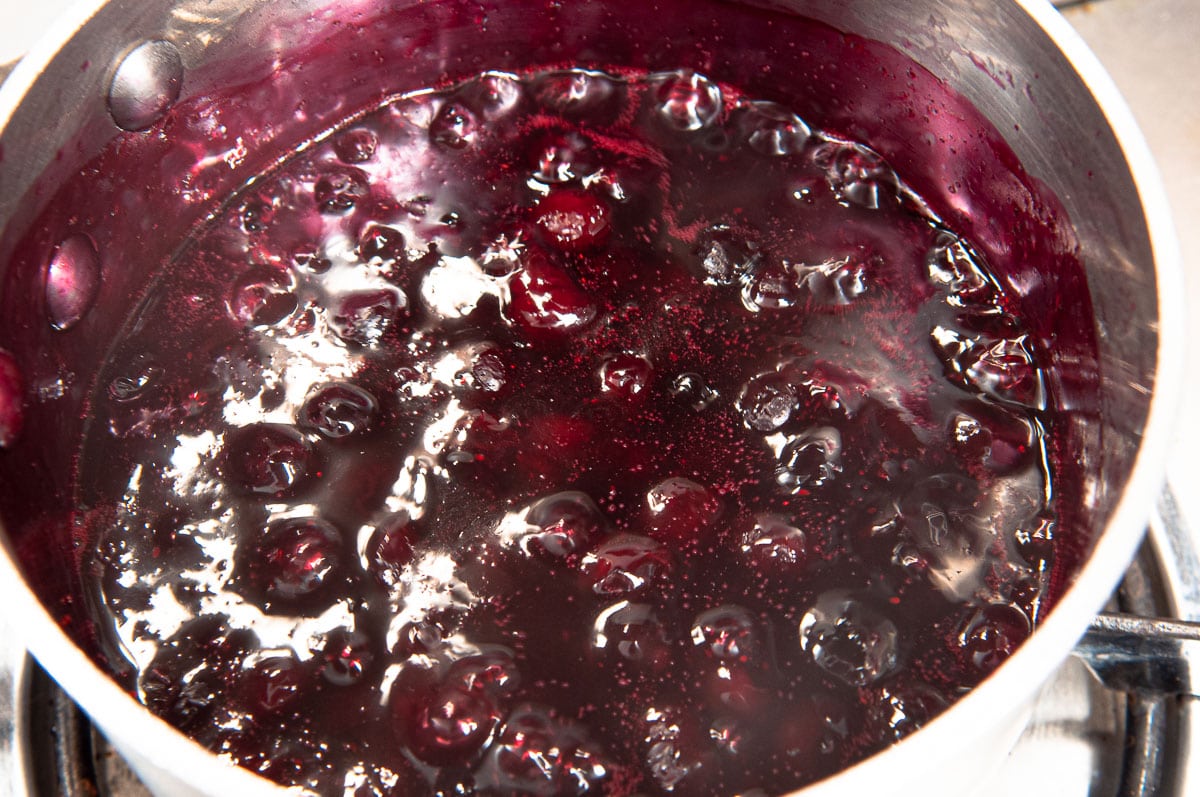
Step 5. Cook the sauce over medium heat, stirring constantly, until it comes to a boil. Cook for 2 minutes more. Remove from the heat and cool. Transfer to a bowl to cool.
Recipe FAQs
Cultivated blueberries are fairly uniform in their size, color and taste. Wild blueberries are generally much smaller in size than cultivated. They also vary in color from different shades of blue to almost black. Taste varies from very sweet to not-so-sweet.
Gelatin, whether it is in granulated or sheet form must be soaked in cold water to soften it. If using granulated gelatin, it must be liquified after blooming by heating it over a water bath or in the microwave before being introduced into other ingredients.
The cheesecake pan is a solid rim with a loose bottom. The springform pan has a loose bottom and a rim that opens and closes with a latch or buckle. For more information on the two, see my post on Bailey's Cheesecake.
Storage
This cake should be kept in the refrigerator and keeps well for several days. It can also be made and frozen, then well wrapped and stored for several months. The blueberry sauce can be made up to 5 days ahead.
Expert Tips
- If you are queasy about using raw egg whites, put the whites and sugar in the bowl of a mixer. Place the mixer bowl over (not in) a saucepan of simmering (not boiling) water. Beat or whisk continuously with a hand held mixer or whisk. Heat to 160°F or 70°C which should take between 3 ½ minutes. Place on the mixer and continue to beat until a meringue forms as described in the recipe.
- Either fresh or frozen blueberries can be used. If using frozen berries, do not thaw them first.
- When using cornstarch, it is important to either dissolve it in a small amount of water or mix it with the sugar in the recipe before adding the water. If it is not dissolved first, it will become lumpy and not thicken.
- Heavy cream with a 36 % butterfat content whips up thicker than whipping cream with less butterfat and is recommended for the best results.
- Straining the eggs and yolk mixture in the beginning removes the chalazae which is the hard, stringy egg white that suspends the yolk in the middle of the white. If it is not strained out, it cooks up hard and ruins the smoothness of the Lemon Curd. It is also much easier to do it in the beginning and not at the end when it has thickened.
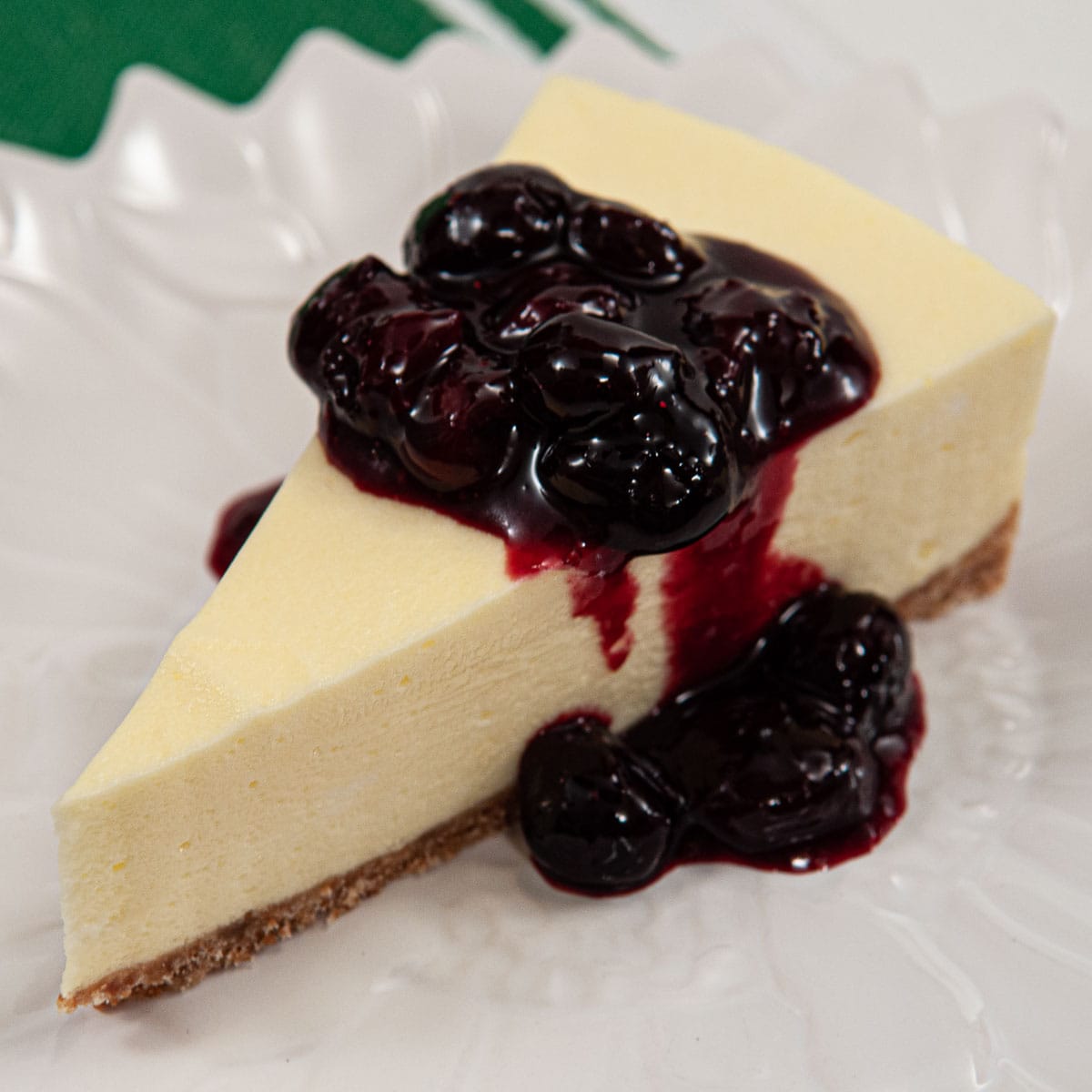
Other Delicious Desserts for your Enjoyment
If you love this Lemonade Cake or any other recipe on my website, please please leave a 🌟 star rating in the recipe card and let me know how it went in the 📝 comments below. I love hearing from you!
Lemonade Cake with Blueberry Sauce
Equipment
- 9x3 cheesecake or springform pan
Ingredients
Lemon Curd
- 1 tablespoon water
- 1 ½ teaspoons gelatin
- 2 large eggs
- 3 large egg yolks
- ½ cup granulated sugar (100 grams or 3 ½ ounces)
- ½ cup lemon juice, freshly squeezed
- ½ cup unsalted butter cold, cut into 6 pieces (114grams or 1 stick)
Vanilla Wafer Crust
- 1 ¼ cups vanilla wafer crumbs (about 40, 140 grams or 5 ounces)
- 4 tablespoons unsalted butter, (58 grams or 2 ounces)
Lemon Mousse
- 1 cup heavy cream
- 2 egg whites (leftover from above)
- ¼ cup sugar (50 grams or 1 ¾ ounces)
- Lemon Curd
Blueberry Sauce
- ⅓ cup granulated sugar (65 grams or 2 ¼ ounces)
- 1 teaspoon cornstarch
- 3 tablespoons water
- 1 teaspoon lemon juice or balsamic vinegar
- 2 ½ cups fresh or frozen blueberries (12 ounce bag)
Instructions
Lemon Curd
- Soften the gelatin in the water. Set aside.
- Place the eggs and yolks in bowl. Whisk to combine.
- Whisk in the sugar and the lemon juice. Strain the mixture into the top of a boiler. Add the butter and place over gently boiling water.
- Stirring constantly, bring the curd to 172°F on a thermometer.
- The gelatin will have formed a wiggly blob at this point. Tear it into small pieces and add it directly to the hot curd. Whisk to dissolve it into the curd.
- Cover the surface directly with plastic wrap. Cool to use.
- If made ahead, microwave briefly to bring it to room temperature when ready to use.
Vanilla Wafer Crust
- Process the wafers into crumbs either using a food processor or putting them in a plastic bag and crushing them with a rolling pin.
- Add the butter and mix with a fork.
- Press them evenly into the bottom of 9x3" cheesecake pan or springform mold. Set aside.
Lemon Mousse
- Beat the cream to medium peaks. Remove from the bowl and set aside.
- In a clean mixing bowl, whip the whites until the whisk leaves marks in them.
- Slowly add the sugar and beat to medium peaks. Fold into the lemon curd.
- Fold in the reserved cream. Pour it into the crust and chill 6 hours or overnight to firm up.
Blueberry Sauce
- Whisk the sugar and cornstarch together in a medium saucepan.
- Whisk in the water.
- Add the blueberries and cook over medium heat, stirring constantly until the mixture comes to a boil. It will have thickened. Continue cooking and stirring for 2 minutes.
- Transfer to a bowl and cover directly with plastic wrap. Cool to room temperature. Store in the refrigerator if not using immediately.
Notes
Nutrition
Simple Black Bean Salad
This Simple Black Bean Salad was one of the favorites at our take out shop. It can be put together in less than 30 minutes and is high in protein and low in fat. This salad is good cold or room temperature making it perfect for a picnic or anywhere refrigeration isn’t to be had and is great with anything barbecued.
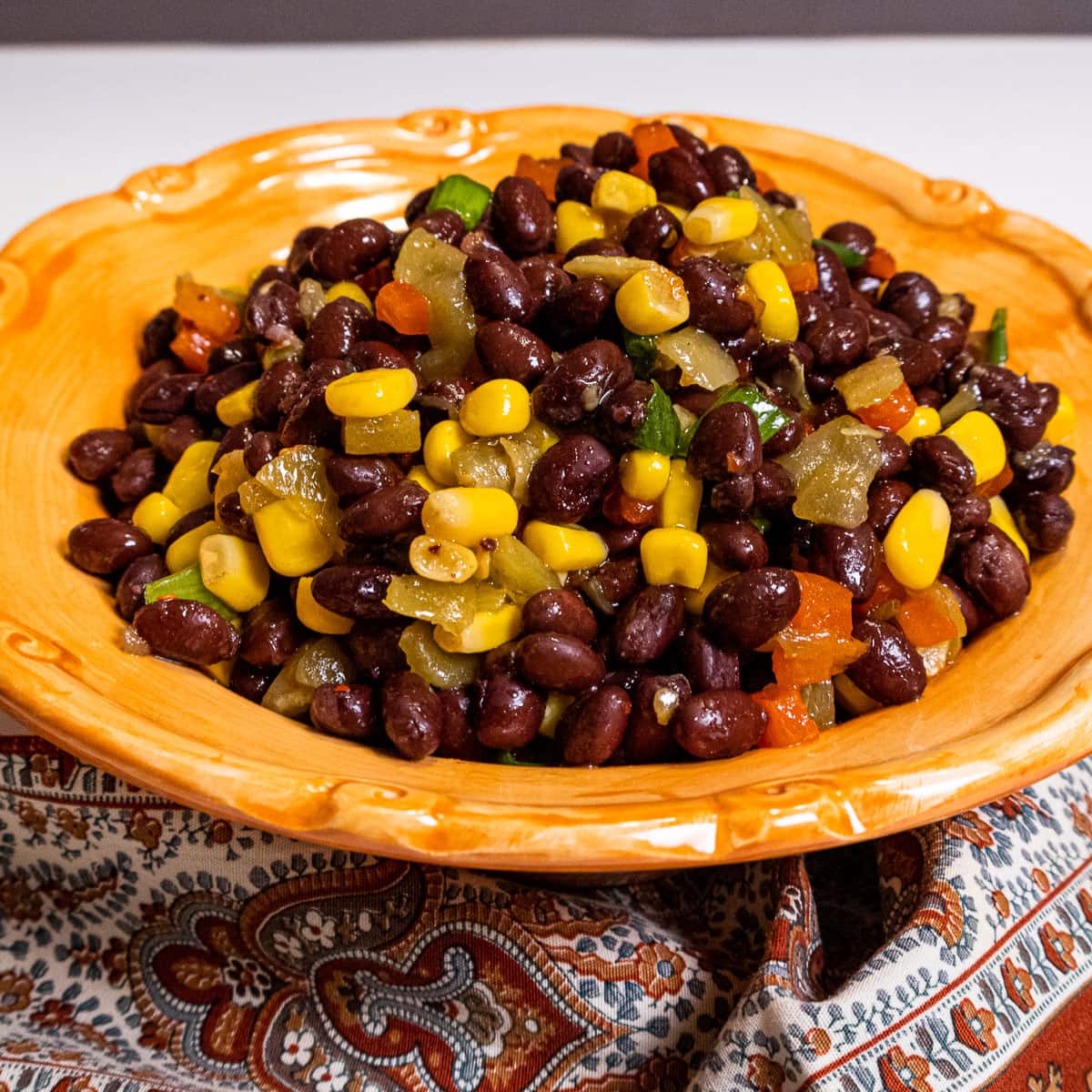
All this takes is a can opener, a large bowl and a few measuring utensils. Make this a few hours ahead and you're ready to go.
Black beans are a favorite of mine, be it in chili or salads such as the Southwestern Vegetable Couscous Salad or the Black Bean Chili.
[feast_advanced_jump_to]Why You'll Love This Recipe
- It's super fast to make and literally foolproof.
- This salad uses basic ingredients easily available in any market.
- It's packed with flavor that belies its ease of making.
- A bowl, a whisk and a few measuring ingredients are all that's needed to make this. Quick, easy, simple and delicious - it doesn't get much better than that!
- It's perfect to take along for any meal and you're sure to be asked for the recipe.
Recipe Ingredients

Ingredients read left to right.
BACK ROW: Black Beans, pimentos, vegetable oil
MIDDLE ROW: Green onions, green chiles, corn
FRONT ROW: Salt, red pepper flakes, red wine vinegar, sugar
Be sure to see the recipe card below for the full ingredient list and instructions.
Substitutions
If desired, diced red peppers and fresh corn can be substituted for the jarred or canned variety.
Step by Step Instructions
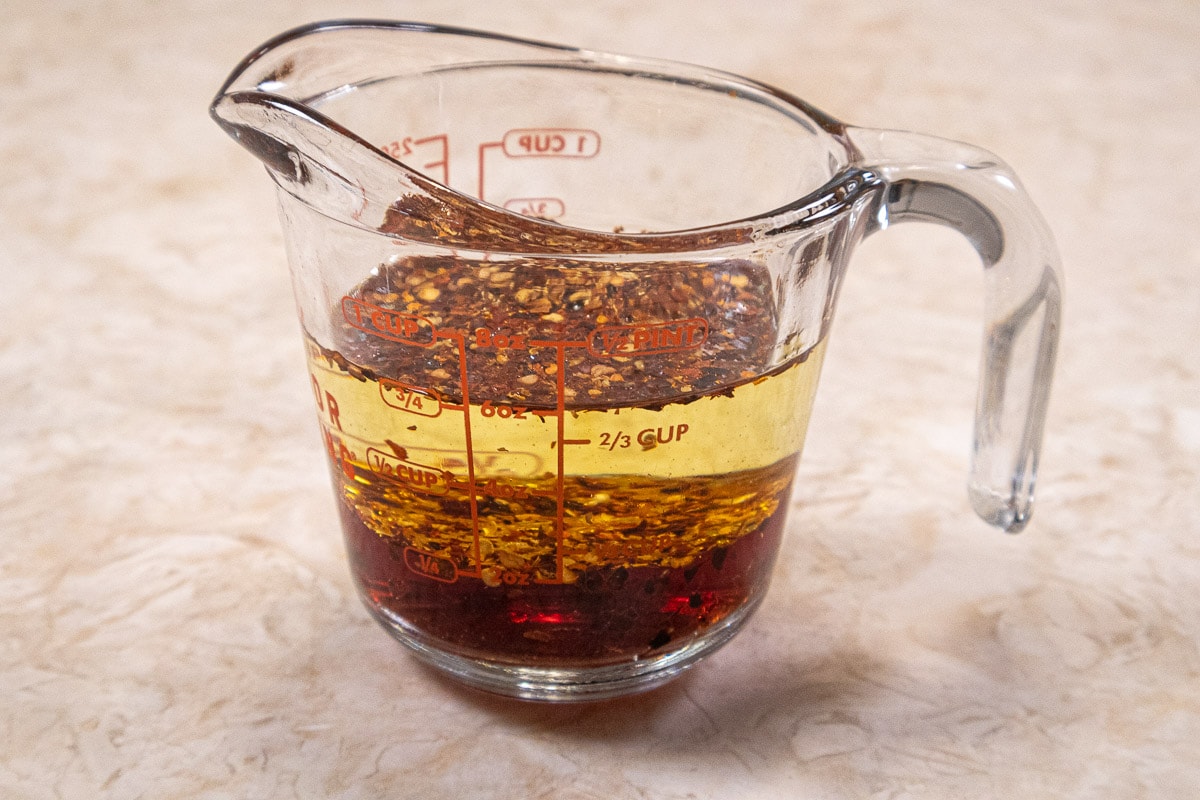
Step 1. To make the dressing, place the oil, vinegar and red pepper flakes in a small container. I just use the cup I measured them in.
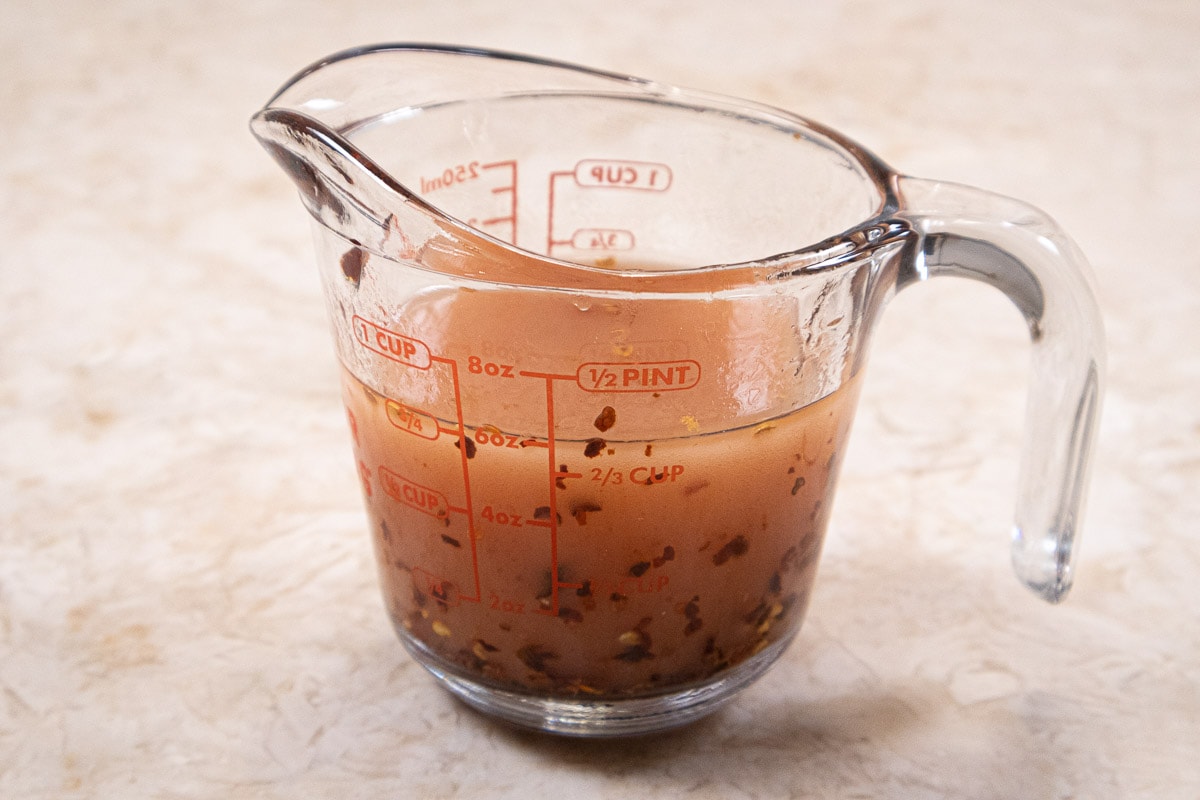
Step 2. Whisk the dressing ingredients together. Set aside.

Step 3. Drain the beans and rinse them until the water runs clear. Drain the corn, and pimentos very well. Place them in a bowl along with the beans, chopped green onions and green chiles. Pour the dressing over them; mix well. Refrigerate for several hours or up to a week.
Recipe FAQs
Yes they are. Simply drain them and rinse until the water runs clear.
It depends upon the ingredient, how it is to be used and how quickly you want to make the recipe. While many canned goods are overcooked or otherwise undesirable, many are not including beans, red peppers or pimetos, green chiles and corn.
Of course. It will just take longer.
Expert Tips
- Make sure to rinse the beans well.
- Drain the corn and pimentos or jarred red peppers really well.
- Let the items to be drained sit in a strainer for a bit, shaking them gently from time to time to make sure they are dry. Otherwise, the water will weaken the dressing.
- When mixing the ingredients, toss gently so the beans don't break up.
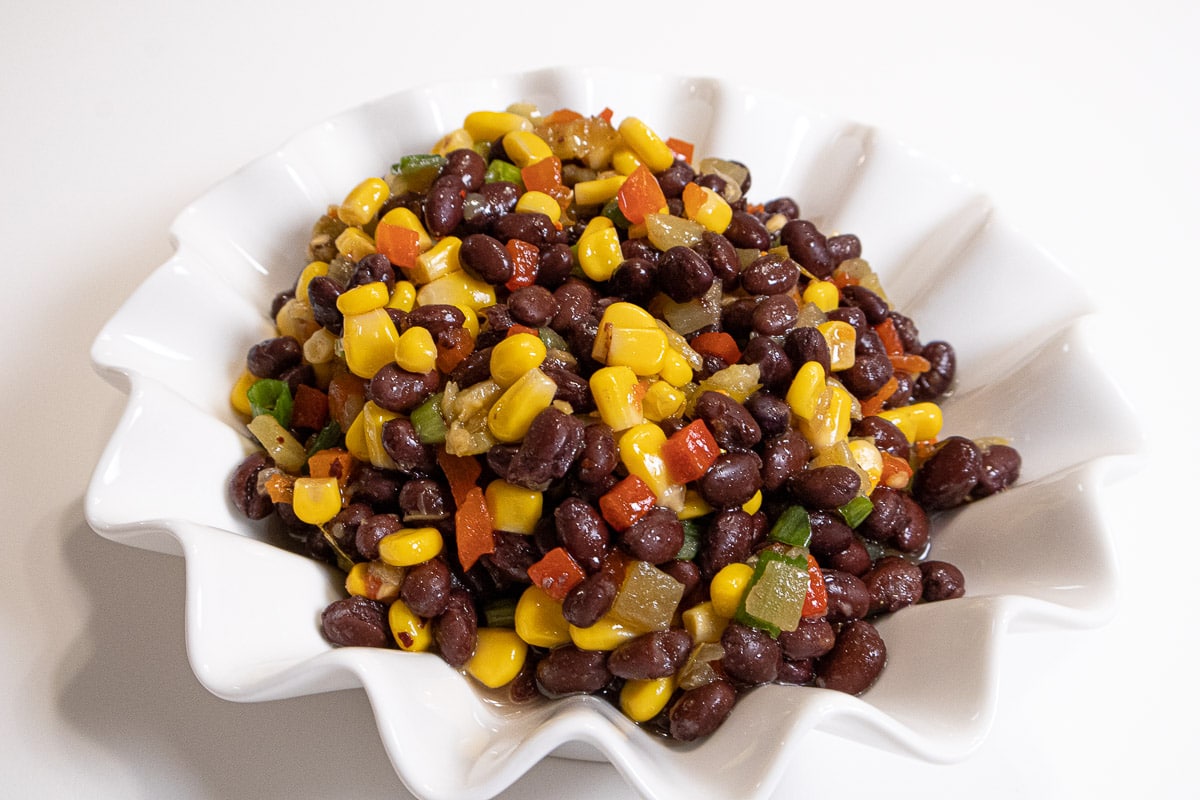
More Salads Sure to Please
If you tried this Simple Black Bean Salad recipe or any other recipe on my website, please please leave a 🌟 star rating in the recipe card and let me know how it went in the 📝 comments below. I love hearing from you!
Simple Black Bean Salad
Ingredients
- 2 - 15 oz. cans black beans
- 1 - 10 oz. can corn or 6 ounces fresh or frozen corn
- 1 - 4 ounce can chopped green chiles
- 1 - 7 oz. jar pimentos, fresh or roasted red peppers
- ½ cup green onion tops only
- 1 tablespoon chopped cilantro, optional
- 1 teaspoon sugar
- 1 teaspoon salt
- ½ cup vegetable or canola oil
- ¼ cup red wine vinegar
- 1 teaspoon red pepper flakes or to taste
Instructions
- Drain the black beans and rinse under cold water until the water runs clear.
- Drain the canned corn and pimentos.
- Chop the green tops of the green onions.
- Place the beans, corn, pimentos, green onions and green chiles in a large bowl. Sprinkle the with the salt and sugar.
- Combine the oil, vinegar, and red pepper flakes. Whisk to combine completely. Pour over the salad ingredients and gently toss. Refrigerate for a few hours or up to a week.
Notes
-
- It's super fast to make and literally foolproof.
- This salad uses basic ingredients easily available in any market.
- It's packed with flavor that belies its ease of making.A bowl, a whisk and a few measuring ingredients are all that's needed to make this. Quick, easy, simple and delicious - it doesn't get much better than that!
- It's perfect to take along for any meal and you're sure to be asked for the recipe.
- Make sure to rinse the beans well.
- Drain the corn and pimentos or jarred red peppers really well.
- Let the items to be drained sit in a strainer for a bit, shaking them gently from time to time to make sure they are dry. Otherwise, the water will weaken the dressing. When mixing the ingredients, toss gently so the beans don't break up.
Nutrition
Southwestern Vegetable Couscous Salad
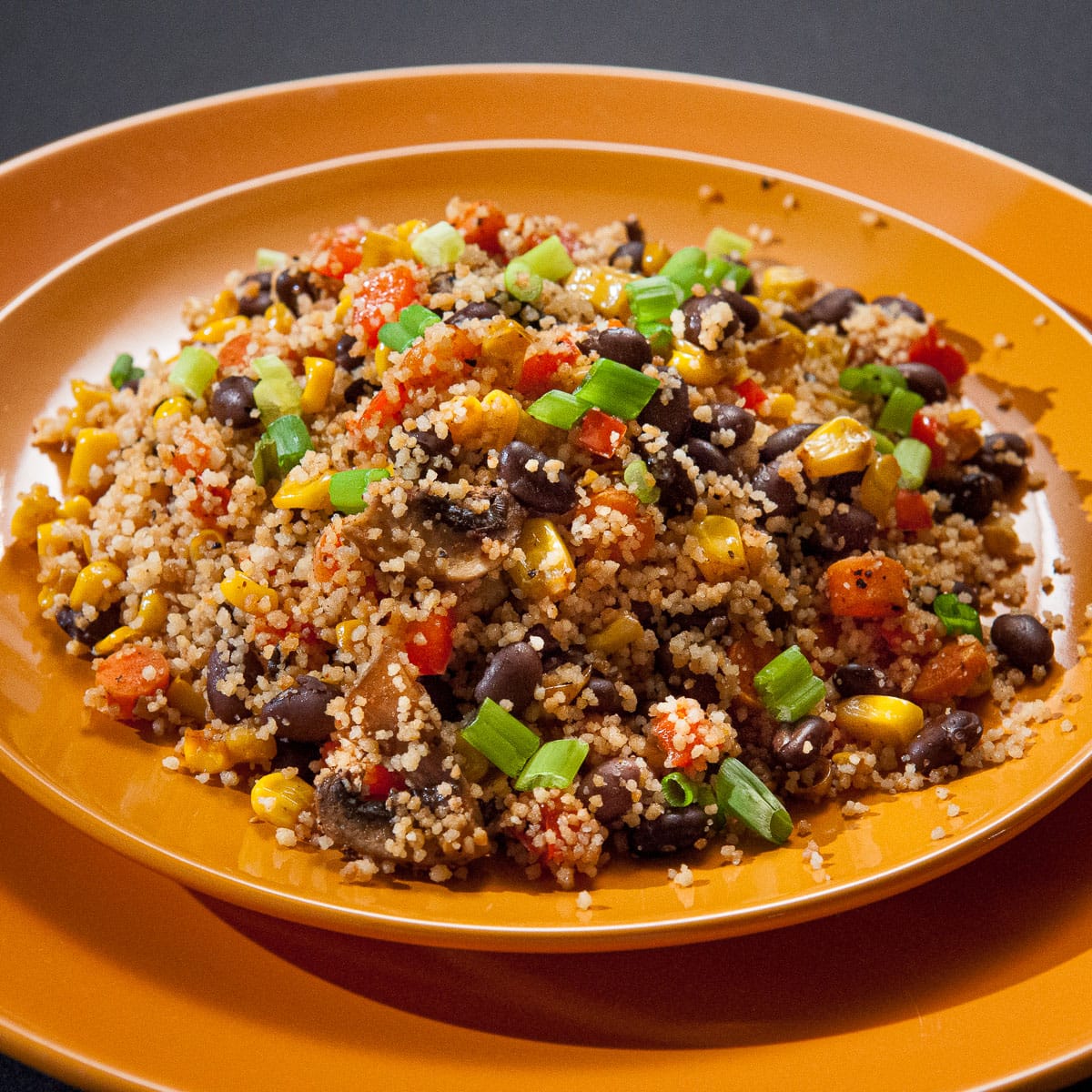
Southwestern Roasted Vegetable Couscous summer side is super easy, super tasty and the vibrant colors want to make you dive right in. Serve it with a grilled or roasted chicken breast or salmon fillet for a complete meal. Toasting the couscous first insures it will not clump together when it’s finished. It’s easily done while you cut up the veggies.
While often thought of as a grain, couscous is actually made of semolina or barley and water and is considered a pasta.
Types of Couscous
There are three types of couscous.
- Moroccan couscous is the smallest—about the size of semolina—and cooks in minutes.
- Israeli couscous, also called pearl couscous, is larger and resembles tiny pieces of pasta. It takes about 10 minutes to cook.
- Lebanese couscous, also called Moghrabieh couscous, is larger than Israeli couscous and takes the longest to cook.
This salad can be made ahead and lasts for days in the refrigerator.
1 cup uncooked couscous
¼ cup water
1 cup chicken stock
1 cup diced red pepper
1 cup sliced mushrooms
½ cup diced carrots
1 - 11 ounce can whole kernel corn drained well ( I use Niblets brand)
1 teaspoon minced garlic
1 teaspoon chili powder
½ teaspoon salt
½ teaspoon black pepper
¼ teaspoon cumin
1 tablespoon vegetable oil
1 – 15 ounce can black beans, rinsed and drained
⅓ cup chopped green onions, green part only
Preheat the oven to 425 degrees.
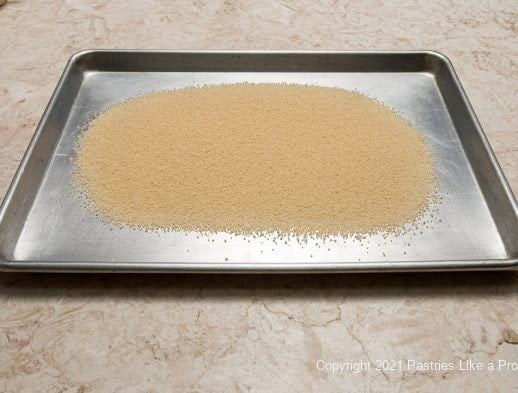
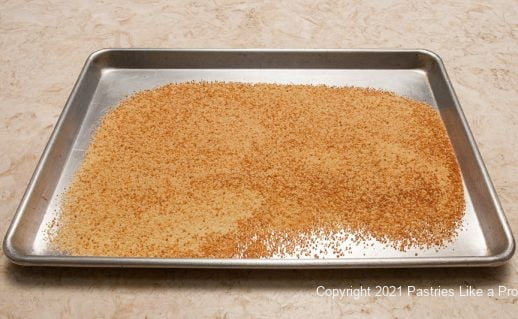
Place the couscous in a rimmed baking pan and shake it to even it out to one layer. Bake for 4 to 5 minutes until lightly browned. The edges will most likely be browner than the middle. Stir the couscous, shake it again and let it brown for several minutes until it is more uniformly colored.
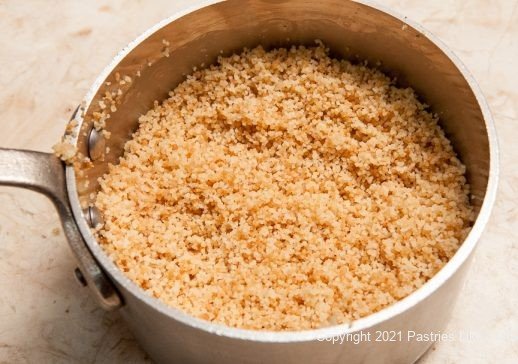
Bring the water and broth to a boil in a small saucepan. Gradually stir in the couscous. Remove from the heat, cover and let sit for 5 minutes. Remove the lid and fluff with a fork; set aside.
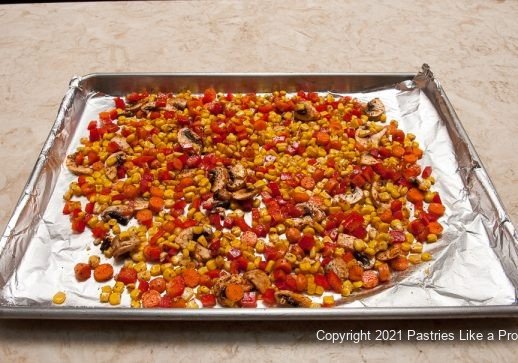
In the meantime, cut the veggies and place the red pepper, mushrooms, carrots, corn, and garlic in a bowl. In a small bowl, combine the chili powder, salt, black pepper, and cumin. Sprinkle over the veggies and stir well. Add the vegetable oil and stir to coat the vegetables. Line a rimmed baking sheet with foil and spray. Pour the vegetables into the pan and shake to distribute evenly in a single layer. Bake for 10 to 12 minutes until nicely roasted.
Combine the couscous with the roasted vegetables and beans. Serve with the onions sprinkled on top.
This summer side can be served hot or warm or room temperature.
Yields: 4 servings.
Other recipes to brighten your summer:
Summer Vegetable Tart
Mayfair Salad Dressing - Better than Caeser


